‘Indian: In the Image of God’
(Originally published Jan. 29, 2021.)
By Kim McDarison
In the summer of 2002, a pair of bronze statues — commissioned by High Pointe Properties as part of the Fort Atkinson downtown revitalization effort, and sculpted by area artist Gerald Sawyer — was erected along the Main Street bridge. The full work is titled: “Indian: In the Image of God.”
Today, the statues, placed one on each side of the south end of the bridge, greet visitors as they travel through the city’s center along or across the Rock River.


Arrowhead Park renamed
(Originally published Feb. 4, 2021.)
By Kim McDarison
The Fort Atkinson City Council Tuesday approved a name change for Arrowhead Park. The park is now called Rotary Arrowhead Park in recognition of the Fort Atkinson Rotary Club’s contributions to the facility.
Over three years ago, Parks and Recreation Director Brooke Franseen wrote in a memo to council, the club planted 45 trees at the corner of West Cramer Street and Blackhawk Drive, and in 2019, the club raised funds for new playground equipment, contributing some $20,000 to the project.
The park was further improved in 2020 with a paved pathway.
The club requested the name change, Franseen noted, adding: “The club is ready to adopt the park.”
Looking at the park’s former name, Franseen wrote that there was “no known naming history to Arrowhead Park,” citing a likelihood that the park was named after a nearby subdivision.
“The Parks and Recreation Department currently has a Rotary Pavilion in Rock River Park and a Rotary Shelter (train depot) on the bike trail,” she wrote.
No costs were associated with renaming the park, she said.


Rotary Arrowhead Park
After the fire, baby supplies needed
(Originally published Feb. 4, 2021.)
Baby shower donations are being collected at Good2Go, 88 South Main Street, in support of the family that lost their home and loved ones in a fire last month on Milo Street.
A new baby is being welcomed into the family and a community baby shower has been organized to help the family prepare.
Items donated by members of the public are picked up regularly by members of the family.
Donations can be dropped off at Good2Go through Saturday, Feb. 13.
Details can be found on the flier announcing the shower pictured below:
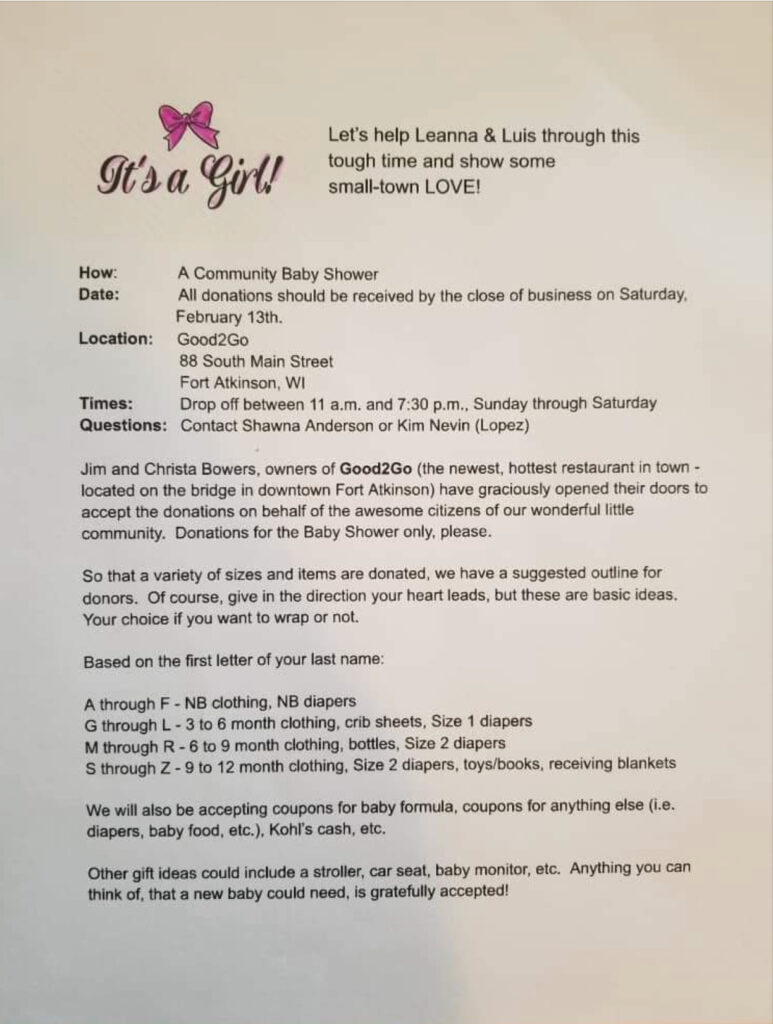
Haumerson’s Pond on ‘Discover Wisconsin’
(Originally published Feb. 4, 2021.)
By Chris Spangler
Contributor
One of Fort Atkinson’s recreational gems is being featured on “Discover Wisconsin.”
Haumerson’s Pond and its warming shelter, skating rink and hiking trails are showcased in the tourism television program’s “Know Your Wisconsin” segment highlighting interesting places to visit in the Badger State.
It premiered in mid-January and can be viewed at https://www.youtube.com/watch?v=H-_B6q2mB_U&feature=emb_title.
“Nostalgia is skating on a frozen pond,” the program’s trailer reads. “What winter activity is nostalgic to you? Discover more to do in the Fort Atkinson area.”
Interviewed in the segment is Fort Atkinson’s Steve Mode, commonly known as the “grand poobah” of the Haumerson’s Pond shelter construction project eight years ago. He notes how the pond, located at the end of South Fourth Street just past Zida Street, was a popular ice-skating rink from the 1920s-80s. And thanks to volunteers’ efforts, it is so again.
“This was a Norman Rockwell place when I was a kid, because everyone was here,” Mode tells “Discover Wisconsin” during the 1:38-minute segment.
“The Haumerson’s Pond shelter has become a central recreation place. We’ve got 3 ½ miles of ski trails; people come down, they enjoy the ice, walk their dogs.”
He cites the Candlelight Ski and Hike as one of the largest draws to the park during winter. It features a mile-long trail through the woods along the Bark River glowing with luminaries.
Due to COVID-19 the 2021 hike is not being held.
Haumerson’s Pond was the former site of W.F. Haumerson’s brickyard in the 1880s, which produced “cream city” brick. For decades, it was the focus of the community’s winter social scene, with ice skating and hockey from first freeze through spring thaw.
It was early in 2013 when the Friends of Haumerson’s Pond formed with a mission to construct a timber-frame warminghouse and shelter overlooking the pond in an effort to return the east-side area to its former glory. Mode and local timber framer Craig Roost spearheaded construction of the 25-by-40 foot structure, which kicked off with a community “raising” similar to that for an Amish barn.
The building’s circle-cut beams are held together by mortices and tenons. The main level is covered with original “cream city” brick rescued from historic Jefferson’s homes and encircled by a covered porch, while the second floor and vaulted ceiling are made up of boards cut from ash trees taken down by the City of Fort Atkinson following the Emerald Ash Borer infestation.
A freestanding brick fireplace, public restrooms, an outside deck and huge windows providing a 360-degree view overlooking the pond, Bark River Nature Park and beyond round out the structure.
The shelter is the product of community donations and volunteer labor, with great City of Fort Atkinson support.
“Fort Atkinson is a very special place,” Mode says in the “Discover Wisconsin” segment. “When there is a need, people step up to the cause. And this whole building, this whole park, is a symbol of that.”
Recently, winter access to Haumerson’s Pond was altered. The former entrance at the end of South Fourth Street East now is for walk-ins only. Vehicle traffic must enter from the south end of Zida Street, where a plowed parking lot is provided.
“Discover Wisconsin” is a weekly television program that promotes tourism in the state and profiles cities, events and tourist attractions. It was created in 1987 throughout the Midwest on a combination of network, cable and satellite stations. Additionally, DW-TV is regularly viewed on cable stations nationwide.
This marks the second time “Discover Wisconsin” has visited Fort Atkinson. In 2020, the city was featured in an episode that may be viewed at https://bit.ly/2Wrrh2W.
For more information about Haumerson’s Pond, visit the website: https://friendsofhaumersonspond.com.
.

The warming house at Haumerson’s Pond. (Chris Spangler photo.)

The former entrance to Haumerson’s Pond this winter now is for walk-in only. Vehicles enter at the south end of Zidane Street to park. (Chris Spangler photo.)
Below: Photos courtesy of the Friends of Haumerson’s Pond.



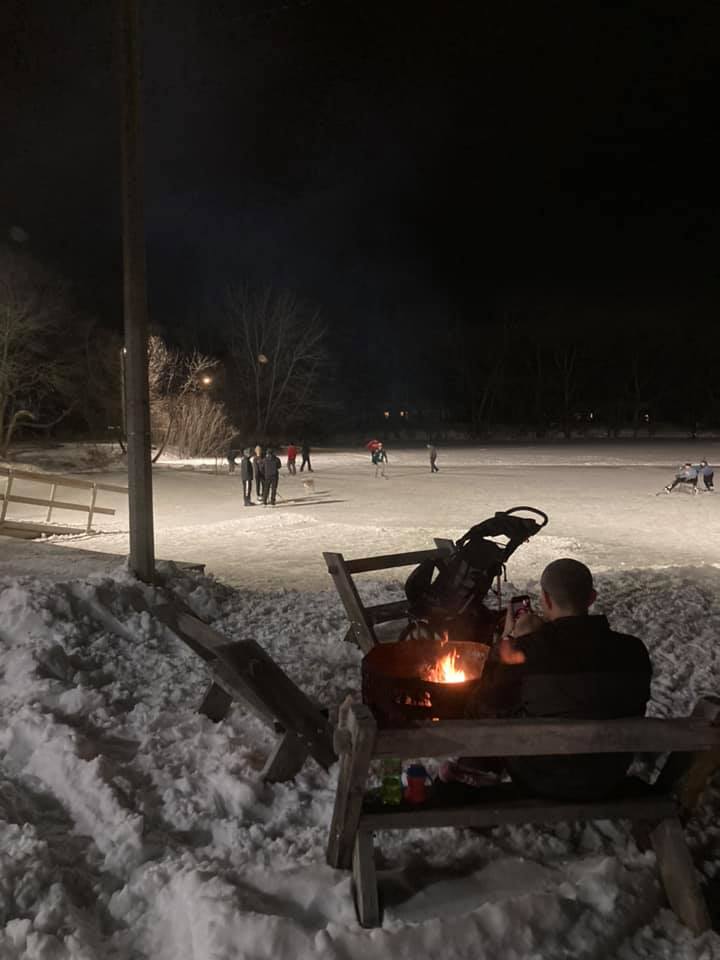

Building ‘Heart’ in Fort
(Originally published Feb. 4, 2021.)
By Kim McDarison
Valentine’s Day is just around the corner. It’s a day of gift-giving and recognition shared between loved ones and friends.
In Fort Atkinson, a nonprofit organization called “Heart of the City,” makes the day special by naming the recipient of its “Big Heart” award. The group has named a recipient annually for 14 years, according to the nonprofit’s president Frankie Fuller.
This year, the group will be awarding two recipients, Fort Healthcare and former WFAW radio newsman Michael Clish, for their contributions to the community made in 2020. (See related story here.)
Each year, the award recipient’s name is a closely guarded secret, made public with a small ceremony, during which the recipient receives a ceramic heart. Recipients’ names are engraved on the heart’s wooden pedestal.
This year, Frankie said, the ceramic heart will be fitted with a pedestal extension because the space to engrave names is full.
Recipients also receive a box of chocolates, she said.
Frankie and Heart of the City board member Bill Johnson met Wednesday with Fort Atkinson Online at Good2Go, a recently opened takeout restaurant, located near the Main Street bridge, a place that might be perceived as the heart of the city, to discuss the group’s plans for 2021.
Heart history and goals
Heart of the City formed in 1999 as a citizens’ group looking to discourage support for a Walmart Supercenter in Fort Atkinson, Frankie said.
After Walmart chose against developing in the city, the group, for a time, disbanded, but a few core members thought there was more work to do, and they reorganized with new initiatives, including: civic engagement, a community-friendly pathway for downtown development, and support for a healthy and sustainable environment, Frankie and Bill said.
Some twenty years later, in the spring of 2019, the group faced questions about disbanding again.
Those discussions began, Bill said, just around the time he joined the organization. He following his wife, Elaine, who had joined a few years earlier, into the fold. Both serve today as board members. Both are retired UW-Whitewater professors, arriving into the area in 1990. Elaine taught Spanish and Bill taught radio, television, film and media.
Bill said he joined the group because its goals embraced his interests, which included then and continue to include a desire to support and strengthen local journalism and develop the city’s downtown as a center of activity.
Adding her thoughts by phone, Elaine said she initially engaged with the group in the mid-2000s as more of a participant than a member, attracted by the group’s initiatives to inform the public about solar energy.
Work and family-related obligations occupied her time between 2006 and 2013, she said, but she became reengaged, joining as a member, in 2012.
“I joined to learn how to help speak up for the environment,” she said, emphasizing her belief in the importance of wetlands conservation and care for pollinating creatures.
As a member of the group, Elaine said, she finds a stronger ability to be influential about her issues of concern, many of which focus on activities that allow mankind to live in harmony with nature.
Frankie joined the group 10 years ago and has served as its president for the past two years.
She joined, she said, “because I was excited to see what Heart of the City was doing with things like the Farmer’s Market.” She described the group as among those engaged with the market’s establishment.
Frankie, a master gardener, worked part-time in the lawn and garden center at Shopko in Fort until the store closed. The Wisconsin-based company filed Chapter 11 bankruptcy in 2019.
Like Bill, Frankie said she has an interest in supporting local journalism. Before she worked at ShopKo, she worked in the newspaper business in Madison, first in classifieds and then on the records page. She continues a relationship with newspapers today assembling the police blotter for the Daily Jefferson County Union.
In 2019, Frankie said, a meeting was held, after which the group decided to stay together and more clearly defined its mission.
During the meeting, the group made three standing committees, she said.
They are Land Use and Civic Engagement, Love Where You Live, and Climate Change and Sustainability.
Civic engagement focuses on participating in government activities such as the Jefferson County Comprehensive Plan, and attending city council meetings so the group can be informed and weigh in on issues of importance to the city’s growth and development, Frankie said.
Supporting local journalism also falls under this committee, she added.
The “Love Where You Live” concept developed out of a desire to see more positive stories written about the community, she said.
“There should be emphasis on what makes Fort a good place to live, like our parks system and our school system,” Frankie said.
The group also likes to acknowledge community members who are making a positive impact within the community, she said adding: “We look for the people who are making Fort a good place to live.”
While the Big Heart award has traditionally been given to individuals, she said, last year, for the first time, the recipient was an organization.
“It was the rotary club. They were chosen for everything they do for education,” Frankie continued.
The group also enjoys sending flowers to people in recognition of their service to the community.
The Climate Change and Sustainability committee has been focused on energy concerns, she said.
Membership
Heart of the City has about 50 members, and many participate on a project-by-project basis. Among goals for this year, Frankie and Bill said, the group looks forward to welcoming some new members who might like to help with existing projects and spearhead new ones.
For members, new and old, Frankie said: “Heart of the City is there to help them implement a new program that they might not otherwise have an opportunity to do.”
Although the group operates with bylaws and a 12-member board, Frankie described its structure as “informal,” while Bill said the group offers a place to make a difference as well as a social outlet.
Describing his own experience, he said the group provides opportunities to become more familiar with Fort while making new friends.
While the group is not dues driven, Frankie said, “every now and then, members are asked to make contributions,” with those funds used to support specific projects.
The group asks for a modest contribution when people join, she said.
People who are not members have in the past also made donations to the group, she said.
Heart of the City meets on the last Sunday of each month. Since the onset of the COVID-19 pandemic, the group has been meeting virtually.
Meetings typically begin at 9 a.m. and run from an hour to just under two hours, Bill said.
While the group has several projects underway in 2021, most are still in the planning stages. More information about upcoming projects will be released as plans for each are solidified, Frankie said.
Those interested in learning more about the group, can contact the organization through its website: https://heartofthecity.us.
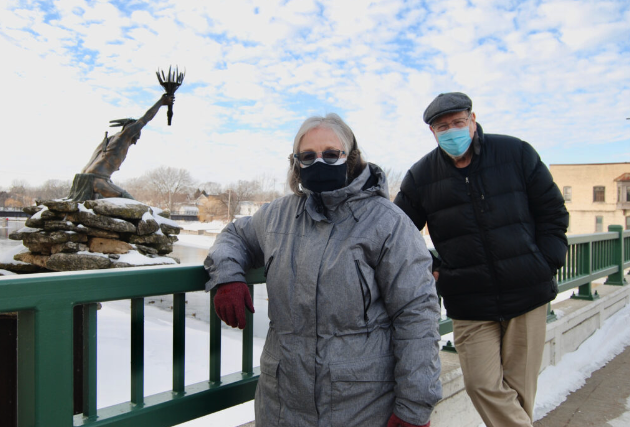
Heart of the City president Frankie Fuller and board member Bill Johnson stand on what might be perceived as the heart of the city: the Main Street bridge. The two recently arrived at Good2Go in downtown Fort to talk about the nonprofit organization’s history, goals and projects. (Kim McDarison photo.)
COVID-19 testing, vaccination registration underway
(Originally published Feb. 6, 2021.)
By Chris Spangler
Contributor
Wisconsin soon will be launching online registration for coronavirus vaccinations.
The state is working with Microsoft to set up the online system, and on Feb. 15, its software will begin being tested in 10 communities.
Meanwhile, Jefferson County residents may sign up for the COVID-19 vaccinations through the county Health Department and Fort HealthCare.
Since arriving in March 2020, the coronavirus has sickened 7,643 county residents and claimed the lives of at least 73. There also have been 907 probable cases with six more deaths related to COVID-19.
The City of Fort Atkinson has recorded 1,677 COVID-19 confirmed cases of the virus.
The county’s 14-day rolling average of confirmed and probable coronavirus cases is 31 new cases daily per 100,000 residents, for a total 437 during that time period.
Demand for vaccinations is exceeding supply. For instance, on Jan. 30, it took three to four minutes to fill up 500 available appointments for vaccinations through the Jefferson County Health Department.
That marked the first time that persons age 65 and older could start calling in to set up a time for a shot.
To be invited to call, residents submit a survey that is available at https://www.surveymonkey.com/r/65EKDIS. They then are contacted with instructions to call in at a certain time and day to set up an appointment.
But on Jan. 30, all 500 appointments were gone within minutes, leaving some 3,500 more callers hoping to be able to get through in time the next week.
Currently eligible to sign up for vaccinations are frontline and long-term healthcare workers, emergency and corrections personnel, nursing home residents and persons age 65 and essential workers.
Starting on March 1, the county Health Department will register eligible individuals through a survey to be posted on its website, dashboard and social media. To sign up, visit https://www.jeffersoncountywi.gov/community/residents/vaccine.php.
As before, once the survey is posted and individuals sign up, the county will email all eligible persons, notifying them of available appointments.
“We will notify all individuals who have signed up 24 hours before appointments are made available so that you can prepare accordingly,” the health agency said.
Groups that will be eligible starting March 1 include education and childcare staff, individuals enrolled in Medicaid long-term care programs, some public-facing essential workers, non-frontline healthcare essential personnel, and facility staff and residents in congregate living settings.
“We will be verifying appointments, eligibility and/or age at our clinics, so make sure to bring an ID or other document that reliably conveys your eligibility to your appointment,” the health agency said. “Any work ID/badge, paystub, or other document that reliably conveys your eligibility will be appropriate.”
Only Jefferson County residents may register at this time.
Jefferson County has been receiving both the Moderna and Pfizer vaccines as availability allows.
For questions on eligibility, or for individuals aged 65 or older who cannot sign up using the survey, please email the department at Vaccine@JeffersonCounty.gov. More information is available at: https://www.dhs.wisconsin.gov/covid-19/vaccine.
Meanwhile, Fort HealthCare also is taking the names of persons wishing to be vaccinated.
They should visit FortHealthCare.com/VaccineSignUp to complete the COVID-19 interest form for being placed on a waiting list. Eligible patients age 65 and older will receive an invitation to receive a COVID-19 vaccination.
“While this interest form does not guarantee an immediate appointment or replace the scheduling process, we may contact you for same-day appointments if they become available,” Fort HealthCare said.
Priority scheduling will be given to current Fort HealthCare primary care patients, although availability is open to the public. To expedite access to the vaccine, it is recommended that current primary care patients sign up for a MyCompass account through self-enrollment that is located on the Fort HealthCare website.
Meanwhile, the Jefferson County Health Department reminds the public that the Wisconsin National Guard is continuing to provide COVID-19 testing twice a week at the Jefferson County Parks Department shop, located at 1555 S. Industrial Drive, Jefferson.
Note the location change from the county’s Fair Park, where it was in the past.
Testing takes place from 10 a.m. to 6 p.m. on Fridays, Feb. 12, 19 and 26 and March 5, and 8 a.m. to 1 p.m. on Saturdays, Feb. 13, 20 and 27 and March 6.
Testing is subject to cancelation due to weather.
Anyone age 5 and older is welcome and one need not have exhibited any symptoms to participate.
While the health department can vaccinate anyone, due to a vaccine shortage, the health department is working to offer vaccines first to those living and working in Jefferson County.
Persons should sign up at Register.covidconnect.wi.gov. Those not registered will be assisted by the National Guard upon arrival.
For more information, visit Jeffersoncountywi.gov/Test4Covid.
In addition, community testing is taking place from 11 a.m. to 7 p.m. Monday through Friday at the University of Wisconsin–Whitewater Community Engagement Center, 1260 W. Main St., Whitewater.
Persons who want to receive a rapid-results test that is available in about 15 minutes should register at doineedacovid19test.com or call 1-800-635-8611. Those who test positive through the rapid-results test will be urged to get a confirmatory PCR test.
Individuals do not have to be experiencing symptoms or be a close contact of someone with COVID-19 to get a test, nor do they need to live in the community where the testing site is located.

Heart of the City ‘Big Heart’ winners named
(Originally published Feb. 7, 2021.)
Fort HealthCare and Michael Clish (formerly of WFAW) have been chosen for the 2020 Heart of the City “Big Heart Award,” which will be presented at the Fort Memorial Hospital on Friday, Feb. 12 at 2 p.m. in the hospital mezzanine lobby. With such truly deserving nominees, this is the first time in the 14 years of honoring community members that two recipients will receive the award.
The Lue Ehinger Big Heart Award is an annual award presented in February, close to or on Valentines Day, to acknowledge contributions made to the Fort Atkinson community relating to the mission of Heart of the City. Our dear member Lue Ehinger had one of the biggest hearts of all, and we wish that she be memorialized as others carry on in her tradition.
Since 1942, Fort HealthCare (Fort Memorial Hospital) has provided exemplary care to our community. In the past two decades, their commitment to improving the health and wellness of the community, while providing opportunities and information for people to play an active role in their own wellness, has played a crucial role in connecting people to health care resources and services throughout the county. Their commitment, presence and participation have been a reassurance to our community and have been vitally important during the Covid-19 pandemic.
Heart of the City also honors Michael Clish, news reporter and on-air host, who has retired from WFAW, WSJY, WKCH after 25 years of service. Michael has been steadfast in his commitment to providing coverage of important meetings in our community, promoting nonprofit groups that in turn support the quality of life in Fort Atkinson. He cares about the integrity of journalism and the role it plays to inform and engage our citizens.
Michael helped people tell their stories while weaving the influence of the past with the hopes of the future. Michael created links among citizens, the groups with whom they worked and the people they needed to reach.
From moderating political conversations, performing countless interviews highlighting initiatives in surrounding communities, building momentum for projects in our city, promoting our local festivals and being a consistent presence at City Council and School board meetings; Michael has been our anchor, earpiece and sounding board. As Ann Engleman so aptly put it, “Michael embodies the spirit of this award.” She also suspects he must be aware of the fact that he entertained farmers and cows in many a barn as mornings dawned. Mmmmmmoooooooo!”
A big “thank you” to Fort Health Care and Michael Clish is extended.
Heart of the City is a group of citizens interested in maintaining the small town character and quality of life found in our community. To find more information go to http://heartofthecity.us and find us on Facebook at https://www.facebook.com/Heart-of-the-City-325874885646/.
Editor’s note: see related story: Building ‘Heart’ in Fort.
Wards combined for April election
(Originally published Feb. 7, 2021.)
By Kim McDarison
The Fort Atkinson City Council Tuesday voted in favor of combining the city’s 10 wards in advance of the April 6 General Election.
City Clerk Michelle Ebbert noted that the process of combining wards was similar to the process undertaken last month when council approved combining wards for the primary election scheduled to take place Feb. 16.
At the time, Ebbert noted, combining wards becomes an available option when reporting units within the city, such as wards, utilize one ballot style for the entire city, negating any reason to provide separate results. Instead, she said, the results within the city would be reported as one set.
Seven candidates running for the Department of Public Instruction (DPI) superintendent seat will be on the February ballot.
They are Sheila Briggs, Joe Fenrick, Troy Gunderson, Shandowlyon Hendricks-Williams, Deborah Kerr, Steve Krull and Jill Underly. DPI Superintendent Carolyn Stanford Taylor will not be seeking another term.
In April, the ballot will include the two candidates whose names emerge as top vote-getters from the primary, and the names of those running for open seats on the School District of Fort Atkinson Board of Education and city council.
Therefore, in April, Ebbert said, one reporting unit will be established to provide results to Jefferson County.
Newcomer Rhona Buchta, Fort Atkinson, is the only name that will appear on the April ballot running for an open school board seat. Incumbent Rachel Snethen is not seeking another term.
There are four candidates running in April for three city council seats, including incumbents Mason Becker and Chris Scherer, and two challengers, Megan Hartwick and Jordan Lamb. The three top vote-getters will win council seats.
Lombardi inspires
(Originally published Feb. 7, 2021.)
Fort Atkinson was in the spotlight during Sunday evening’s Super Bowl LV.
The community was featured in several scenes during a 1-minute, 45-second commercial sponsored by the National Football League.
The commercial shared an inspirational speech by the late legendary Green Bay Packers coach Vince Lombardi as a backdrop to the ad, which included several scenes shot in Fort Atkinson in late December.
Cold Spring Design, Powers Tire and Auto Service, and Fort HealthCare reportedly were among the venues.
NFL Executive Vice President and Chief Marketing Officer Tim Ellis said in a story by USA TODAY Sports, “If Vince Lombardi were to come back, what would he have to say to us?”
Actor Russ Hutchison portrayed Lombardi, who died in 1970 of colon cancer,” “walking through everyday America” in the commercial spot that aired ahead of the coin toss.
“This speech is an amalgamation of his speeches that are essentially re-articulated for today,” Ellis was quoted as saying. “And I think what comes through is a very strong, positive, human, compassionate, inspiring message for all of us.”
Producers reportedly received help from a visual effects studio, as well as used past footage of Lombardi and “proprietary face-swapping technology.” The Lombardi family collaborated with the NFL and approved the commercial.
“This year, there’s never been a moment in history where I think the country really needed the NFL to be that cultural guiding light and kind of show a level of strength and resilience and compassion,” Ellis told USA Today Sports.
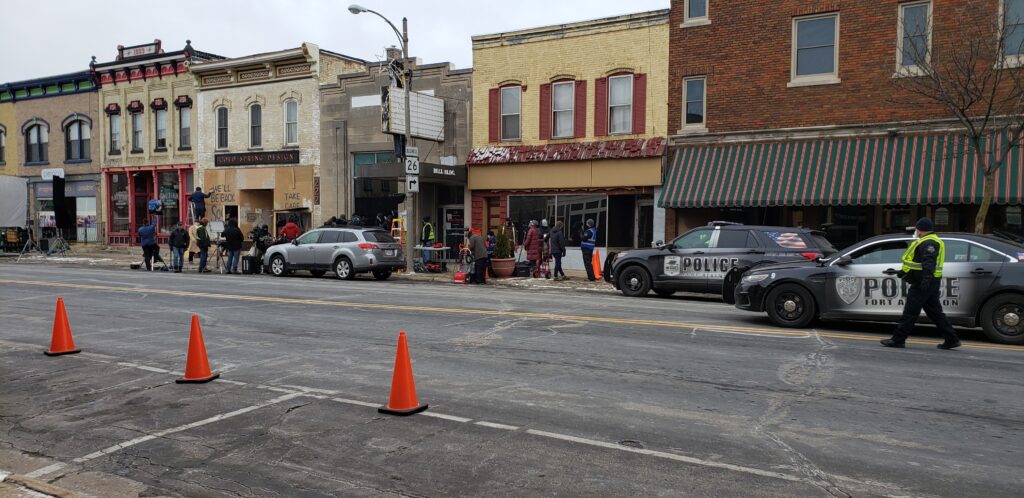

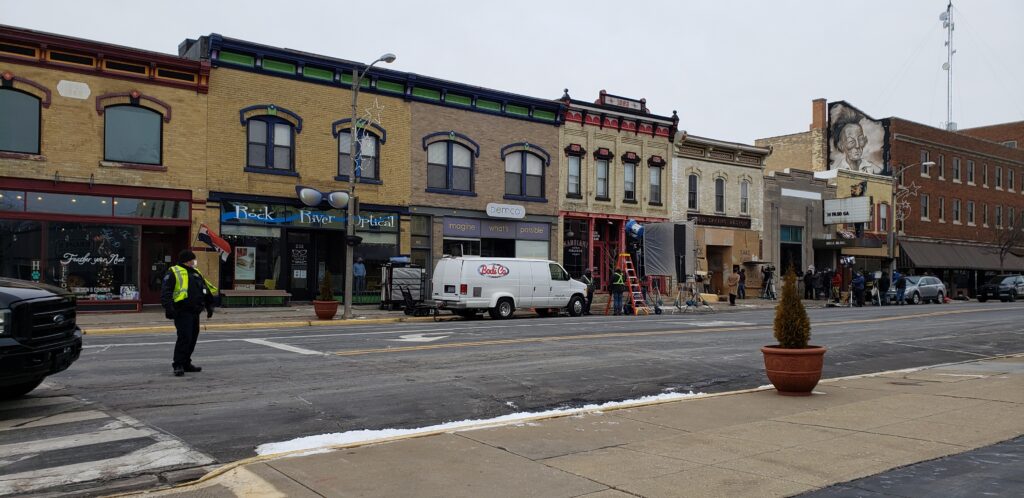
Photos show activity on Main Street in Fort Atkinson on the morning of Dec. 29, 2020, when a film crew arrived to shoot a Super Bowl commercial that aired during the game Sunday.
Photos by Chris Spangler.
Painting the town, again
(Originally published Feb. 7, 2021.)
By Kim McDarison
Artist Larry Schultz might live in Milton, but he’s made an impression on Fort Atkinson.
Those familiar with the mural on the city’s water department building, 37 North Water Street, know his work, and visitors to the National Dairy Shrine at the Hoard Museum may be familiar with his painting: “The Seven Wonders of Wisconsin,” created as a commemorative piece for Wisconsin’s first All-Dairy Breeds convention held in Oconomowoc in 2000. The painting features the seven breeds used within the dairy industry and hangs today in the museum.
Larry has also created cover art for two Christmas editions — 2016 and 2020 — of Hoard’s Dairyman, the national dairy farm magazine, located in Fort Atkinson.
Regionally, visitors to the Milton House Museum in Milton can also view a mural painted by Larry. His nearly three-story rendition of American history, as it relates to slavery, spans a staircase and its associated landings.
Recently, Jude Hartwick, president of the Fort Atkinson Beautification Council, the organization that commissioned the Water Department building mural that was dedicated in the fall of 2019, said the organization is looking at other opportunities to employ Larry’s skills. The council is looking at several structures in nearby locations to the Water Department building and along the Rock River. More information about upcoming projects will be released soon, Hartwick said.
So who is Larry Schultz, and how did he discover and develop his talents?
Finding his way
A native of Iowa, Larry arrived in Milton with his parents when he was a year old. The family would grow to include eight children, including Larry’s six sisters and one brother.
Although he never married or had children of his own, as a director of a youth ministry called “Kononia,” a Greek word meaning “fellowship,” Larry said, “I have everyone else’s children.”
The ministry holds weekly youth meetings and Bible studies and performs a Christian musical each summer featuring the Kononia Singers.
“We take it on the road,” Larry said.
Between his work with Kononia and his devotion to art, Larry said, “It’s like I have two lives.”
Larry makes his home in a modest 16- by 20-foot cabin situated on a 15-acre Seventh Day Baptist Church campground in Milton where he serves as caretaker.
His dwelling is heated by a wood-burning stove and is situated near the camp’s lodge where Larry has access to a bathroom. The space is filled with art, art supplies, and printed materials depicting images Larry has produced or used as reference materials for paintings he’s made. It’s both cluttered and cozy.
Larry shares his space with a former barn cat named “Sugar Lips.”
Larry has occupied his cabin for 16 years and enjoys rural living.
“It’s always an adventure in the country,” he said.
Larry said his interest in art began with a drawing made by his mother.
“When I was a kid, I was easily inspired. I asked my mom to draw a house. She would have never called herself an artist, but she drew it in perspective, as a cube,” Larry said, adding that the drawing piqued his interest and he began taking art classes at school.
His pursuit of art lapsed in junior high, he said, after he felt discouraged in an art class. In high school, he resumed his classes and by his senior year, he was spending some four hours each day in the Milton High School art room.
Larry graduated in 1970 and continued his education at Madison Area Technical College, earning an associate degree in commercial art in 1973.
After graduation, Larry went to work at a print shop in Janesville where he was employed as a graphic artist.
In this work he found frustration, he said. His dreams revolved around producing fine art.
It was during this time, Larry said, that a friend living in Colorado invited him for a visit. Upon his arrival, while relaxing in his hotel room, he came upon a Bible.
The Bible instructed him that the way to heaven was by trusting in God. Larry said he found the words inspiring.
Larry moved to Colorado and found work in an advertising agency.
It was the 1970s, he said, and the economy was showing signs of decline. Larry decided to return to Wisconsin, gladdened to be coming home, but concerned, he said. “I thought God might only be in Colorado.”
He decided to seek out Christian fellowship, and in the summer of 1975, he found an opportunity as a bus driver for a youth group.
While driving the bus, Larry said, he found himself taking an active role in guiding the group’s trip and activities.
He organized the kids as singers, which, he said, was the inception for what would later become the Kononia Singers.
At the trip’s conclusion, Larry said, he was asked by the group’s pastor to stay on as a youth leader. Larry spent the next seven years as a church volunteer.
While volunteering, he also took classes at UW-Whitewater, earning his teaching degree in art. He graduated in 1981.
That same year, he said, he became a full-time director for Youth for Christ. The group was supported through donations. After a time, there was a lull in donations, Larry said, so the organization allowed him to find an income through his art.
Larry also served, between 1982 and 1992, as a substitute teacher within the Milton school district.
Forming an art business
Larry began selling his art through commissions from family and friends. Among his early clients was a former 4-H acquaintance who asked Larry to make a painting of his horse.
“I enjoyed it so much that I started painting horses,” Larry said.
Larry has a long association with horses and today keeps two of his own.
“When I started painting horses, my friend said: ‘you need to get a booth at the Midwest Horse Fair.’”
Larry opened a booth in 1990.
Larry found success painting portraits of people’s horses and sought opportunities at horse-related events. He set up a booth at the Region 10 Arabian Horse Show, held in 1991 in Milwaukee at the Wisconsin State Fair grounds, and he attended a saddlebred show. He also attended art shows in Lake Geneva and Madison. He even attended one in Arlington Heights, Ill, at the race track, he said.
While at the Midwest Horse Fair, Larry said, a contest was held to select an artist to create art for the fair’s program cover and promotional poster and he won.
That was about 20 years ago, he said. He has been doing the fair’s program cover and poster art ever since.
Looking for more horse-related opportunities, Larry next attended the Villa Louis Carriage Classic in Prairie du Chien. That was about 15 years ago, he said.
Every year, the event gives a print to its patrons who support the show. Before deciding to set up a booth there, Larry said, he visited the show and took a photograph of an older couple harnessing their old horse.
He used the photo as inspiration for a painting which he sold at the event the following year.
The painting brought attention to Larry from the horse-driving community and he was asked to create art for a poster for the Dairyland Driving Club’s Sesquicentennial Coach Run. The event featured a horse-driven coach that journeyed from the state Capitol in Madison to Prairie du Chien.
(Artwork for and information about the coach run is found here: https://www.dairylanddriving.com/3d-flip-book/1998-sesquicentennial-coach-run/.)
Always looking to broaden his art opportunities, Larry next set his sights on the dairy industry.
“When I was a kid, I wanted to be a dairy farmer, like my uncle. I didn’t get to be a dairy farmer, but I like farms, cows, and animals. So I got a booth at the World Dairy Expo,” Larry said. That was about 20 years ago and he has been attending ever since.
“That was the best thing for me,” he said, adding that the expo attracted people from all over the world.
The exposure brought attention from various breeders looking for art at breed conventions. They hired Larry to do art for their posters and advertisements.
Larry was commissioned to make a commemorative print for the World Dairy Expo’s 50th anniversary in 2016. After that, he said, he became known for including all seven dairy breeds in one painting.
Making murals
Larry said his interest in painting murals grew from his involvement with painting sets for his ministry’s singers and other establishments.
He saw the large backdrops as similar to murals.
Several years ago, he said, he was commissioned to paint the mural in the stairway of the Milton House Museum.
(A video featuring the mural is found here: https://miltonhouse.org.)
That was the first mural, Larry said.
In Fort Atkinson, he said, an agriculture teacher within the School District of Fort Atkinson, Jeff Agnew, was a former youth group member.
Agnew is retired now, Larry said, but he was on the city’s Beautification Council, and, he added, “he wanted to be sure there were cows in the mural.”
In the spring of 2018, fundraising for the project kicked off.
Seven artists were under consideration for the project and after a bidding cycle, Larry was selected.
Once he was chosen, he said, the committee supplied him with history books and gave him a list of items they wanted to see depicted within the mural.
Among items on the list was a representation of the Jones Dairy Farm, and members of the Hoard family.
“Old Mr. Hoard is standing on top of the bandstand and Mary Hoard is in the boat. The boat is called the ‘Uncle Sam’ and it used to go up and down the river,” Larry said.
Placed in the boat also are members of the Beautification Council and other likenesses of living people whose pictures were brought to Larry by Hartwick.
Larry also found items in history books that he thought would bring significance and depth to the mural.
Giving it a personal touch, Larry said, he snuck the likeness of his dog, “Kiddo,” into the mural, twice.
Larry said the process of painting the mural began with a rendering on paper, showing how the completed project would look. It took about six hours to complete, he said.
He started painting the mural in August of 2018, working between 6 and 8 hours each day, until October of that year, and then the weather turned bad, he said.
When he began the project, area high school students and other members of the community helped him paint the larger blocks of color.
He resumed work on the mural in April or May of 2019 and finished the project in July.
Larry is also the artist who painted the logo for the Fort Atkinson Generals, a Home Talent League baseball team, on the reservoir in Jones Park. The logo was painted in 2020.

Milton artist Larry Schultz, at left, visits the mural he painted on the Fort Atkinson Water Department Building. He was recently joined by Fort Atkinson Beautification Council Vice President Alan Cook, center, and President Jude Hartwick. The Fort Atkinson Beautification Council is making plans to commission another mural for placement on a yet-to-be-determined structure near the Water Department Building. More information will be released as the project develops, Hartwick said.

Milton artist Larry Schultz shares a picture he created in advance of painting the Fort Atkinson Water Department Building mural. The rendering took six hours to make and served as a blueprint while he painted the finished product.

The mural painted by Larry Schultz and dedicated to the city by the Fort Atkinson Beautification Council in 2019 in its finished form.

Larry Schultz stands near his painting: “The Seven Wonders of Wisconsin,” created as a commemorative piece for Wisconsin’s first All-Dairy Breeds convention held in Oconomowoc in 2000. The painting features the seven breeds used within the daily industry and hangs today in the Dairy Shrine at the Hoard Museum.

Artist Larry Schultz holds two Christmas editions — 2016 and 2020 — of the Hoard’s Dairyman, the national dairy farm magazine, for which he created cover art. Kim McDarison photos.



Kim McDarison photo.
Vruwink receives Wisconsin Dairy Business Association award
(Originally published Feb. 8, 2021.)
State Rep. Don Vruwink, D-Milton, recently received the Legislative Excellence Award from the Wisconsin Dairy Business Association.
The award recognizes legislators for ongoing support for farmers, processors and the broader dairy community.
“As a member of the Dairy Task Force, I got to know dairy farmers around the state, and I know the challenges that they face. The dairy industry contributes over $45 billion to Wisconsin’s economy. We need to keep the dairy industry strong and vibrant in Wisconsin,” said Rep. Vruwink.
Rep. Vruwink serves as ranking member on the Rural Development Committee, and also serves on the Agriculture Committee. He is a member of the Dairy Business Association, Wisconsin Farm Bureau, and served on the Wisconsin Dairy Task Force.
Rep. Don Vruwink represents the 43rd Assembly District, which includes portions of Dane, Jefferson, Rock and Walworth counties.
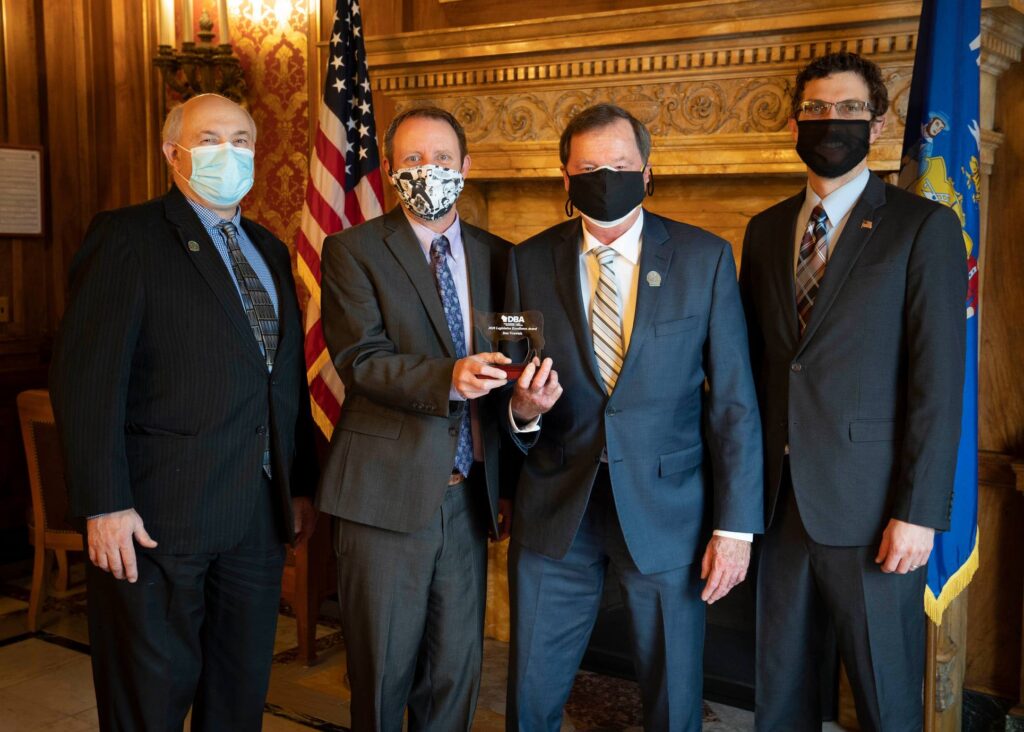
Pictured are Rep. Gary Tauchen, R-Bonduel, from left; Chad Zuleger, from The Dairy Business Association; Vruwnik, and Rep. Travis Tranel, R-Cuba City.
Submitted photo.
City eyes borrowing for dump truck, road repairs
(Originally published Feb. 8, 2021.)
By Kim McDarison
The Fort Atkinson City Council on Tuesday, Feb. 2, gave approval to city staff to solicit terms for a loan, monies from which could be used to help pay for the purchase of a dump truck and perform street repairs.
In April, the city accepted the terms of a Wisconsin Department of Transportation (DOT) facilitated grant, monies from which will also go toward the equipment and road repair project.
In a memo to council, City Clerk/Treasurer/Finance Director Michelle Ebbert wrote that favorable interest rates offered encouragement to staff as they prepared for the purchase of Public Works equipment and revisited street repairs that were put on hold in 2020.
The city’s capital improvement plan (CIP) includes $200,000 for public works equipment, Ebbert wrote. This year, the city is looking to purchase a tandem axle dump truck with a straight plow and sander.
Bids for the equipment have not yet been received, she wrote.
In March, she said, the city was approved to receive funding administered through the DOT to help pay for a multi-road project within two of the city’s industrial parks. Monies came through the Multimodal Local Supplement (MLS) program. According to a letter from the DOT, the program is a one-time funding initiative offering up to $75 million for multimodal local system transportation projects that have demonstrated an impact on the local government’s economy.
The program assists local governments by reimbursing a percentage of funds used to improve roads, bridges, harbors, railroads, transit services, and bicycle and pedestrian paths.
The city has been approved to receive funding through the program of $388,000 or 48% of the cost of the total multi-road project proposed by the city in its grant application, which is estimated at just over $800,000, according to materials provided by City Engineer Andy Selle. To remain eligible for the grant assistance, the project must be completed within the next six years.
When the grant was awarded, Selle wrote, the timing worked well for the city.
In 2020, he said, the city “put forward a substantial amount of paving work,” but, he continued, “adding an equal volume of paving work to this would command a level of cost efficiency that would be difficult to replicate in subsequent years.”
Staff looked at borrowing rates and concluded that increases in the cost of materials over the next six years would likely match the interest accrued in borrowing for the project, Selle wrote.
A map supplied within the council meeting packet identifies the multi-road project as located on the city’s southwest side, including portions of Industrial, Butler, Ridge and Summit drives and Klement Street.
As part of the grant application, Selle, describing the city’s need, wrote: “Our city has been unable to invest in our industrial parks. These areas harbor the largest businesses in our city, both in terms of tax base and employment. Sound transportation infrastructure is critical to moving the products and employees of these firms.”
Companies impacted by road quality in the area include Jones Dairy Farm, W&A Distribution, and OSI/RediServ, Selle wrote.
Cook named to Marching Band Hall of Fame
(Originally published Feb. 9, 2021.)
By Chris Spangler
Contributor
The Wisconsin School Music Association has announced that retired Fort Atkinson High School band teacher Tom Cook will be inducted into its Marching Band Hall of Fame.
Cook will be presented with his Hall of Fame plaque during the WSMA State Marching Band Championships Saturday, Oct. 16, at the University of Wisconsin-Whitewater’s Perkins Stadium.
Another plaque will be on permanent display at the Wisconsin Center for Music Education in Waunakee.
“Mr. Cook has played an integral part in marching activity in the State of Wisconsin for decades,” WSMA program director Erica Ruppert said in announcing the 2020 honoree.
“His work as an educator, adjudicator and WSMA Marching Band Committee member has impacted thousands of students and fostered the growth of the marching arts in Wisconsin.”
Cook’s involvement with marching bands goes back to 1971, when he was a freshman at Rock Falls High School in Illinois. His older sister convinced him to join the championship Marching Rockets, then under the direction of Mid-American Competing Band Directors Association (MACBDA) Hall of Famer Richard C. Davis.
“His love for band and music flourished and he hasn’t looked back,” Ruppert said of Cook.
In 1974, Cook joined the Blue Stars Drum & Bugle Corps from La Crosse and enrolled at the University of Wisconsin-La Crosse to study music education and march with the UW-La Crosse Chiefs (now the Screaming Eagles).
He earned his bachelor’s degree in 1979 and began his teaching career shortly after at Stockton, Ill., where he taught band. While there, he began the marching and jazz band programs, which finished several times in the top 10 of their class in Illinois High School Association Music Sweepstakes.
In 1984, he became the high school band teacher in Prairie du Chien. The Blackhawk Brigade High School marching band was formed under his direction, and soon thereafter, it began participating in the MACBDA summer circuit and Wisconsin fall shows, with a culminating performance at the 1985 WSMA State Marching Band Championships.
Prairie du Chien High School was awarded back-to-back Class A Championships in 1987 and 1988.
Cook arrived at Fort Atkinson High School in 1990, succeeding longtime band director Grayson Babcock.
The Fort Atkinson bands participated in WSMA activities, placing first in the Class AA State Championships in 2003. In addition, the marching band finished in the top three in Class AA or AAA multiple times over 23 years of participation.
The jazz program was nationally recognized, earning top status at the UW-La Crosse, UW-Whitewater and UW-Eau Claire Jazz Festivals multiple times, along with 21-straight Division I awards at WSMA State Festivals.
The concert band also earned top honors. It toured England in 2008, and presented many performances at Walt Disney World in Florida through the years.
Cook received his master’s degree from VanderCook College of Music in Chicago in 2001.
In addition to marching and jazz band, Cook taught concert band, pep band, music theory, orchestral winds and show choir combo, and was the music department chair until his retirement in 2014.
While at Fort Atkinson High School, Cook was nominated for the Herb Kohl Foundation Award and the Wildermuth Award of Excellence.
Previous awards include the 1985 Prairie du Chien Teacher of the Year and February 2014 Rotary Educator of the Month. He was recognized as July 2014 Channel 3000 Top-Notch Teacher, and the WSMA and WMEA presented him with the Wisconsin Award for Excellence in Teaching Music in 2014.
“Cook is also a highly sought after marching band adjudicator through CSJA, MACBDA and WSMA and an honors band clinician for conference festivals in Illinois, Iowa and Wisconsin,” Ruppert said. “WSMA is privileged to have worked with Mr. Cook in multiple capacities through the WSMA State Marching Band Committee and the WSMA High School State Honors Music Project.
“As stated by a teaching colleague, “I’ve worked with many wonderful music educators in the past 30 years. None as fine as Tom Cook,’” Ruppert added.
Cook is not the first area teacher to be inducted into the WSMA Marching Band Hall of Fame. The honoree for 2016 was Dr. Glenn C. Hayes, director of bands at UW-Whitewater, including its Warhawk Marching Band.

Tom Cook
Wegner joins Rock River Heritage Board of Directors
(Originally published Feb. 9, 2021.)
Dave Wegner of Fort Atkinson has joined the Board of Directors of Rock River Heritage Inc.
Rock River Heritage is a nonprofit organization that promotes historic renovation and adaptive re-use, as well as community-based programs.
It is the founding organization of the Fort Atkinson Club, a community center overlooking the Rock River in downtown Fort Atkinson.
Wegner’s first official meeting was the annual meeting on Jan. 19.
He and his wife, Mary, held their son’s wedding party at the Fort Atkinson Club and fell in love with the building. They have been generous members and participants in many events at the community center.
Dave is retired from the U.S. Marine Corps and Mary formerly worked at Beauty and the Bean.
Meanwhile, Rachel Nelan, the Fort Atkinson Club’s long-serving board president, has retired. She served on the center’s board and various committees since our beginning in 2012 (or earlier).
Nelan is a partner at Flad Architects in Madison, and her husband, Conor, owns Cold Spring Design in downtown Fort Atkinson.
They own a farmette in Cold Spring, where they raise pigs and goats, and they reside in a historic bungalow in Fort Atkinson.
The Nelans have two sons.

Dave Wegner

Rachel Nelan
Highway 12 home is total loss after early morning fire
(Originally published Feb. 11, 2021.)
By Kim McDarison
Reporter-publisher
Fire swept through a one-story dwelling along U.S. Highway 12 between Fort Atkinson and Whitewater early this morning, leaving a family of five homeless.
Fort Atkinson Fire Department Chief Daryl Rausch said the department received a call about a house fire at N833 Highway 12 at 3:09 a.m.
The property is located between the the highway’s intersections with Cheeseborough and Carnes roads.
While the structure, including the home and an attached three-car garage, was a total loss, there were no injuries to residents or pets, Rausch said.
The structure was valued at $300,500, he added.
When firefighters arrived, the flames were burning through the roof of both the garage and the attached home, Rausch said, adding that while an official cause of the fire has not yet been determined, a potential scenario is that the fire started in the attached garage, where a wood-burning furnace was located.
The family was home at the time of the fire and was alerted by smoke detectors, Rausch said.
“They were able to get their dogs out and we were told that a cat was missing,” he said.
Firefighters were able to locate the cat in the basement, administer oxygen and return the pet to the homeowners.
“It likely will be fine,” the chief said.
To battle the blaze, some 40,000 gallons of water were transported to the scene. Frigid temperatures caused attack lines and engines to freeze up, Rausch said, adding that when he arrived at the scene at 3:19 a.m., the temperature outside was 9 degrees below zero.
Some 13 fire departments responded to the mutual-aid call, Rausch said, the majority of which were from Jefferson County. Three were from Rock County and at least one was from Walworth County, he added.
Other responders included Ryan Brothers Ambulance Service, the Jefferson County Sheriff’s Office, and Jefferson County and City of Fort Atkinson Department of Public Works crews.
The Jefferson County Traffic Division also was on hand to help with road closures on Highway 12.
Firefighters were aided by MABAS (mutual aid box alarm system) rehab units, and, the chief said, “quite a number of citizens and businesses in the community brought food and hot drinks to the station and the scene.”
Crews worked to remove about four inches of ice that had built up on the road after the fire was out, he said.
The fire was placed under control at 4:32 a.m. and it was out at 8:11, Rausch said.
Crews cleared the scene at 10:05 a.m.
Highway 12 was closed to traffic until about 9:30 this morning.
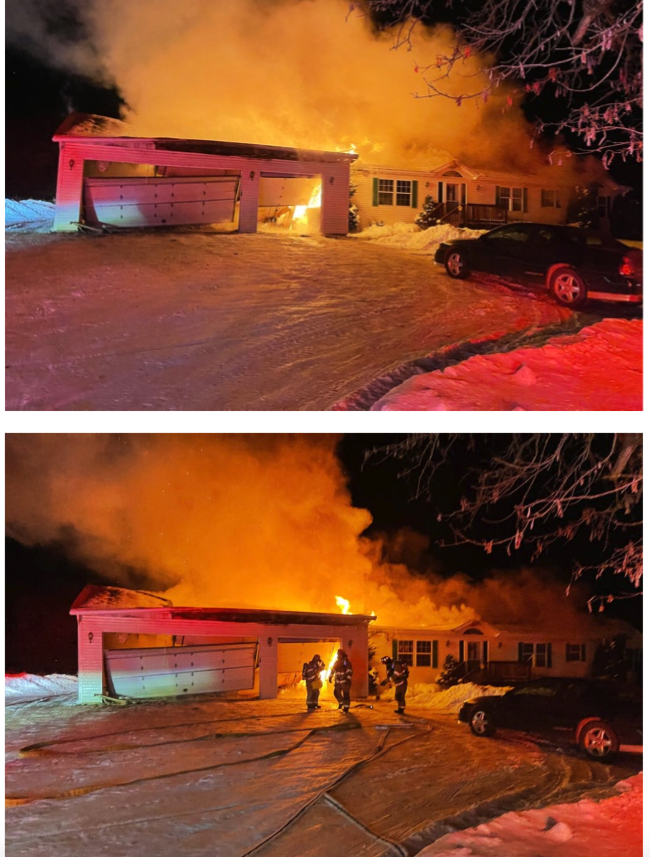
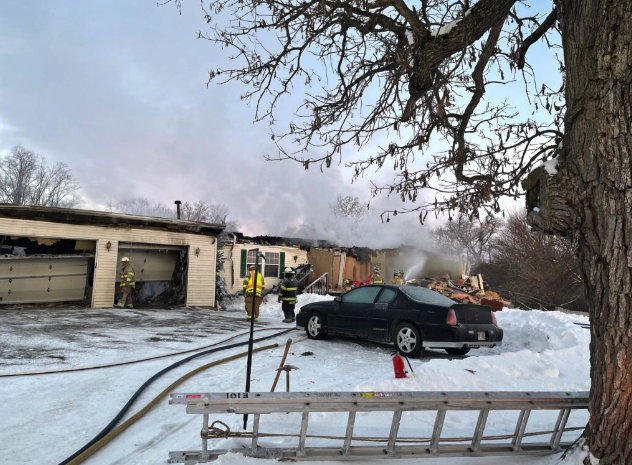
Several photos show the blaze and aftermath of a fire early this morning on Highway 12 between Fort Atkinson and Whitewater. Fort Atkinson Fire Department Chief Daryl Rausch said there was no loss of life and described the structure as a total loss. Photos courtesy of the Fort Atkinson Fire Department.
Three on primary ballot for 13th Senate District
(Originally published Feb. 11, 2021.)
By Chris Spangler
Contributor
Three candidates, including current and former state Assemblymen, are on the ballot in the Tuesday, Feb. 16, Republican primary for the 13th Senate District seat. On the ballot for the post formerly held by Scott Fitzgerald, R-Juneau, are John Jagler, Todd Menzel and Don Pridemore.
In November, Fitzgerald was elected to the U.S. House of Representatives. He succeeded Congressman F. James Sensenbrenner, who retired after four decades in Washington D.C.
The winner of the GOP primary will face off in the April 6 general election against Democrat Melissa Winker, an Oconomowoc teacher who previously ran for Assembly, and independents Spencer Zimmerman of the Trump Conservative Party and Ben Schmitz of the American Solidarity Party.
Candidate John Jagler, of Watertown, currently represents the state’s 37th Assembly District, which includes portions of Jefferson County.
He was elected to his fourth term in the Assembly in November, serving as chairman of the Assembly Housing and Real Estate Committee and co-chairman of the Assembly Committee on Mental Health. He authored the Special Needs Scholarship Program, which broadens educational opportunities for students with special needs.
Jagler started working in the Capitol in 2010 as communications director for then-Speaker Jeff Fitzgerald. In 2012, he won election to the Assembly.
Prior to that, he had a 20-year broadcasting career and was host of “Wisconsin’s Morning News” on Milwaukee’s Newsradio 620 WTMJ.
Jagler currently is a Realtor in the Watertown area, and his family owns an all-natural dog treat company.
Jagler said that he ran for Assembly eight years ago to make a difference. While as a broadcaster, he had talked about the issues, he said, he felt that as a legislator, he could work toward finding solutions to them.
“I am seeking this office to have a larger role in taking the common-sense ideas from our area to the Capitol,” he said. “The global pandemic has inflicted pain and confusion on far too many aspects of daily life. Helping our small businesses, essential workers and improving education for all students will be my priorities.”
He has been endorsed by U.S. Rep. Fitzgerald, former Lt. Gov. Rebecca Kleefisch, Wisconsin Right to Life and Dodge County Sheriff Dale Schmidt, among others.
Todd Menzel, of Columbus, operates Menzel Enterprises Inc. as chief operating officer. He is a past board member of the Wisconsin Towing Association and secretary of the Sun Prairie Youth Football League.
He said he is running for office because, with the economy negatively affected by the COVID-19 pandemic and civil unrest, he feels that the government truly has not been serving the people.
“I am seeking the office of Wisconsin state senator because I have real-life experience as an entrepreneur, rather than a longtime politician, to negotiate and bring common-sense solutions to our great state,” he said. “I understand the struggles of Wisconsinites because I, too, have faced these same hurdles.”
His cited his issues of focus to include the economy, helping small businesses, workforce development, education, police training and transportation.
“More than anything, we need to bring our great nation and our people back to a time when we all felt safe, happy and in good health,” he added. “Common sense politics must return, and I intend to speak for the people.”
Don Pridemore, of Hartford, is a U.S. Air Force veteran whose professional career included working as an engineer for Johnson Controls for 16 years, with 18 years at Badger Meter. He has four electronics patents to his name.
From 2005-15, he represented District 22 in the state Assembly. He ran for Wisconsin superintendent of public instruction in 2013, but was defeated by incumbent Tony Evers in the general election.
He said he decided to run for the state Senate seat to work toward enacting education reform and addressing election laws.
Pridemore has said that he would want to expand the school voucher system in Wisconsin and take a look at dividing up the Milwaukee Public School District into smaller districts.
A supporter of term limits for elected officials, the candidate has said that he would like to diffuse the power of unions, give more power to principals and eliminate standardized testing, which discriminates against low-income and minority students.
In addition, he reportedly has said does not believe that the results of the November election were valid and that he would support resolutions to end mandates from Gov. Evers.
“I want people to be aware that I’m the true conservative,” Pridemore was quoted as saying. “I’m not a moderate. I’m an action guy. I don’t sit on my hands and do nothing.”
The 13th Senate District includes parts of Columbia, Dane, Dodge, Jefferson, Washington and Waukesha counties.
Jefferson County communities in the district include Watertown, Concord, Ixonia, Lake Mills, Milford, Oconomowoc, Waterloo, Helenville, Ixonia, Cambridge, Johnson Creek, Lac La Belle, and Rockdale.
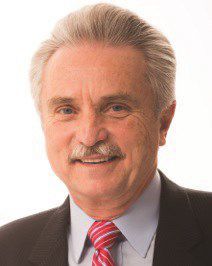
Don Pridemore
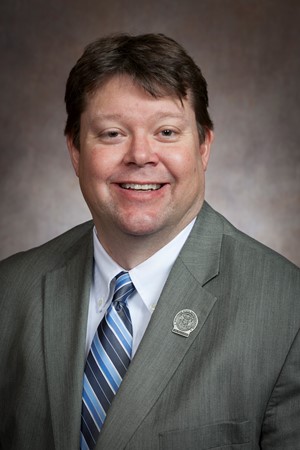
John Jagler

Todd Menzel
Seven vie in primary for state superintendent seat
(Originally published Feb. 13, 2021.)
By Kim McDarison
With Tuesday’s spring primary election just around the corner, voters might be wondering who are the seven candidates vying for the open state Department of Public Instruction (DPI) superintendent’s seat?
The top two voter-getters will advance to the spring general election in April.
In alphabetical order, they are:
Sheila Briggs
Sheila Briggs is an assistant state superintendent, leading the Division for Academic Excellence. She was appointed to that position in 2011 by then-state Superintendent Tony Evers and reappointed in 2019 by current DPI chief Carolyn Stanford Taylor.
Stanford Taylor is not seeking another term.
Prior to that, her Linkedin resume states, she was employed by the Madison Metropolitan School District for nearly 10 years, serving as the director of state and federal programs — with responsibilities including managing the district’s state and federal grants — while continuing in her previous position as the elementary lead principal, which focused on supporting the assistant superintendent for elementary schools. The job further entailed providing leadership support to 32 elementary school principals.
Briggs earlier had served as an elementary school principal, and a teacher of five-year-old kindergarten classes at three elementary schools within the Madison Metropolitan School District.
Briggs holds a doctorate degree in education leadership and policy analysis earned at University of Wisconsin-Madison in 2012. She received her master’s administration capstone certificate from the same institution in educational leadership in 2007.
She also holds a master’s degree from Cardinal Stritch University in educational administration, earned in 2001, and a bachelor’s degree in child and family studies from UW-Madison in 1991.
A campaign platform outlined by Briggs includes several tiers of priorities. For children, according to her website, her priorities include making more counselors, social workers, nurses and psychologists available to children for improved mental health; more funding for special education; and closing opportunity gaps.
For teachers, her priorities include giving them a voice and involving them in decision making, addressing the teacher shortage by inspiring more students to become teachers, and engaging in active learning, defined as nurturing the natural wonder within students.
For schools, priorities include fully funding public schools, turning away from initiatives to expand taxpayer-funded private school voucher programs, and recognizing unique needs of rural schools, including scarcity aid and transportation funding.
More information about Briggs and her campaign may be found at https://www.briggsforkids.com.
Joe Fenrick
Joe Fenrick, according to his website, is a high school science teacher in Fond du Lac and a geology lecturer at the University of Wisconsin-Oshkosh campus in Fond du Lac. He also is a member of the Fond du Lac County Board of Supervisors.
“The future of our public education system is extremely important as I have a child in high school, in middle school, in elementary school, and one who is just learning to talk,” Fenrick stated on his website.
He grew up in a family of educators, he noted, citing his father’s 35-year career as a teacher and principal in the Campbellsport School District and his mother’s 20 years teaching at St. Mathew’s Catholic Elementary School in Campbellsport.
Fenrick attended public school in Campbellsport, graduating from high school in 2001.
Rural living gave him an appreciation for hard work, and an interest in agriculture and science, he said, and his passion for science was further developed when he attended UW-Oshkosh. He graduated in 2006 with a bachelor’s degree in education, having majored in natural science and minored in earth science.
Fenrick completed his master’s degree in education also at UW-Oshkosh, he wrote.
In 2017, he received the Outstanding Young Alumni Award from his alma mater.
In 2006, Fenrick was hired by the Fond du Lac School District, where he continues to serve as a teacher today.
“I have led committees that included an inclusive special education model, literacy for all, equity in excellence, and a new teacher advisory committee,” he wrote on his website.
He was the recipient of Fond du Lac High School’s Teacher of the Year recognition in 2012.
He has been a night class teacher for seven years at the UW-Oshkosh’s Fond du Lac campus.
Fenrick is an active volunteer in his community. He has served as a tee-ball, soccer and track coach, and has volunteered for Ducks Unlimited, a habitat restoration program, and Pheasants Forever, a program focused on keeping Lake Winnebago clean.
In 2016, he was elected to the District No. 15 seat on the Fond du Lac County Board of Supervisors. He currently is serving his third term.
“I believe in strong public schools where education leads our children into the future. A strong quality school can energize neighborhoods and be the focus of a community,” Fenrick wrote on his site.
More information about Fenrick and his campaign is available at https://fenrickforeducation.com.
Troy Gunderson
Troy Gunderson, his website states, grew up in Colfax, where he received a K-12 public education.
After high school, Gunderson attended the University of Minnesota, graduated and embarked upon a 35-year career in public education.
Gunderson has served as a high school classroom teacher and a high school principal, enjoying that role for 16 years. He next served 12 years as a school superintendent, with 10 of those years at the School District of West Salem.
Today, he is an adjunct professor of school finance in the superintendent certification program at Viterbo University in La Crosse.
On his website, Gunderson outlines his platform to include the following: to create a vision for Wisconsin, which he defines as using a framework offered by “No Time to Lose: How to Build a World-Class Education System State by State”; expanding upon work completed by the Blue Ribbon Commission on Education and ensuring that all efforts are clearly aligned with the vision; to ready children to learn, which he defines as increasing investments in programs to better serve 3- and 4-year-old students; and working with communities to improve and expand options for affordable daycare, as well as to better serve families with school-aged children.
He said he also wants to ready teachers to teach, which he defines as committing to teaching as a professional career, supporting programs to attract the next generation of teachers, supporting professional development, and coordinating an effort to offer world-class curriculum and instruction, and readying graduates for their future, defined as applying a framework by Redefining Ready, to ensure all graduates are career, college and life ready, improving the connection between secondary and post-secondary institutions, and expanding private industry participation in career and technical education.
A resident of West Salem, Gunderson lives with his wife, Jill, a retired middle school science teacher. The couple has two adult children, both of whom graduated from West Salem High School and the University of Wisconsin-Madison.
More information about Gunderson and his campaign is available at https://www.troyforstatesup.com/content/about-troy.
Deborah Kerr
Deborah Kerr says on her website that she has 40 years of experience in education, 21 of those as a superintendent of public rural and suburban school districts. She stepped down in 2020 after serving 13 years as the superintendent of the Brown Deer school district.
The website describes her career as spanning all sectors, including parochial, private and public schools.
She has served as a co-chair of a UW System task force, charged with advancing teachers and leaders into the pipeline.
Kerr is a past-president of the national (AASA) and state superintendent (WASDA) associations.
Kerr received her doctorate of educational leadership from National-Louis University, her master of education degree from the University of Alaska-Fairbanks, and a bachelor’s degree in arts and science from Valparaiso University. She also attended Walther Christian Academy in Melrose Park, Ill.
The website lists among her achievements serving as an adjunct professor at local universities, championing opportunities for all students, serving as a mentor and advocate for women, coaching a state championship girls varsity basketball team, serving as an athletic director and physical education teacher, and serving as a middle school principal and assistant principal.
Among issues of importance, Kerr’s website lists her initiatives in calling for equity within schools so all “students feel loved and supported.” It also names her as among founding superintendents of the Wisconsin Closing The Achievement Gap Consortium, which includes 36 public, private, choice, voucher and parochial school districts in southeastern Wisconsin.
“The organization pursues issues of equity, justice, diversity and achievement for all children,” according to Kerr’s website.
She is cited as being a proponent of closing achievement gaps and the Building2Learn program, described on its website as a “new-age tech-ed shop.”
Kerr is described as “a passionate advocate for women in athletics” and “a former student athlete and beneficiary of Title IX” who “took steps to bring high visibility to girls sports in her school district.”
More information about Kerr and her campaign is available at https://kerr4kids.com.
Steve Krull
Steve Krull, according to his Linkedin online resume, is a United States Air Force veteran. He identifies himself as a “proven leader for change.”
According to his website, “Dr. Krull has vast experience coordinating and implementing successful programs that lead to higher levels of student achievement.”
Professionally, Krull has served within the Milwaukee Public School System as a principal, assistant principal, school support teacher and teacher.
Krull is running for the DPI superintendent seat, according to his website, because “there is a teacher shortage in the thousands” and he “sees our public educational system crumbling in Wisconsin.”
The site further lists Krull’s concerns being “a student loan debt crisis,” adding that, according to Krull, “to solve these issues, we need to reform school financing.”
Krull discovered his joy of teaching while serving for six years as an instructor in the military, the site states.
He earned his doctoral degree from the University of Wisconsin-Milwaukee in urban studies in 2016, a master’s degree in teaching from Cardinal Stritch University in 2009, and a bachelor’s degree in human services from Wayland Baptist University.
As an educator, Krull worked to ensure his students liked school, and had engaging lessons, the website states. He developed individualized learning paths for his students to help them reach “their true potential.”
Krull’s teaching methods brought positive results, and Krull was promoted to the role of instructional coach, in which he helped other teachers refine their practices to achieve success, the website states.
As a principal, the website continues, Krull has been credited with leading his educational staff toward providing a “‘Grade A’ experience for all children.”
Krull has won several awards, including “East Principal Rookie of the Year” and “Leader of the East” in 2020.
Krull has developed skills in management operations, building systems that increase productivity and efficiency, and marketing and conservative budgeting,” according to his website.
Other achievements include working with the Council of Great City Schools and coaching other Milwaukee Public School principals on budgets.
Krull is a member of a principal professional development review committee, according to his website.
Krull met his wife, Amanda, while in the Air Force. They have been married for 19 years and have two children, one of whom is a sophomore in high school. The other is a freshman in college.
More information about Krull and his campaign is found here: https://www.krullforschools.com/about-steve.
Jill Underly
Information posted on Jill Underly’s website notes that she knew she wanted to be a teacher as early as 1986, when, as a third-grader, she was inspired by Christa McAuliffe, the first teacher to launch into space. McAuliffe and her fellow astronauts died just after liftoff when the space shuttle Challenger exploded.
Since 1999, Underly has worked in many facets of education, including teaching high and middle school social studies, serving as an elementary school principal and as a University of Wisconsin College of Letters and Science academic advisor, a Title I consultant, and as an assistant manager at DPI.
She currently is superintendent of the Pecatonica School District, where she has served for six years.
Underly and her siblings are first-generation college students. A native of Indiana, Underly arrived in Wisconsin in 2005 to attend UW-Madison, earning a doctoral degree in educational leadership and policy analysis in 2012.
Underly also holds two master’s degrees: one earned in 2008 in educational administration from UW-Madison and a second earned in 2004 from Indiana University-Purdue University in secondary education curriculum and instruction. She also holds a bachelor’s degree in history and sociology earned in 1999 at Indiana University, Bloomington.
In 2015, her website states, Underly “was the youngest female superintendent to lead a public school district in Wisconsin with a research-doctorate degree.”
“With over two decades of public education experience … and five years at (DPI) in both Educator Licensing and Title I, Dr. Underly has been committed to ensuring that every child, every day, has the opportunity for a first-class public education in the State of Wisconsin,” her website states.
According to her website, she is credited with leading “initiatives to mitigate the open enrollment problems that plague rural school districts.”
In 2017, The Pecatonica Area School District was among the first public schools to offer a full-day 4K program and a daycare program, expanding the 4K program, in 2019, to all district families. The model has since been replicated in public schools, and especially rural schools, throughout Wisconsin.
Underly and her husband, John, have two children, both in middle school. The family lives on a small farm in southwestern Wisconsin.
More information about Underly and her campaign may be found at https://underlyforwi.com/about/.
Shandowlyon “Shawn” Hendricks-Williams
Shandowlyon “Shawn” Hendricks-Williams, according to her website, was influenced by life in a small rural Illinois town where most earned their living in industry or agriculture.
When factories closed, the town was negatively impacted, the website notes. As a teenager, she moved with her family to Milwaukee, where her father was appointed pastor of a church.
Hendricks-Williams is the mother of two children, one of whom is gifted and talented. The other has multiple severe disabilities, according to the site.
Feeling “disempowered during the IEP (individualized education program) team process,” the site notes, was a catalyst behind Hendricks-Williams’ desire to become a special education teacher.
Hendricks-Williams is a first-generation college student. She holds an associate degree in human services from Milwaukee Area Technical College, a bachelor’s degree in human services from Springfield College, a master’s degree in education from Cardinal Stritch University, and a doctorate degree in education leadership from National Louis University.
Among her achievements, she lists moving, as a single mother, from depending on the state to serving at the executive level.
She has more than 25 years of experience in public, private, charter and higher education and has served as a teacher assistant, special education teacher, supervisor, assistant principal, principal, district administrator and adjunct faculty member.
In addition, she has served as the assistant director of the Teacher Education, Professional Development and Licensing team at the DPI, and as the director of the Milwaukee Office of the Governor.
Hendricks-Williams also is an author, certified coach and consultant, the website states.
She has established a nonprofit organization providing housing for adults with disabilities and adults who are homeless or at risk of becoming homeless.
Hendricks-Williams outlines issues of concern facing the state that include equity, which is defined as “sweeping structural changes to ensure every student has a chance to fulfill maximum potential”; liberty, defined as providing students with the opportunity to form opinions based on truth and fact while supporting parents’ rights as their child’s first teacher; innovation, defined as pioneering dynamic reform to the structure of schools, including funding and content in the classroom; and community, defined as uniting parents, teachers, community members and students to achieve a common vision.
More information about Hendricks-Williams and her campaign is available at https://www.drhendricksforeducation.com/about.

Sheila Briggs

Joe Fenrick
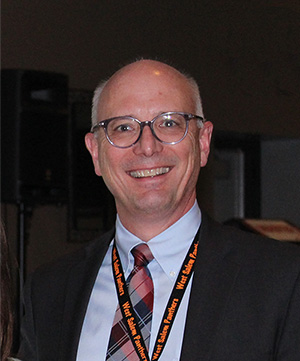
Troy Gunderson

Deborah Kerr

Steve Krull
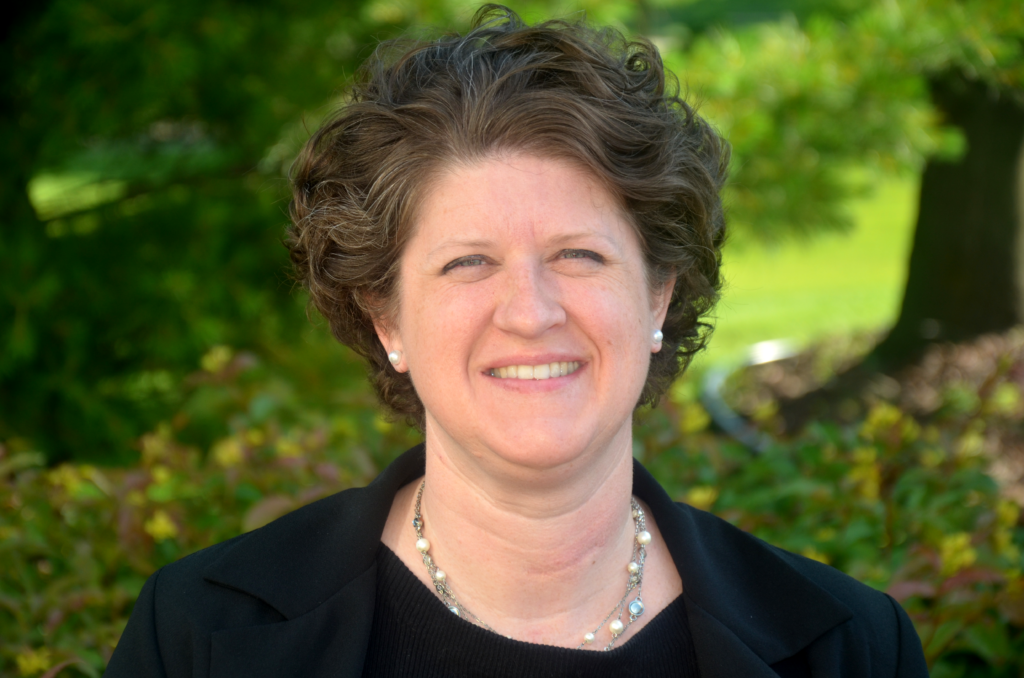
Jill Underly

Shandowlvon “Shawn” Hendricks-Williams
Turnout light for state superintendent primary election
(Originally published Feb. 16, 2021.)
By Chris Spangler
Contributor
Turnout was light in Fort Atkinson — and all of Jefferson County — as voters went to the polls Tuesday to cast ballots in the primary for state superintendent of schools.
On the ballot were seven persons vying to advance to the spring election for the top Department of Public Instruction post.
The current DPI chief, Carolyn Stanford Taylor, was appointed by Tony Evers after he stepped down from that spot upon being elected governor. However, she is not seeking re-election.
The top two vote-getters in Tuesday’s statewide primary will face off against each other in the April 6 general balloting.
According to the Associated Press, the two are Deborah Kerr and Jill Underly.
Rounding out the ballot were Sheila Briggs, Shandowlyon “Shawn” Hendricks-Williams, Steve Krull, Troy Gunderson and Joe Fenrick.
A total 10.38 percent or 5,624 of the 54,180 registered voters across Jefferson County went to the polls, including 7.2 percent or 531 of the 7,373 registered electors in Fort Atkinson. Three Fort Atkinson residents registered to vote on Tuesday.
Turnout in surrounding towns was: Hebron, 7.01 percent; Koshkonong, 4.5 percent; Cold Spring, 10.54 percent; Oakland, 8.67 percent; and Jefferson, 7.29 percent.
“The turnout was seasonably slow as the colder temps may have participating in the lower turnout,” said Fort Atkinson City Clerk-Treasurer Michelle Ebbert.
“Thank you to the election workers and voters for a pleasant day, and mark your calendar for the next election on April 6th. The April election will include city council and school board,” she added.
The day went smoothly, Ebbert said, noting that all of the same COVID-19 precautions used in the last November and April elections were in place.
“We continued the same protocol as the past elections: mask wearing recommended, hand sanitizer at every table, a new pen for every voter to use, sanitized voting booths throughout the day,” she said. “Voters were respectful and maintained social distancing.”
Overall Jefferson County vote tallies were: Kerr, 1,709; Underly, 1,211; Hendricks-Williams, 594; Briggs, 539; Krull, 459; Gunderson, 340; Fenrick, 247.
Ballots were cast in Fort Atkinson for: Underly, 187; Kerr, 113; Krull, 36; Hendricks-Williams, 46; Gunderson, 23; Fenrick, 22; Briggs, 95.
Tallies for votes cast in surrounding townships were: Koshkonong, Underly, 35; Kerr, 35; Krull, 6; Hendricks-Williams, 7; Gunderson, 7; Fenrick, 6; Briggs, 15; Hebron, Underly, 16; Kerr, 15; Krull, 6; Hendricks-Williams, 4; Gunderson, 3; Fenrick, 7; Briggs, 1; Oakland, Underly, 63;Kerr, 43; Krull, 8; Hendricks-Williams, 29; Gunderson, 12; Fenrick, 12; Briggs, 36; Jefferson, Underly, 18; Kerr, 45; Krull, 12; Hendricks-Williams, 12; Gunderson, 5; Fenrick, 6; Briggs, 7; and Cold Spring, Underly, 0; Kerr, 0; Krull, 0; Hendricks-Williams, 2; Gunderson, 0; Fenrick, 2; Briggs, 0.
Deborah Kerr says on her website that she has 40 years of experience in education, 21 of those as a superintendent of public rural and suburban school districts. She stepped down in 2020 after serving 13 years as the superintendent of the Brown Deer school district.
The website describes her career as spanning all sectors, including parochial, private and public schools.
She has served as a co-chair of a UW System task force, charged with advancing teachers and leaders into the pipeline.
Kerr is a past-president of the national (AASA) and state superintendent (WASDA) associations.
Kerr received her doctorate of educational leadership from National-Louis University, her master of education degree from the University of Alaska-Fairbanks, and a bachelor’s degree in arts and science from Valparaiso University. She also attended Walther Christian Academy in Melrose Park, Ill.
The website lists among her achievements serving as an adjunct professor at local universities, championing opportunities for all students, serving as a mentor and advocate for women, coaching a state championship girls varsity basketball team, serving as an athletic director and physical education teacher, and serving as a middle school principal and assistant principal.
Information posted on Jill Underly’s website notes that since 1999, Underly has worked in many facets of education, including teaching high and middle school social studies, serving as an elementary school principal and as a University of Wisconsin College of Letters and Science academic advisor, a Title I consultant, and as an assistant manager at DPI.
She currently is superintendent of the Pecatonica School District, where she has served for six years.
Underly and her siblings are first-generation college students. A native of Indiana, Underly arrived in Wisconsin in 2005 to attend UW-Madison, earning a doctoral degree in educational leadership and policy analysis in 2012.
Underly also holds two master’s degrees: one earned in 2008 in educational administration from UW-Madison and a second earned in 2004 from Indiana University-Purdue University in secondary education curriculum and instruction. She also holds a bachelor’s degree in history and sociology earned in 1999 at Indiana University, Bloomington.
Editor’s note: this story has been updated.

Deborah Kerr

Jill Underly
No charges against troopers in December high-speed chase
(Originally published Feb. 17, 2021.)
By Chris Spangler
Contributor
No charges will be filed against three Wisconsin State Patrol troopers in connection with the fatal shooting of a man who led authorities on a high-speed pursuit that ended outside Fort Atkinson in December.
Jefferson County District Attorney Monica J. Hall announced Tuesday that there will be no criminal charges in connection with the Dec. 9, 2020, death of Joseph R. Crawford-Lamal, 23.
Hall stated in a news release that due to a Wisconsin law that “allows all persons, including police officers, to use deadly force in an act of self-defense or defense of others if the person reasonably believed that he or another person face an unlawful interference that created a risk of death or great bodily harm,” the state troopers will not receive any criminal charges.
“If, as here, the person’s actions are privileged under the law of self-defense/defense of others, they cannot be convicted of any crime,” Hall wrote.
She added that she believes that the law enforcement officers’ actions were “lawful and reasonable acts of defense of self and others.”
According to the state Department of Justice, Crawford-Lamal, a suspect in a bank robbery in Monona on Dec. 9, 2020, led troopers on a high-speed chase that at times reached speeds of 100 miles per hour.
It started when Trooper Cody Rahn conducted a traffic stop about 12:30 p.m. on a 2002 Oldsmobile Intrigue on State Highway 26 and Ebenezer Road, just south of Watertown.
He did not know that the two men in the vehicle were suspects in the Monona bank robbery when he tried to stop them for traveling 83 mph in a 65-mph zone between Watertown and Johnson Creek, according to the Wisconsin Department of Justice.
As he attempted to gather the registered owner’s information from his computer, the vehicle sped off at a high rate of speed, traveling south on Highway 26.
The vehicle slowed after hitting tire-deflation spike strips placed by state troopers. The front passenger, Desmond Watkins, 22, exited the vehicle with his hands up and was taken into custody.
Crawford-Lamal, meanwhile, sped away in the vehicle, despite its shredded tires.
While southbound on Highway 26, just beneath the Interstate 94 overpass, Crawford-Lamal reportedly pointed a black semi-automatic handgun out of the driver’s window and fired a shot back toward the troopers attempting to stop his vehicle.
At County Highway B, he shot at a trooper and then continued south on Highway 26, exiting on the Business 26 off-ramp. The vehicle then got back onto the ramp to access Highway 26 once again and pointed the handgun in Trooper Rahn’s direction.
The DOJ report stated that Crawford-Lamal’s vehicle exited Highway 26 at the State Highway 89 off-ramp but then got back onto the ramp leading up to Highway 26. It continued south until exiting at the U.S. Highway 12 off-ramp in the Town of Koshkonong, on Fort Atkinson’s west side.
“The vehicle crashed onto a median as it attempted to travel westbound on Highway 12,” the DOJ report reads. “The driver exited the vehicle and pointed a semi-automatic handgun at an angle away from his body toward the ground. The driver walked westbound toward an SUV and pointed the gun at the driver of the SUV.”
The SUV’s civilian motorist later said Crawford-Lamal had held a gun to his head, Channel 3000 reported.
WKOW-TV reported that the suspect was pointing the gun at officers and the driver of the SUV before trying to open the doors of the SUV. He was shot after he turned away from the SUV and fell to the ground.
Three state patrol troopers discharged their weapons and at least one bullet struck Crawford-Lamal. The investigation found he was shot seven times, all coming before he fell to the ground, according to WKOW.
Officers began life-saving measures, but Crawford-Lamal died at the scene.
The Division of Criminal Investigation led the investigation into officer conduct and was assisted by the Jefferson County Sheriff’s Office, Wisconsin State Crime Laboratory and the DOJ Office of Crime Victim Services.
Reports, audio recordings and video evidence from the DCI, Wisconsin State Patrol, Fort Atkinson Police Department and the Jefferson County Sheriff’s Office were provided to Hall’s office for review, the district attorney reportedly said.
Police chief identifies trends in calls from adult care facilities
(Originally published Feb. 18, 2021.)
By Kim McDarison
Fort Atkinson Police Chief Adrian Bump shared on Tuesday an update with the Fort Atkinson City Council, outlining police calls for service made by adult care facilities within the city.
Bump said data collected between 2010 and 2020 showed an increase in calls beginning most notably four years ago.
In a memo to council, Bump stated that a temporary moratorium on the approval of new adult care facilities locating in the city was placed in 2015. It was lifted in 2018.
“From enacting of the moratorium through today, data analysis has become important as we look at the impacts on public safety,” Bump wrote in his memo.
Bump said the council had requested that he provide annual updates on service calls made to adult care facilities. He complied last year and this year, and will return again with the data next year.
Under a heading of “Qualifying Chronic Nuisance Property Group Homes,” Bump wrote: “There (are) currently four CBRF’s (community-based residential facilities) that have qualified under the city ordinance related to chronic nuisance properties.”
The identified properties have been issued warning letters and advised, Bump wrote, that “further qualifying calls would result in fines and bills for service.”
Data provided by Bump showed total calls for police service from adult family homes, community-based residential homes, residential care apartment complexes, specially adapted housing, and adult daycare addresses within the city.
Calls were broken down by quarters within each year with some calls identified as “preventable.”
In 2017, calls to the identified housing categories within all four quarters totaled 431, with 52 of those calls identified as preventable.
In 2018, calls to the housing categories within four quarters totaled 420, with 56 calls labeled as preventable.
In 2019, calls within the categories for four quarters totaled 516, with 67 marked as preventable.
In 2020, calls for service in the identified categories reached 454, with 43 of those calls labeled preventable.
Looking at preventable calls, Bump said, an earlier initiative focused on lessening the number of preventable calls.
“Over time, we have found that there is very little impact on call volume after working to reduce preventable calls,” Bump wrote.
Calls continued to remain at “high levels,” he said.
“Our efforts to try and reduce the preventable calls provided no value in reducing the burden on emergency services,” he continued, adding: “As identified in past updates, it is apparent that the present call volumes we see are the consistent norm related to CBRFs and their need for emergency services.”
Offering “final observations,” Bump wrote: “Call volume continues to stay at high levels for this specific type of business and reinforces the thought that the best run facility will still require a base level of emergency service for their population.”
A high number of such facilities will continue to “impact and strain public safety services,” he noted.
He identified “adjustments” in manpower and resources as a “final option toward a solution that has not been implemented.”
Addressing manpower, Bump noted: “The increased volume of calls and the increased time that many calls for service require reveal that Fort Atkinson’s public safety is working beyond its capacity most days.”
He cited an overall increase in calls for service of 12% in 2019. Between 2018 and 2019, he said, calls for service within the identified adult care categories increased by 19%.
In 2020, he said, “even after a decision to reduce proactive traffic enforcement and other non-essential calls for service reactive to COVID-19,” was made, calls for service only decreased by 39.
Along with the number of calls, Bump said, calls related to adult care facilities often demand a large amount of an officer’s time. Officers find they must sometimes drive across the state to bring a citizen to a facility where appropriate care can be found.
Such activity takes the officer out of the city where his services are also needed, Bump said.
“The average officer handles approximately 560 calls a year within our agency,” Bump wrote in his memo. He further noted that the department has not increased its manpower in 23 years.
The department has 20 sworn officers, he wrote.
Conversely, he wrote: “We are finding that people need and require our services more and more each day.”
City adopts resolution allowing ‘No Mow May’
(Originally published Feb. 18, 2021.)
By Kim McDarison
The Fort Atkinson City Council Tuesday approved a temporary exception to city code, allowing homeowners to grow grass in their backyards taller than 8 inches during the month of May.
The measure was requested by members of the Heart of the City nonprofit citizens’ group as part of their “No Mow May” campaign. Several members from the organization attended the meeting virtually and explained that the campaign was designed to aid in the survival of pollinating creatures that are dependent on vegetation for habitat and food. City Engineer Any Selle said the temporary exception would expire June 1. By restricting the practice to backyards, city staff hoped to facilitate the program on a “trial basis,” while circumventing complaints from neighbors who might not support the concept, he said.
Selle identified four pieces of city-owned property for inclusion within the concept trial, where grass would be allowed to grow. They are Barrie Park near the playground on the corner, property on North Main and North Fourth streets by the train tracks, a portion of ground near the electronic sign at Jones Park, and a section of Wilcox Park.
During the meeting, council President Mason Becker read the resolution allowing the temporary change in city code into the record.
According to the resolution: “Residents require food to sustain their lives and one of every three bites of food consumed requires pollinators.”
The resolution defines pollinators as “bees, butterflies, moths and birds,” among others, and notes “these pollinator species are in decline due to pesticide treatments and mowing, urban sprawl, habitat loss, disease and parasites.”
The resolution further states that the United States Environmental Protection Agency recognizes the need to protect pollinators and established the first National Pollinator Week last year between June 22 and 26.
Stated goals of the No Mow May initiative include promotion and education about “this critical period for pollinator emergence and survival, allowing for the creation of crucial pollinator-supporting habitat and early spring foraging opportunities,” according to the resolution.
During a January monthly Heart of the City meeting, Margaret Schroeder, the member who is spearheaded the campaign, said she hoped to promote the idea to citizens through traditional and social media outlets and provide yard signs to participants. She proposed creating educational “green sheets” for those who sign up to participate or express interest in the project.
For more information about the project, visit the Heart of the City website: https://heartofthecity.us.
Purdy elementary celebrates kindness
(Originally published FEb. 19, 2021.)


Photos above: Students in Mrs. Telfer’s fifth-grade class, shown at top, Riley, and Jackson, play Bingo.

Ms. Loniello facilitates Bingo in her fifth-grade classroom.


Two photos above: Fifth-graders in Ms. Loniello’s classroom, show at top, Natalie (left) and Emma, and Angelica (bottom), play Bingo.

Students, including Michael (pictured front), play Bingo in Mr. Twedt’s room.


Two photos above: Concentrating on Bingo in Mr. Twedt’s room are Rhya (at top) and Olive (at bottom, from left), Kendall and Natalie.



Three photos above: Fourth-graders play Bingo in Ms. Schneider’s room. Pictured (top photo) is Porter, (middle photo) Lucien, from left, and Alex, and (at bottom) Kyle.

Who’s got Bingo? Mrs. Hill awards prizes to her third-grade students.

Third-graders, including Alexis, play Bingo in Mrs. Hill’s class.



Three photos above: Second-graders in Mrs. Gustin’s room enjoy Bingo. Students include Riley (at top), Hannah, from left, and Leif (middle photo), and Nate (at bottom).



Three photos above: Students play Bingo in Mrs. Hoye’s first-grade classroom. They are Natalie (at top), Tenley (pictured middle), and Tommy, at left, and Austin (at bottom).


Two photos above: Kindergarten students play Bingo in Mrs. Bretl’s room. Pictured are Korab, at top, and Madelyn.

Manning the controls from her office, Principal Leigh Ann Scheuerell facilitates school-wide Bingo.
Kim McDarison photos.
Below, lighted bags made by students were a highlight at Purdy Elementary School’s indoor kindness walk held Friday. (Photos submitted.)


Karow’s artwork sought for inclusion in memorial catalog
(Originally published Feb. 22, 2021.)
Contributor
Friends of Kim Karow are photographing the late artist’s works for a catalog featuring her life’s creations.
The 56-year-old Fort Atkinson woman passed away Aug. 8, 2019.
A group of her friends is producing the art catalog, which is hoped to be completed during the next year.
People who own, or know of anyone who owns, Karow’s artwork are asked to contact Sally Koehler at sallyjwalker@hotmail.com or (920) 222-2140 to arrange for it to be photographed for the catalog.
Spearheading the project is John Steines, a fellow painter and very close friend of Karow when he resided in Fort Atkinson for 10 years.
“Kim and I were art partners, discussing, critiquing and working together,” he said. “I published a catalog of my own work with a retrospective I did in 2012.
“I feel the least I can do is honor Kim by doing a catalog of her work, then submitting it to the Library of Congress, Wisconsin Art Museum, and Fort-area Hoard Historical Museum and University of Wisconsin-Whitewater, and making it available to friends and family,” Steines noted.
He added, “Sally has been gracious to step in and help facilitate that work.”
An artist and retired critical care registered nurse, Steines is president of Friends of Silverwood Park, a 300-acre farm-park dedicated to agriculture education, just west of Busseyville in Dane County along State Highway 106.
Koehler, a member of the Black Hawk Artists, said that Karow joined the group in 1996 and participated in 20 of its annual shows.
“Once the catalog is complete, it is our hope that the museum and the Black Hawk Artists group will have a show of Kim’s work,” said Koehler.
“Kim’s spirit always brought each of us joy, and her artwork was both impeccably beautiful and deeply insightful,” added Angie Szabo, Fort Atkinson High School art teacher and also a member of the Black Hawk Artists.
In addition to her love of art, Karow was a prairie and sedge enthusiast. Her interest in biological sciences, especially botany and ecology, provided source material for her artwork.
The majority her artwork was in two-dimensional media, particularly silverpoint drawing.
Karow graduated from the University of Wisconsin-Madison with a bachelor’s degree in elementary and art education and later earned a master’s degree in curriculum and instruction from UW-Whitewater.
She was employed as an elementary art teacher in the School District of Janesville for more than two decades. Prior to that, Karow was a graphic illustrator for LSJ Sportswear for six years.

Kim Karow
School board hears process to develop new strategic plan
(Originally published Feb. 22, 2021.)
By Kim McDarison
The School District of Fort Atkinson Board of Education on Thursday received an update on a process that will create a new strategic plan for the district.
The plan potentially could be in place for a five-year period.
District Administrator Rob Abbott said the process to create the plan would begin this month and likely finish in June. A launch of the new strategic plan is scheduled for the beginning of the next school year.
The last strategic plan was retired earlier in the school year in anticipation of developing a successor, Abbott said.
Abbott described the current school year — with the coronavirus pandemic prompting distance learning — as one of “evolution,” noting that the new process will develop a plan that fits the district’s “current needs.”
“The time is right” for the development of a new plan, he said.
Aided by a slide presentation, Abbott said the district will be moving forward from its former “5 Bold Steps” plan, taking time to celebrate the district’s advancements, while understanding its needs and areas of growth. The process will include “embracing disruptive innovation,” while further “engaging in (a) process to look forward” and “moving to a results-based vision.”
The plan will be built on the foundation of two pillars, he said: “Student learning in ELA (English Language Arts) and Math,” stressing a “strong core,” and developed through achievement, which he defined by asking “What is it our kids know?” as well as growth, which he defined by asking “Where is it that our kids are going, and what is that trajectory?”
A second pillar is “excellence in programming,” which is developed through “comprehensive programming,” he said.
Within his presentation, Abbott outlined five “steps to success,” enumerating them as “reground,” defined as “What is important to our 1Fort team and community?”, scheduled for development between now and March; “reflect and reimagine,” defined as “Who are we? Who do we want to be?”, scheduled for development between April and June; “define,” a step he defined by asking “What are we aiming for?”, scheduled for development in June; “design,” defined by asking “How do we get there?”, scheduled for development in July and August; and “embark,” defined as “our journey begins …”
Looking more closely at activities within each step, Abbott said, in February and March, the district would facilitate staff and community engagement to determine district beliefs and guiding principals. The board would next draft those believes and principles into a document that would be shared with staff, families, and community members for feedback. The final step would be a finalization of those beliefs and principles.
From April to June, discussions would shift to the district’s mission and vision statements. A document would again be drafted by the board, shared with the district’s stakeholders for feedback, and then finalized and adopted by the board of education.
By June, Abbott said, the process would focus on goal setting, which would include a comprehensive data review. The board and administration, he said, would work together to draft the plan’s goals and measures of success.
Abbott said the process would include a presentation of data to the board, while asking for its input in defining baseline data. He noted that the exercise looks to answer the question: “From what point is it that we are looking to grow forward?”
Within this phase, the process also would look to determine the plan’s length and identify success indicators.
“This is where we would be setting a very specific results-based measure for the district,” Abbott said.
“Our results’ measure is something our community should know; our staff should know, with a very clear idea of where is it that we’re heading in the future,” he added.
Over the summer months of July and August, he said, state data will be released, giving data teams within the district and individual school buildings more metrics and “learning data” to analyze.
“The administration and other building-related subcommittees will have action plans and yearly benchmarks under that results-driven goal … these are the actual plans for the steps, these are the increments that buildings in our district will take to continue working toward that larger goal, and then the administrative team makes a recommendation to set those incremental goals for the following school year,” Abbott said.
Meeting long-range goals likely could require a five-year plan, Abbott said. However, he added that depending on metrics, goals and achievement indicators, goals could be met in shorter or longer timeframes.
The new strategic plan likely would be launched at the beginning of the new school year.
“I feel pretty strongly that that is the appropriate time to launch a new strategic plan,” Abbott said.
“Admittedly, this is a much different process than we’ve used before,” he said, adding that he was excited about having the full spectrum of district stakeholders “really take a look at our vision, really take a look at our mission, really take a look at our data, really give some thought as to where is it we think we can set as a rigorous, yet attainable goal in the future.”
He stressed that, using this model, success is built on two pillars, adding: “It’s not just about a single test score; it’s not just about any one measure. It’s definitely about what our students are achieving — if they’re learning and showing us that they are learning; it’s definitely about individual student growth: are our kids moving in the right direction over time?”
Further, he said, “it’s about excellence in programming.
“Our district and our past and present boards have had a huge commitment to whole child education, and that will not wane in this plan,” he said.
Looking at an overall goal of the plan, he asked: “How is it that we make the School District of Fort Atkinson the destination that we want to continue to grow, and we want other people to see no other choice but to join us here in Fort Atkinson?”
After the presentation, school board President Mark Chaney said, “I think this board is in a good position to be able to communicate things that the community has expressed to us that probably wouldn’t have come up if we hadn’t survived, so far, a pandemic. I think we have a unique circumstance there, but I also feel like our youth and our relative “un-entrenched-ness,” if you would say, is going to really work in our favors as having few attachments to any specific idea. We’re more malleable, but we know what we need to do, but we are open to how we do that.”
He said clear and results-based communication with the board from all of the district’s stakeholders would be required to bring about a complete result.
Fire station storage rack approved; server approved for wastewater utility
(Originally published Feb. 23, 2021.)
By Kim McDarison
The Fort Atkinson City Council approved on Tuesday, Feb. 16, a new storage racking system for the Fort Atkinson fire station.
The new system comes at a cost of $4,497.
In a memo to council, Fire Chief Daryl Rausch noted that during the initial bidding for the fire station, Spacesaver was awarded a contract to build storage shelving and lockers.
Spacesaver provided shelving, charging only for the cost of materials, and donated the installation, which was valued at $100,000.
At that time. Rausch said, shelving needs within a new apparatus maintenance shop had not yet been determined.
Since then, he said, the new shop has been built and has 15-foot high ceilings, which lend themselves, with a properly configured racking system, to the possibility of providing a large amount of storage.
Storage racks that could utilize the full space are not manufactured by Spacesaver, Rausch said, but, he added, the company “has agreed to source and install the racking as part of the overall installation.”
Rausch said money to purchase the additional shelving materials is available through the fire station’s “furnishings budget,” which has a balance of $31,707.33.
Server replacement
Council members also approved a replacement network server for the city’s wastewater utility. The equipment, provided through Janesville-based Ignatek LLC, comes at a cost of $7,578.
In a memo to council, Wastewater Supervisor Paul Christensen noted that the 2021 Wastewater Utility Budget included $10,000 for the replacement of the network server.
The server was last replaced in 2013 and uses software from 2008, which, he wrote, is no longer supported.
Equipment replacement would include hardware and Windows Server 2019 software, including licenses, setup and installation.
A server tower was purchased in 2020 at a cost of $1,327, he said, allowing the city to take advantage of a year-end discount from HP Enterprise.
Ignatek is the city’s IT provider, both Christensen and City Clerk/Treasurer Michelle Ebbert said, with Ebbert further noting that the company is trusted by the city for its work and security features.
Council receives property tax collection update
(Originally published Feb. 23, 2021.)
By Kim McDarison
The Fort Atkinson City Council Tuesday, Feb. 16, received an update comparing real property and personal property tax collection rates between 2017 and 2020.
The report was accompanied by a request for authorization made by City Clerk/Treasurer/Finance Director Michelle Ebbert to refer unpaid bills for personal property taxes owed to the city to the city’s attorney for collection.
The request was approved by council.
In her update, Ebbert noted that in 2020, year to date, the city has collected just over $17.3 million or 82% of the just over $21.1 million in total real property taxes owed. Also in 2020, the city has collected $366,943 or 94% of the $389,011 in total personal property tax owed.
As a matter of comparison, her update showed, in 2019, the city collected nearly $16.4 million or 79% of total real property taxes owed, and $393,983 or 95% of total personal property taxes owned.
In 2018, the city collected just over $15.6 million or 79% of total real property taxes owed and $379,884 or 97% of total personal property taxes owed.
In 2017, the city collected just over $15.3 million or 80% of total real property taxes owed and $415,162 or 93% of total personal property taxes owed.
Ebbert noted that real property and personal property tax bills are mailed to property owners in December, and offer the option of paying real property taxes in one or two installments. Those opting to pay their bill in one installment can do so on or before Jan. 31, with those payment received by the city clerk’s office. Those using a two-installment option can make a second payment on or before July 31, with that payment received by the county treasurer.
Ebbert said those with outstanding personal property accounts received followup invoices mailed on Feb. 10. Delinquent balances, she noted, are subject to the accrual of 1% interest each month beginning in March.
“We have been very successful in collecting balances and offering payment plans if requested,” Ebbert wrote in her update.
What is the difference between real and personal property taxes?
According to the Wisconsin Department of Revenue, real property is defined as the land and improvements that are permanently attached, including buildings, fixtures and rights and privileges connected with the land. Personal property is defined as taxable property that is movable and not permanently attached, and includes all goods, wares, merchandise, chattels, and effects having marketable value that are not included as real property.
When are taxes delinquent?
According to the Wisconsin Department of Revenue, the following information applies when determining tax payments:
Real estate taxes:
- If you pay by installment, your first payment is due by January 31; the second installment is due July 31.
- If your first installment of real property taxes, personal property taxes on improvements on leased land, or special assessments allowing an installment option is not received by the proper official on or before five working days after the due date of January 31, the entire amount of the remaining unpaid taxes or special assessments is delinquent as of February 1.
- If your second (or any subsequent) installment payment of real property taxes, personal property taxes on improvements on leased land, or special assessments allowing an installment option is not received by the proper official on or before five working days after the due date, the entire amount of the remaining unpaid taxes or special assessments is delinquent as of the first day of the month after the payment is due and interest and penalties are due.
Personal property taxes:
All taxes on personal property, except those on improvements on leased land, shall be paid in full and received by the proper official on or before five working days after the due date of January 31.
Note: For real estate and personal property taxes – if January 31 is a Saturday or Sunday, the period of five working days ends on the close of business on the first Friday in February. If July 31 is a Saturday or Sunday, the period of five working days ends on the close of business on the first Friday in August.
Epidemiologist: COVID-19 cases on decline, but precautions must continue
(Originally published Feb. 25, 2021.)
By Chris Spangler
Contributor
As the number of COVID-19 cases declines, the public is reminded that social distancing and wearing facemasks remain extremely important in curbing the coronavirus’ spread.
Jefferson County epidemiologist Samroz Jakvani confirmed that the 14-day rolling average of positive COVID cases has been dropping in the county, as it has nationwide. While that is good news, residents are not out of the woods yet.
“We are happy to see the numbers of cases drop to these low levels, with an average of 11 cases per day, adjusted per 100,000,” he said. “However, testing has also dropped and we are catching fewer cases, so we know the real number is at least somewhat higher than that, though likely not by many.”
As of Thursday, the City of Fort Atkinson had recorded 1,714 confirmed COVID-19 cases of the virus since last mid-March.
The county’s 14-day rolling average of confirmed and probable coronavirus cases has dropped in recent weeks by two-thirds to 10 new cases daily per 100,000 residents, for a total 135 during that time period. That bumps up to 12 and 167, respectively, when probable cases are added.
Jefferson County’s total of positive cases hit 7,854 Thursday, with 947 probable cases. The county death toll hit 111, with another 14 probable COVID-19 deaths.
“We reached 100 deaths several weeks ago, and the deaths continue to occur in a slow, but steady manner,” Jakvani said. “Hospitalizations have decreased, as have the number of cases that require ICU attention.”
He said that health officials are concerned with reports of new COVID-19 variants circulating in other states, and around the globe.
“While we have only confirmed a couple of these new variants in Wisconsin, we know them to be more transmissible and want to ensure that folks are continuing to mask, physically distance and maintain all the public health precautions we know to be effective in preventing the spread of COVID-19,” he said. “If you have traveled, please be careful and stay home if you are feeling ill.”
Jakvani pointed out that there are a number of factors that have been driving the overall trend downward.
“Folks have been staying home, perhaps because of the cold weather or because they have become familiar with the strategies to prevent the spread of COVID-19, and are limiting their exposure,” he said. “We have no evidence to suggest vaccinations alone have begun to significantly impact case rates, though we anticipate that to have more of an impact as we vaccinate more individuals each day.
“We know that a high percentage of the population has some degree of immunity, as a result of prior infections or because of vaccination, which is helping to mitigate spread of the virus,” he added.
Jakvani said that businesses and employers also have become very familiar with how to keep their environments safe, so the county is seeing fewer and less severe outbreaks occur, which also is helping to decrease in case rates.
“Folks across Jefferson County know the importance of masking up, maintaining physical distance, and healthy behaviors – and that mindfulness is making the biggest difference as far as new cases,” he said.
Meanwhile, Jakvani reported that more than 11,286 individuals in Jefferson County have received at least one dose of a vaccine, about 15 percent of eligible individuals.
The county has been receiving both the Pfizer and Moderna vaccines.
“Our supply is about 400 doses per week, on average, though we have received as little as zero to 100 doses per week and have also been able to obtain additional vaccine through our partners for some weeks,” Jakvani said.
He emphasized that the county is working hard to obtain and administer vaccine in a safe, efficient, and expedient manner.
“We will continue to try to get as much vaccine as possible, and will administer it as quickly as we are able,” Jakvani said. “We know that folks are eager to get vaccinated, and want them to know that everyone who desires vaccine will eventually have that access, but in the meantime. we ask folks to be patient as we vaccinate those who are at the highest risk for infection, transmission, and serious illness or death.”
He advised residents to stay tuned to the Health Department’s websites, dashboard and social media for updates on eligible populations.
“And as always, if you are feeling ill, please get tested!” he added.
Currently, vaccinations are being given to persons age 65 and older, frontline and long-term healthcare workers, emergency and corrections personnel, nursing home residents and essential workers.
Starting Monday, March 1, groups that also will be eligible for vaccinations include education and childcare staff, individuals enrolled in Medicaid long-term care programs, some public-facing essential workers, non-frontline healthcare essential personnel, and facility staff and residents in congregate living settings.
“On March 1st, … School and daycare staff will be prioritized for these doses, for whom the state will be setting aside doses. We will also prioritize those 65 and older for vaccine as we continue through Phase 1B.
“We do not know at this time who will be in subsequent phases,” Jakvani said.
He noted that Jefferson County residents currently may sign up for the COVID-19 vaccinations by submitting a survey that is available at https://www.surveymonkey.com/r/65EKDIS. They then will be contacted by the county with instructions to call in at a certain time and day to set up an appointment.
Starting on March 1, the county Health Department will register eligible individuals through a survey to be posted on its website, dashboard and social media. To sign up, visit https://www.jeffersoncountywi.gov/community/residents/vaccine.php.
As before, once the survey is posted and individuals sign up, the county will email all eligible persons, notifying them of available appointments.
Persons must bring an ID or other document that reliably conveys eligibility to your appointment. Any work ID/badge, paystub, or other document that reliably conveys your eligibility will be appropriate.
For questions on eligibility, or for individuals aged 65 or older who cannot sign up using the survey, please email the department at Vaccine@JeffersonCounty.gov. More information is available at: https://www.dhs.wisconsin.gov/covid-19/vaccine.
Fort HealthCare also is taking the names of persons wishing to be vaccinated.
They should visit FortHealthCare.com/VaccineSignUp to complete the COVID-19 interest form for being placed on a waiting list. Eligible patients age 65 and older will receive an invitation to receive a COVID-19 vaccination.
Priority scheduling will be given to current Fort HealthCare primary care patients, although availability is open to the public. To expedite access to the vaccine, it is recommended that current primary care patients sign up for a MyCompass account through self-enrollment that is located on the Fort HealthCare website.
Meanwhile, the Jefferson County Health Department reminds the public that the Wisconsin National Guard is continuing to provide COVID-19 testing twice a week at the Jefferson County Parks Department shop, located at 1555 S. Industrial Drive, Jefferson.
Note the location change from the county’s Fair Park, where it was in the past.
Testing takes place from 10 a.m. to 6 p.m. on Fridays, Feb. 26 and March 5, and 8 a.m. to 1 p.m. on Saturdays, Feb. 27 and March 6.
Anyone age 5 and older is welcome and one need not have exhibited any symptoms to participate.
Persons should sign up at Register.covidconnect.wi.gov. Those not registered will be assisted by the National Guard upon arrival.
For more information, visit Jeffersoncountywi.gov/Test4Covid.
In addition, community testing is taking place from 11 a.m. to 7 p.m. Monday through Friday at the University of Wisconsin–Whitewater Community Engagement Center, 1260 W. Main St., Whitewater.
Persons who want to receive a rapid-results test that is available in about 15 minutes should register at doineedacovid19test.com or call 1-800-635-8611. Those who test positive through the rapid-results test will be urged to get a confirmatory PCR test.
Individuals do not have to be experiencing symptoms or be a close contact of someone with COVID-19 to get a test, nor do they need to live in the community where the testing site is located.

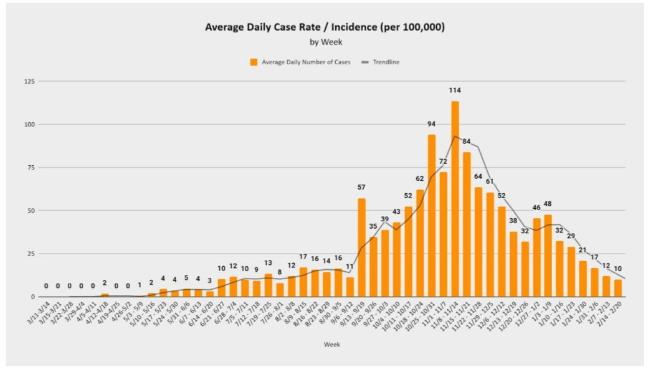
City receives $1.4 million block grant to eliminate blight
(Originally published Feb. 28, 2021.)
The city of Fort Atkinson announced Thursday that it is the recipient of just over $1.4 million awarded through a Community Development Block Grant (CDBG). The grant is facilitated through the State of Wisconsin Department of Administration Division of Energy, Housing, and Community Resources and was awarded for the purpose of eliminating blight within the city.
“With these funds, the City will take deliberate steps toward elimination of blight in acknowledgement of future development opportunities, which are a core component of a vibrant and welcoming economy,” a press released from City Manager Rebecca Houseman-LeMire and City Engineer Andy Selle states.
Within the release, a correspondence from the Department of Administration was cited, stating: “The US Department of Housing and Urban Development (HUD) provides federal funding to states through the Community Development Block Grant (CDBG) program. Wisconsin uses this federal funding to provide affordable housing, suitable living environments, and expand economic opportunities for persons with low and moderate incomes.”
“With this statement in mind,” the release continues, “the City has functioned in close collaboration with members of the community to acquire properties, much of which encompass the former Loeb-Lorman Recycling Center.” The former center has addresses on Lorman, Hake and Oak streets.
“These locations are positioned to support future developments in alignment with the City’s vision for projects that facilitate sustainable growth,” according to the release.
“This award presents an incredible opportunity for the City to eliminate blight and support the redevelopment of these properties. (City Council) President (Mason) Becker and the City Council had the long-range vision to understand the importance of purchasing these properties, and City staff has done an excellent job in implementing that vision,” Houseman-LeMire wrote in the release.
The city is eager to utilize these funds and additional details will be issued by the office of the City Engineer as they become available, the release noted.
City approves borrowing for dump truck, street repair
(Originally published March 3, 2021.)
By Kim McDarison
The Fort Atkinson City Council in two separate actions Tuesday approved a two-year loan in an amount not to exceed $235,000 to purchase a dump truck, and a 10-year loan in an amount not to exceed $675,000 for street improvements, with those monies focusing largely on Industrial and Summit drives.
Dump truck
City Clerk and Finance Director Michelle Ebbert reminded council of a meeting in February at which time she was given authorization by council to solicit banks for loan opportunities relating to the purchase of a tandem axle dump truck with a straight plow and sander.
Following that authorization, she said, she inquired about loan opportunities with three local banks, including Badger Bank, Johnson Bank and Premier Bank, and through the Board of Commissions of Public Lands/State Trust Fund Loan.
Ebbert further noted that the amount of the loan initially considered was $200,000. Since February, she said, she had become aware that quotes for the equipment requested by the city’s public works department were coming in higher than initially anticipated. A loan therefore was being sought in an amount not to exceed $235,000, she said.
Newly promoted Department of Public Works Superintendent Tom Williamson, who formerly served the city as the assistant superintendent of that department, noted that the truck requested by the department comes with a “bare bones” price tag of $110,000. Attachments such as the plow and a salt box come at an additional cost of approximately $100,000. A control system for the truck will also be required, he said. Williamson said he was experiencing some delays in receiving quotes from the truck vender, so he could not yet provide a complete cost estimate for the truck and equipment, but, he said, he was envisioning something in the neighborhood of $225,000.
Ebbert said when she initially inquired with the lending institutions, she was looking at a loan for the public works capital equipment acquisition of $200,000, and Premier Bank provided terms offering the lowest interest rate at 1.05% for the two-year contract.
She had since engaged in further discussions with Premier Bank and was able to report, she said, that would the city require a loan adjustment up to $235,000, Premier Bank would offer the same loan terms.
Ebbert said once a more accurate quote was received from the truck vendor, she would return to council for its approval before pursuing the loan in the required amount.
Street Improvements
Ebbert noted that council in February also gave its authorization for city staff to explore loan options for street improvements within the city’s industrial parks.
In February, Ebbert reminded the council that in March, the city had been approved to receive funding through a state Department of Transportation (DOT) administered program to help pay for a multi-road project within two of the city’s industrial parks.
Those monies would come through the Multimodal Local Supplement (MLS) program, which, according to a letter from the DOT, is a one-time funding initiative offering up to $75 million for multimodal local system transportation projects that have demonstrated an impact on the local government’s economy.
The program reimburses a percentage of funds used to improve qualifying local transportation infrastructure projects.
In March, the city was approved to receive $388,000 from the program, which represents 48% of the total cost of the city’s approved road improvement project.
In February, City Engineer Andy Selle explained that to remain eligible to receive the grant funding, the full project must be completed within the next six years.
To that end, city staff explored a second loan in an amount not to exceed $675,000. The same three banks — Badger, Johnson and Premier — and the state-sponsored trust fund, were again asked to submit funding plans, with each providing interest rates for a 10-year loan. Again, Ebbert and Selle said, Premier Bank offered the lowest interest rate of 1.55%.
The loan comes without penalty should the city opt for early payoff, Ebbert added.
Selle noted that a bidding process finalizing costs associated with the street improvement project would begin and he would return to council with those numbers for its approval.

File photo/Kim McDarison.
Police: Threat to local business unfounded
(Originally published March 3, 2021.)
Information released today by the the Fort Atkinson Police Department states the following:
On March 3, 2021, the Fort Atkinson Police Department received a complaint of a threat to a business located within the City of Fort Atkinson.
Officers from the Fort Atkinson Police Department, Jefferson County Sheriff’s Department, UW-Whitewater PD, Fire, EMS and others responded and assisted.
A suspect was taken into custody a short distance from the scene. Upon investigation, the threat was not substantiated. There is no immediate danger to the public in connection with this incident, however, the incident remains under investigation at this time.
New at municipal building: Meet City Manager Rebecca Houseman LeMire
(Originally published March 4, 20212.)
By Kim McDarison
Seated behind her desk in the Fort Atkinson Municipal Building, neatly organized with tablets containing handwritten notes, newly hired City Manager Rebecca Houseman LeMire is ready to begin her job.
She’s a notetaker, she said. And she likes maps.
On Monday, day six into her new role, LeMire said she is excited to learn about Fort Atkinson, its residents, staff and projects. Her time thus far has been spent getting up to speed and familiarizing herself with maps of the city. Several hold prominence on her office walls.
LeMire, whose middle name is Houseman — she legally changed her maiden name to her middle name, she said — described her pathway to municipal leadership as untraditional. However, she added, it was a road that provided her with experience that she believes will prove invaluable as she works with the Fort Atkinson City Council and municipal staff to achieve the city’s goals and complete identified projects.
She has come up through a local administrative process wearing many hats, she said.
Growing up in Janesville
LeMire grew up in Janesville and is a 2000 graduate of Craig High School. The oldest of four children, she moved with her family from the Milwaukee area to Janesville when she was one year old so her father could begin a job as a plant manager with Parker Pen.
Today, she added, her parents continue to live in Janesville and both are retired. Her mother, Kathryn, enjoyed a career as the director of curriculum and instruction within the Clinton School District and today works part time with Edgewood College in Madison as an editor of dissertations, working with students seeking their doctoral degrees in education administration.
Her father, John, is a deacon in the Catholic Church, serving at St. Patrick’s in Janesville in that role for more than 15 years.
LeMire credits her parents with influencing her life decisions, saying, “They also were highly influential in my decision to continue my education after college.”
Choosing a career path
Like many college freshmen, LeMire said, upon entering the University of Wisconsin-Madison, she was unsure of her career plans.
At UW-Madison, she recalled, “I was a little lost; it was a big school.”
She decided to transfer to UW-Whitewater, beginning classes in her sophomore year, and that’s where she was introduced to the public policy and administration program.
“I liked political science and business,” LeMire said, adding that she saw the program as a combination of the two.
An internship in local government was included as part of the program, and she found herself working in 2004 with Steve Sheiffer, a 21-year veteran as city manager in Janesville. He retired in 2008.
“I learned so much,” and “Steve encouraged me to go to graduate school,” LeMire said.
Opportunity presented itself when LeMire learned that Northern Illinois University (NIU) was waiving tuition for anybody in the master’s of public administration program with a local internship. She began classes in 2004.
While working on her master’s degree, she continued as an intern in Janesville for another two years.
It was during these educational years that she found and forged her commitment to public administration.
“I’ve always been attracted to public service,” LeMire said. “In high school, I was the president of the student council and I was involved with the honor society, clubs and sports. I have a community-oriented perspective.”
As an intern in the Janesville City Hall, she said, she found her passion.
“I really enjoyed it and saw it as a great way to serve the community and have a successful career, and make a difference,” LeMire said.
Forging a career
LeMire graduated from NIU in 2006 and several months later began working for the International Code Consultants and Inspection Inc. (ICCI) in Illinois, where she performed work as a zoning administrator, working with several small municipalities contracting with the company, and performed some human resources functions.
“I did it for just under a year. I saw the job as not a good fit,” LeMire said, adding, “I didn’t like working for many municipalities, all of them together. It was very complicated and I couldn’t focus on one community and see that I made a difference.”
Around that time, she said, her parents noticed an advertisement: the City of Beloit was looking for a community planner. LeMire was hired for the job in 2007, staying in that role until 2010.
“I enjoyed that role. I could see the results of the work I did,” LeMire said, noting that as a city planner, she could begin a project, seeing it as a “blank piece of land,” and then, after reviewing the proposed development and making sure it met with applicable codes, she could make suggestions about the development, helping it achieve the “right fit” for the character of the community.
While she enjoyed that position, she said, in December of 2010, the city’s longtime clerk was retiring, and she expressed an interest in the job.
“The city took a chance on me,” LeMire said.
She described her educational background as strong in city administration, but she had no practical experience as a clerk.
With what she described as “great support from the staff” behind her, “I learned,” she said.
She served as Beloit’s city clerk between 2010 and 2015.
“At the time, election laws and rules were changing very quickly, and we had a census. It was a great time to learn that job, and it prepared me for being a city manager,” she said.
“I wanted that, but I didn’t take the conventional path,” she said, adding, that the path she did take gave her varying experiences, all of which today strengthen her as a city manager.
“By the time I walked in the door in Darien in 2015, I was very prepared to lead that community to see success,” she said, adding that while serving in Darien, she wore many hats.
“My title was administrator/clerk/treasurer, but I was also the zoning administrator, the planner and human resources director.”
In addition, while the city did have an outside IT company to consult, she was also the IT director.
LeMire continued in her administrative role in Darien for six years.
Wearing the many hats brought invaluable administrative experience, she said. It prepared her to be an effective leader in an organization the size of Fort Atkinson, she added.
Comparing the two cities, Darien has a population of about 1,600, while Fort Atkinson’s exceeds 12,000.
Looking at the difference in budgets, Darien in 2020 had a general fund of about $2 million. Fort Atkinson’s was $16 million.
Comparing the size of staffs, Darien had five full-time employees. Fort Atkinson has 82.
Fort’s new city manager
LeMire started in her new role as city manager in Fort Atkinson on Feb. 22.
Sitting behind her desk on day six, she said, her new job is exciting. She has been spending her time meeting staff and learning about the city’s projects.
“Having a professional staff here is great. I have been meeting everyone, and I have not met everyone yet, but so far, everyone is wonderful and it will be wonderful to work with them,” she said.
Among city projects in the works, she cited the Lorman-Loeb metal-recycling rehabilitation site; the expansion of the fire station; the wastewater plant upgrades, which she noted, would be a two-year project; and addressing the city’s housing shortage.
As a first step toward that initiative, she cited work under way to have land owned by the city that currently is located in the Town of Koshkonong annexed into the city. It is early in the process, she said, but that will be the next step.
Ultimately, the goal is to market the land — which the city has owned for about two years — for housing development.
“The city understands the significance of the housing shortage here in Fort Atkinson and this is one way we can assist,” she said.
“I can’t say enough about the people here,” LeMire said. “I have been meeting one-on-one with the department heads and touring the facilities to understand how everybody works together. We are working on basic themes for the future.
“I look at all this stuff as opportunities.”
She praised the quality of the work done by her predecessor, Matt Trebatoski, but said she also thinks there can be an advantage at looking at projects with a fresh set of eyes.
Trebatoski left his position as city manager in Fort Atkinson last year to become city administrator/treasurer in Oconomowoc. He was placed in the role as acting city manager in 2014, following the departure of City Manager Evelyn Johnson.
Looking forward, LeMire said, her background, especially her experience as a planner, will be beneficial.
“It will be useful in the understanding of land use and planning, especially when you are looking at maps all day,” she said.
LeMire attended her first city council meeting as Fort Atkinson City Manager on Tuesday, March 2.
Prior to the meeting, she said, she had met council members during the interview process.
LeMire said she is eager to work with this council, “because they don’t micromanage the operations of the city. They provide direction, policies and goals, and we implement those things. That’s the role of the staff here.
“Our job is to make sure that what we are doing is in line with the goals,” she said.
“I’m looking forward to understanding more about what the council sees as the priorities for Fort Atkinson.”
LeMire said she and her family, including her three children, ages 6, 5 and 2, and her husband, Jim, who is the principal at Edison Middle School, Janesville, plan to move to Fort Atkinson as soon as they find a place.
She acknowledged that she was getting a firsthand look at the housing shortage as she and her family worked to make the transition.
About Fort Atkinson, she said, “I have been incredibly impressed with the generosity of spirit here. With everyone I’ve talked to … everyone has just been so kind and helpful. It is such a welcoming environment and I have no hesitancy to move here. I am looking forward to it.”
LeMire described herself as a lover of dogs, particularly greyhounds, although the family currently does not have pets.
She enjoys cycling, walking, hiking and being outside with nature.
“I love to go to the parks with the kids. They are very excited for the aquatic center,” she said, adding that she is looking forward to meeting members of the community.
People likely will find her on the bike trail and in the community’s parks.
“Anywhere where there is playground equipment, that’s where you’ll find me,” she said.

Seated behind her new desk at the Fort Atkinson Municipal Building, newly installed City Manager Rebecca Houseman LeMire said she is eager to work with the council and city staff, and meet members of the community. She began in her new role Feb. 22. Kim McDarison photo.
Vern Zech is a Fort native on a social media mission
(Originally published March 7, 2021.)
By Kim McDarison
If you follow social media in Fort Atkinson, you likely know the name Vern Zech.
The “admin” of two Facebook pages — “Fort Atkinson Wi.: Taking a Stroll Down Memory Lane Then And Now” and “Jefferson County Obituaries” — Zech’s posts reach some 9,200 and 4,800 group members, respectively.
While Zech creates posts and monitors his pages, he said, his group members through the years have become engaged readers and active posters themselves. Creating active pages is a feat much valued by the Fort Atkinson community, as evidenced each day as people flock to the pages for a variety of Fort Atkinson-specific bits of information.
Area journalists also mine his sites for information. Zech said he is aware of that, and he has sent news tips to several, some of whom write stories based on them.
While many in town know the name, the man himself is somewhat elusive. Health concerns are a contributing factor, and although Zech said he enjoys providing the pages as a service to the community, he also considers himself something of a loner.
A Fort Atkinson native, Zech said: “I love Fort Atkinson. It’s a good place.”
He credits the community’s rhythm and style to its people.
“They are ‘get-along’ people. You can sit down in a bar and start a three-hour conversation and the people here will help you out,” Zech said.
And he continues that cadence.
‘Beaver,’ ‘Dennis the Menace,’ and ‘Huck Finn’
Born in the mid-1950s on St. Patrick’s Day, Zech was the fourth of 10 children growing up in a 1-1/2 story, three-bedroom home on Monroe Street. His father was a truck driver and his mother, a homemaker, he said. His paternal grandfather also resided with the family.
Those were the days of television shows like “Leave it to Beaver,” which aired from 1957 to 1963.
“I idolized ‘Beaver’ and ‘Dennis the Menace,’” Zech said, defining the TV characters as his childhood heroes.
While the household was crowded — “You had all these people all around all the time, so we had to get along,” Zech said — he described his formative years in Fort Atkinson as warm and enjoyable.
As a trucker, his dad was away most weekdays, and Zech spent his time doing errands with his mother. She didn’t have a driver’s license, he recalled, and the family often would walk to the grocery store as a group.
Leisure time during his boyhood was spent on his bicycle, riding around town, or playing with other children in his neighborhood.
“Back then, everybody’s parents took care of other parents’ kids. You listened and were respectful; It was a more respectful time,” Zech said.
He also learned to enjoy the outdoors, describing a love of fishing.
“The (Rock) river was two blocks away. I did the ‘Huck Finn’ thing, with a stick, and a line and a hook,” he recalled. “I’d use a nut for a bobber, and if you dug a hole on the riverbank, you’d find worms. Everything was right there.”
Zech attended Fort Atkinson High School through his sophomore year, after which he joined Job Corps, a voluntary program administered by the United States Department of Labor that offers free education and vocational training to young men and women ages 16-24. He could learn at his own pace there, he said, and he earned his GED and became certified in building maintenance.
A very varied career
While continuing to live at home with his family, Zech embarked upon a multifaceted career path.
Opportunities just came his way, he said.
“Somehow, someway, society and information comes to me. It all comes from ‘him,’” he said, pointing upward, and he noted he is happy and grateful, but “sometimes, it’s stressful.”
Among his earliest jobs, Zech said, was working 2-1/2 years as a custodian at the University of Wisconsin-Whitewater, and then he served as a bartender at the Gaslight Lounge, located where Fat Boyz Bar and Grill is today.
While working at the bar, Zech said, he fixed a pinball machine for a vender. In turn, the vendor offered him a job.
While employed by the vending company, Zech said, he helped assemble foosball tables for area tournaments and attended what he called “pinball school” in Wisconsin Rapids. That was a several-week seminar program through which he learned about tabletop game machines.
“Video games were just starting to come out; it was about 1977,” Zech said.
He left vending machine work in the early 1980s, looking for a job with less travel.
He found it working with Larsen Canning Company in Fort Atkinson, where he maintained and operated harvesting equipment for such crops as spinach, lima beans and corn. He worked within the fields of local farms in several counties around Fort Atkinson, he said.
Zech worked seasonally with Larsen for about four years, he said. During the off season, he worked recovering pool tables and refurbishing antique furniture.
He also worked for a while installing banking equipment like safes, vaults, safety deposit boxes and ATMs. That was during the 1980s, he added.
As times changed, Zech said, temporary employment agencies arrived into the area, and he signed up with one. The agency placed him for a day with a vendor in Cambridge to wire lamps, and while he was there, he was offered a job with Cambridge Village Forge, a company that made decorative items through blacksmithing.
The job was not the best fit for him, Zech said, and three months later, he found himself back in Whitewater, working as a maintenance man in an assisted-living facility catering to adults with intellectual disabilities.
While in that role, Zech said, residents of the facility often followed him around and he’d let them help with small jobs. The activity gained some notice and he was invited to help with prevocational training, he said.
At the time, the facility had eight residents.
“I enjoyed it. It was fun and I helped a lot of people out,” Zech said. “It was rewarding.”
Zech worked at the assisted-living facility for four years, but in time, he said, he began to feel “burned out.”
Soon after, he said, he was diagnosed with health issues that were affecting his heart and lungs. That was in 2000 after he experienced a lack of energy. He currently is receiving benefits through disability.
For much of his life, Zech said, he continued to live at home with his parents.
His father died in the early 1990s and his mother died in 2003.
“When Dad was alive, I helped Mom take care of him, and after he died, I stayed and helped take care of Mom,” he said.
Zech moved to his Fort Atkinson apartment in 2006.
Keeping Fort informed
Zech said that while he always has enjoyed learning, he is not always comfortable around large groups of people.
“I like to go to events, but I like doing things on my own,” he said.
His living room is his information center. A large-screen TV serves as a sort of command module as he combs through informational sites. Scanner chatter occasionally breaks the silence of the room.
He enjoys looking through online information and finding items he believes will keep Fort Atkinson residents informed, he said.
He began his Memory Lane Facebook page in 2012, and counts among his motivations a lifelong love of Fort Atkinson, along with the influence of friends.
One such friend lived across the street from the former high school. The building underwent renovations in the 1990s and the friend took pictures when an original portion on the building’s north side was razed. Today, the building houses Fort Atkinson Middle School.
Revisiting the old photos, Zech recalled, was fun.
“There is a part of that that just gives people a good feeling,” he said.
He also was inspired by a second friend who related her feelings about time she spent with her father just before he died. They found solace and bonding as they shared common memories, Zech said.
He said he began looking for Fort Atkinson-related photos and memorabilia online, visiting such sites as the Wisconsin Historical Society. He soon developed a list of sites where he could find informational tidbits about Fort Atkinson.
“I know people are smiling and laughing, and maybe even crying, when they look at these old photos,” he said.
When Zech began developing the Memory Lane page, he said, he also attended events. He has a DSLR camera and a camcorder.
He initially purchased his camera to take pictures of birds visiting his birdfeeder.
“Having the events, that fills in, and does a good service for the community,” he said.
Over time, he adjusted his schedule, continuing to attend as his health allowed.
“If I was feeling good, I’d go,” he said.
In the beginning, Zech spent up to eight hours each day looking for things to post. Now, with so many people aware of his page, information comes to him.
“I get emails and sometimes calls. There is so much there I can’t even read it all,” he said.
Some topics bring what he calls “hotspots,” and result in a flurry of activity on his page. He said hotspots are usually created by news of criminality or disasters.
On the obituary page, which was started last year, Zech subscribes to a routine: After checking various sites, every night at 6 p.m. he posts the day’s obituaries.
Zech said he plans to maintain his Facebook pages for as long as he’s able.
“I’ll live in Fort, unless I win the lottery, and then I might be a snowbird of some kind. I will do this until I can’t do it,” he said.
But Zech added that he sometimes wonders: “Who will put my obituary up?”

Seated in his living room, Vern Zech talks about his roots in Fort Atkinson and his devotion to keeping the community informed. Zech is the administrator of two active community-based Facebook pages: “Fort Atkinson Wi.: Taking a Stroll Down Memory Lane Then And Now” and “Jefferson County Obituaries.” Zech’s posts reach some 9,200 and 4,800 group members, respectively. Kim McDarison photo.
Four city council candidates are vying for three seats in April
(Originally published March 8, 2021.)
By Kim McDarison
A General Spring Election will be held April 6. City of Fort Atkinson residents will find four candidates vying for three open Fort Atkinson City Council seats on the general election ballot. They are incumbents Mason Becker and Chris Scherer, and challengers Megan Hartwick and Jordan Lamb.
Fort Atkinson Online recently asked each of the candidates to provide some biographical information and fill out a short questionnaire. Candidates were asked to keep their responses to a total of between 700 and 1,000 words.
The electorate also will have an opportunity to see these candidates respond to questions in a videotaped Candidates Forum which will be presented online on this and other area websites.
The Fort Atkinson Area Chamber of Commerce, the American Association of University Women, and Fort Atkinson Online LLC are sponsoring this event.
A release date for the video will be announced soon.
Candidates’ responses to questionnaires, presented in alphabetical order, follow.
Mason Becker
Age: 40
Address: 1511 Stacy Ln., Fort Atkinson, WI 53538
Occupation: Restauranteur
Number of years resided in city/district: 37
Education: BA – Speech Communications, UW-Whitewater, graduated 2002
Civic and other organizational memberships: Fort Atkinson Lions Club (current 2nd Vice President), Bethany Lutheran Church (served on church council for six years). Family business is a member of the Fort Atkinson Area Chamber of Commerce.
Political experience: Serving in third term on the Fort Atkinson City Council. Ran for State Assembly in 2020. Served on Residence Hall Association executive board at UW-Whitewater.
Questions:
What are your reasons for seeking this position? I believe that right now Fort Atkinson is at a critical crossroads, and many opportunities lie ahead. Having now served on the city council for three terms, I am fortunate to have been able to work with many good people on our council, in our city government, and in our community. Matt Trebatoski was an excellent city manager for six years, and we now have a new and highly talented city manager serving in Rebecca Houseman Lemire. I want to be part of ensuring that our new city manager is as much of a success as possible. While we have made strong progress in areas like revitalizing our downtown, fixing roads, and ensuring financial stability, there is still more work to be done. Furthermore, with Councilman Paul Kotz deciding not to seek re-election, if I am returned to the council by the voters, I will be the most tenured member of the council. I want to utilize my civic experience to help ensure a smooth transition over the next two years.
What are the most pressing issues facing the position you seek? The pressing issues are obvious. We need more residential development in Fort Atkinson, both single family and multi-family home construction, suited for people at all rungs of the income ladder. People want to live here, but many don’t have options for housing right now. We are fortunate to now own 75 acres of land on Banker Road. I want to work with our city manager and others to ensure the proper development of that area. Our other areas of opportunity are in economic development. I want major retail back in Fort Atkinson as much as anyone. We need to be more proactive in that regard, while also making sure our smaller local retailers continue to be supported. I also want to make sure that our industrial sector continues to grow and succeed. We are blessed to have employers who have been here for many decades providing quality jobs, and we can’t take that for granted. Some of them are ready to expand, and our city government should do what we can to help make their plans for growth a success.
What unique perspective do you bring? First of all, I’m bringing experience to the council. I am fortunate that I was able to work with many other council members from diverse perspectives and backgrounds over the past six years. I think I bring an even handed approach, and bring a view that while we need continued strategic growth in the city, we also need to make sure any future growth is sustainable. Also, as someone who keeps an eye on politics at the state level, I understand the impact that decisions made by the state government have had on Fort Atkinson, and I stay engaged with groups like the League of Municipalities. Finally, as a husband and father, I am continually interested in making sure our city is attractive and viable for families. Children are our future, and I want to make sure Fort Atkinson continues to be an excellent place to raise a family.
Any additional comments? Let’s all continue telling the story of Fort Atkinson. We have been given a gift by those who came before us: a city that is in a stable position financially, and poised for future growth. We have so many quality amenities that make our city attractive: great schools, great parks, an excellent bike trail, the Rock River, and an abundance of quality businesses. We also have residents who are really engaged with what we have happening: outside observers have been very impressed! We should make the most of these assets and continue building on them, while marketing our city’s unique identity and history.
Megan Hartwick
Age: 36
Address: 1225 Orchard Lane
Occupation: Executive Director, United Way of Jefferson & North Walworth Counties
Number of years resided in city/district: 27
Education: FAHS graduate & Bachelor of Business Administration from UW-Whitewater
Civic and other organizational memberships:
Member, Police & Fire Commission
Founder, FA Summer Charity Concert Series
Member, Fort Atkinson Area Chamber of Commerce
Volunteer, Fort Atkinson Generals
Nonprofit Representative, Jefferson County Planning Commission
Political experience: If elected, it would be my first political position held.
Questions:
What are your reasons for seeking this position? I grew up in Fort Atkinson and this community gave me so much and was a huge part in shaping who I am and the opportunities I was given. Now that I am back living here and am raising my family here, I want to be as big a part of helping this community grow and thrive as I can. I want to give back to a community and a city of people who gave so much to me.
I am also seeking a seat on the council because I think I would be a strong councilmember. Through my years as a nonprofit director in our county, I have developed very strong relationships with many nonprofits, community groups, city department heads, churches, local businesses, and community leaders. I would love to build on those relationships as part of the council to create stronger public/private partnerships to advance much-needed initiatives.
I also think it is crucial, with a new City Manager, that we have the strongest City Council possible, with councilmembers who are actively involved in and connected throughout our community, have leadership experience, and who can provide thoughtful and effective feedback working with the City Manager. I also believe it’s incredibly important that we have at least one female voice on our council, and I would love to be that voice.
I want to serve because I am someone who wants to do the work. Because I deeply love this community and the people who call it home.
What are the most pressing issues facing the position you seek? Economic Development – There is an obvious need to focus on attracting new businesses to Fort Atkinson, but I think it’s also important for the city to evaluate what can be done to provide additional support and incentives to local individuals who might have an interest in starting a new business here.
Road Repairs – Our system for road repairs & updates doesn’t seem to be working as well as residents would like it to be. I think it’s important for the city to better explain to residents the high-level of work involved with road repairs (new pipes, gutters, drainage, etc.) and that with over 70 miles of roads in our community, there simply aren’t enough funds to address all needs within a year. I think it’s important to highlight how the wheel tax has helped and what plans are moving forward to tackle some much-needed road updates.
Net New Growth – In order to help increase funding made available to our city, we must focus on new net growth, which will also help address the major affordable housing issue we have in Fort Atkinson (and across Jefferson County). Everyone in our communities is impacted by the lack of available and affordable housing. I appreciate the city is already beginning to address this issue.
Taxes: Our city must be able to explain to residents, accurately and clearly, the reasons for their property tax increases. While citizens must also recognize the need for tax revenue to help our city address issues like road repairs, net new growth, etc. it’s also important that Fort Atkinson be inline with surrounding community’s property tax rates. And when we’re not, we need to make it very clear to our citizens what they are getting that is resulting in those higher rates.
Engagement – We have a major need for increased connection and engagement amongst our citizens and our community leaders. To keep moving Fort Atkinson forward, and to keep us a healthy, thriving, welcoming community, our residents and leaders must work together more effectively. It is the responsibility of our local government to serve our people, and it is the responsibility of our people to be engaged with their local government.
What unique perspective do you bring? I believe I am an extremely well-rounded candidate in that I would bring to the council the voice and perspective of a Fort Atkinson native, a mother, a nonprofit director, and a community volunteer. My perspective also includes that of someone who lived in a large metropolitan area for six years and who chose to return to Fort Atkinson to build a career and start a family. I am also very in-tune with the needs of individuals and families within our communities who are struggling, and I want to bring that voice to the council to help city leadership step in where it is appropriate and effective for them to do so. I am approachable and would focus much of my work on bringing folks together across our community.
Any additional comments? I have already spent a good portion of my life dedicated to helping, improving, and supporting this city. Since I returned to Fort Atkinson in 2012, I have made community involvement a non-negotiable part of my life – it is something that is simply engrained in who I am. Over the past handful of years, I have founded the FA Summer Charity Concerts, spoken at Chamber events, participated in FAHS portfolio reviews, presented to high schoolers on volunteerism, volunteered at Fort Atkinson Middle School career fairs, spoken at the Seniors Top 10 dinner, and often meet with and speak to local service clubs in Fort Atkinson. I am also on the review committee for the BASE Kid of the Year award and on the nominating committee for the Fort Atkinson Community Foundation’s Making Fort Special award.
So please know that I will continue to serve Fort Atkinson whether elected to the council or not, but I certainly hope for the opportunity to serve our city in that capacity.
Jordan Lamb
Age: 25
Address: 107 Clarence St., Fort Atkinson
Occupation: Co-Owner of Fort Atkinson Small Engine LLC.
Number of years resided in city/district: 22 years
Education: Graduate of Fort Atkinson High School, 2013
Civic and other organizational memberships:
Fort Atkinson Chamber of Commerce member
National Federation of Independent Business (NFIB) Member
Political experience:
I have no official experience in politics however I have always followed local politics and how it affects our community as a homeowner and small business owner.
Questions:
What are your reasons for seeking this position? I believe my hardworking attitude, along with my drive to get things accomplished, will help drive this city to a better future. Fort Atkinson city taxpayers need a true voice on the council that will be completely transparent about anything going on. It is not a foreign action for me to be working side-by-side with government officials to make things happen. My prior experience working with the DOT provided great insight into project deadlines, budgets, and community impact/expectations. I would like to work with city committees to try to boost the local downtown businesses and increase the tourists our city can attract.
What are the most pressing issues facing the position you seek? The most important issues facing the city council position that I am seeking include multiple items. The first is road repairs and improvement of the road structures based on current tax rates and the imposed wheel tax. Road repairs are needed in both the commercial areas and the residential areas with a better plan needing to be created. The next item is taxes and tax usage since this is a topic discussed by most homeowners. Tax on the current homeowners needs to be evaluated further to determine how this can best support the community with reasonable spending and city purchases. The final item that is facing the most pressing issues in the position I am seeking is small business needs in the community. It is evident that many small businesses need additional support to create roots in this great community for generations to come.
What unique perspective do you bring? I am a 2nd generation business owner here in Fort Atkinson with the previous generation focusing on upholstery. I decided to take the hard work and dedication that was demonstrated to me and start a small engine repair shop. As a small business owner, I can understand the demand in the community and the benefits, gratitude, and frustrations of this role in the community. Limitations of available land and appropriate buildings is evident in this community and real estate purchased by the city for growth and development could be more accessible to small business owners.
Considering my age, I am a great voice for the younger generation who are just beginning the adventure of becoming homeowners, business owners, and starting new families. I would consider myself a fresh perspective to the city council and can represent an alternative generation with big dreams and life goals. The unique perspective that I bring would be asking why and gathering more information to support the solutions that would benefit the city of Fort Atkinson. The goal as a city council member is to support the best interest of this community by listening and attempting to find common ground between financial implications and resident’s expectations. As a city council member, I would want to be fully educated on the subject being discussed and understand the long-term implications before a decision is voted on.
Any additional comments? I want to thank you, the residents of this amazing city, for taking time to follow me on this journey as I run for city council during this important election.
If you have any questions, please feel free to reach out directly. Since many have wanted to connect and ask questions about my views, I have created a Facebook page that is regularly monitored. I would like to invite each of you to join me on this journey and I encourage you to add Jordan Lamb for Fort Atkinson City Council on Facebook to follow the progress of my campaign.
I have campaign yard signs available for pickup or drop-off, please contact me if you are interested in supporting me!
Chris Scherer
Age: 29
Address: 15 S. 6th St, Fort Atkinson WI 53538
Occupation: Self Employed – Business Consulting
Number of years resided in city/district: 26 years
Education: Fort Atkinson High School, UW-Whitewater
Civic and other organizational memberships/Involvement:
- Chamber of Commerce Member (13 Years)
- Board President Elect
- Ambassador President
- Rhythm on the River Committee
- Economic Development Committee
- Speaker’s Bureau
- Senior Exit Interviews
- Fort Atkinson Summer Charity Concert Series
- High School Athletics Coach
- Madison College Continuing Education Instructor
Political/Community Planning experience:
- 2 Years (1 Term) as Fort Atkinson City Council Member
- Facilitated a Community Driven Envisioning Session
- Fort Atkinson Placemaking Initiative
- Jefferson County Strategic Planning
- Planning Commission Member
- Airport Committee Member
- Historical Society Board Member
- Cable Television Committee
- License Committee Appointee
- Finance Committee Appointee
Questions:
What are your reasons for seeking this position? There are many times throughout my life where I understood that my goals would have been harder to achieve without the support and guidance of many people within the Fort Atkinson community. My desire to remain civically involved, specifically as a city council member, is to continue making a positive impact on the community that I was raised, educated, and live in.
I am choosing to run for a second term as a council member because I want to see projects that have started through to the end and to responsibly start new improvements to our city. While having only been an elected official for one term, my experience and involvement with the current decision making in the city extends back to 2015 during the Community Placemaking Initiative. Six years later I am still actively involved and a part of facilitating the planning and envisioning that occurred then.
What are the most pressing issues facing the position you seek?As a council member the majority of my conversations with community members in the past two years have involved housing, road conditions, and economic development. All of these projects require long term planning, which is something we addressed as a council while approving our latest comprehensive plan. With this plan we are able to make decisions affecting the future of Fort Atkinson while keeping residents’ input and goals in mind.
The lack of available and affordable housing in Fort Atkinson is a very pressing issue at the moment. This directly affects the City’s growth and tax base, workforce development, and the ability to accommodate people at different stages in their lives. I am proud to say that I voted in favor of a land acquisition on the northwest side of the city that will allow our community to attract development and begin addressing the housing shortage we are facing. I supported this land purchase and other land purchases because it allows us to be deliberate in how we expand our city while keeping the financial impact to a minimum or non-existent to our tax payers.
The implementation of a wheel fee in addition to an in depth analysis of our current road infrastructure has allowed us to start making incremental improvements in replacing and maintaining over 70 miles of roadways within Fort Atkinson. Through the diligent work of our City Staff, our council was able to review and approve major road improvements for Riverside Drive, the Robert Street bridge, and Whitewater Avenue. We also completed the Rockwell Avenue project during my first term as a council member.
Economic development can be difficult to measure and often is not something that occurs with extensive visibility. What I believe is that Fort Atkinson is a community that provides a great opportunity for appropriate development. We have a good mixture of land and existing space for new tenants to consider and for existing businesses to grow. The reality is our proximity to major shopping centers like Janesville and Madison may preclude us from attracting certain businesses. While we may wish for certain businesses to choose to locate in Fort Atkinson, I think our time and taxpayer dollars would be better spent developing an economic development position within the city that can focus on attracting businesses that would be the best fit for our community. This position can then be the official entity for inquiries and continue to work with the City Council, City Manager, and Chamber of Commerce to facilitate economic generation from within and outside the community.
What unique perspective do you bring? My perspective is unique compared to other candidates because of my community involvement and representation of Fort Atkinson extending back past 2015. As a small business owner and entrepreneur I have actively pursued opportunities that prepare me with a different approach to supporting and attracting other small businesses and making a lasting impact on communities. I was asked to be a young professional representative during the Community Placemaking Initiative in 2015, which I gladly accepted and was able to bring ideas to from a statewide young professional’s organization. I also was one of the Fort Atkinson community representatives during a countywide strategic planning session, which provided me with the long term insight of how Jefferson County hopes to grow and support its communities. I sat on the Planning Commission prior to any elected terms and learned from my fellow commissioners how to evaluate projects in a manner that was beneficial to all parties involved and when to decline something that did not meet our city’s standards.
I also understand patience; improvements we want within Fort Atkinson take time. When I ran for a council seat, albeit unsuccessfully, back in 2016 the fire department was the defining topic of that election. Here we are five years later in the process of completing a remodel and updating of our fire department. We have also managed to add ambulatory services to our department’s emergency responses. As much as I want to see the completion of projects that have been five years in the making I also want to responsibly start new projects that enhance our city, knowing that they may not be completed during my term as an elected official.
Any additional comments? I want to continue working on behalf of the residents of Fort Atkinson. This does not mean that every decision I make as part of a governing body will be a popular one, it does not mean that I will have an answer to every question, but it does mean that I am going to do as much research and preparation as is necessary to make sure that our community benefits. I am fortunate to serve as an elected official for a community that has always had one common goal: to see the successful growth of Fort Atkinson while maintaining its unique identity.
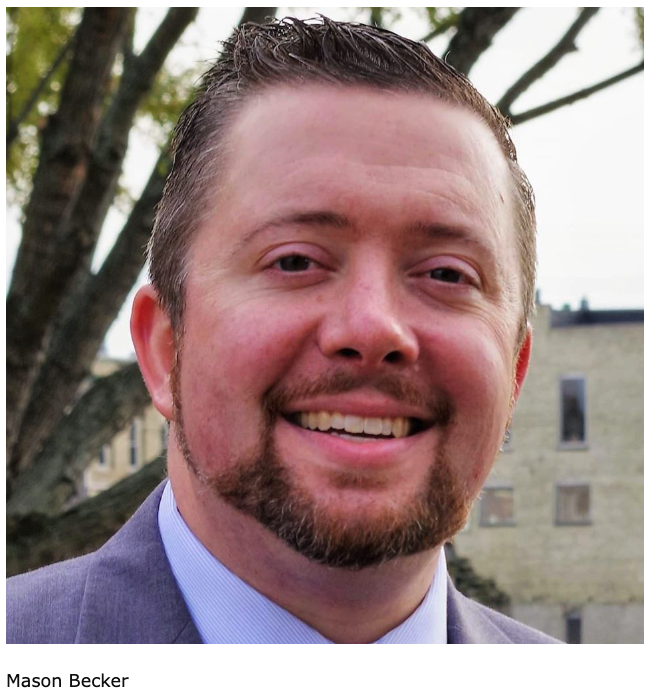



City: recently received block grant funds to be used for water main replacement
(Originally published March 9, 2021.)
Editor’s note: Information received today by email from the City of Fort Atkinson states the following:
On March 2, 2021 the City of Fort Atkinson was announced as a recipient of Community Development Block Grant for CLOSE Public Facilities (CDBG-CL-PF) funds by the State of Wisconsin Department of Administration in the amount of $362,244.46. With these funds, the City will design and construct improvements on water main infrastructure that will play a crucial role in health and wellness of the City.
The City will use these funds to complete approximately $1.4 million in water main replacement, or about 5,900 lineal feet of water main in the residential neighborhood between Janesville Avenue, Rockwell Avenue, South Main Street, and Hilltop Trail West. The project will benefit approximately 795 residents, and the City anticipates construction in 2022 and 2023.
City officials are optimistic that time and resources dedicated to the development of a plan for improvement to water main infrastructure will have a long-term positive impact on quality of life for residents while upholding the mission of the Community Development Block Grant program. A thoughtfully planned and carefully executed network of water mains is a fundamental building block for the long-term support of a growing population.
“This project would not be possible without the support of the City Council, the hard work of City staff, and the cooperation of ThriveED and Jefferson County in assigning $309,895.00 of the County’s CDBG-Close funds to the City of Fort Atkinson,” said City Manager LeMire.
The City is eager to utilize these funds and additional details will be issued by the office of the City Engineer as they become available. Question or comment can be directed to (920) 563-7760 Monday through Friday, 8 a.m. to 5 p.m.
School board candidate responds to questionnaire
(Originally published March 12, 2021.)
By Kim McDarison
A General Spring Election will be held April 6. Residents within the School District of Fort Atkinson, including the city of Fort Atkinson, will find one candidate running for a single School District of Fort Atkinson Board of Eduction at-large seat on the general election ballot.
Rhona Buchta described herself recently as a longtime educator and a newcomer to local politics.
The Board of Education is a five-member board. Members serve for three-year terms.
This year, a single seat, held by board member Rachel Snethen, is up for reelection. Buchta is running for the seat unopposed. Snethen earlier announced that she will not be seeking another term.
Fort Atkinson Online recently asked the single candidate to provide some biographical information and fill out a short questionnaire, with instructions to keep responses to a total of between 700 and 1,000 words.
The electorate will have an opportunity to meet Buchta when she appears as a guest on What’s Up? With Michael Clish.
The video-taped YouTube platform show will be released later this month.
Responses from Buchta follow.
Rhona Buchta
Age: 44
Address: 501 Nikki Ln, Fort Atkinson, WI 53538
Occupation: Literature/Language Arts Middle School Teacher
Number of years resided in city/district: 40 years
Education: UW-Whitewater: Major: Education and General Business Minor: Psychology
Civic and other organizational membership:
• St. Joseph School Art Enrichment Committee (10-plus years)
• Diocese of Madison Star360 Advisory/Core Team (3 years)
• St. Joseph Student Council Co-Mentor (3 Years)
Political experience: None
Questions:
What are your reasons for seeking this position? I have been part of the Fort Atkinson committee for many years. I have grown up here and have raised and continue to raise my own children in this community. In seeking this position, I hope to contribute ideas and a voice as a strong advocate for the progression of all schools. I fully understand how important it is to support our teachers and staff and believe it is important to collaborate as a community in support of our youth’s education.
What are the most pressing issues facing the position you seek? I believe a pressing issue that my position faces is continuing to build our community’s trust and continuing to find ways to move the district further to support both the mental health and academics of our youth and families.
What unique perspective do you bring? I believe that my background and experience as an educator will offer a perspective that understands intimately the roles of both teachers and students. I have a vested interest to give back to my community which has served my family well and want to gain an understanding of how I can serve my community in support of Education.
Any additional comments? None at the time.

K-9 Veterans Day observed; Terry Beck scholarship announced
(Originally published March 12, 2021.)
By Kim McDarison
Seventeen fallen military and working dogs were honored and scholarship fundraising plans were announced during the 7th Annual K-9 Veterans Day Observance.
This year’s videotaped ceremony, sponsored by the Kennel Club of Fort Atkinson, Inc., was released Friday, March 12. K-9 Veterans Day is observed annually statewide on March 13.
The program was presented at the Paul Frank Florine Post 166’s American Legion Dugout earlier this month.
Taking the podium, Kennel Club of Fort Atkinson member Mabel Schumacher noted that programming changes were put in place as a COVID-19 precaution. Under normal circumstances, the ceremonial observance would have been presented before an in-person audience, including working dogs, their handlers and other guests.
Schumacher, who is recognized statewide for spearheading the effort to bring K-9 Veterans Day to Wisconsin, shared the podium with two speakers: Gary Wolfram, U.S. Army veteran and a friend of fallen Vietnam War soldier and Marine scout dog handler Terry Beck, and Richard Miles, American Legion Post 166 sergeant-at-arms and chaplain of the Edwin Frohmader Post 1879 of the Veterans of Foreign Wars and its Auxiliary.
During the ceremony, Schumacher, aided by slides, shared the names of 17 fallen K-9 heroes during 2020 and announced the inception of fundraising efforts to establish the Marine Terry Beck Protective Services Scholarship. Once established, the scholarship will be offered to Fort Atkinson High School seniors and graduates entering the field of protective services.
Honoring K-9 service dogs lost in 2020
In her opening remarks, Schumacher noted that since 2015, when the Wisconsin Legislature proclaimed March 13 as K-9 Veterans Day, the Kennel Club of Fort Atkinson has observed the event annually. Included is a recognition of service dogs that died in the previous year.
To date, she said, the recognitions have included 76 military and law enforcement dogs and one horse that was a member of the University of Wisconsin-Madison mounted patrol.
This year, the names of 17 service dogs were read aloud and their pictures were presented.
Scholarship fundraising to begin
In addition, Schumacher announced the intention of the Kennel Club of Fort Atkinson to begin fundraising efforts to create the Marine Terry Beck Protective Services Scholarship in memory of the Fort Atkinson High School alumnus who lost his life in Vietnam.
A goal of $15,000 has been set, Schumacher said. The amount is the minimum required by the Fort Atkinson Community Foundation to initiate a recurring scholarship, she said.
With $15,000 as a base amount, a scholarship of $750 will be yielded annually. If fundraising efforts produce a larger base, a larger scholarship will be yielded, she added.
A deadline for fundraising is Sept. 1.
Contributions made toward the scholarship will be held by the Kennel Club of Fort Atkinson in a segregated account and an acknowledgment note will be sent to donors, Schumacher said.
If the fundraising goal of $15,000 is not met by the Sept. 1 deadline, donations will be returned to donors, she added.
More information about the scholarship and the fundraising efforts can be found on the kennel club’s website: www.KCFAdogs.org. A brochure also is available.
Lance Corporal Terrence “Terry” Beck, a young K-9 handler and Fort Atkinson resident, lost his life in Vietnam, along with his German shepherd dog, “Seato,” in 1967.
Beck and his story served as a source of inspiration, Schumacher noted, in 2016, when the Kennel Club of Fort Atkinson embarked upon a project to create a K-9 Veterans Memorial in McCoy Park. The memorial was dedicated in 2017.
During her comments, Schumacher noted that the Fort High School scholarship coordinator said that between two and five Fort Atkinson High School graduates typically enter the field of protective services annually.
“This scholarship will satisfy an unfilled niche for these students in addition to acknowledging Terry Beck’s passion to protect and serve his country and its citizens,” Schumacher later remarked in a press release shared with the media.
‘Jeff and I liked Terry right off’
Beck was born in Iowa in 1949. In 1963, he arrived in Fort Atkinson with his family. His father, Wesley, known as “Duke,” was the president of a local bank.
Upon arriving in Wisconsin, Beck was enrolled in Northwestern Military Academy in Lake Geneva. He transferred to Fort Atkinson High School where he attended during his junior and senior years.
During his presentation, Wolfram said that he and another Fort Atkinson youth, Jeff Blomsness, met Beck in high school right after he left the military academy.
“Jeff and I liked Terry right off,” Wolfram said, and the three became very close friends.
He described the then-17-year-old Beck as “very military-minded.”
As a youth, Beck played drums in a band called “The Sessions,” Wolfram recalled.
Describing the times, Wolfram said: “It was 1967, and everyone was getting drafted or signed up. Terry wanted to do his part and signed up for the Marines.”
At 17, according to Wolfram, Beck went through both basic and dog-handling training. When he turned 18, he was sent to Vietnam.
“I got letters for about three months. He told me about some of his experiences,” Wolfram said.
“Then I was notified he was killed in action in Thua Thein (Hue Provence) by a sniper. His dog stayed by him and was killed also,” he said, adding: “Terry was three months into 18.”
A legacy of respect
During his comments, Miles recounted Beck’s actions as representative of the veteran community, saying: “We, the veteran community, would choose to be supportive of a ‘serve and protect’ educational scholarship in the name of Marine Lance Corporal Terrence ‘Terry’ Beck.”
He noted that many war dog handlers, as they transition back into civilian life, find careers in law enforcement, and fire and rescue programs.
“These positions require education and special skills,” he said.
Beck is buried in St. Joseph Catholic Cemetery in Fort Atkinson.
“A scholarship in his name, along with the War Dog Monument with his likeness, will help to ensure that this special and long respected part of our country’s history will never be forgotten,” Miles continued.
He encouraged people to visit the monument in McCoy Park.
History of K-9 Veterans Day
The K-9 Veterans Day movement began nationally in Florida by then-retired military dog handler Joseph White. Florida was the first state to establish the date recognizing K-9 Veterans Day, doing so in 2009, which was also the year in which White died. Several states have since passed resolutions establishing the March 13 recognition.
White selected March 13 for the day of recognition because that date in 1942 is the official birthday of the U.S. Army K-9 Corps.
About the kennel club
The Kennel Club of Fort Atkinson, Inc., is an all-volunteer nonprofit organization providing training classes, community service and responsible dog ownership education.
Those wishing to contribute to the newly forming scholarship may do so by sending a check made payable to “KCFA — Terry Beck Scholarship. Checks can be mailed to Terry Beck Scholarship, c/o Mabel Schumacher, Treasurer, 848 Messmer St., Fort Atkinson, Wis., 53538.
A video presentation of the 7th Annual K-9 Veterans Day Observance is here.
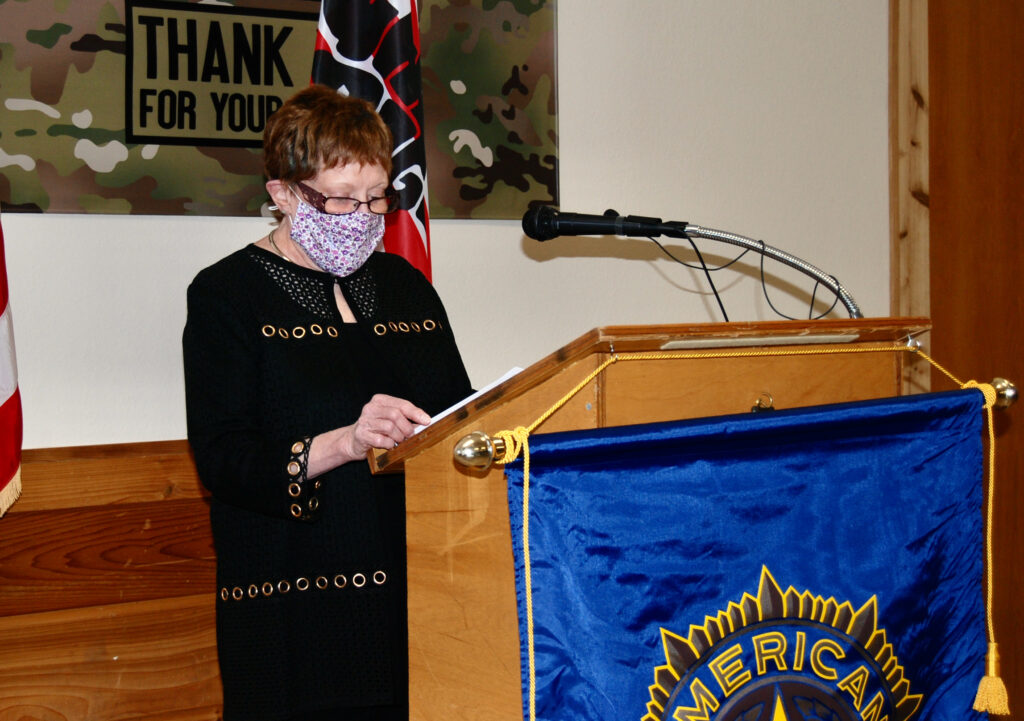
Kennel Club of Fort Atkinson member and Master of Ceremonies Mabel Schumacher takes the podium during a videotaping of this year’s 7th Annual K-9 Veterans Day observance. The program was presented at the Paul Frank Florine Post 166’s American Legion Dugout earlier this month. A video of the event was released Friday. K-9 Veterans Day is observed statewide on March 13.
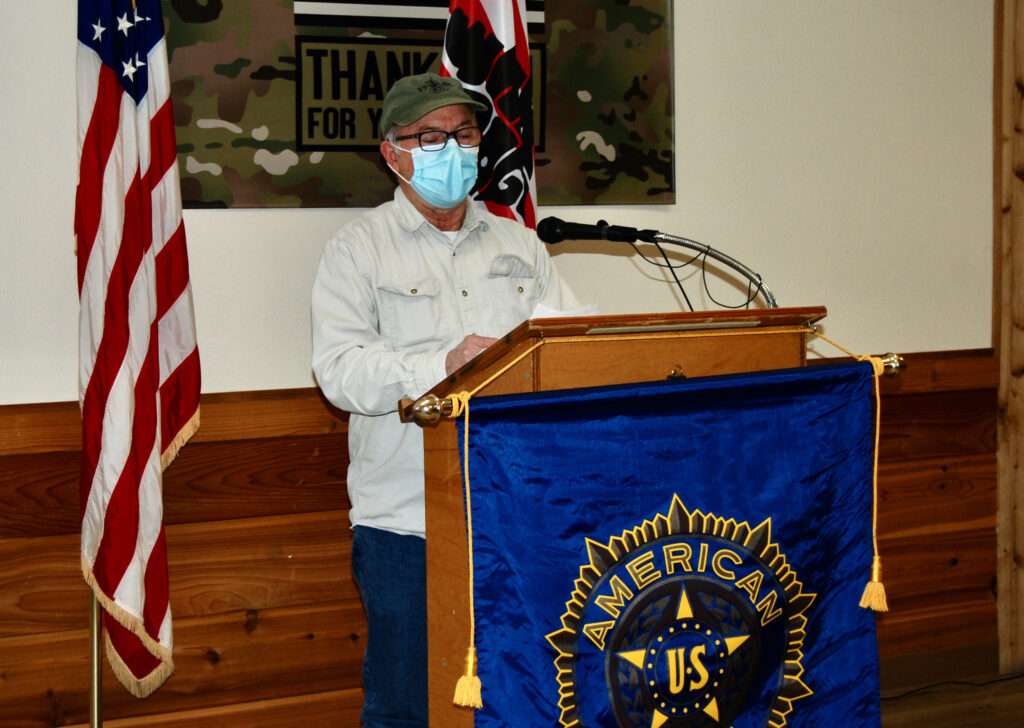
Program speaker and high school friend of fallen Marine and K-9 handler Terry Beck, Gary Wolfram, talks about Beck and the letters he sent home. Beck was killed in Vietnam, along with his dog, “Seato,” by sniper fire in 1967.
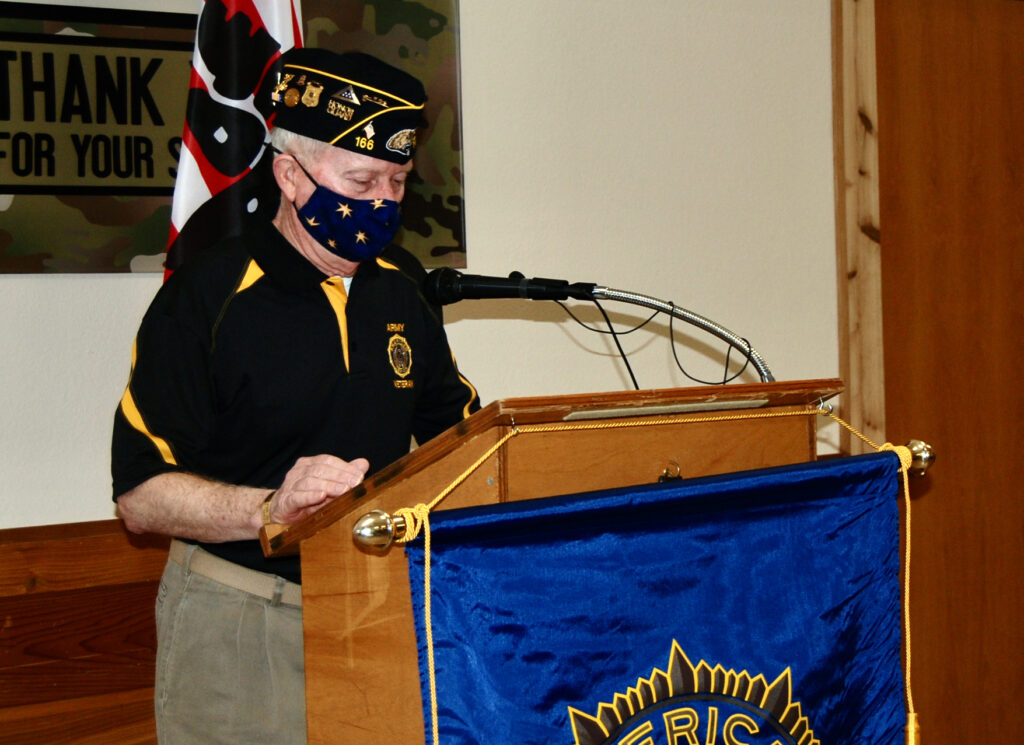
Richard Miles, American Legion Post 166 sergeant-at-arms and chaplain of the Edwin Frohmader Post 1879 of the Veterans of Foreign Wars and its Auxiliary, talks about the tradition and importance of Military dogs and handlers throughout history. Many, after returning to civilian life, find work in protective services, he said.
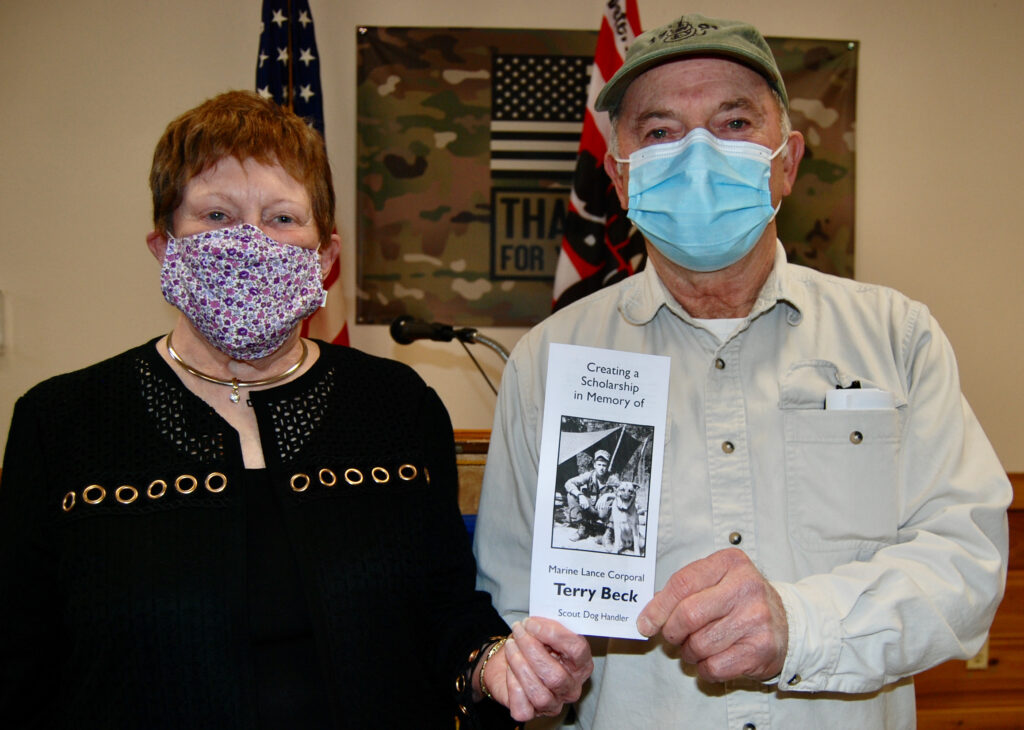
Schumacher and Wolfram hold a brochure explaining the formation of the Marine Terry Beck Protective Services Scholarship. The Kennel Club of Fort Atkinson, working with the Fort Atkinson Community Foundation, is embarking upon fundraising efforts to earn $15,000. The money will be used to create a reoccurring $750 scholarship made available annually to Fort Atkinson High School seniors and graduates entering the field of protective services.

Marine Lance Corporal Terrence “Terry” Daniel Beck. July 13, 1949 – Dec. 20, 1967.
Above, Kim McDarison photos.

Terry Beck.
Photo supplied.
T
Special needs: Pathways program teaches community involvement, independent living
(Originally published March 17, 2021.)
By Kim McDarison
Four School District of Fort Atkinson students, a special education teacher and an aide gathered recently at Blackhawk Fitness Center in Fort Atkinson. The students were there to learn how to make healthy life choices and feel comfortable as they embrace new experiences outside of a traditional educational setting.
The community-based instruction, called the 18-21 Pathways Program, is part of a special needs initiative which aims to prepare young adults for independent living after they graduate from high school.
The program provides opportunities for adults, ages 18-21, with special needs to develop skills that will enhance their quality of life after they finish a classroom-based high school curriculum, community-based programming special education teacher Rachael Breyer said.
It’s an opportunity that will help provide a more social, fulfilling and independent life for a population that is at risk for isolation and less opportunity to be independent and social after high school graduation, she added.
This is Breyer’s second year teaching the program. A special needs aide, Isabella Miles, joined the program about one year ago.
This year, Breyer said, the program is serving eight students, who, adhering to COVID-19 precautions, have been meeting virtually and in small groups. COVID-19 has altered programming delivery because many of the venues from within both the business and nonprofit communities that were providing opportunities for students before the pandemic, have been closed or are functioning differently. Still, Breyer said, the program is growing. She anticipates there will be as many as 14 students participating during the next school year.
While some forms of delivery since last March have been different, the objectives have stayed the same, she said.
A main goal is to help students get a job, she added.
Why community-based?
Fort Atkinson High School Transition Coordinator and special education teacher Mark Peterson said he developed the district’s community-based program about five or six years ago for the purpose of working with students within the district with IEPs (individualized education programs) to help them realize their full potential while transitioning from the traditional high school setting and forming independence.
“Special education within the high school is not a new program, but in 2012, some of the laws changed with a focus on having high schools provide more programming that was geared toward transitioning from the high school experience to life after high school,” Peterson said.
“Within the state, there was a big push toward community-based programming to get people out into the community and working. The 18-21 program was established with those goals in mind,” he said.
There are currently two programs within the district for students ages 18 to 21, Peterson said, noting that students are placed in one of the two programs based on needs.
“Both of the programs are community-based. Rachael’s students are able to participate on a high-functioning level. The other program is for students who have demonstrated that they have more needs. They can be part of the 18-21 program, but there is more focus on learning in the classroom. They may be learning similar things as Rachael’s students, but in a more controlled setting,” Peterson said, adding that although programming remains separate, all students in the 18-21 program will have some community-based experiences.
Breyer also teaches students with special needs within the traditional four-year high school setting.
Her schedule provides a morning slot where she teaches ID (intellectual disabilities) English and science.
“I’m the case manager of those students that are going into her classroom. My students are also going into Rachael’s community-based program,” Peterson said.
By working closely with Peterson and teaching in the classroom, Breyer said, she gets an opportunity to meet students who may one day transition into her community-based program.
“At the high school, there are 10 or 11 special education teachers. Between us there is an estimated 20 students that are seniors this year. About six will be going into community-based instruction,” Peterson said, adding that moving into community-based instruction for students ages 18-21 is not a requirement, and not all graduating seniors with IEPs choose to move into the program. Some students and families choose other options because they find the programs don’t fit the needs of their students, he said.
How does it work?
Peterson said the community-based program is designed to get the students out into the community.
“We are working to replicate what things they could be doing as an adult after they leave here (high school). One of my goals for the 18-21 program is to give students a lot of different opportunities,” he said.
Back at the fitness center, Breyer and Miles oversee activities as their students use fitness equipment. For some of her students, Breyer said, visiting the fitness center as part of the program might be the first time they have been inside a fitness center. New experiences in new places at first can seem scary.
“After they go in as a group, it isn’t so scary anymore,” she said.
Getting students acclimated to the environment and on a schedule develops helpful skills they can use in other settings, she said.
For the students, the workout was the first item scheduled in a full day of activities. Each day differs, depending on the schedules and needs of the students.
“It’s just like a normal school day, but instead of being at school, we will be out in the community,” Breyer said, adding that programming is meant to be fun.
Breyer meets with three or four of her eight students each day, so the mix of students also changes, she said. Some students have jobs, so they go to work while others participate in community-based activities, like cooking or shopping, where they learn to plan a meal and budget their money.
“So we could be meeting everyday at a different location. For instance, today, we came here to the fitness center and then we will go to Crossroads House (an instructional building within the district’s Crossroads Alternative Education Program). We cook there.
“A lot of what they (students) learn has to do with small things, like learning to operate appliances, and how to follow a recipe, and they learn time management. They need to establish schedules and a routine, and have an expectation that something is holding them accountable to every day tasks,” Breyer said.
She continued: “Today, after we leave here, we will go to the grocery store and shop for what we need to cook. We will talk about our budget, we will cook, and then we will go to the senior center in town where the students volunteer.”
“Our goal is socialization,” Miles said.
“The goal is to give students the best ability to live independently. And to develop vocational skills or prepare them for post-secondary experiences where they can meet their full potential,” Breyer added.
The program works closely with the Wisconsin Department of Workforce Development’s Division of Vocational Rehabilitation (DVR), an employment program that assists people with disabilities, Breyer said.
For students who qualify, they help find job experiences, pay wages, and provide a job coach.
Students working through DVR are offered opportunities in six-week blocks. Students can try the job out and decide if they like it, or they can try something else, Breyer said.
Among students at the fitness center, two have jobs. Kevin Dietz-Patterson, 20, works at Pick ‘n Save and Nikita McAllister, 20, works at Goodwill. Both stores are located in Fort Atkinson.
“My goal is to stay working there, and little by little, gain more hours when I feel comfortable,” McAllister said.
Dietz-Patterson has worked at an area gas station, but told Breyer he would prefer a different kind of work. He likes his job at Pick ’n Save, she said.
Students also participate in a car wash business facilitated through the high school.
Said Breyer: “The money we raise at our car wash is used to support the Friday Social Hour. So we take that money and go for a social occasion like the Madison Zoo, or a restaurant, or we go bowling or to a movie.”
COVID-19 changed social hour into a virtual activity, but, Breyer said, in-person events in small groups have recently been approved by the district to resume.
Students participating in the car wash earn minimum wage. High school staff members pay $25 to get the full detailing, which, Breyer said, involves a cleaning of the vehicle, inside and out, right down to the students using Q-tips in the vents.
The students operate the car wash on Monday and Tuesday mornings, cleaning one car each day by appointment. The student business operates from a heated maintenance shop at the high school.
“This is a very popular program and we are booked out until April. That’s when we will do our first police car,” Breyer said.
When she is not with her students, Breyer said she spends her time calling area businesses asking about job opportunities for her students. The opportunities she finds for students are typically volunteer.
One of her students, Rueben Guttenberg, 20, recently began volunteering with Anytime Fitness in Fort Atkinson, Breyer said.
Students also volunteer at Touched By A Paw, a cat shelter in Whitewater.
Finding volunteer experiences for her students has been made more challenging by the COVID-19 pandemic. It also changed program delivery, Breyer said.
Virtual programming began last March. This year, the district has resumed in-person instruction, and like other district programs, in-person opportunities came back gradually, she said.
When the pandemic started, Breyer said, “we were virtual. We would do things like virtually cook at home. So we would Google Meet and cook. The students would do it with a parent next to them. We would keep a daily living skills log and the students would each have three or four chores.”
Rewarding work
Both Breyer and Miles described their work as rewarding.
The work is multifaceted, Breyer said, noting that she is involved with setting schedules for her students, and she and Miles provide transportation, often picking their students up, bringing them to their various activities, and dropping them off at the end of the day. Currently all of their students live in Fort Atkinson.
Said Breyer: “The work is very rewarding and it is different everyday. For me, to see the kids grow each day and see progress … I always have a smile on my face working with the group I have. It’s especially rewarding, after graduating from college and getting a job where I can work at my true passion, that is a reward in itself.”
Breyer is a 2019 University of Wisconsin-Whitewater graduate, holding a bachelor’s degree in special education with an emphasis in intellectual disabilities.
Breyer said she is rewarded to see her students out in the community, adding that often after high school, special needs adults do not come out into the community and spend more time at home.
Said Miles: “It’s very rewarding. I love working with these kids and building relationships with them and seeing them grow. I’m still new at it, and I’m happy to see them graduate and how far they’ve come.”
A graduate of Craig High School in Janesville, Miles worked within the school’s paraprofessional program before joining the team at Fort Atkinson.
“I’m also so happy to have our full program. We are not just providing a job coach, but we are setting up the job experience through different vocational experiences and providing other life experiences throughout the week.
“I look forward to experiencing what the kids do,” she said.
Peterson, too, talked about the success of the program, citing several community partners like the Fireside Dinner Theatre, Pick ’n Save, Opportunities, Inc., BASE and others.
He is currently working with Madison Area Technical College in Fort Atkinson to develop additional opportunities for students, he said.
When he was developing the program, Peterson said, he asked himself: “What is it I want students to be able to do after high school? I wanted to provide some different areas of opportunity and offer experiences so they can do what every other adult can do.
“Fitness, cooking, budgeting, arts and crafts, all of those things were in the mix.”
He is often looking for volunteer and volunteer-to-work experiences for his students.
In the past, he said, his students have volunteered at the Hoard Historical Museum, and washed dishes after club-sponsored events at the Fort Atkinson Club. They have also volunteered at the hospital, bringing patients a newspaper and snacks.
“I’m very proud of this program and very happy with where it’s going,” Peterson said.
Looking ahead, he said, a program goal is to work more closely with the business community, sharing the message: “These students can work. They have good skills that they can share with the community.”
Those interested in learning more about the program can contact Peterson by email: petersonm@fortschools.org.

School District of Fort Atkinson 18-21 Pathways Program participant Cameron Wittek, 20, enjoys morning exercise time with his classmates. The students met recently at Blackhawk Fitness Center in Fort Atkinson as part of their community-based curriculum.

Kevin Dietz-Patterson, from left, and Rueben Guttenberg, both 20, use the treadmills at Blackhawk Fitness Center in Fort Atkinson. The students are part of the community-based 18-21 Pathways Program available to special needs students through Fort Atkinson High School.
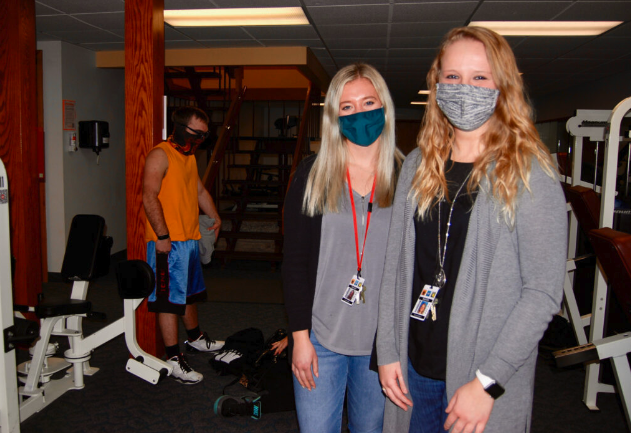
Kevin Dietz-Patterson gathers his belongings as students in the 18-21 Pathways Program prepare to leave the fitness center and continue with other activities scheduled as part of their community-based educational day. Students received daily instruction from program aide Isabella Miles (center) and special education teacher Rachael Breyer. Kim McDarison photos.
Rock County Sheriff’s Office searching for man, 66, missing in Storrs Lake Park
(Originally published March 18, 2021.)
Prior to the report, family members had been searching for Kevin for approximately two hours. Accordingly to family, Kevin left his residence in Milton at approximately 9:30 a.m. to hike the trails in Storrs Lake Park, which he does most days. Kevin had not returned home as of 11:30 a.m., which led family members to start searching for him.
During the ensuing hours, Sheriff’s Office personnel were assisted by individuals from Milton Fire Department, Wisconsin Department of Natural Resources, Milton Police Department, Winnebago County Sheriff’s Office K9 Unit, Wisconsin K9 SOS, and WAMSTAR in searching the greater Storrs Lake area. Search efforts included grid searching on foot, vehicle patrols, neighborhood canvas, ATVs, UTVs, drones with thermal capabilities, and several canines. The search suspended in the late evening hours and will resume tomorrow morning.
Kevin is 5’6” tall, 170 lbs., with brown hair and blue eyes. He has a white mustache and goatee. He was wearing a blue jacket with khaki pants. Kevin left home with his two yellow Labrador retrievers. His vehicle is still parked at Storrs Lake Park. If you have any information as to Kevin’s whereabouts, please contact 608-757-2244.

Kevin J. Doyle
Warm Belly Farm employs high-tech farming, offers year-round berry picking
(Originally published March 21, 2021.)
By Kim McDarison
Editor’s note: Francis Wisniewski, owner of Warm Belly Farm, said he wanted to say ‘thank you’ to Vern Zech for posting information about his new Fort Atkinson-based, high-tech agricultural business on his online community page, so he invited Zech to pick some farm-fresh, hydroponically-grown strawberries. Zech, who visited the farm on Friday, invited Fort Atkinson Online to come along and share in the experience. We were delighted!
Francis Wisniewski, a Chicago trader, said he never envisioned himself as a farmer. Today, he owns Warm Belly Farm, a 90-acre facility located in Oakland on County Highway C, where he offers pick-your-own strawberries in a heated greenhouse by appointment year-round.
One thing led to another, Wisniewski said, and before he knew it, a hobby farm vacation spot had become his permanent home and his new business.
“I just kept staying longer and longer,” Wisniewski said, adding that he sold his home in Chicago two years ago.
As for the farming part, he said, it all started with three trees.
From three trees to farming
Wisniewski purchased the farm in 2016 from a cabinetmaker, he said, adding that several large pole buildings were already on the property.
Still, he said, he had no intention of farming. Instead, his attention was drawn to three apple trees he inherited that seemed to be in distress.
“I thought I might resurrect them,” he said. He signed up for a class at the University of Wisconsin-Madison. The subject: establishing an orchard.
Describing the class, Wisiewski said: “It intrigued me so much I planted 300 trees about three months later. I was still thinking it was a hobby, and then I built the greenhouse and planted more trees.”
Today the farm has 1,800 apple trees of several varieties and in various stages of maturity.
He began planting the trees in 2017, and built the greenhouse in 2018, he said, “because I thought a farm should have a greenhouse.”
Driven by an interest in hydroponic gardening, his first greenhouse experiment began using a hydroponic system to grow lettuce and tomatoes, he said.
As a trader and investor, he said, he has invested in aquaponics, an agricultural science devoted to raising fish in tanks combined with hydroponics, which, in turn, is a science revolving around raising plants without soil, for the last 10 years. Those investments never did very well, Wisniewski said, but, he added, he was intrigued by the science, and he’s a risk taker.
“It was just always a hobby. I would have said, ‘I’m not a farmer,’ but the future of farming seems to be in science and vertical farms and I’m interested in that. So now I’m doing my own,” he added.
Wisniewski said after he built his 4,000-square-foot greenhouse, the following year, he went to Amsterdam, in the Netherlands, on a hydroponic fact-finding mission.
In Amsterdam, he said, he learned about the system he uses today to grow strawberries. Upon his return, he changed his greenhouse crop from lettuce and tomatoes to strawberries, because he thought the crop would be “more interesting and profitable.”
Today, some 1,200 strawberry plants grow in rows of raised tables in a peat moss and coco coir mixture. Coco coir is a medium made of ground up coconut shells, Wisniewski said. The mixture is particularly good at holding moisture. For sustenance, the plants are fed a nutrient through a water delivery system.
The greenhouse is heated, and provides a thriving habituate for strawberry plant growth year-round.
The indoor facility makes it easier to pick. Plants are grown on elevated four-foot-high tables so there is no bending down, which can make conventional picking harder, and the aisles are wide enough to accommodate wheelchairs, Wisniewski said.
The greenhouse is also home to free-roaming bumblebees used to pollinate the plants.
“It’s a common thing to have bees in greenhouses. We get a box of them every six weeks. They have an eight-week lifespan. We have bumblebees which were chosen because they are good at pollinating indoor strawberries and they are not aggressive.
“We also have five hives of honey bees for our apples outside. We have a local beekeeper who takes care of them throughout the year and he collects the honey and processes it. We need the bees to cultivate the apples,” Wisniewski said.
With the greenhouse up and running, Wisniewski said Warm Belly Farm opened to the public, providing pick-your-own-strawberries, last fall.
The opportunity was and continues to be offered by appointment only and is currently booked out for the next month, he said.
“That way, we can make sure there are strawberries available to be picked. We want the experience here to be of a high quality,” he said.
Customers arriving to pick their own strawberries are provided with a five-gallon bucket and a small scissors.
“We encourage people to cut rather than pick because it is easier on the plants,” Wisniewski said, adding: “People quickly get the hang of it.”
The company also is currently selling to an Oconomowoc baker.
“He makes our strawberries into pastries,” Wisniewski said.
All of the farm’s available appointments were booked over the winter, and so far, the farm has been able to sell everything it produces, Wisniewski said. Strawberries cost about $5 a pound or $25 a bucket.
Minor to major leagues
It might have been a humble beginning, but like strawberries, the farm is growing.
“This is warmup stage. It is like we are in the minor leagues and the major leagues start this summer,” Wisniewski said. His plans include expanding the indoor strawberry-picking operation into a 30,000-square-foot greenhouse that is currently under construction, and offering pick-your-own apples.
“We built the larger greenhouse last fall and we had a few plants in it, but this will be the first year that it will be full,” he said. He anticipates making 10,000 strawberry plants available for customers to harvest.
“Every time we did something, we said, ‘OK, what do we do next?’” Wisniewski said. He operates the farm with the help of four employees.
Valerie McGoldrick and Erin Warner share the obligations of farm management, maintaining sustainable farming activities and monitoring plant health. They are aided by production assistant Emily Hebbe and property manager Todd Gladem. Most of the employees were hired within the last 12 months, Wisniewski said.
Together the team has embraced expansion, with plans to continue expanding the apple orchard. The farm will also one-day offer blueberry picking, although those bushes are newly planted and not yet ready to bear fruit, Wisniewski said.
The larger greenhouse will not be heated so picking within that building will only be offered between the months of May and November, he said. Plants within the buildings are annuals.
Plants have been purchased from Canada, and the farm is now working to propagate its own.
“I’ve got an engineering background so I’m interested in the higher tech version of farming. It’s more sustainable and I think it is the next step in farming. It will be how the next 50 years of farming looks,” Winsiewski said, adding, “I consider this farm my legacy. I’m planning to leave it to my kids.”
While he admits his daughters are “city kids,” he said, “lots of sons-in-law take over farms. You never know.
“Hopefully it’s profitable. It’s a risk, but as a trader, I’m a risk taker. I take calculated risks and it seemed like a good risk to take.”
As Wisniewski shared his farming concepts, Vern Zech easily worked his way down the aisles inside the 4,000-square-foot greenhouse. Plump, red strawberries filled his five-gallon bucket in no time.
Wisniewski expressed his happiness in hosting Zech on his farm. It was a way to say “thanks,” he said, noting that over the last year, every time Zech posted on his community Facebook page about the farm, he received appointments made by customers on his website. He even hired one of his employees after Zech made a post, he said.
Zech quietly made his way down the aisles. After his bucket was filled, he was treated to a tour of the farm.
“I had fun,” he said.
This season
Looking ahead to this growing season, Wisniewski said he continues to recommend that people visit his website and make appointments to pick fruit.
Opportunities for picking strawberries and apples are announced through the website and on social media.
While planting fruit-bearing plants, bushes and trees is ongoing, many must mature before they are ready for harvesting. The blueberries are in that process, Wisniewski said.
On the farm, there are currently 1,800 apple trees, 20,000 strawberry plants, 1,000 blueberry bushes and 100 cherry trees.
Among plants that are being considered for the farm is a line of white strawberries that are said to taste like pineapples, Wisniewski said.
At the farm, he said, “it’s all about using technology to create sustainable farming to provide the highest quality products for customers and a high-quality experience for visitors.”
Those interested in learning more or scheduling a strawberry-picking appointment can visit the website: https://warmbellyfarm.com.
For those interested in apple picking, Wisniewski suggests following social media to learn about select apple-picking days that will be made available in the fall of 2021 and 2022. In 2023, the website states, the farm will be “officially opening to apple picking.”
Appointments guarantee berries are available for those who come to pick and keep groups safe while following COVID-19 protocols, Wisniewski added.

Fort Atkinson resident and administrator of a Facebook community page Vern Zech selects a strawberry from a greenhouse at Warm Belly Farm on Friday.

A 4,000-square-foot heated greenhouse offers year-round strawberry picking at Warm Belly Farm in Fort Atkinson. Berry picking is available by appointment.

A bumblebee visits a strawberry plant. Both are residents of the 4,000-square-foot greenhouse on Warm Belly Farm.

Some 1,200 strawberry plants are available for harvesting in the 4,000-square-foot greenhouse. Visitors are invited to make an appointment through the farm’s website.

Farm employees, co-mangers Valerie McGoldrick, from left, Erin Warner, and production assistant Emily Hebbe examine plants in the greenhouse. They check for overall plant health and lack of pests, describing their activities as “quality control.”

Warm Belly Farm owner Francis Wisniewski helps his guest Vern Zech display his bounty of strawberries. Wisniewski hosted Zech as a token of his gratitude for Zech’s interest in his farm expressed on his community Facebook page.

Young plants, including a white variety of strawberries said to taste similar to pineapples, grow in advance of the warm-weather season. Many will fill the new 30,000-square-foot greenhouse which will open by appointment at Warm Belly Farm this season.
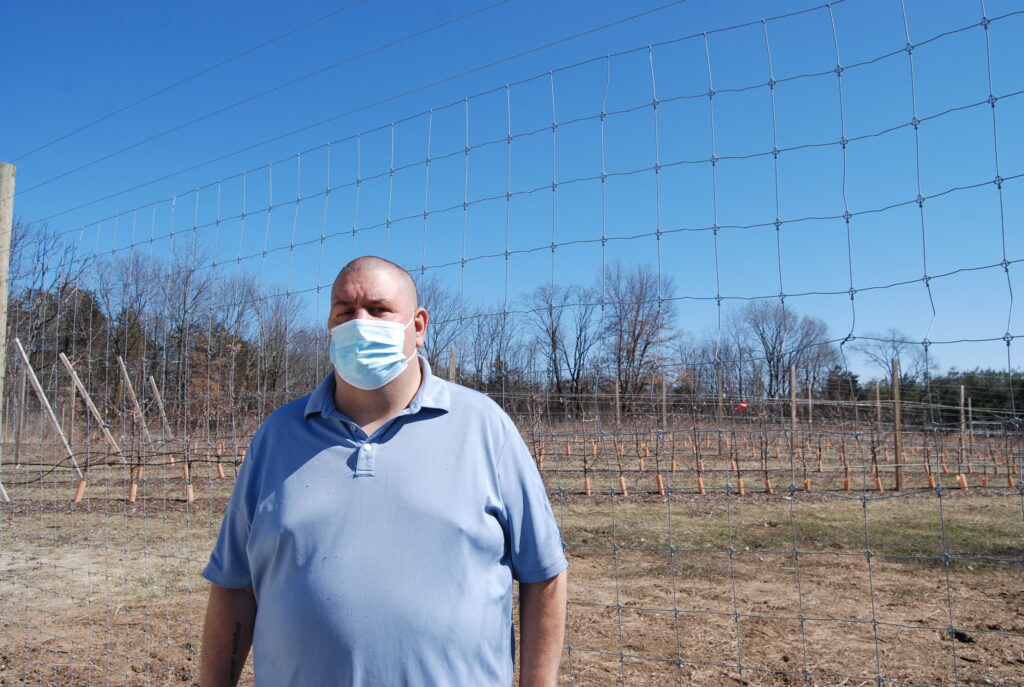
Warm Belly Farm owner Francis Wisniewski stands near a section of his apple orchard.

Warm Belly Farm owner Francis Wisniewski shares his future plans for the farm, including the completion of a 30,000-square-foot hoop-construction greenhouse which will be operational this year.
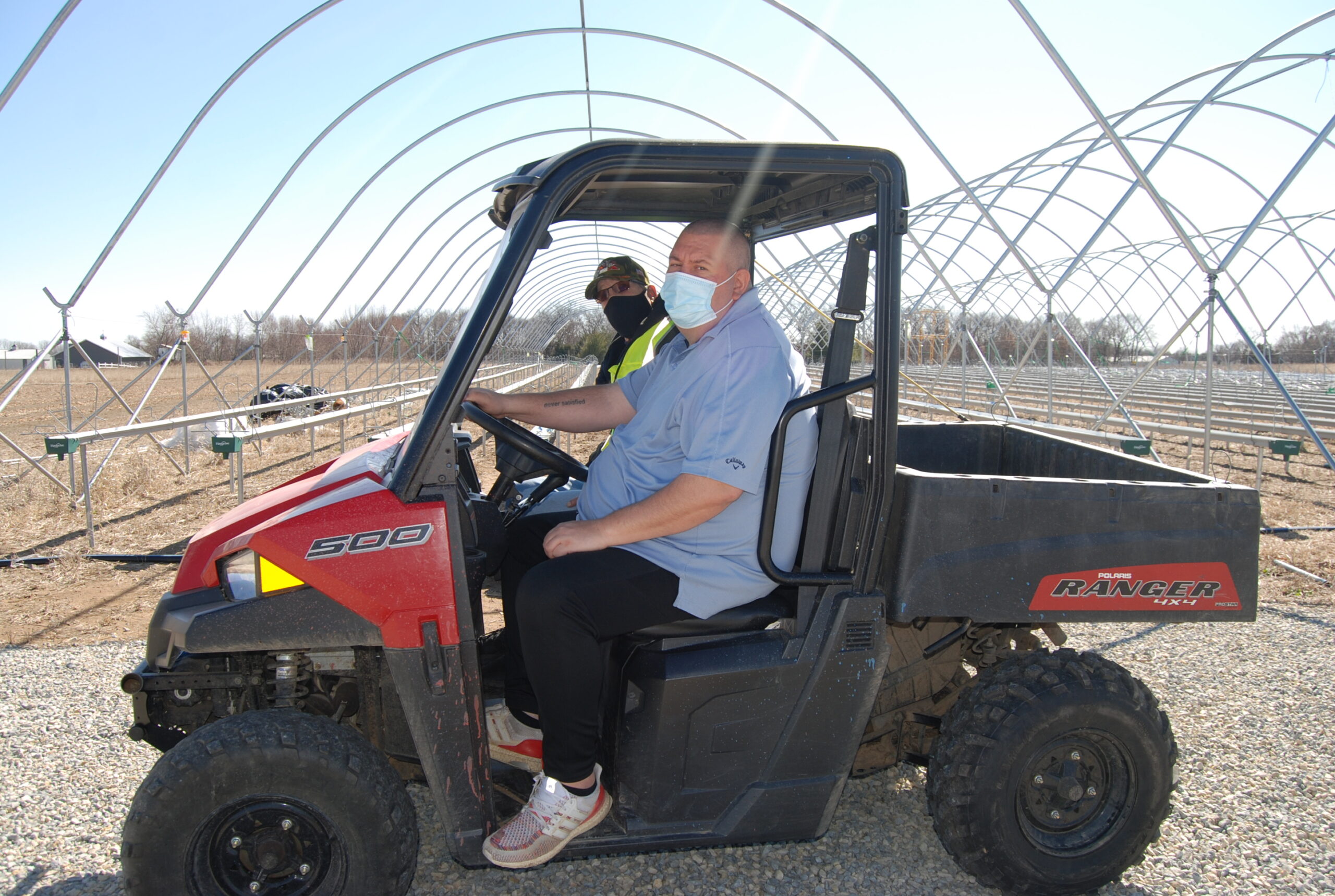
Vern Zech, from left, and Francis Wisniewski share a ride as they tour the newly constructed greenhouse and a portion of the newly planted blueberry bush field at Warm Belly Farm.
Kim McDarison photos.
City accepts $13.3 million bid for Phase II wastewater treatment plant upgrades
(Originally published March 22, 2021.)
By Kim McDarison
The Fort Atkinson City Council approved Tuesday a bid of $13.3 million for the completion of Phase II work on the city’s wastewater treatment plant. The approved bid includes an additional cost of $42,000 for repair work which will be made to the floor in the plant’s primary clarifier.
Council further approved a request made by the engineering firm to authorize the city manager and city engineer to approve change orders independently of council’s approval for work that might be required during Phase II in amounts of up to $10,000, with a cap of $60,000. Once the cap is reached, change orders of any amount would come before council for approval. The request was made to help keep the project on schedule, Wastewater Plant Supervisor Paul Christensen said.
In a separate, but related action, council also approved a $1.1 million construction-related service agreement for work associated with the project.
In a followup interview, Christensen said next steps before construction begins will include the signing of contracts and a pre-construction meeting. He anticipates the project will begin in June and possibly early May, he said.
The Phase II bid
The accepted $13.3 million bid, submitted by Marshfield-based Staab Construction Corporation, was the lowest of three bids received by the city, Christensen said during the council meeting.
The base bid for previously determined Phase II upgrades of $13,343,000 came in below the estimated cost for the work, set by engineers at $15,629,897.50, and represented a $2,287,000 or 14.6% reduction in overall project cost for the city.
The full bid approved Tuesday, including the additional work to the clarifier floor, is set at $13,385,000.
Two other bids, submitted by Fond du Lac-based C. D. Smith Construction and Neenah-based Miron Construction Corporation, came in at $13.6 million and $13.7 million, respectively.
Along with work previously outlined within Phase II upgrades, Christensen said three “alternate items” were included in the bidding documents. If the items were approved by council, he said, the costs to complete them could be added or subtracted from the base bid.
The alternate items included: Alternate 1, an odorous air unit for the influent wet well and screening rooms, coming with an additional cost of $217,000; Alternate 2, repair and grouting made to the floor of the primary clarifier, coming with an additional cost of $42,000; and Alternate 3, using stainless steel for screening equipment, coming with a reduced cost of $60,000.
Christensen said utility staff had reviewed the alternates and recommended the city include the additional cost of $42,000 to repair the primary clarifier floor. Staff was not recommending inclusion of the other two alternates, he said.
He said engineering firm Donohue & Associates had reviewed the bids for conformance and found no errors in the completed bid forms. He further noted that Donohue & Associates Project Engineer Nathan Cassity, who attended the city council meeting on Tuesday, “found the low bidder, Staab Construction Corporation, submitted a responsive bid and is a responsible bidder.”
Revisiting project finances, Christensen said the costs of construction for the wastewater plant’s Phase II upgrades would be paid using a Clean Water Fund loan facilitated through the State of Wisconsin’s Revolving Loan Program.
Last November, the city received notice of an initial loan approval of up to $16 million to finance the project, and the city was approved for loan forgiveness in the amount of $1.75 million.
“Loan forgiveness is a portion of the loan that will not need to be repaid,” Christensen said.
The city also has an available option to use some existing cash from the Wastewater Utility’s reserve and equipment replacement account to pay a portion of the construction and engineering costs, he said.
Phase II $1.1 million construction-related services agreement approved
In a separate action, council approved a construction-related services agreement, which covers auxiliary and other administrative expenses associated with construction-related Phase II project services. The agreement was approved at a cost to the city not to exceed $1,105,515.
In a memo to council, Christensen noted that Donahue & Associates was retained by the city to complete the Utility Facility Plan, the Phase I improvements design and construction-related services agreement, which, he said, are nearly completed, and the Phase II design.
The company was asking council to approve a construction-related services agreement for Phase II work.
He outlined the following Phase II construction work which is anticipated to be completed over the next 27 months, including:
- The replacement of existing raw wastewater grinders with new influent fine screens and wash presses.
- The rehabilitation of the influent wet well.
- The construction of a headworks area to be built over the existing wet well.
- The replacement of two existing influent pumps and the addition of a new fourth pump.
- The rehabilitation of two primary clarifiers.
- The modification of the aerations tanks.
- The replacement of two aeration blowers.
- The rehabilitation of two final clarifiers.
- The construction of a new tertiary filtration facility with chemical conditioning, followed by disc filters.
- Improvements made to the aerobic digesters.
- Improvements made to portions of the HVAC ventilation system within the plant’s Building 10.
Christensen pointed to what he described as a “detailed scope of (construction-related) services,” which includes conformed documents for construction, construction contact execution, pre-construction conference, monthly construction progress meetings, construction contract administration, up to 324 visits to the site and observation of construction, clarification and interpretation of construction documents, change orders, work change directives, cost proposal requests, shop drawing reviews, an evaluation of substitute “or equal” materials and equipment, process application for payment, punch list preparation, review and documentation, startup services which would include vendor-provided training and “O&M” review, and recording of documents and drawings.
Training and manuals will also be provided for the screening and compacting system, the influent pumping system, the secondary treatment system, the tertiary filtration system and the aerobic digestive system.
Looking at costs associated with the Phase II construction-related services agreement (CRS), Christensen said that staff had recently analyzed costs within the first phase of the project for comparison purposes.
The first phase of the project that is nearing completion, Christensen said, cost “just over $1 million,” and its CRS was approved not to exceed 6% of the costs associated with that phase.
He described the first phase of the project as “short” by comparison to work outlined in Phase II, and “much less complicated.”
Looking at other comparisons, he said the “Rockwell Avenue” project was completed at a cost of $4 million and included CRS costs of 6.5% of that contract.
Looking at a project more similar in size to the Phase II wastewater treatment project, he said, in 1991 to 1993, the wastewater treatment plant underwent an upgrade, coming in at a cost of $11.2 million. The project was completed in 730 days and had a CRS that cost the city $1.2 million, representing 11% of the total project cost.
Looking at costs associated with the Phase II upgrades which will soon be under way, he said, the $1.1 million CRS costs represent 8.3% of the construction costs, calculated at $13,385,000. The project is anticipated to take 810 days to complete.
“Utility personnel will assist Donohue & Associates as necessary to control costs. It is not uncommon on a well-run project for CRS costs to be below the ‘not to exceed’ cost,” Christensen wrote in a memo to council.
Some history
Looking at financing, last December, the council approved a three-phased wastewater utility rate increase for the utility’s customers with its first phase effective Jan. 1 of this year. Subsequent rate-increase phases will be put in place in 2022 and 2023. The rates, which are based on flat fees associated with meter sizes, and a usage-based fee, were put in place to help repay the loan for the wastewater plant upgrades.
The facility upgrades were approved by council to meet new protocols put in place by the state in 2019 for removing phosphorous from wastewater. The new protocols must be achieved by June 30, 2023, and the city’s upgrades must be constructed by May of that year.
The loan that is being used by the city to fund the project comes through the Clean Water State Revolving Fund loan. The loan is made available through a partnership with the Wisconsin Department of Natural Resources and the U.S. Environmental Protection Agency and provides low-cost financing for water quality infrastructure projects.

Pictured is a centrate equalization tank at the Fort Atkinson Wastewater Treatment Plant. The tank takes flow (centrate) from the biosolids dewatering system and provides capacity that is pumped back through the plant. The system allows wastewater to be processed more slowly, which, in turn, lessens the impact on the high phosphorus content centrate, Wastewater Plant Supervisor Paul Christensen explained. The improvement was part to the plant’s Phase I upgrades.


Two photos above show the area where new tertiary treatment disc filters will be housed. The improvement will be installed as part of Phase II construction.
Photos by Chris Spangler.
City approves liquor license premise change for Creamery 201
(Originally published March 23, 2021.)
By Kim McDarison
The Fort Atkinson City Council approved on Tuesday, March 16, a change in the alcohol license premise description for Creamery 201, a downtown event venue, to include a private outdoor patio.
The change allows the company, which caters to special events such as weddings, fundraisers, and corporate functions, among others, the ability to serve alcohol to guests within the outdoor patio area.
Previously, the premise, as defined on the license, in which alcohol could be sold, served, consumed, and stored included the 15,000-square-foot indoor venue operated by the company and located on the second floor of the 1920s-built, five-story building.
Creamery 201 owner and event planner Katie Stahl requested the change in premise description, City Clerk Michelle Ebbert said, so clients celebrating within her venue could make use of the outdoor space.
While the event venue is on the building’s second floor, the patio is on the ground level and is screened by landscaping and a lattice fence, Ebbert noted in a memo to council.
The new premise description was approved with the inclusion of the following language: “The second floor of 201 N. Main Street; the elevator/stairwell and hallway on (the) first floor leading to (an) adjacent private patio; and outdoors, the private patio contingent upon the addition of a stanchion and rope along the northwestern edge of the patio to limit access to the sidewalk during events.”
Stahl, who attended the virtual city council meeting, responding to a council member’s questions, said since the downturn in business brought about by COVID-19, she was noticing that her business was “starting to pick up again.”
Creamery 201, according to its website, has been owned by the Stahl family since 2016 and began operating as an event venue in 2017.
Built by Creamery Package of Chicago, the building has housed several different manufacturing businesses. The space has a guest capacity of 360, the website notes.
2021 Jefferson County study finds housing shortage in county and Fort
(Originally published March 25, 2021.)
By Kim McDarison
A 91-page study analyzing the condition of housing inventory throughout Jefferson County was released in February.
Among its findings, the study concluded that the Jefferson County housing market “shows signs” of a shortage, with significant shortages within the area of “affordable housing.”
In Fort Atkinson, the study found that the city likely is to have a housing shortage of some 379 units developing over the next 10 years.
The study, which was commissioned by Jefferson County and conducted by the Fiscal and Economic Research Center (FERC) — an analytical branch operating from within the University of Wisconsin-Whitewater, and led by principal researcher Russell Kashian — looked at housing conditions across the county and within its municipalities, including Fort Atkinson and Whitewater.
A similar study was conducted by the FERC in 2019 focusing specifically on Fort Atkinson.
That study concluded: “There is significant evidence of a shortage of owner-occupied housing in the City of Fort Atkinson; This shortage likely affects home values in all income tiers in a similar way; This shortage may be affecting single-family homes more than two-family homes; (and) the number of currently platted, but undeveloped, lots would likely provide enough housing to achieve equilibrium in the current market, if developed in a very short timeframe.”
The new document, examining the full county, can be received by submitting a form through the Jefferson and Dodge Counties THRIVE Economic Development website: https://www.thriveed.org/data-center/research-and-studies/.
The countywide report covers three main areas: Jefferson County single-family housing supply, affordability and demand; Jefferson County multifamily housing analytics; and housing analytics of the municipalities within Jefferson County.
“Major findings and conclusions,” as outlined within the report, note that the “entire Jefferson (County) housing market shows signs of a shortage.
“Policy changes that address this disequilibrium may improve the health of the housing market and prevent the current housing shortage from compounding,” according to the report.
The report further notes the existence of a “significant shortage of housing that is affordable to income constrained households.”
Jefferson County single-family homes supply and demand
An overview of housing supply and demand was developed, the report states, by analyzing such metrics as the availability of housing on a monthly basis and home prices.
“The months’ supply of housing and price of homes over time both indicate high demand for housing in the county which is not being met by current supply,” the report indicated.
The high demand and lack of supply is compounded when looking specifically at affordable housing, it continued.
Looking at supply and demand for affordable, owner-occupied homes in Jefferson County, the report concluded that people in the market for affordable homes “face few options and command little bargaining power.”
The conclusion was developed after reviewing monthly homeowner housing costs as a percentage of income, against statistics associated with United for ALICE (Asset Limited, Income Constrained, Employed) households.
United for ALICE is a collaborative partnership organization working to identify and articulate the needs of vulnerable populations. The initiative works with local chapters of the United Way and other nonprofit groups across 21 states, including Wisconsin, the organization’s website states.
In addition, the study looked at change in demand for owner-occupied housing within the county, looking specifically at 5- and 10-year intervals between 2020 and 2025, and 2020 and 2030.
The Jefferson County housing study uses, among other resources, metrics published in 2019 in the “Population Projections and the Outlook of Jefferson County’s Homeowner Housing Market” report.
Responding to questions by telephone, Kashian said that the 2019 report was produced by the Wisconsin Department of Administration (DOA) and analyzed the projected change in demand for owner-occupied homes.
That, and other DOA-produced materials, were used to develop household growth projections within the newest FERC analysis, which concluded the following: housing demand in Jefferson County is projected to increase by 1,312 owner-occupied units between 2020 and 2025, and by 2,592 units during the longer, 10-year period between 2020 and 2030.
Looking at statistics relative to new housing construction, building permits, and population growth, among others metrics, the analysis indicated that, without intervention, the current shortage will continue.
Jefferson County multifamily, supply and affordability
Within the renter-occupied, multifamily housing analysis section of the report, analyses focused on “any housing where rent is collected.”
Offering a historical, statistical overview, in 2019, the report stated, some 30 percent of Jefferson County households were occupied by renters. The number has “remained relatively constant over recent years.”
In 2019, the median household income for renters was $40,532. The median rent in the county was $857 per month or $10,284 per year, equating to 25 percent of renters’ income.
Comparing the Jefferson County rental market with that of Wisconsin, the report notes some differences.
“It appears to be more affordable,” it stated.
Statistics included within the report noted that in Jefferson County, about 41.5 percent of households spend 30 percent or more of their income on rent. In the State of Wisconsin, 44 percent spend a similar percentage.
The report further noted that the highest concentration of rental households spending 30% or more on housing costs fall below the rental household median income.
In conclusion, the report noted, while rental supply and demand over the last several years has been stable, both the number of renting households and the quantity of newly built rental units have remained low.
Further, the median rental price in Jefferson County has appreciated 10.6 percent since 2015, which has served to outprice those seeking homes in Jefferson County.
“The data suggests a need for additional cost-effective rental units targeted to households earning less than the 2019 median rental income of $40,532,” the reported stated.
Housing analytics within the municipalities of Jefferson County
While data within the first sections of the report looked at the county as a whole, data looking specifically at municipalities within the county also was collected and analyzed.
While limited data was available in some smaller municipalities, and some municipalities overlap the boundaries of other counties, similar housing trends as those found in Jefferson County overall were evident within the municipalities, according to the report.
Looking at trends common among the area’s municipalities, the report stated: “The supply of available single-family homes in all the municipalities has diminished considerably over the last five years.”
The effect largely is created by a lack of homeowners placing homes on the market, Kashian explained.
Looking more deeply into the supply-and-demand relationship, the report noted that the municipalities have low monthly inventories and high home price appreciation.
“New housing supply has not been able to keep pace with increasing housing demand,” the report stated, adding that construction rates for housing have been low as compared with projected household population growth.
Looking at ALICE household thresholds, developed to identify the cost of needs as compared to their affordability for income-constrained and vulnerable populations, the municipalities have a heterogeneous or varied distribution, according to the report.
It cites as examples statistics from the Village of Johnson Creek and City of Lake Mills, both of which have 30 percent of their households showing resources below the ALICE threshold, as compared to Watertown, which has 46 percent of its households living below the ALICE threshold.
United for ALICE thresholds
United for ALICE metrics are used to measure financial hardship endured by residents within counties and states, the report noted. The metrics help identify segments of the community who struggle to afford basic necessities.
United for ALICE data offers a look into the distinctive living situations in Jefferson County by taking into consideration the cost of living in Jefferson County, as well as different states, counties and municipalities.
The ALICE threshold, as defined within the report, is “derived from the Household Survival Budget, a standardized budget used by ALICE to measure the cost of living in a particular community. The Household Survival Budget estimates the minimal cost of the five basic household necessities: housing, childcare, food, transportation and healthcare, to formulate a monthly budget that covers essentials, taxes and an additional 10 percent for miscellaneous needs,” the report stated.
Households operating below the ALICE threshold fall short of having enough income to meet basic identified necessities. ALICE data developed in 2018 suggests that households comprised of two adults and two school-aged children living on less than $56,976 annually will struggle to find adequate housing they can afford.
For residents living in Jefferson County, ALICE thresholds include: $21,528 for a single adult; $34,092 for two adults; $72,468 for two adults with two children in childcare; $23,628 for a single senior citizen, and $37,644 for two senior citizens.
Basic housing needs for household size assumed by United for ALICE are as follows: single person, an efficiency apartment; one or two adults with a child, one-bedroom apartment; a household with three or more people, two-bedroom apartment.
Monthly housing costs allocated by ALICE are as follows: single adult, $527; two adults, $618; and two adults with two children, $822.
In Jefferson County, of the 14,718 single or two-adult households, 4,080 are below the ALICE threshold; of the 9,338 households with children, 2,602 are below the ALICE threshold; and of the 9,124 senior households, defined as one or two residents at least 65 years old, 3,825 are below the ALICE threshold.
Those living below the ALICE threshold must find housing below the fair market rent rate or cut back on other necessities, the report continued.
Jefferson County population and number of households
U.S. Census statistics released in 2019 estimated the population of Jefferson County at just under 85,000 people. The DOA-developed households projections estimated a need for approximately 36,000 households countywide by 2020.
The DOA, according to the report, projected the number of households in Jefferson County would increase by 12 percent between 2010 and 2020. According to the American Community Survey included within the U.S. Census, households in Jefferson County have only grown by 4.8 percent between 2010 and 2019.
A breakdown of the 35,818 housing units in Jefferson County are as follows: single-family housing including one unit, 26,385, or 73.7 percent; multifamily, including two units or more, 7,762, or 21.7 percent; and mobile homes, 1,661 or 4.6 percent.
Of the total number of housing units in Jefferson County as of 2019, 32,965 are occupied. Of those homes, 23,126 (70.2 percent) are owner-occupied and 9,839 (29.8 percent) are renter-occupied.
Lots and permits
According to the report, Jefferson County saw a decline in construction rates during the recession of 2007-09. Rates have been increasing slowly since 2011, but have not returned to pre-recession levels.
In 2019, as measured by the number of building permits pulled, 250 housing units were planned for construction. In 1999, that number was 551 units.
Numbers associated with subdivision plats and lots show a similar trend in Jefferson County, the report continued.
While fewer units were being built, the report showed, the median gross rent was rising. In 2015, the median rent was $775. By 2019, it was $857.
Affordability
When compared with the state, as a percentage of household income, the report notes that rental costs in Jefferson County are more affordable.
According to the U.S. Department of Housing and Urban Development (HUD), housing is affordable when it costs 30 percent or less of a household’s income. When applying that standard, the percentage of affordable housing in Jefferson County is 58.5 percent as compared to the state which is 56 percent.
In Jefferson County, 3,828 renters are spending 30 percent or more of their household income on housing costs.
In 2019, Census data showed, the median household income level in Jefferson County was $71,108. The median income of rental housing occupants in Jefferson County was $40,532.
Fort Atkinson
Looking specifically at Fort Atkinson, the report found the following: that the city had a low rate of home appreciation in 2019, showing an estimated 20.5-percent increase in median single-family home value. Home values appreciated at a slower rate than the rest of Jefferson County.
The median home sale closing price in Fort Atkinson was $170,000 in 2016 and was $214,200 in 2019.
Homes sell quickly in Fort Atkinson, the report noted, adding that the market is below the threshold for an “optimal” month’s supply within a balanced marketable inventory.
Forty-one percent of Fort Atkinson’s total number of households (4,954) were below the ALICE threshold in 2018.
According to the report, growth in the housing market in Fort Atkinson was “low,” which was indicted by the construction of only 34 housing units within the city since 2010.
“If new housing unit construction continues at this slow pace, the population will not grow,” the study noted.
Meanwhile, the DOA has projected an increase in households of 465 between 2020 and 2030; however, “the DOA projections have overestimated household growth over recent years,” the report stated. An adjusted estimate indicates Fort Atkinson will grow by 413 households, according to the report.
Still, the report noted, Fort Atkinson “is on track” to have a housing shortage between 2020 and 2030 of 379 units.
Whitewater
Looking at trends in Whitewater, the report noted that like Fort Atkinson, the city had a low rate of home appreciation in 2019, estimated at 22.2 percent. Home values within the city appreciated at a slower rate than Jefferson County as a whole.
Median home closing prices mirrored those of Fort Atkinson in 2019.
Homes sell quickly in Whitewater, according to the report, and like Fort Atkinson, the city has an inventory that is out of balance with an optimal market threshold.
Fifty-nine percent of Whitewater’s total number of households (4,616) were below the ALICE threshold in 2018.
Growth in the city was described as having occurred at “a lower increase,” due to several factors.
The report offered some history: in 2008, growth in housing units within the city was projected within its comprehensive plan, created by Vanderwalle and Associates. The plan was developed as the recession and the housing market collapse occurred, according to the report.
“This plan could not fully anticipate the challenges presented by the recession or by COVID-19,” the report continued.
A new projection was offered, predicting that from between 2014 and 2020, some 290 housing units would be built. According to numbers provided through the Census, some 242 units have been realized since 2010.
“Recent low rates of construction are not adequate to keep up with projected household growth over the next 10 years,” the report noted.
In Whitewater, the DOA has projected an increase in households of 966 between 2020 and 2030. Adjusting for a perceived overestimation on the part of the DOA, the report states, Whitewater is anticipated to grow by 782 households, putting Whitewater “on track” to have a housing shortage of 540 units.

Public domain, file photo.
Plans for 75-acre ‘Banker Road’ project move forward
(Originally published March 25, 2021.)
By Kim McDarison
Plans concerning a 75-acre, city-owned parcel of vacant land along Banker Road are moving forward according to Fort Atkinson City Manager Rebecca Houseman LeMire.
As part of the city manager’s report, presented during the Fort Atkinson City Council meeting, held Tuesday, March 16, LeMire said she and members of city staff had been “working diligently pursuing the Banker Road properties.”
“We have met with actually a couple developers about the property and we also met with Vandewalle and Associates and they are looking into a request for a proposal for a master plan for the area,” LeMire said.
“We also met with the school district, the school board finance committee, last week, relating to a potential easement on the … high school property to get utilities to the Banker Road parcels that the city owns.
“And, we’ve been working with others on possibilities to increase, amend our tax increment district in that area to pursue development options, and then we also just today met with Michael Marr relating to the possibility of adding sustainable elements to that development,” LeMire said.
Marr is a Fort Atkinson resident with a background working in the fields of energy supply, utilization and efficiency, according to his online LinkedIn resume. He has retired from the field.
Additionally, LeMire said, she and City Engineer Andy Selle recently met with the Town of Koshkonong Board of Supervisors Chairman Bill Burlingame and the town clerk, “relating to an intergovernmental agreement, relating to our Banker Road parcels as well as the overall boundary agreement. We’ve seen a lot of progress … it was a very positive, productive meeting.”
The intergovernmental agreement is currently being drafted by City Attorney David Westrick, LeMire noted.
An intergovernmental agreement is any agreement that involves or is made between two or more governments to cooperate in a specific way. Most are made to upgrade services, consolidate resources or save money through economies of scale, an online definition of intergovernmental agreement states.
The city-owned, 75-acre parcel for which plans are being made is located within the Town of Koshkonong and east of the Fort Atkinson High School at the corner of Banker and Hoard roads.
The city purchased the land in 2019 for $750,000. Included within that number, then-City Manager Matt Trebatoski wrote in a memo to council, was $50,000 earmarked for “subdivision plans,” and the city would need to pay an additional $65,000 “to receive the 85-90 percent completed plans.” Additionally, Trebatoski wrote, there would likely be some other costs associated with the annexation, taxes, a certified survey map and final engineering plans.
The land comprising the 75-acre parcel was purchased by the city as three vacant lots.
In December of 2019, the city approved a resolution authorizing a borrowing of $950,000 from PremierBank to finance the project which is today referred to as “Banker Road.” The loan is for a 10-year period and comes with an interest rate of 2.358%.
Utility easement approved by school board March 18
During its monthly meeting held Thursday, March 18, the School District of Fort Atkinson Board of Education approved a resolution granting the creation of a utility easement for use by the City of Fort Atkinson Public Wastewater, Water and Stormwater utilities.
According to district documents, the 70-foot wide easement will begin on Campus Drive, extending north by approximately 1,320 feet, onto school district property along the east side of the high school complex, and will be used by the city to bring utilities to the 75-acre parcel.
Some history
In August of 2019, the Fort Atkinson City Council approved the purchase of 75 acres of land east of the high school. At the time, then-City Manager Matt Trebatoski wrote in a memo to council that the owner of the land “has been planning to annex the land into the city and develop it into a residential subdivision.”
That owner later expressed an interest in selling the land to the city would the city have interest, Trebatoski wrote.
After meeting in closed session, the city determined that acquiring the land was in the city’s best interest and noted its use for “current and future residential growth.”
“The land is immediately adjacent to the city and is designated as a Planned Neighborhood on the Future Land Use map of the Comprehensive Plan,” Trebatoski stated.
At the time, Trebatoski reported, a multifamily housing study conducted by Baker-Tilly showed vacancy rates in the city were as low as 0 to 0.5%, and there was a demand for an additional 200 housing units.
In addition, he wrote, the assessment identified the location of the Banker Road property, on the city’s northwest side, as an “ideal spot for housing due to its proximity to the high school, MATC, a grocery store, convenience store, healthcare, restaurants, and other service-oriented businesses,”
Trebatoski further cited a study produced by the Fiscal and Economic Research Center (FERC), a research branch housed at the University of Wisconsin-Whitewater, which indicated a need for new single-family residential lots over a 5-10 year period in order to keep up with demand and population projections.
“The city was actually in the process of planning for additional multifamily housing on the former Kmart site and had developed some concept plans that were well-received by the public, however that unfortunately fell through with U-Haul purchasing the site, compelling the city to look elsewhere for opportunities for residential growth,” Trebatoski wrote.
Chamber loan program helps launch area businesses
(Originally published March 29, 2021.)
The year 2020 was not friendly to new business launches, but a loan available through the Fort Atkinson Area Chamber of Commerce made that a possibility for three new businesses downtown, according to information recently released by the Fort Atkinson Area Chamber of Commerce.
According to the release: The chamber’s Revitalization Loan program was established in 2008 to encourage small businesses to consider investing in buildings downtown, but has since expanded to include properties located throughout the city. The program is offered in partnership with Badger Bank, Fort Community Credit Union, and PremierBank, each of which have committed to support an aggregate fund of $250,000. Applications are open to all businesses located in Fort Atkinson.
In the past year, three new businesses applied for and were approved for a loan through the Revitalization Loan program. Erin and Mitchell Patterson, owners of 10-62 Saloon, used their loan to completely update their building at 12 S. Water Street East.
“We were so thankful to utilize the revitalization loan to uncover and restore the charm of our new neighborhood bar. With these funds, we could tackle the much-needed facelift this location required without having to immediately deplete our construction loan,” explained Erin Patterson. “While some repairs, like new windows and restoration of the rotting storefront, were a necessity, the added funds allowed us to focus on making them aesthetically pleasing to the eye. Quality repairs are costly, but they add to the beauty of our small city and are worth every penny. We look forward to revealing our renovation to our community members.”
Tavern on Rock, formerly the location of The Belmont Casino at 29 Sherman Avenue West, opened last June with new owners Bekim Lumani and Benny Useni. A new parking area and interior renovations were completed last spring in preparation for the restaurant’s opening.
“The Fort Atkinson Chamber Revitalization Loan program enabled us to do a top-to-bottom renovation of the former Belmont exterior, adding new siding, a new patio and a paved parking lot, which previously was gravel,” said Lumani. “The chamber and city have been very supportive, and business is good!”
A project that is currently in the works is the Big Bluestem Market Collective, located at 225 South Main Street, now owned by Rob and Alicia Norris. Set to open this summer, the business will feature an eatery, taproom bar, and market featuring goods and products from local micro businesses. The space is currently undergoing major interior and exterior renovations with a focus of recycling reclaimed materials to prevent anything from going to waste.
“The Chamber’s Revitalization Loan Program has provided us with the opportunity to support our dream of transforming a historic Fort Atkinson Main Street location into a space that encourages community, creativity and connection. We are excited about this project and being a part of the Fort Atkinson community with our new business, the Big Bluestem Market Collective,” the couple said.
Business property owners may apply for up to $50,000 interest-free for 24 months, to enhance exterior improvements to retail or commercial properties. All work must comply with city codes and ordinances, and borrowers must meet acceptable credit standards and provide collateral if deemed necessary. In addition, the property owner must maintain the majority of his/her banking relationship with at least one of the participating lenders. Loans granted to any one borrower for any single building may not be less than $5,000, and the maximum loan term cannot exceed ten years.
Projects are selected through a competitive application process with attention given to the property’s preservation, restoration, or maintenance, its location and historic value, the scope of the project, and whether the project design blends well with surrounding structures. The City of Fort Atkinson’s Comprehensive Master Plan is also considered by the selection committee before final approval.
“The Fort Atkinson Area Chamber of Commerce and our financial partners recognize the barriers of launching a new business, and are proud to support entrepreneurial activity in our city,” Chamber Director Carrie Chisholm said. “Additionally, it’s great to see our buildings utilized to their highest potential.”
Those interested can contact the Fort Atkinson Area Chamber of Commerce for an application, which is then submitted for review to the chamber’s Economic Development Committee. Applications can also be found online at www.fortchamber.com/revitalization-loan. Upon approval, the applicant can then complete the necessary paperwork through one of the participating lending institutions.
The Fort Atkinson Area Chamber of Commerce, 244 North Main St., is open Monday through Friday, 8 a.m. to 5 p.m. A full directory of chamber members is available at www.fortchamber.com.

After opening last June, Tavern on Rock, 29 Sherman Avenue West, has a new parking lot, and interior renovations, both of which were completed last spring.
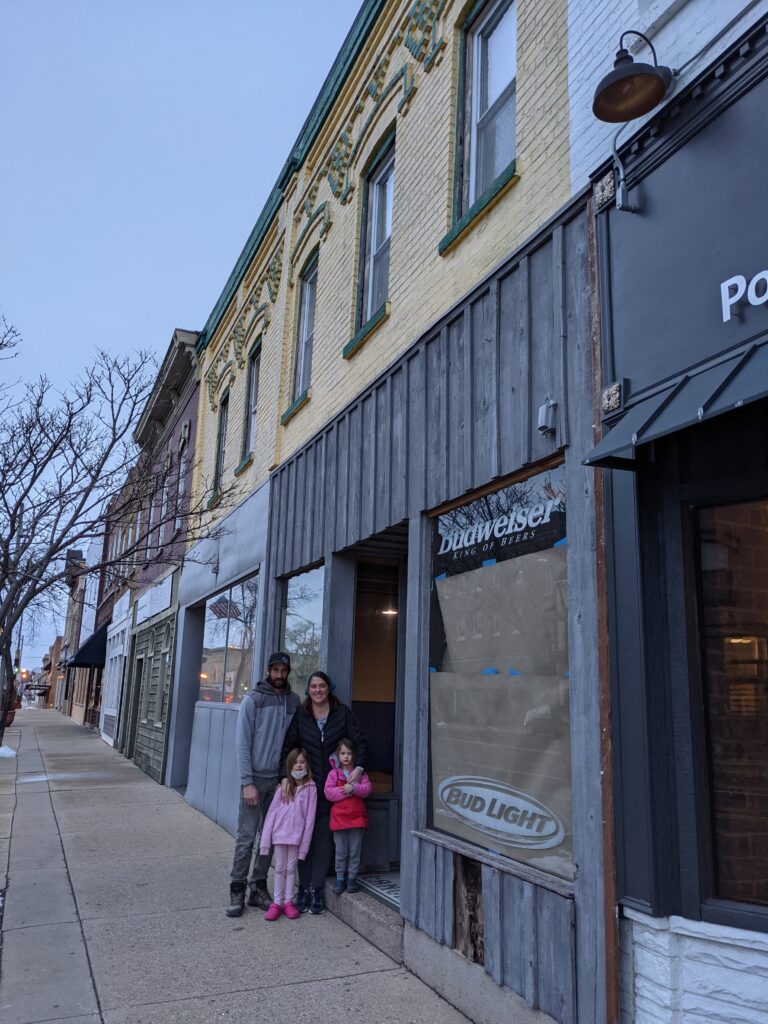
Rob and Alicia Norris, and their children, are pictured in front of what will soon be the Big Bluestem Market Collective, 225 South Main St. The new business is set to open this summer and will include an eatery, taproom bar, and market, featuring goods and products from local micro businesses.


Above two: Before and after pictures show changes made at 10-62 Saloon, 12 S. Water Street East. Owners, Erin and Mitchell Patterson, used their loan to completely update their building.
Photos submitted.
Enbridge, DNR say impacts ‘limited’ after pipeline leak; monitoring will continue
(Originally published April 2, 2021.)
By Kim McDarison
Monitoring efforts remain in place at the site of a 2019 chemical leak emanating from an Enbridge Energy pipeline on Blackhawk Island Road.
A letter sent to Enbridge Energy from Wisconsin Department of Natural Resources (DNR) hydrogeologist Caroline Rice on Wednesday, March 31, noted that the department’s review of an Interim Action and Site Investigation Report (SIR) submitted by Enbridge in January brought the following comments: “The results of the investigation indicate that most shallow impacted soils have been removed and the groundwater plume appears to be limited to within approximately 250 feet of the point of release.”
The SIR defined shallow soil as less than 10 feet and the groundwater plume as the area within the aquifer where contaminated concentrations are above the “enforcement standard.”
While the “release” or leak of a chemical solvent called “diluent,” which means “thinning agent,” occurred in April 2019, information about the incident was not shared with property owners in and around the area until February and March of this year.
In February, according to Jefferson County Office of Emergency Management Director Donna Haugom, a spill report noting a spill of 1.35 gallons of a substance classified as “unknown” was shared with members of the Jefferson County Board of Supervisors’ Local Emergency Planning Committee (LEPC).
On Friday, March 26, the Jefferson County Board of Supervisors’ Law Enforcement and Emergency Management Committee received an update from several representatives from Enbridge Energy about a valve failure within the company’s “Line 13,” which passes through a rural portion of Jefferson County near the intersection of Blackhawk Island Road and Westphal Lane.
For many committee members and Fort Atkinson and Town of Koshkonong residents, it marked the first time they had learned about the spill, the size of the affected area, its environmental impacts, and remediation and cleanup efforts that had been under way since last year.
Residents attending the meeting, both in person and virtually, voiced concern over the amount of time it took for the public to become aware of the leak.
Representatives from Enbridge, including Dave Schwartz, a technical supervisor, and Jon Eisele, a senior public awareness coordinator, answered questions and offered contact information for residents who were concerned about the spill’s environmental impacts. They also provided information for landowners who might want their well water tested.
What happened in 2019?
In her letter to Enbridge, Rice offered some background involving the spill and subsequent reporting procedures.
On April 26, 2019, she wrote, a “whistle alarm” was reported to “Enbridge Environment,” after which AECOM, an environmental consulting firm, was contacted to “provide environmental support at the site.”
Enbridge Line 13 Blackhawk Valve, which is how the site is referenced, is located on a 68-acre parcel. Four pipelines, Nos. 6,14,13 and 61 are present at the site, Rice wrote.
The leak on the property was attributed to a failure of a fitting on a control valve associated with Line 13.
The line, a company map shows, runs between Illinois and Canada.
After the leak was reported, Rice stated, a screening process began that included the sampling of shallow soils and the installation of temporary vapor-monitoring points.
Three soil excavations were performed at the site and samples were collected.
“Analytical results indicate that soil contamination remains beneath the release (leak) and, although limited, also in the sidewalls of the final excavation,” Rice wrote.
What happened in 2020?
In July of 2020, according to the SIR, the release of the diluent was reported to the DNR.
Additional investigation work was conducted at the site between August and October of 2020, Rice noted in her letter. At that time, 27 soil borings were created, along with 27 temporary monitoring wells. Eight permanent monitoring wells were also installed, and the “nearest potable well was sampled.”
What’s happening in 2021?
With the release of the SIR in January, Its cover letter stated, objectives for Line 13 at the Blackhawk Island Road site, were to “provide a summary of the leak discovery, immediate and interim actions, and the ensuing site investigation that occurred at the site in 2019-2020.”
Enbridge further asked for technical assistance from the DNR for site remediation.
Within the SIR, Enbridge offered a chronology of dates, summarizing events relating to the spill.
In April, 2019, the SIR states, Enbridge became aware of the spill and AECOM was contacted to provide environmental support.
In May, 2019, temporary vapor monitoring probes, four soil gas samples and a shallow surface soil sample, were collected, and impacted soils were removed, and excavation samples were collected for laboratory analysis. Additionally, Enbridge employees took measures to temporarily repair the leaking valve fitting.
In June, 2019, the leaking valve components were permanently repaired.
July through August, and again in October, 2019, more soil samples were collected for laboratory analysis.
In July of 2020, a boring was advanced near the leak site and soil and groundwater samples were submitted for laboratory testing.
In August, 2020, having reported the incident to DNR in July, Enbridge received a “responsible party” letter from the DNR, and requested AECOM to conduct a site investigation.
Between August and September, 2020, soil borings and monitoring wells were installed at the site as part of the investigation and samples were collected and monitoring continued.
In October, 2020, a sample was taken from a drinking water well at the Macleod residence, and more groundwater samples were collected.
In November of 2020, calculations by AECOM estimated that between 29 and 33 barrels of diluent had been released.
Ongoing sampling
In her letter to Enbridge, Rice defined the work conducted, as outlined in the SIR, as “a reasonable start at defining site hydrogeologic conditions and identifying the nature and extent of impacts associated with the release.”
Still, she wrote, the “lateral and vertical extent of impacts to soil requires better definition.”
An evaluation of contaminant movement along preferred pathways, defined as pipeline and associated backfill, has not been performed, Rice stated.
An evaluation of the vertical movement of the groundwater plume had not yet been completed, she continued.
Additional work that is being required by the DNR includes:
• Additional soil investigation, which, Rice wrote, is needed to more accurately define the nature and extent of remaining soil contamination.
• Additional groundwater investigation, which is needed to evaluate vertical flow and the potential for downward migration of the contaminant plume.
• Contaminant migration evaluation, which will focus on a potential for underground onsite infrastructure, specifically, the migration along the outside of the pipelines and associated backfill.
• Private well sampling that the DNR will request for private wells within 1,200 feet to the south of the release.
• Vapor risk assessment, which the DNR will request for onsite buildings.
All of the above samples will be tested for volatile organic compounds (VOCs), according to the letter.
Informing the public
In a telephone interview, Haugom told Fort Atkinson Online that she received a spill report from the DNR in August of 2020. It included the following information:
On May 17, 2019, a spill of a substance classified on the report as “unknown” of approximately 1.35 gallons, occurred.
The report cited the location of the spill as South Central Region, Jefferson County, City of Fort Atkinson, with an incident location identified as N1850 Blackhawk Island Road.
Enbridge Energy was listed as the “responsible party” and the cause was listed as “equipment failure.”
A short narrative within the report stated that the release was of 1.35 gallons of diluent.
“Repairs were made last year, but groundwater monitoring will have to be done and that will exceed the $50,000 threshold,” the spill report stated.
Steve Martin, South Central Region team supervisor for the DNR’s Remediation and Redevelopment Program, responding to questions by phone, noted that the monetary threshold is a part of the process at the federal level.
At the state level, he said, the DNR is currently evaluating criteria in place for the release of hazardous substances.
Relative to the Enbridge reporting chronology, he said, “We are in the process of identifying a response to their untimely notification. We are planning to ask some followup questions and there may be some other activities to determine a course of action.”
Thus far, the DNR has required processing fees as determined by state code, to help offset the cost of receiving and reviewing documents, he said.
When asked about site cleanup costs, he said: “I anticipate that Enbridge will cover those costs entirely.”
Under the heading of “cleanup,” the spill report indicated that “contaminated soil was removed and water monitoring will be conducted.”
In a Feb. 19 correspondence sent to Haugum from Dave Stafford, listed on the DNR staff directory as an Enbridge Pipeline Agency spokesperson, a monitoring plan was outlined to include quarterly (January, April, July and October) dates at which time eight monitoring wells will be tested to monitor the groundwater.
Samples, according to the correspondence, from each well will be submitted to an accredited laboratory for analysis of volatile organic compounds. Compounds will include benzene, toluene, ethylbenzene and xylene, which, the report noted “are the most prevalent compounds in the diluent/condensate product.”
The process, the spill report continued, “is all dictated by the Wisconsin Department of Natural Resources … rules for investigations at remediation sites. This monitoring activity will continue until we receive site closure from the WDNR.”
Spill reports are routinely shared at the county’s Local Emergency Planning Committee (LEPC) meetings, Haugom said, and the Enbridge spill report was shared at that body’s February 2021 meeting.
Haugom said that after COVID-19 precautions were put in place last March, the LEPC stopped meeting. February marked the first opportunity to share the report with that committee, she said.
March 26 Law Enforcement and Emergency Management Committee meeting
Jefferson County Supervisor District 13 Anita Martin said she attended the Feb. 17 LEPC meeting and learned about the 2019 spill.
“I am interested in environmental issues and there is a pipeline (near) my district, in the Town of Lake Mills,” she said.
Martin’s district includes the City of Lake Mills.
At the meeting, it was noted on the DNR spill report that the amount of materials spilled was 1.35 gallons, Martin said, adding that she thought the number was “odd.”
She asked for more information, and later learned that the amount of material spilled was much larger, at around 1,200 gallons.
She also was concerned that nearly 15 months had elapsed between the time of the spill and the time that it was reported by Enbridge to the DNR.
“It’s a self-reporting system,” she said. “Fourteen or 15 months passed before they basically reported it. I can’t speak to how or why that happened, but it is a concern. What I want to know is why it took so long?”
Since the remediation process began, Martin said, some 130 tons of contaminated soil has been removed from the site.
“The site is now considered a brownfield site, she said, adding that a radius of 1,200 feet from the point of the spill has been identified as an area of potential impact.
At the March meeting, some 10 wells and 18 properties were identified within the radius, she said, adding: “So far, only one person has had their well tested, and that was the resident who was closest to the spill.”
“As far as the county is concerned, we don’t have any kind of governing purview over this issue in the sense of Enbridge somehow being obligated to us,” Jefferson County District 7 Supervisor and Law Enforcement and Emergency Management Committee Chairperson Dwayne Morris said.
“If Enbridge owned a truck and it spilled gas, it would fall under our purview. But this is under the federal government’s purview and that is an important distinction. To our knowledge, the DNR is the governing body with oversight,” he said.
“We are obviously concerned for the well-being of our residents, so we will represent them, which I feel like we’ve been doing with having Enbridge come and explain what has happened to us,” he continued.
“As far as we are concerned, the ball is in DNR and Enbridge’s court in solving this problem and we will act as an advocate on the residents’ behalf as we need to. If they call Enbridge, then they can handle it. If we get calls, we will be responsive,” he said, adding that he would likely place the issue on an upcoming Enforcement and Emergency Management Committee agenda.
Looking at the time lapse, he said he believed the COVID-19 pandemic might have affected the company’s ability to react and share information.
“They started to investigate and then the winter happened and COVID, and once they had a good idea of how big it was, it was September of 2020. And that’s when they filed the report with the U.S. Department of Transportation Pipeline and Hazardous Materials Safety Administration,” he said.
“The real question is: Is the DNR required by state law to inform local governments of an issue like this?” he asked.
“If not, then it is not a bad ideas to take that to the state Legislature to say that it would be a wise idea.”
Morris continued: “I’ll just say that what I have seen dealing with Enbridge, and that’s been as long as I’ve been a supervisor, they have been very neighborly … and that is not true of other companies in the county that work with hazardous materials.
“We could also ask: What is the safest way to transport this product?” he said, adding that compared to rail and truck transportation options, pipelines might be the safest means of conveyance.
Morris shared information given by Enbridge at the meeting, including contact information for David Schultz, including his email at david.schultz@enbridge.com and telephone number of (608) 756-3167.
In a recent telephone interview Enbridge Communication Specialist Juli Kellner said that the company has a telephone line dedicated to helping landowners with their concerns. Landowners can call: 1-855-869-8261.
“That information was given to residents who attended the meeting,” he said, adding that about seven residents, five of whom were from within the county, attended.
Jefferson County Supervisor District 30 Walt Christensen represents three wards in the Town of Koshkonong and one ward in the Town of Sumner. He also is a supervisor on the Town of Koshkonong board.
“About a month ago, I got a call about a February meeting and that was the first I’d learned of it,” he said of the spill.
“Diluent is the product in the pipeline that spilled. Tar sands oil is thick, so they dilute it with this stuff. It is a cocktail of these solvents that is shipped with the oil to the refinery and then it is separated from the oil and the diluent is returned to Canada, and that’s what leaked.”
When chemicals leak, Christensen said, they tend to move underground.
“It is not always possible to know where they are and to identify them once they are in the ground,” he said.
“This was originally detected by one of their (Enbridge) workers who smelled it. They were not alerted by a sensor. They were there for another reason and somebody could smell it,” he added.
While he was concerned for his constituents, he said, oversight is a matter of federal regulation.
“The federal government controls pipelines, and in second place is the Wisconsin DNR,” Christensen said. “Really, nowhere in there is the local government with any kind of say, and we don’t get any revenue from these pipelines from the state. Nonetheless, we do have some emergency management responsibilities so there is some cost.
“When it comes to these pipelines, we are a partner, like it or not,” he said. “They put the pipeline in there years ago; they age, and we don’t have a say and we are affected by it, and I would like to have more response from the elected people at the federal level.”
Christensen said constituents should express their concerns to federal legislators, in this case, 5th District U.S. Rep. Scott Fitzgerald.
“He is the closest to the FERC (Federal Energy Regulatory Commission) and the federal regulatory enterprises involved with this,” the supervisor noted.
“Regulation, it comes at a higher level, but it affects people here,” he said.
“My understanding is it was contained about a couple-hundred feet from the site and the materials were removed and disposed of properly,” he added.
To learn more
Those interested in contacting state and federal officials can do so through the following websites:
U.S. Sen. Ron Johnson: https://www.ronjohnson.senate.gov.
U.S. Sen. Tammy Baldwin: https://www.baldwin.senate.gov.
U.S. Rep. Scott Fitzgerald: https://fitzgerald.house.gov.
State Rep. Cody Horlacher (Fort Atkinson): https://legis.wisconsin.gov/assembly/33/horlacher.
State Sen. Steve Nass (Fort Atkinson): https://legis.wisconsin.gov/senate/11/nass/biography/.
State Rep. Don Vruwink (Town of Koshkonong): https://docs.legis.wisconsin.gov/2021/legislators/assembly/2212.
State Sen. Janis Ringhand (Town of Koshkonong): https://legis.wisconsin.gov/senate/15/ringhand/.
Those interested in reading the full SIR can find it here: https://dnr.wi.gov/botw/DownloadBlobFile.do?docSeqNo=188513&docName=20210129_37_SIR.pdf.
Those interested in learning more about agenda items on upcoming meetings of the Jefferson County Board of Supervisors and its committees may visit the website: https://www.jeffersoncountywi.gov/index.php.
Those interested in learning more about Enbridge and its products may visit the company’s website: https://www.enbridge.com.
This story has been updated: Anita Martin is a county supervisor representing District 13, which includes the City of Lake Mills.
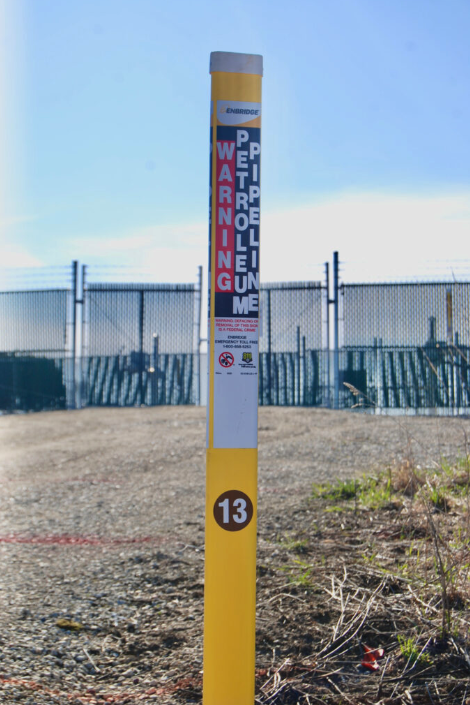
A marker, as viewed from Blackhawk Island Road outside of the Fort Atkinson city limits, indicates the location of Line 13. The leak associated with the line was attributed to a fitting on a valve located within the fenced area shown behind the marker. Kim McDarison photo. (Photos below by Kim McDarison; screen shot graphics.)

A monitoring well on the Enbridge pipeline Blackhawk Island Road site as viewed from Blackhawk Island road.

A map shows Enbridge pipelines that run between Illinois and Canada.
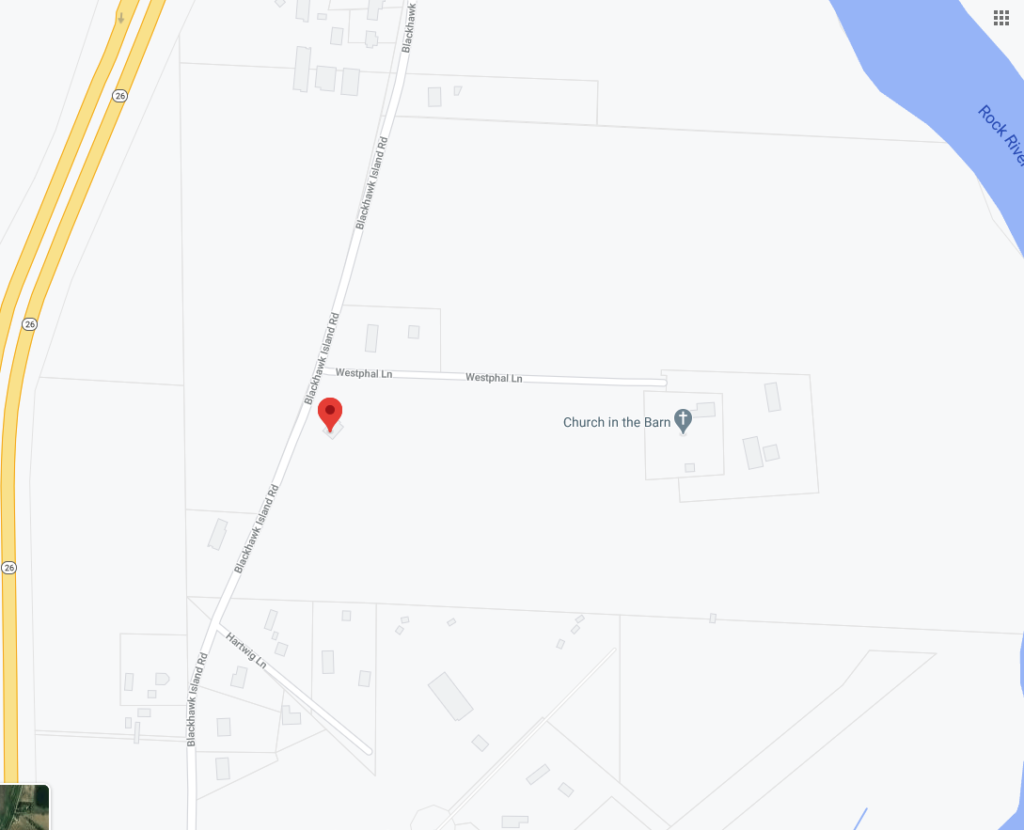
A map shows the location of the nearly 70-acre property through which four Enbridge pipelines run, Line 13 among them. The property is situated at the corner of Blackhawk Island Road and Westphal Lane.

Several markers show placement of pipelines along Blackhawk Island Road.

File photo/Kim McDarison.
Friends of the Bark River Hatchery fund second annual perch release
(Originally published April 4, 2021.)
By Kim McDarison
Anglers dotted the the Rock River early Friday morning as about 10 people, many of whom are involved with the Bark River Fish Hatchery and its associated fundraising group, awaited the arrival of a truck from Dodgeville carrying fingerling perch.
The group of volunteers and spectators was assembled at Island Bar and Grill, W7545 Blackhawk Island Road, where fundraising group, Friends of the Bark River Fish Hatchery, chairperson Adam Walton said the truck would find easy access to the shoreline near the confluence of the Rock River and Lake Koshkonong. This is the second year that perch were being introduced from the spot into the waterbody. The Friends of the Bark River Fish (sometimes called “Fry”) Hatchery is a fundraising arm that works to support the Bark River hatchery. The facility is located in the town of Koshkonong just outside of the Fort Atkinson city limits, near the confluence of the Rock and Bark rivers, Walton said. Fry is a term used to describe juvenile fish.
The Island Bar and Grill is owned by Jim and Christa Bowers. Jim Bowers is a Friends of the Bark River Fish Hatchery board member.
Stock market
This year, Walton said, some $11,000 in perch are being introduced into the lake. When the truck arrived, driver, Terry Lauffer said, he was carrying some 14,000 perch of varying lengths, ranging anywhere from 3-4 inches and up to 6-7 inches. The fish were between 1 and 3 years old, he said.
The fish were raised in Dodgeville at Gollon Bait and Fish Farm, Walton said.
“We used them last year, too. This is only our second year getting private-source stock,” he said, adding that the Wisconsin Department of Natural Resources (DNR), which owns the Bark River Fish Hatchery, is a partner in stocking the lake with fish. In past years, the DNR has stocked Lake Koshkonong with pike and walleye, he said.
Last year, the community fundraising group paid to stock Lake Koshkonong with some 20,000 perch, Walton said.
The DNR looks each year at waterbodies across the state and makes decisions about where fish will be stocked, he added.
“The DNR stocked fish in Koshkonong in 2019 and are planning to stock fish again this year,” Walton said, adding that the DNR plans to stock pike and walleye.
Last year, he said, plans to stock the lake with pike and walleye were hampered by DNR staffing issues caused by COVID-19.
Professionally, Walton offers an Edgerton-based guided fishing service. He is busy year-round, he said, and takes people on fishing trips throughout the state.
“We are busiest in the summertime, but in the winter, people go ice fishing,” he said.
At the hatchery in Dodgeville, eggs are collected from fish that are raised and grown on site. After the eggs hatch, the stock is raised in ponds on the facility’s property. After they reach a certain level of maturity, they are recaptured and brought to waterbodies within several states, including Wisconsin, Iowa, Illinois and Indiana, Lauffer said.
Lake Koshkonong and the recreational activities on the lake, including fishing, are important to the area, Walton said, adding: “Lake Koshkonong draws a lot of business to our restaurants and hotels, and bait stores, gas stations, so many businesses around the lake benefit. Lake Koshkonong is a magnet for that, so if the lake has great fishing, more people will come to the area.
“People don’t want to come and catch carp. Stocking these fish help create a healthy lake system and they will bring anglers from all over.”
Financing fish
Funds to buy fish that come through the club are collected through fundraising efforts, the biggest of which is the club’s annual March Banquet, Walton said.
This year, due to COVID-19 precautions, the banquet was not held, but the club had saved about $8,000 from earlier fundraising initiatives, and those funds, along with a donation of $3,000 from longtime Bark River Fish Hatchery affiliate Gary Peterson, were used to purchase the perch.
The club also provides funds for the DNR stocking of walleye and pike, and those fish are the bigger priority, Walton said. This year, they had enough money to include perch.
“We had extra money in the account which we put toward stocking, so perch were secondary to walleye and pike,” he said.
“Thanks to our gracious donors, we raised a lot of money last year,” he added.
“This year and last year, there was no banquet due to COVID, so we are using money that we had saved up,” he continued.
Looking ahead, Walton wrote in an update to club members, “Although banquet and group events still have restrictions, the DNR is back in operation and is planning to get stocking efforts back up and running this coming spring.
“Our board has been planning ahead financially for unforeseen events. Assuming nothing disastrous occurs, past money from fundraising events will cover this year’s walleye stocking despite not having a banquet.”
With a pause placed on banquet activities two years in a row, Walton said, the club’s resources are low. He anticipates replenishing the club’s coffers through fundraising and by resuming the banquet in 2022, he said.
New life in Lake Koshkonong
After making their journey by truck, the young fish were released from eight tanks into their new home.
In past years, Walton said, club members and volunteers would form a bucket brigade to transport fish from tanks into the lake.
This year, the process was done using a pipe that attached to the tanks and conveyed the animals into the water.
The process is quick, Lauffer said, taking only a few minutes to empty each tank.
As he moved the truck into position, several waterbirds began circling the area.
Some of the fingerlings will be lost to predators, he said, adding, with an eye toward the birds: “They seem to know I’m the lunch truck.”
Don Bush, a club board member with a long affiliation with the Bark River hatchery, was among those watching the release Friday morning.
Among fish that were being introduced into the lake were females that had not yet spawned, he said.
He hopes these fish will find adequate spawning habituate in Lake Koshkonong and bring to the lake a natural spawning cycle, he added.
Online information notes that perch can live to be 13 years old, and females mature when they are between the ages of 2 and 4 years old. The largest documented yellow perch every caught came from New Jersey. Caught in 1865, the fish weighed 4.3 pounds.

A Dodgeville-based Gollon Bait and Fish Farm truck carrying 14,000 juvenile perch arrives at the docks of the Island Bar and Grill, situated along the Rock River, early Friday morning.

After driver Terry Lauffer checks out the shoreline, the truck, with eight tanks full of perch, is maneuvered into position to release the fish into the waterbody.
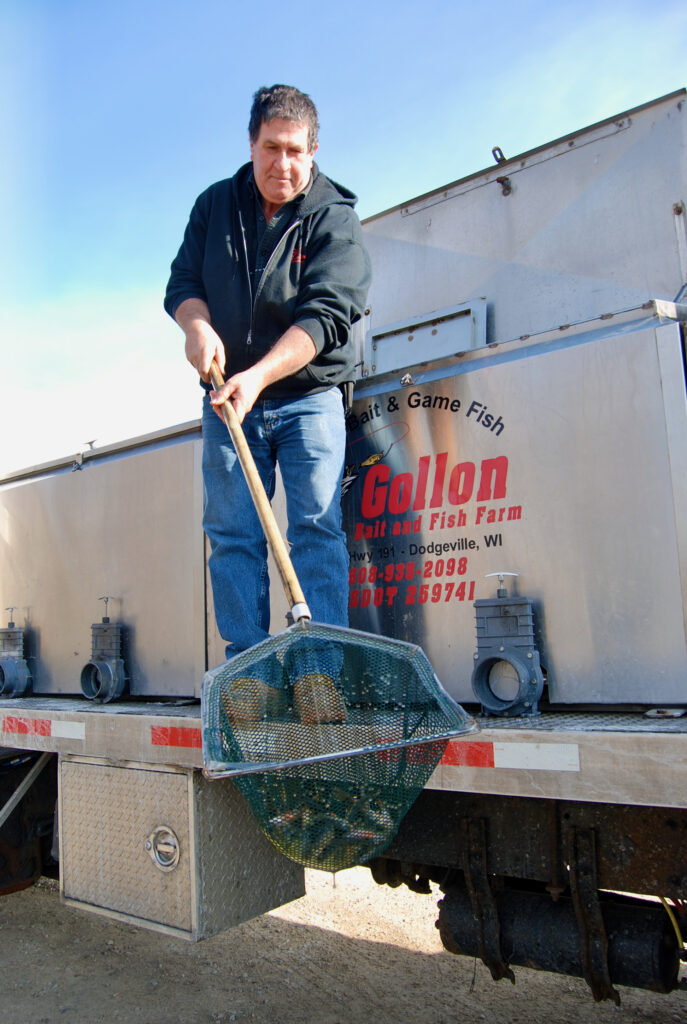
Gollon Bait and Fish Farm driver Terry Lauffer presents a sampling of the fish.

A closer look.

Friends of the Bark River Fish Hatchery Chairman Adam Walton and his sons, Clay, 4, from left, Jace, 6, and Reilly, 7, examine the fish.

A closer look.
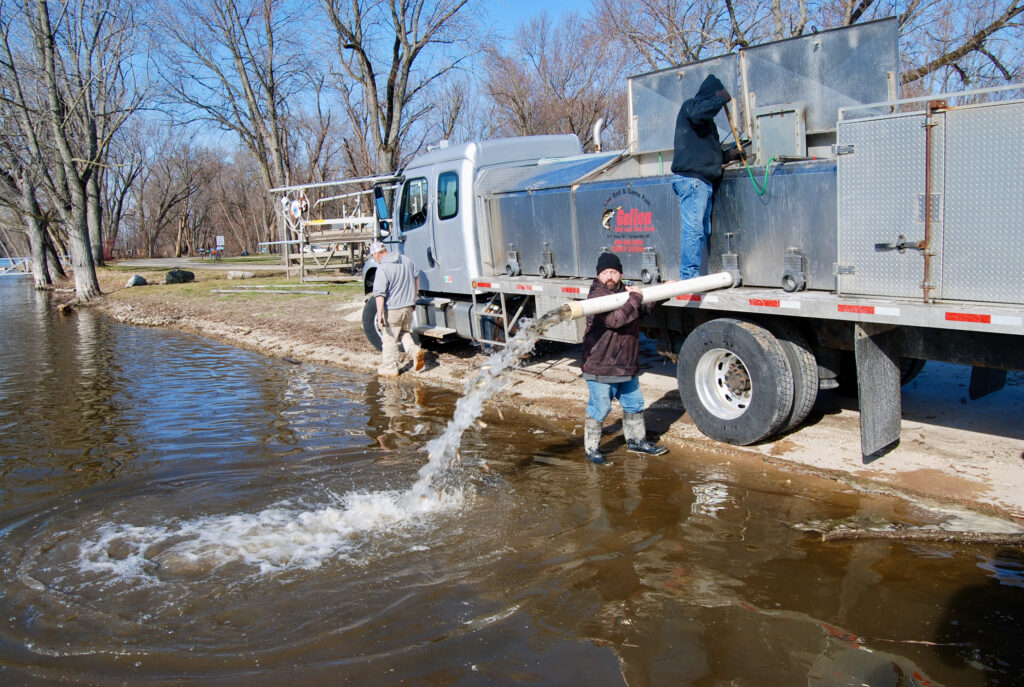
A piping system makes quick work of transporting the fish into their new home. Volunteer and longtime area resident Tony Prisk holds the pipe steady.

Fish cascade from the tank into the Rock River near where it joins with Lake Koshkonong.
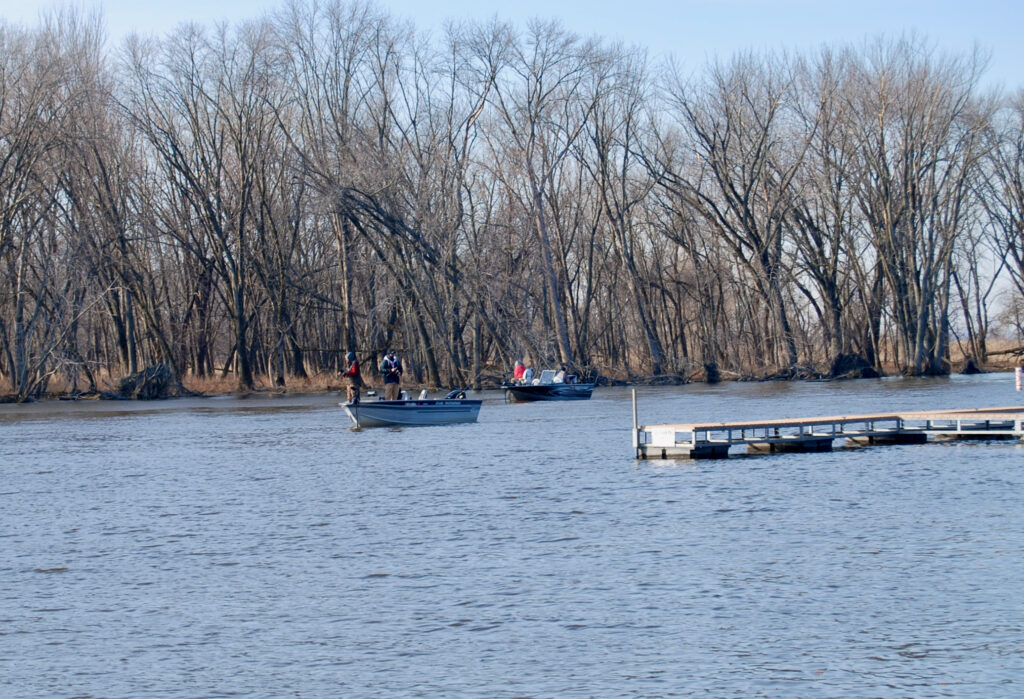
Fishermen enjoy a quiet morning near the release site along the Rock River.
Kim McDarison photos.
Election guide: Who’s on the ballot?
(Originally published April 5, 2021.)
By Chris Spangler
Contributor
Fort Atkinson electors will be casting ballots for city council, board of education and state superintendent of school seats in Tuesday’s general election.
The polls open at 7 a.m., with balloting continuing through 8 p.m.
The polling place for all city of Fort Atkinson residents is the Municipal Building, 101 N. Main St. Polling places for rural residents living within the School District of Fort Atkinson include the towns of: Koshkonong, W5609 Star School Rd.; Oakland, N4450 County Road A; Jefferson, 434 County Road Y; Cold Spring, N1409 Fremont Rd., Whitewater; Lima, 11053 Willow Dr., Whitewater (Rock County), and Hebron, N2313 County Road D.
City council
Four candidates are vying for three open Fort Atkinson City Council seats on the spring ballot. They are incumbents Mason Becker and Chris Scherer, and challengers Megan Hartwick and Jordan Lamb.
Becker, 40, is a restauranteur with his family’s Subway business who is seeking his fourth term on the council.
A 37-year Fort Atkinson resident, he is active in the Fort Atkinson Lions Club, Bethany Lutheran Church and Fort Atkinson Area Chamber of Commerce.
He said he is seeking a new term because “I believe that right now Fort Atkinson is at a critical crossroads, and many opportunities lie ahead. …While we have made strong progress in areas like revitalizing our downtown, fixing roads, and ensuring financial stability, there is still more work to be done.”
Chris Scherer, 29, is self-employed in business consulting. He is seeking his second term on the city council.
Having resided in Fort Atkinson for 26 years, Scherer has been a member of the Fort Atkinson Area Chamber of Commerce for 13 years, including serving as president-elect of its board of director and a member on a variety of chamber committees; Planning Commission; and many other municipal committees. He has served as a Madison College continuing education instructor.
“My desire to remain civically involved, specifically as a city council member, is to continue making a positive impact on the community that I was raised, educated, and live in,” Scherer said.
“I am choosing to run for a second term as a council member because I want to see projects that have started through to the end and to responsibly start new improvements to our city. While having only been an elected official for one term, my experience and involvement with the current decision-making in the city extends back to 2015 during the Community Placemaking Initiative. Six years later, I am still actively involved and a part of facilitating the planning and envisioning that occurred then.”
Megan Hartwick, 36, is executive director of the United Way of Jefferson & North Walworth Counties.
A Fort Atkinson resident for 27 years, she has been a member of the Fort Atkinson Police & Fire Commission, Fort Atkinson Area Chamber of Commerce and Jefferson County Planning Commission as a nonprofit representative, and is the founder of the Fort Atkinson Charity Concert Series.
“I grew up in Fort Atkinson and this community gave me so much and was a huge part in shaping who I am and the opportunities I was given,” she said. “Now that I am back living here and am raising my family here, I want to be as big a part of helping this community grow and thrive as I can. I want to give back to a community and a city of people who gave so much to me.”
Jordan Lamb, 25, is co-owner of Fort Atkinson Small Engine LLC.
A 22-year Fort Atkinson resident, he has been a member of the Fort Atkinson Chamber of Commerce and National Federation of Independent Business.
“I believe my hardworking attitude, along with my drive to get things accomplished, will help drive this city to a better future,” he said in citing why he is seeking a council seat. “Fort Atkinson city taxpayers need a true voice on the council that will be completely transparent about anything going on.
“It is not a foreign action for me to be working side-by-side with government officials to make things happen,” he added. “My prior experience working with the DOT provided great insight into project deadlines, budgets, and community impact/expectations. I would like to work with city committees to try to boost the local downtown businesses and increase the tourists our city can attract.”
Board of education
Rhona Buchta is unopposed in her bid Tuesday for a seat on the School District of Fort Atkinson Board of Education.
Buchta, 44, is a literature/language arts middle school teacher at St. Joseph Catholic School in Fort Atkinson.
A 40-year Fort Atkinson resident, she has been involved in the St. Joseph School Art Enrichment Committee for more than 10 years, the Diocese of Madison Star360 Advisory/Core Team for three years and as a St. Joseph Student Council co-mentor for three years.
“I have been part of the Fort Atkinson committee for many years. I have grown up here and have raised and continue to raise my own children in this community,” Buchta said. “In seeking this position, I hope to contribute ideas and a voice as a strong advocate for the progression of all schools.
“I fully understand how important it is to support our teachers and staff and believe it is important to collaborate as a community in support of our youth’s education,” she added.
The board of education is a five-member board. Members serve for three-year terms.
Incumbent Rachel Snethen is not running for a new term.
State superintendent of schools
Two women are on the ballot Tuesday for Wisconsin state superintendent of schools.
Jill Underly and Deborah Kerr advanced to the general election after being the top vote-getters from among seven candidates in the February primary.
The current DPI chief, Carolyn Stanford Taylor, was appointed by Tony Evers after he stepped down from that spot upon being elected governor. However, she is not did not seek re-election.
Underly is superintendent of the Pecatonica School District, where she has served for six years.
Kerr stepped down in 2020 after 13 years as the superintendent of the Brown Deer School District.

File photo.
Becker, Scherer, Hartwick win council seats
(Originally published April 6, 2021.)
By Chris Spangler and Kim McDarison
Two incumbents and one newcomer won two-year terms on the Fort Atkinson City Council in Tuesday’s general election.
Incumbents Mason Becker and Chris Scherer were returned to their council seats with vote tallies of 1,216 or 24.05 percent of the votes and 1,036 or 20.49 percent, respectively.
Newcomer Megan Hartwick landed a first term on the municipal body with 1,203 or 23.79 percent of the ballots. She will fill the seat of outgoing councilman Paul Kotz, who did not run for a new term.
The fourth candidate, newcomer Jordan Lamb, garnered 658 or 13.01 percent of the ballots.
After learning the election results, Becker said: “I am very honored to once again to returning to the city council and I’m looking forward to serving my fourth term. It’s an honor to be a top vote-getter. I appreciate the support. We had an election with four qualified candidates running and it’s an honor to know I’ll be able to serve for two more years.
“We have a lot of work to do this coming year. We need to move forward with Banker Road, with improving our streets and economic development, and I’m looking forward to being a part of it.”
Commenting on election results, Scherer said: “I’m happy the residents have re-elected me, and I’m excited to be continuing the job I started two years ago, and building on the successes we’ve had as a city. I look forward to another two years.”
Responding with an emailed statement, Hartwick wrote: “First and foremost, I would like to thank every resident of Fort Atkinson who placed their trust and confidence in me through their vote. I am honored to have been elected to the city council and look very forward to serving this amazing community in a new capacity.
“I would also like to offer my congratulations to both Mason Becker and Chris Scherer on being elected to serve. I am very eager to begin working with them both, as well as Councilman Housley and Councilman Johnson. There is a lot of important work to do on behalf of our community, and I think we have a strong council with great representation and experience that will be well-positioned to do just that.
“I also want to acknowledge Jordan Lamb for his efforts during the campaign. It is not easy to open yourself up to public criticism and feedback, nor is it easy to step up with a willingness to want to lead. I am grateful for Jordan and all those who are willing to do that on behalf of Fort Atkinson.
“The support I received during my campaign was inspiring and humbling, and the conversations I was able to engage in with Fort Atkinson residents were so valuable. I love this community and love connecting with those who live here. I promise to serve Fort Atkinson as best I can and to uphold my campaign promises of focusing on action and not just ideas, prioritizing issues of value for the betterment of our community, increasing the transparency of communication to the public, and being deliberate in my work and votes.”
Lamb, too, responded after learning election results by email, writing: “As our Election Day concludes, I want to personally thank each one of you who supported me during my quest in a council seat in the great city of Fort Atkinson. The people of Fort Atkinson’s votes have spoken and unfortunately, this year’s election did not play out in our favor. The results will not hinder my passion or plans to continue supporting this community as a resident or a business owner. Thank you again and I wish each of you well.”

Mason Becker

Megan Hartwick

Chris Scherer
Buchta to fill lone school board seat
(Originally published April 6, 2021.)
By Chris Spangler
Rhona Buchta will fill the lone open seat on the School District of Fort Atkinson Board of Education.
Buchta, 44, is a literature/language arts middle school teacher at St. Joseph Catholic School in Fort Atkinson.
A 40-year Fort Atkinson resident, she was unopposed in her Tuesday general election bid for the seat being vacated by incumbent Rachel Snethen, who did not seek another three-year term.
Buchta said she is looking forward to serving on the board of education.
“I would like to thank the constituents of Fort Atkinson for electing me to the school board,” she said. “It is a privilege to represent the community as a citizen, a teacher and a parent invested in our children’s education, both academically and mentally.
“I want to thank Mrs. Rachel Snethen for her service on the school board and I hope that my perspective and experiences will benefit the school board moving forward,” Buchta added.
Buchta received 1,921 votes in Tuesday’s general election, including 1,302 in the City of Fort Atkinson. Tallies in the surrounding Jefferson County towns were Koshkonong, 295; Hebron, 91; Oakland, 55; Jefferson, 46; Palmyra, 1; Sumner. 120; and Cold Spring, 11; and the four residences in the Rock County Town of Lima, unknown as of deadline.

Rhona Buchta
Underly wins state superintendent seat
(Originally published April 7, 2021.)
By Chris Spangler and Kim McDarison
A woman currently leading the Pecatonica School District has been elected state superintendent of schools.
Jill Underly, 43, won Tuesday’s general election over challenger Deborah Kerr, 63, according to the Associated Press.
AP announced about 9:30 p.m. that Underly cruised to a double-digit win, based on unofficial results.
The two had advanced from a February primary field of seven to end up on the spring ballot for the top Department of Public Instruction post.
The current DPI chief, Carolyn Stanford Taylor, was appointed by Tony Evers after he stepped down from that spot upon being elected governor. However, she is not did not seek re-election.
Overall Jefferson County vote tallies were 7,542 for Underly and 6,758 for Kerr.
Underly, in her victory statement, said that she was “especially grateful to the Democratic Party of Wisconsin” and its leaders.
“Wisconsin’s kids and public schools face significant challenges as we work to return to normal, get every student caught up, and support their mental health and wellbeing in the aftermath of this pandemic and the enormous trauma and disruption it’s caused for all of us,” Underly said. “Overcoming these hurdles won’t be easy, but I know that if we work together, we can get it done and do what’s right for our kids.”
Underly promised that she will always do what’s best for students.
“We have a long road ahead of us, but I’m ready to get to work on day one and build a stronger, more equitable public education system that provides every child, every day with the world-class public education system they deserve,” she said.
Tallies for votes cast in Jefferson County were, with Underly first followed by Kerr: the Cities of Fort Atkinson, 1,092, 553; Jefferson, 491, 328; Lake Mills, 890, 504; Waterloo, 0, 0; Watertown, 1,014, 1,143; and Whitewater, 105, 58; Towns of Koshkonong, 7, 7: Hebron, 16, 21; Oakland, 14, 10; Jefferson, 27, 29; Cold Spring, 0,0: Aztalan, 86, 74; Concord, 41, 42; Farmington, 0, 0; Ixonia, 103, 153; Lake Mills, 29, 20; Milford, 9, 9; Palmyra, 1, 0; Sullivan, 70, 104; Waterloo, 61, 58; Watertown, 159, 238; and the Villages of Johnson Creek, 226, 219; Lac LaBelle, 0, 0; Palmyra, 111, 122; Cambridge, 18, 10; and Sullivan, 46, 53;
Information posted on Jill Underly’s website notes that since 1999, she has worked in many facets of education, including teaching high and middle school social studies, serving as an elementary school principal and as a University of Wisconsin College of Letters and Science academic advisor, a Title I consultant, and as an assistant manager at DPI.
She currently is superintendent of the Pecatonica School District, where she has served for six years.
A native of Indiana, Underly arrived in Wisconsin in 2005 to attend the University of Wisconsin-Madison, earning a doctoral degree in educational leadership and policy analysis in 2012.
She also holds two master’s degrees: one earned in 2008 in educational administration from UW-Madison and a second earned in 2004 from Indiana University-Purdue University in secondary education curriculum and instruction. She also has a bachelor’s degree in history and sociology earned in 1999 at Indiana University, Bloomington.
Kerr has 40 years of experience in education, 21 of those as a superintendent of public rural and suburban school districts. She stepped down in 2020 after serving 13 years as the superintendent of the Brown Deer School District.
Her website describes her career as spanning all sectors, including parochial, private and public schools.
She has served as a co-chair of a UW System task force, charged with advancing teachers and leaders into the pipeline. Kerr is a past-president of the national (AASA) and state superintendent (WASDA) associations.
Kerr received her doctorate of educational leadership from National-Louis University, her master of education degree from the University of Alaska-Fairbanks, and a bachelor’s degree in arts and science from Valparaiso University. She also attended Walther Christian Academy in Melrose Park, Ill.
The website lists among her achievements serving as an adjunct professor at local universities, championing opportunities for all students, serving as a mentor and advocate for women, coaching a state championship girls varsity basketball team, serving as an athletic director and physical education teacher, and serving as a middle school principal and assistant principal.
At 9:45 Tuesday night, Underly held a Zoom-platform press conference, which lasted about 20 minutes, during which she delivered her victory speech and took questions from members of the media.
She was asked:
What is your top priority when you take office?
Underly said her first priority would be making sure that all of Wisconsin’s public schools are open for in-person learning this fall. She said that priority would include making sure that the schools have “the resources they need so that they can be open and be safe.”
What would you say to those who voted for your opponent?
Underly responded: “What I would say to them is thank you for being engaged in this race. Both Dr. (Deborah) Kerr and I have a lot of things in common. We elevated the issues of importance — especially around equity — and so I appreciate that they engaged in this race and that I will serve them and their kids and their communities well.”
Another issue is getting our kids caught up both academically and socially, can you just talk briefly about your plans to achieve that?
Underly talked about making adjustments in the school year, such as starting earlier, in August. She talked about providing social and emotional support for students, including “direct mental health services in our schools because they (students) just survived the pandemic.” Looking at academics, she said, “I’d be interested in promoting guidance for our school districts that look at extending the school day, especially our elementary, K-8 as well, to provide enrichment as well as remediation for our kids.”
What are your top three goals or priorities as state superintendent and how will you go about achieving them?
Underly described her top priorities as school funding and early childhood education, saying of school funding: “that’s probably the single most pressing issue facing Wisconsin public schools.” She described the school funding system as “broken,” because, she noted, “it causes massive inequity.” She advocated “working with our Legislature, perhaps promoting the Blue Ribbon Commission’s report findings, to make sure that we have a Wisconsin public school funding system that works for all kids, in all communities, and all school districts.”
She talked specifically about expanding early childhood education, in particular, she said, expanding 4K programming to a full week, “so that kids get a strong start no matter where they live in Wisconsin and also parents have that access to high-quality programming for their kids … If all kids get a strong start it sets them up for success.
“The other component includes teacher recruitment and retention, and working with our schools and colleges of eduction to recruit and retain teachers, Underly continued, emphasizing a need for “making sure that we can retain and support teachers in the profession because we need to build up that pipeline of teachers.”
What were the issues that most resonated with voters across the state?
Underly pointed to inequity in learning and achievement gaps, saying: “We’ve been talking about achievement gaps for example in math and literacy for decades, especially when we look at our minority students in particular. But I think we have to look at what causes these opportunity gaps. The first is poverty, and we need to address poverty through opportunities, and making sure that all kids in Wisconsin have the same opportunities to be successful. So I think one of the pieces that has been very popular and resonated with a lot of families is not only programming, but expanding access to full day, full week, 4K and wrap around care.”
Do you agree with (current DPI chief) Carolyn Stanford Taylor’s call to return to Tommy Thompson’s two-thirds funding pledge for schools?
Underly responded: “I do. I do agree with that. I feel that we see it in a number of referendum that have been passed and gratefully so, … taxpayers are increasing their local tax burden because the state hasn’t been delivering on its two-thirds funding promise.”
How will your administration work with both the governor and the Legislature to achieve goals and your priorities?
“It’s clear that no matter where you live, or how you vote, Wisconsinites care about their public schools,” Underly said, adding: “What I would do is certainly be working with the Legislature very closely and assemble a team that is very bipartisan.” She said she would work to “help the Legislature with the policies, help the Legislature with the research, and certainly advocate … I’m a public school advocate, from the very beginning.” As state superintendent, she said, her goals are to make sure that the Legislature and the governor have the information they need to advance policies “that help all kids in Wisconsin and help all communities and strengthen our public schools.”
What do you say to the Republican who voted for Deb Kerr?
“I feel that I got a lot of votes. We support our public schools. And I know that no matter what your political stripes are, Republican or Democrat, that you love your public school. And so that’s where I feel if I could reach out to them and say, ‘look, we all want the same things. We want strong public schools, we want opportunities for our kids, … so let’s work together to accomplish that,’” Underly said.
Do you have concerns about what the wave of children under 10 contracting COVID-19 in Michigan and Minnesota might mean for Wisconsin students and reopening public schools particularly as we wait for vaccines to be approved for children?
“Yes, of course it’s a concern. So we need to make sure that we’re following the science and doing what we can to make sure that we keep our masks on and social distancing,” Underly said, adding that currently protocols allow for three feet, but she advocated setting a goal of six feet. She also pointed to the value of additional cleaning, adding: “I think here are certain things we can do to mitigate it, but still, it’s a concern.”
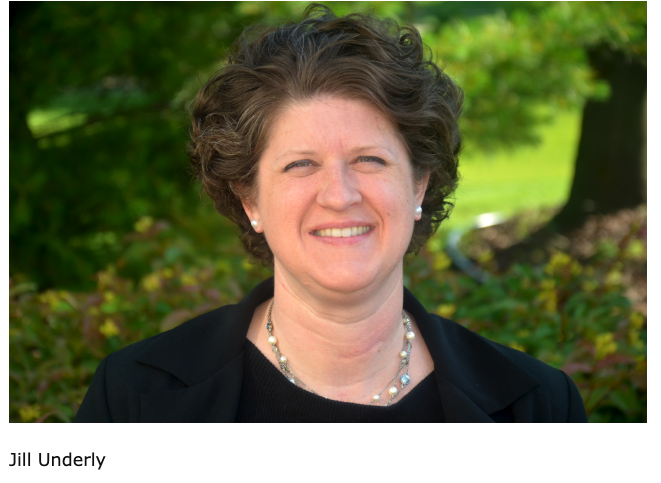
Roundup: Jefferson County voters went to the polls
(Originally published April 7, 2021.)
By Christine Spangler
Jefferson County voters went to the polls on Tuesday to cast ballots in a variety of area city, town and school district elections, as well as to fill the 13th state Senate seat vacated by now-U.S. Rep. Scott Fitzgerald.
The following lists voting outcomes for all municipalities in the county except for the City of Fort Atkinson and School District of Fort Atkinson, which are reported separately.
Cities
Jefferson
Three of four incumbents were returned to their seats on the Jefferson Common Council Tuesday.
Vote tallies were: Toby Tully Jr., 582; Peg Beyer, 532; and Bill Brandel, 540.
Newcomer Laurie Teeter garnered 495 ballots, winning a council seat.
Jim Horn received 372 votes.
Lake Mills
In the election for Lake Mills City Council, Catherine Bishop fended off Mike Foster with 699 votes to Foster’s 522.
Whitewater
Lisa Dawsey-Smith retained her at-large seat on the Whitewater Common Council Tuesday.
She received 708 votes to challenger Dan Machalik’s 328.
Carol McCormick was re-elected to her District 1 council seat, as was Brienne Brown in District 3. Both were unopposed.
The District 5 race was a close one, as incumbent Gregory Majkrzak reportedly received 62 votes to challenger Neil Hicks’ 60.
Villages
Johnson Creek
John Swisher received 365 votes in his unopposed bid for Village of Johnson Creek president.
Unopposed in their bids for village trustee were Bev Deppe, with 295 votes; Tim Semo, 319; and Mike Saindon, 294.
Palmyra
Kathy Weiss received 172 votes in her unopposed bid for Village of Palmyra president.
Winning trustee positions were Thomas Ball, with 154 votes, and John Kinjerski, with 137.
Winning the third trustee seat was Matt Sockrider, who garnered 56 of 85 write-in ballots.
Sullivan
Roberta Montague received 83 votes to win her unopposed bid for Village of Sullivan president.
Sean Kevin and Gary Kernodle were elected as village trustees with 77 and 67 votes, respectively.
Towns
Ixonia
Incumbent Perry Goetsch edged out challenger Tom Carey to win re-election to his Town of Ixonia Board of Supervisors chairmanship.
Goetsch garnered 676 votes to Carey’s 615.
Winning the two supervisor seats on the board were Rick Ziegler and Peter Mark.
The vote tallies were Ziegler, 701; Mark, 638; Clark Eckert, 592; and Andrew Maduscha, 481.
Aztalan
Jeremy Chwala won the Town of Aztalan chairperson post with 205 votes over incumbent Scott Masche’s 193 ballots.
Capturing the two supervisory seats were incumbents Larry Christianson and Michael Burow. Vote tallies were: Christianson, 279; Burow, 282; and newcomer Dawn Miller, 157.
Unopposed were Clerk Megan Dunneisen, with 355 votes, and Treasurer Karen Mundt, with 348 ballots.
Koshkonong
The three candidates for Town of Koshkonong Board of Supervisors in Tuesday’s election faced no opposition.
Their vote tallies were: Chairperson Bill Burlingame, 307; Supervisor 1 Walt Christensen, 337; and Supervisor 2 Jim Brandenburg, 322.
Oakland
Town of Oakland Board of Supervisors candidate were unopposed Tuesday.
Winning their seats were Chairperson Gene Kapsner, with 637 votes; and Supervisors Joy Graffin and Ted Vratny, with 489 votes, respectively.
Jefferson
Town of Jefferson Board of Supervisors candidates were unopposed in Tuesday’s election.
Vote tallies were: Chairperson Gregg Hill, 238; Supervisor 1 Tracie Stammer, 242; and Supervisor 3 Deb Kind, 237.
Hebron
All candidates were unopposed in their bids for the Town of Hebron Board of Supervisors.
Vote tallies were 126 for Chairman Ronald Kutz; and 108 and 119 for Supervisors Randy Thorman and Matthew Foelker, respectively.
Sullivan
Incumbent Barry Boos and newcomer Paul Goeglein won seats on the Town of Sullivan Board of Supervisors in Tuesday’s election with 301 and 170 ballots, respectively.
Lake Mills
Brian Benisch and Tom Buechel ran as write-in candidates in Tuesday’s election for Town of Lake Mills Board of Supervisors chairperson.
Buechel won the seat with 149 votes to Benisch’s 137 votes.
All unopposed, Supervisor 1 David Schroeder received 498 votes; Supervisor 2 James Heinz, 499 ballots; Clerk Robin Untz, 552 votes; and
Treasurer Sharon Guenterberg, 543.
Also unopposed, the Lake Mills municipal/town judge post went to Vincent Guerrero, with 1,515 ballots.
Milford
By only two votes, Steven Kube won the race for Town of Milford Board of Supervisors chairperson in Matthew Kaminski received 134 votes to Kube’s 136 ballots.
Unopposed candidates’ vote tallies were: Supervisors Jason Hoffman and Anthony Schadt, 193 and 165, respectively; Clerk Trisha Miller, 241; and Treasurer Kathy Redmer, 236.
Cold Spring
Re-elected to the Town of Cold Spring Board of Supervisors were Chairperson Steven Hoffman, with 115 votes; Supervisor I Byron Freeman, 115 votes; Supervisor 2 Marisa Piper, 110 votes; Clerk Lisa Griep,121 votes; and Treasurer Crystal Hoffmann, 112 votes.
Concord
By only two votes, Dale Konle was elected chairman of the Town of Concord Board of Supervisors when electors when to the polls Tuesday.
Erick Frommgen garnered 226 votes to Dale Konle’s 228. It was not known at presstime whether Frommgen would seek a recount.
In the race for two supervisor seats, Lloyd Zastrow and William Ingersoll won with 319 and 355 votes, respectively.
Challenger Diana Radtke received 109 ballots.
Unopposed were Brian Neumann for town clerk and James Zastrow for treasurer. Their vote tallies were 413 and 423, respectively.
Palmyra
Town of Palmyra Board of Supervisors incumbents faced no challenge on the ballot Tuesday.
Vote tallies were: Chairperson Larry Kau, 144; Supervisor 1 Weenonah Brattset, 133; and Supervisor 2 Richard Natrop, 141.
Farmington
All candidates for the Town of Farmington Board of Supervisors were unopposed in Tuesday’s balloting.
Vote tallies were: Chairperson Kevin Emrath, 246; Supervisors Scott Sukow and Dale Weis, 232 and 215, respectively; Clerk Tami Latsch, 270; and Treasurer Denise Nelson, 243.
Sumner
John Dohner Sr. received 239 votes in his unopposed bid for Town of Sumner Board of Supervisors chairperson.
For the Supervisor 1 position, Sam Meyers won with 151 ballots to Randall Burdick’s 140 votes.
For Supervisor 2, Lindsey Weigand-Jelik garnered 160 votes to win over James Armstrong, who earned 130 votes.
Amanda Collins captured the town clerk seat with 149 votes to Glendan Rewoldt’s 139 ballots.
Unopposed, Treasurer Donna Skau received 245 votes.
Waterloo
Unopposed candidate Scott Hassett won the Town of Waterloo Board of Supervisors chairperson post with 155 votes.
The tallies for other unopposed candidates were: Supervisors Larry Holzheuter and Jeremy Ellis, 157 and 125 votes, respectively; Clerk Cindy Schroeder, 175 ballots; and Treasurer Laurie Frey, 164 votes.
Referendums
Residents of the Towns of Lake Mills and Oakland weighed in Tuesday on an advisory referendum regarding a proposed $6.5 million referendum for remodeling and expanding the Cambridge Fire Station.
Town of Lake Mills voters approved the proposal 346 to 269, while Town of Oakland electors rejected it 502 to 393.
Voters in the Village of Cambridge and Dane County Town of Christiana also voted against the referendum. The tallies were: Village of Rockdale, 36 yes, 30 no; Town of Christiana, 203 yes, 222 no; and Village of Cambridge, 267 yes, 297 no.
The Cambridge, Lake Mills and Oakland votes were advisory, meaning that the board of supervisors could override the outcome. However, the Christiana referendum was binding.
But the third, in the Town of Christiana, was binding.
Meanwhile, the Village of Cambridge also held a referendum seeking to exceed the village’s state levy cap by $95,000 a year in perpetuity to fund emergency service and other expenses.
The binding referendum tied 279 to 279. In the event of a tie, the referendum fails.
School districts
Jefferson
Three seats were up for election Tuesday on the School District of Jefferson Board of Education.
Two of the three incumbents — President Donna Bente, Area II, and Travis Maze, Area I — did not seek new terms.
Unopposed for their seats were Seth Ebel in Area II, who earned 1,317 votes, and Thomas Joseph Condon Jr. in Area I, who received 1,266 ballots.
Unopposed for another three-year term representing the Area IV at-large seat was Terri Wenkman, who received 1,320 votes.
Lake Mills
Winning the two open seats on the School District of Lake Mills Board of Education Tuesday were Brianna Behselich and Ken Eimers.
Vote tallies were Behselich, 1,287; Eimers, 1,140; and Andrew Palmer, 1,057.
Johnson Creek
Elected to the School District of Johnson Creek Board of Education were June Null Kolaske, with 493 ballots; Duane Draeger, with 562 votes; and Krista Mahan, with 532 votes.
Palmyra-Eagle
Kristiana Williams won a seat on the Palmyra-Eagle Area School District Board of Education Tuesday.
She had 366 in Jefferson County and 466 in Waukesha County,
Challenger Mitzi Roscizewski received 305 votes in Jefferson County and 354 in Waukesha County for a total 659.
Whitewater
Four people were vying for two seats on the Whitewater Unified School District Board of Education in Tuesday’s election.
Winning were Maryann Zimmerman, with 1,354 votes; and incumbent Larry Kachel, with 1,322 ballots.
Incumbent Tom Ganser came in third with 1,075 votes, while Andrea Svec, received 299 votes.
State Senate
Current state Assemblyman John Jagler will be moving to the state Senate following a win in Tuesday’s election.
Jagler, R-Watertown, represents the 37th Assembly District. He will fill the 13th Senate District seat vacated by Scott Fitzgerald when he succeeded longtime Congressman F. James Sensenbrenner, who retired after 40 years.
Jagler received 4,757 votes in Jefferson County. County tallies for his opponents were: Democrat Melissa Winker, 3,872; Independent Spencer Zimmerman, 353; and Independent Ben Schmitz, 50.
The 13th Senate District includes a large portion of Jefferson County, including the Towns of Aztalan, Concord, Farmington, Ixonia, Lake Mills, Milford, Waterloo and Watertown; the Villages of Cambridge and Johnson Creek; Ward 11 in the City of Jefferson; and the Cities of Watertown, Lake Mills and Waterloo.
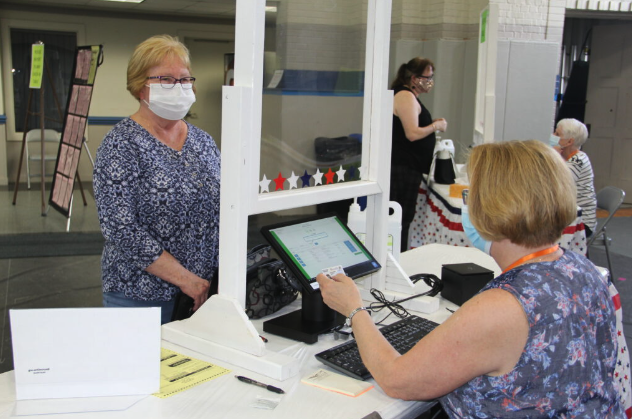
Melodee Ebbert, a pollworker at the Fort Atkinson Municipal Building, checks in a voter during Tuesday’s spring general election. Chris Spangler photo.
Our Take: Rest in peace, Officer McKee
(Originally published April 9, 2021.)
Fort Atkinson police officers are wearing mourning bands on their uniforms today.
It was 53 years ago, on April 9, 1968, when Patrolman David McKee Sr. lost his life while attempting to rescue a 16-year-old boy who had fallen into the Rock River from the downtown railroad trestle hear his home.
Witnesses reported that at 9:28 a.m., McKee was dispatched to the scene. Removing his gunbelt, cap, coat and shoes while running to the river, he jumped in and swam to Keith Nielsen. The boy appeared to be in shock and panicked.
Meanwhile, brothers Frank and Gerald Burghaus, who had been looking at cars at a nearby dealership, heard the commotion and also jumped into the frigid water, which caused Frank immediate cramping.
The cold water and swift current began taking its toll on the officer, as well. The boy slipped from Gerald Burghaus and Officer McKee’s grasps and disappeared beneath the surface.
The would-be rescuers started swimming toward the riverbank. The brothers were pulled out by bystanders. McKee was behind them, but was so exhausted that he was unable to reach the life preservers tossed to him by his chief or, ultimately, the bank.
Nielsen body was recovered about 30 minutes later, and McKee’s, with two hours.
The officer was 38 years old. He left behind a wife and six young sons, ages 3-16.
In one split second, an ordinary Tuesday during Easter vacation turned entirely unordinary for two families and Fort Atkinson as a whole.
More than a half-century has passed, but to many in Fort Atkinson, April 9, 1968, lives on. For some, it is a momentary observance while passing the black granite memorial to McKee at the edge of Lorman Bicentennial Park, but for those who were there, it is a scene indelibly etched in their memory.
Either way, let us take a moment today to salute this law enforcement officer’s bravery, selflessness and dedication to the job and the community he served.
May his sacrifice, and that of all who have and will follow him, never be forgotten.
Rest in peace, Officer McKee.
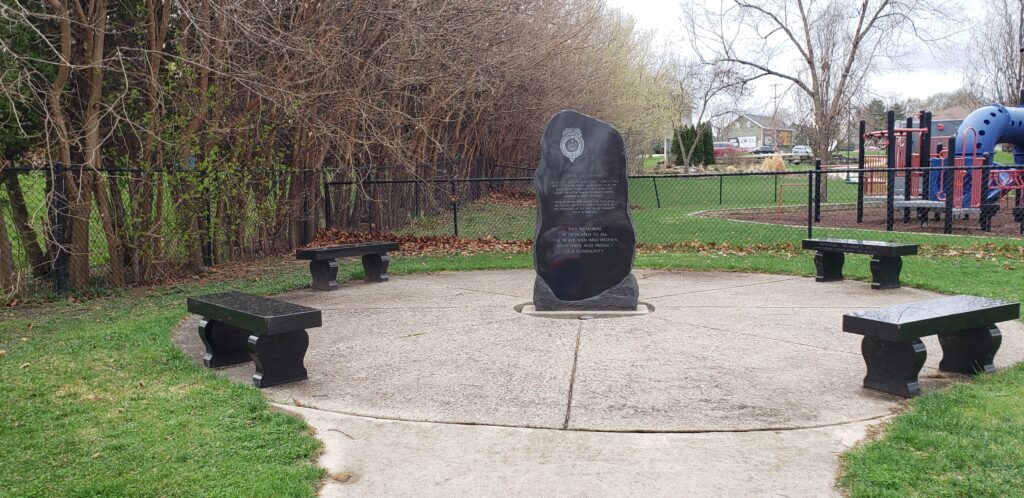
A memorial in Lorman Bicentennial Park dedicated to Patrolman David McKee and all those serving in Law enforcement. McKee died while trying to save a 16-year-old boy who had fallen into the Rock River April 9, 1968. He was the father of six boys, ages 3-16. The memorial is situated near a playground.
Chris Spangler photo.
South High Street Singers show choir rehearsal night in pictures, championship performance tonight
(Originally published April 9, 2021.)
Editor’s note: Fort Atkinson Online was invited to watch the Fort Atkinson High School South High Street Stingers show choir perform Friday during a final rehearsal before a championship competition which will be held tonight. A short story and 29 photos follow. A larger story about the group, their experience during the competition, and the path they took to form as a choir during a pandemic will follow.
The Fort Atkinson South High Street Singers, a grades 9-12 show choir, will be performing today in the “Championship Round” of a first-ever, virtual show choir competition.
Hosted by ShowChoirLive.com, the Fort Atkinson performers advanced to the finals, winning the distinction of “Grand Champion,” in their size category after competing against schools from several states, including Mississippi, Alabama, Ohio, Indiana and Wisconsin, in an earlier competition held in March.
The platform was designed to provide an opportunity for middle and high school performance groups to perform safely due to the COVID-19 global health pandemic, according to information released earlier by the School District of Fort Atkinson.
On Friday, the 38-member choir practiced on stage at the high school and performed for friends and family.
The group will perform Saturday night, and the performance will be live-streamed. Choirs will perform beginning at 6 p.m., and the Fort Atkinson group is expected to perform around 8:30 p.m.
In a telephone interview Friday, high school music teacher and choral director Craig Engstrom said the group is confident and ready to perform.
Photos of the Friday night rehearsal follow. A full story about the group, how it places on Saturday, and what it was like to build a choir during a pandemic will follow at a later date.
ForAtkinsonOnline.com wishes the choir and all its support teams and teachers the best of luck in tonight’s competition.
To watch the performance, use this link: https://buff.ly/2PKdnYQ.

Standing in the foreground during rehearsal with outstretched arms is Fort Atkinson High School South High Street Singers show choir performer and high school senior Elly Scheuerell.

Thirty-eight members of the Fort Atkinson High School South High Street Singers show choir perform during a dress rehearsal held Friday night.

Show choir performers Peter Velazquez and Elly Scheuerell, both seniors, sing during Friday night’s rehearsal.

High school junior Jayden Hawkins dances during Friday night’s rehearsal.

Show choir performer Sophia Guttenberg, junior, sings and dances.

The view from the band pit located behind the stage.

A Fort Atkinson High School trumpet player performs from the band pit behind the stage.

Fort Atkinson High School band members warm up before the rehearsal.

Stage crew member Grace Gustin waits off stage to hand a performer a prop.

Tech crew member Hailey Paske, senior, operates a board controlling stage lights.
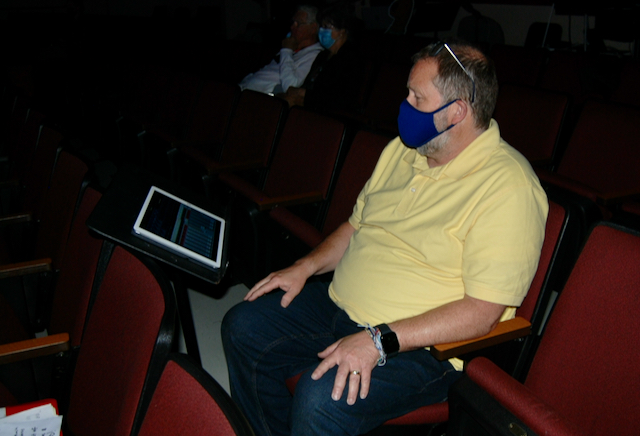
Fort Atkinson High School music teacher and choral director Craig Engstrom oversees the rehearsal.

Choral Director Craig Engstrom, left, and stage manager and technician John Collins take a breather between Friday’s rehearsal and a show for performers’ parents which followed.

Band members assemble before the rehearsal.

Show choir performer Ava Kleman, senior, sings during rehearsal.

Sophia Guttenberg, junior, pictured in the foreground, performs during the show choir’s Friday night rehearsal.

Show choir performers dance during rehearsal.

Stage manager and technician John Collins, far right, makes a video as the choir performs during a rehearsal held Friday night.

Seniors, Lewis Luciano, from left, and Gwen Hirtz sing and dance during rehearsal.
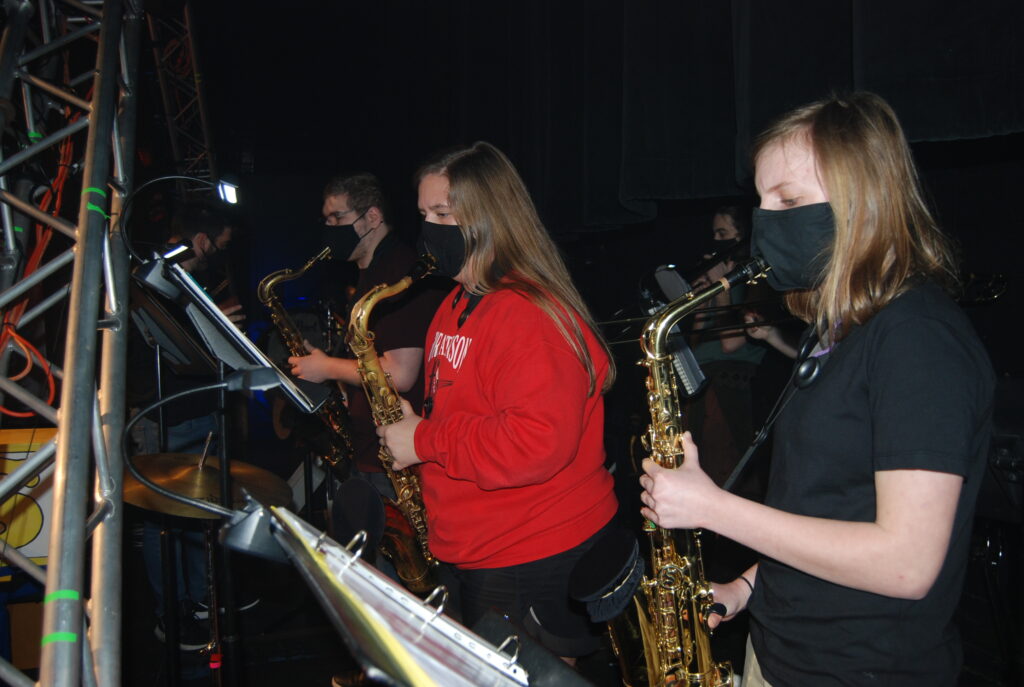
Saxophones are played from the band pit.

Sound board operator Alexsandria Olvera-Lara works from the back of the high school theater.
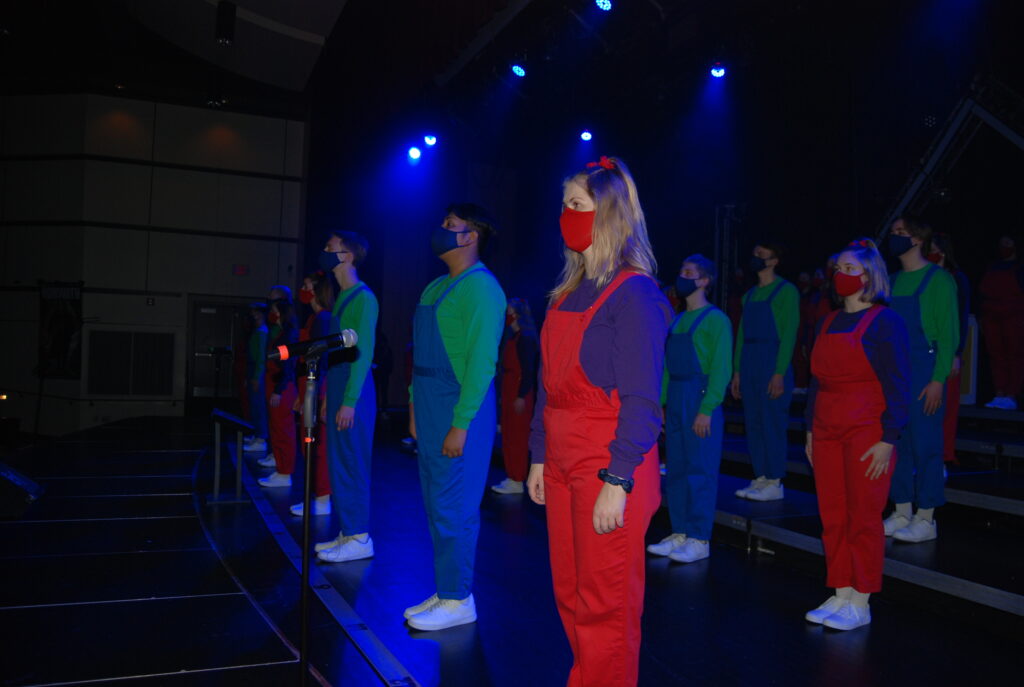
Performers stand, bathed in blue light, between songs.

A view of the stage from a technician’s perspective.

Seniors Silvester Velazquez, from left, and Mariah Eichenberg sing during rehearsal.

Senior Cam Grady, at right, performs during rehearsal.

Singing from a seated position is high school junior Matthew Sell.

Cole McDonald, junior, takes center stage as he dances with a prop.

High school senior Lauren Haas, front, left, dances during rehearsal.

High school music teacher and choral director Craig Engstrom offers final words of inspiration before the group performs one last time, exclusively for friends and family, before Saturday’s competition. The performance, given in-person, was held Friday and attended by about 50 people.
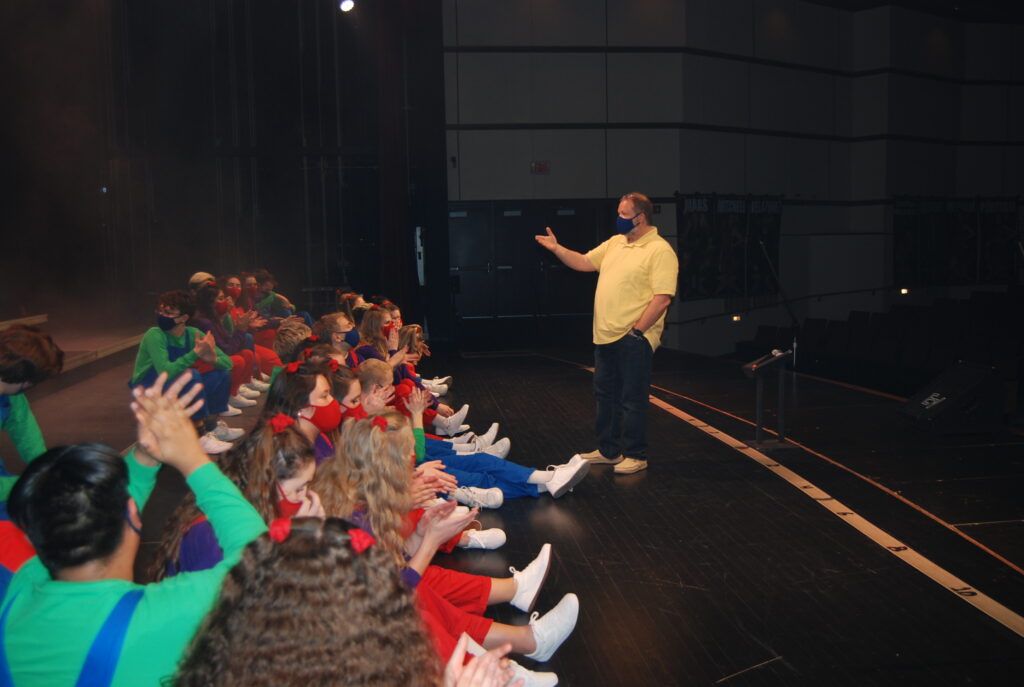
Singers and dancers applaud the performers in the band after their final rehearsal.
Kim McDarison photos.
New Barrie Elementary School principal announced
(Originally published April 12, 2021.)
Editor’s note: En español por debajo.
The School District of Fort Atkinson is pleased to announce that Justin Stewart has been named the new principal of Barrie Elementary School.
Stewart is currently an elementary teacher in the Whitewater Unified School District. He will succeed Brent Torrenga who has accepted an administrative position with Oostburg Christian School beginning with the 2021-2022 school year.
Superintendent of Schools Dr. Rob Abbott noted, “We are very excited to add Mr. Justin Stewart to our 1FORT Leadership Team and as the next Principal at Barrie Elementary School. After working through a very rigorous process that involved a screening interview, on demand scenario/performance task, in-basket exercise, a recorded school improvement plan presentation, an interview with Luther administrators, a Barrie building tour, an interview with elementary principals, and a final interview with representative Barrie staff members and families, Justin rose to the top of our 54 applicants.”
Mr. Stewart holds 14 years of educational experience as an elementary teacher. During his time at Whitewater Unified School District, he also served as a Teachers Rights Representative, Personalized Learning Grant Coordinator, Building Technology Coordinator, member of the Building Leadership Team, Summer School Administrator (Intern), and District-Wide Leader in Me Lighthouse Coordinator. Stewart holds a Bachelors of Science in Elementary Education from the University of Wisconsin – Whitewater (2006), and earned his Masters of Science in Educational Leadership from Cardinal Stritch University – Milwaukee in 2019.
Abbott added, “Not only does Justin have many successful years as an elementary classroom teacher in Whitewater, he has served in many building and systems level leadership roles that will serve our District well as we continue to improve teaching and learning for all of our students. Justin is the right person to move Barrie Elementary School forward as we launch and embrace a new results driven strategic plan this summer.
Upon acceptance of his new position, Mr. Stewart stated, “I am honored and humbled to be joining the School District of Fort Atkinson to serve as the next Barrie Elementary School principal. It is with much enthusiasm that I look forward to partnering and leading the Barrie school community to create amazing learning opportunities for our students each and every day. To that end, I am ready to join the 1Fort family in becoming a Barrie Bronco!”
“It is a wonderful coincidence that our top candidate also happens to already live in Fort Atkinson where he will be able to continue building upon his already strong community relationships. Justin and his family are invested in Fort, and we are excited to invest in Justin as he takes over the reins at Barrie,” Abbott continued.
Please join the Board of Education and the School District of Fort Atkinson in welcoming Mr. Stewart to his new position within our community.
En español
El Distrito Escolar de Fort Atkinson se complace en anunciar que Justin Stewart ha sido nombrado nuevo director de la Escuela Primaria Barrie.
Stewart es actualmente un maestro de primaria en el Distrito Escolar Unificado de Whitewater. Sucederá a Brent Torrenga, quien ha aceptado un puesto administrativo en la Escuela Cristiana de Oostburg a partir del año escolar 2021-2022.
El Dr. Rob Abbott, superintendente de las escuelas, señaló: “Estamos muy contentos de añadir al Sr. Justin Stewart a nuestro equipo de liderazgo de 1FORT y como el próximo director de la Escuela Primaria Barrie. Después de trabajar a través de un proceso muy riguroso que incluyó una entrevista de selección, un escenario/tarea de rendimiento a petición, un ejercicio en la cesta, una presentación grabada del plan de mejora de la escuela, una entrevista con los administradores de Luther, una visita al edificio de Barrie, una entrevista con los directores de primaria, y una entrevista final con los miembros representativos del personal de Barrie y las familias, Justin subió a la cima de nuestros 54 solicitantes.”
El Sr. Stewart tiene 14 años de experiencia educativa como profesor de primaria. Durante su tiempo en el Distrito Escolar Unificado de Whitewater, también sirvió como Representante de los Derechos de los Maestros, Coordinador de Subvenciones de Aprendizaje Personalizado, Coordinador de Tecnología del Edificio, miembro del Equipo de Liderazgo del Edificio, Administrador de la Escuela de Verano (Pasante), y Coordinador del Faro de Líderes del Distrito. Stewart tiene una Licenciatura en Ciencias en Educación Primaria de la Universidad de Wisconsin – Whitewater (2006), y obtuvo su Maestría en Ciencias en Liderazgo Educativo de la Universidad Cardinal Stritch – Milwaukee en 2019.
Abbott agregó: “Justin no solo tiene muchos años exitosos como maestro de aula de primaria en Whitewater, sino que ha servido en muchos roles de liderazgo a nivel de edificio y sistemas que servirán a nuestro Distrito mientras continuamos mejorando la enseñanza y el aprendizaje para todos nuestros estudiantes. Justin es la persona adecuada para hacer avanzar a la Escuela Primaria Barrie mientras lanzamos y adoptamos un nuevo plan estratégico orientado a los resultados este verano.
Al aceptar su nuevo cargo, el Sr. Stewart declaró: “Me siento honrado y humilde de unirme al Distrito Escolar de Fort Atkinson para servir como el próximo director de la Escuela Primaria
Barrie. Es con mucho entusiasmo que espero asociarme y liderar la comunidad escolar de Barrie para crear increíbles oportunidades de aprendizaje para nuestros estudiantes todos los días. Para ello, estoy listo para unirme a la familia de 1Fort y convertirme en un Bronco de Barrie”.
“Es una maravillosa coincidencia que nuestro principal candidato también resulta que ya vive en Fort Atkinson, donde podrá seguir construyendo sobre sus ya fuertes relaciones con la comunidad. Justin y su familia han invertido en Fort, y estamos emocionados de invertir en Justin mientras toma las riendas de Barrie”, continuó Abbott.
Por favor, únanse a la Junta de Educación y al Distrito Escolar de Fort Atkinson para dar la bienvenida al Sr. Stewart a su nueva posición dentro de nuestra comunidad.

The show must go on: Building a show choir during a pandemic
(Originally published April 13, 2021.)
By Kim McDarison
Within the world of eduction, like most of the rest of the world, little escaped the concept of “new normal” after the arrival of COVID-19.
For Fort Atkinson High School music teacher and choral director Craig Engstrom, until March 2020, programming was taking a traditional path, and that month, he said, he held auditions and chose the performers who would become the members of the South High Street Singers 2020-2021 school year show choir.
And then everything changed.
The school buildings within the School District of Fort Atkinson closed for in-person learning, and students and teachers alike learned a new system: virtual learning.
Engstrom, like choral directors across the country, wondered how he would provide opportunities for his students, both in terms of learning and performing.
He and his colleagues began networking, he said, sharing ideas through email, and slowly, a new kind of stage was set.
A world before COVID
In a world before COVID, Engstrom said, students coming into the high school choir program would audition for placement.
Most of the students interested in choir were previously involved with choirs at the middle school level, he said.
For girls, there are opportunities in the high school treble choir, and traditionally, more girls than boys are interested in choir, so when auditioning for show choir, he said: “I never turn boys away.”
After March auditions in the previous school year, those joining the South High Street Singers — a grades 9-12 show choir named after the location of the district’s former high school building used today as the district’s middle School — attend 80 minutes of class time, every other day. During that time, Engstrom said, the students learn music and choreography.
Each year, students typically practice for two performances. Work on the first one typically begins in the beginning of the school year and ends in the middle of March, after which the choir begins working on a second show.
“Under normal circumstances, we put in hundreds of hours practicing,” Engstrom said, with time found during the school day, evenings and weekends.
Then came COVID
Tracing steps taken from the beginning of the school year to a virtual competition held Saturday, April 10, Engstrom said: “I never thought we’d get to this point this year. We have been working on the music since July. The thought that there would be any performance was a daunting thought. When COVID came, everybody canceled their (show choir) competitions. We, under normal circumstances, hold one as well. So the thought that we would have something like this (virtual competition) made things more normal.”
Looking back, he said: “I knew in my mind we would perform, but how it would be done, in-person, or prerecorded, that was a question.
“We get bombarded with emails, and the ShowChoirLive idea was brand new. I know the director,” he said, adding, “high school choir directors have a pretty good network.
“Our choreographer, Ben (Schrank), who was originally from Milton, but today lives in Iowa, and I started thinking about music in April of last year. We didn’t know what to expect with COVID so we were just moving forward with ideas. When March (2020) came, we began thinking about how it all might change.”
In choosing a theme of the virtual performance, Schrank and Engstrom landed on “Kids of the Future,” Engstrom said, because they wanted to send the message: “Don’t forget what it’s like to be a kid, and as you grow older, you can’t let that disappear. It was also meant to tell kids it is going to get better.”
To prepare for the virtual competition, he said, he took the same steps he normally would.
By the time virtual, at-home learning arrived, Engstrom said, students had already attended an in-person summer camp in July where they learned music.
“We had a choreography camp on the second week of school and they started learning the choreography. So we were in school for two weeks before we went virtual. The kids were in class and Ben was remote. They were with Ben this way for five days. After that, Ben would make videos of choreography and they watched the videos,” Engstrom said, noting that the hybrid model, bringing a combination of in-person and virtual learning, began right after Christmas.
When students began returning to school, Engstrom said, he was eager to see how the kids would perform as a group.
“We were back full swing the first week of January, but parents had a choice to keep students home and learning virtually, so we had a few students who were still learning from home,” he said.
“It was the beginning of January and at first I wanted to sing so we rehearsed vocally. They hadn’t sung the songs together since the first week of school. When we did the choreography,” he recalled, “it was pretty clean.”
When asked if he thought the students believed they could practice for a performance virtually, Engstrom said: “Yes. You could just tell how much they love doing it, so deep down, they are going to grab onto what they could do. I wondered: ‘Will they lose interest?’ I was surprised when we came together again as a group at how well they did. These kids are pretty self-motivated. This group, as a choir, was a particularly strong and dedicated group. It has a lot of seniors. Seniors are usually very good leaders and with so many, we had a particularly dedicated group this year.”
In February, Schrank joined the group remotely while they were in class for a couple of days to help fine tune choreography.
On with the show
In March of this year, the Fort Atkinson High School South High Street Singers competed in the first-ever virtual national show choir competition hosted by ShowChoirLive.com.
The group competed against schools from Mississippi, Alabama, Ohio, Indiana, and Wisconsin, winning Grand Champion and earning a place in the finals, which were held virtually on Saturday.
In the final round, the group placed fourth, Engstrom said.
They also learned on Saturday about their placement is a second virtual competition hosted by a high school in Arlington Heights, Ill. In that competition, they also earned fourth place.
The students learned together on Saturday of their placement in both competitions, Engstrom said, adding that the reaction was bittersweet.
“They were a little disappointed in the placements so there were some mixed emotions. They knew they did an amazing job, but judging for show choirs is so subjective. You never know how you will place from one competition to another. That is the worst part about the whole show choir experience. There really is no criteria when it comes to judging, and there are subcategories within categories, and they are scored with points,” he said, adding: “The kids were phenomenal. It was an amazing show. I couldn’t have asked them to do anything better.”
A final act
For Engstrom, each milestone of this school year is also bittersweet, as it marks a final act: after 32 years as a choral director, with 30 of those years spent within the School District of Fort Atkinson, he will be retiring at the end of this school year.
Looking at this COVID year, as his final year of teaching, he said: “It has been really interesting because I’m seeing things I know I will really miss. Teaching singing and teaching virtually through COVID has been so difficult. It has been difficult to figure out a good way to do it, and it particularly affected concert choirs. It has been a strong disadvantage for them. It has been beyond challenging, tiring. But, I’ll miss the kids more than anything.”
Among the most challenging parts, he said, was teaching the kids to dance and sing while wearing a mask.
“Singing is such a visual thing. Your body is your instrument, you do a lot with your mouth. We did have to find masks that were more breathable,” he said.
Among his last acts as choral director, he said, he will be selecting the students who will form next year’s show choir.
Learning to teach virtually has brought some benefits, he said.
“It has been amazing to teach choreography virtually and I could see that happening in the future. You’d never think of that in the past. It opens doors for Ben who can offer camps online,” Engstrom said, adding that ShowChoirLive.com, the organization that hosted the national competition, has already announced that it will host the virtual choir competition again, regardless of what happens with COVID-19.

School District of Fort Atkinson music teacher and choral director Craig Engstrom gives performers in the South High Street Singers show choir some last minute instructions before they perform for friends and family Friday, April 9. The group took fourth place in a national competition held virtually Saturday, April 10.
Virtual production of ‘Gruesome Playground Injuries’ features Fort actor
(Originally published April 17, 2021.)
By Kim McDarison
Love. Finding it, defining it, embracing it, these are all components of the typical love story, but “Gruesome Playground Injuries,” a play written by Rajiv Joseph, is a love story that’s anything but typical.
The one-act, eight-scene play runs about 75 minutes long and tells the story of two people who are traveling a bumpy, if not heartbreaking, path together.
Characters in the two-person play are brought to life by Fort Atkinson resident Alyssa Hannam, who plays “Kayleen,” and Appleton-area native Johnathon Krautkramer, who plays “Doug.”
“This story is about two people over the course of 30 years, when they are between 8 and 38 years old, and how that relationship can change,” said play director and Whitewater Arts Alliance Theatre Outreach Coordinator Matt Denney.
The play is being produced by the Whitewater Arts Alliance and will be available for viewing online over a 24-hour period between 5 p.m. April 24 and 5 p.m. April 25.
Denney described the presentation as “like a stream that is constantly available.” Ticket holders can watch the show as many times as they like during the 24-hour period, after which it will no longer be available for viewing. That, he said, is a matter of copyright provisions, as the Whitewater Arts Alliance has purchased the rights to present the play for a limited showing.
Tickets for the play are available online, and those purchasing tickets are invited to “pay what you can,” Denney said. Proceeds will be used to support the Whitewater Arts Alliance and its programming. Tickets may be purchased at: http://bit.ly/WAAGPI0421.
A former theater teacher working on a master’s degree at the University of Wisconsin-Whitewater, Denney said the concept of allowing ticket purchasers to name their own price was developed as part of a community outreach initiative. As a youngster growing up in Las Vegas, he said, he wanted to attend shows, but often could not afford them.
In his role as community outreach coordinator, he said: “My job is to integrate theater into the community. Theater and community are very intertwined with each other, and my role is to explore that further.
“For me, my overall goal is to make theater as accessible as I can to a wide audience. So I let anyone pay whatever they want. It doesn’t matter to me as long as they can view the art I’ve put forward.”
While the Whitewater Arts Alliance caters to a broad array of artists, he said, it also has access to what he described as “a beautiful stage,” which, he said, “was not being utilized.”
The play, which was recently performed without an audience on the Whitewater Arts Alliance stage, was filmed for virtual viewing.
The play was filmed by UW-Whitewater graduate Ashley McDarison, who holds a bachelor’s degree in communication, with an emphasis in electronic media, and a minor in film studies, earned in 2018. Today McDarison, 25, a town of Richmond resident, operates McDarison Productions.
Exploring ‘experimental theater’
As the artistic director and founder of MD Virtual Ensemble, a Las Vegas-based production company exploring “experimental theater,” Denney said, he has experience with producing virtual performances, and also had some familiarity with this particular play.
“I love doing weird theater,” Denney said. MD Virtual Ensemble has been producing at least one virtual production monthly since September of last year.
“We utilize actors from all over North America for our shows. Because it’s done virtually, actors don’t have to be where we are,” he said.
While actors, as in the case of Hannam and Krautkramer, might not know each other, Denney said, “there’s a shared experience and art form.”
With the arrival of COVID-19, he said, Zoom and live-streaming have become useful tools.
“We acknowledge that COVID-19 almost becomes a character … There is a sense of fear when people get close and we play around with that. It’s very different now when people get close,” he added.
Casting Hannam and Krautkramer
To cast this play, Denney said, he found local talent through Facebook on pages made specifically for local actors looking for work. He chose Hannam and Krautkramer for their roles after auditioning about a dozen candidates, he said, noting that the two immediately were standouts as the right fit for the two roles.
For Denney, the process started in February.
“It was a very traditional theater audition. They came prepared with one monologue and then they each did a cold read, which is where I give them a script that they haven’t seen before. They just knocked it out of the park. What I am looking for is: can an actor make a choice? Can they act with no preparation? They could very early on,” Denney said.
Describing her acting career and role in the play, Hannam said her interest in performing began to take form in middle school when she was encouraged by her friends to join the choir.
At Fort Atkinson High School, she said, she was a member of the Lexington Street Treble Choir in her sophomore and junior years, and became a member of the South High Street Singers her senior year.
She next attended UW-Green Bay, graduating in December of 2020 with a double major in musical theater and English, and has since been involved with virtual productions, including a summer production of “The Taming of the Shrew,” created by Play-by-Play Theater in Green Bay.
The show had a cast of about 10 characters and rehearsals were conducted through Zoom, Hannam recalled.
When she saw the audition notice placed by Denney on Facebook, she said, she was drawn to the role of Kayleen.
“I read the play a couple of years ago,” Hannam said, adding that playing Kayleen was a “dream role.”
“She is a really complex character. On the surface, she pushes people away, but she is very nuanced and has a soft side to her, and I always wanted a chance to play around with that,” Hannam said.
She also found some of herself in the character, she said, especially when looking at Kayleen’s defense mechanisms.
Krautkramer, too, found common ground between himself and his character.
A graduate of Fox Valley College where he earned an associate’s degree in criminal justice, he said he was impressionable as a youth, often announcing to his mother, after becoming influenced by whatever he had most recently seen on TV, that he wanted to be a fireman or an astronaut.
He developed an interest in acting during his childhood, he said, but put that on hold, thinking instead to develop a career in something society deemed as more likely and lucrative work.
At the age of 32, he said, over the last 10 years, he became active in acting again, picking up work with independent projects that were being produced in Milwaukee and Chicago.
Most of his projects have been in film rather than theater, but, he said, he viewed the Gruesome Playground Injuries production as sort of a hybrid, using both techniques.
“This play was definitely a hybrid. We used camera angles and did only two takes per scene to keep an authentic theater feel. Working with both concepts was a good transition back into theater for me. It was comfortable,” Krautkramer said.
Krautkramer said he did not have familiarity with the play or his character until he was invited to audition for the play.
The father of three children, one night, while he rocked his six-month-old baby to sleep, he said, he read the play, twice, and found himself relating to the role.
Of his character, Doug, Krautkramer said: “He’s more relatable to me than I would like to admit. He is a daredevil and he likes being the center of attention. He is very unafraid, outspoken and sometimes unfiltered. Sometimes, I could relate to him too much.
“He was a fun character. Even with (the play’s) melancholy side.”
Of the play, he said: “It is not your typical love story, so you avoid some of those clichés. The characters are complex and that makes them very real.
“This is the largest amount of work I’ve put into a project. Typically the projects I’ve worked on have bigger casts than this. When you have a big collaborating team, the weight of the show is spread across many hands. This one relies so heavily on you and the other person. It is more intimate because it’s a small team.”
‘Art should make you feel something’
“The relationship between these characters is so relatable. Art should make you feel something by the end of the show. They go through so much trauma and so many things,” Denney said.
Denney said he began working with professional productions on the Las Vegas strip when he was 17.
He was cast in a production called “Awesome 80s Prom.”
“It was a production from New York called immersive theater where the audience comes and enjoys a prom from the 80s every single night. It’s interactive theater.”
Denney said he was a senior in high school when he found his love of theater education. He earned a bachelor’s degree in secondary education with emphasis in theater from the University of Nevada-Reno in 2018.
He described MD Virtual Ensemble as “my little brain child from college,” noting that there were only two other students pursuing his major and the program did not have a directing requirement.
“As a teacher, you need that step,” Denney said. He and a classmate began the endeavor by producing a two-man show. That “kickstarted” the production company in 2017, he said.
After graduating, he served for a year as a theater teacher at Damonte Ranch High School, which emphasized a curriculum in performing arts.
Denney worked while in college as a resident assistant, which, he said, helped mold his career path.
After college, he was looking for an adventure — something different, he said — and that’s when he found his graduate program at UW-Whitewater.
Today, he works as a residential learning advisor at UW-Whitewater, guiding and advising student leadership in the resident hall and working with the resident hall associate.
He will graduate in May with a master’s degree in higher education leadership.
On with the show
For most involved with the production of Gruesome Playground Injuries, change is in the air.
The experience drew the cast and their director together, the three said. But like the play itself, this is but a moment in time.
For Denney, 25, after graduating from UW-Whitewater, he will seek out new adventures, leaving the area in search of work within the field of college administration and student affairs.
“My ambitions are to help students on a college campus. I don’t want to be a professor right away, but one day I want to be a professor of theater,” he said, adding: “I just really believe I’m here on this Earth to help students and help people become who they want to be.”
Of Denney, Krautkramer said: “Matt is so compassionate and caring. He is so worth knowing. I hope I work with him again.”
Of Hannam, Krautkramer said: “Alyssa, too, is just amazing and extremely talented, and she made it so easy to work opposite of her. She was an amazing scene partner.”
In viewing the play, Krautkramer said, he hopes audiences come to see that life can take people in all kinds of directions.
“When you first see it, it is fun and lighthearted and it ends on such a heavy note. You see the full spectrum of life in these characters,” he said.
As for his future, he added, he and his family, wife, Luella, and children, ages 5, 3 and 6 months, are making plans to move to Los Angeles where Krautkramer can pursue his acting goals.
“I guess I’ve learned from this experience that you only have one shot at this,” he said, adding that his wife has always wanted to live in California.
Hannam also described her experience with the play. To develop Kayleen as a character, she said, she used a journal, writing diary entries as though she were Kayleen. She is 22, but her character developed in the play to the age of 38. To help her determine what her character might be like at 38, she worked with written personality tests.
“I also wrote letters to Doug at different ages,” she said.
While she, Krautkramer and Denney were strangers when they came together to make this play, they have since become friends.
Looking to the future, she said: “My college roommate and I are planning to move to Chicago in a couple of months. I will be looking at trying to do more acting as a full time career as I can.”
For audiences, she said: “I don’t want them to feel sad, but I do want them to feel some kind of melancholy for these people who can’t seem to make their relationship work. There is always something getting in the way.”

Actors Johnathon Krautkramer and Alyssa Hannam rehearse. Kim McDarison photo.
Resurfacing on Highway N gets underway
(Originally published April 20, 2021.)
The Jefferson County Highway Department has begun a resurfacing project on County Highway N, from Walton Drive, Whitewater, to State Highway 106, east of Fort Atkinson.
Work is scheduled to continue for three months, with the existing deteriorated asphalt pavement to be pulverized, graded and compacted prior to the roadway being paved.
The Jefferson County Highway Department advises that during construction, the road is closed to through-traffic, but access is being maintained to local residences and businesses, as well as emergency vehicles.
A detour is posted utilizing Business Highway 12 (Main Street), State Highway 59, County Highway D and State Highway 106.
The road will remain closed until approximately the middle of July, depending on the weather.
Motorists are asked to use caution within the construction areas and to keep children away from the operations. Persons with questions may call the Highway Department at (920) 674-7265.

File photo/Chris Spangler.
City to hold public hearing on proposed water utility rate increase
(Originally published April 20, 2021.)
The City of Fort Atkinson has requested a water utility rate increase for its users from a state regulatory agency.
If approved, the increase will be used to pay for upgrading water mains in “various states of failure,” throughout the city, according to information released Tuesday by city engineer Andy Selle.
A public hearing about the city’s request, giving residents a chance to weigh in on the potential increase, will he held Wednesday, April 28, at 1 p.m. via conference call, according to the release.
The city has filed for an increase with the Public Service Commission (PSC) of Wisconsin, an independent regulatory agency responsible for the regulation of Wisconsin public utilities, including municipally-owned water utilities.
The City of Fort Atkinson has requested the PSC approve an increase in water rates to fund annual water main replacement at a rate of 1% per year, the release stated.
The PSC and the City of Fort Atkinson are seeking community input, and invite the public to participate in the upcoming public hearing relating to the city’s request for a rate increase.
To participate in the public hearing, dial (872) 240-3212, and use the access code 903-694-349#.
“Please plan to attend and support the city’s efforts to sustainably finance improvements to our water infrastructure,” Selle wrote in the release.
Some history
According to the release, the Fort Atkinson Water Utility was formed in 1901 and is comprised of 74.1 miles of water mains.
This network of underground pipes moves water to meet daily demands of residents, industry, and institutions and is a crucial component of fire suppression.
The city’s water mains are rapidly approaching the end of their useful life and need a dedicated, annual replacement program. Although some of the city’s water mains were installed as early as 1908, the oldest mains have an estimated useful life of 150 years and are performing well. However, water mains installed between 1944 and 1972 utilized an inferior production method and are now in various states of failure throughout the city, although barely beyond 60 years old. This vintage of water mains comprises 26% of the city’s distribution system, the release stated.
The PSC has traditionally required utilities to borrow for main replacement. This practice, when applied to a dedicated, annual, main replacement program, quickly results in substantial debt, large interest payments, and regular rate increases, the release continued.
The City of Fort Atkinson has requested the PSC approve an increase in water rates to fund annual water main replacement at the rate of 1% per year, without incurring the additional interest associated with borrowing. This would result in the replacement of about 3,900 feet of main per year, with an associated increase of about $14 per month for the average residential user and about 15% for the average industrial user. The city has not pursued a rate increase since 2013.
A durable network of water mains is a core component of a community that supports growth and the health and wellness of its residents and businesses. If approved by the PSC, the city of Fort Atkinson would be only the third utility in Wisconsin to fund main replacement in this manner. Maintaining a low cost and high quality of service for our rate payers is our most important priority, the release concluded.
District Facilities Advisory Committee meets; school building construction options discussed
(Originally published April 22, 2021.)
After a 14-month pause due to the COVID-19 pandemic, the Facilities Advisory Committee (FAC) convened Tuesday to continue the master planning process that began in 2019, according to a recent press release submitted by the School District of Fort Atkinson.
As stated in the release: “At the Tuesday night meeting, the committee reviewed what has and has not changed within learning communities globally, the local community, and the School District of Fort Atkinson’s new developing strategic plan. After a refresh of the work previously done by the group was discussed, the three narrowed options for (building construction under) consideration were reviewed as part of the next steps of the planning process.”
Three options
The three options under review, as outlined within Tuesday’s presentation, include:
• Building a new grades 6-8 middle school at the Luther site. The option comes at an estimated cost of between $108 million and $112 million.
• Modernizing elementary schools and building a new middle school. The option comes with an estimated cost of between $115 million and $119 million.
• Constructing two 4K-8 grade buildings, one at the Luther site and one near the high school. The option comes with an estimated cost of between $129 million and $133 million.
“Committee members were tasked with evaluating each of the three options with respect to the charge of the FAC, what we have experienced over the last year and what makes most sense long term for the community. This feedback will be discussed at the next FAC meeting on May 25th from 6-8 p.m. The presentation, options, agendas, and livestream link can be found on the district website,” the release continued.
Some history
According to the release: The Board of Education approved the Charter and Charge of a Facilities Advisory Committee for the 2019-2020 school year at the August 15, 2019 Board of Education meeting. The FAC is charged with developing a master plan that will guide the investment into district facilities to support future academic programs and create safe, healthy and vibrant learning environments. The livestream link of the event can be found on the district’s YouTube channel, the release continued.
The committee first met in September of 2019 to explore all short and long-term solutions based on the Facilities Assessment Report that was completed on April 24, 2019, which outlines the deferred maintenance needs completed by educational facility consultants CG Schmidt (CGS), and Plunkett Raysich Architects (PRA).
The FAC is composed of volunteers from all areas of the community, including students, community members, parents, business members, and SDFA team members. This group is open for public attendance.

The above slide presented during Tuesday’s Facilities Advisory Committee meeting outlines construction plans associated with building a new middle school.

The above slide presented during Tuesday’s Facilities Advisory Committee meeting outlines construction plans associated with modernizing the district’s elementary schools and building a new middle school.

The above slide presented during Tuesday’s Facilities Advisory Committee meeting outlines construction plans associated with building two new grades 4K-8 buildings.
The full meeting of the district’s Facilities Advisory Committee is posted above.
Council passes first reading of code restricting cats, dogs, rabbits sales in pet stores
(Originally published April 23, 2021.)
By Kim McDarison
An ordinance, written to prohibit the large-scale breeding of animals by restricting the sale of cats, dogs and rabbits in retail stores within the city of Fort Atkinson, passed a first reading during Tuesday’s Fort Atkinson City Council meeting.
Ordinances within the city of Fort Atkinson are subject to three readings unless council opts to waive future readings.
Fort Atkinson City Manger Rebecca LeMire noted that Council President Mason Becker had requested that the Ordinance Committee and the council review the ordinance, which, she said, was similar to one passed recently in the neighboring city of Whitewater.
Outlining discussion points, LeMire said, recitals in the draft of the ordinance included an understanding of the following:
- Most puppies and kittens sold in pet stores are from large-scale animal breeding operations that seek to maximize profits over the health and well-being of animals.
- Puppies and kittens bred in large-scale operations are often abused and neglected and are more likely to be sick and/or have behavioral issues.
- Pet stores that sell live puppies, kittens and rabbits often mislead customers and make false health and behavior guarantees.
- Current state and federal regulations of commercial breeding is severely lacking.
- Prohibiting the sale of dogs, cats and rabbits in pet stores in Fort Atkinson may reduce the demand for such animals bred in substandard conditions.
- Pet stores and pet supply stores in the city are following and supportive of this ordinance change.
- This ordinance will not affect a consumer’s ability to obtain a dog, cat or rabbit from a shelter, rescue operation or breeder.
The ordinance would provide a penalty for violations in an amount up to $1,000 per violation plus the cost of prosecution. The penalty would apply for each day the violation exists and for each animal sold, LeMire noted.
On April 8, LeMire said, the city’s Ordinance Committee reviewed a draft of the ordinance and recommended that the city council review and adopt it.
The city has also received a letter of support regarding the codification of the ordinance dated March 12 from Jeff Okazaki, executive director of the Humane Society of Jefferson County.
“The Humane Society of Jefferson County was deeply involved in the passage of the Whitewater pet sale ordinance as the first municipality in our state to adopt this language into its municipal code. We’re very happy to hear that the Fort Atkinson City Council is taking up the same effort,” Okazaki wrote in his letter.
Responding to questions, LeMire noted that no such retail stores selling cats, dogs and rabbits currently exist within the city. The action would be proactive, she said.
The ordinance would not apply to residents and breeders within the city who might offer puppies, kittens and rabbits for sale from home, LeMire said, noting that the code was designed to apply to retail establishments.
“The ‘large-scale’ is the business of animal breeding that’s sold in pet stores. So this would not prohibit somebody from breeding a cat or dog in their home,” LeMire said.
Council asked for distinctions as defined by the ordinance between small-, medium- and large-scale breeding. LeMire pointed to the second page of the draft ordinance, where definitions of an animal care facility, a rescue organization, and breeder/broker establishment were listed.
“It basically prohibits stores from selling dogs, cats and rabbits, but, no, there is not a definition of small or large,” LeMire said.
Becker said the consideration of the draft was initiated by a resident who had been involved with passing a similar ordinance in Whitewater.
“It’s not intended to penalize a … local person who has a dog or two and they raise their own litters and sell them. This is targeted towards prohibiting the sale of animals that come from those large-scale operations where the animals typically are not especially treated well, and they can have health issues, and so on, and obviously we don’t have any pet stores currently selling any types of these animals, so it is more preemptive than anything,” Becker said.
“We did receive positive feedback from the Humane Society of Jefferson County. The ordinance in Whitewater was supported by several other related organizations. I did also speak to somebody affiliated with Paddy’s Paws (a Fort Atkinson-based rescue shelter) and they were supportive of this as well,” Becker continued.
When asked if a small pet store owner who wanted to sell animals in the city would be allowed, Becker noted that, under the ordinance, they would not.
Pet stores could still offer animals for adoption through a humane society or other similar organization, LeMire said.
City Attorney David Westrick suggested council could address their concerns by adding language into the ordinance, that might make more clear a definition, by allowing, as an example, “up to five animals or something like that, or what would be typical for a litter of dogs.”
Councilman Paul Kotz said he realized it was not an issue currently, but, he said, if a retailer who wanted to sell pets responsibly came forward, the ordinance would prohibit it.
“If someone wanted to do it responsibly, they couldn’t,” he said, adding that the restriction, “seemed a bit odd.”
The ordinance only applies to dogs, cats and rabbits, and not other creatures like tropical fish, LeMire said.
Kotz recommended the ordinance undergo a full three readings to give “people more time to think about it.”
“A big part of the concern is where the animals originate from,” Becker said.
Becker, too, advocated for three readings of the draft.
Council voted unanimously to move the draft to a second reading which would likely take place during the next council meeting.

Public domain/file photo.
U-Haul property zoning change passes first reading
(Originally published April 24, 2021.)
By Kim McDarison
The Fort Atkinson City Council approved Tuesday the first reading of a proposed zoning map amendment affecting property on High Street.
The property, 1309 High St., is the former site of a Kmart store operated today by U-Haul. The property owner is looking to redevelop the site, Fort Atkinson City Zoning Administrator Brian Juarez said.
According to Juarez, the adjustment — changing the property from its current zoning of Urban Mixed Use to Planned Unit Development — is required to accommodate the various uses that are being proposed for the property.
The adjustment process will also include approval of changes made to the site’s general development plan and the specific implementation plan, Juarez wrote in a memo to council.
Juarez noted that the city’s Future Land Use Map, established as part of the city’s 2019 Comprehensive Plan, identified the U-Haul property as appropriate for planned mixed use. Such areas are intended to be vibrant urban places that function as community focal and gathering spots, he wrote.
The city’s Comprehensive Plan further identified the property for such mixed uses as commercial and residential buildings, including townhouses and condominiums.
“The proposed redevelopment of this site as a U-Haul storage facility does not align with these advisory development concepts,” Juarez wrote in his memo.
Describing the need for rezoning, Juarez said: “The planned unit development overlay creates a situation whereby the city can offer some additional flexibilities through rezoning.
“In exchange for that, the city has the ability to oversee this development process; they (U-Haul) do a little bit extra to make the area nicer, the neighborhood nicer, and work with the city in development to get an overall better product, and, at the same time, the city is able to give them some additional flexibilities in the zoning.”
Juarez said the process would work well for all concerned to bring about “a good development overall.”
Describing next steps, he said: “If this goes through the three readings (required to make changes to ordinances and language that amends them) and was approved, then basically from there we would begin the final steps towards finalizing our implementation plan in new development. We would get the chance to have a say in everything from green space, to signage, to the aesthetics of the development.”
Juarez noted that the city’s Planning Commission had reviewed the zoning change request and recommended its approval to council.
Answering questions from council about whether a detailed redevelopment plan had been shared by U-Haul with the city, Juarez said: “We’ve got quite a bit that we’ve looked at at the Planning Commission level and at the staff level. So we have a very good idea of what they’re offering and we’ve made a fair amount of demands on them as well to try to make this a really nice development.
“As we get to the general Implementation plans and the specific implementation plan process, we’ll have the ability to fine tune that and have more input.”
He added: “We all have ideas about what we think the highest and best use of that property would be in the long haul, whether or not we think that the storage is it or not, it is what we have currently available to us and it would make use of the property, so I think that this is certainly the best option for the city to pursue in quality development with that type of a use.”
“If for some reason this development does not move forward, the zoning is specific to this plan from U-Haul. So a different business could not take over the plan from U-Haul and move forward. They would have to apply for their own planned unit development zoning, and their own general development plan, and their own specific implementation plan,” City Manager Rebecca LeMire said.
“In addition to that, the planning commission is going to be the one having approval when it comes to the final implementation plans, so we will be seeing this process … there is the potential that if the city was not satisfied with something that was going on, we could simply say ‘no’ at that point,” Juarez said.
He didn’t anticipate that happening, he said, adding: “The plans that we’ve seen so far, and again we have not finalized all of it yet, but the plans that we’ve discussed, the modifications that they’ve offered so far, are definitely much improved over what has been there for quite some time.”
Councilman Bruce Johnson described the area as an entranceway into the city.
Council President Mason Becker said the area was one that has been discussed for several years, and while there were previously some different ideas for the property, he thought the usage by U-Haul fit with the surrounding businesses.

This property, 1309 High St., is the former site of a Kmart store operated today by U-Haul. Zoning changes are undergoing an approval process by the city to allow the redevelopment by U-Haul of the site. Kim McDarison photo.

A conceptual drawing of a proposed development at the U-Haul site on High Street.

Advisory development concepts for North High Street are shown above as developed by the city within its Future Land Use Map as part of the 2019 Comprehensive Plan. The area was intended for a mix of commercial and residential buildings. A new use, as proposed by U-Haul, does not align with this plan, Zoning Administrator Brian Juarez noted recently.
Council approves first reading to increase city’s Class A liquor license quota
(Originally published April 24, 2021.)
By Kim McDarison
The Fort Atkinson City Council approved on Tuesday a first reading of an ordnance amending the city’s code to allow for an increase in Class A liquor licenses.
The approval moves to a second reading the addition of six Class A Intoxicating Liquor licenses which could be made available to businesses within the city looking to sell liquor for consumption off-premise, typically in such places as gas stations, grocery stores, and liquor stores.
In a second action, the council approved the first reading of an amendment to city code, changing the authority to issue operators licenses from the city council to the city clerk.
A second reading of both amendments will likely come before council during its next meeting.
Ordinances, and amendments that change them, within the city of Fort Atkinson are subject to three readings unless council opts to waive future readings.
Defining alcohol licenses
During discussion associated with the consideration of increasing the number of Class A liquor licenses, City Clerk Michelle Ebbert noted that liquor licenses available within the city come in three classifications: A, B and C.
Class A and B licenses differ by the location in which the alcohol will be consumed. Class A licenses are issues to retailers who sell alcohol for consumption away from their premise, such as grocery stores, liquor stores and gas stations, while Class B licenses are issued to those selling alcohol for consumption on premise, such as restaurants, bowling alleys and bars.
Class C licenses pertain strictly to wine sales with consumption on-site in a restaurant, Ebbert said.
“Alcohol licenses are further defined by the quotation marks used. For example, ‘Class A’ refers to intoxicating liquor while Class ‘A’ refers to fermented malt beverages. These licenses can also be issued together as a combination license, most common for grocery stores,” Ebbert wrote in a memo to council.
Establishing quotas
In her memo, Ebbert noted that while state statutes establish quotas for Class B licenses within municipalities, they do not provide quotas for Class A.
Municipalities are able to establish their own quotas under state law.
In 2004, the city of Fort Atkinson reviewed quotas for Class A licensure and adjusted its numbers to reflect increases in population, which is the metric used to establish the number of available licenses offered within the city.
In 2004, the city’s population was 11,943, and the city made available 17 Class “A” Fermented Malt Beverages (beer) licenses. An ordinance adopted in that year allowed the city to issue one license for every 750 people living within the city. The number has not been adjusted since that time. Ebbert said, adding that during the 2020-2021 licensure year, 13 of the available licenses are in use.
Using the same population metric, in 2004, the city made available one “Class A” Intoxicating Liquor license for every 1,250 people living within the city. At the time, the city was able to offer 10 licenses. During the 2020-2021 licensure year, all 10 are in use.
Ebbert described the city’s population as “fluctuating” since quotas were established in 2004. In order to create an additional “Class A” Intoxicating Liquor license, she said, the city’s population would need to show an increase of 1,258 residents.
Over the last three years, the city has received two inquiries from retailers whom, Ebbert said, “have purchased properties and invested significant resources to make improvements.”
Ebbert noted that both the city’s License Committee and Ordinance Committee had reviewed three options that would allow the city to increase the number of available “Class A” licenses.
The three options take into consideration an increase in the city’s population, now estimated at 12,295 residents. They are:
Option 1: offering one license per 1,000 city residents for a total number of 12 licenses, which is an increase of 2 licenses since quotas were set in 2004.
Option 2: offering one license per 750 city residents for a total number of 16 licenses, which is an increase of 6 licenses since quotas were set in 2004.
Options 3: removal of the quota system entirely.
Those receiving a “Class A” license through the city are charged $500 per licensing period, running from July 1 to June 30. Fees are determined by state statute, Ebbert wrote.
The Ordinance Committee, after reviewing the options, recommended to council that it enact Options 2, creating the same standard for both Class A Liquor and Class A Beer licenses, Ebbert noted.
Authority to issue operators licenses
In a second action, the council approved a first reading, allowing the city clerk to approve applications for operators licenses.
The change would allow the city clerk to issue operators licenses, including those issued on a temporary or provisional basis.
During discussion, City Manager Rebecca LeMire noted that a change in state statutes was enacted in 2019, allowing municipal governing bodies to authorize a designated official, such as a clerk, to issue operators licenses.
Currently, she said, such licenses are approved by the city council.
An operators license, after approval, is issued to any person who wishes to sell, manufacture, brew or serve alcohol at a location within the city.
Those seeking a license are subject to review from city staff, including a background check made by the city’s police department, treasurer and municipal court, to, according to a memo to council written by LeMire, “ensure that the individual seeking the license does not owe any monies to the city.”
Applicants must be at least 18, may not have been convicted of a felony, or be considered a “habitual law offender,” and must complete a responsible beverage server training course. Those renewing their operators license must take the training course every two years. They are exempt from taking the course if they have held an operators license anywhere within the state of Wisconsin within the last two years, LeMire wrote in her memo.
While reviewing the changes to the city’s licensing ordinance, LeMire said, staff found that the ordinance lacked some details associated with the process used for issuing licenses at the local level.
Several points, relating to process, have been updated within the draft language, she said.
While changing the authority of issuing licenses from the council to the clerk was not expected to impact the city financially, LeMire said, it would save time for the applicants and establishments seeking licensed operators by removing a need to include application materials on city council agendas.
For those applicants denied a permit by the city clerk, new language within the drafted ordinance amendment establishes an appeal process which would bring the matter before city council, LeMire noted.
After a full-year hiatus, the Spring Jefferson Auto Swap Meet is back
(Originally published April 25, 2021.)
The 44th annual Spring Jefferson Auto Swap Meet & Car Show returned to Jefferson this weekend after a full-year hiatus due to the COVID-19 pandemic.
Sponsored by Madison Classics, the event at Jefferson Fair Park drew thousands of auto enthusiasts Friday through Sunday.
The number of vendors were capped at 70-percent capacity in accordance with state COVID-19 guidelines.
Following are scenes from opening day on Friday.

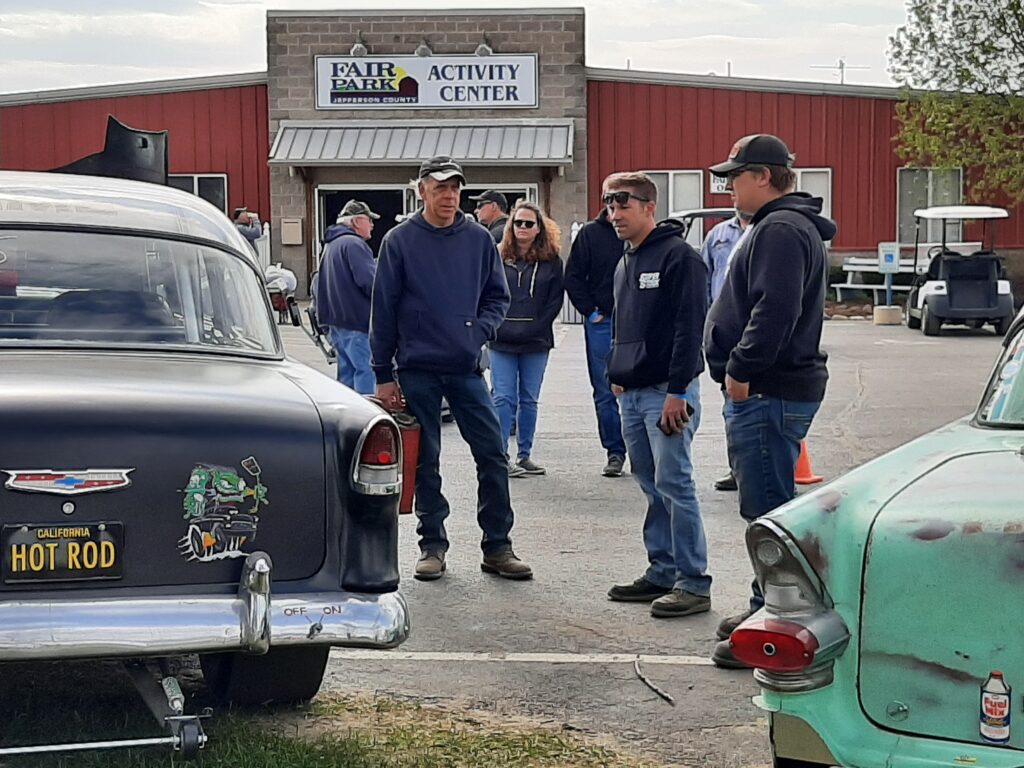



Photos contributed by Peter Spangler.
LeMire: Strong partnerships with state needed to fund critical city services
(Originally published April 26, 2021.)
Editor’s Note: The following information regarding a resolution passed by the Fort Atkinson City Council on April 8 was emphasized in an April 26 press release from Fort Atkinson City Manager Rebecca Houseman LeMire. It’s contents follow.
In support of a full partnership with the state, the Fort Atkinson City Council adopted a resolution in “support of a strong state and local partnership” at its meeting on April 8, 2021.
The resolution emphasizes the need for a strong partnership with the state to fund critical services like police protection, fire suppression, road maintenance, snowplowing, libraries, and parks that are core components of quality communities and attracting families and businesses.
“We believe a strong funding partnership with the state will facilitate the kind of opportunity for improvement to infrastructure and economic growth we aspire to see year-over-year. We have big plans for the future of Fort Atkinson. Restoring previous levels of state shared revenue will allow the City to keep our local property tax rate stable, which is a valuable step toward ensuring those plans come to life in ways that make our community a vibrant place to live, work, and play,” City Manager Rebecca LeMire said
Cities and villages in Wisconsin are funded primarily by property taxes and shared revenues from the state, and Fort Atkinson is no exception. The demands on municipalities, unfunded state and federal mandates, and inflation on the costs to buy products and materials for our services have not gone down. In fact, they’ve increased. At the same time, as demonstrated in the charts below, funding through the shared revenue program has decreased causing property tax revenue to increase.
The resolution adopted by the City of Fort Atkinson is based on a League of Wisconsin Municipalities model being adopted by cities and villages statewide, and the City is a League member. The league is a statewide member organization, advocating for cities and villages large and small, rural and urban.
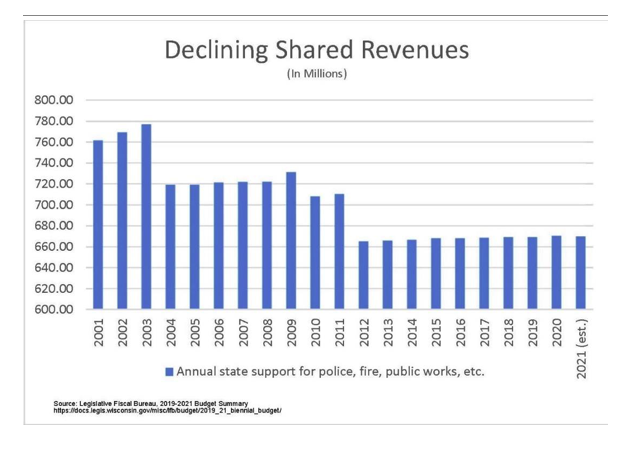
The above chart, shared by the City of Fort Atkinson, shows declining Shared Revenues from the state to municipalities (2001-2021). Submitted graphic.
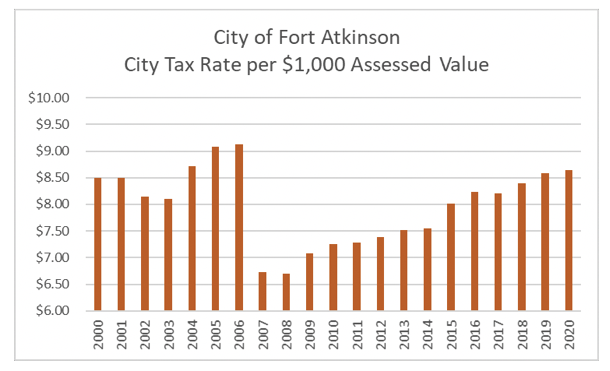
The above chart, shared by the City of Fort Atkinson, shows the City of Fort Atkinson Tax Rate per $1,000 of Assessed Value (2000-2020).
Note that there was a citywide revaluation in 2007 that increased the overall value of the city thereby decreasing the city’s property tax rate. The rate has steadily increased since then, as shared revenue from the state continues to decrease. Submitted graphic.
Milton police seek information about a car stolen from Kwik Trip
(Originally published April 28, 2021.)
Editor’s note: The City of Milton Police Department has released the following information.
On Tuesday, April 27, 2021, at approximately 4:28 p.m., the City of Milton Police Department was notified that a vehicle had been stolen from Kwik Trip at 603 West Madison Ave. When the officer arrived, the victim explained that she had just finished pumping gas, and a male walked between her and her driver’s door. He had something in his hand up by his chest that she couldn’t identify, but it could have been a small weapon of some sort. He told her to get back, jumped into the driver’s seat, and sped out of the lot. He was last seen driving south on Merchant Row, and evidence indicates that he continued south out of the city. Area law enforcement was immediately notified of the crime and searched for the vehicle. The vehicle was not located and is entered as stolen in state and national databases.
The male suspect is described as possibly Hispanic or Asian, approximately 5’9″ tall and 160 pounds. He had dark, chin-length straight hair with bangs. He was wearing dark jeans and a dark hoodie and had yellow neon gloves.
The stolen vehicle is a gray Honda Accord with distinctive stickers on the back. If you see the vehicle, call 911 to report it.
This case remains under active investigation.
If you can provide any information about this incident, please call the Milton Police Department at (608)757-2244 or Crime Stoppers at (608)756-3636. Citizens can also download the free “P3 Tips” app at the Apple store or Google Play store to submit crime tips anonymously.

The above photo has been released by the City of Milton Police Department showing of car stolen from Kwik Trip on Madison Avenue in Milton.
We Energies, WPS plan to buy Koshkonong Solar Energy Center
(Originally published April 30, 2021.)
We Energies and Wisconsin Public Service announced Friday that they are proposing to purchase the Koshkonong Solar Energy Center, a planned 465-megawatt solar and battery storage project in southeastern Dane County.
If approved, the $649 million project located south of Cambridge would be the largest renewable energy project in the state.
The Koshkonong Solar Energy Center would feature 300 megawatts of solar generation and 165 megawatts of battery storage, which can store solar-generated power and provide customers with “sunshine after sunset.”
The project is planned to be built in the Dane County towns of Christiana and Deerfield, north and east of Interstate 90 and intersected by U.S. Highway 12/18 and west of the Dane-Jefferson county line.
The companies filed the Koshkonong solar and battery storage proposal this week with the Public Service Commission of Wisconsin.
We Energies and WPS would own 90 percent of the project. Madison Gas and Electric would own the other 10 percent.

The map shows the location of the Koshkonong Solar Energy Center, a planned 465-megawatt solar and battery storage project in southeastern Dane County. Submitted graphic.
Council gives final approval to municipal code prohibiting sale of cats, dogs, rabbits in pet stores
(Originally published May 5, 2021.)
By Kim McDarison
An ordinance — written to slow the large-scale commercial breeding of animals by prohibiting the sale of cats, dogs and rabbits in retail stores within the city of Fort Atkinson — passed a final reading during Tuesday’s Fort Atkinson City Council meeting.
Ordinances within the city of Fort Atkinson are subject to three readings unless council opts to waive future readings.
During Tuesday’s meeting, council voted to suspend the rules and waive a third reading, making approval of the new language final after the second reading.
A community member and several representatives from various animal humane and rescue societies spoke in favor of the new ordinance before it was approved.
Among those speaking in favor of Fort Atkinson adopting restrictions for the sale of cats, dogs and rabbits in pet stores during the “public comment” portion of the meeting were Peggy Race, who described herself as a member of “Bailing Out Benji,” a nonprofit dog rescue organization begun in 2011, which focuses on education about large-scale commercial puppy breeders often called “puppy mills,” and Fort Atkinson resident Paula Brown, who said she also was a member of Bailing Out Benji and identified herself as the person who brought the need for the new ordinance to the attention of then-council president Mason Becker.
Also in attendance and in support of the language was Jefferson County Humane Society Executive Director Jeff Okazaki and The Humane Society of the United Sates – Wisconsin Director Megan Nicholson.
Those speaking in favor of the ordinance pointed to what they said were poor conditions in which large-scale commercial breeding can take place, overuse of animals used for commercial breeding, birth defects and other health issues that often go undetected by those who purchase the animals that result from commercial large-scale breeding and often result in large and unplanned expenses for new owners, and, in some cases, predatory lending practices associated with facilities that sell animals procured through large-scale breeding operations.
Council approved a first reading of the language during its previously held meeting on April 20.
Fort Atkinson City Manger Rebecca LeMire noted that Becker had, in advance of the April 20 meeting, requested that the city’s Ordinance Committee and the council review the ordinance, which, she said, was similar to one passed recently in the neighboring city of Whitewater.
During the April 20 meeting, council learned the following:
- Most puppies and kittens sold in pet stores are from large-scale animal breeding operations that seek to maximize profits over the health and well-being of animals.
- Puppies and kittens bred in large-scale operations are often abused and neglected and are more likely to be sick and/or have behavioral issues.
- Pet stores that sell live puppies, kittens and rabbits often mislead customers and make false health and behavior guarantees.
- Current state and federal regulations of commercial breeding is severely lacking.
- Prohibiting the sale of dogs, cats and rabbits in pet stores in Fort Atkinson may reduce the demand for such animals bred in substandard conditions.
- Pet stores and pet supply stores in the city are following and supportive of this ordinance change.
- This ordinance will not affect a consumer’s ability to obtain a dog, cat or rabbit from a shelter, rescue operation or breeder.
With the passage of the new language, the ordinance will provide a penalty for violations in an amount up to $1,000 per violation plus the cost of prosecution. The penalty will apply for each day the violation exists and for each animal sold, LeMire noted.
The city’s Ordinance Committee reviewed a draft of the ordinance on April 8, and recommended that the city council review and adopt it, LeMire said.

Second reading approved for U-Haul zoning change
(Originally published May 6, 2021.)
Correction: According to City Clerk Michelle Ebbert, the proposed zoning map amendment affecting the U-Haul property at 1309 High Street passed a final reading on May 4. According to Ebbert, a third reading of the ordinance was waived on that date. Fort Atkinson Online understood the ordinance to have passed a second reading only. We regret the error.
By Kim McDarison
A proposed zoning map amendment, changing zoning for the U-Haul property on High Street from urban mixed use to planned unit development, garnered second-reading approval from the Fort Atkinson City Council on Tuesday.
A first reading of the amendment was approved by council during its meeting held April 20.
Ordinances, and amendments that change them, within the city of Fort Atkinson are subject to three readings unless council opts to waive future readings.
A third reading for the zoning map change will likely come during council’s next meeting.
The property undergoing the zoning change process is located at 1309 High St. and is the former site of a Kmart store which is being operated today by U-Haul. The property owner is looking to redevelop the site, Fort Atkinson City Zoning Administrator Brian Juarez said during the April 20 city council meeting.
According to information shared with council in April, changing the property from its current zoning of Urban Mixed Use to Planned Unit Development is required to accommodate the various uses that are being proposed for the property.
The adjustment process will also include approval of changes made to the site’s general development plan and the specific implementation plan, Juarez wrote in a memo to council shared at both the April 20 and May 4 meetings.
Juarez noted during the April meeting that the city’s Future Land Use Map, established as part of the city’s 2019 Comprehensive Plan, identified the U-Haul property as appropriate for planned mixed use. Such areas are intended to be vibrant urban places that function as community focal and gathering spots, he wrote.
The city’s Comprehensive Plan further identified the property for such mixed uses as commercial and residential buildings, including townhouses and condominiums.
“The proposed redevelopment of this site as a U-Haul storage facility does not align with these advisory development concepts,” Juarez wrote in his memo.
Describing in April the need for rezoning, Juarez said: “The planned unit development overlay creates a situation whereby the city can offer some additional flexibilities through rezoning.
“In exchange for that, the city has the ability to oversee this development process; they (U-Haul) do a little bit extra to make the area nicer, the neighborhood nicer, and work with the city in development to get an overall better product, and, at the same time, the city is able to give them some additional flexibilities in the zoning.”
As previously reported by Fort Atkinson Online, in April, Juarez, describing next steps, said: “If this goes through the three readings (required to make changes to ordinances and language that amends them) and was approved, then basically from there we would begin the final steps towards finalizing our implementation plan in new development. We would get the chance to have a say in everything from green space, to signage, to the aesthetics of the development.”
He added: “We all have ideas about what we think the highest and best use of that property would be in the long haul, whether or not we think that the storage is it or not, it is what we have currently available to us and it would make use of the property, so I think that this is certainly the best option for the city to pursue in quality development with that type of a use.”
“If for some reason this development does not move forward, the zoning is specific to this plan from U-Haul. So a different business could not take over the plan from U-Haul and move forward. They would have to apply for their own planned unit development zoning, and their own general development plan, and their own specific implementation plan,” City Manager Rebecca LeMire advised council in April.
“In addition to that, the planning commission is going to be the one having approval when it comes to the final implementation plans, so we will be seeing this process … there is the potential that if the city was not satisfied with something that was going on, we could simply say ‘no’ at that point,” Juarez said.

U-Haul trailers are stored in the parking area at 1309 High St. The former Kmart store was purchased by U-Haul. The owners would like to build a storage facility on the site. Changes to the city’s zoning map are required to accommodate the proposed use.
Liquor license quota increase, change in licensure authority move closer to approval
(Originally published May 6, 2021.)
By Kim McDarison
Two ordinances amending city code, one allowing an increase in Class A liquor licenses issued by the city and a second giving the authority to issue operators licenses to the city clerk, passed a second reading during the Fort Atkinson City Council meeting held May 4.
A first reading of both ordinances was approved by council during its meeting held April 20.
Ordinances, and amendments that change them, within the city of Fort Atkinson are subject to three readings unless council opts to waive future readings.
A third reading for both ordinances will likely come during council’s next meeting.
Establishing new quotas
Language approved by council would increase the number of “Class A” licenses offered by the city by six new licenses, allowing for a total number of 16. The new language allows the city to offer licenses at a rate of 1 for every 750 city residents. The former formula, which, according to City Clerk Michelle Ebbert, has been in place since 2004, allowed the city to offer one license for every 1,250 people living in the city. The formula allowed the city to issue a total of 10 licenses. Currently, all are in use, Ebbert said during the April 20 meeting.
Ebbert noted that “Class A” licenses issued by the city are for intoxicating liquor sales through a retailer where the liquor will be consumed “off premise,” and is typically applied for by such businesses as grocery stores, liquor stores and gas stations.
The new quota system, if council chooses to approve the language during a third reading, will allow the quota used for “Class A” licenses to match the quota currently in place for Class “A” licenses, which, according to Ebbert, are defined as licenses used by the same types of businesses looking to sell beer.
Looking at the history associated with Class “A” licenses, Ebbert said during the April 20 meeting, in 2004, the city’s population was 11,943 and the city allowed one Class “A” license for every 750 people living in the city. The city currently has 17 licenses available under that quota system of which 13 are in use.
The proposed language, if a third reading is approved, will only affect “Class A” licenses.
During the April 20 meeting, Ebbert noted that those receiving a “Class A” license through the city are charged $500 per licensing period, running from July 1 to June 30. Fees are determined by state statute.
The Ordinance Committee, which has also reviewed the language, recommended to council that it create the same standard for both “Class A” liquor and Class “A” beer licenses, Ebbert noted.
Authority to issue operators licenses
In a separate action, council approved the second reading of language that changes the authority to issue operators licenses from the city council to the city clerk.
During the April 20 meeting, City Manager Rebecca LeMire noted that a change in state statutes was enacted in 2019, allowing municipal governing bodies to authorize a designated official, such as a clerk, to issue operators licenses.
Currently, she said, such licenses are approved by the city council.
An operators license, after approval, is issued to any person who wishes to sell, manufacture, brew or serve alcohol at a location within the city.
Those seeking a license are subject to review from city staff, including a background check made by the city’s police department, treasurer and municipal court, to, according to a memo to council written by LeMire, “ensure that the individual seeking the license does not owe any monies to the city.”
Applicants must be at least 18, may not have been convicted of a felony, or be considered a “habitual law offender,” and must complete a responsible beverage server training course. Those renewing their operators license must take the training course every two years. They are exempt from taking the course if they have held an operators license anywhere within the state of Wisconsin within the last two years, LeMire wrote in her memo, which was shared with council on April 20.
While changing the authority of issuing licenses from the council to the clerk was not expected to impact the city financially, LeMire said, it would save time for the applicants and establishments seeking licensed operators by removing a need to include application materials on city council agendas.
For those applicants denied a permit by the city clerk, new language within the drafted ordinance amendment establishes an appeal process which would bring the matter before city council, LeMire noted.
The language must pass a third reading before it is added to city code.
RKLD chair: spring water levels nearing mandate, Albion boat launch enthusiasm slows
(Originally published May 11, 2021.)
Editor’s note: The following information regarding the Lake Koshkonong and Rock River spring water levels and a committee formed to develop recommendations for a proposed Dane County boat launch has been submitted by Alan Sweeney, Rock Koshkonong Lake District (RKLD) Board of Commissioners chairman.
Water levels
As we move into the middle of spring, there are concerns and questions about the water level of Lake Koshkonong and the Rock River. After a heavy snowpack, followed by a no-runoff snowmelt with rainfall 3-plus inches below normal, we have a water level that has not been experienced in years, yet we are still exceeding our mandated winter maximum, as of May 6, 2021, by .16 feet. Winter and summer water levels were established by the Wisconsin Department of Natural Resources (WDNR) for a balance of recreational, environmental and ecological concerns. The mandated levels are the result of WDNR operating orders at the Indianford Dam. Winter operating orders, for a maximum of 776.0 feet above sea level, are in effect from September 29 until June 14 of each year. The Rock Koshkonong Lake District (which is charged with operating the Indianford Dam and maintaining the mandated water levels) has not reached this mandated level for many years and the proximity to that level is the result of the 2021 spring weather conditions.
Since the establishment of RKLD, the district has struggled with water discharge capacity at the Indianford Dam resulting in minor and major flooding with millions of dollars in property damage as well as frequent slow-no-wake orders. In January, the RKLD Board of Commissioners was successful in an application for grants to increase the water flow capacity of the Indianford Dam. Qualifying for this grant will help RKLD complete a water control project which will add six gates at the powerhouse structure at Indianford. The additional water control will open the discussion of higher water levels during the recreational periods on Lake Koshkonong and the Rock River and better meet the winter level goals for a healthy lake and river system.
Boat launch
For three months the RKLD board has been in discussion with the Town of Albion, in Dane County, about a proposed boat landing on the northeast side of Lake Koshkonong at Bingham Road. The negotiations regarding land purchase, construction, ownership, maintenance and the need for this landing have come to an impasse. A small group has been formed to develop recommendations to be presented to the RKLD board, Town of Albion and Town of Sumner to reach an agreement. The committee will consist of two members appointed by the Town of Albion, two members appointed by the Town of Sumner, in Jefferson County, and two appointed by RKLD.
I am grateful to the RKLD Board, our administration for the hard work these volunteers offer for the efficient and open operations of this lake district. This group has accomplished much in two short years for operations and opportunities and a new standard of management of your lake district.

Indianford Dam, file photo by Kim McDarison.
Enbridge: ‘No release is acceptable, we are working to make this right’
(Originally published May 19, 2021.)
Editor’s note: Trent Wetmore, Enbridge director of Midwest Region operations – Superior Wisconsin, has submitted the following “Line 13 Update from Enbridge.”
The safe and reliable delivery of energy we all use is important to those of you reading this letter, but it is paramount to every single team member at Enbridge. No leak is acceptable, and we know people are concerned about the release of light hydrocarbons at a valve site near Fort Atkinson. We apologize for any concerns or inconveniences this may have caused anyone living in this area and want to assure you that we are taking the appropriate steps to remediate the site and gain back the trust that we have worked so hard for over 70 years to earn.
To start, I think it would be helpful to explain the status of our investigation and remediation, and the next steps in our ongoing work at the site. Let’s begin with how the leak was discovered.
Our workers are highly trained and focused, and safety is always job one. Every person working at our facilities wears a variety of personal protective gear to keep them safe, including a personal gas meter that sounds an alarm when it comes into contact with different types of vapors. It was an alarm on an employee’s meter during a routine inspection that initiated our investigation in April of 2019.
The cause was narrowed to a faulty fitting on a valve which was repaired in the spring of 2019. Based on data gathered at the site immediately following discovery, it was estimated to involve a small release of less than two gallons of light hydrocarbon which is below the federal and state reporting threshold. Light hydrocarbon, or diluent, is similar in nature to white gas or camping fuel used in a lantern or portable stove. It is used to blend with heavy crude petroleum to reduce its viscosity to make it “thinner” and more efficient to transport by pipeline.
Several excavations were performed to remove impacted soil, expose the affected valve components, and perform the necessary repair. Results of those excavations indicated very little residual impact to soil and no groundwater was encountered. Further investigation included 27 soil borings, installation of temporary and permanent monitoring wells, and groundwater monitoring. This work resulted in a recalculation of the volume released at approximately 29 barrels. As information was received from our ongoing work at the site, we updated appropriate regulatory authorities, including the Wisconsin Department of Natural Resources (WDNR).
Enbridge has been actively working with the WDNR on a Supplemental Site Investigation Work Plan and an Interim Action Work Plan that are planned to be implemented upon agency approval. We have sampled 17 potable wells within 1,500 feet of the site, and an artesian well and can report no components of light hydrocarbon were detected in any of the well samples.
Ongoing monitoring indicates the release is contained within close proximity to the leak source. Upon approval of the submitted work plans, we anticipate final confirmation of the limited extent of environmental impacts will occur and final remediation will be designed and implemented at the site. As we’ve proven over our more than 70 years of operating through this area, we’re committed to do the right thing to ensure we are taking care of this issue.
Again, no release is acceptable. We are working to make this right and will update local governments, landowners and agencies as work continues. We are grateful for the relationships we have developed over the years we’ve operated here and thank those of you who have expressed your confidence that we will continue to do the right thing as we always have.
Trent Wetmore
Enbridge Director of Midwest Region Operations – Superior Wisconsin
Through the looking glass: a city reflected in art
(Originally published May 21, 2021.)
Through June 1, visitors to downtown Fort Atkinson can walk several blocks of the city’s Main Street while reflecting upon student art.
Several pieces, created by K-12 students in the School District of Fort Atkinson and students attending St. Joseph’s Catholic School, have been selected for viewing and placed within the windows of downtown businesses. The concept was developed as a response to the COVID-19 pandemic, as organizers looked for a community-safe way to continue the traditon of the annual Ernie Pope Art Show, which is in its 30th year.
Organized by School District of Fort Atkinson art educator Angie Szabo and sponsored by Fort Community Credit Union (FCCU), AC Business Media and Nasco, the event will culminate with an awards ceremony to be held in Barrie Park, June 1, at 5:30 p.m.
Visitors to the city’s downtown are invited to view the art and vote for their favorite piece by using QR codes found in the store windows near each art piece. Votes will be tallied and a new recognition, called Popular Choice, will be awarded during the June 1 closing ceremony, along with recogitions given in several other categories. Art recogized in those categories will be selected by a panel of judges.
Awards are secured through a fund donated to the Fort Community Foundation in memory of Ernie Pope, and an award sponsored by Robert Farrell in honor of his mother, June.
Art can also be viewed and Popular Choice votes placed through the school district’s website: 1fortart.com.
Businesses with art in their windows include: Cold Spring Design, Rock River Optical, Piper Mae, Feather Your Nest, Bergey Jewelry, Humphrey Floral and Gifts, Big Bluestem, Tuttles Hallmark, Hometown Pharmacy, Edward Jones, JM Carpet, Bridge/Good2Go, Mike Foester Real Estate, Rogers and Westrick Law Office, Krueger Jeweler, Enlightened Healing, Margraf Collection Agency, Bare’s Fort Tax Service, Inc, Five Star Antiques Mall, and Verlo Mattress of Fort Atkinson.
Who is Ernie Pope?
Ernie Pope was a strong supporter of the arts. The Cygnus Ernie Pope Scholastic Art Awards, which carries Pope’s name, was begun 30 years ago.
Pope worked for Johnson Hill Press and believed that Fort Atkinson students had significant artistic talent and he wanted to encourage it. He approached the art teachers at the time and proposed the scholastic art awards. Sadly, Pope succumbed to cancer, but the show has continued, information shared by show organizers recently with Fort Atkinson Online stated.
Fort Atkinson Online recently toured portions of Main Street. Pictured below is just a sample of art viewable in the city’s downtown.












Kim McDarison photos.
New liquor license quota, authorization procedure garner final approval
(Originally published May 23, 2021.)
By Kim McDarison
A process begun in April to increase the number of “Class A” liquor licenses available within the city of Fort Atkinson from 10 to 16, and a change in the authorization procedure associated with issuing operators licenses, passed a third and final reading during Tuesday’s Fort Atkinson City Council meeting.
The language amending city code regarding both the Class A liquor license quota and the operators license authorization procedure was initially brought before the city council on April 20, at which time it passed a first reading.
Language came before council again on May 4 at which time it passed a second reading.
The adoption of city ordinances or the amendments that change them are subject to three readings unless council opts to waive future readings.
Language amending city code to establish a new Class A license quota within the city and to authorize the city clerk to issue operators licenses passed a third reading Tuesday with little discussion.
With approval of the final reading, the city may now issue up to 16 “Class A” licenses, one for every 750 city residents, replacing a metic that had been in place since 2004, allowing one license for every 1,250 city residents. Using the old formula, the city could issue up to 10 “Class A” licenses, which are issued to retailers within the city looking to sell intoxicating liquor for consumption “off premise,” typically in grocery and liquor stores and gas stations.
Before the quota increase was approved, all 10 of the city’s “Class A” licenses were in use, according to City Clerk Michelle Ebbert. The new quota allows the city to issue six more licenses.
With Tuesday’s approval of a third reading of language allowing the city clerk to issue operators licenses, which are issued to any person who wishes to sell, manufacture, brew or serve alcohol at a location within the city, time will be saved for applicants seeking licensed operators by removing a need to include application materials on city council agendas, City Manager Rebecca LeMire noted as part of discussions held during earlier council meetings.
For those applicants denied a permit by the city clerk, language approved within the amended ordinance establishes an appeal process which would bring the matter before city council, LeMire added.
Council approves first reading of ordinance regulating mobile merchants
By Kim McDarison
The Fort Atkinson City Council approved Tuesday a first reading of an ordinance developed to regulate mobile merchants operating within the city.
City Manager Rebecca Houseman LeMire noted that the proposed ordinance serves to incorporate language previously in place within city code which was removed in 2020 when the city’s zoning ordinance was rewritten as well as incorporate some language not originally in the former code.
In a memo to council, LeMire offered nine points which would be adopted into city code as part of the proposed ordinance. They include:
- Changing the authority to issue a Mobile Merchant License from the Plan Commission to the city clerk.
- Establishing an appeal process which would bring an application before the city council would it be denied by the city clerk and police chief.
- Eliminating former code which created a lottery and payment for a mobile merchant to be located in a city parking lot.
- Prohibiting mobile merchants on residential or public lands, including streets, sidewalks, parks and parking lots. An exception would be allowed for a merchant receiving approval through a special event permit.
- Eliminating the fees from the ordinance, referencing instead a “fee resolution,” which would be adopted annually by the city council.
- Adding a requirement that the merchant’s date of birth be included on the license application.
- Adding a requirement listing the merchant’s hours of operation on the license application.
- Limiting the number of daily licenses permitted in a calendar year to four. The prior ordinance did not establish a limit.
- Changing some language within the ordinance for clarity and consistency.
If the ordinance is adopted, LeMire said, the city clerk would provide a monthly report to the city council listing all staff-approved licenses issued that month. The report would be placed on the council’s consent agenda for approval.
Offering some background, LeMire said the city regulated mobile merchants for many years. In 2016, the ordinance regulating mobile merchants was amended and included within the city’s Zoning Ordinance. After the language was removed from the Zoning Ordinance in 2020, the city did not have any regulation within its municipal code relating to mobile merchants.
“As a ‘stop gap,’ staff has been requiring a license and using the regulations of the previously approved ordinance from the previous Zoning Code,” LeMire wrote in her memo.
LeMire further noted that the city attorney and the city’s department heads, as well as the Ordinance Committee, had reviewed the proposed draft ordinance.
Any changes recommended by the council or committee would be incorporated into the draft and made available for review during its second and third readings.
“Staff is attempting to move this ordinance forward quickly as the summer is the busy season for mobile merchants, and we continue to receive applications,” LeMire wrote.
A second reading of the proposed ordinance is anticipated to take place on June 1.
Ordinances, and amendments that change them, within the city of Fort Atkinson are subject to three readings unless council opts to waive future readings.
Residents express frustration over Enbridge’s handling of Jefferson County spill
(Originally published May 26, 2021.)
By Kim McDarison
Emotions were high last Wednesday after Enbridge representatives gave a presentation to members of the Jefferson County Local Emergency Planning Committee.
The presentation, given by Enbridge Technical Supervisor John Schwart and Enbridge Senior Environment Advisor with the company’s US Environment Remediation division Karl Beaster, focused on a chronology of events surrounding a chemical spill associated with the company’s Line 13, which runs through Jefferson County near Fort Atkinson.
The spill, which occurred in 2019, came to the public’s attention earlier this year after members of the Jefferson County Local Emergency Planning Committee learned that a product called diluent, used to thin petroleum products as they travel through pipelines, had been released in a larger quantity than the company had earlier reported.
Enbridge officials, in earlier correspondence with members of the committee, noted that they initially believed the volume of product that was released near the pipeline was small, about 1.35 gallons, which would not have necessitated a spill report to the Wisconsin Department of Natural Resources (DNR).
In investigating the source of the spill, according to Enbridge representatives, it was determined that it was much larger than initially reported, closer to 1,218 gallons, which would have required a notification to the DNR. The miscalculation, the company has said in explanation, caused a gap of approximately 15 months between the time the spill occurred and the time in which it was reported.
Expressing its own concern with the reporting gap, the DNR issued a letter to Enbridge requesting an “Enforcement Teleconference,” which was set for May 17.
In the letter, the DNR noted, as a consequence of alleged reporting violations, the company could be fined as much as $5,000 per day for each day the spill went unreported.
After the teleconference, Enbridge submitted to Fort Atkinson Online a letter to the editor (which was published May 19 and can be read in its entirety here) and a statement, which read: “Enbridge representatives met with the Wisconsin Department of Natural Resources (WDNR) … to discuss the sequence of events around the discovery, investigation and remediation of a release of light hydrocarbon on Line 13 near Fort Atkinson which occurred in 2019. Discussion focused on the investigation, excavation and monitoring that has taken place to date as well as the Supplemental Site Investigation Work Plan and the Interim Action Work Plan for monitoring and remediating the site that will be implemented upon agency approval. The WDNR has indicated it will issue a follow-up letter within a few weeks.”
Both proposals from Enbridge have been made available for viewing on the DNR’s Bureau for Remediation and Redevelopment Tracking System (BRRTS) website (Proposals are found here: https://dnr.wi.gov/botw/Search.do, enter Enbridge and Jefferson County to complete the search).
During Wednesday’s meeting, Schwart and Beaster sought to recreate steps taken by Enbridge after an employee, making a routine inspection in the area in April of 2019, “caught a whiff of a fume,” Schwart said.
The chronology
According to Schwart, after the employee detected the fume, investigations led to the discovery of a release from the company’s diluent line located near Blackhawk Island Road.
Schwart described steps taken by the company to identify the source of the spill, including contacting We Energies, whom, he said, had a natural gas line in the vicinity. Ultimately, he said, Enbridge engaged a third-party environmental consultant. Soil bore samples taken in May of 2019 “characterized contaminants that were similar to our diluent that we transported in line 13,” he said.
Schwart said the release was located using a compound that changes colors when it is exposed to hydrocarbons.
“And that’s how we found the release on this small-diameter elbow. This release was not on the main line; the main line has had integrity the whole time. This was on a 3/4-inch pipeline similar to what you have in your home for your plumbing,” he said.
At the time of its discovery, Schwart said, the release was thought to be of about 1.35 gallons.
An elbow on the 3/4-inch pipe was removed, a valve to release pressure and a plug to stop the leak was installed.
In May, 2019, he said additional laboratory analysis was conducted and it was determined that some chemical contamination from the spill existed in the soil. An excavation process was performed to remove the materials and in early June, 2019, a maintenance report was filed and a new elbow was installed.
Beaster noted that his involvement at the site began when the company realized there had been a release.
“What I really want to make clear today is that we never walked away from the site. When we realized there was an issue, from Day 1, when the personal gas monitor went off on the individual who was doing the routine site inspections, we continued to go after the site … to figure out what was going on,” he said.
Beaster described a process of reoccurring analysis and data collection cycles at the site used to determine and isolate any chemical materials remaining in the soil. When product was detected, he said, the soil was excavated.
While traces of product were small, he said, the company wanted to remove what remained, but COVID-19 interrupted the process.
When travel restrictions were removed, he said, Enbridge employees returned to the site in July of 2020, at which time, he said, they “confirmed the impacts to groundwater, and when that was confirmed, we immediately reported it to DNR.
“So Enbridge reported this release to DNR. It was not reported by a third party or by news media, or anybody else. Enbridge took that initiative; we did what we were supposed to do.”
Beaster continued: “Since then, we have worked very closely with DNR on completing our site investigation, which was completed in August and September of 2020. That included sampling the nearest potable wells to the site … and those showed no detections. Upon submitting all of this information to the DNR in January of 2021, they reviewed that data and came back with some additional requirements, that we have since fulfilled or will fulfill and be following up with very soon. And that included the more site-wide, regional potable wells sampling that we performed within 1,500 feet of the site. The requirement is 1,200 feet. We extended it to 1,500, because one of the property owners had a couple wells that fell just outside of that radius.”
Sampling of wells taken in 2021 have come back “non-detect for (Volatile Organic Compounds) VOCs,” which, Beaster said, “is the required list of parameters. All of those results were also immediately shared with each of the individual property owners, and the state DNR.”
The company has submitted a Supplemental Site Investigation Work Plan, which, Beaster said, was required by the DNR, and an Interim Action Work Plan. Both plans, once they are approved by the DNR, will be executed in the coming weeks and months, he added.
Sharing with committee members lessons learned, Schwart said: “We’ve been working to ensure that the site is remediated … and we never stepped away from the site — we’ve always been trying to go after it as long as we’ve seen anything. We’ve been going above the DNR recommendations as far as sampling more wells.
“We are investigating and trying to figure out any lessons that we can learn that examine our procedures and contacts in a release situation as well as prevent this from reoccurring at this site or any others.”
Questions from the committee
After the presentation, several member of the committee asked questions, including:
Q: Why did this happen?
Schwart: “The release valve on one of our small diameter service piping — the mechanics use the service piping to service the valve body and do a body vent and body drain — and it occurred on this service piping at one of the thread engagements. We could not figure out a reason as far as exactly what caused that to fail over time, but threads and that connection were not engaged as they should have been over time.”
Q: Of the eight monitoring wells that were installed, have any tested positive for VOCs?
Beaster: “Right now we have the eight monitoring wells at the site. Monitoring well 1 — we call it MW-1 — is as close to the source area as we could get it and so that’s considered our source area well. And that does have detections of benzine, toluene and benzine-xylenes that are on that VOC list. We do also have one other detection at our down-grading monitoring well 6. The first event was in October of 2020, we do quarterly groundwater monitoring, so every three months. The second event was in January of 2021, the third was in April, and the next one will be in July.
“In January, there was a flag detection by the lab, which means a very, very low detection and they can’t confirm it was an actual detection, and then in April, we did see a positive hit of benzine in monitoring well 6. I believe it’s at 3.4 parts per billion and the enforcement standard is 5. So we are still below the enforcement standard but nonetheless it is a detection. And part of the supplemental work that we will be doing is adding additional down-grading monitoring wells to make sure we have it completely surrounded.”
Q: What do you do when there is results showing VOCs in the groundwater? Do they just stay there?
Beaster: “VOCs do naturally attenuate with time. But what we want to do is speed that process up. So our intention, right now — we haven’t submitted any of these plans to the DNR yet — but we are intending some sort of remediation. Remediation could be all sorts of different things. We haven’t decided on what that technique is going to be for sure yet. As an interim action, until we get to full-scale remediation, we would have some of our interim action work plan that consists of a passive, bio-venting approach, where we basically install wells into the residual source soils that are around the valve site and let them breathe and let them naturally attenuate. We are trying to get more atmospheric air in there. It’s a passive approach; it’s just something that we can do in the immediate timeframe to buy us a little time until we can come up with a more long-term aggressive approach.”
Q: Was there an issue before you found out what is actually going on with the well water that would have caused contamination to residents when drinking that water?
Beaster: “None of the potable wells have been contaminated. We have confirmed that with one sampling event. We have preposed that we do another sampling event. That is of course contingent on property owners letting us have access, allowing us to be on their property to collect those samples. We have proposed that as part of our supplemental work plan.”
Q: Well MW-1 and well 6 are the two that you had? Do you have another set of wells around that?
Beaster: “Yes. Currently there are 8 monitoring wells. The other wells are all non-detect for all listed VOCs. That’s obviously really good news, but even with a detection, maybe still it doesn’t meet the enforcement standard, so sometimes we see detections but it doesn’t necessarily mean it warrants any additional action.”
Q: Do you know how long the release was actually occurring?
Schwart: “No. We can’t say with certainty because the fitting was buried underground.”
Q: Can you explain the new calculation of 29 barrels out and how that was determined?
Beaster: “We operated under the information we had at the time. Once the site investigation was complete, and we had a much larger data set to look at and apply the appropriate industry calculations to come up with the refined volume out — it doesn’t happen overnight, it took a while, they had to totally break down all the data, and apply it as appropriate. Once we did that — and this is all in the site investigation report that was submitted in January — toward the end of that report are some tables and some text that describes exactly how we did it, there are references and industry accepted practices, that’s how we come up with these revised volumes out, and that’s when we made that revision. So that was reported — it wasn’t fully vetted and accepted and reviewed internally, we had to do that first — until January, and then we submitted that information to THMSA (the Pipeline and Hazardous Safety Administration) and the DNR.”
Q: What actually was the calculated release?
Schwart: “The calculated release was 29 barrels. A barrel is 42 gallons.”
Beaster: “Enbridge has also reported within their calculations that 12 barrels have been recovered.”
Comments from members of the public
Four members of the public in attendance gave comment during the meeting. Each was allowed up to 7-1/2 minutes.
Kenneth Pundsack, a resident of Hartwick Lane, said he lives about 180 yards south of the last test well.
“What I heard here this afternoon is that there were dangerous chemicals — whether you call them small or what — they’re there. You can’t tell us when they occurred, if our wells were contaminated prior to the testing or will be contaminated in the future.”
Of Enbridge representatives, he asked: “What do you plan to do to help us protect our health and our property? We have heard nothing from you other than to come up and test our wells. And I’m also wondering where our local governments are. We haven’t heard one thing from the county other than one phone call, nothing from the DNR and our township. So I feel we’re out here all alone.”
Pundsack said he worried about his family’s health, and wondered if his grandchildren had been drinking “polluted water.”
“My thought right now initially what you need to do is to provide us with carbon filters for our wells at your expense,” he said.
Victoria Hatchel described herself as Pundsack’s neighbor, saying she lives closer to the Enbridge site than he does.
“I don’t claim to be a scientist or an environmentalist, I’m just a neighbor to Enbridge for 22 years. I enjoyed having them; they were coming every year to give us a little card that said: Here’s a number. If you see anything, smell anything, give us a call. I felt safe. They’re looking into it and so they want our help. But when this happened, we didn’t get that call. And that’s my biggest issue. Why?”
When notification came a year and a half later, she said, “it wasn’t by Enbridge; It wasn’t by the county; it wasn’t by the DNR. We were given information by a citizen from Lake Mills. That’s the only way we knew about this. Otherwise, it would have slipped under the rug.”
Said Hatchel: “At this point, knowing what I know about the VOCs, people look at this and they say: well it’s an oil spill. TV says put Dawn on it. The little ducky walks away free. This is not oil. It’s diluent, It’s huge. It’s dangerous and it’s a killer. And it’s not easily detected.
“I’m almost to the point where I want to say: should I be filing felony charges against Enbridge because they tried to poison us? Because that’s how I feel; they’re trying to poison us and we don’t know it.”
Hachel said she wanted some assurances from Enbridge that they would protect the residents living near the pipeline.
Town of Aztalan resident Ronnie Monroe, describing herself as an activist, said she was aware of “pipeline issues” in Wisconsin.
“I think it is really disingenuous for Enbridge to not give the readings that were in MW-1 … I can’t remember what the exact distance on it is, it was not actually ground zero which is inside the fence I believe. I think MW-1 might be as far as 200 feet out. However, the benzine level in MW-1 on March 26 of 2021 … was 24,400 micrograms per liter. Or 4,880 times the limit for state reporting,” Monroe alleged.
“You’ve taken several samples since then and there has been some of what would be called natural attenuation,” she said, acknowledging that VOC levels in the area were coming down.
“But let’s be really honest about how high these levels were at MW-1. And clearly, you either have a large pool of (product) down there or it’s migrating. One or the other. And I just want to say I looked at your plan — and I’m not really prepared here and I’m speaking off the cuff — but the new plan seems to address this issue of how big is this pool … that’s down there. The wells are going down almost double from what it first was; they are going to dig them deeper. You aren’t just putting in venting wells, you’re putting in a bunch of monitoring wells for groundwater and I applaud you for that — that’s fantastic — it should have been done two years ago.”
Monroe described what she believed was a growing lack of trust.
“I want to know you’re being honest,” she said.
Monroe also noted her concern for groundwater in the area near the pipeline, saying: “You didn’t put wells in until the summer of 2020, which, she said, was a year after the spill.
Monroe rebuked Enbridge representatives for blaming time lapses on COVID-19, asking: “Are you not considered essential workers? God help us if you weren’t essential workers and we have a spill or a leak. You’re not the librarian; you can’t just say, well, we’re going to close the library. You’re being out there is the difference between life and death for some people. Not to mention the environment and the animals.”
Monroe further cited a lack of communication between Enbridge and government agencies and the public, saying that Enbridge had a “moral obligation” to notify people living near the pipeline about the release.
Looking ahead, Monroe said: “It would be reasonable for the county emergency personnel to have a map of the pipeline in detail, with properties located within the consultation zone.”
In addition, she advocated for the development of a list of residents, with contact information and addresses, living near the pipeline to be created, along with a “reverse 9-1-1 system” which could be activated if there was a need to evacuate the area.
“I’m asking for personal gas monitors, one per household, for all of us residing in the consultation zone, along with a yearly training on how to use the device and how it should react to safety hazards,” she said.
County supervisor and Lake Mills resident Anita Martin addressed Enbridge representatives saying: “I’m extremely relieved that the drinking water tests for the families living in the pipeline spill area came back last month non-detect for harmful chemicals such as benzine, which is a known carcinogen, and toluene — if it had been in that water back in April, you shouldn’t have even been showering in that water, nor should your kids or grandkids have been. That really disturbs me, and it kept me up at night waiting to hear what those results were.”
Martin asked Enbridge representatives if they could provide information about the company’s environmental impairment liability insurance coverage.
“It is important to know that your company has enough insurance to cover pipeline spill costs which may not be paid for by the oil spill liability trust fund. There is such a fund, I don’t know how much money is in it, but if the dollars exceed it then we need to know.”
Further, she said: “Our county has two easements with Enbridge which are located on recreational property. So these questions I’m asking about the insurance, they do apply and the answers do matter.”
Looking at community relations, she said: “After I was elected to the Jefferson County board last year, a letter arrived at our home from Enbridge welcoming me to the board and offering to meet with me to discuss our community’s needs.”
She next offered three things she believed could benefit the community:
“We have an aging pipeline. It seems very fair and logical to say there will probably be future spills of petroleum products in Jefferson County. Going forward, when there is a pipeline spill, Enbridge individuals please notify the municipality where the spill occurred, and also notify the county in writing as soon as possible. No matter whether you think — initially think — the spill is less than 5 gallons. State law does not require this notification. Nonetheless, this is fair, just, responsible, and the ethical and moral thing to do. It is completely unacceptable for residents living in the high-consequence area to find out almost two years later about a diluent spill.
“Please Enbridge representatives conduct community training for our residents that live on the pipeline regarding safety issues, responding to a spill, evacuation, etc. This needs to be a public meeting, clearly and properly noticed, videotaped, and posted on a municipal site for those unable to attend to view.
“Whenever Enbridge representatives meet with county staff and/or county elected officials to discuss a pipeline spill which has already occurred, there needs to be a mechanism for transparency and public access to these discussions.”
Note: A full chronology of events surrounding the spill and cleanup efforts as earlier reported by Fort Atkinson Online is here: https://fortatkinsononline.com/enbridge-dnr-say-impacts-limited-after-pipeline-leak-monitoring-will-continue/.

Enbridge ‘Site Investigation Workplan’ receives DNR approval
(Originally published May 27, 2021.)
By Kim McDarison
Approval has been given to a “Supplemental Site Investigation Workplan” submitted by Enbridge to the Wisconsin Department of Natural Resources (DNR) earlier this month for the further investigation of a diluent spill near Blackhawk Island Road.
The Supplemental Site Investigation Workplan (SSIWP), according to a May 26 letter from the DNR to Enbridge, was prepared by WSP USA, Inc., a multinational engineering and design firm which is part of Canadian-based WSP Global, according to the company’s website.
The letter, outlining the plan, has been posted to the DNR’s Bureau for Remediation and Redevelopment Tracking System (BRRTS).
As outlined in a summary included within the DNR’s letter, the agency notes that it had earlier sent a letter to Enbridge in which it “identified additional investigative work necessary to define the nature and extent of remaining contamination (at the Blackhawk Island Road) site and to further characterize the hydrogeologic conditions on site.”
Within a summary of the SSIWP presented within the DNR letter, next steps call for a report of the investigation’s findings to be produced by WPS.
Soil investigation
According to the DNR’s letter, WSP “will use high-resolution site characterization in-situ (defined as soil still in its exiting and unmodified condition) direct sensing methods to provide preliminary definition of potential non-aqueous phase liquid (defined as contaminants, like petroleum products, that do not dissolve in or easily mix with water) and dissolved phase impacts to soil and groundwater.”
Based on results found after using those methods, WSP “will oversee the installation of soil borings and the collection of soil samples to be analyzed for volatile organic compounds (VOCs),” according to the letter.
Additionally, the letter continues, “WSP will examine soil cores and document pertinent observations. To evaluate the potential for contaminate migration associated with underground onsite infrastructure, WSP will conduct a visual inspection of the backfill material, as well as collect two soil samples, taken along Line 13, to be analyzed for VOCs.”
Enbridge officials have confirmed that a service line associated with Line 13, used to convey diluent, a thinning agent used when transporting petroleum products through pipelines, was the source of a more than 1,200 gallon leak which occurred in 2019.
Groundwater investigation
To evaluate the condition of groundwater and any “confined units within the aquifer,” WSP will dig one deep boring in the area near Monitoring Well 2 (also known as MW-2), and will conduct “vertical groundwater profiling” near monitoring wells MW-1 and MW-9.
As previously reported by Fort Atkinson Online, the site currently has a total of eight monitoring wells, two of which, MW-1 and MW-6, have tested positive for some amounts of VOCs. (See previous story here: https://fortatkinsononline.com/residents-express-frustration-over-enbridges-handling-of-jefferson-county-spill/.)
According to the letter, WSP will then install six water table monitoring wells and six deeper monitoring wells.
The letter acknowledges Enbridge’s previous investigation of potable wells within 1,500 feet of the spill conducted in April of this year. No VOCs were detected at concentrations above the laboratory limit of detection in any of the potable well samples, the letter states.
“Pending landowner approval, WSP will conduct another round of potable well sampling,” the letter continued.
The letter outlines the following schedule:
- Field investigations shall be initiated within 60 days of this letter (May 26).
- All water supply well sampling results shall be reported to the DNR, the well owner and the property occupants as applicable, within 10 business days of receiving the sample results.
- All sampling results from other media shall be reported to the DNR, property owner and property occupants as applicable within 10 business days of receiving the sample results.
• The Supplemental Site Investigation Report shall be submitted to the DNR within 60 days after the completion of the field investigation and receipt of laboratory analytical results.
Virtual celebration held in honor of retiring school district educators
(Originally published May 28, 2021.)
Fourteen School District of Fort Atkinson educators, all of whom will be retiring at the end of this school year, were honored Thursday as part of a Virtual Retirement Celebration.
They include: Cassandra Jacobs, Kevin Marshall, Sandy McClain, Jean Temperly, Sabine Bottum, Curt Brokmeier, James Dorn, Patty Snyder, Bette Delsarte, Jude Hartwick, Theo Hanson, Kris England, Craig Engstrom and Mike Hall.
During the ceremony, School District of Fort Atkinson Superintendent Robert Abbott thanked the retirees for their years of service.
“We extend our deepest gratitude to our retirees. They are pillars in the intimate structure of our schools and community,” Abbott said.
Abbott extended the district’s gratitude to the families of the retiring educators, saying: “Pouring one’s life into shaping our youth is a calling that comes with enormous responsibility. The family support you have provided has most certainly influenced the many successes and accomplishments of our retirees.”
Abbott wished the retirees a “long and lasting sense of great accomplishment,” and “fond memories of their life’s work.”
“Our retirees will continue to be a kindling force in the lives of those they have served. Each of them will always be a valued member of the School District of Fort Atkinson family,” he said.

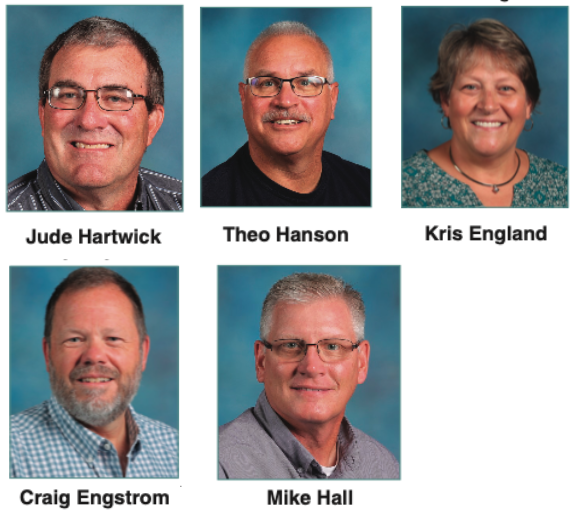
School District of Fort Atkinson educators retiring at the end of the school year are pictured above.

Fort hero inducted into Middleton Memorial Veterans Hospital Hall of Heroes
(Originally published May 30, 2021.)
By Kim McDarison
By all counts, Capt. Scott Robinson Alwin, a soldier during the Vietnam War and a preacher’s son growing up in Fort Atkinson, was a man of strong faith and a hero.
Recently he also was remembered as a man who admired actor Errol Flynn and was something of an adventurer and a daredevil.
Though at the time of his death, in 1976, his address was listed in Marathon County, he spent many of his formative years in Fort Atkinson.
During an emotional ceremony held at the William S. Middleton Memorial Veterans Hospital in Madison Friday and attended by friends and family, Alwin was inducted into the hospital’s Hall of Heroes, where his likeness, like the likenesses of those who were placed there before him, will serve to inspire future generations.
In the hall, the soldiers’ heroic deeds and the meaning of Memorial Day are powerfully on display.
“While all the veterans that come to the William S. Middleton Memorial Veteran’s Hospital have demonstrated sacrifice and courage on behalf of our country, there are some who stand out for especially heroic actions during their service. The Hall of Heroes is where we honor those brave veterans,” a printed program for the ceremony stated.
Stories told by friends and loved ones during the ceremony assured all who were in attendance that Alwin was deserving of that distinction.
Who was Scott Alwin?
Alwin is best known for his prowess and courage as a helicopter gunship pilot during the Vietnam War. He served in Vietnam between 1967 and 1972.
His life ended in a car accident — a collision with a drunken driver — while he was traveled on military business between Fort Benning, Georgia, and Washington, D.C. He was 31.
During the ceremony, two of his sisters, Penelope Kleinhans-Alwin and Pamela Fullerton, remembered him as a youth. He was part of a family with 16 siblings, the children of Walter and JoAnn Alwin. They were known locally as the “preacher’s kids,” and he was the oldest among them, the sisters recalled, and while Fullerton noted that the family moved multiple times before arriving in Fort Atkinson, the stories both sisters told about Alwin’s formative years focused on Milwaukee and Fort Atkinson.
Walter, a native of Milwaukee, was a pastor of a number of rural churches, according to his obituary, but changed professions, finding work as a social worker, to help support his large family. In 1956, the family purchased and moved into the Hoard mansion on Merchants Avenue.
In 1973, Walter and JoAnn moved to Marathon County. The couple kept a studio apartment in rural Whitewater at the home of a daughter until 2007.
During the induction ceremony, hospital storyteller Thor Ringler also shared stories about Alwin, several of which were related to him by Alwin’s sisters for inclusion within a narrative he wrote titled: “My Life, My Story.”
Ringler shared a recollection of Kleinhans-Alwin’s, who recalled that her father was a U.S. Army Air Corps flight instructor during World War II. A pastime spent with her siblings and father included visiting the runway, before modern-day security measures were put in place, at what was then called General Mitchell Field in Milwaukee, where the family would share a picnic of chocolate milk and crackers while watching the planes take off. Her brother, Scott, she said, knew he wanted to be a pilot by the time he was six.
Another story related through Ringler portrayed Alwin’s sense of adventure.
Growing up in Fort Atkinson, at the age of 12, Fullerton told Ringler, she and her brother, after she expressed an interest in African adventures surrounding the Nile River, built a raft of “scavengered lumber” and went looking for the source of the Rock River.
The siblings pulled their raft upstream for about seven hours, Fullerton said, and then, having arrived some five miles from where they started, the raft “disintegrated in a swamp.” While both were disappointed in how the adventure ended, she said, as they walked home, Scott said: “Next time, we’re going to try for the source of the real Nile!”
Taking her turn at the podium, Kleinhans-Alwin said when Alwin was 16, in 1961, he was exposed to the now famous words spoken by President John F. Kennedy: “Ask not what your country can do for you, ask what you can do for your country.”
Born in 1944 and during World War II, Alwin was influenced by heroic words and deeds, and movies glamorizing heroic deeds with heroes portrayed by the likes of Errol Flynn, whom, Kleinhans-Alwin said, was considered dashing and brave.
Kleinhans-Alwin said her sister, Pamela, who stood beside her at the podium as she talked, recalled their brother talking about wanting to be a hero.
Recollections from Vietnam
Alwin was in his early 20s when he entered the war.
While he had earned and accepted an appointment in the Air Force, he later resigned, opting instead to rejoin the armed forces through enlistment in the Army after the conflict in Vietnam had escalated.
Speaking with two soldiers with whom Alwin served, Ringler brought depth to what Alwin was like in wartime.
To learn about Alwin, Ringler said, he spoke with a fellow pilot in Vietnam, Ed Strazzini, and Alwin’s crew chief, Frans Vanderbroek.
Through stories related to Ringler by Strazzini, those in attendance learned that both he and Alwin arrived in Vietnam in 1967, and they were both assigned to the 68th Assault Helicopter Company. Both began flying troop-carrying helicopters called “slicks.” Strazzini described the pilot’s job as “hard work,” flying long days and some nights. They flew in all kinds of weather and under all kinds of conditions, and sometimes encountered hostile conditions on the ground.
Strazzini transferred to flying attack helicopters. The mission was to stay with the troops even after the slicks departed and support the troops on the ground.
Strazzini said he would talk with Alwin about the missions he was flying. Alwin would sometimes hear secondhand stories, Strazzini reported, and he would “get on me for something that he heard we had done.”
To set the record straight, Strazzini invited Alwin on a mission.
After the experience, Strazzini said, Alwin decided to pilot a gunship himself.
Vandenbroek, too, was assigned to the 68th Assault Helicopter Company, but as a mechanic. In the summer of 1968, he said, he joined the gunship platoon and became a crew chief. His job was to look after the helicopter, he said.
He also manned, along with a gunner, an M60 machine gun. He described a symbiotic relationship between the pilot and the crew: the crew is tasked with keeping everyone alive while the pilots are charged with getting everyone home safely.
Vandenbroek described Alwin as “sort of an enigma. He was very quiet, almost sad when he walked up. But when he got into the helicopter and started flying, he totally changed. He became so determined, so committed, that it was startling to see.”
As a pilot, Vandenbroek said, Alwin was among the most fearless he flew with.
At the end of their tour, Strazzini said, both he and Alwin were given orders to go to West Germany, but two weeks before they were going to leave, Alwin said he was going to stay. “I’ve extended,” he told Strazzini.
Strazzini said he believed Alwin stayed for the mission, but also because of an interest he’d taken in a Vietnamese employee at the officer’s club. It was a woman whom he visited with and looked after, Strazzini said, noting: “He saw himself as her guardian and we kind of laughed about that. But I didn’t realize how deeply he felt for her.”
Said Vanderbroek: “Mr. Alwin had sublime flying skills. His precision with the helicopter was just outstanding. He could set it down without us even knowing that we had landed, but when it came to managing the mission, Mr. Alwin was always looking for trouble. He did not mind getting involved.”
Vanderbroek went on to explain that Alwin didn’t seek out trouble for trouble’s sake, but to help people.
He then told the story of his last day in Vietnam. It was March 23, 1969.
“We were patrolling an area and Scott was the aircraft commander. I spotted some North Vietnamese soldiers running from one hut to another and got on the intercom.” As Vanderbroek alerted his pilot to activity below, Scott “whipped the helicopter around.” He radioed the battalion commander that he was going in, saying “Mustang 17 going hot, rolling in!”
Next, Vanderbroek said, they attacked a hut, with Alwin firing rockets and working to maintain a chosen angle for as long as possible so he could hit his target.
“I’m leaning out of the cabin with my machine gun pointing forward and I’m pumping bullets into this target. Scott pulls up at the last second and the next thing you know, we’re going down,” Venderbroek said.
The helicopter “hit belly first, skipped like a stone, flipped over, and then all hell broke loose. It completely came apart,” he said.
Alwin, the co-pilot and the gunner staggered from the wreck, Venderbroek said, adding that he was thrown from the helicopter. At the field hospital, he was treated for a “badly broken arm.”
An hour and a half after the crash, he said, Alwin came to make sure he was alright. That was the last time he saw him, Vanderbroek said.
In 1970, Strazzini said, he came back to Vietnam, but was in the northern part of the country and not able to visit Alwin. He tried to call him, he said, but he was told he and his wife had gone back to the states.
In 1976, he said, he was back in Virginia. It was Christmastime and he received a card postmarked Fort Atkinson, Wis. When he opened the card, he said, he learned from Alwin’s wife, Teresa, that Alwin had been killed that summer.
The news, he said, “It just took the breath out of me.”
Valor remembered
From the podium, Alwin’s youngest sibling, Sean, told those in attendance that he was 16 when his brother died. Sean Alwin is a resident of Fort Atkinson.
Among the Alwin siblings, Sean is the only one, other than Scott, who served in the military and he has spent the last five years of his medical career working in the Janesville VA Clinic, he said.
Sean Alwin focused on his brother’s legacy, and the lessons he taught about chivalry and courtesy.
He identified three principals, which, he said, he and his brother often discussed:
“First, never ask anyone to do something that you yourself would not do … Second, always take care of subordinates first … (and) third, when in doubt, do your duty.”
About his brother, Scott, Sean said: “He always tried to live up to his ideals. And because of the love I felt for him and understanding the honor he deserved for what he had accomplished, it made me want to live up to those ideals also. In this, and so many other ways, he made me a better man than I would have been. In the end, that is what I honor my big brother for.”
Listed among Scott Alwin’s military achievements are 136 documented Air Medals, Vietnam Republic Medals, Purple Hearts, Bronze Stars, Silver Stars and Distinguished Flying Crosses, all with oak leaf clusters. He is believed to be the most highly decorated American pilot of the Vietnam War.
Among those attending the induction ceremony were Scott Alwin’s wife, Du Thi Duong “Teresa” Alwin-Nguyen — the couple was married in 1969 — and their children, Scott and Heather; grandchildren, several siblings and other family members.
After the ceremony, Alwin-Nguyen remembered her late husband fondly, noting with emotion, that in the days of the Vietnam War, he was her protector.
Alwin is buried in the St. Paul Evangelical Lutheran Cemetery in Berlin, Marathon County.
Engraved upon his headstone is a quote which he is said to have copied into his final journal from the biblical narrative temptation of Christ, which reads: “I hope for nothing. I fear nothing. I am free.”
With Fullerton listed as associate director, a documentary film about Alwin’s life called: “Honor in the Air: Remembering Captain Scott Robinson Alwin,” is being produced by Clear Focus Media, LLC, and is anticipated to be released in 2023 to coincide with the 50th anniversary of the last U.S. troops leaving Vietnam.
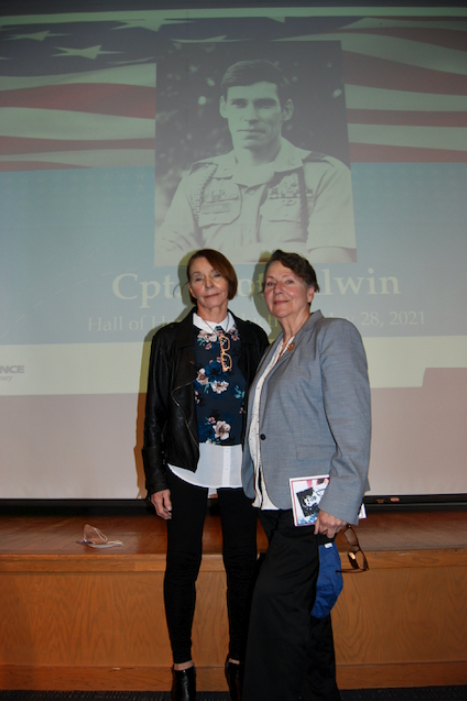
Penelope Kleinhans-Alwin, at left, and Pamela Fullerton, sisters of the late Capt. Scott Alwin, formerly of Fort Atkinson, greet attendees in advance of the William S. Middleton Memorial Veterans Hospital Hall of Heroes induction ceremony. The ceremony, unveiling Alwin’s likeness that was added to the Hall of Fame, was attended Friday by about 30 friends and family members. Kim McDarison photo.
Mobile merchants ordinance receives final approval
(Originally published June 2, 2021.)
By Kim McDarison
An ordinance developed to regulate mobile merchants operating within the city of Fort Atkinson met with final approval Tuesday.
The ordinance, which returned some language to city code that was removed in 2020 and added some new requirements, was approved after a second reading. Council opted on Tuesday to suspend its rules and waive a third reading.
Ordinances, and amendments that change them, within the city of Fort Atkinson are subject to three readings unless council opts to waive future readings.
A first reading of the ordinance was approved May 18.
During the May 18 meeting, City Manager Rebecca Houseman LeMire noted that staff was attempting to move the ordinance forward quickly because the summer season was a busy time for mobile merchants and the city was already receiving applications from merchants looking to do business within the city.
During Tuesday’s meeting, she said the ordinance was an important piece to give staff a mechanism through which they could process those applications.
With passage of the ordinance, nine points that apply to mobile merchants were adopted.
They are:
- Changing the authority to issue a Mobile Merchant License from the Plan Commission to the city clerk.
- Establishing an appeal process which would bring an application before the city council would it be denied by the city clerk and police chief.
- Eliminating former code which created a lottery and payment for a mobile merchant to be located in a city parking lot.
- Prohibiting mobile merchants on residential or public lands, including streets, sidewalks, parks and parking lots. An exception would be allowed for a merchant receiving approval through a special event permit.
- Eliminating the fees from the ordinance, referencing instead a “fee resolution,” which would be adopted annually by the city council.
- Adding a requirement that the merchant’s date of birth be included on the license application.
- Adding a requirement listing the merchant’s hours of operation on the license application.
- Limiting the number of daily licenses permitted in a calendar year to four. The prior ordinance did not establish a limit.
- Changing some language within the ordinance for clarity and consistency.
Further, LeMire said, staff would provide council with a monthly report listing all staff-approved mobile merchant licenses approved that month.
First reading approved for proposed multipart intoxicant consumption ordinance
By Kim McDarison
The Fort Atkinson City Council Tuesday approved a first reading of a proposed ordinance that would establish new regulations relating to the consumption of alcohol in and around establishments offering on-premise consumption, such as bars and restaurants, and in public places.
The changes come in four proposed amendments made to city code.
Fort Atkinson Police Chief Adrian Bump noted during the meeting that the proposed amendments are designed to make positive changes across the community and specifically in the downtown district.
In a memo to council, Bump wrote: “One way to determine needs as related to ordinances is to look to the officers on the street who utilize and apply local ordinances in the completion of their work.”
He continued: “While identifying trends and problems, officers in our city have continually brought forward issues specifically related to their inability to reduce public intoxication and open intoxicants, and the associated misbehaviors, through existing ordinance enforcement. Likewise, officers desire to reduce the number of open intoxicants on our streets that are coming from inside our bars, (and) from people who travel to our parks and Riverwalk as a drinking destination.”
Bump said the updates proposed in the ordinance are focused on reducing disorderly subjects, public intoxication, loud noise complaints, public urination, littering, property damage and fighting, which, he wrote in his memo, “have begun to plague our community’s downtown, parks and even our cherished Riverwalk.”
He said the proposed changes also would improve the “overall perception of safety” for those coming to enjoy assets within the city.
Bump enumerated changes within city code, which, he said, would work together to address the issues commonly encountered by officers.
Council listened to each change, voting to approve each item independently. All four of the items received unanimous first-reading approval. Ordinances and amendments that change them in the city of Fort Atkinson are subject to three readings unless council opts to suspend its rules and waive additional readings.
Proposed regulations that received first-reading approval include:
• An amendment to city code making it unlawful for any license holder to permit any person to leave the licensed premise with an open container of alcohol.
• An amendment to city code making it unlawful, with a possible citation for disorderly conduct, for any person to defecate or urinate outside of a designated facility.
- An amendment to city code making it unlawful to possess an open alcohol container on any public street, sidewalk or public right-of-way unless an appropriate permit or license has been granted by the city council.
- An amendment making it unlawful to drink or possess alcohol in a city park between the hours of 10 p.m. and 5 a.m. unless permitted through approval of an authorized event.
During the discussion, Bump suggested there might be a need for urgency associated with approving language making public defecation and urination illegal, suggesting that suspending the rules and waiving a second and third reading might be applicable.
City Manager Rebecca Houseman LeMire noted that the amended language was set up within a single ordinance as a single action item. The clause relating to public defecation and urination, however, could be isolated and brought back independently for individualized consideration at council’s next meeting, she said. The process would include passing the amendment’s first reading and then suspending the rules during a second reading and waiving a third reading.
Bump, noting his desire to not further complicate the process, said he thought the amended language could continue with the process in the form it was presented.
During discussion, several council members asked questions about how new regulations might affect various members of the community.
Bump said language within the new regulations was designed “to give officers the ability to try to increase the quality of life … and also give them the ability to apply discretion with better ordinances in place related to issues we’re seeing related to alcohol and intoxication.”
Addressing language regulating bar and restaurant owners, he said, language is meant to “get some buy-in and support from our local establishments that serve alcohol — getting them on board and making sure that they have a vested interest in reducing the alcohol that leaves their facilities and enters onto our streets. It’s a real key part in making change.”
Councilwoman Megan Hartwick asked if fines for offenses related to alcohol leaving a bar or restaurant would fall upon the establishment’s owner.
Bump said the first proposed amendment focuses on the establishment’s owner, adding: “this would cover and try to motivate the establishment, the bar, the restaurant, to help prevent alcohol that’s open from entering onto the streets. In order to really make a difference, we need to have something that motivates them to also play the role that they play in this entire process.”
Said Hartwick: “My only hesitation on that would be — I mean, no bars, at least that I know of, or very few, have any staff actually at their doors. I guess I worry about how much staff oversight these bars have when they are busy to be able to even know whether or not an individual is walking out their front door with a bottle or something in hand. I fear that that would be something that would come back to or hurt them without them necessarily knowing or having that much control over it.”
Bump responded by noting that state laws prohibiting patrons from leaving establishments with open intoxicants already exist. The language in the city ordinance would reinforce the state law and serve as a “tiered approach” within the community.
“We don’t have ordinances in a lot of these areas, that’s why we are looking for this update. The other thing that’s important to remember is that with the proper laws and ordinances in place, it allows our officers the ability to apply discretion as appropriate to gain the response that we’re looking for. Just because you have a law in place or an ordinance in place doesn’t mean that an officer must or shall make an arrest or write a ticket. Our officers have discretion and they have to apply that discretion thoroughly and evenly in a way that gets the results we want. That could be through presence and visibility, it could be through doorbell warnings, or up to a citation. But if you don’t have those laws in place, you take all of that off the table and leave us with no options whatsoever,” Bump said.
Councilman Mason Becker asked LeMire if any members of the community had come forward suggesting that such language would impact their business.
LeMire said they had not, but she added: “this is currently a state law. You can’t allow an open intoxicant to leave the premise. It is currently the responsibility of the license holder.”
Council President Chris Scherer said the amendments had been discussed during a recent meeting of the city’s Ordinance Committee.
“We felt that it was pretty reasonable that our city falls in line with most every other city where if you are leaving an establishment, you see a sign that says ‘no drinks permitted beyond this point.’ We felt that it was reasonable to codify this,” Scherer said.
Bump stressed that all the amendments being proposed were meant to work together.
“The goal is not to find a way to trick our establishments and find a way to fine them. It’s a total process where we can work together and work to make improvements because we have the right ordinances in place,” Bump said.
Councilman Bruce Johnson asked if bar owners with reoccurring violations would be given an opportunity for discussion about the problem.
“Definitely. Our goal is to make positive change and if we see any location that has continuing violations in the area we are going to fix that, and address that, and get them back in line with having a positive location for people to go. It does allow us an opportunity to motivate them to make positive change,” Bump said.
Johnson asked about repercussions associated with citizens with violations.
Bump noted that a separate amendment would address that issue.
“We have very good establishment operators in Fort Atkinson and I think we need to look nearby. I know the city of Whitewater right now has a certain establishment that is actually looking at having their license temporarily suspended because they’ve had so many issues with patrons getting overly intoxicated and things like that, so I think you’ve got some good reminders that there are additional steps a city can take if it would be necessary in the future,” Becker said.
During discussion about the second proposed amendment, Bump said the city lacked appropriate language relating to public defecation and urination. The new language would give officers the ability to take action.
“It is something our officers deal with consistently throughout the year,” he said.
Bump said he believed most people might think the city already had an ordinance addressing public defecation and urination, but Fort Atkinson does not, and, he said, it never has.
During discussion about the third element of the proposal, holding citizens with open intoxicants accountable, LeMire noted that the proposed amendment does make an exception when the city has approved a special event permit.
During discussion about the fourth element, alcohol consumption in city parks, Bump said, proposed language sought to eliminate behaviors related to alcohol consumption after dark.
Said Bump: “We don’t have anything that covers open intoxicants or consumption of alcohol in our city parks. One thing I’ve noticed the last couple years is within our parks we are having some issues in the midnight hours when the park is closed that are related to alcohol consumption.”
Bump said he recently researched other communities to see what they were doing and found, he said, “that it might be appropriate, I feel it is appropriate, for us to move forward with an ordinance that would not allow open intoxicants and consumption of alcohol in our parks after 10 p.m., after the park closes, and during its time of closure between 10 p.m. and 5 a.m., unless it is permitted through a special, authorized event.
“Not too much good happens in a dark park,” he said, adding that he wanted officers to have an ability to monitor parks, especially, he said, in light of what he described as “chronic behaviors.”
Johnson asked about the Fort Atkinson Generals baseball team and its schedule of events. He wondered if their events were over by 10 p.m.
Bump said he didn’t know how late their events ran, but they would be authorized under a special event permit.
Hartwick said she thought parks were open until midnight.
Bump said he was unsure.
Hartwick suggested it might be easier to enforce a rule that coincided with park closure.
Bump said 10 p.m. remained in his mind a good time to disallow the activity.
“We want to reduce the drinking and the issues that are going on in the park after dark is the main issue, especially when there is not an event or an approved situation going on in the park,” Bump said.
LeMire said staff would provide additional information about park hours in time for the next reading of the ordinance.
Our Take: Sandra Anderson leaves a living legacy
(Originally published June 2, 2021.)
We were so saddened by the passing of half of the area’s “flower-power couple.”
Sandra L. Anderson died Wednesday, May 26, at her Whitewater home. She was 79 years old.
A Jefferson Junction native, Sandra Raithel graduated from Fort Atkinson High School and later earned her licensed practical nursing degree at MATC. In 1962, she married Roger Anderson Sr. while he was serving in the U.S. Navy.
Her obituary shares that Sandy enjoyed reading and gardening, with a specialty of growing Iris. It adds that, according to Roger, she was a much better gardener then he … which really says a lot since he is considered to be the world’s leading expert on intersectional peonies.
Roger is a Fort Atkinson native and a self-taught peony breeder who began hybridizing peonies in the early 1970s. He and Sandra were true partners, marketing his 50 named varieties from their nursery, Callies Beaux Jardins, from 1978 to 2004.
For those without a green thumb, intersectional peonies are a cross between the traditional herbaceous peonies and tree peonies. Roger took the best characteristics from each and produced peonies that do not droop. They have strong woody stems, upright unique big flowers, are disease resistant, die back in autumn like herbaceous peonies, and feature the handsome foliage of tree peonies.
In fact, he has created more than 500 different intersectional peonies — the most colors and varieties of any hybridizer in the world — and the first-ever orange peony. His “Bartzella” intersectional is acclaimed by experts as the “most perfect yellow peony” around the globe.
Back here at home, this “flower-power couple” also were the force behind the Roger F. and Sandra L. Anderson Peony Garden at the Hoard Historical Museum in Fort Atkinson.
It was a decade ago that Roger and Sandy provided 18 varieties of intersectionals for the two 35-by-55-foot beds in the museum’s backyard, including seven Bartzellas. Seventeen other intersectional varieties of red, pink, mauve and white blooms also fill the garden. Later, they added two of his newest seedlings to the garden, named for William Dempster Hoard and his grandson’s wife, Mary Cunningham Hoard.
And as if 58 named intersectional peonies were not enough, the Andersons contributed more than 50 hybrid lilies, Sandra’s favorite, as well as dozens of day lilies.
Thanks to the Andersons, the Hoard Historical Museum is home to the largest collection of intersectional peonies in North America, including those at botanical gardens. And that is why Fort Atkinson consistently, since 2012, has been recognized as the “Intersectional Peony City of Wisconsin.”
The peonies are in bloom right now, coinciding with a special event that enables the public to obtain these amazing plants, as well. Thanks to the Andersons’ floral gifts, the museum is selling their special peonies as a fundraiser to support the facility, and particularly for its beautiful gardens. Contact the museum for information or to obtain an order form.
It seems appropriate that, as the Fort Atkinson area mourns Sandra Anderson’s passing, the gardens of flowers that she so loved — and shared with the community at large — are ablaze in pinks, whites, mauves, purples, yellows and reds.
As they continue to delight visitors to the museum and, soon, many home gardens, may these peonies be a living legacy honoring her generosity and love of Mother Nature’s beauty.

Sandra and Roger Anderson Sr.
Photo courtesy of the Hoard Historical Museum.
First reading approved for proposed multipart intoxicant consumption ordinance
(Originally published June 2, 2021.)
By Kim McDarison
The Fort Atkinson City Council Tuesday approved a first reading of a proposed ordinance that would establish new regulations relating to the consumption of alcohol in and around establishments offering on-premise consumption, such as bars and restaurants, and in public places.
The changes come in four proposed amendments made to city code.
Fort Atkinson Police Chief Adrian Bump noted during the meeting that the proposed amendments are designed to make positive changes across the community and specifically in the downtown district.
In a memo to council, Bump wrote: “One way to determine needs as related to ordinances is to look to the officers on the street who utilize and apply local ordinances in the completion of their work.”
He continued: “While identifying trends and problems, officers in our city have continually brought forward issues specifically related to their inability to reduce public intoxication and open intoxicants, and the associated misbehaviors, through existing ordinance enforcement. Likewise, officers desire to reduce the number of open intoxicants on our streets that are coming from inside our bars, (and) from people who travel to our parks and Riverwalk as a drinking destination.”
Bump said the updates proposed in the ordinance are focused on reducing disorderly subjects, public intoxication, loud noise complaints, public urination, littering, property damage and fighting, which, he wrote in his memo, “have begun to plague our community’s downtown, parks and even our cherished Riverwalk.”
He said the proposed changes also would improve the “overall perception of safety” for those coming to enjoy assets within the city.
Bump enumerated changes within city code, which, he said, would work together to address the issues commonly encountered by officers.
Council listened to each change, voting to approve each item independently. All four of the items received unanimous first-reading approval. Ordinances and amendments that change them in the city of Fort Atkinson are subject to three readings unless council opts to suspend its rules and waive additional readings.
Proposed regulations that received first-reading approval include:
• An amendment to city code making it unlawful for any license holder to permit any person to leave the licensed premise with an open container of alcohol.
• An amendment to city code making it unlawful, with a possible citation for disorderly conduct, for any person to defecate or urinate outside of a designated facility.
- An amendment to city code making it unlawful to possess an open alcohol container on any public street, sidewalk or public right-of-way unless an appropriate permit or license has been granted by the city council.
- An amendment making it unlawful to drink or possess alcohol in a city park between the hours of 10 p.m. and 5 a.m. unless permitted through approval of an authorized event.
During the discussion, Bump suggested there might be a need for urgency associated with approving language making public defecation and urination illegal, suggesting that suspending the rules and waiving a second and third reading might be applicable.
City Manager Rebecca Houseman LeMire noted that the amended language was set up within a single ordinance as a single action item. The clause relating to public defecation and urination, however, could be isolated and brought back independently for individualized consideration at council’s next meeting, she said. The process would include passing the amendment’s first reading and then suspending the rules during a second reading and waiving a third reading.
Bump, noting his desire to not further complicate the process, said he thought the amended language could continue with the process in the form it was presented.
During discussion, several council members asked questions about how new regulations might affect various members of the community.
Bump said language within the new regulations was designed “to give officers the ability to try to increase the quality of life … and also give them the ability to apply discretion with better ordinances in place related to issues we’re seeing related to alcohol and intoxication.”
Addressing language regulating bar and restaurant owners, he said, language is meant to “get some buy-in and support from our local establishments that serve alcohol — getting them on board and making sure that they have a vested interest in reducing the alcohol that leaves their facilities and enters onto our streets. It’s a real key part in making change.”
Councilwoman Megan Hartwick asked if fines for offenses related to alcohol leaving a bar or restaurant would fall upon the establishment’s owner.
Bump said the first proposed amendment focuses on the establishment’s owner, adding: “this would cover and try to motivate the establishment, the bar, the restaurant, to help prevent alcohol that’s open from entering onto the streets. In order to really make a difference, we need to have something that motivates them to also play the role that they play in this entire process.”
Said Hartwick: “My only hesitation on that would be — I mean, no bars, at least that I know of, or very few, have any staff actually at their doors. I guess I worry about how much staff oversight these bars have when they are busy to be able to even know whether or not an individual is walking out their front door with a bottle or something in hand. I fear that that would be something that would come back to or hurt them without them necessarily knowing or having that much control over it.”
Bump responded by noting that state laws prohibiting patrons from leaving establishments with open intoxicants already exist. The language in the city ordinance would reinforce the state law and serve as a “tiered approach” within the community.
“We don’t have ordinances in a lot of these areas, that’s why we are looking for this update. The other thing that’s important to remember is that with the proper laws and ordinances in place, it allows our officers the ability to apply discretion as appropriate to gain the response that we’re looking for. Just because you have a law in place or an ordinance in place doesn’t mean that an officer must or shall make an arrest or write a ticket. Our officers have discretion and they have to apply that discretion thoroughly and evenly in a way that gets the results we want. That could be through presence and visibility, it could be through doorbell warnings, or up to a citation. But if you don’t have those laws in place, you take all of that off the table and leave us with no options whatsoever,” Bump said.
Councilman Mason Becker asked LeMire if any members of the community had come forward suggesting that such language would impact their business.
LeMire said they had not, but she added: “this is currently a state law. You can’t allow an open intoxicant to leave the premise. It is currently the responsibility of the license holder.”
Council President Chris Scherer said the amendments had been discussed during a recent meeting of the city’s Ordinance Committee.
“We felt that it was pretty reasonable that our city falls in line with most every other city where if you are leaving an establishment, you see a sign that says ‘no drinks permitted beyond this point.’ We felt that it was reasonable to codify this,” Scherer said.
Bump stressed that all the amendments being proposed were meant to work together.
“The goal is not to find a way to trick our establishments and find a way to fine them. It’s a total process where we can work together and work to make improvements because we have the right ordinances in place,” Bump said.
Councilman Bruce Johnson asked if bar owners with reoccurring violations would be given an opportunity for discussion about the problem.
“Definitely. Our goal is to make positive change and if we see any location that has continuing violations in the area we are going to fix that, and address that, and get them back in line with having a positive location for people to go. It does allow us an opportunity to motivate them to make positive change,” Bump said.
Johnson asked about repercussions associated with citizens with violations.
Bump noted that a separate amendment would address that issue.
“We have very good establishment operators in Fort Atkinson and I think we need to look nearby. I know the city of Whitewater right now has a certain establishment that is actually looking at having their license temporarily suspended because they’ve had so many issues with patrons getting overly intoxicated and things like that, so I think you’ve got some good reminders that there are additional steps a city can take if it would be necessary in the future,” Becker said.
During discussion about the second proposed amendment, Bump said the city lacked appropriate language relating to public defecation and urination. The new language would give officers the ability to take action.
“It is something our officers deal with consistently throughout the year,” he said.
Bump said he believed most people might think the city already had an ordinance addressing public defecation and urination, but Fort Atkinson does not, and, he said, it never has.
During discussion about the third element of the proposal, holding citizens with open intoxicants accountable, LeMire noted that the proposed amendment does make an exception when the city has approved a special event permit.
During discussion about the fourth element, alcohol consumption in city parks, Bump said, proposed language sought to eliminate behaviors related to alcohol consumption after dark.
Said Bump: “We don’t have anything that covers open intoxicants or consumption of alcohol in our city parks. One thing I’ve noticed the last couple years is within our parks we are having some issues in the midnight hours when the park is closed that are related to alcohol consumption.”
Bump said he recently researched other communities to see what they were doing and found, he said, “that it might be appropriate, I feel it is appropriate, for us to move forward with an ordinance that would not allow open intoxicants and consumption of alcohol in our parks after 10 p.m., after the park closes, and during its time of closure between 10 p.m. and 5 a.m., unless it is permitted through a special, authorized event.
“Not too much good happens in a dark park,” he said, adding that he wanted officers to have an ability to monitor parks, especially, he said, in light of what he described as “chronic behaviors.”
Johnson asked about the Fort Atkinson Generals baseball team and its schedule of events. He wondered if their events were over by 10 p.m.
Bump said he didn’t know how late their events ran, but they would be authorized under a special event permit.
Hartwick said she thought parks were open until midnight.
Bump said he was unsure.
Hartwick suggested it might be easier to enforce a rule that coincided with park closure.
Bump said 10 p.m. remained in his mind a good time to disallow the activity.
“We want to reduce the drinking and the issues that are going on in the park after dark is the main issue, especially when there is not an event or an approved situation going on in the park,” Bump said.
LeMire said staff would provide additional information about park hours in time for the next reading of the ordinance.

City hall, file photo/Kim McDarison.
City approves TIF agreement with Garrison Holdings offering assistance up to $66,500
(Originally published June 3, 2021.)
By Kim McDarison
The Fort Atkinson City Council approved a developers agreement with Garrison Holdings, LLC, Tuesday offering tax incremental financing (TIF) assistance in an amount up to $66,500.
In a memo to council, City Manager Rebecca Houseman LeMire noted that the project was reviewed by the city’s Economic Development Commission in September of 2020, at which time Garrison Holdings requested from the city assistance in building a new dental clinic. The proposed site is in the city’s tax incremental financing district (TID) No. 8 at 1530 Doris Drive.
At that time, LeMire wrote, the committee recommended that staff draft a developers agreement between the two entities which would provide support through the district in an amount up to $66,500. Site plans for the project were approved by the city in 2020, according to the memo.
More recently, LeMire wrote, city staff met with James Garrison to “reaffirm the site and building plans and review the draft of the developers agreement.”
To bring the project into compliance with new zoning ordinances, LeMire wrote, there will be “some minor changes to the site plan,” which, she noted, would include some additional curbing.
An anticipated completion date for the project is Dec. 31.
According to the developers agreement, the city, through TID No. 8, will reimburse Garrison Holdings for construction costs of the project up to $66,500, provided that the completed project brings an assessed value for inclusion within the city’s tax rolls of $700,000.
Construction of the full project is expected to cost approximately $1.175 million and provide some $17,500 in annual tax revenue, according to a letter written by Garrison to then-city manager Matt Trebatoski in July of 2020.
The $66,500 will be paid by the city over the course of several years from the increment added based on the value of the project.
The agreement, LeMire wrote, is structured with “pay-go” financing, which, she added, “means that the only funds reimbursed to the developer are those added through the increment created by the developer. No general property tax dollars from other property owners will be provided to the developer.”
The purpose of incentivizing the developer in this manner is to achieve an incremental value, defined as monies achieved over a set base value within the TID, for the TID, thus increasing the value of the TID.
LeMire further noted that the payment and reimbursement schedule is subject to change based on the project’s actual completion date, the assessed value of improvements after completion, the tax rate and the increment generated.
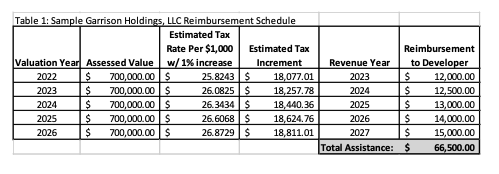
The above chart shows the payment schedule, with payments made by the city to Garrison Holdings, over a five-year period.

A site plan for the new dental clinic to be built within TID No. 8 on Doris Drive is shown above.

An artist’s rendition depicts the new dental clinic to be built on Doris Drive. The project is anticipated to complete by the end of this year.
Several city roads approved for surface asphalt repair or replacement
(Originally published June 3, 2021.)
By Kim McDarison
The Fort Atkinson City Council approved Tuesday several roads to receive surface asphalt repair or replacement as well as some spot repairs for curb and gutter and driveway approaches within the city.
The work is slated to be done this year.
According the City Engineer Andy Selle, work to be done along Industrial Drive will include moving the road, placing it within its appropriate right-of-way, and improving sanitary and water utilities around the Jones Dairy Farm campus.
The following list of roadways will see improvements this year:
- McMillen Street, from North High Street to Florence Street.
- North Fourth Street, from North Main Street to High Street.
- Van Buren Street, from Wilson Avenue to Robert Street.
- Council Street, from Van Buren Street to W. Sherman Avenue.
- Monroe Street, from Van Buren Street to Riverside Drive.
- Milwaukee Avenue West, from Terminus to South Main Street.
- South Water Street East, from Purdy Street to Roland Avenue.
- Zida Street, from South Fourth Street to Terminus.
- Bluff Street, from Milwaukee Avenue to South Fourth Street.
- Craig Street, from South High Street to East Street.
- Elm Street, from Whitewater Avenue to South High Street.
- Walton Court, from Terminus to Walton Street.
- Industrial Drive, from Rockwell Avenue to Klement Street.
- Klement Street, from Industrial Drive to Terminus.
- Butler Drive, from Industrial Drive to Terminus.
- Summit Drive, from Highland Avenue to Hackbarth Road.
Two bids to perform the work were received, Selle said, with Wolf Paving submitting the low bid at $1.784 million. Council approved the bid submitted by Wolf Paving.
The second bid was received from Payne and Dolan in the amount of $2.359 million.
Selle said both companies had performed work for the city before, with Wolf Paving last working in the city in 2020.
Council also approved paving work to be performed in the parking lot at Jones Park.
Selle noted that work would be paid for using several funding sources, including $598,000 coming from the city’s annual budget for street work; $209,000 coming from annual vehicle registration fees, also known as wheel tax; $64,441 coming from County LRIP funds (a 1991-established Wisconsin Department of Transportation Local Roads Improvement Program); $387,776 from an MLS grant award (Wisconsin Department of Transportation Multimodal Local Supplement grant), and $150,000 coming from a contribution made by Jones Dairy Farm.
According to Selle, “The most variable funding is in the form of a loan, already secured from Premier Bank, to be used on the additional work associated with the MLS Grant from the state of Wisconsin for improvements to our industrial parks. The loan allows us to make up the difference from fixed sources of funding already dedicated to the overall project.”
To reach the $1.784 million required for the outlined work, according to a chart presented to council, a draw on the Premier Bank loan of $375,094 is required.
Responding to questions, Selle said he was unable to report the exact number of miles of roadway that would be affected, but did say he believed council would find that number unimpressive, further noting that roadwork is expensive.
An earlier story about the MLS grant, loans and work to be performed in the city’s industrial parks is found here: https://fortatkinsononline.com/city-approves-borrowing-for-dump-truck-street-repair/.

City approves continued involvement with county road aid fund
(Originally published June 4, 2021.)
By Kim McDarison
The Fort Atkinson City Council authorized on Tuesday the release of city funds to the Jefferson County Road Aid Fund, a matching funds program designed to allow cities to make use of county work crews for work done on city streets.
In a memo to council, City Engineer Andy Selle noted that the county’s road aid program has been in place since 2005 and the city began making contributions to the fund in 2015.
According to Selle, the program allows municipalities to contribute cash to the account based upon total length of streets within their jurisdiction. The county then matches the contribution, effectively doubling the contribution’s value.
The city has approximately 62 miles of roads within its jurisdiction, he said.
In a followup interview, Selle told Fort Atkinson Online that the city began making contributions in 2015, and, after making contributions from 2016 to 2019, the available county road aid balance that could be used by the city was approximately $48,000. In 2019, he said, the city expended its available funds held within the program, utilizing county crews to pave White Street to Chippewa Court and a section of Whitewater Avenue south of Third Street.
After that work was completed, Selle said, the fund showed a balance of zero. Since then, the city has continued to make contributions of about $6,000 annually, and, with the the addition of county-matched funding, the balance has grown each year by $12,000.
On Tuesday, council approved a contribution made by the city of $6,191. Monies will come from the city’s 2021 Street Program budget, which, Selle said, currently has a balance of approximately $600,000.
In 2020, Selle said, council approved approximately $6,000, which was matched by the county, making the balance just over $12,000. After the county matches the contribution approved Tuesday, he said, a balance of approximately $24,000 will become available to the city in 2022.
The city would not likely expend this money again until the balance reaches about $48,000, he said.
In a separate action on Tuesday, remaining monies within the 2021 Street Program budget were approved for expenditure as part of the city’s $1.784 million project to replace surface asphalt on several city streets. the work will be done this year. (See related story: https://fortatkinsononline.com/several-city-roads-approved-for-surface-asphalt-repair-or-replacement/.)

City hall, file photo, Kim McDarison.
Fort community encouraged to participate in Unity Project Police Partnership survey
(Originally published June 4, 2021.)
Editor’s note: the following information has been released by Fort Atkinson City Manager Rebecca Houseman LeMire and Police Chief Adrian Bump.
It has never been easier to connect with members of the community than it is in 2021. The rapid expansion of public and social media platforms carries a fresh opportunity to place a finger on the pulse of our city. To that end, The Unity Project Police Partnership Committee is seeking to provide a voice to stakeholders in Fort Atkinson about their interactions with the Fort Atkinson Police Department through an online survey.
Having an open dialogue surrounding matters of social justice is not always easy or comfortable, but such a dialogue can serve as a catalyst for a climate of growth, compassion and curiosity, each of which are values the Fort Atkinson Police Department aims to foster.
Gathering qualitative data through an internet-based survey is a nuanced undertaking. The Unity Project Police Partnership Committee has developed this survey to encourage widespread participation for those who live or work in Fort Atkinson and those who have students in the Fort Atkinson School District. The quality of survey results increases with its volume, so the more folks in Fort Atkinson who submit their thoughts, the more accurate the results will be.
Although a survey designed for a big audience will never be perfect, answering each question with honesty is the most important contribution that can be made to the project. The Fort Atkinson Police Department was not an active participant in the creation of this survey, however, they are dedicated to hearing and taking action on feedback from the community they serve to improve safety, wellbeing, and their relationship with each and every citizen.
“The creation of this survey is a clear indication that there’s interest in how residents perceive their interactions with the Fort Atkinson Police Department, and we are excited to understand the results,” City Manager LeMire stated. “We are hopeful that this data will allow us to draw some conclusions with regard to what we’re doing well and what we can improve, as seen through the eyes of those who understand best: our residents.”
Both the City of Fort Atkinson and the Fort Atkinson Police Department appreciate The Unity Project Police Partnership Committee’s proactive approach in creating this survey, and encourage all those eligible to participate. Knowledge is the key to understanding, and understanding is a major step toward trust and equality.
The online survey may be accessed here: https://uwwhitewater.co1.qualtrics.com/jfe/form/SV_55NaIHc8aXkhsDX?fbclid=IwAR3HbZ_IHI ezOwPpkgqgyqvi-YpgxaAspEuoQBQATVtk7JMmr_qjRR5yH4Q.

A Fort Atkinson police officer clears an intersection in advance of a community event. Kim McDarison photo.
Fire station change order approved; open house planned for Sept. 11
(Originally published June 4, 2021.)
By Kim McDarison
The Fort Atkinson City Council approved an expenditure of $10,090 submitted by Keller, the construction company working on the city’s fire station, for work encountered during completion of Phases 2 and 3 of the project.
Fort Atkinson Fire Chief Daryl Rausch told council Tuesday that the money, requested by the company through submittal of a “change order,” was required to cover unforeseen construction-related changes.
Included within the total was $8,946 to cover the cost within Phase 3 of the project to apply a primer underneath an epoxy floor coating. Rausch told council similar products were used during Phase 1 and 2 of the project.
Other costs included $302 to add an electrical outlet, and $1,875 to relocate two air compressors. Rausch said the units were initially planned for placement on a mezzanine, which was only accessible by a ladder. A new location is accessible by a stairway, he said.
Also included within the change order was a refund from Keller of $1,033. The refund was extended after it was discovered that a hose hoist did not cost the full budgeted amount of $20,000, Rausch noted.
“These changes are somewhat expected and will make the building more functional and efficient,” Rausch said, adding that he believed the change order, labeled No. 7, would be the last to be received by the city in advance of the project’s completion. The fire department is planning an open house at the fire station on Sept. 11, he added.
The full fire station project was budgeted at $5.499 million, according to information suppled by Keller.
Information provided by Keller further stated that costs associated with the project have been discussed with the fire department and an agreement was reached that costs requested through change orders were “outside of the control of Keller or additional city-requested items.”
After submitting change order No. 7, the company stated that the updated contract between Keller and the city is for $5.428 million.
Several council members thanked Rausch for his role in bringing the project to completion under budget.
Council approved Keller’s bid for the fire station project in March of 2020.
According to the fire department’s Facebook page, the full fire station project came in three phases.
Phase 1 included new construction of administrative offices and living quarters.
Phase 2 included demolition of existing administrative and living quarters and replacement with apparatus storage areas.
Phase 3 includes the remodeling and updating of apparatus and equipment storage bays.
Completion dates were anticipated as follow: Phase 1, fall of 2020; Phase 2, spring of 2021, and Phase 3, fall of 2021.
Fort choir director Engstrom ends 32-year career on a high note
(Originally published June 7, 2021.)
By Chris Spangler
The sound of music filled Fort Atkinson High School’s auditorium Friday evening as students presented their Show Choir Coda Concert.
Not only did it conclude the 2020-21 school year for the South High Street Singers, Lexington Singers, 4th Street Singers and their combo and crew, but it also ended director Craig Engstrom’s three decades of teaching in Fort Atkinson on a high note.
In addition to an auditorium full of enthusiastic music lovers, on hand to help him celebrate his retirement were 44 South High Street Singers alumni who had sung and danced for Engstrom as far back as the 1996-97 school year.
“I have been truly blessed by the people that I’ve been able to work with for so long,” Engstrom said after the alumni joined the South High Street Singers on stage for the finale, “Ray of Sunshine.”
He thanked his parents; wife, Denise, and children, Brittany Agnew, Hannah and Ian; and other family members.
“They are the most supportive parents I could be blessed with. It’s just amazing,” he said, expressing appreciation for the “sacrifices they (all of his family members) have had to make for me to make this program a successful program …
“They mean the world to me — and they (the show choir students behind him) mean the world to me, but of course, my family comes first, and I am so excited by the fact that I am able to start the next part of my life spending more time with my family,” Engstrom added.
He also thanked keyboardist Jim Athas, calling him “one of the amazing musicians I have ever met in my life.”
Athas has been working with Engstrom and the snow choirs’ combo for six years.
“I have been blessed with so many amazing musicians, and Jim and I realty click and work well together,” Engstrom said. “I can’t be more thankful to him and his wife, Barb, for everything they have done for this music department since we’ve gotten to know each other really well, so Jim, thank you very much.”
Engstrom also thanked his longtime choreographer, Ben Schrank, a Milton native who now resides in Iowa and who he said “has been a rock for this program.
“His innovation, his hard work and dedication … To me, it’s just unbelievable how much he cares about your kids and this program,” he told the parents in the audience. “…He has show choir running through his body.
“To my dear friend, Ben, thank you so, so much for everything,” he added.
The retiring teacher also thanked technical director John Collins.
“This person I owe the world to, and this one is going to be really hard to not have around,” Engstrom said of Collins. “He knows the inside and outside of this building, he knows everything that’s going on in our department and always, always makes sure that things go well.”
From organizing ticket sales and special effects to lighting and sound, Collins is an integral part of the department’s success, Engstrom said.
“… traveling with us endlessly, doing anything that he can possibly do to make somebody else’s life easier. That is his mantra. And if you ever in your life have somebody that you come in contact like this, hang on, because they’re going to be a best friend for life.,” he added with a tremor in his voice. “It’s going to be hard to not work with him.”
Thanks also went to VOICES, the music department’s support organization Engstrom started in 1992; the administration; custodians; and all of the music staff today and in the past.
“The list goes on and on and on, and tonight having alumni come back to join us at the end of the show, is just so awesome,” Engstrom said. “I am so truly blessed to have been in a community that has been so supportive of me and my family, these kids and celebrating music and bringing some joy into this community, and now looking on, I just thank you so, so much for everything you’ve done.”
Engstrom had been a choral director in St. Ansgar, Iowa, for two years before arriving in the School District of Fort Atkinson in 1991. His 30-year career started as a music teacher for both Rockwell Elementary School and the high school.
The high school program choral program grew during the first two years of his becoming full time there, from one concert choir and one show choir to three concert choirs and two competitive show choirs.
Engstrom earned a bachelor of arts degree in music from Luther College in Decorah, Iowa, and master’s of education in professional development from the University of Wisconsin-La Crosse.
A member of the Fort Education Association, he is a past member of the American Choral Directors Association and Music Educators National Conference.
Career highlights include having been a Wildermuth Award for Excellence in Education nominee, having been named Top Notch Teacher by Madison’s WISC-TV/Channel 3000 and having been presented the Modern Woodmen Hometown Hero Award.
He has judged several regional show choir competitions, is a member and president of the Fort Atkinson Community Theatre, and is a cooperating teacher for UW-Whitewater Field Study, as well as an advisor for student teachers.
His career includes more than 40 musicals as music or music and artistic director. He has created 70 competitive show choir performances that have been presented throughout the Midwest and Southeast.
In addition, Engstrom started the Fort Showcase Show Choir Invitational, which has hosted as many as 24 show choirs annually for the past 25 years. These show choirs have come to Fort Atkinson from Wisconsin, Minnesota, Iowa, Illinois, Missouri and North Dakota.
Meanwhile, Engstrom also has been a part-time travel agent with Marvelous Mouse Travels for the past five years, and he will be moving to full time following his school district retirement.
He has said he also plans to become re-involved with the Fort Atkinson Community Theatre and his partner-owned theater company, Rock River Theatre Guild.
Also on Friday night, show choir members having earned 300 points were presented their first letter and those with 600, their second one.
Seniors were recognized, with three special awards also presented.
Luis Luciano was presented the Arion Choir Award, Cameron Andrews was named Outstanding Combo Member and Alexandra Alvera-Lara was the recipient of the Shane Weber Award.
Highlights from Friday’s concert, courtesy of Tom Roe, may be viewed at https://www.facebook.com/100007446334168/videos/3198213327103514, and https://www.facebook.com/100007446334168/videos/3198193137105533.

Retiring choir director Craig Engstrom sings a solo in the finale of the Show Choir Coda Concert Friday. The Fort Atkinson High School teacher has been in the school district for 30 years. Chris Spangler photo.
Kennel Club to unveil puppies statue in Rock River Park
(Originally published June 7, 2021.)
The Kennel Club of Fort Atkinson (KCFA) has completed work on its latest community service project, “Puppy Serenade,” located at Rock River Park.
The completed bronze statue will be unveiled Tuesday, June 15, at 1:30 p.m. in Rock River Park near the entrance to the disk golf area.
The public is invited to attend the ceremony.
The project features a bronze statue by local sculptor Mark Dziewior; a tri-purpose (human/canine/bottle filling) fountain; and a combination bench/pedestal by local artisan Bob Muench of Stonecroft Masonry.
The project honors the three founding members of the KCFA—Patty Beran, Marleen LaPlant and Rita Hasel — and their dogs.
This park-enhancing project was sponsored by Kennel Club funds, a grant of $8,050 from the Fort Atkinson Community Foundation and donations from the community.
An initial “reveal” of the project (including a clay model of the bronze statue) was held in October 2020. At that time, the Kennel Club honored all the artisans who had worked on the project.
In 1992, KCFA founders Beran, LaPlant and Hasel started meeting to train and compete with their respective dogs: Nova Scotia Duck Tolling Retriever “Cody,” Dalmatian “Dottee” and Scottish Terrier “Scarlett.” Soon, word spread, and others asked to join them in their training sessions, resulting in the organization of the Kennel Club of Fort Atkinson.
Having celebrated the club’s 25th anniversary in 2017, the KCFA offers puppy kindergarten and several levels of companion, obedience and performance classes. Through the years, the KCFA has served a large number of Fort Atkinson-area families and their canine companions.
The Kennel Club of Fort Atkinson is an all-volunteer 501(c)(3) nonprofit organization, offering community service, education, and training classes. Visit www.kcfadogs.org and the club’s Facebook page for more information.

A sketch of a bronze sculpture, honors the three founding members of the Kennel Club of Fort Atkinson and their dogs, as presented to the club by sculptor Mark Dziewior in advance of making the piece is pictured. The piece will be unveiled Tuesday, June 15.
Image supplied.
Fort Fire Department responds to weekend house fire on Monroe Street
(Originally published June 8, 2021.)
By Kim McDarison
The Fort Atkinson Fire Department responded Saturday to a house fire in the 300 block of Monroe Street.
Fort Atkinson Fire Department Division Chief Tom Gerondale, who was among those at the scene, said a call for help was received by the fire department around 4:04 p.m.
Upon their arrival, firefighters were confronted with flames coming from the north side exterior of the home on the building’s second floor.
Gerondale said the building is a duplex with one apartment each on the upper and lower levels of the structure.
According to Gerondale, about 20% of the north exterior was affected by flames. A cause of the fire has not yet been determined, he said.
Damage to the building’s interior was caused primarily by smoke and water, he said, noting that there also was some fire damage in the building’s attic.
Occupants of the upstairs apartment were not home at the time of the fire, but, Gerondale said, firefighters had contact with at least one occupant on scene and after the fire was out. Gerondale said he believed the occupant of the upstairs apartment is a renter.
Two cats were rescued from the upstairs apartment. No loss of life resulting from the fire was reported.
While he was unaware of how many occupants lived in either apartment, Gerondale said firefighters, as a matter of protocol when they arrive at a scene, do a primary search. At this scene, he said, they were able to determine that no one was inside the upstairs apartment at the time of the fire, and one occupant was in the downstairs apartment. The downstairs occupant who was home during the fire safely exited the building, he said.
Some 15 Fort Atkinson firefighters were on scene, Gerondale said, noting that firefighters remained on scene for about four hours.
The department was assisted through mutual aid by fire departments from the municipalities of Lake Mills, Edgerton, Cambridge, Whitewater and Jefferson.
Gerondale described damage to the structure as significant enough that occupants from both apartments were displaced.
“They all will have to live elsewhere for the time being,” he said.
Heat played a role in battling the blaze. Mutual aid was requested because of the high outdoor air temperatures on Saturday, he said.
Mutual aid was brought in to give firefighters a chance to cycle away from the heat, he added.
Also on scene were members of the Fort Atkinson Police Department and Ryan Brothers Ambulance Service. The ambulance service was on scene to provide a place for firefighters to get medical checks, water, and other supports while battling the fire.
The fire was contained to the single two-story structure and did not spread to other buildings, cars or neighboring property, he said.
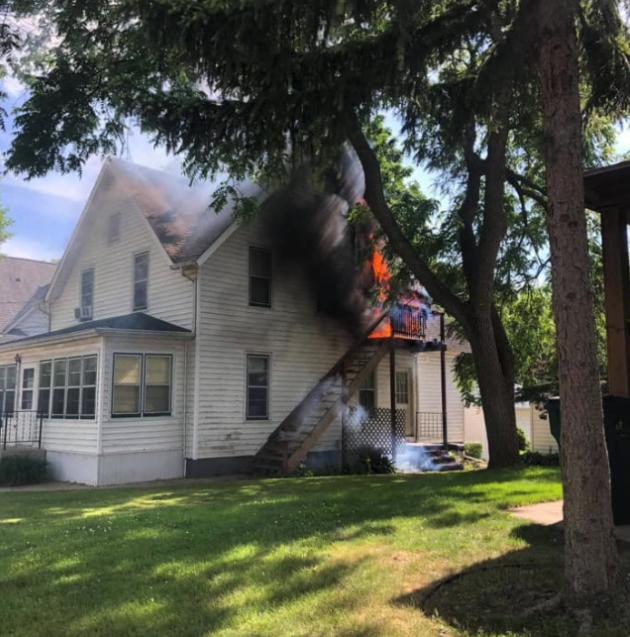
Firefighters battle a fire on a north exterior wall of a two-story duplex on Monroe Street Saturday. With outside air temperatures reaching 95 degrees Saturday, heat played a role in battling the flames. The Fort Atkinson Fire Department was supported in the effort by several area departments through mutual aid. Photos courtesy of the Fort Atkinson Fire Department.
Three $100 million-plus school building improvement options to be presented
(Originally published June 10, 2021.)
By Kim McDarison
Three facilities improvement options, each carrying a price tag of more than $100 million, will soon be presented by the School District of Fort Atkinson’s Facilities Advisory Committee to the district’s board of education. The presentation is tentatively scheduled for Aug. 19.
The 28-member Facilities Advisory Committee (FAC) held its eighth and final meeting May 25, at which time Plunkett Raysich Architects (PRA) representatives Nick Kent and Devin Kack told those in attendance that while the committee’s official time as a body was coming to a close, committee members would have a role in the process, offering guidance and insight, as the school board and members of the community continue to consider facility improvement options and engage in discussions.
The FAC is comprised of volunteer members representing a cross-section of the community, including students, community members, parents, business members, and school district staff and faculty.
Kent told those attending the Zoom platform meeting that the goal of the FAC is to produce a long-range master plan for the buildings operated by the School District of Fort Atkinson.
“The FAC will identify viable facility solutions to present to the community for feedback, which will be narrowed through community engagement sessions with the final options being tested via a community-wide survey,” Kent said.
The work of the committee will be packaged into a presentation to be delivered to the school board by the committee’s co-chairs, Kory Knickrehm and Nicole Liebman, he said, adding: “We are really preparing ourselves to hand this off to the next phase of work.”
The committee held its first meeting in September of 2019, charged with the task of exploring both long- and short-term solutions to maintenance issues and other facility needs as identified that spring within a deferred maintenance report completed by educational facility consultants CG Schmidt (CGS) and PRA.
The committee held eight monthly meetings over a period of 20 months — including a 14-month pause observed during the COVID-19 pandemic — during which time PRA shared 10 options designed to improve the conditions of the district’s buildings and better position them to support models of modern learning and future growth.
Options came with estimated price tags ranging between $36 million, addressing issues of maintenance only, and $133 million, which included costs associated with replacing the district’s existing elementary and middle school buildings with two new facilities each designed to serve students in grades 4k-8.
A list of 10 options
During the May 25 meeting, PRA representatives reviewed 10 options developed for consideration that had been earlier discussed by the committee.
They were:
• Option 1, perform maintenance only: coming at an estimated cost of $36 million, the option addressed maintenance needs in all of the district’s buildings.
• Option 2, renovate/expand existing Luther Elementary School to serve as a grades 6-8 middle school: coming at an estimated cost of between $107 and $111 million, along with changes to Luther, the option included renovating and expanding Barrie, Purdy and Rockwell into three-section elementary schools.
• Option 3, build a new grades 6-8 middle school at the Luther Elementary School site: coming at an estimated cost of between $108 and $112 million, the option included construction of a new building on the existing Luther site to serve as a grades 6-8 middle school.
• Option 4A, build a new grades 6-8 middle school near the high school site: coming at an estimated cost of between $74 and $77 million, the option called for a new middle school to be constructed near the Fort Atkinson High School site. With this option, the district’s four elementary schools would receive maintenance and secure entries, but no configuration changes.
• Option 4B, build a new grades 6-8 middle school on the existing middle school site: coming at an estimated cost of between $71 and $74 million, a new grades 6-8 middle school would be built on the existing middle school site.
• Option 4C, build a new grades 5-8 middle school on the existing middle school site: coming at an estimated cost of between $76 and $79 million, construction of a new middle school, serving grades 5-8, would be built on the existing middle school site. With this option, each of the district’s four elementary schools would no longer serve fifth-grade students.
• Option 5, modernize existing grades 6-8 middle school: coming at an estimated cost of between $68.5 and $71.5 million, the option focused on renovating the existing middle school.
• Option 6, consolidate and modernize elementary schools: coming at an estimated cost of between $65 and $67 million, the option would consolidate the district’s elementary schools from four buildings to three, with Luther identified as the building that would no longer be in use. Updates to the remaining elementary school buildings included additions and renovations designed to create up-to-date, modern learning environments.
• Option 7, modernize elementary schools; build a new grades 6-8 middle school: coming at a cost of between $115 and $119 million, the option focused on building a new grades 6-8 middle school on a site that is yet to be determined, and included renovations and additions constructed at all four elementary schools.
• Option 8, construct two new 4k-8 grade schools, one at the Luther site and another near the high school: coming at a cost of between $129 and $133 million, the option called for the construction of two 4k-8 grade schools, one near the high school and another at the Luther site. The option included closing the existing elementary schools.
A narrowed list of three options
During the course of the eight meetings, the group narrowed the options under consideration to three, leaving options 3, 7 and 8 for further consideration.
A breakdown of estimated costs within each of the final three options is as follows:
Option 3: The renovation and an addition built at Barrie Elementary School would cost $19.5 million; at Purdy Elementary, $18.5 million; at Rockwell Elementary, $18 million, and the new middle school and district office built on the existing Luther Elementary School site would cost $50 million. Some $5 million is earmarked within this option for maintenance projects at the high school.
Option 7: PRA representatives noted that the key difference between options 3 and 7 is the number of elementary schools, with Option 7 preserving all of the district’s existing locations. Each elementary school would be fully modernized, and a replacement grades 6-8 middle school would be constructed. A challenge with this option would be to find a site upon which to build the new middle school, PRA representatives said.
Option 7 costs are as follows: modernization for the elementary schools is estimated to cost $14.5 million at Barrie, $17 million at Luther, $18 million at Purdy, and $11.5 million at Rockwell. Approximately $52 million would be required to build the new middle school, and $5 million is earmarked for maintenance costs at the high school.
Option 8: Noted by PRA representatives as what might be perceived by the community as the largest conceptual change and the most expensive, this option would locate half of the district’s 4k-8 grade students at a new building constructed on the existing Luther Elementary School site, replacing the existing building, and would close existing Barrie, Purdy and Rockwell elementary schools and the existing middle school building. A second 4k-8 grade building would be constructed at a site near the high school.
A goal would be to space the two buildings out at different parts of the community, PRA representatives said.
Costs associated with this option include $61 million to construct the building at the Luther site and $66 million to construct the building near the high school. The option includes $5 million to be spent on maintenance at the high school.
Addressing some of the concepts used within the options presented, PRA representatives noted that the Luther Elementary Site was identified as a potential place for new construction because the existing building occupies a large piece of land.
Would a new middle school be constructed, they said, the middle school that exists today would be closed and not used as a functioning school building.
Looking at the cost of maintenance at the high school, they said, the district has already begun to address some of those concerns using “maintenance dollars that have already been allocated.”
During the May 25 meeting, FAC members worked in small groups to give final thoughts and consideration about the three options chosen for inclusion within a final report.
PRA representatives reminded committee members that the objective was to “prepare the body of work to be handed off to the board of education” so it could “take the next phase of this process forward.”
FAC members were asked to engage in a discussion looking at the pros and cons of each of the three options.
Options, pros and cons
Looking at Option 3, several FAC members raised concerns about space requirements associated with building a larger school, such as a middle school, at the Luther Elementary site. Concerns also were raised about limited space for parking and outdoor recreational opportunities.
Increased traffic flow and its impact to the area was also raised as a concern.
Accommodating growth within the district while losing an elementary school building was also a topic of discussion. FAC members wondered about how the city’s potential success with creating additional housing opportunities, which might bring families with young children into the district, could impact the need for maintaining elementary school space.
A member noted that losing a building would also mean losing a gym, outdoor fields and other space used by students and community members.
A “lack of balance,” with two elementary schools on one side of town and only one on the other, was raised as a concern.
Thoughts about construction during the school day, a potential value gained through the sharing of resources by building a middle school near the high school, and the perception that placing Luther, which was once a junior high school, into service as a middle school might be seen as a step backwards, were included within the discussion.
Members pointed to their concerns about costs.
If the community had to lose an elementary school, one FAC member noted, she believed it would be the least sentimental about Luther.
Others worried about the impact of empty school buildings left within the community.
“What becomes of them?” one member asked.
Another member pointed to an opportunity to lower maintenance costs through closing a building.
Looking at Option 7, FAC members noted that the concept could be implemented in phases.
Opportunities to save money by locating the middle school near the high school were discussed, with some members seeing an advantage in a potential to share such amenities as the gyms, pool and other outdoor resources.
For some, Option 7 provided an advantage by keeping the four elementary schools open, preserving the community’s neighborhood schools.
When asked about the difference in costs for renovations at each elementary school, PRA representatives said the dollars reflected the “beginning condition of each building.”
Several FAC members noted that Option 7 came with the least amount of change for the community, which, they said, could be perceived by some community members as a benefit.
Looking at Option 8, an FAC member said, by reducing the number of buildings within the district, it offers the best opportunity for reducing longterm maintenance costs.
Some thought two larger school buildings would detract from the neighborhood school “feel,” while others noted that it would be a big change for the community.
Members noted their concern about leaving empty elementary school buildings across the community.
One member suggested the buildings could be repurposed as community centers or torn down to produce buildable lots.
Another member suggested there could be a savings in transportation costs derived from the smaller number of buildings.
Next steps
Kent said bringing the information to the community was among next steps. He said the information developed by the committee can be used by the school board and the community to make informed decisions.
After the FAC co-chairs present the information developed by the committee to the board, Kent said, the board will have an opportunity to discuss the materials and possibly further narrow the options.
“There will be a broad-based community survey to find out what the broader mindset is,” he said, adding that in his experience working with other communities: “Information that comes back from this community survey has proven to be highly reliable.”
He described the survey as a “vital piece of information for the board.”
Depending upon the survey results and subsequent community and board discussions, he said, the board may decide to proceed to a facilities referendum question by drafting and adopting a resolution that would bring the question before the electorate. The question would then be placed on a future ballot during a regularly scheduled election.
Conversely, the board might instead decide to move forward with a maintenance plan, he said.
The full FAC meeting held May 25 can be viewed here: https://www.youtube.com/watch?v=badxKAqTsnk&t=26s.
An earlier and related story is found here: https://fortatkinsononline.com/district-facilities-advisory-committee-meets-school-building-construction-options-discussed/.

PRA graphic representation of “Option 3” changes proposed for the School District of Fort Atkinson school buildings as presented to the Facilities Advisory Committee.

PRA graphic representation of “Option 7” changes proposed for the School District of Fort Atkinson school buildings as presented to the Facilities Advisory Committee.

PRA graphic representation of “Option 8” changes proposed for the School District of Fort Atkinson school buildings as presented to the Facilities Advisory Committee.
Stedman recalls coping with wife’s death due to COVID-19
(Originally published June 11, 2021.)
By Chris Spangler
Cheryl Stedman was a strong, vibrant woman who did not let the likes of Lupus or kidney disease stop her from living life to the fullest. But sadly, she met her match in COVID-19.
David Stedman of Fort Atkinson shared his late wife’s story Friday morning as the Jefferson County Health Department hosted “Commemorating a Small Town’s Resiliency in a Pandemic” at Jefferson County Fair Park.
David’s wife of 36 years, Cheryl, was among the Jefferson County residents to have lost their lives to COVID-19. They include 113 confirmed and 21 probable deaths due to the coronavirus.
She passed away Dec. 23, 2020, at age 59.
The Stedmans met while attending the University of Wisconsin-Stevens Point and were married in 1984. Retiring in 2020 after working 31 years at Highsmith Company/Demco, Cheryl was very active in her church, community theater and Lions International.
Diagnosed with Lupus in 1989, Cheryl volunteered with the National Kidney Foundation of Wisconsin and the UW Health Organ and Tissue Organization promoting kidney disease education and organ/tissue donor awareness.
She underwent a successful kidney transplant in 2016 … but lost her life just four years later to the coronavirus.
“Thanksgiving 2020 was about the same as it had been the year before,” David shared during his remarks Friday morning. “Normally, we would have gotten together with family, but due to my nephew’s farming accident at Halloween in 2019, my wife and I had been forced to spend Thanksgiving by ourselves again. Only this time, the coronavirus pandemic would be the cause, and I had no idea this would be the last holiday I would spend with my dear wife, Cheryl.”
David works in healthcare and, during the pandemic, he was being tested for COVID-19 twice a week. However, on Nov. 22, 2020, he said, he was notified that the test he took on Nov. 20 came back positive … just three days after a negative result from his previous test.
“The Jefferson County Health Department performed their contact tracings the day after Thanksgiving and asked if anyone besides myself had been showing any COVID symptoms, and I told them that Cheryl started having symptoms the day before Thanksgiving,” David recalled.
Thanksgiving Day itself was pretty much normal, he said, but the day after, the Health Department suggested that Cheryl be tested for COVID-19.
“Because of the holiday, the nearest place to get a test was the Alliant Energy Center in Madison. We drove to Madison and Cheryl received her test and had the results a day later, which came back positive.” David said.
Throughout the following weekend, Cheryl’s symptoms worsened.
“On Dec. 1st, I finally had decided that we could no longer try to treat symptoms at home, as Cheryl had become much weaker and the cough was getting worse,” he said. “So an ambulance was called and Cheryl was transported to the hospital in Fort Atkinson. She was checked over for a time, but actually was sent home, as the blood oxygen level was still in a normal range.”
He continued: “That night, Cheryl slept on our downstairs couch while I tried sleeping in the recliner. The next morning when I checked her blood oxygen level with the monitor they sent home with her, it had dropped significantly. While doing our videoconference protocol in the afternoon, it was determined that she needed to get back to the hospital for further evaluation.
“I drove her to the hospital, and little did I know that that would be the last time to see her before having to say my goodbyes to her at University Hospital in Madison just two days before Christmas.”
He noted that Cheryl having been a kidney transplant recipient made her a high-risk individual for any type of infections or viruses, and “sadly, COVID was the one mountain she couldn’t climb of all the battles she had encountered in her life … She had beaten them all before, but the pneumonia that developed in her lungs due to the coronavirus was too much for her this time.”
Not being able to be at Cheryl’s side was heartwrenching, David shared.
“Knowing a loved one is struggling with this dreaded disease when you can’t hold their hand or be with them, and all you can rely on is phone communication from the hospital while you hold a constant vigil at home, is the hardest thing I have ever had to do in my life,” he said.
David said that he was fortunate to have several support networks to help him through Cheryl’s hospitalization and death, but even despite that assistance, there are “times you feel alone, helpless, but are grateful for the people that are there to pick you back up again.
“Most of us know that there are seven stages of grief, and one finds themselves waffling through those stages and going back and forth over a wave of different emotions like a rollercoaster ride,” David said.
He expressed thanks for having been given many tools and resources to help him navigate what is a fairly recent “new normal” with which he must cope.
“There are lots of triggers that cause you to weep when you come to the realization that Cheryl isn’t here anymore to share her smile or zest for life, but then there are those moments when the memories of her help you move forward and realize that the memories are what are best to hold onto because you can’t change the past or bring her back,” David said.
He thanked WMTV/Channel 15 in Madison for doing a story on high-risk patients battling COVID 19 and its follow-up on Christmas Eve the day after she passed. He also thanked the Daily Jefferson County Union and Fort Atkinson Community Theatre for their articles dealing with her legacy of giving and her passion for the arts.
“Cheryl was always about education, and by sharing her story, it has always been my hope that in some small way, a life could be saved, or someone could be encouraged to get involved with their community and make a difference,” David said.
He also offered his thanks to the members of the Lions Clubs International family and particularly, the Jefferson Lions Club, for honoring of Cheryl’s memory in numerous tributes, including planting a tree in her memory at Crawfish River Park; Cindy Herbst, director of the Restoring Hope Transplant House in Middleton; his pastor, the Rev. Chris Buckingham-Taylor; Cheryl’s siblings; Dawn Lyons-Wood, for sponsorship of the book “Because of Organ Donation”; University Hospital staff; his First Congregational United Church of Christ family, friends and relatives for their love, support and nurturing through meals and tokens of love and caring; and to all who gave monetary contributions to the many organizations in which Cheryl was involved.
“And (thanks) to the Jefferson County Health Department, for allowing me to speak today and to share Cheryl’s COVID journey,” he said. “Pray we never have to experience another pandemic, where over 600,000 lives and counting were lost, ever again.”

David Stedman addresses a group of about 30 people attending a Jefferson County Health Department hosted program titled: “Commemorating a Small Town’s Resiliency in a Pandemic.” The event was held at the Jefferson County Fair Park Friday. Stedman, a resident of Fort Atkinson, recounted the events leading up to the loss of his wife of 36 years, Cheryl, who died last December after contracting COVID-19. She was 59. Kim McDarison photo.

Cheryl Stedman
Photo supplied.

David Stedman of Fort Atkinson recalls his wife, Cheryl’s, death from COVID-19 two days before Christmas 2020. He was among the speakers at “Commemorating a Small Town’s Resiliency in a Pandemic,” which the Jefferson County Health Department hosted Friday morning at Jefferson County Fair Park. In the foreground is a painting by Robin Chamberlain Sweeney representing abundance, hope and the future. It will hang in the Hoard Historical Museum in Fort Atkinson through July 2 and then be displayed permanently in the Health Department lobby. Kim McDarison photo.
Lasting legacy left by retiring Crossroads instructor
Editor’s note: the following story has been submitted for publication by Bruce Meyer. Meyer is a former newspaper reporter and a former fifth-grade teacher serving in the School District of Fort Atkinson for 22 years. Most recently, he served for six years as a teacher’s aide working with Jude Hartwick at the Crossroads Alternative Education Program, which serves high school students in the School District of Fort Atkinson who are credit deficient and not able to achieve academic success in the general high school environment.
By Bruce Meyer
When the Fort Atkinson School Board approved a first-ever alternative high school in 1999, it began a journey for teacher Jude Hartwick and his many Crossroads students, resulting in newfound confidences, diplomas and a new appreciation for the community where they live.
Hartwick, a public school educator for 33 years, 22 years in Fort Atkinson, is one of 14 teachers retiring at the end of the 2020-2021 school year. Prior to his June retirement he reflected about Crossroads, the alternative high school he helped create, and a place where over 300 seniors found their path for earning a Fort Atkinson High School diploma. All of these students met the state’s criteria to be considered at risk. An at-risk student is someone who is “at risk” of not graduating. Often they are two grade levels behind their peers.
Prior to arriving in Fort Atkinson, Hartwick spent 11 years at the Palmyra Eagle High School, and Milton and Milwaukee school districts as a special education teacher. During, 1998, his first year in Fort Atkinson, he familiarized himself with the student body by going through four years of yearbooks for the current student body. Hartwick was amazed to find that the senior class was 42 students smaller than the freshman class four years earlier. This was after he painstakingly checked records to account for students who moved away or transferred to another district. The bottom line, he concluded, was that 42 students had dropped out of high school, after turning 18, during their senior year. The impact of this at the high school, Hartwick said, was an 84% graduation rate. The impact to the students was far greater, he said, since most jobs require at least a high school education.
Always the optimist, Hartwick saw the findings presented an opportunity for the school district to explore starting a high school alternative education program. The goal being to help prevent future students from dropping out. He knew the Wisconsin Department of Education was making five-year grants available to districts who needed startup money to fund alternative education programs. Hartwick said he began the process with no guarantees the school board would approve an alternative school even if a grant was approved. With no one discouraging him either, he said, he pushed on.
The result was a $90,000 grant for the first three years, with smaller amounts the final two years. The startup money was used to pay his salary, purchase classroom materials, hire a teacher’s aide and buy a used van to transport students on field trips and to school if needed. Hartwick said Joe Overturf, who served the Fort Atkinson School District as the special education and pupil services director from 1985-2007, reviewed the grant before it was submitted and helped tremendously with budget factors involved. With the approval of the school board and school administration, Hartwick was given the task of building the Crossroads program, for the 1999-2000 school year, from the ground up.
Students must apply to enter the program. The review team includes Hartwick, a member of the high school administrative team and a school psychologist or guidance counselor who sits down with the student and their parent(s) or guardians to go over everyone’s expectations. Hartwick tells them regular telephone contact may be necessary to insure their child’s success. Everyone understands a student can be removed from Crossroads for not following behavior expectations. With this in mind, Hartwick said, the program permits a student to reapply, with the same parties present, to start afresh.
“If I can help them begin to feel good about themselves, and the community where they live, it goes a long way in helping them believe they can graduate,” Hartwick said.
Though alternative high schools are generally begun for the same reasons, their success rates aren’t always the same. Hartwick said the state’s average graduation rate for alternative high schools is 25-35%.
Over the past 22 years, he said, he has worked with around 370 students. Factoring in the 40 who dropped out of the program, and those who moved away, Hartwick and Crossroads have accomplished an 81% graduation rate. Anyone who has been to the school’s current stand-alone Grove Street location knows each graduate is remembered with a photograph, which collectively line the walls around the classroom.
Fort Atkinson High School Principal Dan Halvorsen said: “Since Jude and Crossroads first started, the graduation rate has consistently improved and maintained at a high level that is far above the state of Wisconsin average. From a school perspective that is great, but from a student standpoint, and the ability to earn an actual high school diploma upon completion of the program to put toward their future successes, that is absolutely crucial.” Halvorsen, who became principal in 2013, said the graduation rate hasn’t fallen below 95% since he’s been here.
Hartwick acknowledges there are perceptions about alternative schools and the students who attend them. To this he says, “These aren’t bad kids, they’re looking for a way to be saved and to be productive. They come from many backgrounds. They aren’t druggies, or come from bad parents. They just have given up. What I’ve learned from teaching these students is that a lack of sleep is the only true commonality.”
There are many reasons why students fall behind in earning credits toward graduation Hartwick said. “Being habitually truant from school is probably the biggest reason,” he added. According to the state of Wisconsin: “A habitual truant is a pupil who is absent from school without an acceptable excuse for part, or all of, five or more days on which school is held during a school semester.”
Factors contributing to truancy, Hartwick said, can include students who are emotionally fragile, who don’t, or can’t, cope with the anxieties and stress of attending the regular/traditional school. Hartwick said parents who are working, or sleeping, when their teenagers are supposed to be leaving for school, sometimes create opportunities for truancy. Students may also find reasons for avoiding school when there are conflicts with other students, or disagreements with staff, he said. It’s not uncommon for foster children, who come to Fort Atkinson from high schools in other states, to have gaps in their educations. Some of these students make up the lost ground while others struggle without an option like Crossroads. The program works closely with Municipal Judge Chuck Frandson to provide students opportunities for success following truancy court.
Commenting on the program’s better than 80% graduation rate, former Fort Atkinson High School Psychologist Joe Kirt said, “Crossroads is unique because of Jude. Other school districts purchased the Crossroads curriculum he wrote, but only he could deliver it in a manner that made students commit to earning a diploma when they had given up at the high school.”
Having worked with Hartwick the last eight years, Halvorsen said, “Where some alternative education programs just basically do the same things as high schools do, just slower and in a smaller environment, Jude specifically worked to avoid that road map and instead worked through competencies relatable to students’ needs while working through relationship building and strength-based mindset.”
Overturf explains it this way: “I think you need to remember that most, if not all, of the kids Jude served had been repeatedly defeated and rejected by various social systems that were designed to serve students. Those institutions might be the family unit, the school system, the juvenile justice system and others. Not only did Crossroads provide a second chance and new hope, it was designed for students to be successful based on their abilities. When students initially entered the program, many were worn down and defeated. It was usually in a manner of weeks of being in the program that you’d notice a skip in the student’s hitch, and a new found confidence emerge. Crossroads was predicated on understanding individual students and what they needed, not a reformation of what they previously experienced.”
Making a similar observation Halvorsen said, “Jude’s hard work, steadfast commitment to students and getting them ready for the next steps in their lives, despite any shortcomings they may or may not have, has been instrumental in the success of so many students.” He has received the School District’s prestigious Wildermuth Award and is a State of Wisconsin At Risk Regional Award recipient.
Typically the program operates with five to eight students attending the morning session and a similar number of different students attending the afternoon class. The curriculum is built around the expectation students will have a part-time job. Many students come to the program already having had several part-time jobs. Interview and employment skills are emphasized. Hartwick said students hopefully are learning that showing up for school on time is a life skill that transfers to the workplace with their jobs.
In the process of writing a new curriculum Hartwick said: “The department heads of each content area reviewed the curricula as did former high school principal Paul Pelnar, who added a much needed competency on study skills. The Crossroads curriculum was published in 2001. To date, 70 school districts have purchased the curriculum which sells for $620.00.
“Matt Noll, our future Crossroads instructor, helped with reviewing and offering valuable advice on the English competency. Culminating essays are embedded in each subject area and Noll suggested how to integrate them. English is not a stand-alone skill in the real world and we didn’t want it to be in the competencies either.” Hartwick said.
“The competency based program is comparable to earning a B- or better. You have to know the material, as opposed to passing with a D- and being passed along to the next grade. It’s not about seat time. You can learn so much with a high school’s detailed curriculum, but students often tell me they learn more at Crossroads because they are forced to learn the basics in order to be competent,” Hartwick said.
Fort Atkinson’s past and present are covered in the local history competency. Hartwick said this is by design for several reasons. In addition to not always seeing school in a positive light, at-risk students may not view their town favorably either. Despite this, his students aren’t generally the graduates who move to out-of-state cities for employment. Hartwick said it’s more typical for students to look for jobs in the area, or stay in Fort Atkinson. If they marry and have families, the school district is going to be coming back and asking them to help pass building referendums. With this being a fairly normal pattern, Hartwick believes he has a responsibility to show students why this area was settled, who developed the town and why it is still a good place to live.
“I think everyone should learn about our history, our shining bright spots like William Dempster Hoard and Lorine Niedecker,” Hartwick said.
Local businesses have welcomed many Crossroad students with plant tours through the years. Some of them include, Spacesaver, Jones Dairy Farm, The Ball Corp., The Fireside, Pizza Hut, Opportunities, Inc., Domino’s Pizza, Edward E. Jones and the Fort Atkinson Area Chamber of Commerce. Some of these tours have led to employment for the students. The program introduces them to the importance of being a local volunteer. Hartwick said students have experienced this by helping prepare for the AAUW Book Sale, planting trees along city terraces, participating in the Hoard Museum cleanup and scraping bricks to be used at the new Haumerson Pond Warming House. One of the missions of Crossroads is for students to know their community and become engaged citizens.
As Hartwick prepares to hand the baton off to Noll, a 22-year veteran of the high school English department, he has nothing but appreciation for how the Fort Atkinson community has accepted Crossroads students and the program’s goals for them.
“The community has embraced us whenever we’ve gone out to visit a city department whether it be the waste water treatment plant, the city council chambers, police department or one of the volunteer organizations. We’ve never had a permanent home, and despite being moved around, the community still supports us,” Hartwick said.
According to Hartwick, at one time, he considered leaving for a neighboring district, but stayed because of how the community embraced Crossroads. “A buy-in goes both ways. The community bought in and supported these kids. I support the community. I stayed,” he said.
Going forward, he said: “It’s essential the school district understands at-risk students usually suffer from low self esteem to begin with; Crossroads offers these students hope.” As the Crossroads program transitions from one instructor to the next, Kirt offered this, “Without Jude, Crossroads never exists and hundreds of Fort Atkinson residents wouldn’t have diplomas.”
Overturf added: “What I consider the most important trait is Jude never gave up on a kid. His students knew Jude would provide tough love and unconditional support. These things made Crossroads a success.”
His friends say Hartwick has been on the receiving end of this too.
“Even though Jude was the core of Crossroads, he has designed an alternative model which is a prototype for others to model in this school district and across Wisconsin. What a lasting legacy he has left,” Overturf said.
To learn more about the Crossroads program, visit: https://www.fortschools.org/Page/4769.
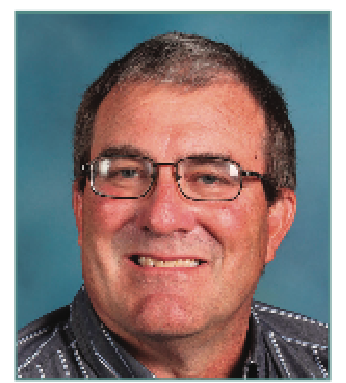
Jude Hartwick
Submitted photo.
One dead in house fire on Foster Street; related Amber Alert issued
(Originally published June 11, 2021.)
Update: The Amber Alert is canceled. The child has been found safe.
Update: An Amber Alert has been issued and states the following: At approximately 10:44 a.m., on June 11, 2021, a fire occurred at 415 Foster St, Fort Atkinson, Wis. A deceased individual was located in the fire. Elizabeth M. Durkee was seen leaving the fire scene with 2 year old Emma J. Schoonover in a 2004 gray Chevy Malibu. Information has been received which indicates that Emma is in great danger. Those with information are encouraged to call the Wisconsin Department of Justice at 1-800-263-5906. A link to the full Amber Alert is here: https://amberalert.widoj.gov.
By Kim McDarison
One person has died in a house fire that took place Friday in the 400 block of Foster Street.
The Fort Atkinson Fire Department was alerted to “fire blowing out of the side of a house” at 10:51 a.m., Chief Daryl Rausch said.
Firefighters arrived at the scene at 10:56 a.m. to discover a 1-1/2 story, single-family home at 415 Foster St. with flames on the north side of the first floor that were spreading throughout the building.
“At some point, it was indicated that somebody could be in the building,” Rausch said, adding that firefighters entered the house and did find a body.
Upon entering the building, firefighters were pushed back by the heat and were unable to remove the body after it was located, Rausch said.
Details about the victim were unavailable Friday, Rausch said, citing an investigation under way by the state fire marshal’s office. He was unable to say where in the structure the body was found.
Information about who and how many people were living in the home also was unavailable.
Rausch said there were reports of a cat living inside the residence, but firefighters did not discover it.
While the building is still standing, Rausch described it as a total loss and said it will be torn down once the state fire marshal’s investigation is completed.
He anticipated its completion sometime next week.
Rausch said he believed more information about the fire would be released at a later date.
The MABAS (Mutual Aid Box Alarm System) was activated, primarily to get help from other departments to provide firefighters relief from conditions of high humidity and extreme heat while battling the fire, Rausch said, adding that multiple departments responded to the call.
Rausch described the day’s events as “biblical,” with high heat and even a hailstorm.
“It was an interesting day. It started out hot and humid and we called for mutual aid because of that,” he said.
After extinguishing the fire, he said, a second storm moved through the area and firefighters were dispatched to help with storm-related calls such as fallen trees.
Firefighters returned to the station after the day’s events at about 8:45 p.m.
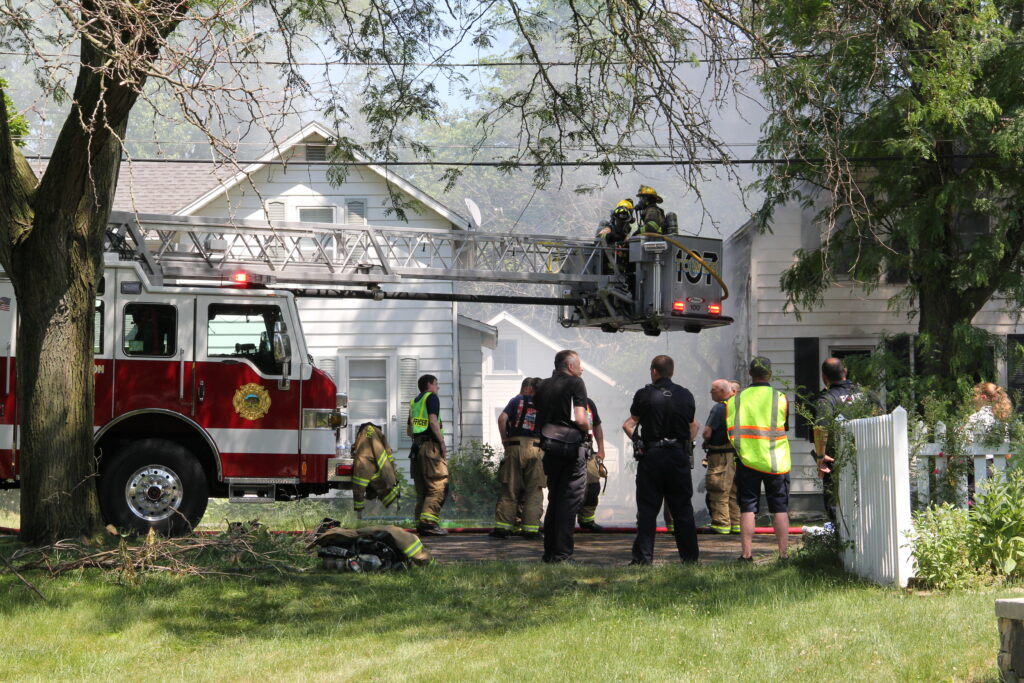

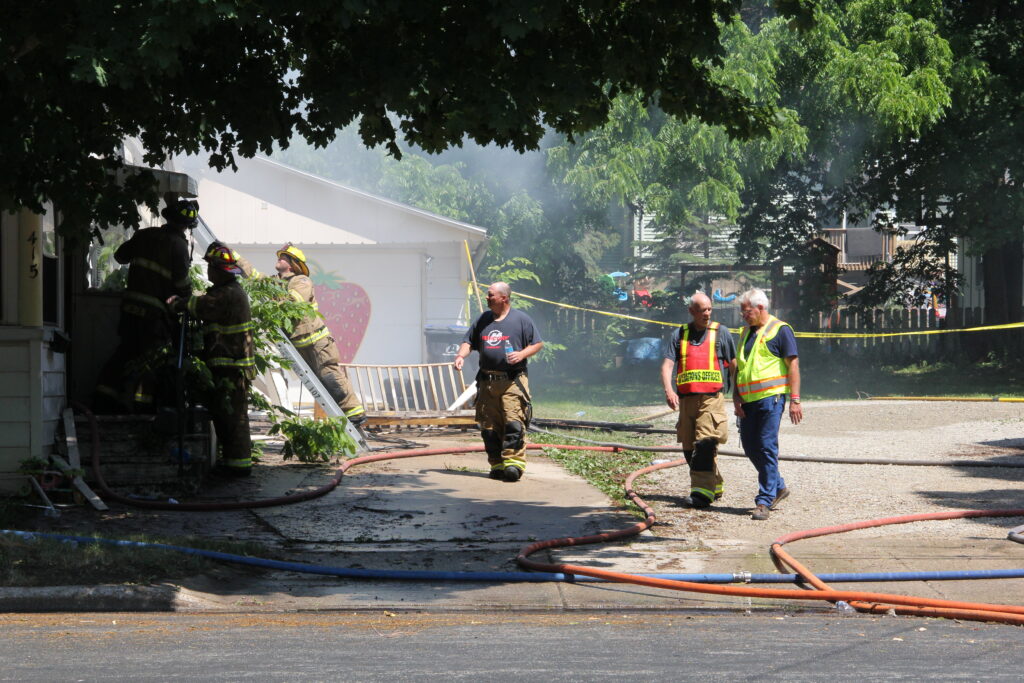
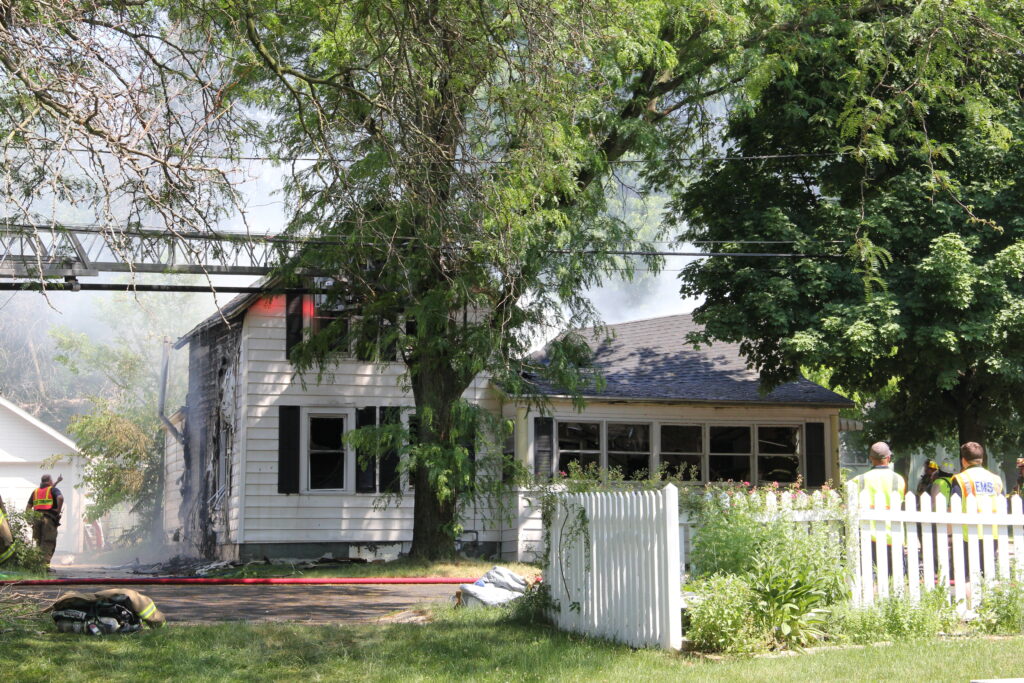
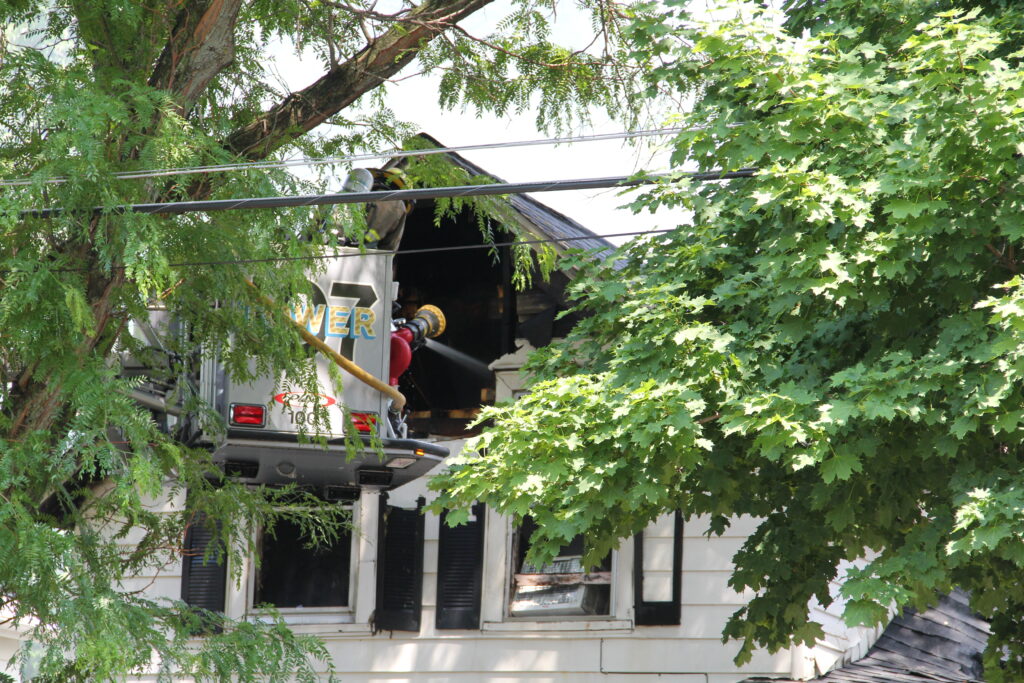
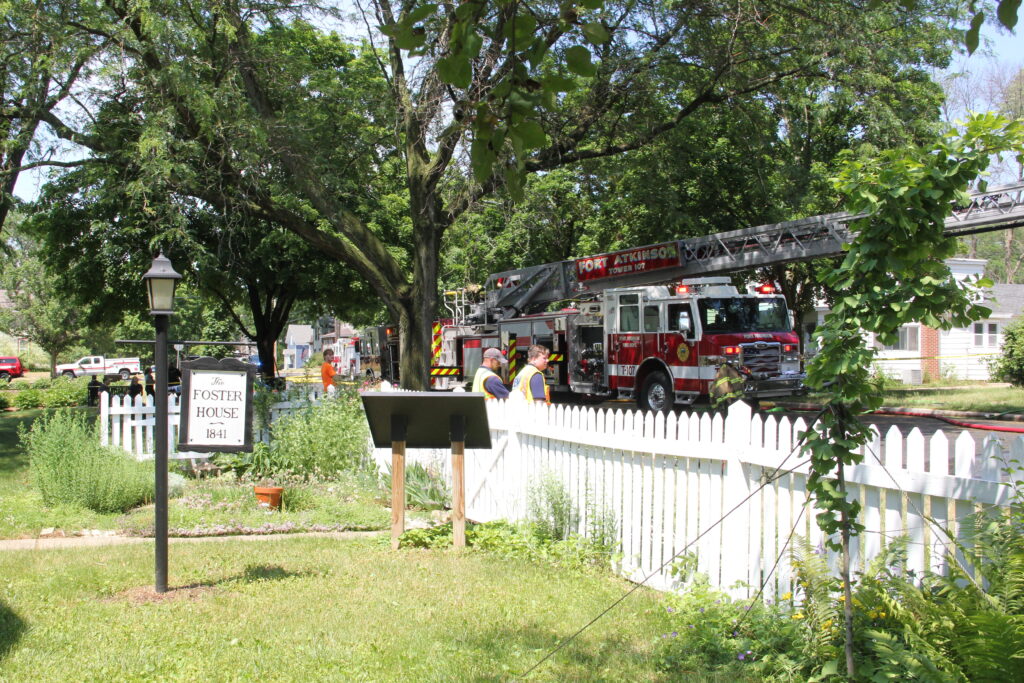
Above photos: Firefighters work to extinguish a house fire at 415 Foster St.
Photos by Chris Spangler.
Pandemic frontline workers thanked, celebrated by County Health Department
(Originally published June 12, 2021.)
By Chris Spangler
Adversity breeds resilience, and that is what Jefferson County celebrated Friday as it was emerging from the 16-month-long COVID-19 pandemic.
The Jefferson County Health Department hosted “Commemorating a Small Town’s Resiliency in a Pandemic” at Jefferson County Fair Park.
Department employees, contact tracers and other healthcare workers expressed their gratitude to all who worked so selflessly to help the county weather the coronavirus pandemic, as well as remembered residents whose lives were claimed by this illness.
Altogether, COVID-19 was attributed as the confirmed and probable cause of 113 and 21 county deaths, respectively.
Contact tracer Lindsey Wren welcomed guests, exclaiming, “What a year-and-a-half it has been!
“Do you remember the first time you heard about COVID-19? How many of us had any idea in January of 2020 what the next 18 months would hold?” she asked. “We have been through stay-at-home and masking orders, contact tracing, quarantine, physical distancing, more quarantine, vaccination and, for many individuals, tragedy and feelings of loss, isolation, anxiety and depression.”
She noted that originally, Friday’s gathering was planned as a memorial for area residents lost to COVID-19. However, as the pandemic progressed, organizers saw a need to acknowledge additional elements.
“While we mourn the loss of over 100 people from our community, we also have found silver linings as unexpected as the pandemic itself,” Wren said.
“Though our collective loss is great, it, too, is our strength, our resilience and our partnerships,’ she continued. “Jefferson County has long prized its small-town feel. But there is more to it than farmland or a lack of skyscrapers. We have grit in our bones and innovation runs strong in our blood. Our abilities have found new heights, the depth of our knowledge has become vast, and we’re more resilient than we ever have been.”
Wren said that with spring comes new beginnings.
“Many of us have found a deeper connection to nature over the past year, and I am no exception,” she said. “Recently, I became more aware of cardinals during my nature walks or just sitting in the backyard. Are you aware of the cardinal’s symbolism? I recently learned that if you are lucky enough to spot a cardinal, you should smile. According to superstition, if you should see one, a loved one who has passed away wants you to know that they’re watching over you and you are not alone.”
Given that so many people have felt alone or isolated during this COVID-19 pandemic, Wren said she hopes everyone finds comfort in that thought as she and her co-workers have.
“Because of this, we have used the cardinal as a symbol of our resilience in the painting you see here,” she said, referring to artwork by Robin Chamberlain Sweeney that was commissioned for permanent display at the Jefferson County Health Department lobby and that was formally presented at the end of the program.
Also Friday, public health nurse Keeley Johnson Crosby and county epidemiologist and COVID-19 public information officer Samroz Jakvani together saluted the community.
“We are here today to thank, honor and recognize the people of our community. Those who have fallen to COVID-19, those who fought tirelessly day after day to save lives and protect us and all the others who have been affected by the pandemic, which has defined so much of the last year and a half,” Jakvani said.
In a little more than a year, the United States has lost more than 596,000 individuals, 113 of those deaths recorded in Jefferson County, he noted.
“Many others became severely ill and some continue to experience the effects of the virus months after being infected,” Jakvani said. “Some of us who are here with us right now are still struggling with the effects of the pandemic. We may have lost loved ones, elderly family members and friends, frontline healthcare workers or others we are connected to in some other way.”
Johnson Crosby said that despite these tragedies, the county has been moving in a positive direction in recent months.
“It is a stark contrast from the start of this year, which, as we all experienced, was the peak of COVID cases, of loss, of the worst of the pandemic for us,” she said.
With nearly half of county residents having received the vaccine and coronavirus case rates lower than they have been in a year, the county now is at the opposite end of the pandemic, “fingers crossed,” she added.
Johnson Crosby recalled that in December 2020, the vaccines were improved and shots started going into arms.
“We still have a large number of new cases confirmed every day, especially when compared to any other communicable disease in our county, but we’re nearing what would become the tip of our downward slope now,” she stated.
Jakvani pointed out that at that time, the Jefferson County Health Department began focusing on vaccine clinics, eligibility and “everything that came together to vaccinate thousands of individuals over a short period of time.
“It took something remarkable from the staff that you see here today to roll with the punches and constantly change direction,” he said.
Jakvani shared a quote by Valerie Tuller-laiwa, coordinator of the Latino Task Force in San Francisco, who said: “We don’t panic; we pivot. We are just continually reacting and responding.”
“That sentiment resonates deeply with me, given the past year and everything we have seen,” the epidemiologist said.
“Along with those remorseful elements of loss that we talked about, we are also here to appreciate our unity — our wonderful, resilient community of Jefferson County and all the communities that thrive within,” Johnson Crosby said. “Over the past year, we saw so much change — on an individual level; within our communities; and across the county, state, and country. Along with our physical health, our mental, social and economic wellness has been impacted by the pandemic.”
Jakvani noted that area residents had different experiences during the pandemic depending on their circumstances, occupation and backgrounds.
“Many of us were isolated at home for long periods of time, hesitant to go to the grocery store, or even pick up mail – when we thought that was risky,” he said. “Some of us couldn’t stay home and went to our jobs caring for people, growing their food and teaching their children, even when the world outside our homes was frightening and uncertain.
“While some sick people isolated themselves to a single room for 10 days, others slept in the garage or pitched a tent outside in all types of weather to protect their vulnerable loved ones,” he added. “Many families were quarantined within their home for weeks or months on end in a seemingly endless cycle of exposures and quarantine.”
Johnson Crosby added that many people were not connected with beloved family members and friends like they were used to being.
“We spoke with families whose loved ones were hospitalized, and mourned with them when all they could do was videochat to tell them how loved they were, not knowing whether they’d ever hug them again,” she said.
The isolation and loneliness felt by people, especially the elderly, was so shockingly real, Jakvani agreed.
“I was lucky to have found love shortly before the pandemic and got married during it (in a very safe way), and got a puppy shortly thereafter who still gets me through my tough days,” he shared. “But so many individuals lost their jobs or experienced a significant decrease in their livelihood, or had to take on about as much as they could handle. That impact is still being felt.”
In addition, he pointed out that local businesses have struggled and persevered and then struggled some more. And yet again they persevered, like so many others in the community.
“That is the story we also want to honor today,” Johnson Crosby said. “That of small-town resilience and grit.”
She and Jakvani shared some examples of what they witnessed.
• The husband who waited patiently until his wife was strong enough to FaceTime him from the hospital.
• The family who hosted a drive-through birthday party to give some semblance of normalcy to the best part of being a kid.
• The woman who, when called to get her vaccine, negotiated to get appointments for her entire work family.
• The family who lost someone special — a mom, a wife, a daughter, a healthcare worker – who shared their anguish with us and vowed to honor her memory and sacrifice.
• The nursing home workers who pulled double shifts to cover for sick colleagues.
• The business owners who changed the way they did business, making curbside options available and making their storefronts as safe as possible for the public.
“While it is hard to compare hardships, (I must give) a special acknowledgment of the burden that children and other students have dealt with this past year,” Johnson Crosby said. “From a lack of normal socializing to graduating Zoom University with honors, they have shown us what we are capable of.”
Jakvani also acknowledged school staff “who learned new ways to teach our children.
“You have an impossibly difficult and vital job on any given day, and this past year tested the strength of our school systems as much as it did our healthcare systems,” he said.
Johnson Crosby explained how public health staffers look at Adverse Childhood Experiences, or ACEs, which greatly impact a person’s risk for adverse health status.
“Too much adversity is clearly detrimental, but what we also know is that adversity breeds resilience,” she said. “And it is clear that we are a resilient community, able to overcome the challenges we face and to collectively take our lessons learned forward for mutual benefit.
“What we want to take from this pandemic is an affirmation of our unity, our solidarity with one another and an acknowledgment of our shared vulnerability in the face of a pandemic and other collective threats,” Johnson Crosby continued. “Though many of us are relatively healthy and/or were at low risk of severe illness from COVID-19, we practiced public-health recommendations to stop the spread of COVID-19 and ease the overall burden of the pandemic on our loved ones and our community.”
Jakvani recalled how the community-at-large stepped up to help fight the coronavirus during the past year-plus.
“We stayed at home when case rates were high. We quarantined upon exposure. We wore our masks — mostly,” he said. “We did not do those things just for our own selves. It was to protect all of us. A collective ‘us,’ which especially includes our most vulnerable community members, or our family members. What we sacrificed for others and what we experienced has made us a more resilient people.”
He and Johnson Crosby offered special thanks from the Jefferson County Health Department staff to it leadership and the county board of supervisors, and a “most special thanks to our community members; those who have supported us; those who engaged with us in constructive dialogue; those who wore their masks, distanced from others and stayed home when they were ill; and all the others who fostered their resilience this year.”
Also Friday, Gail Scott, Health Department director and county health officer, observed that 2020-21 has been one of the most trying times for most public health staff, along with many others who are employed in the healthcare field.
“We have seen a record exodus of public health professionals, and many healthcare workers are feeling depleted,” she said. “There is a valid reason for it. Over the past year-and-a-half, we have come together to achieve what would seem impossible.”
Through countless virtual meetings, long hours at night working and thinking about work and the community, and doing the hard work to achieve their objectives, she said, even when information was scarce on this new virus, they found the answers to forge ahead, she stated.
“Whether it was through the Emergency Operations Center, the Testing and Vaccine Task Force, through a different collaboration, or whether you were working on COVID-19-related items outside of those venues, you were our partner,” Scott told attendees.
She called those partners one of the most valuable resources in the county’s coronavirus response.
“Just as testing, vaccination and educational resources were the assets that helped us to achieve our goals, so were the partners and the resulting collective impact,” Scott said. “Simply put, without the help, support and engagement of our partners, our response to the pandemic would have been incomplete, and far less successful than it was.”
She concluded: “So thank you. Thank you for being with us in this effort. Thank you for helping to inspire us. Thank you for helping to keep us going strong in the face of adversity and high case rates and mass misinformation. Thank you for being available for early morning calls and, yes, those last-minute favors. Thank you for helping our community. We know that without true partnerships and collaboration, our work is less impactful. Working with you all over this past year-and-a-half has helped to demonstrate that beyond a doubt,”
She then introduced Elizabeth Chilsen, Public Health Program manager, who started working with Jefferson County in June 2019.
“December is when all of our lives started turning into COVID,” she recalled. “When I think about this past year-and-a-half, so many emotions start flying in.”
She explained that public health workers undergo numerous hours of emergency preparedness training.
“These countless hours spent on training preparing for these types of events made me feel very confident in what to do and why I would do it,” Chilsen said. “The truth is, however, I thought I understood what and why, but there is nothing that could have prepared me for the ‘who’ or the ‘how’ of this pandemic.”
She said that prior to the pandemic, Jefferson County’s “tiny, but mighty” health department protected the health of residents by providing a wide range of services ranging from immunizations to home visiting to even preventing alcohol and tobacco use in children.
“Upon the notice of our first positive case in the United States, our job quickly shifted and these important services were completely halted,” she reported. “We had to conceptualize a new way to protect our county, and had to come to terms with the realization that we could not do it alone.”
Chilsen said that is the “who” of the pandemic for which they were not prepared.
“There is no amount of training that could tell you just how many staff are needed to contact trace a novel virus that we were still learning about,” Chilsen said. “There’s no amount of training that could tell you just how many people are needed to vaccinate an entire population. Our small team quickly multiplied and we continued to work together.”
This type of work truly isn’t for everyone, she emphasized.
“But for the ‘who’ of the pandemic, this work is for them,” Chilsen said. “For the people who jumped in ready to help the cause, some having never even stepped in Jefferson County, we thank you. You jumped in at a time of uncertainty and fear, and when we needed you the most, and for that, we are forever grateful.”
She continued: “Throughout this pandemic, long and stressful hours became our new norm. Despite the demanding days, our team continued to give their all, oftentimes feeling like a cog in a machine that was designed to chase a problem we were neither helping prevent nor solve. As the days continued, we could barely keep up. The darkness seemed to completely consume us and the term ‘burnout’ became very real for us. This is the how of the pandemic that no one could ever have prepared us for.”
She described how gut-wrenching it felt to see colleagues burn out while the days turned into months and months into what felt like an eternity.
“How difficult it is having something completely consume your entire department and see your staff morale decrease exponentially,” Chilsen said. “How scary it is to see a mass exodus of healthcare workers, knowing that there will be detrimental downstream effects. Nothing, and I mean nothing, can prepare you for that.”
Somehow, she added, the healthcare workers found strength as a team to make it through.
“You find ways to remind each other of the importance of what we are doing and our ability to persevere and come together to help the greater cause: our community,” Chilsen said. “To our entire team and to those of you who volunteered your time or came out of retirement to help us, I want to thank you. You may not have been an official part of our team, but I never in my life have met a more dedicated group of individuals and I never in my life have been more proud to be a part of anything as I am this team.”
She concluded, “As we are now coming to a point where we are going to go our separate ways and embark on a new adventure, I really hope you remember your time with the Jefferson County Health Department and the hardships that we endured together.
“I also want you to remember all of your accomplishments. I hope you remember your resiliency and the fact that you can truly accomplish anything you put your mind to. Together, we have navigated through this COVID storm, and things are starting to look brighter, but please know we could not have done it without all of you.”
Also taking the podium briefly was Ellen Haines, long-term care consultant to the Jefferson County Health Department, who has had a 52-year career in healthcare, all in the county, with a wide variety of duties.
“This last year, I have worked with this fabulous COVID group at Jefferson County Public Health and really learned and tried to provide my support to the long-term care community in Jefferson County.
She led a moment of silence to remember all the individuals who lost their lives to COVID, as well as to any and all other causes.
Rounding out the program was Simone Bruch, the Jefferson County Health Department’s COVID-19 Business/Outbreak Team lead, who shared some background about the aforementioned painting donated by Sweeney, titled “Abundance, Hope and Future.”
When asked to create a piece of art that represents the community’s resilience, Sweeney did so with this description:
“Here is an earth mother holding rebirth in her hands/arms. The orbs represent those who have passed, but are still with us. The earth mother’s dress becomes a boat. The eagle signifies inspiration, release from bondage and victory. Her prayers travel to heaven on back of an eagle, which also represents wisdom, freedom, courage, hope, resilience, healing and vision.
“Fish and fields represent abundance. The wind blowing her hair and dress represents moving forward, a continuum. The large orb on the upper left corner is no longer white because it is moving on, while the green orbs are associated with the heart and nature.
“The fish also represent the unconscious higher self. Water brings life to the creatures living below. It symbolizes fertility, birth, and rebirth. The cardinals represent devotion and loving relationships.”
Bruch said that the painting will be on exhibit at the Hoard Historical Museum in Fort Atkinson through July 2 before being moved to the Jefferson County Health Department lobby.
Also speaking during the program was David Stedman of Fort Atkinson, whose wife, Cheryl, died of COVID-19 in December (A separate story on his remarks appears here: https://fortatkinsononline.com/stedman-recalls-coping-with-wifes-death-due-to-covid-19/).
Sponsors of the event included Blodgett Garden Center, Chilsen Hardwood Flooring and Walmart. Packets of birdseed were distributed to attendees to help attract cardinals to their birdfeeders.
After the program, Bob Salov, chief director of the Cambridge Area Emergency Medical Service took to the microphone to offer a few remarks.
Noting that 50 percent of his district is in the Town of Oakland area of Jefferson County, he expressed the importance of thinking about the firefighters, law enforcement officers, EMTs and paramedics who undertook a tremendous amount of preparation at a huge cost to protect themselves and the public from COVID-19.
“We had no exposures, and we confronted COVID patients on many, many calls,” he said, thanking the Jefferson County Health Department for its support.
The video of the program may be viewed on the Jefferson County Health Department Facebook page.

Guests at the Jefferson County Fair Park listen to a “welcome” speech delivered by contact tracer Lindsey Wren. The remarks were part of a program called: “Commemorating a Small Town’s Resiliency in a Pandemic.” The event was hosted by the Jefferson County Health Department Friday to express gratitude to healthcare workers and remember community members lost to the COVID-19 pandemic.
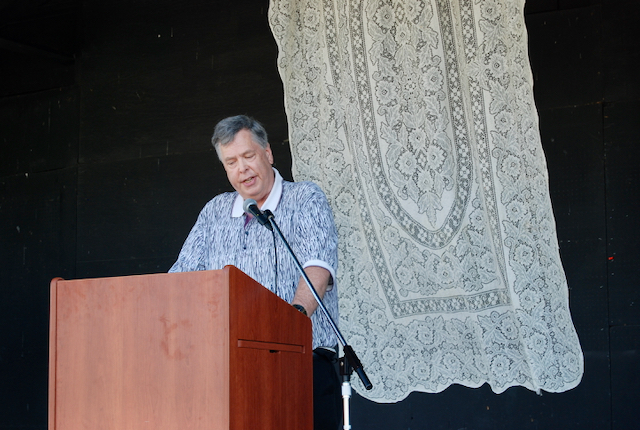
Taking the podium, Fort Atkinson resident David Stedman talked about his wife and her battle against the disease. Cheryl Stedman died in December.

Public Health Program Manager Elizabeth Chilsen speaks about the hours of training undergone by county healthcare workers to prepare for emergencies such as the COVID-19 pandemic. Chilsen, who started working with Jefferson County in June 2019, said: “When I think about this past year-and-a-half, so many emotions start flying in.”

Jefferson County Health Department Director and county health officer Gail Scott calls 2020 and 2021 one of the most trying times for most public health staff.
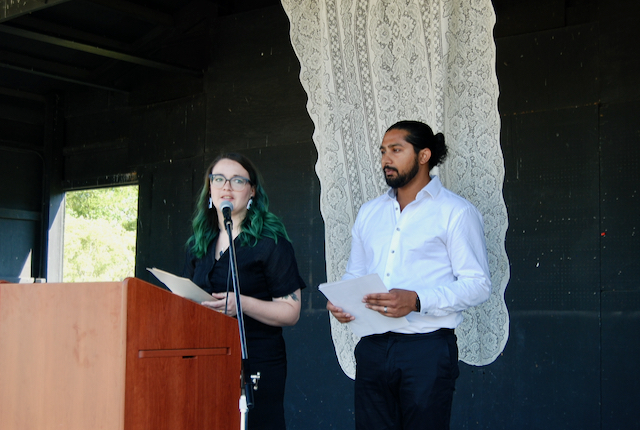
Public health nurse Keeley Johnson Crosby and county epidemiologist and COVID-19 public information officer Samroz Jakvani together salute the community. They thanked, honored and recognized those who fought to save lives and those who succumbed to the disease.
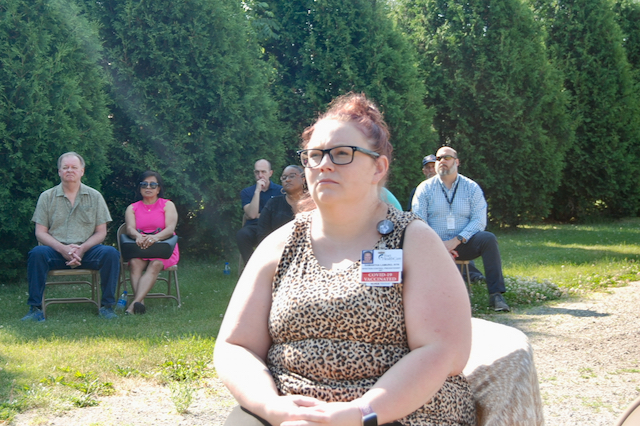
A healthcare worker listens to the program.
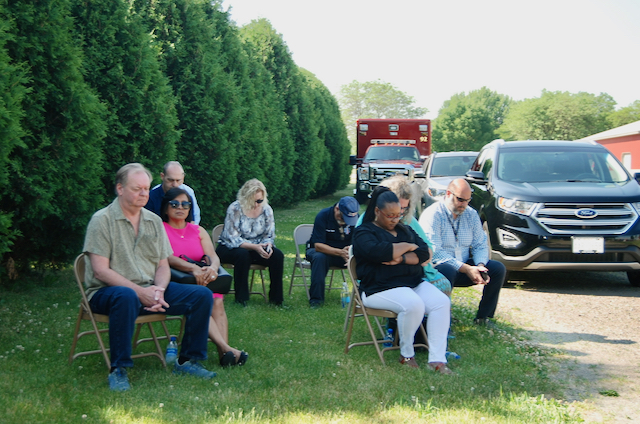
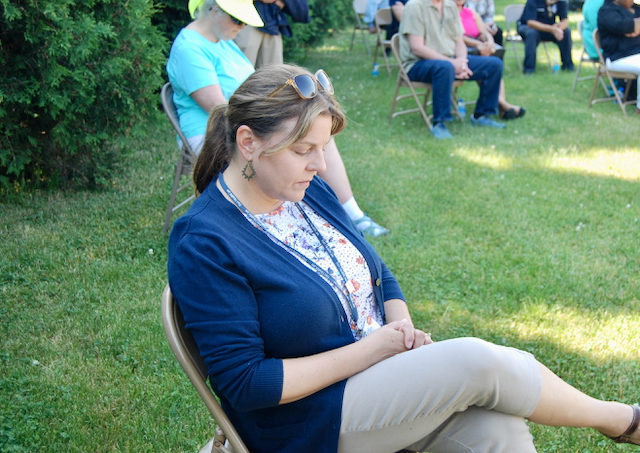
Above two photos: Program attendees observe a moment of silence.
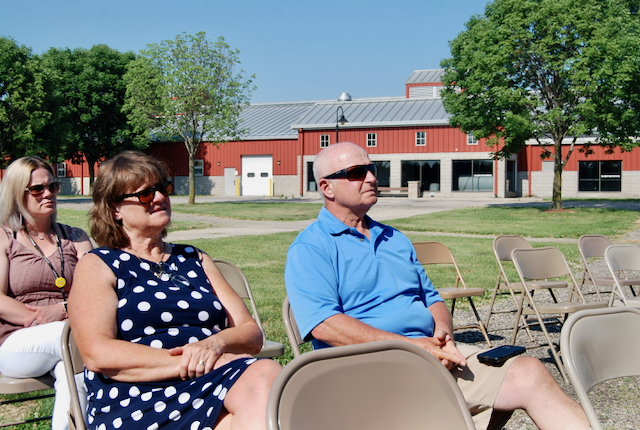
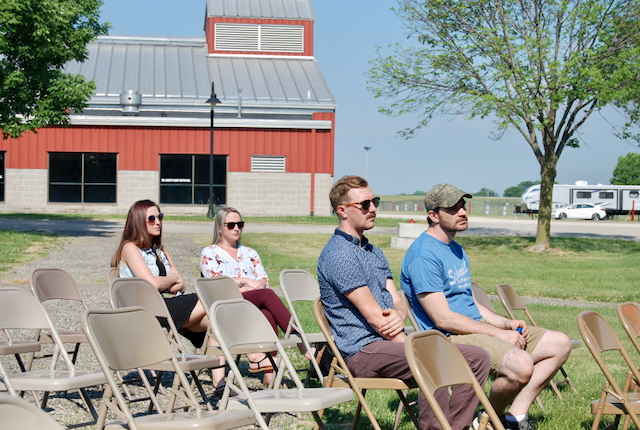
Above two photos: Attendees listen to program speakers.
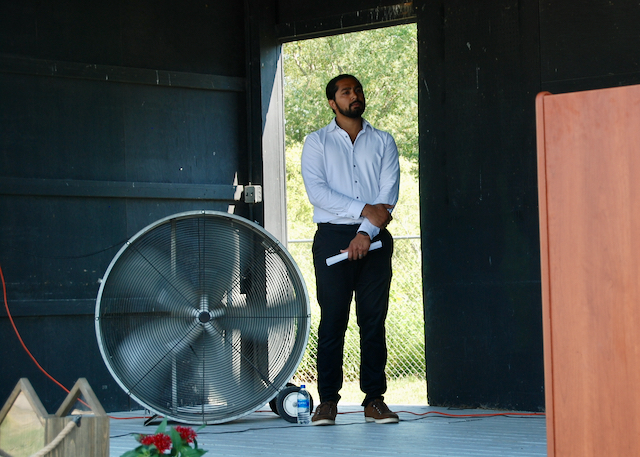
Jefferson County Health Department epidemiologist and COVID-19 public information officer Samroz Jakvani listens to fellow speakers.

Coming from the audience to take the podium at the conclusion of the program, Bob Salov, director of the Cambridge Area Emergency Medical Service expresses his gratitude to the Jefferson County Health Department for its support. Fifty percent of his district is in the Town of Oakland area of Jefferson County, he said.

Jefferson County Public Health Department Director Gail Scott addresses the audience. She shares the stage with a painting done by artist Robin Chamberlain Sweeney. The painting was commissioned for permanent display at the Jefferson County Health Department lobby and that was formally presented at the end of the program.

Members of the Jefferson County Health Department and program speaker and Fort Atkinson resident, David Stedman, at right, gather around art commissioned by the department symbolizing abundance, hope and the future. The piece will be on display at the Hoard Historical Museum in Fort Atkinson through July 2.
Photos by Kim McDarison.
Homicide, strangulation, arson among charges filed in relation to Foster Street house fire
(Originally published June 15, 2021.)
By Kim McDarison
Charges have been filed against Elizabeth M. Durkee, the 36-year-old Fort Atkinson resident who was listed as a “suspect” in an AMBER Alert released by the Wisconsin Department of Justice Friday.
Durkee is scheduled to appear in Jefferson County Circuit Court before Judge Robert F. Dehring, Jr., according to records released today through the Wisconsin Circuit Court Access website. Her initial appearance is scheduled for 1:15 p.m.
Charges filed against Durkee include: first-degree intentional homicide; strangulation and suffocation; arson of a building without the owner’s consent, and mutilating a corpse.
The charges listed are all felony charges, with first-degree intentional homicide — a class A felony — bringing a possible penalty of life in prison.
Durkee was identified as a suspect by the Department of Justice Friday in an AMBER Alert, which noted that Durkee was last seen leaving what the department identified as a “suspicious” fire which had occurred at approximately 10:44 a.m. Friday at a residence on Foster Street in Fort Atkinson.
According to the Fort Atkinson Fire Department, a body had been found by firefighters in the house, located at 415 Foster Street. Details about the identity of the deceased person were not released.
The AMBER alert details specified that a “deceased individual was located in the fire.”
Details within the alert went on to state that “Durkee was seen leaving the fire scene with 2-year-old Emma Schoonover,” whom, the alert continued, was believed by the department to be in “great danger.”
The AMBER alert was canceled about an hour after it was released. The Department of Justice updated the alert to note that “the child has been found safe.”
Court documents released today in advance of the 1:15 hearing indicate that there is a motion before the court to seal some information about the victim and information presented by a witness.
Court documents list Durkee’s address as 415 Foster St.


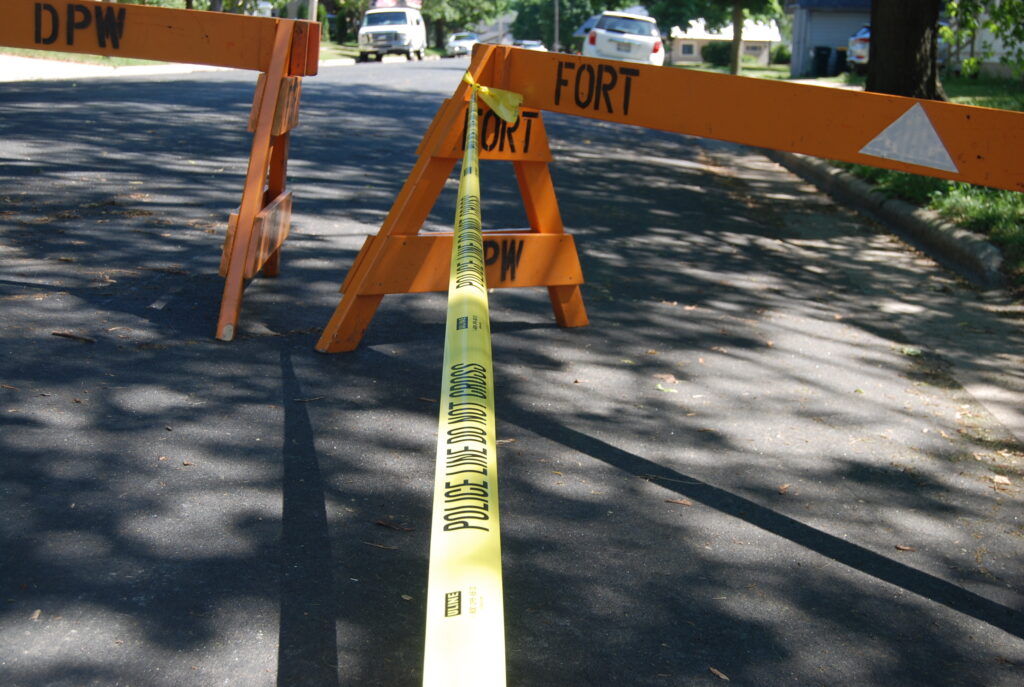

The photos above show the aftermath of a fire which took place Friday at 415 Foster St. A body was found in the house, which was described as a total loss by Fort Atkinson Fire Chief Daryl Rausch. The Fort Atkinson Police Department has since closed Foster Street to all but residential traffic. An investigation is underway by the State Fire Marshal’s Office which operates within the Wisconsin Department of Justice.
Kim McDarison photos.
Homicide defendant alleges grandmother’s death was mercy killing
(Originally published June 15, 2021.)
By Kim McDarison
Fort Atkinson resident Elizabeth Durkee made an initial appearance today in the Jefferson County Circuit Court where she faces charges of first-degree intentional homicide; strangulation and suffocation; arson of a building without the owner’s consent, and mutilating a corpse.
The crimes are alleged to have taken place at 415 Foster St. The residence served as home to Durkee and the alleged victim in the case, a 72-year-old woman who remains unnamed in the criminal complaint and who was the defendant’s grandmother. At least one of Durkee’s two children, 2-year-old Emma Schoonover, was living at the home on June 11, the day in which a fire erupted at the residence.
According to the criminal complaint, if convicted, Durkee faces sentences including imprisonment for life and fines up to $100,000.
Appearing through Zoom from the Jefferson County Jail, Durkee learned that a cash bond of $1 million was set with conditions, including that she have no contact with the people listed on the victim witness key.
After the hearing, Durkee, 36, was returned to custody, according to the Jefferson County District Attorney’s Office.
During the initial hearing, the court found probable cause for all four counts listed on the criminal complaint.
A preliminary hearing has been set for Aug. 6, at 8:30 a.m. The hearing will be held in person.
From the complaint
Information included within the criminal complaint filed with Jefferson County District Attorney Monica Hall’s office on June 15 outlines a five-day event, beginning June 7.
According to the document, Durkee, after being taken into custody and made aware of her rights, agreed to make a statement.
In her statement, Durkee said she had been living at the residence at 415 Foster St. with her 2-year-old daughter and grandmother. Durkee described her grandmother as being in poor health, with advanced Parkinson’s disease and diabetes. She had also suffered a debilitating stroke in March and was blind, according to the complaint.
Within her statement, as described within the complaint, Durkee noted that her grandmother was bedridden and required assistance with daily functions. Care Wisconsin aided on a weekly basis with showering.
According to Durkee, her grandmother enjoyed listening to music, watching television and telling stories about family members including her late husband.
According to the complaint: “The defendant said the victim’s health was declining and she was suffering from anxiety and diarrhea. She said she was sick of feeling bad all the time and feared going back to a nursing home. She also said she did not want to live anymore and wanted to be with her late husband.”
On the evening of June 7, according to Durkee’s statement as recounted in the complaint, as Durkee prepared dinner, her grandmother asked her to help her end her life.
Later that evening, according to the statement within the criminal complaint, Durkee said “she would help her, but didn’t know how.”
According to Durkee, after the two said they loved one another, Durkee “covered the victim’s nose and mouth with flower-colored duct tape. The defendant said she remained in the room while the victim gasped for air.”
Durkee said it took about two minutes before her grandmother’s body stopped moving.
“The defendant said the victim was calm at first, but started to panic when she could no longer breathe,” according to the complaint.
After she was motionless, Durkee said she covered the body with a blanket and removed the duct tape.
“The defendant said she and her daughter did not leave the house until Wednesday (June 9) when they got groceries. She spent most of the week deciding what to do. She thought about calling an ambulance, but decided not to,” the complaint stated.
By Thursday, according to the complaint, Durkee said she noticed a darkening in color of the body’s skin and an odor of decay.
“She then decided to start the house on fire and have her and her 2-year-old die in the fire,” the complaint continued.
With gas obtained from a can in the garage, the defendant poured the liquid on “random pieces of furniture and objects throughout the first floor of the home.”
She also poured gas on the blanket covering the victims’ body, the complaint noted.
Then, according to the complaint, she “decided she could not kill herself and her daughter and put the gas can back in the garage.”
On Friday, June 11, according to the complaint, Durkee woke up around 9 a.m., packed some of her daughter’s belongings, placed her daughter in the kitchen of the home, entered the victim’s bedroom and lit the gas-covered blanket with a lighter. She and her daughter then left the residence in her car.
The Fort Atkinson Fire Department, after being alerted to the fire through 911, arrived on the scene around 11:40 a.m. to discover the house being consumed by flames. A body was discovered in the building.
According to the complaint, the victim’s identity was established during the autopsy through a name that was printed on an item of clothing and on her dentures that were still in her mouth. The autopsy also established that the victim died before the fire.
The Fort Atkinson Police Department also responded to the fire.
According to the complaint, Officer Ryan Walters, who had previous professional contacts at the home, was informed by a neighbor that a “heavy set female and young child” had left the home, but the neighbor was unaware of the whereabouts of the home’s older occupant.
Fort Atkinson Police Officer Kevin Miller, who also was reported to have had previous professional contacts at the home, was described in the complaint as being aware that the older occupant had medical issues and was “mainly bed bound.” While an effort was made to get inside the building, the heat and smoke made those attempts unsuccessful. As firefighters suppressed the fire, the complaint noted, the officer was able to see the body inside.
After the fire, officers looked at camera footage produced by the Hoard Historical Museum, which is located across the street from where the fire took place, to determine when individuals described by neighbors may have left the house.
According to the complaint, the individuals described by neighbors left the house at 10:44 a.m. and smoke became visible at 10:46.
At approximately 9:38 p.m., agents from the Wisconsin Division of Criminal Investigation talked by phone with Durkee’s 17-year-old daughter who did not live at the Foster Street residence.
According to the complaint, she said: “the defendant told her the defendant wanted to put the victim our of her misery.” She further stated that the defendant said “she would burn the house down after the victim died … (and) she would then drive her and her 2-year-old daughter into either the Rock River or Lake Michigan.”
“In the early morning hours of Saturday June 12, 2021, law enforcement developed information that the defendant was staying at the Super 8 Motel in the city of Delavan,” the complaint stated.
Law enforcement officers arrived to find Durkee and her daughter staying at the motel.
The 2-year-old was turned over to family members at the defendant’s request and the defendant was taken into custody.
The full criminal complaint follows:
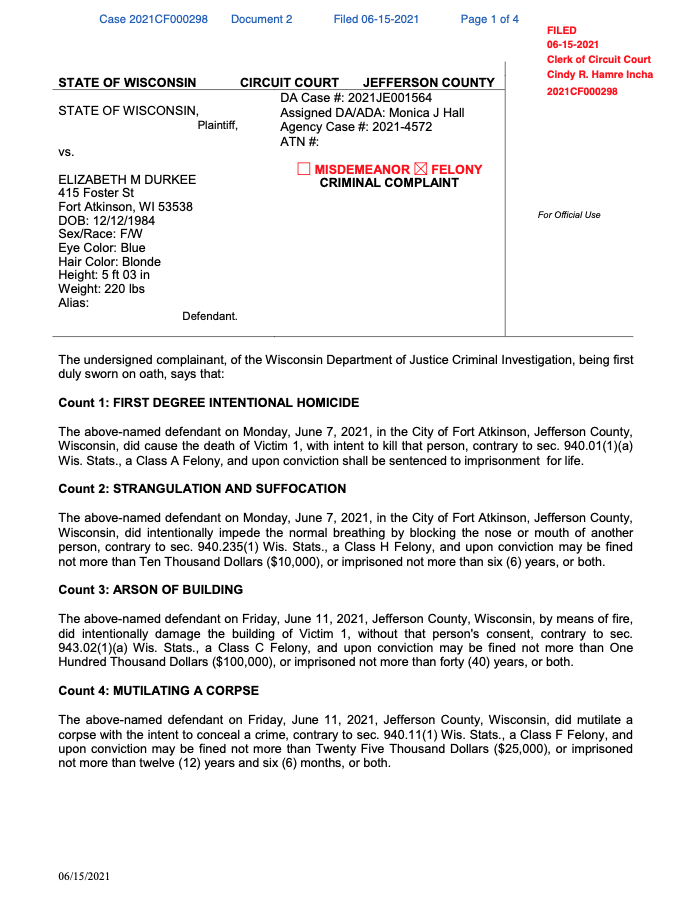
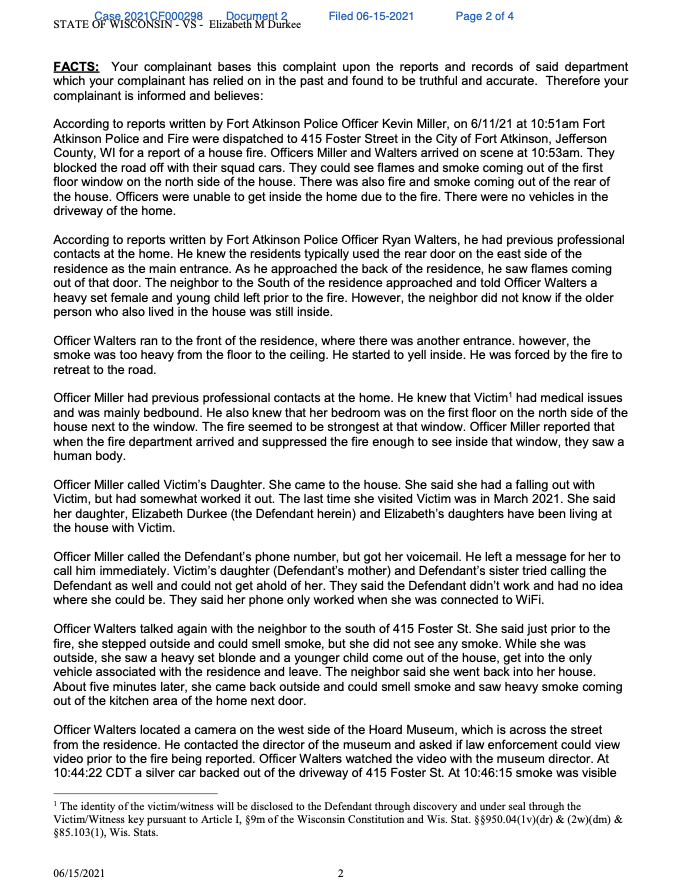


‘Puppy Serenade’ dedicated in Rock River Park
(Originally published June 16, 2021.)
By Chris Spangler
The great-great-great granddaughter of a charter member of the Kennel Club of Fort Atkinson was at Rock River Park for Tuesday’s dedication of “Puppy Serenade.”
Created by Fort Atkinson sculptor Mark Dziewior, the bronze statue is located near the entrance to the disk golf area. Alongside it are a tri-purpose (human/canine/bottle-filling) fountain and a combination bench/pedestal.
The project honors the three founding members of the KCFA — Patty Beran, Marleen LaPlant and Rita Hasel — and their respective dogs: Nova Scotia Duck Tolling Retriever “Cody,” Dalmatian “Dottee” and Scottish Terrier “Scarlett.”
Among the KCFA members, friends and guests attending the dedication was “Birch,” Cody’s 7-month-old great-great-great granddaughter, who stood up on the bench to extend a paw to her ancestor. Afterward, she received a personalized dog treat.
This project was sponsored by Kennel Club funds, a grant of $8,050 from the Fort Atkinson Community Foundation and donations from the community.
KCFA Treasurer Mabel Schumacher was coordinator of the project.
“Patty, Marleen and Rita have a shared love of dogs, and it was their passion that gave rise to the Kennel Club,” she said during the dedication. “In 1991, these ladies, along with their dogs, met every week in a downtown parking lot to work their dogs in preparation for showing. They found they appreciated the support they received from each other and the benefit of sharing their enthusiasm about dogs.”
As a result, they formed the Kennel Club of Fort Atkinson in 1992, and it was not long before others with similar interests joined the fun.
“Today, as we unveil ‘Puppy Serenade,’ I am going to repeat something I borrowed from Patty Beran’s Facebook page,” Schumacher said. “She has a kennel, and she described her role there as ‘chef, personal trainer, driver, therapist, stylist, and midwife.’ I know that our founding members would smile and agree that this description appropriately fits them all.”
Schumacher acknowledged several individuals, businesses and organizations that played critical roles in this project, starting with Dziewior, “who has created the bronze statue that depicts the three ‘founding puppies’ happily joining their voices in a true ‘puppy serenade.’”
She pointed out the precision of the artist’s work, as Dziewior meticulously replicated the Dalmatian’s dots.
She also thanked Brooke Franseen, director of the Fort Atkinson Parks and Recreation Department, and her retired predecessor, Scott Lastusky, as well as retired assistant city engineer Rudy Bushcott, “who also has been involved in past Kennel Club projects, providing support at every level from planning to installation.
“We would not be here today without the support of the Fort Atkinson Community Foundation, represented by Director Sue Hartwick,” Schumacher continued. “We are grateful for the generous grant we received in the amount of $8,050.”
In addition, Schumacher acknowledged the support of KCFA members.
“As a small all-volunteer nonprofit organization, the Kennel Club continues to pour its heart into the community — from dog-training classes to public education about responsible dog ownership, to community service projects such as this one,” she said. “Club members, we salute you.”
She also expressed thanks to the craftsmen and contractors who made the project possible, starting with Fort Atkinson Parks and Recreation Department employees J.J. Yanke, Robbie Allard, John Bennett, Rob Stine and Josh Crandall, and Fort Atkinson Public Works Department employee Dennis Tessman.
“These gentlemen have been involved in all stages of the project, site preparation, concrete work, carpentry with the doghouse, asphalt work, and installation of the bronze,” Schumacher said. “They have all been easy to work with and very patient with me, as I appeared frequently with my camera to record progress.”
She additionally acknowledged Bob Muench of Stonecraft Masonry, who designed and crafted the pedestal and bench; Mark Engelke, Chris Engelke and Mike Paitel of Mark the Plumber LLC, who completed the water fountain hookup; Mark Warren of American Awards & Promotions, who was responsible for the plaque on the pedestal; Dodge Concrete; Hausz Brothers Inc. and LaGrange Asphalt Plant.
As Dziewior unveiled the statue, Schumacher said, “These are the pups that put Patty, Marleen and Rita on the pathway that led to the Kennel Club of Fort Atkinson.”
“Speaking on behalf of the three founding KCFA members, Hasel said that the club grew out of a pet project, so to speak.
“The three of us started the club for very selfish reasons, because we were enjoying what we were doing so much and we could do it together,” she recalled. “So it wasn’t like we were thinking ahead that this is what was going to happen.”
However, she was glad it did, and extended a “great big thank you to everyone who has been part of this dedication.”
Among those was project coordinator Schumacher, Hasel said, noting that “when Mabel takes the bull by the horns, stand back!
“Thanks to everyone who had anything to do with this, especially the Kennel Club for its continued success and its support to all of us,” she said. “I don’t think I ever thought my name was going to be on a monument unless I was lying underneath it, so this quite an honor and we are very, very thankful to everybody.”
Concluding the program, Schumacher advised attendees to “be sure to come back and enjoy Rock River Park and all the amenities that it has, and stop by and visit the puppies, too. I think you’ll enjoy that, too.”
As attendees viewed the statue up close, Dziewior told Fort Atkinson Online that he was very proud to have been part of the project.
“I am very honored to be chosen by the Kennel Club and the support with the community, the foundation, parks and rec department,” the sculptor said.
“Art is very personal and you want to hang on to it, but once it’s out in the public, it’s no longer mine,” he said. “It’s the community’s. It’s the members of the Kennel Club.”
“Puppy Serenade” marks the second sculpture on display in Fort Atkinson. Dziewior also created the bronze K-9 Veterans Memorial statue in McCoy Park.
Cookies of doghouses with Cody, Dottee and Scarlett’s names over the door were enjoyed by dedication guests.
An all-volunteer organization, the KCFA offers community service, education, and training classes, including puppy kindergarten and several levels of companion, obedience and performance classes.
Visit www.kcfadogs.org for more information.

“Puppy Serenade” recalls “Cody,” “Dottee” and “Scarlett,” the three dogs whose owners founded the Kennel Club of Fort Atkinson.

Kennel Club of Fort Atkinson Treasurer Mabel Schumacher, who coordinated the “Puppy Serenade” project at Rock River Park, speaks at the statue’s dedication.

Kennel Club of Fort Atkinson members, City of Fort Atkinson employees and other guests attend Tuesday’s dedication of “Puppy Serenade” at Rock River Park.

Patty Beran helps “Birch” hop up on the bench to check out the statue of her great-great-great-grandmother, Cody.
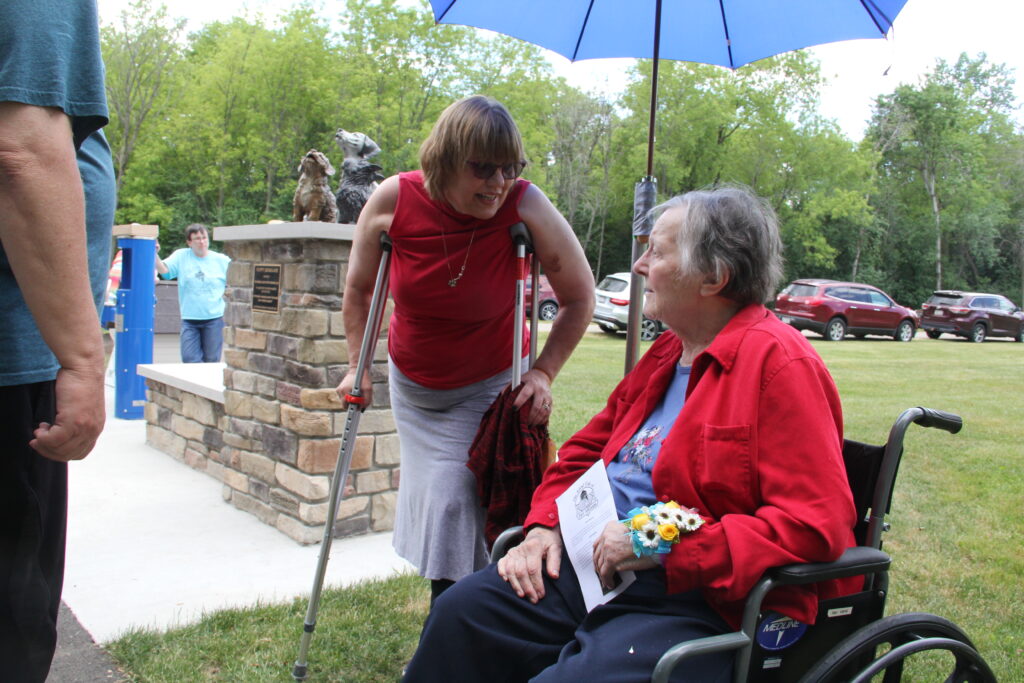
A friend from Rosendale who used to attend dog shows with Marleen LaPlant chats with the Fort Atkinson woman, a co-founder of the Kennel Club of Fort Atkinson, at Tuesday’s dedication of the “Puppy Serenade” statue.

Special cookies created by the Bonton Bakery in Jefferson salute the three puppies whose owners co-founded the Kennel Club of Fort Atkinson.
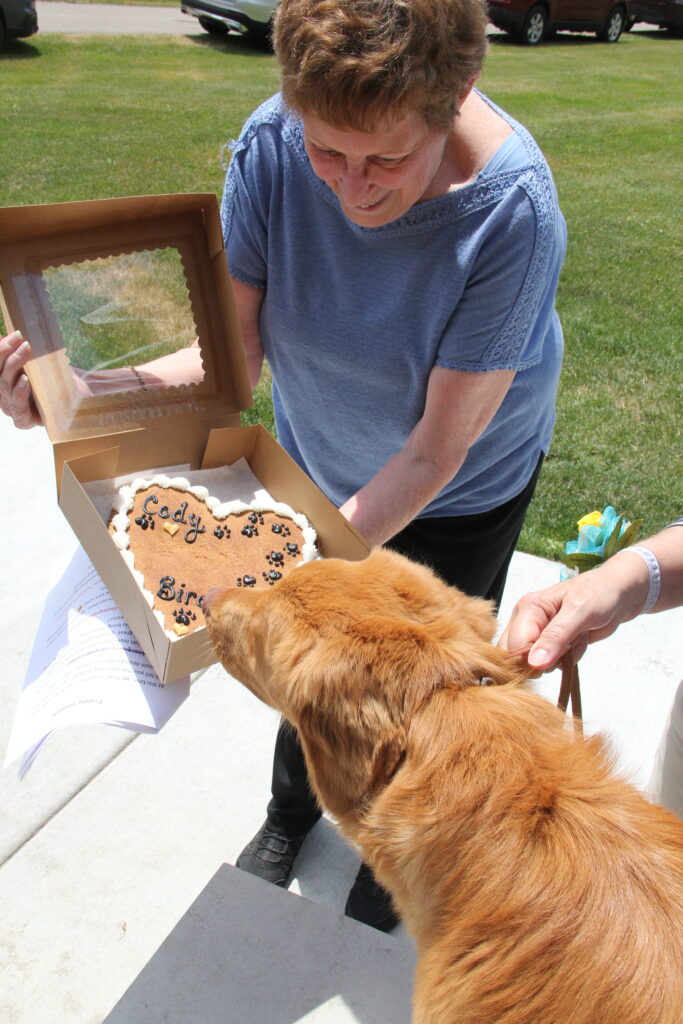
Birch gets a special treat at the dedication of a statue honoring her great-great-great-grandmother and friends.
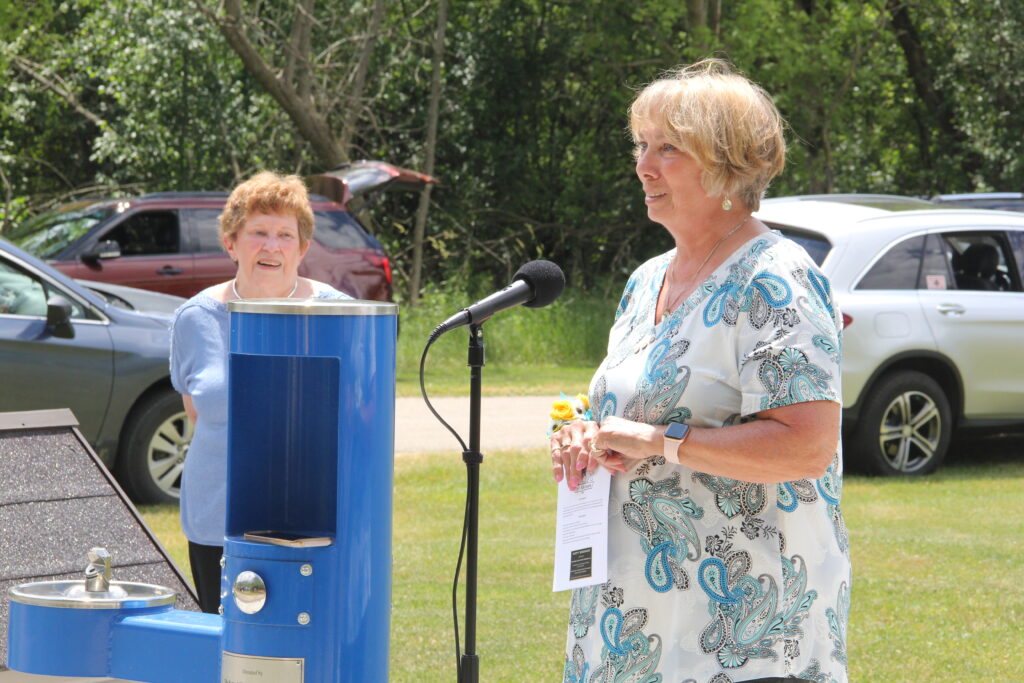
Rita Hasel speaks on behalf of the three co-founders of the Kennel Club of Fort Atkinson.

From left to right, Patty Beran and Birch, Marleen LaPlant and Rita Hasel pose for a photo at the dedication of “Puppy Serenade,” a statue recognizing them and their dogs for founding the Kennel Club of Fort Atkinson.

Sculptor Mark Dziewior is joined by Patty Beran, center, and Rita Hasel as they admire “Puppy Serenade.”
Multipart alcohol consumption, public nuisance ordinance moves toward approval
(Originally published June 17, 2021.)
By Kim McDarison
The Fort Atkinson City Council Tuesday approved a second reading of a proposed ordinance which establishes several new regulations for alcohol consumption within the city and makes illegal conduct such as urinating and defecating in public.
Language changes to city code, in the form of four proposed amendments, were presented by Fort Atkinson Police Chief Adrian Bump during the council’s June 1 meeting, at which time council gave first-reading approval to the amendments.
Ordinances and amendments that change them in the city of Fort Atkinson are subject to three readings unless council opts to suspend its rules and waive additional readings.
On Tuesday, council approved a second reading of three of the four amendments without changes. A fourth amendment, making it unlawful to drink or possess alcohol in city parks between specified hours, underwent a language change before receiving second-reading approval.
The amendment, as proposed on June 1, stipulated that alcohol consumption and possession in city parks would be prohibited between the hours of 10 p.m. and 5 a.m. New language, presented on Tuesday, states that alcohol consumption and possession is unlawful in city parks “when closed, unless permitted through an authorized event.”
Language within the four amendments which passed a second reading is as follows:
• An amendment to city code making it unlawful for any license holder to permit any person to leave the licensed premise with an open container of alcohol.
• An amendment to city code making it unlawful, with a possible citation for disorderly conduct, for any person to defecate or urinate outside of a designated facility.
• An amendment to city code making it unlawful to possess an open alcohol container on any public street, sidewalk or public right-of-way unless an appropriate permit or license has been granted by the city council.
• An amendment making it unlawful to drink or possess alcohol in a city park when closed unless permitted through an authorized event.
Facilitating the discussion and fielding questions, City Manager Rebecca Houseman LeMire noted that Bump was on vacation and unable to attend the meeting.
Councilman Mason Becker noted that while council could entertain a motion to suspend its rules, waiving a third reading and passing the amendments, he, along with other council members, stated a desire to give those members of the public who might be affected by the changes time to share with council their thoughts.
LeMire said she would prepare the amendments for a third reading, which would likely take place during council’s first meeting in July.
A story, with comments made relating to the first reading of the amendments, is here: https://fortatkinsononline.com/first-reading-approved-for-proposed-multipart-intoxicant-consumption-ordinance/.
Council approves first reading of ordinance to annex territory along Banker Road
(Originally published June 17, 2021.)
By Kim McDarison
The Fort Atkinson City Council Tuesday approved the first reading of an ordinance which would annex into the city three parcels of land, totaling some 75 acres, along Banker Road.
Once annexed, the land, which is in the town of Koshkonong, will be used for future residential development, Fort Atkinson City Manager Rebecca Houseman LeMire said Tuesday.
According to LeMire, “This annexation would create town islands within the city, and to avoid potential conflict, the city and the town of Koshkonong chose to work together on an intergovernmental agreement to mutual benefit.”
The intergovernmental agreement “has been executed,” LeMire added, noting that the city has commissioned a plat of annexation and a legal description as part of the continuing process.
Additionally, LeMire said, the land undergoing annexation will be given a temporary zoning designation of SR-2, or single-family residential district-2.
“This is simply a placeholder zoning district until such time that the city council determines the appropriate zoning districts based on the approval of the Neighborhood Plan,” LeMire said.
In a memo to council, LeMire wrote: The city of Fort Atkinson is a desirable place to live, and the city is well aware of the current housing shortage of all types, densities and sizes. The annexation of the subject parcels will further the city’s goal of providing suitable land for residential development.”
LeMire noted that the city is engaged in a “Neighborhood Planning process.” Upon its completion, she wrote, the city will prepare a request for proposals from interested land developers, with plans calling for the land to be developed in phases and in accordance with the city’s Comprehensive Plan.
Development of the land will benefit the city through increased housing stock and its associated tax base, she said.
A second reading of the ordinance will be prepared for council’s consideration and presented on July 6, LeMire said.
LeMire said the parcels that are being annexed were purchased by the city in 2019.
Documents supplied within the council meeting packet show that the intergovernmental agreement between the town of Koshkonong and the city was signed May 12.
The agreement acknowledges that the town and city “desire to work together for the betterment of their communities,” further noting that the two municipalities share “many borders and desire to establish and maintain a positive and productive relationship as our lands and futures are intertwined.”
The document further acknowledges a mutual recognition of a need for “open communication and cooperation” as the two municipalities work towards land use planning, subdivisions, and orderly development for the region.
The document also acknowledges the creation of “town islands,” including seven parcels of land. The owners of those parcels will be given the opportunity, without objection from the town, to request annexation or attachment to the city.
As part of the agreement, the city will pay a lump sum of $868.50 for each of the next five years to the town in compensation for lost taxes.
The city also agreed to provide services, coming, according to the document, with a total estimated value of $26,000. The breakdown of costs and services to be provided includes:
• Plow and salt the south side of Hoard Road from North Main Street to Banker Road, at an estimated total value of $4,000.
• Provide Wisconsin Information System for Local Road Pavement ratings for all the town’s roads and submit them to the Wisconsin Department of Transportation. The service comes with an estimated value of $3,500.
• Provide long-line painting on Rock River Road from the city limits to State Highway 106, including yellow centerline skip and white edge on each side; Hackbarth Road for the entire length, including double yellow centerline and white edge; and Old 26 from the State Highway 26 bridge to Koshkonong Lake Road, including white edge only. The services come at an estimated total value of $8,500.
• Assist at the town’s request in the planning and design of a four-way stop at the intersection of Hackbarth Road and Endl Boulevard, at an estimated total value of $3,500. The service does not include intersection improvements if needed, the document states.
• Provide one red solid crosswalk, or a crosswalk that would be similar to the city’s downtown area, on Hackbarth Road, at the intersection of Endl Boulevard and Hackbarth, at an estimated value of $3,500.
• Assist the town in the development of a comprehensive road plan for all of the town’s roads. The service comes with an estimated value of $3,000.
A related story about the area, which often is referenced as the “Banker Road project,” is here: https://fortatkinsononline.com/plans-for-75-acre-bankers-road-project-move-forward/.
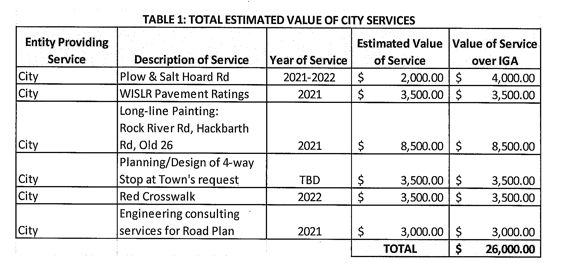
The above chart shows the estimated value of services and the timetable associated with providing them as agreed upon within the intergovernmental agreement signed between the City of Fort Atkinson and the Town of Koshkonong in May.

The above graphic, as provided within the city council packet on Tuesday, shows the area proposed for annexation into the city.
Council approves chamber upgrades facilitating hybrid meetings
(Originally published June 19, 2021.)
By Kim McDarison
The Fort Atkinson City Council Tuesday approved funding not to exceed $31,766 to upgrade its chamber in the city’s municipal building, giving council the ability to hold hybrid meetings.
Monies, potentially coming through a grant, will be spent to upgrade the technology in the council chamber, allowing in-person meetings to resume while continuing to offer remote access, City Clerk Michelle Ebbert said.
Trever Brandenburg, owner of Ignatek LLC., which is the city’s IT service provider, attending the meeting through Zoom, said he believed the new system could be installed sometime this fall.
In a memo to council, Ebbert wrote: “During the coronavirus pandemic in 2020, the city council transitioned to virtual meetings online via Zoom. The virtual meetings provided a safe environment for city council, management team, local media outlets, and members of the public to attend and participate in public meetings.”
She continued: “Now that vaccinations against the coronavirus are available and life is returning to normal, the city council and staff are looking forward to returning to in-person meetings.”
Ebbert said a hybrid approach for future meetings would make options available for participants who preferred meeting in-person as well as those who preferred attending online.
Proposed plans are meant to accommodate as many people as possible, she said, adding that hybrid meetings would likely promote increased public participation by offering more than one option.
Recently, Ebbert said, Ignatek performing a survey of equipment within the council chambers and provided a list and cost estimates for technology needed to create an interactive, hybrid system.
According to Ebbert, the approach would still use the Zoom meeting format.
The proposal and quote submitted by Ignatek calls for a new sound system with wireless microphones to be installed in the council chamber.
Additionally, the system will make use of a 65-inch television with a camera mounted on top, which will be affixed to a mobile rolling cart. The television would be used to provide a picture of council viewable by those attending the meeting through Zoom, Ebbert said.
Sound would be transmitted through council members’ microphones using a desktop computer to aid in quality.
A second television would replace an overhead projector used by the city.
The system would further require a new laptop to operate as a “hub” to begin and record Zoom meetings.
Looking at funding sources, Ebbert said the American Rescue Plan Act (ARPA) provides some funding for eligible projects that include investments in public facilities or adaptations to public buildings to “implement COVID-19 mitigation tactics.”
While a proposal for submittal to the ARPA was still in preparation, Ebbert said, staff was recommending that council move forward with the project, citing “a desire to expedite the return to in-person meetings.”
City Manager Rebecca Houseman LeMire described the project as an “eligible use of ARPA funds.”
During the meeting, Ebbert noted an advantage of having a hybrid system is that it would provide council members and department head who might be at home or out of town on business or vacationing an opportunity to attend a council meeting.
With that in mind, she said, she and LeMire had recently discussed looking at ways through which a hybrid approach could be developed. Ignatek was tapped to help develop what she and LeMire had envisioned.
Ebbert described the upgrade as “really good,” adding: “Our microphone system is also taken into consideration, knowing that that also itself has aged, and those council members that have been to prior meetings, you’ll know sometimes we have some feedback issues. Now knowing that this upgrade meets the criteria for the ARPA funds, we though, let’s look into quoting the sound system, not only to improve the system, but also hoping that that would double over as an improvement to increase the sound for those that are electronic.”
Brandenburg noted that equipment included within the quote will also create an “interactive streaming council/conference room.”
A summary within the quote broke down costs as follows: hardware, $27,037.63; software, $678, and services, $4,050.
Looking at costs, Ebbert said: “A big portion of this is the sound,” citing some $22,000, which would include the cost of wireless microphones, transmitters, and “a lot more features.”
Under visual equipment required to make the hybrid upgrade, she listed televisions, webcams and the two computers.
Ebbert said the city did entertain looking at quotes from other venders, but discovered that there would be some issues with allowing another vendor to access some of the city’s security components, which, she said, “created a little concern.”
She was able to price compare items included within the Ignatek quote, she said, and determined that the city was getting a competitive rate.
Brandenburg told council that Ignatek has been working with the city for “quite a few years” and the company “handles all aspects of technology” for the city.
With a grant available, he said, it looked like an appropriate time, while creating an interactive system, to also look at aging equipment that could benefit from replacement.
He specifically mentioned components associated with sound, including the microphones, and sound and recording systems.
He identified challenges in creating the interactive hybrid system, including current cabling, sound feedback and recording devices that are aging.
“There are only a few people who know the ins and outs of that machine or that equipment,” he said, adding that new equipment, and the associated supportive training, would increase the pool of staff members who could confidently operate the chamber system.
While Ignatek provides IT services for the city, Brandenburg said, it has not installed a large number of sound systems. With that in mind, he noted, the company has reached out to a vender, ADI (Analog Devices, Inc.), which, he said, put his company in communication with a company that has been “strictly doing chamber conference rooms during the COVID period. So that’s why you’ll see some features (like) the oscillating camera to follow who’s speaking.”
ADI, a Massachusetts-based company, “is a global leader in the design and manufacturing of analog, mixed-signal, and DSP (digital signal processing) integrated circuits,” according to its website.
“The nice thing about ClearOne (a Baltimore-based manufacturer of voice, video and web conferencing products, according to its website), and the ADI vendor is the support. So they are going to send in a representative … to help us install this, plus train you. So more people will know how to use this,” Brandenburg said.
He added: “I don’t know how old the chamber room is, but the microphones don’t stand up any longer, they kind of fall over, and there’s the older cabling, so that’s why we went with a new system.”
“We have the issue when a council member would turn their head to address another council member, their microphone doesn’t directly pick them up. So If I had to listen to a recording the next day to confirm a message or a motion, it was really hard to hear,” Ebbert noted.
Citing the grant, Ebbert said: “Overall, it needs an enhancement, whether we take it at this time, with this upgrade, or if we address this down the road, we just thought maybe now would be a good time to try and see if this was an option.”
Councilman Mason Becker asked if the upgrade would allow the city to livestream meetings online.
Brandenburg said it would.
Responding to Becker’s question about an operational timeline, Brandenburg said there was currently a backlog when ordering technical equipment, but he believed it could be ready by the first part of next quarter.
Becker said he understood that to mean “sometime in the fall.”
Brandenburg agreed with his understanding, adding: “Potentially sooner. What we would do is get everything in-house and pre-stage everything on location and make sure everything is ready to go, so then it’s pretty much plug and play when we get to you guys.”
Council President Chris Scherer asked about servicing the equipment.
Brandenburg said ADI would provide two types of training: the first would facilitate end users and the second would focus on those who would provide service for the equipment. His company would be able, with ADI support, to service the equipment, he said.
Brandenburg said his company has installed one other ClearOne system with support from ADI. That system is running and he has not been made aware of any concerns, he said.
Crown of Life academy begins first phase of construction
(Originally published June 21, 2021.)
By Chris Spangler
The first of two construction phases for Crown of Life Christian Academy is under way in Fort Atkinson.
MSI General is the contractor for the work, which began June 14 and is expected to be completed by the start of the 2022-23 school year.
A ceremonial groundbreaking took place May 28, led by the Rev. Aaron Winkelmann of Bethany Lutheran Church and John Kutz of MSI General.
Being built on Fort Atkinson’s northwest side, just east of the State Highway 26 bypass at the western end of Montclair Place, the $4.6 million project calls for a total 30,200-square-foot building built in two phases.
The first phase covers 23,800 square feet and will include an educational wing, a library media center, an administrative wing, a science/STEM lab, a music and art room, a middle school-size gym, restrooms, a cafeteria and kitchen.
The new space also will include an outdoor patio, greenspace to use for learning, as well as athletic fields.
Phase 2 will total 6,500 square feet and include an expansion of the gym, more offices in the administrative wing and special education classrooms.
Low-maintenance exterior materials will consist of pre-colored Concrete Masonry Units (CMU) and vertical aluminum metal siding with a faux wood grain finish that also is very low maintenance.
“Our K-8 staff, along with 200-plus students, will make this campus their home starting in the 2022-23 academic school year,” said Sarah Moore, director of development at Crown of Life Christian Academy.
She noted that the early childhood program will remain on the current campus at Bethany Lutheran Church in its newly remodeled early childhood center.
“Our final phase of the academy will include an early childhood center on the new site,” Moore added.
Crown of Life Christian Academy opened its doors for pupils in pre-2 kindergarten through eighth grade in August of 2019.
Supported by Bethany Evangelical Lutheran Church in Fort Atkinson, Crown of Life is part of the Wisconsin Evangelical Lutheran Synod (WELS). However, it is not a traditional church-based parochial school, as it is designed to serve the entire community, with all subjects in the curriculum taught from a Christian point of view.
“At Crown of Life Christian Academy, we prioritize faith, scripture and excellence,” Moore said. “Our core values of trust, humility, teamwork and optimism are used as guideposts in all decisionmaking processes, classroom management and teaching, and overall academy culture.
“We value partnering with our families as we strive to help grow and develop each student academically, socially, emotionally and, most important, spiritually,” she added. “Crown of Life is driven by its mission statement to serve our community through the proclamation of God’s word, the pursuit of academic excellence, and the establishment of meaningful relationships with the children and families it serves.”
Crown of Life Christian Academy has received exemplary accreditation status by the Wisconsin Evangelical Lutheran Synod School Accreditation (WELSSA).This accreditation also is certified on the national level through the National Council for Private School Accreditations.
Moore said that all families interested in learning more about the academy should visit its website and book a tour. While the 2021-22 admissions window technically has closed, school officials still are giving tours and students may be placed in a “waiting pool.”
“Certain classrooms still do have room for the next school year, so we encourage all families interested to set up that tour right away,” she stated. “With that said, our enrollment for the 2022-23 school year will begin in February of the 2021-22 school year.”
Moore said more information is available by contacting (920) 563-2278 or info@crownoflifeacademy.org.

An artist’s drawing shows the completed Crown of Life Christian Academy. The building is scheduled to open by the start of the 2022-23 school year.
Drawings supplied.

Floor plan shows Phase 1 of construction.

Floor plans shows the building after Phase 2 is completed, with additional gym space and several more classrooms.
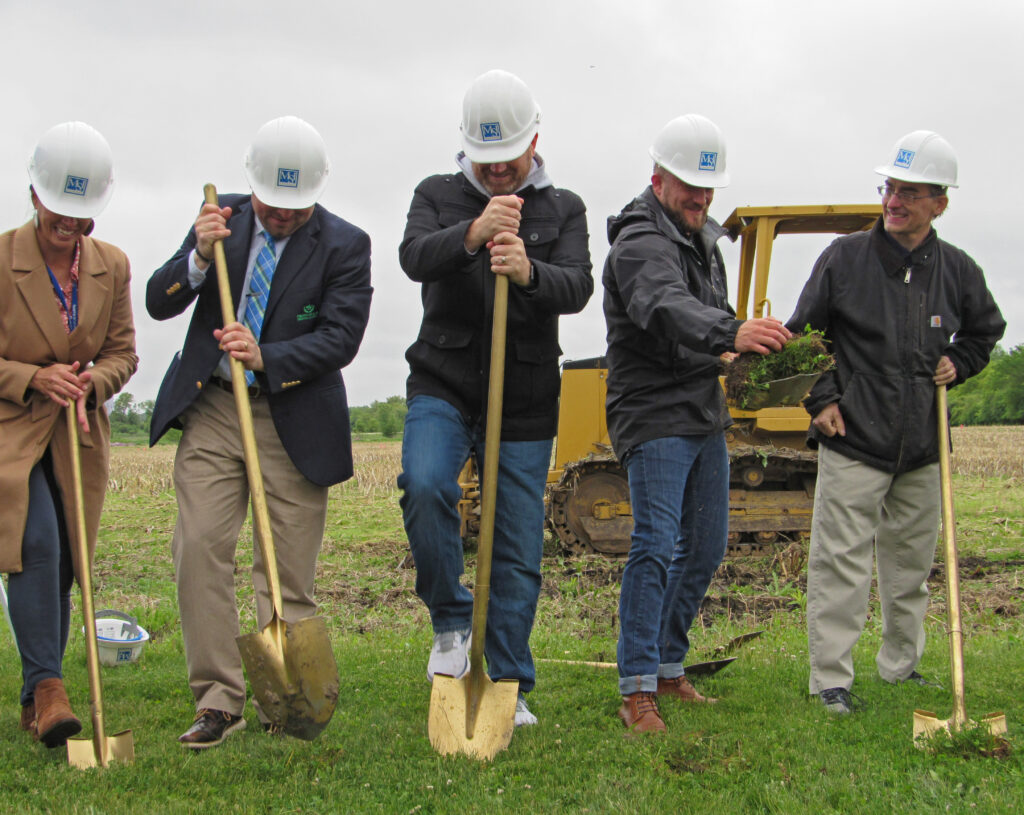
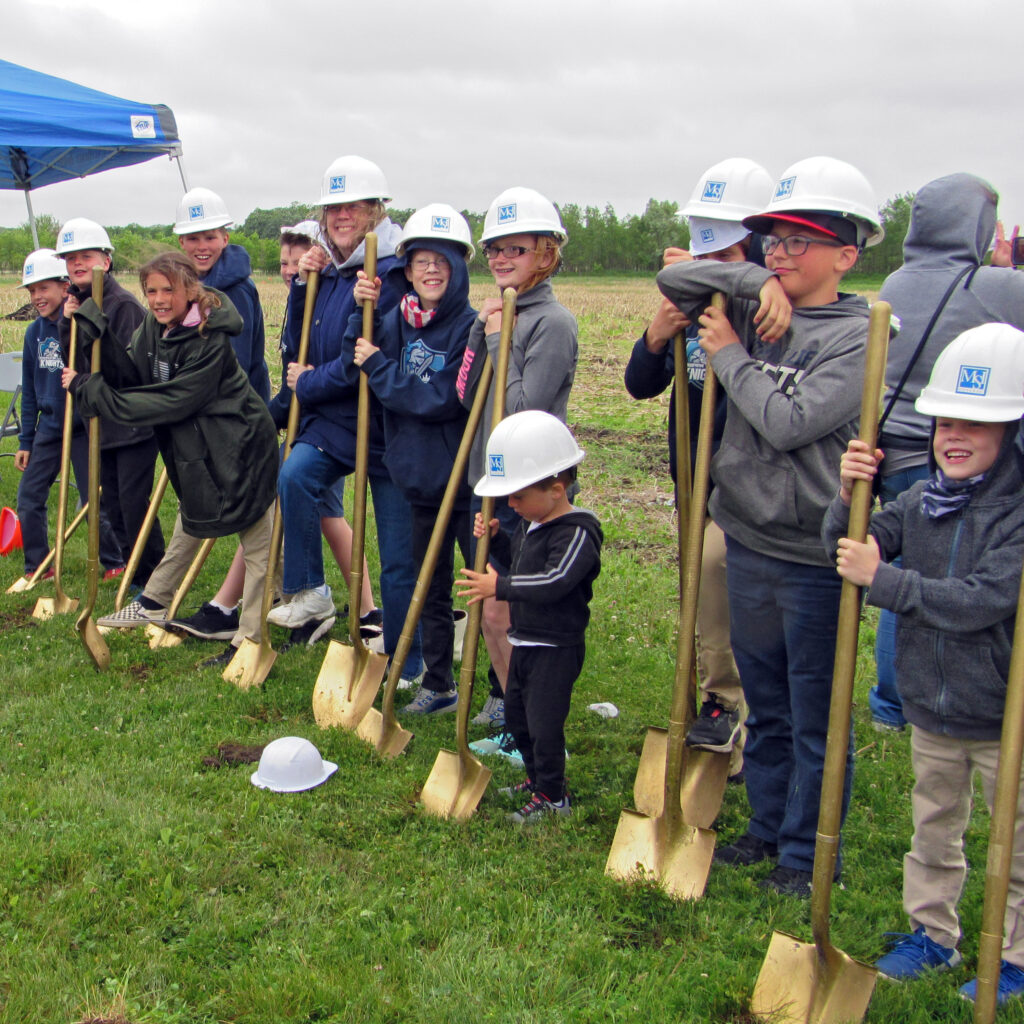
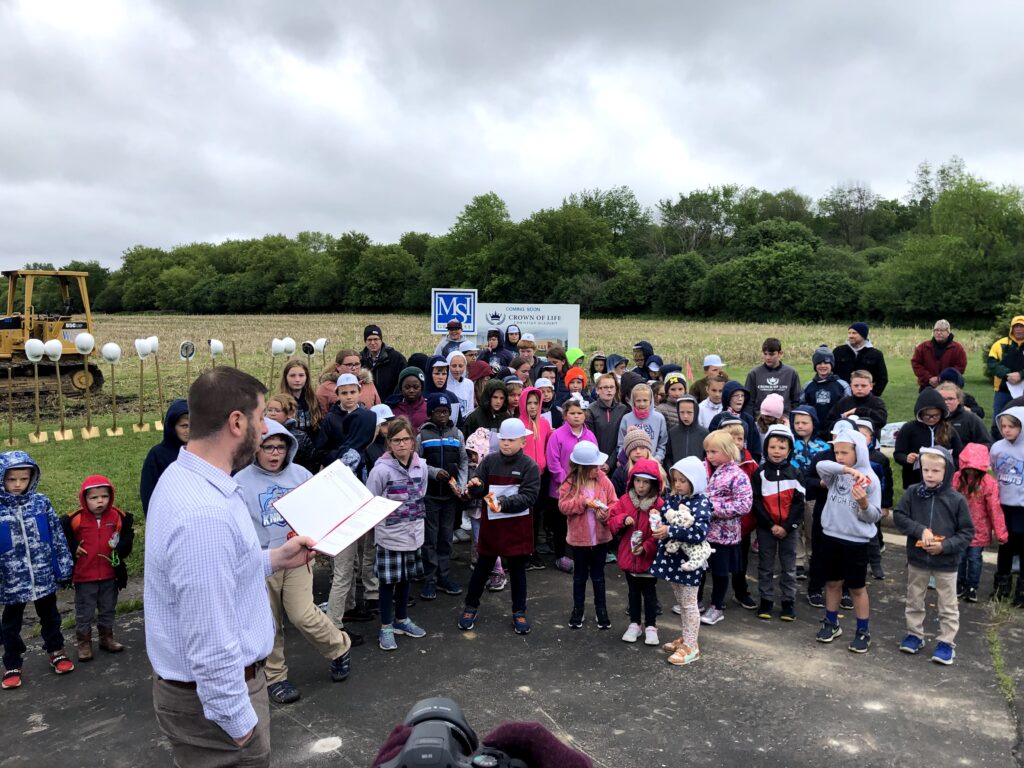
Three photos above: members of the Crown of Life community attend a groundbreaking ceremony for the new academy held May 28. Submitted photos.
City to begin second phase remediation process at former Loeb-Lorman site
By Kim McDarison
Addressing the Fort Atkinson City Council Tuesday, June 15, City Engineer Andy Selle said the process to purchase three parcels of land, comprising the former Loeb-Lorman scrapyard, has been completed by the city and a second phase to evaluate the site for contamination is ready to commence.
The parcels now under city ownership are located at 115 Lorman St., 600 Oak St., and 205 Hake St.
The city extended its offer to purchase the parcels from 2L Loeb LLC in December of last year. The offer came with two components, the first extended to the seller a lump sum of $182,000, with the land’s remaining value, estimated at $550,000, to be used tor site remediation. Any monies not used for remediation will be returned to the seller, according to city documents.
Documents presented to council at the meeting indicate the first-phase environmental study was completed in January.
On June 15, the council approved a proposal submitted by Franklin-based Terracon Consultants, Inc., at a cost not to exceed $25,900 to perform the second phase of exploratory work.
According to its proposal, submitted June 10, the company, along with several others, responded to a request for proposals presented on May 21.
Information provided to council by Selle noted that the city had received four responses to its request for proposals including those submitted by Giles Engineering, TRC Inc., and Sigma Group. Scope of proposed work and associated costs varied, with Giles Engineering proposing to create 26 soil borings and take 12 water samples at a cost of more than $200,000 and TRC Inc proposing to create 10 soil borings and take three water samples at a cost of $25,442. Sigma Group proposed 23 soil borings and 9 water samples at a cost of $33,470.
In a memo to council, Selle wrote that the cost of the Phase II environmental study is covered under the city’s CDBG grant. The State of Wisconsin Community Development Block Grant reimburses funds spent on approved projects.
Within its proposal, Terracon outlined the following “scope of work,” including 17 soil borings and 14 water samples, that would be performed as part of the “Phase II Environmental Assessment” of the former Loeb-Lorman approximately 12-acre site.
Soil borings:
Terracon proposes to:
• Create borings (designated P-1 through P-4) along the west side of the 115 Lorman St. and 205 Hake St. parcels to evaluate the potential migration of contaminants from DB Oak Ltd., as well as contaminants from on-site sources including the former scrapyard operations and a historical use of fill. Borings also will be located near a fluid collection sump associated with a former storage pad.
According to Selle, the DB Oak Ltd. space is the former site of Thomas Industries. While manufacturing activity no longer takes place there, he said, the building is still standing and used for storage. The building is located “immediately west of the former Loeb-Lorman site.”
• Create a boring (designated P-5) at the northwest corner of 205 Hake St., to evaluate the potential for migration of contaminants from the former 10,000-gallon “tetrachloroethene AST,” which was located to the west on the DB Oak Ltd property, as well as contaminants from the scrapyard and historical fill.
• Create a boring (designated P-6) on the south side of the 115 Lorman St. parcel to evaluate soil and groundwater conditions.
• Create borings (designated P-7 and P-8) on the 600 Oak St. parcel to evaluate the potential of migrating contaminates from the former petroleum bulk plant that was located to the north, and a potential of contaminants from a former coal pile, as well as scrapyard and fill contamination.
• Create a boring (designated P-9) on the northeast corner of the 115 Lorman St. parcel to evaluate a potential of migrating contamination from the former automobile operations located on the 205 Hake St. parcel, and contamination from a former auto storage area, as well as scrapyard operations and fill.
• Create a boring (designated P-10) in the eastern portion of the 205 Hake St. parcel to evaluate fill.
• Create borings (designated P-11 through P-13) located adjacent to buildings on the 115 Lorman St. parcel to evaluate the area in terms of such contaminate as oil and antifreeze.
• Create borings (designated P-14 through P17) to be located throughout the 115 Lorman St. parcel to evaluate the presence of contaminants, including those which may have formed near a down-gradient former pad and fluid collection separator and a former tank and collection sump.
Water samples
According to the proposal, Terracon will construct a “temporary groundwater sampling point” within each soil boring.
“If groundwater accumulates, groundwater samples will be collected,” the proposal states. “If groundwater does not accumulate in the temporary points within two hours of installation, Terracon will return to the site no sooner than one week after installation and attempt to collect groundwater samples,” the proposal continued.
Soil and water samples will be tested for VOCs (Volatile Organic Compounds).
Reports
According to the proposal, Terracon will produce a “Phase II ESA (environmental site assessment) Report,” which will outline the site investigation and its results. The company will also include its recommendations for remedial actions. The report will include laboratory analytical reports, soil boring logs and photographic logs.
According to Terracon, The city’s request for proposal “did not indicate whether a development plan for the site has been developed, but indicated ‘The property will be cleaned up to an industrial level as defined by WDNR (Wisconsin Department of Natural Resources) statutes. The end goal of the effort will be to obtain a WDNR closure in the least expensive manner.’”
To that end, the proposal states, “Remedial action options will be identified and evaluated in general accordance with (DNR statutes) using the conceptual site model.”
A preliminary remedial action plan, addressing impacts from soil, groundwater and vapor, will be included within the report.
Timeline for proposed work
Within its proposal, Terracon offered the following timeline of events: upon a notice to proceed issued to the company between June 28 and July 2, the company will schedule a project kickoff meeting between July 5 and 9. It will next begin project field work between July 12 and 23. The company anticipates receiving receipts of completed lab results between July 26 and Aug. 6, with a draft report to be presented to the city undergoing preparation between Aug. 9 and 27. A final report is anticipated to be issued to the city between Aug. 30 and Sept. 3.
The proposal noted that the company anticipates drilling activity to be underway for three weeks, and laboratory results to be returned to the company within 10 days after submittal.
Work at the site is anticipated to take place Monday through Friday, between the hours of 7 a.m. and 7 p.m.
In a followup interview, Selle told Fort Atkinson Online that the contract with Terracon has been signed and work will commence in accordance with the company’s proposed schedule.
After the report is submitted in September, he said, next steps for the project will involve returning the space to open or “pad-ready condition” in anticipation of selling the land or building something new.
“Once we know what’s there and how to deal with it, we will demolish the majority of the structures on the site,” he said, adding that the property will next need to sit as open space for five years.

The above city-produced chart compares the various companies responding to a request for proposals for a Phase II environmental study of the approximately 12-acre former Loeb-Lorman scrapyard site.
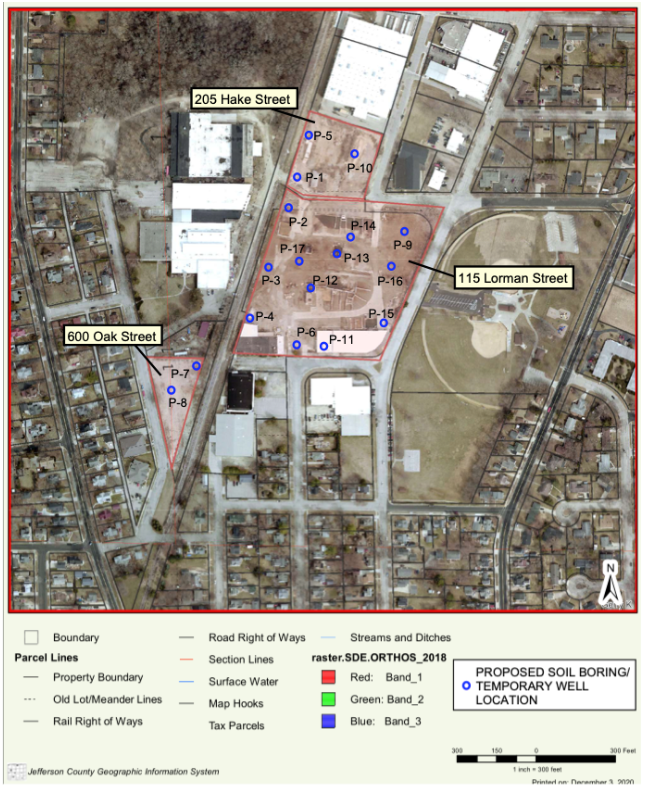
The above map produced by Terracon Consultants, the contractor hired by the city to perform a Phase II environmental study on the former Loeb-Lorman scrapyard, shows the site and borings that will be used to draw soil and water samples for contaminate testing.
American tale: Immigrant’s dream creates recycling history in Fort
(Originally published June 23, 2021.)
By Kim McDarison
The City of Fort Atkinson has recently purchased the former Loeb-Lorman site and plans are underway to prepare it for new uses. Although dormant, the property has a compelling history, including its former and longtime use as a scrapyard, coupled with the lives of the immigrant family which worked to create it.
According to Barbara Lorman, who arrived in Fort Atkinson from Madison shortly after she married her husband, Milton, in 1953, the Lorman family history, leading to the establishment of the scrapyard, began sometime before 1913, when her father-in-law, Louis, emigrated from Russia into the United States.
Arriving in America and Fort Atkinson
Like many American immigrants, Barbara said, Louis arrived in New York City, and, hoping to stay with relatives, he journeyed to Wisconsin, arriving in Milwaukee. Relatives in Milwaukee suggested he continue moving west to Fort Atkinson, a community which grew from a military fort and stockade developed during the Black Hawk War of 1832, and continued to grow during the mid-19th century as pioneers, often migrating from New York state, according to online historical accounts, arrived into the area.
Recalling the family history, Barbara said she remembered being told that her father-in-law settled in Fort Atkinson after learning he had a widowed aunt, who had a married daughter, and the daughter had a large family with many children, living in the community.
Piecing the story together from memory, Barbara said she believed her father-in-law was likely no more than 20 when he arrived in Fort Atkinson. A Russian emigrant, she said, the family was Jewish, and in those days, in Russia, the tsar was still in power.
According to online historical accounts, the House of Romanov held power in Russia between 1613 and 1917. The dynasty ended in 1917, during the Russian Revolution, which concluded in 1923, placing the Bolsheviks in power. Tsar Nicholas II was in power when his family’s dynasty ended.
In those years, in Russia, Barbara said: “Once you were 18, if you were a boy, you were sent to be in his (the tsar’s) army. If you were a Jewish boy in the army, most understood that you would never be seen again.”
Many young men fled the country before they turned 18, she added.
Louis left to avoid that fate, Barbara said, adding, by the time he arrived in Fort Atkinson, his thoughts likely had turned to earning some money.
When he arrived in New York, he didn’t speak English.
When he arrived in Fort Atkinson, Barbara said, she believed he found a room, opting against living with his relatives.
Barbara recalled that his Fort Atkinson relatives’ surname was Weinberg.
Many of the Weinberg children graduated from Fort Atkinson High School, she said.
A recent story appearing in the Whitewater Banner, follows members of the Weinberg family, some of whom, according to the Banner’s story, began a scrapyard in Whitewater. Signage detailing some of that history was recently erected in Cravath Lakefront Park. The Banner’s story can be found here: https://whitewaterbanner.com/new-historical-sign-at-cravath-lakefront-park/.
Ultimately, Barbara said, some of the members of the Weinberg family made the decision to leave Fort Atkinson and move to Chicago.
Upon his arrival, Barbara said, Louis, whom she described as “a pretty friendly man,” began looking to build roots in the community.
He liked chickens, Barbara said, adding that she believed he might have raised chickens before he found a friend who loaned him $28 to buy a horse and a wagon.
Back then, Barbara added, people starting off with wagons typically became peddlers.
Louis, she said, “was probably going from farm to farm, offering some kind of service. The horse and wagon gave him a start and he began to earn and save some money.”
Barbara also recalled stories shared with her by her mother-in-law, Clara, also a Russian Jewish immigrant who arrived in America when she was about 18.
Said Barbara: “She traveled here alone. She was part of a large family and her older brother, who had arrived sometime before she did, was bringing members of his family to America one at a time as he earned money to do so.
“The family came from Kiev. They were a Jewish family and in Russia, they had a horrible life.”
Russian Jewish people left often to escape persecution or poverty. Within her mother-in-law’s family, there were eight children. They were brought to America and then to Chicago.”
Barbara said she believed Louis and Clara met in Chicago, but she couldn’t be sure. They were married in 1925.
Times were different then, she said. “People often didn’t speak English. Clara and Louis’ families spoke Russian and Hebrew or Yiddish.”
By the time Louis and Clara were married, Barbara said, Louis was established enough to have a house. The couple gave birth to Milton, their only child, in 1927. He was born in Fort Atkinson.
Building a business
Louis and Clara began operating their scrapyard business from a barn behind their home.
Barbara recalled: “Clara stayed home, but she helped with the business. Scrap was brought to the barn at the house where Clara would operate the scale and weigh it.”
Scrap could be brought to the property by area residents or picked up by Louis, she said, adding that operating a scrap business from home in a family barn was not unusual back then. She recalled her grandfather doing the same thing from a barn on his property in Chicago.
The home owned by Clara and Louis was in the middle of town, across the street from where the Methodist Church is today on Whitewater Avenue. There is an office building there today, Barbara said.
Clara’s role as a scale operator was no small contribution, Barbara said.
“When you buy scrap, you have to weigh it; that’s how you get paid,” she said adding: “Clara was very good with numbers. She was uneducated by today’s standards, but she was smart.”
As Clara raised Milton and helped out with the business, Louis collected scrap and looked for ways to grow the business by finding new markets, Barbara continued.
Louis also worked to find foundries for the different types of materials. Eventually, new markets were developed and the couple began recycling metals, rags and paper.
The arrival of World War II
The business really began to grow with World War II, Barbara said.
“With the war, the scrap industry became a high priority war industry. Metal was needed to make tanks, and guns, and trucks. The war needed scrap, and Louis wanted to grow, but he was limited in what he could do on his little urban lot. He started looking for new land,” Barbara said.
The land known locally as the former Loeb-Lorman scrapyard was back then a wetland, Barbara said, adding: “Nobody wanted it.”
In the 1940s, Barbara noted, “there was a lot of prejudice against Jews and scrapyards. When Louis looked for land, the only place the city wanted him to consider was the swamp, and they wanted him to go there with the understanding that he would fill the land in.
“People like clean industries. They didn’t want a scrapyard in their backyard,” Barbara said, adding that the then-city council and Louis struck a deal: Louis would fill in the land and make it useful and the council would work with him to meet the requirements for his permits.
Barbara described the days leading to the purchase of the land on the city’s north side as “difficult” for Louis. At the time, some residents were circulating petitions against the scrapyard’s expansion, she said.
“Immigrants have fortitude,” Barbara said, and Louis also had people in the community who liked him and were helpful.
“People in town encouraged Louis to work it out and he ended up buying the marsh with the understanding that he would fill it in to expand the business. He was doing well financially because of the war, and filling it in was not hard. There are always people who have fill like broken cement, dirt, gravel,” Barbara said.
She believed Louis purchased the land known today as the Loeb-Lorman site in 1940 or 1941, she added. The land is documented in three parcels, identified as 115 Lorman, 600 Oak and 205 Hake streets.
An advertisement for the Lorman Iron and Metal Co., found in the Hoard Historical Museum archives notes that the “modern processing facility at 115 Lorman Street was built in 1947.”
Barbara and Milton
Barbara and Milton met at the University of Wisconsin-Madison. She was pursuing an undergraduate degree in English and he was attending law school.
Barbara was 20 years old and Milton was about 25 when a decision was made to move to Fort Atkinson where the newly married couple planned a temporary stay while Milton was, as a former ROTC student, preparing to receive military orders.
“The Korean War was winding down and then the war ended and Milton didn’t go,” Barbara said.
After they arrived in Fort Atkinson, Milton completed his law degree and went to work at the scrapyard with his dad.
Said Barbara: “While he worked at the yard, he practiced law a little bit. One of his friends suggested he might like being an assistant DA (district attorney), but his source of income was at the scrapyard.
“Thorpe Merriman was the district attorney at the time for Jefferson County. Milton went to work at the courthouse as his assistant, working part-time in the DA’s office.”
With family in Madison and serving as a stay-at-home wife, Barbara described her early life in Fort Atkinson as a “bit lonely.”
In 1954, a year after arriving, Barbara gave birth to Carol, the couple’s first child. In the years that followed, the family grew by two more children: William, born in 1959, and David, born in 1963.
Over the years, Barbara said, she found a nice life in Fort Atkinson and the family business grew.
Barbara described her own experience with the yard as mostly “hands-off.” She would visit, and if office workers were very busy, she might answer the phone, she said.
Upon her arrival into town, Barbara said, the scrapyard was already operating from the north side of town. The building standing in the entranceway today had already been built and was used as office space and it had a scale. There also was a drive-on scale in front of the building.
Metals coming into the yard were categorized as ferrous, meaning with iron, or non-ferrous, which, Barbara said, “is everything else you can think of without iron.”
The most valuable scrap was stored inside where it was cleaned and cut into smaller sizes.
“It was very hard, dirty work,” she said.
As the company enjoyed success, it expanded into the aluminum business, and began recycling glass and plastics.
During the yard’s best years, it had about 40 employees, she added.
“I was a supportive wife, but the scrapyard was a man’s world,” Barbara said.
At home, Milton would arrive each day for lunch and the couple would talk about plans for the business and the challenges it faced.
“This is the commodities industry. Things changed with the economy; it is very tied to the auto industry, which is very dependent on scrap iron. When there is a recession, it hits the scrap industry pretty hard,” Barbara said.
In the early 1970s, the American economy fell into a recession which, online documentation states, caused economic stagnation between 1973 and 1975.
Milton worked at the yard until the time of his death in 1979. He had a heart attack and died at the age of 53. At the time, he was a member of the Wisconsin Legislature, serving as a state representative in the 39th Assembly District. He was serving the first year of his second term.
When Milton died, Barbara said, she became the sole owner of the scrapyard. Earlier, when Louis died in the mid-1970s at the age of 78, he left the business to the couple, she said. Clara survived Louis, also dying in the 1970s.
Barbara continued to own the yard until she sold it to the Loeb family in 1984, she said.
In the years that followed Milton’s death, Barbara found her own life in politics.
A seat held by Sen. Peter Bear became available after the senator resigned. A special election was held and Barbara, at the urging of some of Milton’s supporters, decided to make a run, she said.
Barbara won the seat in 1980, and continued to serve in the state senate, winning three consecutive four-year terms, ending her career in 1994, when she was defeated in a primary by Scott Fitzgerald.
Today, Barbara said, she will soon be 89. She describes herself as retired, adding: “I’ve been active in community service on a number of boards and commissions doing unpaid public service, which I’ve enjoyed immensely.”
Living in Fort Atkinson has provided her with opportunities that she might not have found in a larger city, she said, and the community has brought her many interesting friendships and it gave her children freedoms which children growing up in larger cities may not have had, she said.
Thinking ahead about the now city-owned former Loeb-Lorman property, she said, she hoped it would find a future commercial use.
“It really is a commercial area,” she said.
A related story about future plans for the Loeb-Lorman site is found here: https://fortatkinsononline.com/city-to-begin-second-phase-remediation-process-at-former-loeb-lorman-site/.

Among materials archived at the Hoard Historical Museum is this photograph of Louis Lorman, taken in 1914.
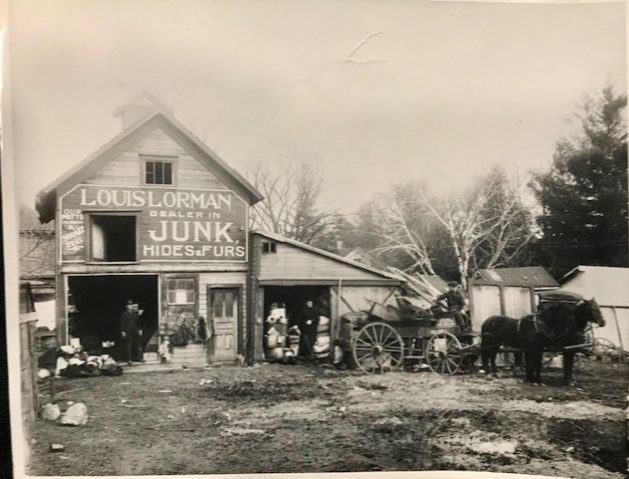
Louis and Clara Lorman home serves as the family’s first scrapyard. The home and barn were once located on what is today Whitewater Avenue. The couple was married in the mid-1920s and began living in the home. Courtesy of the Hoard Historical Museum.
Highway N south of 106 reopens; resurfacing of north end starts Monday
(Originally published June 24, 2021.)
The Jefferson County Highway Department has completed the south half of its County Highway N reconstruction project and will start on the north segment Monday, June 28.
Work was completed Friday, June 18, on the resurfacing of Highway N, from Walton Drive in Whitewater to State Highway 106 east of Fort Atkinson.
On Monday, the highway crews will begin resurfacing Highway N from Highway 106 to South Street/Vogel Road in the City of Jefferson.
The existing deteriorated asphalt pavement will be pulverized, graded and compacted prior to paving the roadway.
During construction the road will be closed to through traffic, but access will be maintained to local residences and businesses, as well as emergency vehicles.
The northbound detour will utilize Highway 106 (East Sherman Avenue), State Highway 26 and Business Highway 26 (Main Street) in Fort Atkinson. The southbound detour will use Business Highway 26 (Main Street), State Highway 89 (Main Street) and Highway 106 (East Sherman Avenue).
The road will remain closed until approximately the end of August/early September, depending on the weather.
Motorists are asked to use caution within the construction areas and to keep children away from the operations.
Persons with questions may contact the Highway Department at (920) 674-7265.
Meanwhile in related news, the state Department of Transportation has begun rehabilitating the County Highway A and Airport Road bridges over Interstate 94 near Lake Mills.
Work began June 21 on the Highway A bridge over I-94. Highway A will be closed and detoured until early September. The signed detour route follows County Highways V and Q.
Highway crews will replace the concrete bridge deck, make concrete surface repairs, repaint the steel girders over I-94 and regrade the County A approaches to the structure.
Work also is taking place on the Airport Road bridge over I-94, requiring the closure of the structure for 20 working days. Improvements include concrete deck repairs, polymer overlay, and repaint the steel girders over I-94.
No detour will be provided during the Airport Road bridge closure. Motorists are advised to use alternate routes and drive with caution through all work zones.
The prime contractor for the $1.8 million project is Zenith Tech Inc. based in Waukesha. Weather permitting, the project is scheduled to be completed in early September 2021.
Information on the I-94 bridge rehabilitation project can be found at projects.511wi.gov/i94bridges-jefferson/.

Road work begins Monday on the north end of County Highway N between State Highway 106 and the city of Jefferson. Work has completed on the south end of County Highway N between 106 and Walton Drive in Whitewater, opening the south end of County Highway N to through traffic. File photo/Chris Spangler
District official: Voucher funding, decreasing open enrollment contribute to $148,955 budget shortfall
(Originally published June 28, 2021.)
By Kim McDarison
Members of the School District of Fort Atkinson Board of Education during their June 17 monthly meeting discussed budgetary impacts identified by the district’s Director of Business Services Jason Demerath.
Information about the district’s 2021-2022 preliminary budget, and the process to create it, was shared in advance of the meeting by Demerath in a 14-minute video presentation, which remains available on the school district’s website.
The preliminary budget, as summarized in the video, shows revenues coming in at $40,186,406 and expenses at $40,335,361, leaving a $148,955 deficit.
The preliminary 2021-2022 budget further anticipates a total school tax levy of $18,825,053, with a tax levy rate of $10.96, which Demerath said, is 15 cents more than the district’s property owners are currently paying per $1,000 of equalized property value.
In his presentation, Demerath said the state’s private school voucher program, declining enrollment brought about by the pandemic and associated school closures, decreases in open enrollment revenue, and a potential for state legislators to view one-time pandemic relief funding as an alternative to increasing state aid this year were among determining factors which played a role in the forecasted revenue shortfall.
During the meeting, School Board President Mark Chaney said the video helped him better understand the impact the state’s voucher system has on public school financing. He praised the district for its ability to continue to be good stewards of the taxpayers’ money, even with new challenges brought about by impacts from the voucher program and a change this year in the way state aid may be distributed. He urged the district’s constituents to watch the video produced by Demerath.
School District Superintendent Rob Abbott said state aid, and how much, if any, the district might receive within the upcoming budgetary cycle, was a variable worth watching.
Details about how the preliminary budget was calculated, as shared in the video, follow.
The budgetary process
Demerath began his presentation by sharing an annual year-round budgeting process undertaken by district staff and the board, which includes the following highlights:
- The administrative team meets monthly.
- Once the current year’s budget is set in late October, a long-range financial projection is presented to the board of education in December.
- With that information as a backdrop, the administrative team then presents compensation and other budget recommendations to the board at its April meeting.
- Based on the board’s decisions, the first draft of the upcoming year’s budget is presented in June, and a second draft is presented in July.
- The budget that is approved by the board in July is then brought before the local electorate at the annual meeting held in August.
- The annual cycle concludes with board approval of a final budget and tax levy in late October.
Summary of projections
Demerath next shared “a summary of the projection from the district’s financial planning,” which led up to the operational referendum approved by the voters in April of 2020. The referendum covers fiscal years 2021 through 2023, he said.
The referendum passed last April, according to school district documentation, authorized the district to exceed state revenue limits beginning with the 2020-2021 school year by amounts not to exceed $2,250,000 each year, on a recurring basis, and $3 million each year on a non-recurring basis for a period of three years.
Financial assumptions used for budgetary planning from 2020 through 2023 were as follows:
In 2020, the district was projected to operate with Fund 10 (the district’s general operation fund) revenues of $36.6 million, with $17.2 funded through a tax levy. Fund 10 expenses were calculated at $37.8 million, projecting a shortfall that year of $1.27 million.
In 2021, the district was projecting Fund 10 revenues of $39.5 million, with $17.6 million achieved through a tax levy. Fund 10 expenses were projected at $38.2 million, leaving a surplus of $1.3 million.
Projections built for the 2022 budget showed Fund 10 revenues projected at just over $39.7 million, with a tax levy of $18 million. Fund 10 expenses were projected at $39.6 million leaving a surplus of $150,415.
Projections calculated for 2023 showed Fund 10 revenues at $39.7 million, with $17.9 million coming through a tax levy. Fund 10 expenses were projected at just over $41 million, leaving a projected shortfall of just under $1.3 million.
Mill rates as projected over the four-year period are as follows: 2020, $10.66; 2021, $10.61; 2022, $10.54, and 2023, $10.17.
Also included within the projections were “revenue limit per pupil” and “per pupil categorical aid” increases. In 2020, the projected impact of the combined total was $263. In 2021, it was $179. In 2022 and 2023, it is projected at $150 for each year. The projection in 2022 and 2023 showed a per pupil increase of $75 in each of the two categories.
Demerath next worked to compare those projections to what he said “is currently being planned for next year.
“As I just shared, that projection from our referendum planning included a $75 per pupil increase on the revenue limit and a $75 per pupil increase in categorical aid.”
‘No allowable increase’
He next showed a chart, titled: “Revenue Assumptions, No Allowable Increase,” which showed the history of the two revenue increases over the course of 19 years. The chart noted the absence of per pupil state aid during the 2021-22 and 2022-23 school years.
Explaining the chart, Demerath said: “Over the last decade, any increase in these revenues has been hit or miss based on the decisions made as part of the state budget process. As opposed to getting $75 per pupil in each of these two revenue sources, we are assuming in this budget that we see no increase in allowable revenue from the state for local public schools. This assumption is based on the Legislature’s Joint Finance Committee’s action taken in late May where they passed a motion for no revenue increase for public schools as part of their budget recommendations. This was done with the thought that the one-time (COVID relief) federal funds we are receiving could be used to offset any recurring operational increases, something that we as local districts try to stay away from as a practice to ensure recurring resources support recurring expenses for our programs and services.”
A distribution of district revenues
Demerath next shared a pie chart showing a distribution of district revenues.
The distribution shows that general state aid and taxes collected from residents within the district each account for approximately 44% of the district’s total revenues. The remaining categories include “other state aid,” accounting for 5.42%; inter-district transfers, accounting for 3.7%, and “all other sources,” accounting for 2.9%.
Looking at the chart, Demerath said, “We can see that all but 6.63% of our $40 million budget is dictated directly by the state through the revenue limit, state general aid, and state categorical aids.”
Inter-district transfers is “almost exclusively” open enrollment revenue, he said. “Other sources” includes grants and local fees.
A distribution of district expenses
A pie chart, showing a distribution of expenses, indicated that 45% or some $18 million is spent on salaries and wages. Another 22.2%, or nearly $9 million, goes toward benefits. Purchased services account for 15.2% of expenditures and inter-fund transfers make up another 13%. Other expenses include non-capital objects, at 2.96%; insurance/judgments, at 0.95%, capital objects, at 0.07%, and dues, fees and miscellaneous, at 0.22%.
Said Demerath: “As a service business, about 80.5% of our budget is spent on personnel to provide the service of educating our community’s children.”
Looking at other categories, he said, purchased services includes such items as transportation, utilities, and open enrollment payments to other districts for residents whose students are using the program to receive education in other districts.
Looking more closely at the 80.5% spent on personnel, the breakdown includes the following: a wage and salary increase of 2.26% which was approved for district employees by the board in April, health insurance premiums saw no increase for HSA plans and a 4.8% increase for HRA plans. Dental insurance premiums saw an increase of 2%.
The board also approved in April several new positions, including: three full-time positions for social workers; one full-time position for a secondary school psychologist; one full-time position for an academic advancement coordinator; one full-time position for a special education and student services coordinator; three full-time and one part-time positions for elementary math coaches and interventionists, with some of those costs paid through federal ESSER (Elementary and Secondary School Emergency Relief) funds, and one full-time high school science teacher.
The budget also includes recently approved monies for high school energy efficiency projects and the associated debt.
Budget summary
An overall budget summary produced the following numbers: actual revenues in 2020-2021 were $40,882,362, with actual expenses coming in at $39,647,413, leaving a surplus of $1,234,949; In 2021-2022, projected revenues, showing updated numbers and taking into account new positions approved by the district in April and approved projects at the high school, were $40,011,762, with expenses projected at $39,942,420, leaving a projected surplus of $69,342.
In 2021-2022, taking into consideration open enrollment revenue declines and the potential absence of per pupil state aid, the preliminary budget is built using revenues of $40,186,406 and expenditures of $40,335,361, leaving a deficit of $148,955.
Demerath also shared a preliminary tax levy projection model, showing that in the 2020-2021 budget, the general fund included $18,061,050, non-referendum debt of zero and referendum debt of $40,602. In the 2021-2022 preliminary budget, the general fund includes $17,852,453, with non-referendum debt of $200,000 and referendum debt of $772,600.
In 2020-2021, he said, the school tax levy was $18,101,652, with a tax levy rate of $10.81. The preliminary 2021-2022 budget calls for a total school levy of $18,825,053, with a tax levy rate of $10.96. The tax levy rate is the amount paid by individual property owners per $1,000 of equalized value. The levy rate represents an increase of 15 cents over the current year, Demerath said.
Explaining fluctuations in levy rates, Demerath said: “in recent years, the state has approved funding private school vouchers with public tax dollars. The cost of those private school vouchers used in the local school district by community members passes through the local school’s tax levy, resulting in increased local taxes beyond the taxes used by the public school.”
Demerath said that if the dollars used for private school vouchers were removed from the levy calculations, the tax levies used to pay for public schools would be less.
“While as a local school district we work to manage the tax rate for the local taxpayer, the impact of private school vouchers on taxes is out of our control and is a pass-through on our tax levy to fund those private vouchers with public tax dollars.”
Looking ahead at further planning, he said, “larger items that are on our radar and could have a major impact on the final budget” include: enrollment and open enrollment.
Looking at regular enrollment, Demerath said: “We are still waiting to see what might happen in the fall as we saw a larger than expected decrease in enrollment this past year due to the pandemic and the closure.”
He described enrollment as a major factor in school finances in Wisconsin.
“We won’t fully know what to expect until about Oct. 1,” he said.
Private school vouchers also have a major impact on the local tax levy and rate, he said, adding, “Should they increase for 2021-22, so, too, would the public taxes associated with those private vouchers.”
The state’s 2021-23 biennium budget is still under development. The outcome of the budget will have a “major impact” on local public school finances, Demerath said.
How long the process takes, and its ultimate impacts to schools, and the Fort Atkinson school district “is unknown at this time,” he said.
As part of the state’s budget planning, ESSER Funding, the district’s one-time federal funding which was intended for pandemic response and reinvestment, is now being considered by the state as a potential source of income to be used for ongoing operational costs.
The state is considering this measure, according to Demerath, “So that the state does not have to increase our allowable recurring revenue.
“How the state budget shakes out, will impact how we use this one-time federal funding.”
Said Demerath: “For the first time in our history, we are projected to have a net loss in open enrollment next year. This could be, and should be, somewhat alarming. From a programatic and leadership perspective, our work on the strategic plan, and district goals this summer, is meant to positively impact our offerings, as well as our brand and image as we face increasing competition for students.”
The change presented by open enrollment, he continued, represents a financial shift of about $290,000, which, he said, accounts for the nearly $150,000 deficit the district is currently facing.
Looking at trends in private school vouchers, he said, if costs continue to climb, the district could be facing taxing residents as much as $1 million to cover the costs associated with funding the private school voucher program.
He noted that public schools and voucher programs are “another growing source of competition for our local public schools.”
From a facilities perspective and addressing competition in the marketplace, he said, “We will continue our master plan to improve our facilities in the coming years, just as other schools have done over the past several years, and continue to do.”
Budget timeline
Demerath concluded his presentation with a budget timeline, noting that on July 1, the district will receive state aid estimates. On July 15, the board will approve the district’s budget. On August 19, the budget will be brought before the district’s electorate during the annual meeting. On Sept. 17, the district will make its fall pupil count. On Oct. 15, the district will receive from the state its certified amount of state aid. On Nov. 1, the district will determine its tax levy for the upcoming budget, and that information will be shared with municipalities within the district by Nov. 10.
The complete presentation made by Demerath can be viewed here: https://www.loom.com/share/88233579cdc64ac8b75331ad557b11ae.

The above chart, shared within School District of Fort Atkinson Director of Business Services Jason Demerath’s 14-minute video presentation, shows the “summary of the projection from financial planning leading up to the April 2020 referendum.”

The above chart shows a history of state aids through revenue limit increase per pupil and per pupil aid. Assumptions made by the district for the 2021-2022 school year shows that no aid in these categories is anticipated, according to Demerath, following a recommendation made by the State Legislature’s Joint Finance Committee in May to withhold revenue increases for public schools as part of the state’s biennium budget.

The above pie chart shows revenue assumptions made by the district for the upcoming district budget. Revenues collected by the district come largely through two sources: the tax levy, at 44.42% of the budget, and general state aid, at 43.52% of the budget.

The above pie chart shows the distribution of expenses within the district, with the largest portions used for salaries and wages, and benefits.

The chart above shows the projected versus the preliminary budget for 2021-2022.

The chart above shows the tax levy rate calculated in association with the 2021-2022 preliminary budget and compares it with calculations made last year.
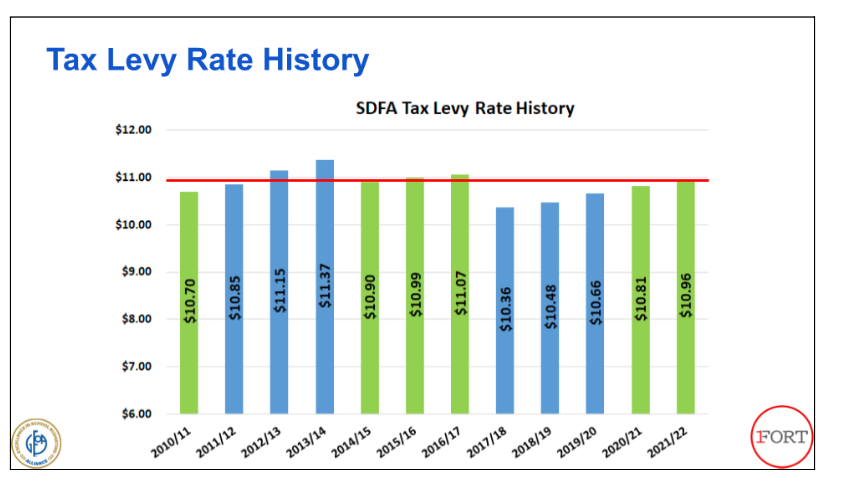
The above graph shows the School District of Fort Atkinson’s levy rate history.

The above graph shows increases to the tax levy associated with the state’s private school voucher program.

The above graph shows a history within the district of open enrollment revenues and expenses.
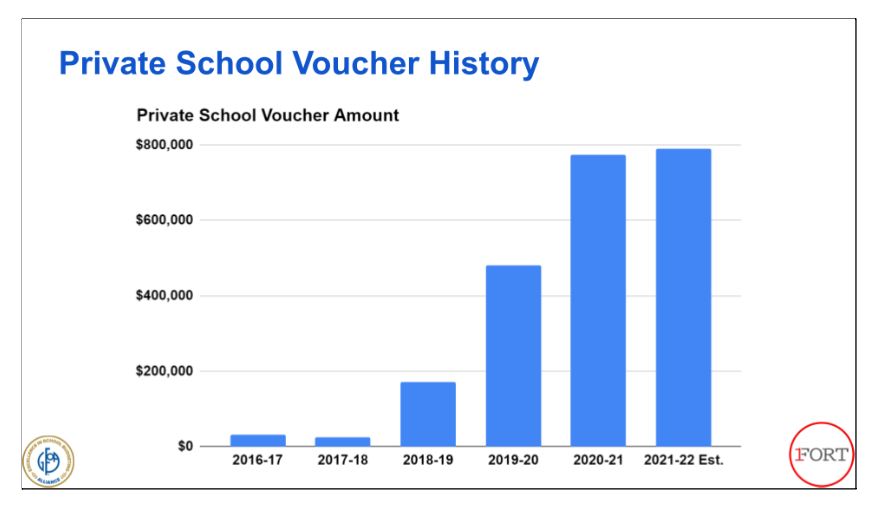
The above graph shows a history of tax levy dollars utilized within the private school voucher program.
Above graphic representations supplied by the School District of Fort Atkinson.
Summer’s first Charity Concert brings sound of music to Barrie Park
(Originally published June 30, 2021.)
Update: following is a clarification: monies earned through the Fort Atkinson Summer Charity Concerts will be used to support the Lend a Hand program at BASE and the FA Summer Charity Concert scholarship fund at FAHS. Earlier copy noted the money would support local charities. Fort Atkinson Online regrets confusion this may have caused.
Barrie Park was the place to be Wednesday evening as Driftless Music headlined the first of two Fort Atkinson Summer Charity Concerts of 2021.
The free concert drew hundreds of area residents, many bringing picnic suppers to enjoy with friends and family at the park.
All of the sponsorship funds and donations support the Lend a Hand program at BASE and the FA Summer Charity Concert scholarship fund at FAHS.
The next concert will be from 6:30 to 8:30 p.m. Wednesday, July 14, featuring music by Altar Boy Picnic.
The following month, the Fort Atkinson Summer Charity Concerts will join the Fort Atkinson Area Chamber of Commerce to present Rhythm “Remix,” Saturday, Aug. 21, throughout Fort Atkinson.
A revised version of the popular end-of-summer block party Rhythm on the River, it will be a daytime musical event spread out among several downtown venues to encourage smaller group gatherings and more family-friendly activities.
The “remix” of the original event will occur between 10 a.m. and 6 p.m. and feature local and regional performers in outdoor settings.
Additional details on the music schedule, food court, kids’ activities, event passport, and sponsorship opportunities are being finalized.

Driftless Music performs at the first of two Fort Atkinson Summer Charity Concerts at Barrie Park Wednesday.

Fort Atkinson Summer Charity Concert founder Megan Hartwick, seated far right, enjoys Wednesday’s musical event at Barrie Park.

The Lonsdale siblings enjoy the Fort Atkinson Summer Charity Concert. They were together for the first time in years when they attended the event Wednesday. The are, from left: Front Row: Sandy Blasing and Donna Smith, both of Fort Atkinson; Back Row: Linda Schwarz, Arizona; and John Lonsdale and Debbie Lonsdale, both of Fort Atkinson.

These event-goers are expelling energy as they run about the park.
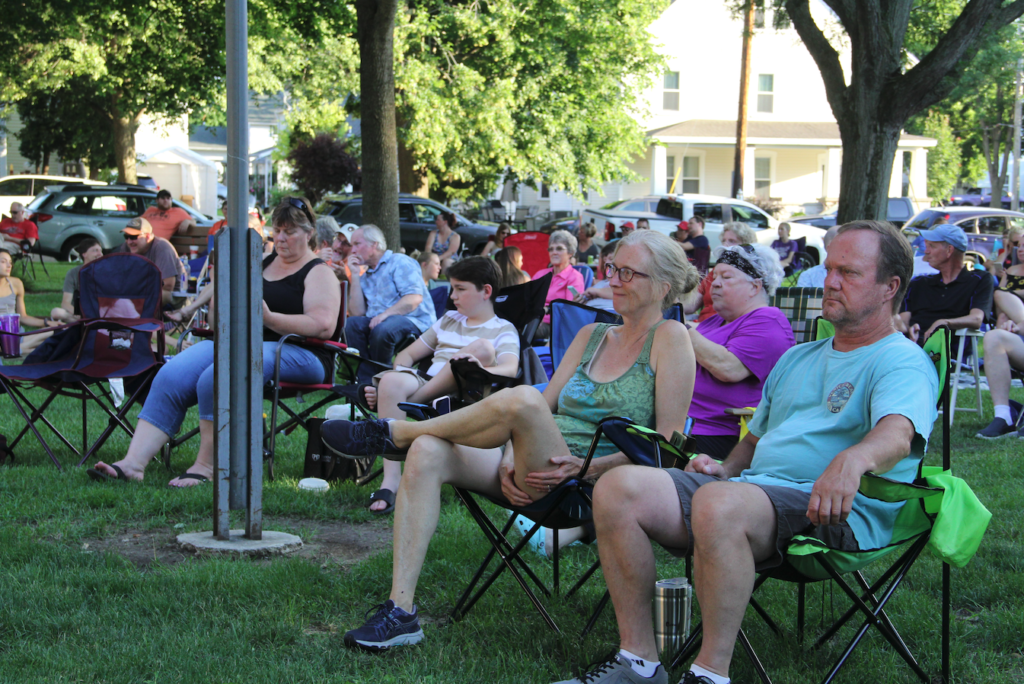

Two photos above: event-goers enjoy the evening.

Fort Community Credit Union employees Tracy Barnes, left, and Lisa Schiller volunteer at the donation table during the Fort Atkinson Summer Charity Concert Wednesday evening.

Family members of all variety enjoy the evening.
Chris Spangler photos.
Fort Atkinson Rotary Club salutes Wiederhoeft, Cheek for service
(Originally published June 30, 2021.)
By Chris Spangler
The Fort Atkinson Rotary Club has recognized two longtime members who have more than lived up to the organization’s motto of “Service Above Self.”
Ardell Wiederhoeft and Bob Cheek were honored during the club’s annual picnic luncheon Monday at Rock River Park’s Rotary Pavilion.
It marked the first in-person gathering since the club moved meetings to Zoom more than a year ago due to the coronavirus pandemic.
Edwin Bos, a past club president, surprised Wiederhoeft with the Al Haukom Service Above Self Award, named after longtime late Rotarian and community servant Allan Haukom.
“Over at Barrie Park, there’s a plaque on the ground next to the fountain that reads: ‘This 1903 fountain has been restored by the Fort Atkinson Rotary Club and is dedicated to the memory of longtime member Allan S. Haukom.’ Because of his love for the outdoors and devotion to his community, Fort Atkinson is a better place,” Bos said.
He explained that Haukom was a 53-year-member of the Rotary Club, which in 2004 honored him by naming a special award after him, as Rotary’s motto of “Service above Self” best described Haukom’s life.
“Gandhi, Meryl Streep, Chopin, Buffett (not Jimmy), Einstein, Spielberg, Rosa Parks, Lincoln, J.K. Rowling, nine other U.S. presidents and our honoree today,” Bos stated. “They all have something in common.”
He said Wiederhoeft is someone who has dealt with a lot of situations, has made Fort Atkinson a better place and has a lot in common with the individuals just mentioned.
“You see Einstein, Gandhi, Lincoln and the rest are all introverts … as is the person we are honoring today,” Bos said.
He shared characteristics of introverts, starting with “they talk deeply.”
“Many introverts find chitchat, which requires jumping quickly from subject to subject, overstimulating,” Bos said. “They seek out deep, serious conversations in which they can focus on a single topic of mutual interest.”
Introverts also prefer to work alone, according to Bos. He cited Steve Wozniak, the introverted engineer who cofounded Apple Computer with Steve Jobs.
“Wozniak did the hard, toiling work — and advises others to do the same,” Bos said. “He famously has said, ‘I don’t believe anything really revolutionary has ever been invented by a committee or by team.’
“The advice sounds unconventional, but scientists are beginning to recognize that solitude is a catalyst for expert performance. When you’re alone, you can make headway on the tasks that are most challenging.”
Bos shared that introverts also read more, pointing out that reading can be a deeply social act, putting one inside other people’s minds. He said that the ‘miracle of a communication in the midst of solitude.’”
In addition, introverts listen well.
“New research has revealed that introverted leaders often deliver better outcomes than extroverts, because they’re more likely to consider other people’s suggestions,” Bos said.
“They use quiet persistence to achieve group goals,” he continued. “Many introverts use a form of power so subtle that power almost seems the wrong word. Instead of taking strong stands in a loud voice, they make insightful suggestions in a gentle tone. Instead of holding forth at a meeting, they make alliances behind the scenes. Instead of calling attention to a problem, they work at it, carefully and doggedly.
“Some have come to call this ‘soft power’ and say that soft power can be defined as quiet persistence.”
Wiederhoeft exemplifies that soft power, Bos said.
He grew up on an Edgar dairy farm to hard-working parents who were active in their church and whose “strong faith in God shaped Ardell’s morals and principals, manifesting in the absolute integrity that we have all come to admire in Ardell,” Bos said. “’You reap what you sow’ and ‘work first so you can play later’: two important lessons that Ardell’s parents instilled in him and his two brothers,” he noted.
Bos shared that Wiederhoeft had a mechanical aptitude and at a young age learned how to fix almost anything that needed fixing on the farm. That extended into his adult life as he became a self-taught computer hardware expert and licensed airplane pilot.
“They say men generally prefer things to people and that women generally prefer people to things,” Bos said. “You could put Ardell’s picture next to that generalization.”
In 1964, Wiederhoeft and Sandra Pelikan graduated from Edgar High School and were married three years later. In 1968, he earned a bachelor’s degree in mathematics from the University of Wisconsin-Madison and started teaching math at Fort Atkinson High School.
During the 1970s, the Wiederhoefts started a family, which includes daughters, Kristine (Terry) Hoffman and Janice (Eric) Rasmussen; and four grandchildren, Mallory and Jackson Hoffman and Isabella and Grant Rasmussen.
Also during the ’70s, Wiederhoeft earned a master’s degree in math and computer science, as well as a master’s in school business management, both from UW-Whitewater.
“During his time as a teacher, Ardell started Fort Atkinson’s computer science program,” Bos said. “In those early years, he created a system where you placed a rotary phone receiver over a modem and, after a lot of beeps and squawks, it sometimes communicated with a mainframe at UW-Whitewater. With his own knowledge and this system, Ardell was able to teach his students how to write simple bits of code.”
Wiederhoeft taught high school math until 1980, when he became the business manager for the School District of Fort Atkinson. He served in that post for 28 years until his retirement.
“It was in this job where his soft power, his quiet persistence, really began to benefit our community,” Bos observed.
He said that Wiederhoeft inherited a district that was not in the best financial shape, but was able to turn things around quickly … “Ardell would want me to say only with the help of some fiscally conservative school board members.
“I mentioned that introverted leaders advance a group’s goals by making alliances behind the scenes,” Bos said. “There is nothing in school district policy about the subtle ‘teaching’ that Ardell did of both new and seasoned school board members. Also, nothing in policy about teaching others the value (or lack thereof) of a certain course of action.”
Bos said there are numerous examples of how Wiederhoeft’s “soft power” positively impacted Fort Atkinson during his 28 years as business manager, most known only to the few people who were directly involved.
“I was on the board when Ardell taught me that the mechanical systems in some of our schools were very old and starting to fail,” Bos recalled. “He also taught the subject matter to the other school board members and to his fellow administrators. Almost none of this happened during regular meetings; it mostly happened behind the scenes — not behind the scenes in a negative way, but in the best possible way.”
He said that Wiederhoeft had determined that the community needed something and, using his soft power and quiet persistence, simply taught it what it needed to know.
“Once we were taught, the action that needed to be taken became obvious,” Bos said. “In that case, a $10 million referendum in 2006 to replace and repair mechanical systems at Barrie, Rockwell, Purdy and the middle school.”
The presenter noted that while business manager, Wiederhoeft served on various city committees, including the Airport Committee, and was on hand any time the city and school district needed to negotiate details of a mutual issue.
“Ardell joined Rotary in the late ’90s,” Bos said. “We all notice the constant behind-the-scenes work that Ardell does for our Rotary Club, so I’m not going to recite the list. In 2015, he was named our club’s Honorary Paul Harris Fellow and, via his own contributions, Ardell is a six-time Paul Harris Fellow.”
Wiederhoeft was named the Wisconsin School Business Manager of the Year by the Wisconsin Association of School Business Officials, and, upon his retirement, friends and colleagues established the Ardell Wiederhoeft Legacy Scholarship which annually provides scholarships to graduates of Fort Atkinson High School pursuing studies in business or mathematics.
Bos said that during retirement, the Wiederhoefts have been kept enjoying their grandchildren, traveling to 49 states and parts of Canada in their recreational vehicle and flying his airplane.
“In today’s overscheduled, hyperactive world, we often celebrate the alpha approach and undervalue the quieter aspects of our natures,” Bos said. “We forget, or we don’t know, that history has shown us again and again that quiet, introverted men and women are often the most successful in leading their communities and organizations.
“There can be no doubt that Fort Atkinson is a better place, thanks to Ardell and Sandy’s decision to move here in 1968,” Bos concluded. “Ardell, thank you, thank you for always placing service above self and from everyone here to today. as well as your many other admirers throughout the city and school district. Congratulations on receiving the Fort Atkinson Rotary Club’s 2021 Allan S. Haukom Service Above Self Award.”
Wiederhoeft was surprised by the honor.
“I’ve enjoyed everything I’ve done here with the club; of course, no one does everything themselves,” he said in thanking the Rotarians for the award.
“I had a lot of help from a lot of people, and for that, I am grateful,” he continued. “I would have to say in retrospect that in all the years I’ve been a Rotarian, I’ve never asked someone for help who said no. I appreciate that.
“Thank you very much,” he added. “I’m honored. I’m humbled. You’re very kind.”
Also Monday, Rotarian Mike Bender presented Bob Cheek with the Five Avenues of Service Award, calling it “one of the most prestigious and coveted awards that can be bestowed on a Rotarian.”
He listed the five avenues of service as: club, vocational, community, international and youth service.
“Our honoree this year has not only met these five avenues of service, but, moreover, has far surpassed the high expectations of this award,” Bender said.
He noted that Cheek grew up in Fort Atkinson and went on to what then was Whitewater State University. His career moves landed him in Oconomowoc, Waukesha, Appleton and Fort Atkinson.
“He became involved in scouting at a young age and during his freshman year at Fort High, he persuaded most of the Fort High wrestling team to join the Explorer post led by a young Explorer scoutmaster by the name of Gerry McGowan, who was just starting his teaching career at Purdy School,” Bender said. “Little did we know then that despite about 10 years working in the financial field as a stockbroker and later, as a trust officer in a local bank, his love for scouting would lead him into a rewarding career in Boy Scout leadership!”
Bender quoted McGowan as saying: “Bob, as a camp inspector and coach of scout leaders, did everything by the book to ensure that all camps were safe and led by highly-trained scout leaders.”
Due to his diligence and fastidious attention to detail, Bender said, Cheek served as a regional camp inspector, where he also taught camp directors the skills they would need for first aid, safety and all the preparations that would need to be in place before opening a camp where the goal was to provide a meaningful and exciting experience for the campers.
He shared that Cheek earned the highest honors in scouting by being inducted into the Order of the Arrow Society, which best exemplifies the scout oath and law in one’s daily life. He also was the recipient of the Vigil Honor, given to an individual who demonstrates an unusual awareness of possibilities within each situation.
“Bob closed out his full-time working career serving at Goodwill here in Fort,” Bender said. “But scouting remains in his blood, as he still fills in for scout leaders when positions in the area become vacant.”
Bob and Kathy Cheek have been married for 51 years. They have two daughters, Lisa and Kate; sons-in law, Mike and Kevin; and four grandchildren, Katie, Jack, Paige and Sean.
“One of Grandpa Bob’s proudest moments was attending the Philmont Scout Ranch in the Sangre de Cristo range of the Rocky Mountains in northeastern New Mexico with his grandson, Jack,” Bender said. “They were the oldest and youngest twosome to complete the 75-mile backpack hike!”
He continued: “When we think of ‘Service Above Self,’ Bob is completely selfless and in a class of his own. In his quest to make life better for others and in contributing to our community, his generosity of his time knows no bounds.”
Cheek volunteers at the Hoard Historical Museum as a docent to guide visitors at the Foster House; volunteers at blood drives; delivers Meals on Wheels; has volunteered as a presenter at the middle school’s Youth Life Skills Day; and has been a chamber of commerce volunteer for the Fort Atkinson High School seniors portfolio reviews.
“Bob also volunteers at the Fort Atkinson Food Pantry, and the Hoard-Curtis Scout Camp (near Cambridge) with Joel Winn,” Bender said.
An active member of First United Methodist Church, Cheek has served on the Finance Committee and Administrative Council, and as an usher, the presenter added.
“For Rotary every week, when we were actively meeting prior to COVID, the Fort Club was always set up and ready to go for our meetings, thanks to Bob,” Bender said. “Bob also took care of the Rotary weekly meeting raffle, giving up some of his lunchtime and fellowship going from table to table to sell the raffle tickets and collect the money.”
When the Rotary Club held its year’s largest fundraiser, Cheek took on extra Rotary Raffle tickets to make sure all 250 tickets were sold.
“Bob always steps forward to volunteer for Rotary projects,” Bender said. “He has also played an important role in our student exchange program, making sure our visiting students have a good experience. With our past student, Isha from Nepal, Bob served as the Rotary Club coordinator.”
He noted that through the years, Cheek also has been active in the Jaycees and Fort Atkinson Kiwanis Club, often serving in leadership roles including president.
“In closing, Bob is a family man, blessed to have a wonderful and supportive wife of 51 years — that is quite a run,” Bender said.
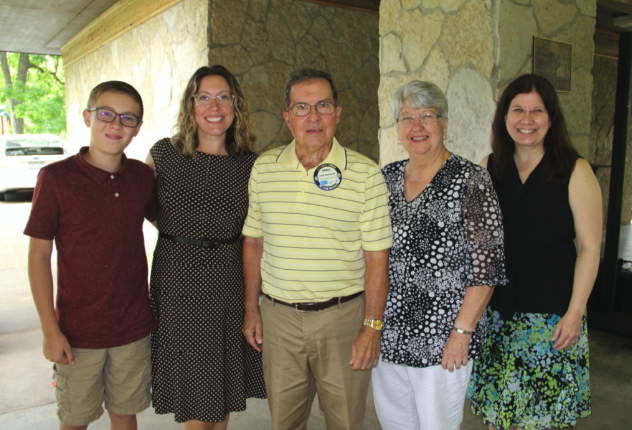
Family members gather after the Fort Atkinson Rotary Club presents Ardell Wiederhoeft with the Al Haukom Service Above Self Award. They are, from left: grandson Grant Rasmussen, Allenton, Wis.; daughter Janice Rasmussen, Allenton, Wis.; Ardell Wiederhoeft; wife Sandy Wiederhoeft; and daughter Kris Hoffman, Oregon, Wis. Grandchildren not pictured are Isabella Rasmussen and Jackson Hoffman.
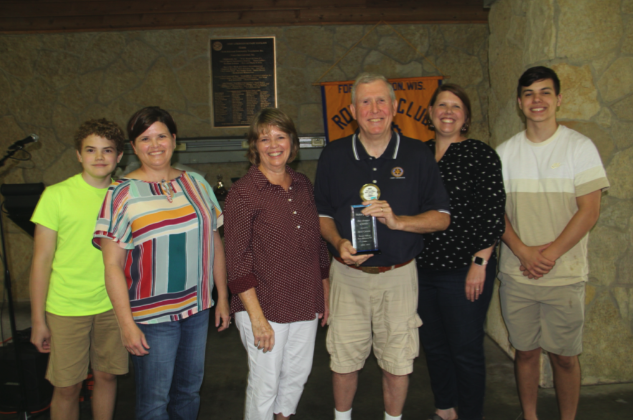
Fort Atkinson’s Bob Cheek, after receiving the Five Avenues of Service Award, gathers with family members. From left, they are: grandson Sean Driessen, Watertown; daughter Kate Driessen, Watertown; wife Kathy Cheek; Bob Cheek; daughter Lisa Reese, Madison; and grandson Jack Reese, Madison.
Chris Spangler photos.
Fort police respond to two traffic accidents Thursday afternoon, one with a fatality
(Originally published July 1, 2021.)
By Kim McDarison
The Fort Atkinson Police Department responded Thursday afternoon to two traffic accidents, one of which produced a fatality, according to Lt. Brandon Sachse.
Few details were available about either accident as of Thursday evening, Sachse said, pending notifications of members of the decedent’s family and the completion of incident reports.
The police department received what Sachse described as “multiple calls” reporting the first accident involving a car and a motorcycle at around 3:34 p.m.
The accident took place near the 1500 block of Madison Avenue, near the avenue’s intersection with Lexington Boulevard, Sachse said.
Fort Atkinson Fire and Rescue, and Ryan Brothers Ambulance also responded to the call.
Deputies with the Jefferson County Sheriff’s Office also were at the scene to assist with accident reconstruction, he said.
Upon a medical examiner’s review at the scene the operator of the motorcycle was pronounced dead, Sachse confirmed.
No other details related to the accident were available as of Thursday evening, he said.
A second accident, involving a car and a bicycle, took place near the intersection of Janesville Avenue, South 3rd Street and Robert Street, Sachse said.
Police responded to the second accident around 5:14 p.m.
There were no fatalities associated with the second accident, Sachse noted, adding that no other information was available relating to the second accident Thursday evening.
This story will be updated as more information becomes available.
Update: According to information released July 2 by the Fort Atkinson Police Department through its press blotter, the deceased motorcycle driver was a 22-year-old Fort Atkinson male. The other individual involved is a 63-year-old male from Deerfield. No other information was released through the blotter.
July 9 update: Capt. Jeff Davis of the Fort Atkinson Police Department has informed Fort Atkinson Online that information released through the press blotter regarding the age of one of the subjects involved in the July 1 accident, involving a motorist and bicyclist, was in error. The subjects involved were a female motorist, 46, and a bicyclist who is a juvenile.
Update: According to information released July 2 by the Fort Atkinson Police Department through its press blotter, the accident involving the car and the bicycle was reported by multiple callers. The two subjects involved were both female, ages 46 and 49. The 49-year-old bicyclist was transported to an area hospital by Ryan Brothers Ambulance Service. No other information was released through the blotter.
Information shared with Fort Atkinson Online indicates that police department crash reports likely will be available on Tuesday, July 6.

File photo/Fort Atkinson Online.
Juvenile driver strikes utility pole leaving 530 without power
(Originally published July 1, 2021.)
By Kim McDarison
Some 530 We Energies customers in the Fort Atkinson area were without power yesterday morning after a vehicle driven by a teenager struck a utility pole.
According to Chief Deputy Jeff Parker of the Jefferson County Sheriff’s Office, the car involved in the single-vehicle accident was a 2006 Buick Lucerne. The male driver was the vehicle’s only occupant at the time of the crash.
Fort Atkinson Fire Department Division Chief Dion Brown said the driver appeared to have minor injuries and was able to exit the vehicle without assistance. He was transported by Ryan Brothers Ambulance Service to an area hospital.
Parker said no injuries to the driver were listed on his department’s incident report.
Both Parker and Brown said their agencies responded to a call for assistance at just after 8 a.m., Wednesday, June 30.
A truck from We Energies also arrived to the scene to replace the damaged pole.
Brown said the pole was “broken in half,” but its pieces remained suspended by utility wires.
Hanging wires and the positioning of the We Energies truck used to make repairs caused a road closure on Highway 12 for about an hour, he said.
The Fort Atkinson Police Department responded to the scene and assisted with traffic control, he added.
Brown said firefighters cleared the scene at 9:13 a.m.
We Energies spokesperson Alison Trouy said customers in the Fort Atkinson area were without power after the incident. The company arrived on site and replaced a pole. Power was restored to the affected customers by 9:07 a.m., she said.
The juvenile driver received a citation for failure to keep vehicle under control, Parker said.
Damage to the vehicle was noted on the right and left front end and its undercarriage. The damage was consistent with an impact with the pole and building, he said.
Information supplied by the sheriff’s office noted that the car was traveling northbound on US Highway 12 when the driver lost control. The vehicle ran into the utility pole on the west side of the highway near the intersection of US Highway 12 and County Trunk K. The pole was about 19 feet south of County Trunk K. The vehicle then moved back across the highway, striking the south side of a building located at N1834 US Highway 12 on the east side of the highway. Damage was sustained to the building on its south side.
The vehicle also hit a traffic sign post.
The building, as described by Brown, has a footprint of about 10 by 12 feet and is known locally as the “Royal Order of Jacks” clubhouse.
“There was damage to the little building, but we couldn’t fully assess the damage because we couldn’t get inside,” Brown said.
Annexation of Banker Road property moves toward approval
(Originally published July 7, 2021.)
By Kim McDarison
The Fort Atkinson City Council Tuesday approved a second reading of an ordinance allowing for the annexation into the city of 75 acres along Banker Road.
The city-owned land is currently included within the town of Koshkonong.
While the ordinance to annex the Banker Road territory was placed on Tuesday’s agenda with the potential of waiving a third reading and voting for its adoption, City Manager Rebecca Houseman LeMire requested that council approve a second reading only, with the understanding that the proposed ordinance would return July 20 for a third reading, noting the time between readings would be used by she and city staff to verify the appropriate ward designation for use within the new territory.
As previously reported by Fort Atkinson Online, once annexed, the city plans to use the land for future residential development.
In a memo to council, LeMire wrote that the land, which was purchased by the city in 2019, currently includes three parcels.
As a byproduct of the way the land purchased by the city is bounded, it will create, after annexation, “town islands,” leaving seven parcels of undeveloped land, ranging in size from just over a half acre to nearly 8 acres along or near Banker Road, surrounded by land annexed into the city. The parcels themselves will not be part of the annexation.
An intergovernmental agreement between the city and the town of Koshkonong, the municipality in which the parcels will continue to reside, has been approved by both municipalities.
The intergovernmental agreement between the town of Koshkonong and the city was signed May 12.
The document acknowledges the creation of town islands and makes provisions to offer those landowners an opportunity, without objection from the town, to request annexation or attachment to the city.
The agreement further acknowledges that the town and city “desire to work together for the betterment of their communities,” noting that the two municipalities share “many borders and desire to establish and maintain a positive and productive relationship as our lands and futures are intertwined.”
The document also acknowledges a mutual recognition of a need for “open communication and cooperation” as the two municipalities work towards land use planning, subdivisions, and orderly development for the region.
As part of the agreement, the city will pay a lump sum of $868.50 for each of the next five years to the town in compensation for lost taxes.
The city also agreed to provide services, coming, according to the document, with a total estimated value of $26,000. The breakdown of costs and services to be provided includes:
• Plow and salt the south side of Hoard Road from North Main Street to Banker Road, at an estimated total value of $4,000.
• Provide Wisconsin Information System for Local Road Pavement ratings for all the town’s roads and submit them to the Wisconsin Department of Transportation. The service comes with an estimated value of $3,500.
• Provide long-line painting on Rock River Road from the city limits to State Highway 106, including yellow centerline skip and white edge on each side; Hackbarth Road for the entire length, including double yellow centerline and white edge; and Old 26 from the State Highway 26 bridge to Koshkonong Lake Road, including white edge only. The services come at an estimated total value of $8,500.
• Assist at the town’s request in the planning and design of a four-way stop at the intersection of Hackbarth Road and Endl Boulevard, at an estimated total value of $3,500. The service does not include intersection improvements if needed, the document states.
• Provide one red solid crosswalk, or a crosswalk that would be similar to the city’s downtown area, on Hackbarth Road, at the intersection of Endl Boulevard and Hackbarth, at an estimated value of $3,500.
• Assist the town in the development of a comprehensive road plan for all of the town’s roads. The service comes with an estimated value of $3,000.
LeMire noted during a council meeting held in June that the city is engaged in a “Neighborhood Planning process.” Upon its completion, she wrote in a memo to council, the city will prepare a request for proposals from interested land developers, with plans calling for the land to be developed in phases and in accordance with the city’s Comprehensive Plan.
Development of the land will benefit the city through increased housing stock and its associated tax base, she said.
A related story about the Banker Road project is here: https://fortatkinsononline.com/plans-for-75-acre-bankers-road-project-move-forward/.

The above graphic, as provided within the city council packet on Tuesday, shows the area proposed for annexation into the city.
Alcohol consumption, nuisance ordinances garner varying results
(Originally published July 7, 2021.)
By Kim McDarison
Amendments within a proposed multipart alcohol consumption and nuisance ordinance met with varying outcomes during Tuesday’s Fort Atkinson City Council meeting.
Each of four amendments were scheduled for a third reading Tuesday. Council typically adopts ordinances and amendments that change them after a third reading.
During Tuesday’s meeting, an amendment to city code, making it unlawful for any license holder to permit any person to leave the licensed premise with an open container of alcohol, passed a third reading, with council voting in favor of moving the item to its next meeting, scheduled for July 20, at which time it will undergo a fourth reading before again returning for consideration of approval.
Council members voted 4-1 in favor of a fourth reading, with Councilman Brandon Housley casting the dissenting vote.
A second piece of the multipart ordinance — proposing an amendment to city code making it unlawful to possess an open alcohol container on any public street, sidewalk or public right-of-way unless an appropriate permit or license has been granted by the city council — was tabled until further notice. The measure received unanimous approval from council, with the body citing a desire to allow city staff more time to better understand potential outcomes associated with the proposed change.
Two other amendments within the ordinance — one developed to curb disorderly conduct by making it unlawful for any person to defecate or urinate outside of a designated facility, and another making it unlawful to drink or possess alcohol in a city park when closed unless permitted through an authorized event — each passed a third reading and were adopted into law.
During discussion, several council members noted that they had received communications from area business owners and residents pertaining to at least two of the proposals.
Discussion focused on language prohibiting bar and tavern patrons from leaving a licensed premise with open intoxicants, and the prohibition of open intoxicants on city streets and sidewalks.
Open intoxicants leaving a licensed premise
During the discussion Housley asked: “So let’s say you had a drink at the legion, would you have to stay on their patio?”
City Clerk Michelle Ebbert said she could address the question from a licensure standpoint: “So if you are purchasing a drink at the legion, and you are staying on their premise description — the premise description is where alcohol can be sold, stored and consumed — so if you buy a drink and you stay on their property … you’ll be ok with that. The second you leave a property, that’s where that issue stands of having an open intox … You cannot leave their property.”
City Manager Rebecca Houseman LeMire said the requirements, as outlined by Ebbert and within the proposed amendment, are “already state statute.”
A benefit, she said, is that the proposed ordinance would allow violations to be enforced locally.
Fort Atkinson Police Chief Adrian Bump said: “Right now the police department has the ability to enforce this law at a state level, which means that if we were to take law enforcement action against a location, it would be a state offense and not an ordinance violation. It would actually be a criminal forfeiture or it could be a misdemeanor. It would go through the circuit court. If we adopt this ordinance, that gives the local municipal court the ability to handle and oversee that violation.”
Without a city ordinance, he said, “we would have to go through the district attorney (and) through circuit court for a violation. That’s our only option.”
The change would make violations a local enforcement matter, he said.
A local ordinance, he said, “allows our officers better discretion and it’s less of a penalty against the business. It’s better for the business to have an ordinance violation than to have a criminal violation.”
Councilwoman Megan Hartwick said she had been contacted by members of the public with comments about the proposed ordinance.
“It is by far the most public feedback and the most public comments that I have received on anything in certainly my short tenure here on the city council,” she said.
“Knowing that we at least potentially have an option, I would like to see this be something that we get a little bit more information on and more feedback on before our council would choose to make a vote on this,” she added.
Hartwick said she wanted “more clarification” and a “better understanding” of potential impacts, especially for bar owners.
Said Bump: “The best way to describe it is the potential impact to them is that instead of being charged criminally, and being charged through the circuit court, they, if (they) violated this law, and an officer chose to take legal action against them — because officers use discretion — they would be issued a local ordinance citation which would be a fine, and they would be allowed to go to municipal court in our city before our municipal judge to contest the citation.”
Without the ordinance, Bump said, the violation becomes a state matter and is handled criminally through the circuit court rather than civilly through the municipal court.
He described the local option as “better for our bar owners.”
Hartwick asked: “How many of these state offenses have bars in Fort Atkinson received in the last year?”
Bump responded, saying “zero.”
With no offenses identified last year, Hartwick questioned whether the situation was of concern.
Said Bump: “Not that there isn’t a problem. There is an extreme issue. We have people leaving establishments every single night.
“We are not taking enforcement action against our businesses because we are a local police department that takes pride in our businesses, and the last thing we want to do is hold criminal charges against (owners). So we could continue to do nothing and see no strong benefit to improving the quality of life in the city, and the chronic nuisance issues we’re seeing, or we can be a little bit more hard-nosed and start taking criminal action against our bars and our bartenders and our bar owners. And that’s what we don’t want to do.”
Bump said officers talk with bar owners when they see concerning behavior and warn them, but, he added: “You can only warn someone so many times before it just becomes a joke.”
Bump described the new ordinance as a motivational tool to help curb nuisance behavior. The community has some “great” business owners that depend on the sale of alcohol, but, he added, if the owners could not be motivated, “then things will just not get better.”
Councilman Bruce Johnson said, in his experience, the public did not often bring concerns to council members. In light of comments, he said, he believed more time to better understand the issues would be merited.
Hartwick said business owners who had spoken with her said they were concerned that a new ordinance would bring a “push” to punish them. They also voiced concern, she said, about their ability to monitor their customers so they could accurately account for who might be leaving their premise with open alcohol containers.
Bump emphasized the importance of adopting all four of the amendments being presented.
“They all work together,” he said.
“We would never go after a situation by only coming up with one solution or one angle to address it,” he added.
He stressed his confidence in his officers’ ability to use discretion when applying law enforcement tools, and noted a need to cultivate what he described as continued good relationships between business owners and the police department.
Bump said a new state law, making legal the sale of sealed containers of alcohol at bars and taverns, would not be affected by the proposed ordinance.
Open intoxicants on city streets and sidewalks
During discussion about an amendment prohibiting open intoxicants on city streets and sidewalks, Councilman Mason Becker said he received feedback from community members, adding: “I did get a sense that many members of the public were a little more hesitant on this point, as I would, frankly, say I am.
“From a sense of personal freedom standpoint, I have a hard time saying we should prohibit somebody from say leaving their house and going for a walk on the sidewalk with an open can of beer.”
Hartwick, too, said she received comments from members of the public.
Expressing their concerns, she said: “It seems like an overregulation and it would punish a lot of people for perhaps the misbehavior or misconduct of the few.”
Council President Chris Scherer asked Bump if there was a specific part of the city that caused him concern.
Bump cited the city’s downtown district and Riverwalk as the most common places where the ordinance could be most beneficial.
Becker said he was aware of “a recognized problem” in the Riverwalk area.
Becker said alcohol consumption was already prohibited in two parks in the city.
“I could see crafting something to perhaps prohibit consumption on the Riverwalk,” he said.
“Covering the whole city with this, when I don’t get the sense that it’s a huge problem or something that residents of the city are necessarily asking for, I have to be a little bit more cautious with this,” Becker said.
Said Johnson: “I guess I’d like to make sure we keep distinguishing between are we chasing disorderly conduct or are we chasing a beer … I know a lot of fisherman, there are a lot of people who like to fish on that river (Rock River). Are they not going to be able to have a beer and sit next to their fishing pole?”
“If we pass the ordinance, it would be citywide, streets and sidewalks,” Bump said.
Scherer asked Bump about concerns and benefits associated with defining a district in which the ordinance might apply.
Bump said if the district was well defined, “so it was black and white,” he did not think it would be a hindrance for law enforcement.
Hartwick said she believed the districting concept would be “very worthwhile to explore.”
Council opted to table the proposed ordinance to allow for further exploration by city staff of options.
A story, with comments made relating to the second reading of the amendments, is here: https://fortatkinsononline.com/multipart-alcohol-consumption-public-nuisance-ordinance-moves-toward-approval/.
A story, with comments made relating to the first reading of the amendments, is here: https://fortatkinsononline.com/first-reading-approved-for-proposed-multipart-intoxicant-consumption-ordinance/.
July 1 accident involving an SUV and a bicycle crash report released
(Originally published July 9, 2021.)
By Kim McDarison
The Fort Atkinson Police Department Friday released information involving an accident which took place July 1 between a motorist and a bicyclist on Robert Street.
According to the Wisconsin Motor Vehicle Crash Report submitted by the Fort Atkinson Police Department, the accident occurred at approximately 5:18 p.m. at the intersection of South Third and Robert streets.
The report noted that Teresa M. Wilson, 46, of Fort Atkinson, was driving a 2019 Mitsubishi Eclipse and traveling southbound on Robert Street when she stopped at a red light at the intersection of Robert and South Third streets and waited while a bicyclist passed in front of her SUV in the marked pedestrian crosswalk. She then continued forward, hitting a second bicyclist, whom, she said, according to the report, she did not see. The bicycle made contact with the right front of the SUV, the report stated.
The bicyclist is identified as a juvenile from Fort Atkinson. The child was reported to have sustained “suspected minor injuries” and was transported to an area hospital.
No injuries were reported to the driver of the SUV. “Functional damage” was reported to the vehicle’s right front side. The vehicle did not require towing, according to the report.
“No improper action” was taken on the part of the bicyclist, the report stated.
Wilson, who, according to the report, was distracted and looked away, received a citation for not properly yielding the right of way at a controlled intersection or crosswalk.
The citation carries a fine of up to $200 for a first offense.
The incident, which occurred nearly two hours after a motorcyclist was killed in a separate accident on Madison Avenue, attracted attention on local social media pages.
A crash report from the fatal motorcycle accident on July 1 has not yet been released, pending completed and approved investigative reports, along with the reconstruction report from the county, according to Capt. Jeff Davis of the Fort Atkinson Police Department.
Davis also confirmed that an earlier report issued through the department’s police blotter, identifying the subjects in the SUV and bicycle accident as two women ages 46 and 49, was in error.
Information about the fatal motorcycle accident will be reported by Fort Atkinson Online as it becomes available.
A visit to the Jefferson County Fair
(Originally published July 9, 2021.)
The Fort Atkinson Online photography team of Kim McDarison and Chris Spangler arrived at the Jefferson County Fair on Thursday. The team found a full day of activities and met exhibitors of all variety; fair-goers, some of whom traveled to attend from as far away as Illinois; and a host of other folks who make the fair run smoothly and promote a full spectrum of fun. Following are photos from the day.


Kayla Anfang-Kruizenga, 12, of Fort Atkinson and her crossbred pig, “Gracee,” are ready for the Showmanship Grade 6 Class judging at the Jefferson County Fair. Anfang-Kruizenga is a member of the Country Roots 4-H Club.
Colin Anfang of Sullivan and his pig, “Ford,” head toward the ring for Showmanship judging.




Youngsters and their pigs enter the ring for judging.
Two pigs strut their stuff.


Jewelynn Gonzalez of Cambridge joins her spring ewe lamb, “Wiggles,” in its pen at the Jefferson County Fair. Born March 10, Wiggles is a Jacob Sheep, one of the oldest genetic breeds in the world. Gonzalez is a member of the Lake Ripley 4-H Club.
Lillyth Gonzalez snuggles with her spring ram, who is, coincidentally, named “Snuggles.” Gonzalez is a member of the Lake Ripley 4-H Club.


Sheep rest quietly under a sign for Fort Atkinson FFA found in the sheep barn at the Jefferson County Fair.
Lincoln Laabs of Oakfield stands with “Finnegan,” a 2-year-old registered Belgian. Laabs was learning on Thursday how to braid a horses tail.


Emily Klingbeil and her 1-year-old daughter, Mary, visit the lambs at the Jefferson County Fair. Klingbeil is the Cambridge schools’ FFA adviser.
Amanda Doman of Creekwater Farm, Watertown, braids the tail of “Finnegan,” a 2-year-old registered Belgian, in the Draft Horse Barn at the Jefferson County Fair Thursday. She was teaching the art of braiding to Lincoln Laabs of Oakfield.


At the Jefferson County Fair Thursday, four friends enjoy ice cream cones in the Beef Barn. From left are Kaylee Lund of Cambridge, a member of the Lake Ripley 4-H Club; Kimmy Roidt of Cambridge, a member of the South Side Eagles 4-H Club; Tara Bettenhausen of Cambridge, a member of the Lake Ripley 4-H Club; and Ava Tyler of Janesville and Oshkosh. Ava is Tara’s cousin and was visiting the fair for the day.
Fair staff members drive a tractor offering rides around the fairgrounds.


Cows enjoy the afternoon in the barn at the Jefferson County Fair.
Cows enjoy some face-to-face time while resting in their comfy bedding.

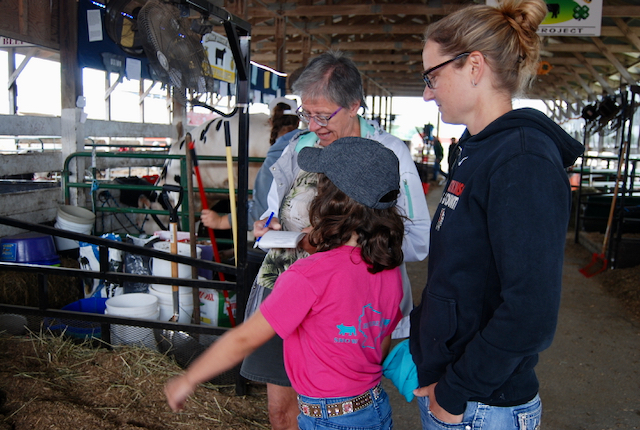
Grace Roth of Fort Atkinson, a member of the Country Clovers 4-H Club, hangs out in the Beef Barn at the Jefferson County Fair with her cousin’s yearling heifer, “Dixie.”
Reporter Chris Spangler learns about cows.
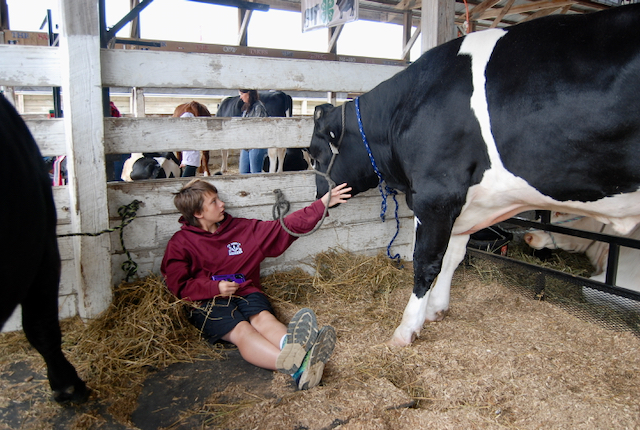

Hunter Schwab of Fort Atkinson takes a break with his steers, “Arti,” left, and “Sheldon,” in the Beef Barn at the Jefferson County Fair Thursday. He is a member of the Country Clovers 4-H Club.
Colin Anfang of Lake Mills poses for a photo with “Sapphire,” his Hereford heifer, in the Beef Barn at the Jefferson County Fair Thursday.


A sweet bovine face.
Ean Reichert of Windy Hill Farm, Johnson Creek, is pictured with his 7-year-old Percheron mare, “Gennett,” in the Draft Horse Barn at the Jefferson County Fair Thursday.
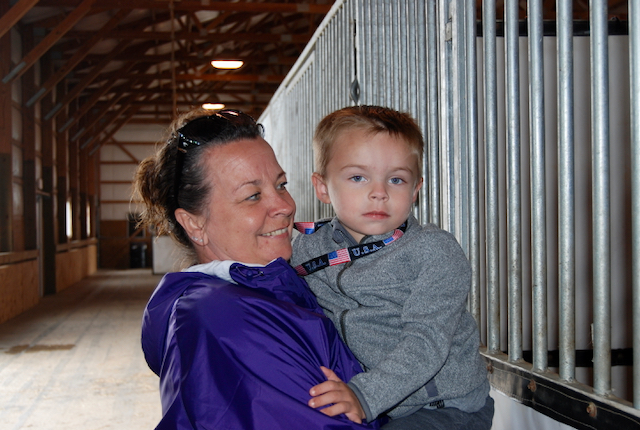

Candy Hamilton of Rockford, Ill., and her grandson, Tyler Zumwalt, view draft horses at the Jefferson County Fair Thursday.
Chris Fountain of Sullivan admires a 75-horsepower John Deere 5075E tractor in a lineup of new green tractors.


A draft horse and its human family take a walk around the Draft Horse Barn.
Animals and owners spent quality time together Thursday afternoon in and around the fair’s exhibit barns.


A mechanic checks to make sure rides are in tip-tip shape. Midway rides were scheduled Thursday to open at 4 p.m.
Fort Atkinson Online contributor and longtime area journalist Chris Spangler finds a ride.


Cousins Ella Foerster and Emily Foerster, both of Fort Atkinson, pose for a photo with their heifers, “Amber” and “Nellie”, respectively. Amber is a Red-and-White Holstein, while Nellie is a Black-and-White Holstein; both are about 1 year old.
A group from Caledonia, Ill., prepares to take a ride in a horse-drawn buggy at the Jefferson County Fair.


Deputy Tim Steinbach hosts the Jefferson County Sheriff’s Office booth at the Jefferson County Fair Thursday. A highlight for visitors is the department’s emergency-response vehicle.
A family explores the booths at the Jefferson County Fair.
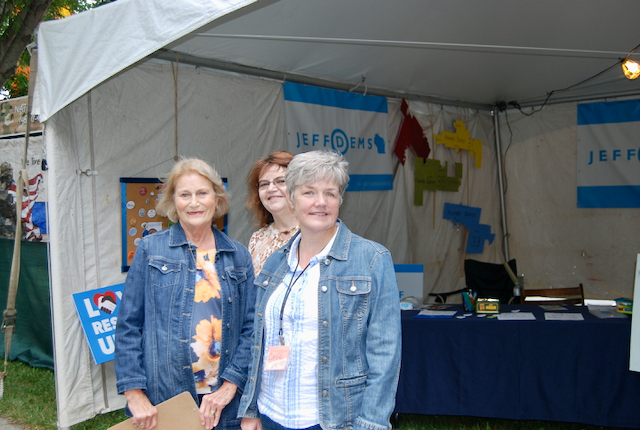

The Jefferson County Democratic Party has a booth at the Jefferson County Fair. On Thursday, three members were greeting visitors. From left, they are Laurel Tinkle, Jefferson; Kathy Kruk, Jefferson; and Carrie Doyle, Fort Atkinson.
Pam Lazaris, Lake Mills, hosts the Jefferson County Republican Party booth at the Jefferson County Fair Thursday. Pam serves as the organization’s historian.


Facepainting is popular at the Jefferson County Fair. On Thursday, Attigun Benz of Farmington, left, and Evangeline Lapp of Watertown displayed beautiful facial artwork.
Jefferson County Fair volunteers Chris and Curt Kreklow of Jefferson stop to help FortAtkinsonOnline.com photographers get directions to the Entertainment Tent.


Kyle Durkee of Milton poses for a photo at the Jefferson County Fair with his rabbit, “Ollie.” A New Zealand breed, Ollie placed first in the Single Fryer class.
Vivianne Manson, 6, and brother William Manson, 3, look at the bunnies in the Rabbit Barn Thursday at the Jefferson County Fair. The children reside in Edgerton.


Roald Ager-Hart, 15, of Jefferson, won first place with this diorama in the Junior Mechanical Projects class at the Jefferson County Fair. He is a member of the Duck Creek 4-H Club.
In the building housing Open Class and Senior Citizen exhibits at the Jefferson County Fair, the Badger Woodturners are showing visitors how to turn wood. Pictured above, Badger Woodturners member Bob Schweitzer of Jefferson teaches Jillian Wangerin of Fort Atkinson how to make a top, which she then got to take with her as a souvenir. Wangerin is a member of the Rock River Clovers 4-H Club.


Addy Statz of Helenville received first place for cake decorating in the Junior Foods and Nutrition Project at the Jefferson County Fair. Fair-goers went hog wild for her pig cupcakes.
This cake was among items on display in the Junior Foods and Nutrition Project at the Jefferson County Fair.


Glenn and Joyce Laird of Fort Atkinson enjoy the floral exhibits at the Jefferson County Fair Thursday. The Lairds are avid gardeners themselves.
This tiny garden was on display as part of the Junior Exhibit: Crops, Plants, Soil, Vegetables and Flowers.


Art pieces were among items on display at the Jefferson County Fair.
Three brothers from Davis, Ill., enjoy coloring at the Jefferson County Fair Thursday. From left are Jace Stahl and his twin brothers, Titus and Titan. Their mother said she is originally from Oconomowoc and the family always has enjoyed attending the Jefferson fair.
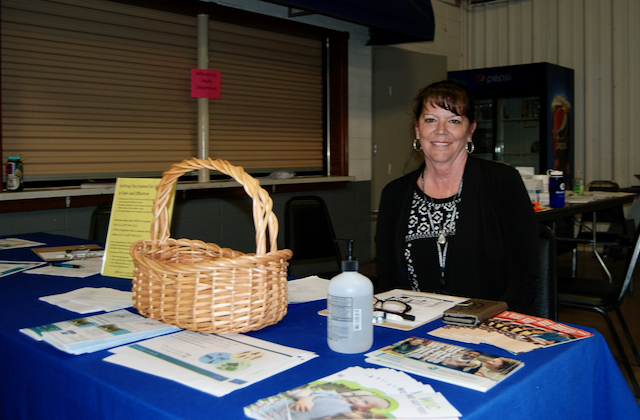
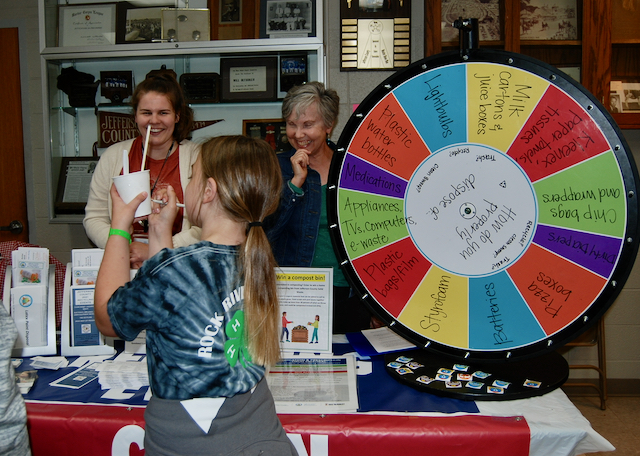
Lori Richardson of Milton was hosting the Jefferson County Health Department booth at the county fair on Thursday. Information on COVID-19 and the many health programs offered by the county was available.
Jefferson County Clean Sweep and recycling program information is available to attendees of the Jefferson County Fair. On Thursday, Caitlin McAleavey, county Clean Sweep coordinator and solid waste specialist, behind table, at left, and volunteer Anita Martin of Lake Mills, were hosting the booth. Upcoming events include a Clean Sweep at the City of Watertown Street Department, 811 S. First St., from 3 to 5:30 p.m. on Sept. 17, and 8 a.m. to 10 a.m. on Sept. 18. There will be an Appliance, Electronics and Bicycle Recycling Clean Sweep from 4 to 6 p.m. on Sept. 2.


Fair park employees on Thursday set up the grandstand stage in preparation for Friday’s show by the Ides of March. Saturday night will feature country music singer John Pardi, with Sunday being the day for the demolition derby.
Fair Committee Chairman Blane Poulson and Fair Director Amy Listle take time to visit with Fort Atkinson Online. The two were on site overseeing activities as staff prepared for upcoming weekend events.

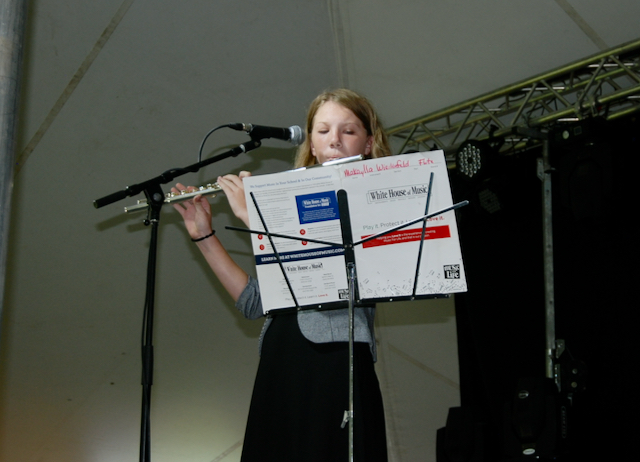
Ella Greving, 9, from Sullivan, gets feedback from the judges after performing the song “Tomorrow,” dressed as “Little Orphan Annie.” Greving said participating in Musical Theater was fun and she looks forward to doing it again.
Flautist Makeylla Wiedenfeld performs for the audience and judges in the Miller High Life Entertainment Tent Thursday.

Fort Atkinson Online contributor Chris Spangler on Thursday said she had a wonderful time looking at exhibits and meeting people at the fair. A 40-plus year veteran of journalism in the area, she said she remembers when the fair park had more tents than buildings. The park has come a long way, she said. What’s remained the same is the quality of the exhibits and the time and attention Jefferson County residents, young and old, put into projects and mentoring youth. Describing cheese curds as a favorite fair food, she said finding some was a must before leaving the park. A carton teeming with the dairyland treats accompanied her on the way out. The Jefferson County Fair will remain open throughout the weekend. Carnival rides close Sunday at 6 p.m. For more information about the fair, visit the website: https://www.jcfairpark.com.
$14.1 million in revenue bonds approved to pay for wastewater plant upgrades
(Originally published July 12, 2021.)
By Kim McDarison
The Fort Atkinson City Council Tuesday, July 6, approved the issuance and sale of up to $14.1 million in sewerage system revenue bonds and a related $15.8 million financial assistance agreement.
Documents shared within the council meeting packet included a letter to City Clerk and Finance Director Michelle Ebbert from the Milwaukee law offices of Quarles & Brady, LLP, offering for council’s consideration a resolution “authorizing the execution of the Financial Assistance Agreement and the issuance of Revenue Bonds to the State of Wisconsin Clean Water Fund Program.”
According to the Wisconsin Economic Development Corporation (WEDC) website, the Wisconsin Clean Water Fund Program “operates a financial assistance program consisting of Federal and State Accounts. The Department of Natural Resources (DNR) and the Department of Administration (DOA) jointly administer the program under the Environmental Improvement Fund.”
According to the resolution and agreement approved Tuesday, monies received by the city from the Wisconsin Clean Water Fund must be deposited into a special fund designated “Sewerage System CWFP Project Fund,” with those monies to be used solely for the purpose of paying the costs, as stipulated within the agreement, of the city’s wastewater improvement project.
The total amount to be loaned through the program to the city is $15,875,508.
The document provides for a loan closing date of July 28, 2021, with a first payment due on Nov. 1, 2021 with an interest rate of 1.557%.
A breakdown of project costs included within the agreement is as follows: preliminary engineering, $676,900; engineering/construction management, $1,105,515; construction/equipment, $13,385,000; charge orders, $17,843; contingency, $669,250, and loan closing costs, $21,000.
The agreement further allows for a “phosphorus priority principal” forgiveness amount of $1,000,000 and a “general principal” forgiveness amount of $750,000, making the loan’s net amount $14,125,508.
A schedule showing payments against the borrowed principal begins in May of 2024 and ends in May of 2041.
Information within the resolution states that prior to the passage of the resolution, no bonds or obligation payable from the revenues of the city’s sewerage system were outstanding.
The resolution authorizes the sale of series 2021 (indicating date of issuance) Sewerage System Revenue Bonds in the amount of $14,125,508. The amount represents a borrowing on the credit of the income and revenue of the city’s sewerage system. The bonds will be sold by the city to the State of Wisconsin Clean Water Fund Program, according to the resolution.
As stipulated within the terms of the resolution: “the municipality deems it to be necessary, desirable and in its best interest to authorize and sell sewerage system revenue bonds of the municipality payable solely from the revenues of the (city’s sewerage) system.”
Some history
On March 16, the Fort Atkinson City Council approved a bid of $13.4 million as submitted by Marshfield-based Staab Construction Corporation to perform Phase 2 work on the city’s wastewater treatment plant, 1600 Farmco Lane. The work, including improvements designed to meet new state phosphorus protocols, must be completed by May, 31, 2023, with the upgraded plant complying with new protocols by June 30, 2023.
Also in March, the city identified additional monies that might be used to offset project costs coming through “cash-on-hand” in the wastewater utility’s reserve and equipment replacement accounts.
Phase 2 construction work at the city’s wastewater treatment plant was anticipated in March to complete “over the next 27 months,” and included:
- The replacement of existing raw wastewater grinders with new influent fine screens and wash presses.
- The rehabilitation of the influent wet well.
- The construction of a headworks area to be built over the existing wet well.
- The replacement of two existing influent pumps and the addition of a new fourth pump.
- The rehabilitation of two primary clarifiers.
- The modification of the aerations tanks.
- The replacement of two aeration blowers.
- The rehabilitation of two final clarifiers.
- The construction of a new tertiary filtration facility with chemical conditioning, followed by disc filters.
- Improvements made to the aerobic digesters.
- Improvements made to portions of the HVAC ventilation system within the plant’s Building 10.
A first phase of the project, coming at a cost of just over $1 million, was earlier completed. Phase 1 improvements were paid for using the utility’s equipment replacement and reserve funds.
An earlier story relating to wastewater plant upgrades is found here: https://fortatkinsononline.com/city-accepts-13-3-million-bid-for-phase-ii-wastewater-treatment-plant-upgrades/.

Two photos above show the area where new tertiary treatment disc filters will be housed. The improvement will be installed as part of Phase 2 construction.
File photos/Chris Spangler
Off The Record: Kennel Club co-founder Marleen LaPlant remembered
(Originally published July 12, 2021.)
By Chris Spangler
They say timing is everything.
That certainly was the case for the Kennel Club of Fort Atkinson when it unveiled its “Puppy Serenade” statue at Rock River Park on June 15th.
Passersby undoubtedly have admired the bronze sculpture created by Fort Atkinson artist Mark Dziewior. Located near the entrance to the disk golf area, it joins a human/canine/bottle-filling fountain and bench offering two- and four-legged visitors a brief respite during long walks.
The statue salutes the Kennel Club’s three founding members — Patty Beran, Marleen LaPlant and Rita Hasel — and their respective dogs, Nova Scotia Duck Tolling Retriever “Cody,” Dalmatian “Dottee” and Scottish Terrier “Scarlett.”
“Puppy Serenade” could not have been dedicated at a more perfect time because just two weeks and two days later — on July 1 — Marleen passed away.
A family member said that June 15th was one of the happiest days Marleen had experienced in years, and I witnessed that personally when, despite poor health, she proudly joined Rita and Patty for a photo. Petting a dog alongside her wheelchair, she smiled for the camera.
Of course, Marleen smiled a lot in her life. And she laughed … a lot. Having bowled with her in the Wednesday Night Ladies League at Rock River Lanes for decades, I can attest to the fact that she loved people and sharing good times. Her hearty, often boisterous, laugh could be recognized by bowlers many lanes away.
For those who did not have the good fortune to have known Marleen, she was an Oakland native who graduated from Fort Atkinson High School in 1961. Eleven years later, she married John LaPlant. Joining Nasco early in her working career, Marleen was responsible for competitive bidding for large orders and shipping for the international corporation. Also having helped host the Nasco booth at World Dairy Expo in Madison for many decades, she retired in 2008 after 45 years with the company.
The Nasco job was a good fit, as Marleen had grown up on a dairy farm. It was there that she fostered her lifelong love of animals. I remember her saying, “I don’t like to dust; I don’t like to cook. Just let me go outside with the animals, and I’m happy.” Active in the Jefferson County 4-H Program, she raised Guernsey cows, winning many showmanship awards at the county and state levels. As an adult, Marleen often judged 4-H events.
In addition to the Kennel Club of Fort Atkinson, Marleen was involved in conformation dog shows and various dog obedience activities. She also enjoyed taking her Dalmatians to nursing homes for therapy visits and the Dwight Foster Public Library for its Reading to the Dogs program.
So perhaps it really is no surprise that, in 1991, Marleen, Patty and Rita began meeting to train their dogs together. The following year they officially formed the Kennel Club of Fort Atkinson Inc. and were soon joined by other dog enthusiasts. The organization continues yet today, teaching dog training, modeling responsible dog ownership and undertaking community service and improvement projects like “Puppy Serenade.”
As I first mentioned, the timing of the dedication was perfect. But even had it not worked out that way, I know Marleen would have been fondly remembered throughout the Fort Atkinson area.
For legacies are sculpted from actions, not bronze. And Marleen’s will live on through all she contributed to the dairy, 4-H, bowling and canine communities long after “Puppy Serenade’s” shine darkens with age.
Godspeed, Marleen. Say hi to “Dottee” for me.

Patty Berans, from left, Marleen LaPlant and Rita Hasel gather for a photo at the dedication of “Puppy Serenade,” a sculpture saluting the three women and their dogs as founders of the Kennel Club of Fort Atkinson. Sadly, Marleen passed away 16 days later following a lengthy illness.
File photo/Chris Spangler
American tale: from Lorman to Loeb-Lorman and expansion into worldwide markets
(Originally published July 13, 2021.)
Editor’s note: this is the second of a two-part history of the former Loeb-Lorman scrapyard in Fort Atkinson. The story’s first part is found here: https://fortatkinsononline.com/american-tale-immigrants-dream-creates-recycling-history-in-fort/.
By Kim McDarison
The history of the former Loeb-Lorman scrapyard in Fort Atkinson began with the toil and vision of 20th-century emigrants from Russia and continued for more than 100 years as upgrades and expansion led to industrialized mechanization and engagement with foreign markets.
For the scrap industry and Loeb-Lorman Metals, economic decline began with the Great Recession between 2007 and 2009, followed, in 2015, by a petition filed by the company for a state-supervised reorganization, but from 1984 — the year in which Barbara Lorman sold the yard and its assets to the Loeb family of Watertown — to the recession and subsequent reorganization, growth and innovation were the hallmarks of a merged company headed by several generations of two area families.
Serving as an administrative employee for the Loeb family since 1980, Ruth Mack recently remembered much of the scrapyard’s history. As the editor of a company newsletter called “Scraps,” Ruth was able to provide documentation of the scrapyard and metal company’s history spanning some 24 years.
A parallel beginning
Like Louis and Clara Lorman, Ruth said, Hyman Loeb emigrated to American from Russia.
In the early 1920s, Hyman ran a small business from his home in Columbus, Wis. Like Louis Lorman, he began his business with a horse-drawn wagon, going door to door, collecting discarded items such as paper, rubber products, metals and rags. Many of Ruth’s recollections are confirmed by a history provided through the Watertown Historical Society.
At home, the items were sorted and sold for other uses.
Hyman was the father of five sons and one daughter, all of whom helped with the business. He also had help from the community.
According to Ruth, only two of Hyman’s children, William “Bill,” and Archie, made a longterm professional choice to follow their father into the scrap business.
At some point, Ruth said, the family moved to Watertown.
Company documentation notes that Bill and Archie started the Loeb Metal Company in Watertown in 1941 on ground that is today the site of Schurz Elementary School.
By 1951, according to the Watertown Historical Society’s account, Loeb Salvage had moved and was operating from 1111 South Tenth St. in Watertown. The account describes the company as one that used heavy equipment to produce materials that could be sold to refineries and melted into raw materials for new products.
A full accounting from the Watertown Historical Society is found here: http://www.watertownhistory.org/Articles/Loeb_Metal.htm.
Over time, Ruth said, the company grew from Hyman’s humble start as a “junk man” to a salvage dealership and then to an industrialized recycling company.
In 1984, when Barbara Lorman wanted to sell the yard in Fort Atkinson, Ruth said, she wanted to sell to someone who would continue its operation.
Ruth described “a culture of scrap,” saying: “You have to understand the scrap business. It almost has to be in your blood.”
Both the Lorman and Loeb families were well-known in the industry, Ruth said.
“They had already formed a professional relationship and respected one another even before (Barbara’s husband) Milton’s death (in 1979),” she added.
At the time of the purchase, the Lorman scrapyard, with its nine acres, was larger than the 2-acre parcel the Loeb family operated in Watertown.
According to Ruth, family members involved with running the business — along with Hyman, Bill and Archie — included members from the next generation. Bruce Loeb is Bill’s son and Neal Loeb is Archie’s son. The two cousins ultimately took control of the business as partners.
Today, she said, Hyman, Bill, Archie and Neal are deceased.
2L Loeb LLC, the company that recently sold the former Loeb-Lorman scrapyard site to the City of Fort Atkinson, represents the partnership between Bruce and Neal.
When the Loeb family purchased the yard from Barbara Lorman, Ruth said, she believed the Watertown-based Loeb company had about 40 employees, although they did not all work in scrap. Some worked for another branch of the company in refuse collection called Advance Service Corp.
Ruth said the Loeb organization purchased the Lorman property and its tangible assets, including the scrap on the ground and equipment.
After purchasing the yard in Fort Atkinson, Ruth recalled, the company’s roster of employees grew to between 80 and 100.
In the decades that followed, she said, for the Loeb family company, there was a robust period of growth, characterized by expansions made through an increased customer base, including foreign markets, property acquisitions and landfill site development, and efficiency upgrades made at the company’s scrapyards.
Much of that history is documented through “Scraps,” which offers a collection of stories, between 1991 and 2015, of companywide professional and social activities.
‘Scraps,’ the growth years
The 1990s
1991 was described in the newsletters as a good year for the Lorman site, best exemplified in a letter from OLIN company, in East Alton Ill., which read: “congratulations on your performance during the first half of 1991. We appreciate your good performance and thank you for the effort you have made to reduce the reject rate of your deliveries …” According to the newsletter, the Lorman site shipped over 87,000 pounds of metal.
1991 also marked the beginning of construction of the Deer Track Park, Inc., sanitary landfill, located today on Waldmann Lane in Watertown. The company underwent a process called “siting,” which took two years to complete, according to the newsletter. Ruth described the siting process as one where appropriate permits are obtained and a process is undertaken to bring a site into compliance with state Department of Natural Resources (DNR) regulations and requirements. The site is operated today by Texas-based Waste Management Solutions.
Plans, In 1991, called for an anticipated 44-acre landfill to be lined with 60-mil, high-density polyethylene.
“This liner will make our landfill 1,000,000 times safer than an unlined landfill,” the newsletter reported.
In its “Autumn 1991” edition, the newsletter announced the installation of new equipment at the Lorman site, including a $50,000 “metal washer,” used to remove solvents, dirt and foreign materials from ferrous (with iron) and non-ferrous metals. A cleaner product would command higher prices in the marketplace, the newsletter noted.
A second machine, which “flattens and shears non-ferrous metals in one operation” was also installed. The new machine promoted uniformity in the yard’s product and added a component of safety.
Socially, in September of that year, the company held its annual picnic at the Milwaukee County Zoo, where employees and their families were treated to a catered meal.
The “Winter 1991-92” edition announced a change in company leadership: “effective Jan. 1 1992, Archie Loeb “is no longer involved in the direct day-to-day management of the companies, but will direct his time in the purchasing of sales and scrap metal.”
Bruce Loeb officially assumed Archie’s responsibilities pertaining to company management. He would oversee Lorman Iron and Metal, and Loeb Metal. Neal Loeb at that time assumed the responsibilities for directing Advance Service Corp., the garbage collection branch of the company, and Deer Track Park, Inc., the company-owned landfill.
The newsletter also highlighted advancements at the Loeb Metal Recycling plant in Watertown, noting that the company was annually processing over a million tons of product.
In February of 1992, a special edition of the newsletter noted, the company’s board of directors had deemed the Deer Track Park landfill project of “primary emphasis of the organization in both money and time investment.”
Also that year, plans were laid to consolidate the processing of ferrous metals, moving most of that activity to Fort Atkinson.
In the spring of 1992, an update prepared company employees for the opening of Deer Track Park. Construction was completed in December of 1991, and an opening date was under review by the DNR. The landfill was described as having a total of 38 acres, which would be built in seven modules. The total capacity of the full landfill was 3,195,100 cubic yards of refuse. The landfill received its first load on June 18, 1992.
The Winter/Fall 1992-93 edition brought news of another company picnic. Held Sept. 20, 1992 at the Milwaukee County Zoo, the outing was attended by some 200 employees and their guests. As an indicator of company growth, in the fall of 1993, some 300 people attended the company picnic.
Another employee outing hosted by the company occurred on Aug. 22, 1993, when the Carson & Barnes Circus arrived in Watertown. Loeb company employees and their families were treated to the event.
In the summer of 1995, a new custom-built scale was added at the Lorman yard. The new scale and its installation came at a total cost of $40,000.
As part of the new scale, a radiation detector was installed. The improvement was made, according to the newsletter, as “more and more of our foundry customers are requiring the loads to be checked for radiation contamination before they will purchase materials.”
The cost of the detector was estimated at between $35,000 and $38,000.
“Hot” or contaminated items, the newsletter noted, would be rejected and not purchased by Loeb Industries.
“If items are found to be hot, a procedure is in place for disposal of the materials through the State of Wisconsin Radiation Protection Agency,” the newsletter continued.
In 1996, the University of Wisconsin-Whitewater football team, the “Warhawks,” arrived at the Lorman yard for a photo op. The team was calling itself “the wrecking crew,” according to the newsletter, and wanted photographs of its members standing near a pile of iron. Then-coach Robert Berezowitz posed with the team.
In the winter of 1996, a new shear, described as a “gigantic high pressure machine,” was purchased for the Lorman site. The equipment was described as having “a shearing force at the blade of 1,200 ton.”
In 1997, it was reported in the newsletter that William Loeb, at the age of 80, had passed away on Aug. 15.
“Bill’s greatest legacy was, perhaps, his ability to make everyone feel that they were important to him and our company,” the newsletter stated.
Also in 1997, a new quality control system was on its way to yards in Fort Atkinson and Watertown.
“What is ‘ISO 9002’?” a newsletter headline asked. Employees learned that the new system, produced by the International Organization for Standardization (ISO), was being developed for use by companies worldwide. Loeb-Lorman had expanded its clientele and was serving companies worldwide and was therefore adopting the new standards. The company would be among the first, the newsletter stated, adding that the move would help the company satisfy customers by lowering costs through cutting down on waste.
2003 to 2014
In 2003, according to the newsletter, some 145 employees and their families attended the company picnic.
In December of 2003, a new liquid oxygen tank was installed at the Lorman yard. It was installed to reduce the cost of liquid oxygen, according to the newsletter. The new tank could hold 2,500 gallons. The project also included underground piping form the tank to a storage tank at the yard’s torch station.
Also announce in the newsletter, Ruth Mack, the editor of the newsletter, was named 2002 Citizen of the Year by Dodge County Law Enforcement. The Dodge County Sheriff’s Department was able to purchase 11 cameras with money collected through an aluminum can drive, which was conducted by the Beaver Dam Kiwanis Club. Ruth served the club as chairperson.
In 2006, the newsletter reported, changes were made to the ISO system. New safety and environmental rules were added with the adoption of ISO 9001. New policies associated with the change asked employees to adopt what the newsletter described as the “Lorman formula: service, solutions, satisfaction, safety, preventing pollution.”
With new policies and passage of a pending audit, the company would become ISO 9001, ISO 14001 and OHSA (Occupational Safety and Health Administration) 18001 registered.
In 2007, the company announced the completion of a new Reedsburg scrapyard, which offered an opportunity to move scrap by rail from sites in Watertown and Fort Atkinson, where it would be used to supply the Grede Foundry, which, according to the newsletter was one of the Loeb family’s biggest customers.
Bringing the 7-acre site online included purchasing the property, cleanup efforts, and its annexation into the community of Reedsburg.
Also in 2007, the company obtained a license to sell metal to China. The company announced it would seek out opportunities in India as well.
In 2008, in celebration of ISO and OHSA registrations, a dinner was held at Jansen’s Banquet Hall in Fort Atkinson. The dinner was attended by 95 employees and guests. Speakers, including Bruce Loeb, thanked employees for their efforts and stressed the importance of being good stewards of the environment as a component of their work.
During the event, employees were made aware of a correspondence sent by Rob Kantner, described as “a nationally known ISO consultant,” who wrote: “Congratulations to you and the entire Lorman team. Lorman is only the third U.S. scrap recycling firm to implement and certify an integrated quality/environmental/ safety management system. I am grateful for having had the chance to work on it.”
Also in 2008, a report about the year’s community picnic noted some 69 Loeb-Lorman employees and their families attended the event which was held at the Jefferson County fairgrounds. Each employee in attendance received a Loeb-Lorman Metals, Inc., hat and a gift of $300.
‘World economic slowdown’
The newsletter in 2008 delivered news about what it termed “a world economic slowdown.”
Addressing his employees by letter, Bruce Loeb wrote that the slowdown hit the economy “very quickly,” putting management in the position of having to make “hard decisions.”
Bruce looked forward to 2009, hoping government intervention might bring some relief.
He wrote: “We have taken steps to maintain the viability of our company and assure that we are part of the recovery which will surely occur.”
In 2011, a Loeb-Lorman employee, Ernie Heine, was recognized by Fort Atkinson’s Heart of the City organization as its “Big Heart” award recipient. He was chosen for his work as a volunteer at the Fort Atkinson farmers market, the group said.
Also in 2011, the newsletter noted the company’s pride in its relationship with Opportunities, Inc., in Fort Atkinson, adding that together, the two companies had worked on many projects.
“Our company, especially Archie Loeb, was honored by Opportunities at their 45th Anniversary Gala on July 28, 2011. The Commitment Award was given to the Loeb family and Loeb-Lorman Metals for decades of continuous commitment to their organization,” the newsletter announced.
In 2012, a new scale was added in Fort Atkinson at the Petrolane site north of Hake Street. The scale had the ability to be remotely operated from a station at the Lorman Street office.
The newsletter thanked the City of Fort Atkinson for its help in bringing the project to fruition, saying that then-city manager John Wilmet “toured the new scale location and expressed his pleasure with Loeb-Lorman’s efforts to be good neighbors and responsible corporate citizens.”
Also in 2012, a shredder, dubbed “the Little Red Giant,” was installed at the Fort Atkinson yard. The machine could be remotely operated by a single person, the newsletter noted.
In 2014, at the company picnic, which was again held at the Jefferson County fairgrounds, Bruce Loeb thanked his employees for another year of hard work.
According to the newsletter: “(Bruce Loeb) briefly summarized economic conditions affecting the scrap industry and our efforts to improve our production. He highlighted new customers for our products and our plans for the near future.”
At the time, the company purchased a property at 815 Jefferson St. in Fort Atkinson, with plans to convert it into a buying site for over-the-counter customers and providing an access point to facilitate an easier flow of semi traffic in and out of the scrapyard.
The 2014 newsletter was the last included in Ruth’s binder.
2015: Petition for receivership
In 2015, the Loeb-Lorman Metal company petitioned the state, filing in the Jefferson County Circuit Court, for receivership protection.
With company assets listed at $18.2 million and debts totaling $17.2 million, the company applied for a state-supervised reorganization plan which would allow another company to purchase some of its assets and continue their operation. At the time, according to Information included within the Watertown Historical Society’s history, the company owed its largest creditor $10 million.
Falling iron prices and a decreasing demand from foreign markets for raw materials supplied by the company were cited as reasons for its need for restructuring.
The move allowed the company to strategically restructure while continuing the day-to-day operations of its yards.
St. Louis-based Alter Trading Corp purchased the Wisconsin-based assets of Loeb-Lorman Metals, Inc., in 2015. The yards in Fort Atkinson, Watertown and Reedsburg were among assets purchased. The assets were sold by a court-appointed receiver as part of the bankruptcy petition with those monies used to pay company debt.
At the time of the sale, the company was reported having about 70 employees: 20 in Watertown and 50 in Fort Atkinson.
The scrapyard in Fort Atkinson ceased operation after the purchase.
The former Loeb-Lorman yard in Fort Atkinson was recently purchased by the City of Fort Atkinson.
The city extended its offer to purchase the parcels from 2L Loeb LLC in December of last year. The offer came with two components, the first extended to the seller a lump sum of $182,000, with the land’s remaining value, estimated at $550,000, to be used tor site remediation. Any monies not used for remediation will be returned to the seller, according to city documents.
A second phase of work to evaluate the site for contamination is underway. A report of those findings is anticipated in September.
Future plans for the site involve returning it to open or “pad-ready condition,” according to Fort Atkinson City Engineer Andy Selle, after which the site must sit vacant for five years before something new can be established.
What that might be is still under discussion, he said.
A story about the remediation of the land is found here: https://fortatkinsononline.com/city-to-begin-second-phase-remediation-process-at-former-loeb-lorman-site/.
The following photos, unless otherwise indicted, are supplied courtesy of the Loeb family. They depict activity occurring before the company’s Wisconsin properties were sold as part of a 2015 strategic reorganization plan.

A large magnet is at work lifting and sorting scrap. Pictured is a tin can manufacturer’s scrap which was purchased by Loeb-Lorman Metals. The materials were next sold to a foundry where they would be melted and made ready for use as a manufacturing raw material.

Loeb-Lorman employees, including foreman Jon Allen, at left, work at a table where they remove unwanted pieces of material from metal scrap that will be sold to a foundry.

Members of the Loeb family include Neal, back row, at left, and Bruce. Appearing in the front row are Archie, at left, and Bill.
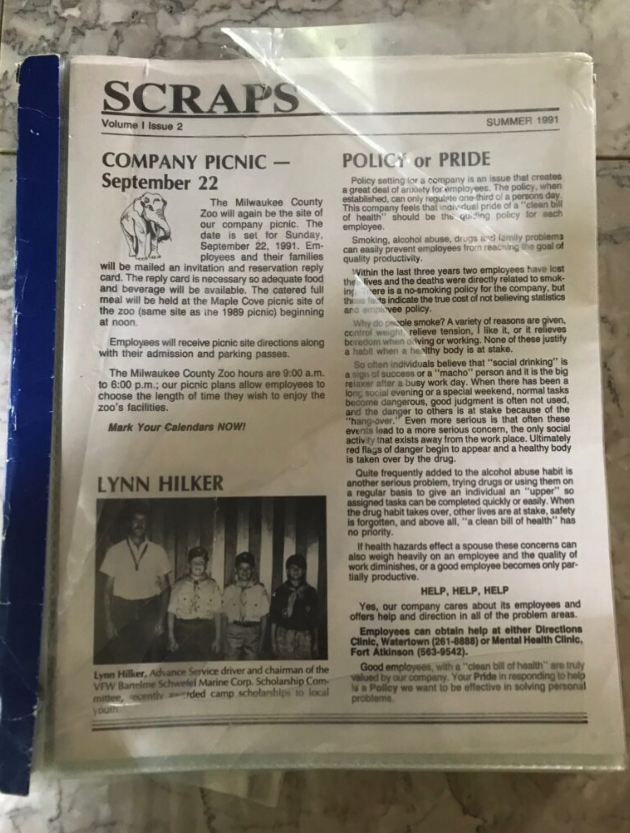
A binder kept by longtime Loeb family employee Ruth Mack documents 24 years of company history between 1991 and 2015. Mack was the editor of the company newsletter called “Scraps,” copies of which are found in the binder.
Rock-Koshkonong Lake District annual meeting set; Shumaker to run for reelection
(Originally published July 14, 2021.)
By Kim McDarison
The Rock-Koshkonong Lake District (RKLD) annual meeting of electors will be held Saturday, Aug. 28 at Race Track Park, 900 Stoughton Road, Edgerton.
RKLD Board of Commissioners Chairman Alan Sweeney said the meeting will follow a format similar to the one used last year, with registration tables for electors opening around 8:30 a.m. and the meeting starting at 10 a.m. Attendees are advised to bring lawn chairs.
Among items on the agenda this year are wicket gate replacement and renovation plans at the Indianford Dam, also referenced as the water control project; lake access improvement through the development of boat launches and landings; and a request from the lake district made to the Wisconsin Department of Natural Resources (DNR) to complete a wetlands study, the results of which will determine whether a future summer water level increase of 2.5 inches, which was negotiated in 2017, will be executed on Lake Koshkonong.
Additionally, an election will be held to fill one seat on the seven-member board of commissioners held by Mike Shumaker, who was elected to the board in 2018, replacing longtime commissioner and then-board chairman Brian Christianson. Commissioners are elected to three-year terms.
Shumaker told Fort Atkinson Online he plans to seek reelection. District residents interested in running for the seat have until Aug. 20 to declare their candidacies and have their names appear on the printed ballot. Challengers also may declare their candidacies or be nominated during the annual meeting at any time before the voting process begins, Sweeney said, adding that the ballot will include spaces for write-in candidates.
As of July 14, no candidacies had been officially declared, Sweeney added.
Agenda topics anticipated as part of the annual meeting and their histories follow.
Wicket gate replacement/water control project
Information released by Sweeney earlier this month on the RKLD website noted that the final design plan for the Indianford Dam water control project met all DNR regulatory requirements and received approval from the Wisconsin Historical Society and U.S. Army Corps of Engineers.
A bidding process to award the project’s construction contract closes on July 30, he said. The board of commissioners plans to hold a monthly meeting in August during which time it anticipates approving a construction bid.
Sweeney said the district’s water control project became a DNR mandate in 2020 after the department determined some components within its directives, issued in 2014 and 2016, to RKLD for water control at the dam had gone unmet. How the dam operates, and at what level water within Lake Koshkonong, the lake impounded by the dam, is maintained is set by state statute.
In 2018, with flooding among topics of concern from lake district constituents, the RKLD Board of Commissioners began exploring the concept and cost of removing the two wicket gate carousels housed underneath the dam’s powerhouse.
Attention focused on making modifications which might have allowed for better control when releasing water through the dam. Discussions revolved around the removal of the submerged gates, that, many said, were hard to maintain and repair, and trash racks, installed on the upstream side of the powerhouse designed to protect the submerged wicket gates, which required a labor-intensive cleaning process.
In 2018, at the annual meeting, Cottage Grove-based Montgomery Associates Resource Solutions principal Rob Montgomery offered an analysis showing that even with all the gates open at the dam, water levels would not draw down at a significantly increased pace.
He cited rainfall, which, he said, was 50% above normal. The increased amount of rain was flooding the system, which was already operating at capacity.
During the 2019 annual meeting, electors approved a 2019-20 budget that earmarked $50,000, coming from proceeds collected through the district’s special fee used to provide operational funding, and another $50,000, coming from one of the district’s segregated funds, to study proposed modifications that might be made to the Indianford Dam.
In the fall of 2019, the RKLD board hired Minnesota-based Emmons & Oliver, Inc., to draft a request for proposals (RFP) which could be supplied to engineering firms interested in bidding on a project to design a sluiceway and Tainter gate system on the east side of the Indianford Dam, thus replacing the underwater wicket gate system that remains in place today.
Some $3,000 was approved to fund the development of the RFP.
At that time, the board discussed its intention to seek a DNR grant, which commissioners noted, could potentially fund up to $300,000 in repairs or modifications at the dam.
In December of 2019, the board hired Madison-based Mead and Hunt to design a supplemental gated spillway with a crest gate at the dam. Moving from a Tainter gate to a crest gate was approved after Mead and Hunt Project Engineer Jeff Anderson explained that the change could save taxpayers nearly $19,000.
Services hired through Mead and Hunt came in a two-phase process: the first phase included field investigation, analysis and schematic design, coming at a cost not to exceed $63,200. A second phase, including the preparation of design drawings and a report to be submitted to the DNR as part of the grant application process, would come at a cost not to exceed $75,000.
Additionally, MARS-EOR was hired to help the board understand submitted proposals from engineering firms. MARS-EOR engineer Rob Montgomery was identified as the board’s hired agent.
In 2020, the board learned from the DNR that the district had been placed on the “priority funding list” to receive funding through the 2019-21 Municipal Dam Grant Program.
To receive funds, Sweeney told the board, a bid for the construction project at the dam had to reach or exceed a total of $1.2 million to be eligible for the maximum grant of $400,000 in reimbursable funds.
Sweeney also informed commissioners that the DNR had written a “Revised Work Directive,” which required that the district meet certain requirements at the dam by Dec. 31, 2022.
Sweeney noted that the project designed by Mead and Hunt, which included the replacement of two wicket gate carousels under the dam’s powerhouse with six slide gates — a change from the previously approved crest gate design — met the new water control directive.
Costs outlined for the project in 2020 included $71,900 spent on engineering services delivered by Mead and Hunt, with the full construction project, as proposed, coming in at $2.275 million. The district proposed using funds from its segregated Dam Fund to help pay for the project.
The segregated Dam Fund, along with RKLD, was created in 1999, when ownership of the dam was conveyed from Rock County to the lake district. Along with ownership came some funding which was paid to the district in sums of $50,000 a year for 10 years from Rock County and $10,000 a year for 10 years from Jefferson County. The money was used to form a segregated dam fund to aid in future requirements associated with operating the dam.
In 2020, the fund held approximately $700,000, which represented the amounts paid by Rock and Jefferson counties, along with some earned interest.
As part of the 2020-2021 budget, electors approved funding the water control project with the segregated dam funds and entering into a 8- to 10-year loan agreement in the amount of $1.5 million. Another $400,000 was anticipated coming through the reimbursable DNR grant.
During the 2020 annual meeting, electors further approved a new process through which to obtain general revenue funding. Instead of a special fee, the district would impose a tax levy assessed against the equalized value of property within the lake district. Proceeds secured through the annual tax levy would be used to fund future operating budgets and payments associated with the loan approved to help fund dam improvements.
Boat landings and lake access points
Updating constituents through the RKLD website earlier this month, Sweeney described the boat landing issue as a “regular agenda item at the monthly board of commissioner meetings,” adding: “The RKLD board is considering any fair course of action to improve landing and parking issues around the lake per action by the electors at the 2020 annual meeting.”
Sweeney cited a DNR landing study, presented to RKLD board members on June 17, which, he said, resulted in some recommendations and a decision was made by board members to consider the costs and benefits of those recommendations.
Sweeney said the DNR representative who gave the June presentation indicated that the DNR had some interest in looking at the North Shore Road boat landing in the town of Sumner.
Parking already exists at that site, Sweeney said, and the DNR and Jefferson County own land near the site that could be used for its improvement. Further, he said, the site seemed better suited to qualify for DNR grants.
According to RKLD Commissioner Bill Burlingame, the parking lot at the landing is owned by Jefferson County. The land at the end of North Shore Road which is used to launch boats is owned by the Town of Sumner.
In 2020, during a monthly meeting, the board learned from then-commissioner Jim Jelinek that a meeting, including representatives from the Town of Albion, Mead and Hunt, the DNR, the Dane County Parks Department, and RKLD, about a proposed boat landing project on Bingham Road in the town of Albion, was being discussed. At the meeting, those involved explored the feasibility of having a landing at the proposed site, a need for project partners and held a discussion about which entity might own the required land, he said.
Jelinek has since resigned from the RKLD board, noting in his letter of resignation, that he had moved and no longer lived in the district, which is a requirement of serving on the board.
His seat has been filled with appointee Susan Shearer who will serve the remainder of Jelinek’s term ending in 2022.
In the fall of 2020, the board approved writing an offer to purchase a 2-acre site on Bingham Road for the purpose of developing a public boat launch.
During several of the districts monthly board meetings, RKLD board members and Town of Albion Board of Supervisors Chairman Bob Venske said their respective boards would be interested in partnering to develop the launch, with Venske noting that the town board had set aside $20,000 to help with the project, but neither entity was interested in taking full responsibility for the project.
RKLD board members said that while they would help buy the land and build the launch, they did not want to own the property or maintain it.
During several discussions, Venske said he was in contact with the Legion of Christ organization, which, he noted, operates Oaklawn Academy in Edgerton and is the entity that owns the two acres of land around which conversation about a proposed boat launch centered.
The owning entity, according to Venske, had agreed to sell the property to the town at its appraised value, which Venske said, was $62,900.
Also during discussions at monthly board meetings, it was determined that some grants might be available to help construct the boat launch, a total cost of which had been earlier estimated at $450,000.
During the lake district’s 2020 annual meeting, $100,000 was approved to help develop the launch, with those monies coming from the district’s segregated Lake Improvement Fund.
In September of 2020, Venske told RKLD board members that the town was requesting the board’s sponsorship to help facilitate grant applications. The town, according to Venske, also was requesting that the board employ a lawyer to write an offer to purchase the land from OakLawn Academy. At the time, Venske said the Albion town board would be willing to own the land, but had no available funds to purchase the land and was not in a position to pay for construction costs.
Sweeney, referencing an email sent to him by the district’s attorney, Danielle Thompson, noted that the board would need to go before its electors for approval before it could authorize the district to buy land.
Sweeney recently told Fort Atkinson Online, that, at this point, the Town of Albion Board of Supervisors no long has money available to help fund the project.
Previously, he said, the lake district offered a Memorandum of Understanding (MOU) stipulating that if the Town of Albion would take ownership and responsibility for maintenance of the proposed launch, the district would invest up to $100,000 in the project.
“The Town of Albion amended the MOU to read that the town would facilitate the purchase, but not the completion of the landing. The RKLD board decided that an open-ended proposal was not in the best interest of the taxpayers,” Sweeney said.
The $100,000 earmarked for landings could be used to improve a landing other than the proposed Albion site, he added.
RKLD Commissioner and Treasurer Mark Meyer told Fort Atkinson Online that the long-discussed Bingham Road project currently has no party that is willing to take ownership. The board has been discussing other options including potentially doing something at other locations that already are designated as boat launches, he said.
While the electors in 2020 approved $100,000 to be used to fund boat launches, a project with a budget has yet to be identified. Plans for the Albion site never evolved beyond conceptual, he said.
“For now,” Meyer said, “We are looking at sites we have.”
Water levels
As part of this month’s update found on the RKLD website, Sweeney wrote: “The end of a dry spring and a dry June along with timely rainfall and the closing of all gates bring water levels to the WDNR Operating Order summer level maximum of 776.55 feet above sea level. The Indianford Dam operator intends to maintain that maximum level until October 15, 2021. People are encouraged to observe data from USGS Gauge #05427235 on the USGS link as well as the NOAA site on that link, both on the RKLD website.
“The RKLD board has unanimously approved a letter to Wisconsin Department of Natural Resources (WDNR) to encourage completion of the required wetlands study this year. The results of that study will determine the water level order in the future.”
Water level history
In 2017, the lake district and the DNR, after more than a decade of litigation, arrived at an agreement in which summer water levels on Lake Koshkonong would be allowed to increase.
The agreement stipulated that the DNR would initiate a two-step process, the first of which would take place in July of 2017, allowing an increase of 2.5 inches to summer water levels on the lake. If, after monitoring the effects of the first increase, no adverse impacts were determined to have taken place to surrounding wetlands as a result of the increase, a second increase of 2.5 inches would be implemented in the summer of 2019.
While the first step in the process did take place, the second step did not. DNR officials have cited in the years between 2019 and 2020, flooding in the area, likely due to increased rainfall and runoff, which prevented the department from being able to conduct proper studies of the impacts of wetlands brought about by the first step in the process.
In 2020, the district learned that the DNR had placed a stay on the dam’s operating order, effectively postponing a final decision about initiating the second approximately 2.5-inch water increase that had been slated to take place in 2019. The department, at that time, according to Sweeney, noted that severe impacts to wetlands had taken place, but the cause of the impacts were not yet determined.
2020-21 budget
Looking toward the budget for the 2021-22 fiscal year, Meyer said electors can expect to see a proposed budget for the upcoming cycle that looks very similar to the current budget approved last year.
“The budget will mirror last year’s basically. There might be a few tweaks to the operating budget and there will be all the same allocations for the segregated funds,” he said.
Any differences will be “very minimal,” he added.
He noted that payments for the loan approved last year for the water control project at the dam will likely not start until after the project begins.
“We will borrow the last dollars, so if the project takes two years, we might not borrow until the second year,” he said, adding, “We don’t have a proposed schedule from a contractor yet.”

The Indianford Dam. File photo/Kim McDarison.
Remains of Evansville airman returned; motorcade comes through Rock, Walworth counties
(Originally published July 16, 2021.)
The remains of a member of the United States Air Force and an Evansville’s resident who died in 1952 were escorted back to the airman’s hometown Friday accompanied by a military convoy, according to information released by the City of Evansville Police Department Wednesday.
Airman 2nd Class Edward J. Miller died in Alaska after the plane he was in collided with a glacier, according to the release. His remains were recently recovered.
On Friday, Miller was escorted from General Mitchell International Airport in Milwaukee to Ward-Hurtley Funeral Home in Evansville. Miller will be laid to rest at Maple Hill Cemetery also in Evansville, on Saturday, the release stated. The service, which is scheduled to take place at 1 p.m., is open to the public.
Friday’s military convoy, which was accompanied by members of Miller’s family, was escorted by members of the Rock County Sheriff’s Office and the Evansville Police Department, according to the release.
Members of the public were invited to show their respect to Miller by lining the procession route.
Information posted on the Rock County Sheriff’s Office Facebook page noted that Miller’s remains would arrive in Milwaukee Friday afternoon around 4:46 p.m.
After a reception, a convoy, escorted by Milwaukee County Sheriff Deputies, would begin, traveling along South Interstate 43, with a final destination of the funeral home in Evansville, according to the Facebook post.
On Friday, the motorcade traveled along I-43, entering Walworth County at 5:50 p.m., passing through the communities of East Troy, Elkhorn, Delavan and Darien.
The convoy exited I-43 in Darien, next moving along U.S. Highway 14 to the Rock County line, entering Rock County at 6:21 p.m.
In Rock County, the motorcade traveled through the city of Milton along County Highway M and U.S. Highway 51, moving through Indianford and Fulton before arriving in Evansville at 7:03 p.m.
Pictures of the motorcade are found on the Rock County Sheriff’s Office Facebook page: https://www.facebook.com/RockSheriff.

A motorcade escorting the remains of Airman 2nd Class Edward J. Miller of Evansville travels from Milwaukee into Walworth County on I-43. The photo is one of several posted by the Rock County Sheriff’s Office to its Facebook page. More photos are found here: https://www.facebook.com/RockSheriff.
Bus stop: Traveling ‘BUS-eum’ arrives in Jones Park
(Originally published July 19, 2021.)
By Kim McDarison
Visitors to Jones Park on Thursday were treated to a unique lesson in Midwestern history.
Sponsored by the Dwight Foster Public Library, the ‘BUS-eum,’ a traveling museum made from a retrofitted school bus, made a four-hour stop in the park where anyone interested could learn about some noteworthy aspects of Midwestern American history.
Historical presentations, found both outside and inside the bus, are free. Outside exhibits include display panels and a video presentation viewed from under a canopy. Inside the bus, visitors are treated to interactive exhibits, hosted by knowledgeable interns, and reading materials, many of which are offered for purchase.
The bus is the brainchild of Michael Luick-Thrams, a native of Iowa, professor of history, and the founder of two nonprofit organizations, one in America and the other in Germany.
In America, Luick-Thrams said, the nonprofit is called TRACES Center for History and Culture and in Germany, it’s called Haus der Spuren, which means “House of TRACES.” TRACES focuses on history found in America’s heartland, he said. Much of that history has German connections.
Luick-Thrams divides his time between Germany and the American Midwest, serving as the executive director of both iterations of the nonprofit organization.
The BUS-eum has been traveling across America each summer since 2003. When not aboard the bus, Luick-Thrams teaches history in Germany.
While he was raised on his family’s farm in Iowa, he said, he traveled to Germany where he earned his Ph.D in 1997 at the Humboldt Universitat Berlin.
Luick-Thrams said he registered the bus program as a nonprofit organization in America on Sept. 11, 2001, the day known as “9/11,” made infamous worldwide after Islamist terrorist group Al-Qaeda attacked the World Trade Center in New York City and the Pentagon in Arlington County, Virginia.
Soon after registering, he received a “Spirit of America” grant for $8,000, which, he said, as he pointed to the bus, “was the genesis of all this.”
The BUS-eum left the Iowa-based center on summer tour for the first time in 2003 and it has visited Fort Atkinson before, making a stop in the city in 2005.
Since then, he said, some $25,000 has been invested in the bus to keep its mechanics sound and presentations fresh.
Displays on and within the bus are updated and changed seasonally, he said, adding that exhibits on display this season are among the 9th or 10th he has created.
The bus making the tour today is the third retrofitted bus, he added, noting that since its inception, over “one-third of a million” visitors have climbing aboard, and the bus has stopped in every American state. Through use, things succumb to “wear and tear.”
The center and bus are supported by donations and through the purchase of literature available on the bus and through Amazon.com, Luick-Thrams said.
Some 12 books available for purchase on the bus are published by the center. Another 40 publications also are available and are produced by other sources, he said.
Pointing to the wealth of materials presented on shelves throughout the BUS-eum, Luick-Thrams said: “We know it’s a lot of material, but all of it is in book form so people can go home and read it.”
On the road, the mobile museum has a full itinerary. Before arriving in Fort Atkinson on Thursday, it visited La Crosse, Madison and Sun Prairie, and was scheduled to next arrive in Chicago, where it would spend four days before returning to Wisconsin for a stop near Milwaukee on Tuesday and Wednesday of this week.
The bus winters in Iowa, Luick-Thrams said.
The bus and its staff — including Luick-Thrams and several interns — seek to impart pieces of Midwestern American history using multimedia presentations. Among stories featured this year are: Anti-German hysteria of World War I, the flu pandemic of 1918-1919, prohibition-era bootlegging in the American Heartland, the “Second Wave” of the Ku Klux Klan in the Midwest in the 1920s, and the farmer rebellions during the Great Depression.
Aboard the bus as an intern this year is Melissa Grotch, 19, and a citizen of Germany.
A second intern, “Leo,” is from the Middle East.
Internships are offered through the center, Luick-Thrams said.
Grotch said the pandemic of 1918 exhibit is very popular this season.
“People find it interesting that even back then, they had to wear masks,” she said.
The exhibit about anti-German hysteria is also popular, she said.
“So many people from Wisconsin have German roots,” she noted, adding that many gravitate towards the piece of World War I history, which occurred between 1914 and 1917.
On Thursday, Grotch said, she had been riding the bus for two weeks. This is her first visit to America. Among her impressions so far, she said, “people are very interested in history; people really enjoy being informed.”
Before accepting her American internship, Grotch said she studied history and read a lot of books about German and American history.
As a German citizen, she said, “When I’m here I bring the German history to them (Americans) and they can tell me about the American part.” In this way, she said, everyone is learning.
Grotch graduated from high school in Germany in 2020, and while she plans to attend college when she returns to her country, she also wanted to travel. She had planned for a gap year, but, she said, COVID altered her plans. Now she is here for a few months, and she also may go to Canada for a year.
Leo said he is glad to be participating aboard the bus — “it’s fun,” he said — but he was reticent to talk about himself. He stressing a desire to maintain his privacy.
Also aboard the bus is volunteer Brad Otto. On Thursday, he was busy with duties of coordination, such as making press releases and itineraries.
Those interested in visiting the bus in the Milwaukee area will find it at the Freistadt Heritage Foundation/Lindenwood Community Center, 12351 N. Granville Road, Mequon, between 1 and 5 p.m., Tuesday, July 20, and 9 a.m. to 9 p.m. Wednesday, July 21.
More information about the BUS-eum and the center is found here: https://www.traces.org.
Pictures of visitors to the bus on Thursday in Jones Park follow.

Joe Vorwald, at left, and Jean Heiman, both of Fort Atkinson, view exhibits presenting German-American history on an exterior panel of the BUS-eum. “My dad spoke German on the farm,” Vorwald said, adding that he was attracted to the bus to learn more about his German heritage. Heiman, too, said family heritage and an interest in prohibition drew her to the bus. She also found interest in the pandemic of 1918 presentation and the movie about bootlegging in Templeton, Iowa, she said.
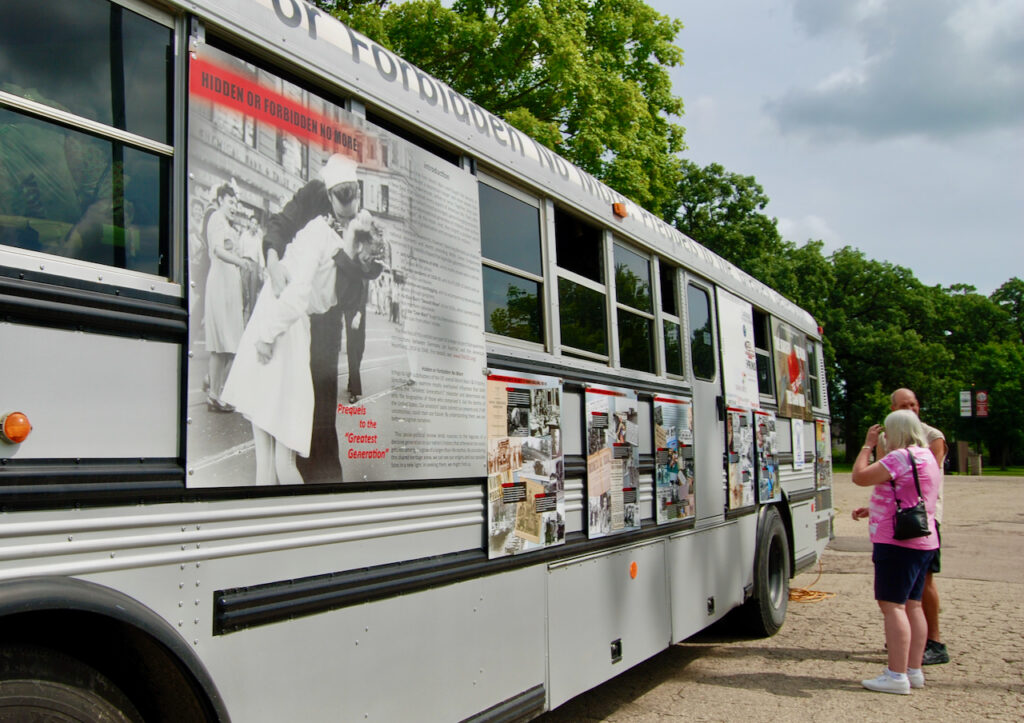
A reproduction of the iconic “kissing photo,” has a prominent place on the exterior of the bus. The image was made famous during World War II when in the excitement of learning the war was over, a sailer kissed a nurse in New York City’s Time Square. The two were strangers at the time.

Inter-library Loan Librarian Amy Christian, at left, and TRACES Center for History and Culture Executive Director Michael Luick-Thrams discuss aspects of history that are presented on and inside the bus.
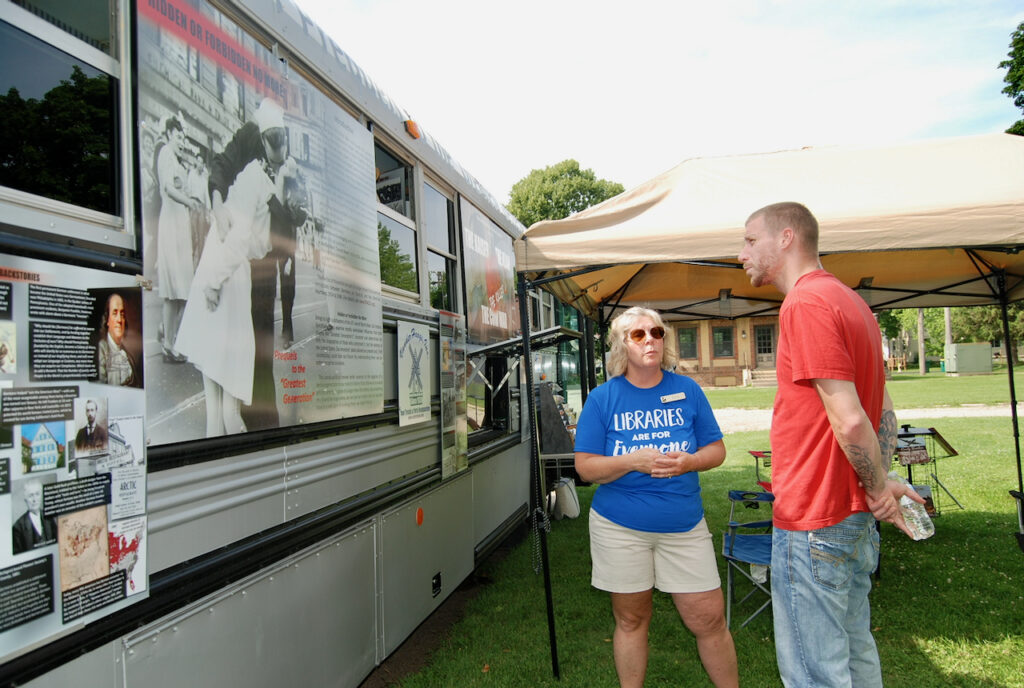
Inter-library Loan Librarian Amy Christian, at left, and Mike Daniels, Fort Atkinson, share intrigue while viewing an outside exhibit panel.

Grayson Fall, 3, climbs the stairs to board the BUS-eum. He is followed by family member Nevaeh Daniels.
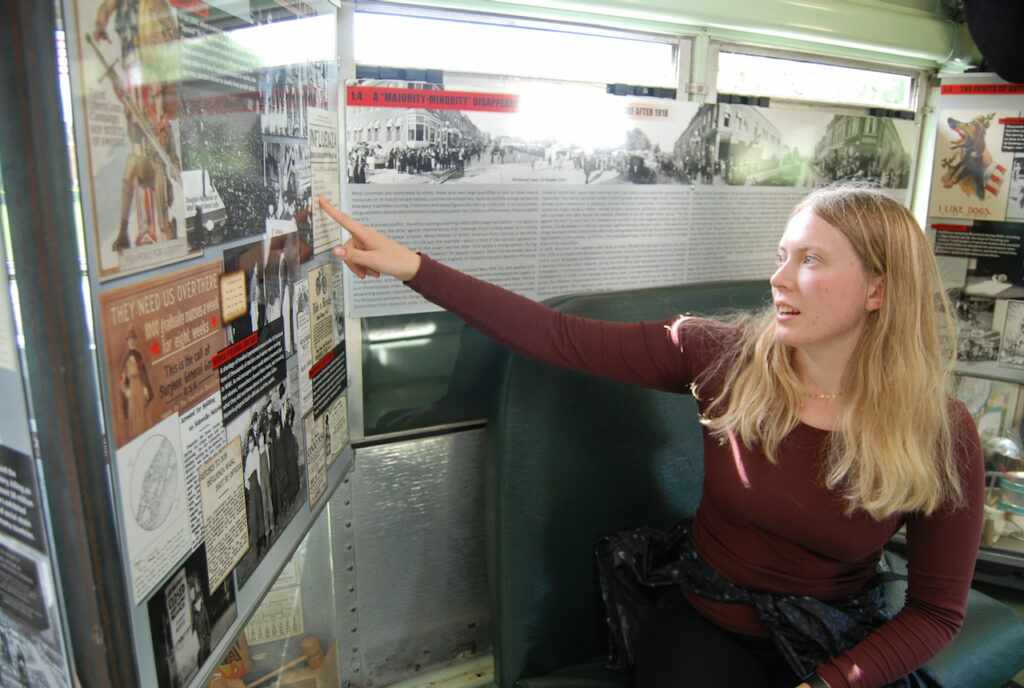
TRACES intern Melissa Grotch, 19, and a citizen of Germany, shares information about the pandemic of 1918. She said the panel is one of particular popularity with BUS-eum visitors as they look to make comparisons between the flu pandemic and the COVID-19 pandemic of modern day.
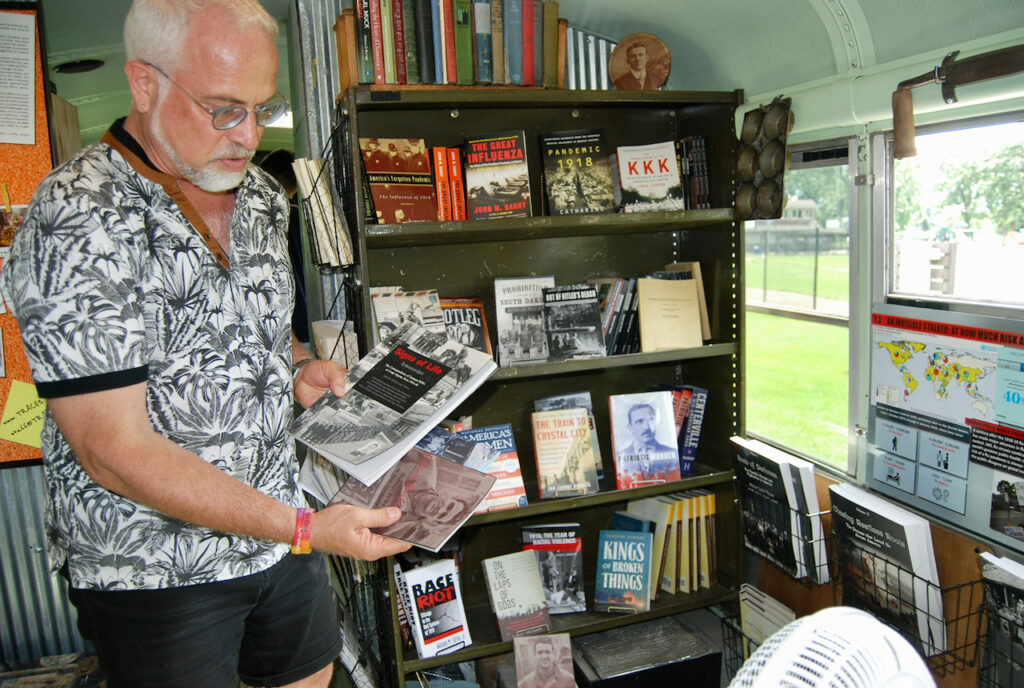
Michael Luick-Thrams, the executive director of two nonprofit groups: Iowa-based TRACES Center for History and Culture and Germany-based Haus der Spuren, points to a wealth of printed materials for purchase aboard the bus. The traveling museum is funded through donations and book sales.

A group gathers in Jones Park near the bus to discuss exhibits.
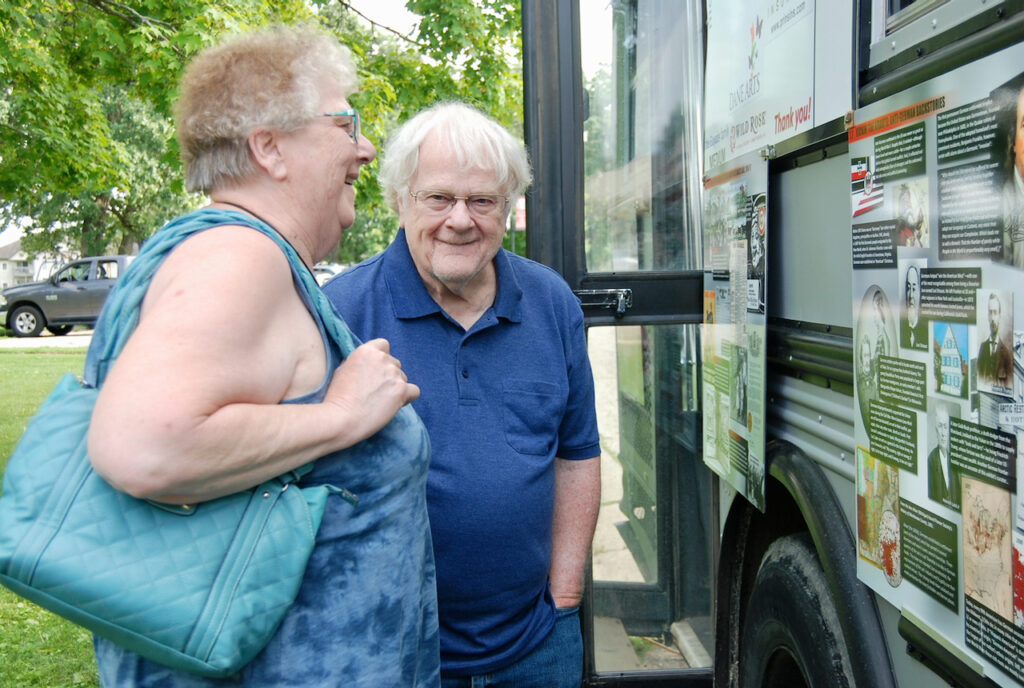
Nancy and Russ Amacher, both of Fort Atkinson, view an outside exhibit. Both have served as curators of the Cambridge Historic School Museum since 2000. They arrived for the obvious reason they said: they like history.
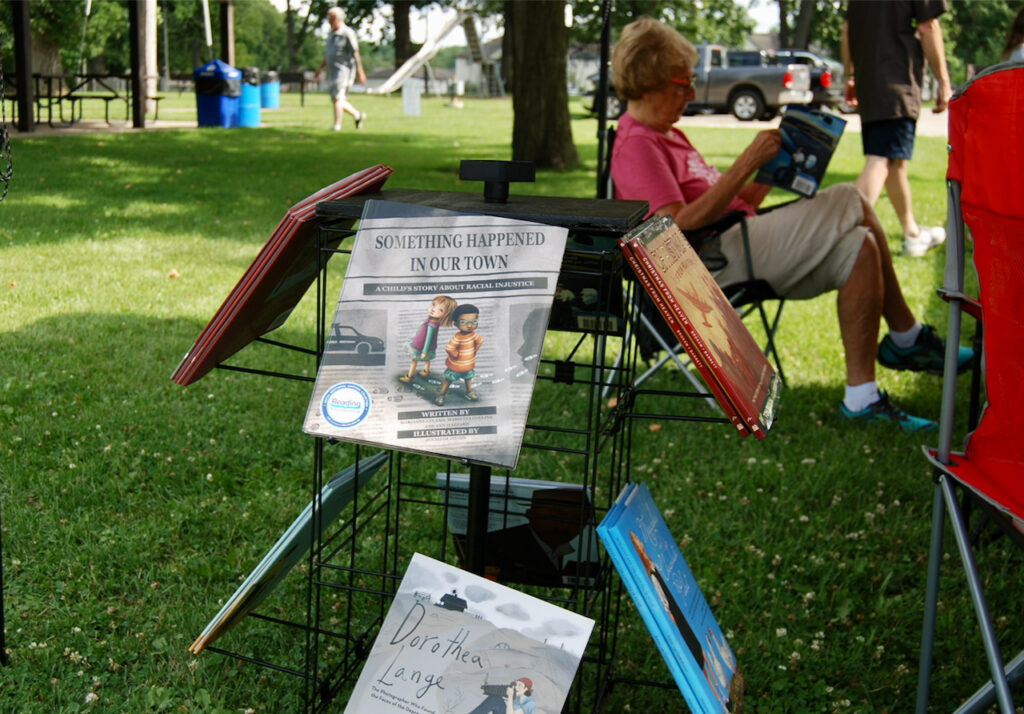
A rack of materials are available for reading underneath a canopy near the BUS-eum.
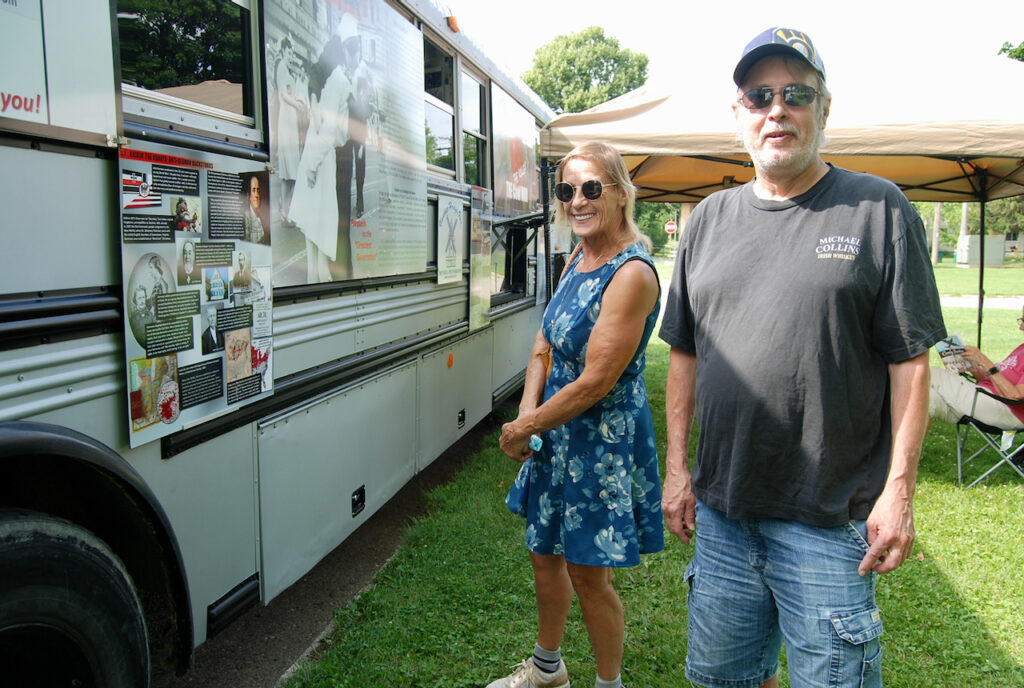
Dorna Boore, Cross Plains, at left, and Stan Ziegler, Waunakee, view panels on the bus. Having missed an opportunity to view the BUS-eum in Sun Prairie, the two said they drove to Fort Atkinson.

TRACES Center for History and Culture Executive Director Michael Luick-Thrams prepares to start a video.
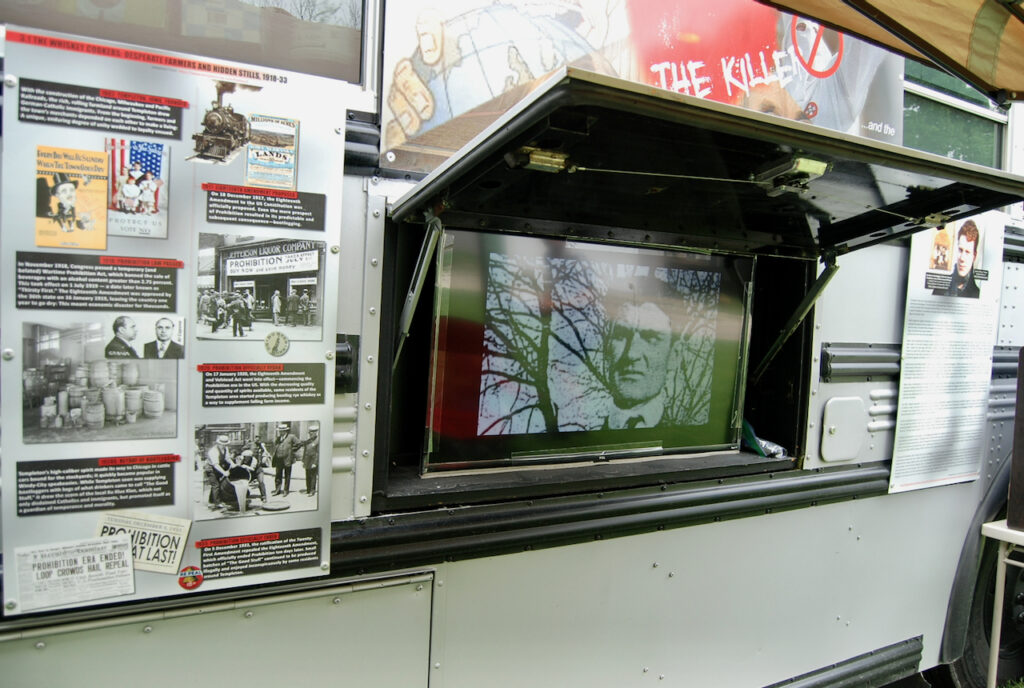
A video about bootlegging in Iowa is presented from an outside panel. Seating was provided under a canopy.
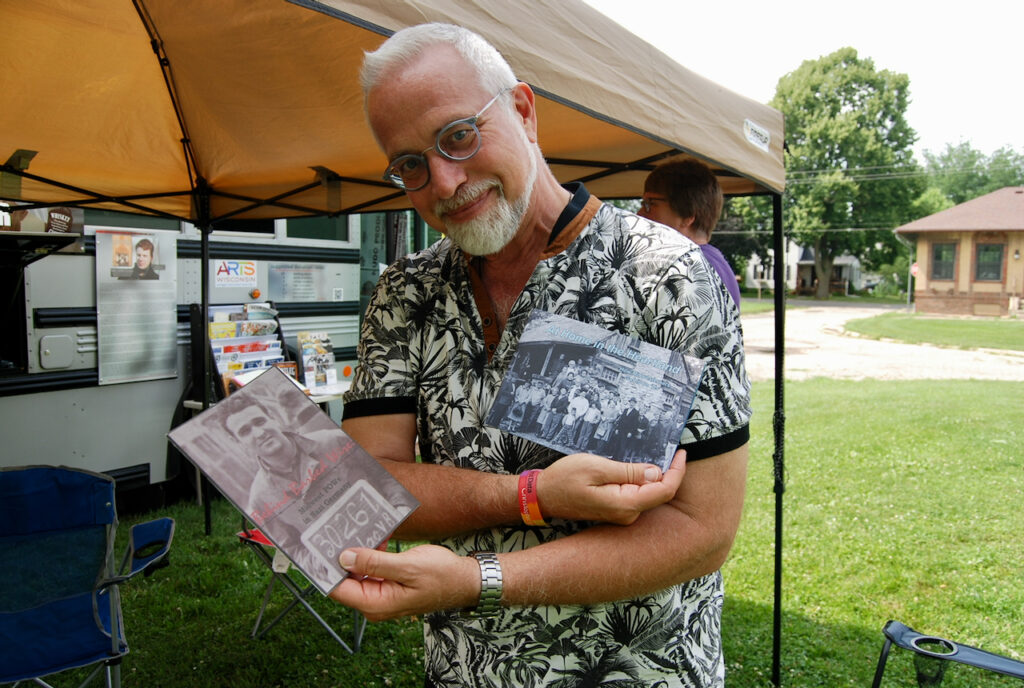
TRACES Center for History and Culture Executive Director Michael Luick-Thrams shares two books available for purchase found aboard the bus. They are “Midwest POWs in Nazi German,” at left, and “At Home in the Heartland.”

Inter-library Loan Librarian Amy Christian, at right, and TRACES Center for History and Culture Executive Director Michael Luick-Thrams stand near the BUS-eum on Thursday. The bus was sponsored in Jones Park by the Dwight Foster Public Library.

Some information about BUS-eum founder Michael Luick-Thrams.
Photos by Kim McDarison
Council approves operator responsibility component of alcohol-related municipal code
(Originally published July 21, 2021.)
By Kim McDarison
A municipal ordinance, mirroring state law and making licensed tavern operators responsible to ensure those consuming alcohol on their premises do not leave with an open container of alcohol, passed a fourth and final reading Tuesday.
The Fort Atkinson City Council, earlier this month, voted 4-1 to bring the ordinance back for a fourth reading before making its final decision. Councilman Brandon Housley cast the dissenting vote.
Typically, ordinances and amendments that change them undergo three readings before codification unless council opts to suspend its rules and approve language after a first or second reading.
The vote for a fourth reading came after several council members noted that they had been in conversations with business owners within the city, providing them with an understanding that more discussion was warranted.
During Tuesday’s meeting, Fort Atkinson Police Chief Adrian Bump addressed council, offering further explanation of what he saw as the need to create the ordinance and assurances that Fort Atkinson Police Department officers would use discretion when applying the new law enforcement tool.
“I just want to do a little bit better job of explaining why it is important to adopt an ordinance like this that is already a state law,” Bump said.
He offered several examples of city ordinances that, he said, “the city has adopted that are straight from Wisconsin criminal law or from Wisconsin laws.”
Bump said officers within the city write traffic tickets using code that was adopted from state statutes. The municipal ordinances allow those who have been issued a citation to appear before a municipal court and judge.
Another example, he said, is the system’s handling of OWI (operating a motor vehicle while intoxicated) first offense.
“It’s adopted under a city ordinance,” he said.
Other examples cited by Bump were criminal damage to property, theft, and disorderly conduct. All of those violations are adjudicated through city ordinances that have been adopted from state criminal law, he said.
“That’s why we want to have a more well-rounded set of ordinances that allows our officers to address issues locally so they go before our municipal judge and not before a circuit court judge. In adopting this ordinance, you take a criminal law and make it an ordinance. Therefore, if we do have to enforce this law, it’s not a criminal forfeiture or a violation of criminal law. It becomes a violation of city ordinance, which is a lot lower standard and a lot lower of a violation, and is better for the business; it’s better for our approach in our community policing,” Bump said, adding: “I hope you will look at it from a different perspective and I hope that takes away your nervousness of adopting this ordinance. It is something our officers can already enforce, but we don’t have the ability to enforce it at a municipal ordinance level, but only at a state level right now.”
Councilwoman Megan Hartwick thanked Bump for time taken in addressing council members’ concerns.
“I know I was certainly one of the ones who helped move this to a fourth reading; this was certainly something that I got a lot of public feedback on, but it was also something that I also sought feedback on because I wanted to get an understanding of how bar and restaurant owners were looking at this and what their concerns were,” she said.
Hartwick said after engaging in followup conversations with business owners since the council’s July 6 meeting, those conversations were “much different conversations.” She added: “I appreciate your taking the time to give probably lengthier explanations than you had initially planned on … but I certainly feel like the conversation and the feedback that I was getting are coming from a much different place now than they were initially when this information was put out. I appreciate you being patient with that process and I certainly appreciate your sharing the details you just gave out.”
Addressing Bump, Councilman Bruce Johnson, said: “I, too, liked your presentation tonight better than last time.”
Johnson asked: “A bar can be taken for this even if they are not complicit in the act?”
Bump responded by saying that bar operators would have to have knowledge of or be participatory in allowing open containers to leave their premise.
“It’s not something where we would go back to them if someone snuck it out,” he said.
Bump stressed what he described as the importance of maintaining the department’s positive relationships with the city’s bar and restaurant owners. For that reason, he said, “our goal is not to go after our establishment owners.”
Said Johnson: “I know in my youth I spent more time in a bar than I do in my old age, but I still have a lot of offerings from the bar owners.” He describing receiving invitations to provide a to-go cup.
“I could see where they (bar owners) would need a citation to stop that,” Johnson said, adding, conversely, “I see situations where they would have no clue that somebody put their beer up their coat sleeve and went out the door. I would hate to see them taken in for that.”
Said Bump: “Those things are going to be obvious. You know if they do a to-go cup, it’s pretty obvious that the bar or the bar employee assisted in that occurring. But if it’s one of their nice bar glasses or a bottle, we know that it was snuck out and was not with the knowledge of the establishment.”
Johnson asked: “Do you have a plan to issue more warnings to start out with?”
Bump responded by saying “yes.”
He continued: “It is not our goal to proactively go out and look for this violation … It’s more a matter of having the ability to address it when it comes to our attention. I see us giving lots of warnings like we currently do. We do bar checks sporadically, year-round, and sometimes we do run into violations that are on the fault of the bar or a restaurant. Since I’ve been here, for the last seven years, we have not written citations to bartenders or owners for these violations. We address it; we alter the behavior immediately, and then we move on with our day because we want to maintain that positive relationship that we have. But if we ever run into a problem where it’s continuous, repeated and our efforts to educate and to reduce the behavior are not working, we need to be able to step forward with enforcement action. And that’s really our goal.”
“I can be well on board with the idea that the slow learners need to get it figured out,” Johnson said.
Councilman Mason Becker said he appreciated the clarification brought by Bump.
“I think municipal judges are going to have a little bit more leeway and they are going to be able to recognize — not that I think this will happen — but if the police department were to be misapplying the law or if the judge felt that they were being overly punitive towards a local establishment, you know a local judge is going to have a lot more leeway in determining impressions versus a county judge,” Becker said.
“I think this makes sense and, as you (Bump) said, it’s state statute anyways, so I’m supportive of this ordinance,” Becker added.
Open intoxicants on city streets and sidewalks
A second proposed ordinance, making it unlawful to possess an open alcohol container on any public street, sidewalk or public right-of-way unless an appropriate permit or license has been granted by the city council — was tabled on July 6. The ordinance will be returned to council for further consideration in August, City Manager Rebecca Houseman LeMire said during Tuesday’s meeting.
An earlier story about the multipart alcohol consumption and public nuisance ordinance is found here: https://fortatkinsononline.com/alcohol-consumption-nuisance-ordinances-garner-varying-results/.
Banker Road territory annexation approved
(Originally published July 22, 2021.)
By Kim McDarison
With passage of a third reading Tuesday, the Fort Atkinson City Council gave final approval to the annexation of a 75-acre territory along Banker Road, making the territory officially part of the city of Fort Atkinson.
Several council members expressed their satisfaction in seeing the process come to completion, noting that many council members, staff and city managers, both current and former, had engaged with the project.
The city purchased the acreage in three parcels in 2019. The vacant land was formerly part of the town of Koshkonong.
During discussion, City Manager Rebecca Houseman LeMire offered a recap of some recent events, reminding council that officials from both the city and town had worked together to execute an intergovernmental agreement, which, she said, would “pave the way for us to annex this land without conflict with the town.”
Included within a memo to council on Tuesday was updated information, denoting a temporary zoning classification for the new territory of SR-2, single-family residential district 2, and a ward designation, placing the land within the city’s newly established Ward 11.
The temporary zoning classification, LeMire noted, was a “placeholder zoning district” until such time when the council determines an appropriate zoning based on an approved Neighborhood Plan which is still under development.
Looking at ward and district designations, LeMire said the city’s Ward 11 currently has no electors living within it.
Using current districting information, she said, the land falls within Jefferson County Supervisory District 23, State of Wisconsin Assembly District 33 and Senate District 11, and U.S. Congressional — House of Representatives District 5.
All of those districts could change, she said, because a redistricting process, based on 2020 Census data, will be occurring this fall.
“All we can do is use the information we have right now.” she said.
Expressing his thoughts about the final passage of the annexation, Councilman Mason Becker said: “This has been a long time coming for the city of Fort Atkinson. I’m extremely proud of the work that the previous city manager has done on this, the current city manager has done on this, city staff has done on this, and our entire city council, both past and current. So much work and research went into this. I want to remind the public again, because I think it doesn’t get talked about enough: this land had previously already been purchased by a contractor who was planning to develop this land, so it was going to be developed one way or the other. I think it’s much more beneficial for our community, and frankly as well as the surrounding townships, that that development happens within the city of Fort Atkinson, and I’m just so proud and happy that this is going forward and I hope that it will, indeed, offer many more options for people for both rental housing as well as owner-occupied housing. We know that’s an identified need in our city and our community and I’m really excited for this day and the possibilities that it’s going to bring going forward.”
Echoing those sentiments, Council President Chris Scherer said: “It’s exciting to note that we are able to share everything great that our community has built in Fort Atkinson with potentially more people by acquiring this land and annexing it in Fort, and it has been countless number of hours put in by city staff, as well as city council, to make this happen.”
As earlier reported by Fort Atkinson Online, Some history of the project follows:
In August of 2019, the Fort Atkinson City Council approved the purchase of 75 acres of land east of the high school. At the time, then-City Manager Matt Trebatoski wrote in a memo to council that the owner of the land “has been planning to annex the land into the city and develop it into a residential subdivision.”
That owner later expressed an interest in selling the land to the city would the city have interest, Trebatoski wrote.
After meeting in closed session, the city determined that acquiring the land was in the city’s best interest and noted its use for “current and future residential growth.”
“The land is immediately adjacent to the city and is designated as a Planned Neighborhood on the Future Land Use map of the Comprehensive Plan,” Trebatoski stated.
At the time, Trebatoski reported, a multifamily housing study conducted by Baker-Tilly showed vacancy rates in the city were as low as 0 to 0.5%, and there was a demand for an additional 200 housing units.
In addition, he wrote, the assessment identified the location of the Banker Road property, on the city’s northwest side, as an “ideal spot for housing due to its proximity to the high school, MATC, a grocery store, convenience store, healthcare, restaurants, and other service-oriented businesses,”
Trebatoski further cited a study produced by the Fiscal and Economic Research Center (FERC), a research branch housed at the University of Wisconsin-Whitewater, which indicated a need for new single-family residential lots over a 5-10 year period in order to keep up with demand and population projections.
“The city was actually in the process of planning for additional multifamily housing on the former Kmart site and had developed some concept plans that were well-received by the public, however that unfortunately fell through with U-Haul purchasing the site, compelling the city to look elsewhere for opportunities for residential growth,” Trebatoski wrote.
A previous story regarding the process undertaken by the city and the specifications of the intergovernmental agreement with the Town of Koshkonong is here: https://fortatkinsononline.com/annexation-of-banker-road-property-moves-toward-approval/.

The above graphic, as provided within the city council packet on Tuesday, shows the newly annexed territory into the city of Fort Atkinson.
City approves zoning change in advance of proposed True Storage development
(Originally published July 23, 2021.)
By Kim McDarison
The Fort Atkinson City Council Tuesday approved a first reading to amend the city’s official zoning map, paving the way for a new development under consideration at the former Shopko property.
City Engineer Andy Selle told council members that New Hampshire-based True Storage, a developer of controlled-climate storage units, has submitted a proposal with the city to redevelop land at 1425 Janesville Avenue, which is today the site of the former Shopko store.
The storage company has also submitted an application to change the property’s zoning from its current designation of Urban Mixed Use (UMU) to Planned Unit Development (PUD).
According to Selle, the change would allow the city to “employ flexibility in zoning when circumstances arise, such as the loss of a large retail provider.”
In exchange for allowing flexibility, Selle said, “the city must receive a substantial investment in return for this concession that bears long term benefits for the site and in concert with the Comprehensive Plan.”
The investment associated with the True Storage proposal would focus largely on aesthetic upgrades to the existing Shopko building and site, he said.
Submitted plans by the company also include the parcelling off of two out-lots along Janesville Avenue, making those spaces available for future development, he added.
“Discussions with True Storage have remained positive and focused on a mutually beneficial project on the site,” Selle said, adding that the council would next see at an upcoming meeting a submittal of a general development plan which would outline the specific elements of the project.
According to its website, True Storage converts “underutilized retail spaces into premier self-storage facilities, we provide a resource that contributes to the local tax base while meeting a need. Our goal is to provide high-quality storage space for people who care about their belongings and want to store in a safe and secure location.
“After construction is completed, True Storage turns operation of the facility over to one of several national companies. By providing expert operational leadership, our facilities consistently meet customer and community expectations for quality and service.”
During the meeting, Selle asked council to pass a first reading of the ordinance to change the zoning map to accommodate the development and bring it forward for a second reading in August. At that time, he noted, city staff and True Storage would likely request council waive a third reading and approve the zoning change to help keep the project on schedule. Final approval could be made contingent upon the successful approval of a certified survey map (CSM) of the project, showing the existing Shopko parcel broken into three distinct lots. A CSM was anticipated to come before council in late August or September, Selle said.
Materials included within the council packet show the two out-lots, designated 2 and 3, situated along Janesville Avenue in front of the existing Shopko building. Each out-lot is roughly an acre. A larger 4-acre lot will be kept with the existing building.
Also included is a 24-slide conversion overview submitted by the company, which includes plans for the Fort Atkinson site and photographs of other sites converted by the company in New Hampshire, Massachusetts, Ohio, Indiana, Florida and Michigan.
Within the overview, the company noted that the majority of the facilities it converts include indoor state-of-the-art climate-controlled units, built for clients “who value security, convenience and appearance above all else.”
Looking at marketing trends, including those attributable to the COVID-19 pandemic, information within the overview notes that the company makes storage convenient and caters to families who may be clearing out space for relatives to move in, students home from college, and struggling businesses in need of space to store inventory as they downsize or pause operation, among others.
“We’ve had great success in positioning these facilities within major retail and flex corridors, offering prospective tenants the direct access they need, while maintaining a curb appeal that meshes well with the existing retail landscape,” the overview stated.
Under a heading of “The Future of Big-Box Retail and Shopping Centers,” the company noted:
- 25% of U.S. malls are projected to close within the next 3-5 years, citing CNBC as its source.
- Big-box retail and shopping center developers had up until now been courting entertainment companies … and large fitness facilities to lesson their dependance on shrinking anchor tenants (defined as companies utilizing over 50,000 square feet of space), but those businesses have also not fared well since the pandemic.
- Office conversions such as executive suites and call centers were also popular development choices before COVID, but due to the growing trend of working from home, the industry is on pause with many companies shrinking their office footprint and reducing overhead costs.
Space converted by the company in other states include a mall, a former Dick’s Sporting Goods store, several former Toys R Us stores, and a former Super Kmart.

The former Shopko building, 1425 Janesville Avenue, as it appears today. Kim McDarison photo.
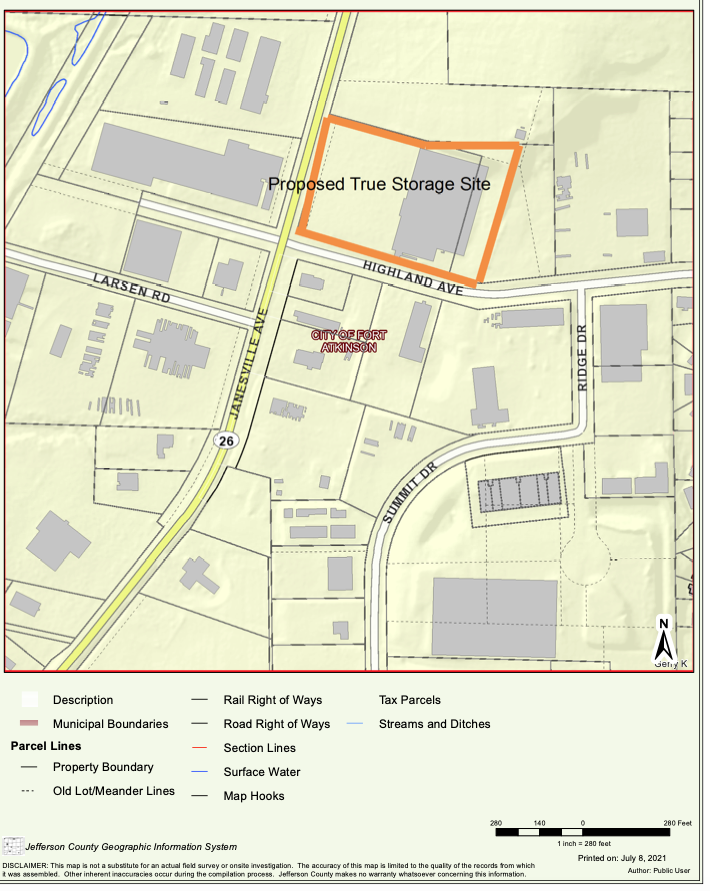
A project location map.
Supplied graphic.

Proposed site plan showing two out-lots. Supplied graphic.

Artist’s rendition supplied by True Storage showing a redeveloped building.

An interior depiction shared by True Storage showing climate-controlled storage units.
Sorrels donate Black Hawk War artifact to Hoard Museum; open house Aug. 13
(Originally published July 26, 2021.)
Bill and Julie Sorrel, along with children Joseph, Kim and Susan, have given a unique piece of local history to the Hoard Historical Museum in Fort Atkinson.
The artifact, an 1809 Prussian-made bayonet, was found by Bill on their farm in Cold Spring in 1982 while he was removing a fallen tree along Whitewater Creek.
The metal bayonet, 22 inches in length, is slim with a point on one end and a circular piece on the other end to allow it to be placed on the tip of a musket.
Uncertain of exactly what they had found, Julie Sorrel brought the bayonet to the Hoard Historical Museum for help with identifying it. She was in luck, for on that day in 1982, Crawford Thayer, a well-known local expert on the Black Hawk War, was easily able to identify their find.
Julie recalled: “Crawford was sitting in the museum talking with other people. I showed them what we had found and that I didn’t know exactly was it was.
“Crawford said, ‘That’s a bayonet from the Black Hawk War and since you found it where you did, it was lost on July 7, 1832.’ I was shocked that he could be so specific.”
Thayer could give such a specific answer because he wrote the book on the Black Hawk War. In fact, he wrote three books on the Black Hawk War: “Hunting A Shadow,” “The Battle of Wisconsin Heights” and “Massacre at Bad Axe.” All three are available for sale in the museum’s gift shop.
His trilogy uses official correspondence and memoirs to trace the war in a day-to-day format, with Thayer editing the information for clarity and further details.
The section on July 7, 1832, quotes John Allen Wakefield, writing his history of the war two years after it happened, noting that on July 7, 1832, near the community of Cold Spring, Wisconsin: “General Atkinson took up the line of march, still up the river, and made shift to cross one branch of this dismal stream, White Water (sic); but it was with much difficulty as many a horse mired down, and threw his rider into the water, where he and his gun were literally buried in mud and water …”
Further reports of the date from other sources all have the same theme: they were in the vicinity of Cold Spring, became caught in the swamps around the Bark River and Whitewater Creek, and lost large amounts of gear and supplies.
The Sorrel family farm was outside of Cold Spring along Whitewater Creek. Thayer simply lined up the location of where the item was found and the most reasonable explanation for how a pre-Civil War bayonet ended up along the riverbank.
The Sorrel family, proud of what they had found and its importance to local and national history, treasured the bayonet for years. In 2020, Bill and Julie Sorrel sold the farm and, as part of relocating, gave the bayonet to the Hoard Historical Museum.
“We are always honored to be entrusted with a piece of our history,” museum director Merrilee Lee said. “The Sorrel family’s gift of the bayonet tells so many stories: the story of the Black Hawk War, the story of the average people caught up in the fight, and the story of Bill finding it in the mud, exactly 150 years after it was lost. The museum will add this bayonet to the Lincoln Era Library exhibit to expand the local story of the Black Hawk War.”
Lee continued: “The Sorrel family is excited to share their delight at giving this item to the museum.”
To celebrate their gift, the Sorrel family will host an open house from 4:30 to 6:30 p.m. on Friday, August 13. The open house is free to attend and the family will provide light refreshments.
The open house will be held at the Hoard Historical Museum, 401 Whitewater Ave., Fort Atkinson, WI 53538.

The metal bayonet, pictured, is 22 inches in length, slim with a point on one end and a circular piece on the other end to allow it to be placed on the tip of a musket. The artifact was found on a farm in Cold Spring along Whitewater Creek. Photo courtesy of the Hoard Historical Museum.
One resident confirmed dead after a house explodes in Rome
(Originally published July 27, 2021.)
By Kim McDarison
One person is confirmed dead after a home exploded in Rome Tuesday afternoon.
Speaking on-camera to WISN 12 News reporters during a press conference, officials, including Fire Chief Brad Bowen of the Western Lakes Fire District released details about the explosion, including confirmation that of the two people known to be living in the home, one was found deceased in the rubble.
Information shared by the officials was posted by WISN 12 as a video on Facebook. The full video is found here: https://www.facebook.com/wisn12/videos/1718394551694355.
Sharing a timeline of events, Bowen, flanked by a representative of the Jefferson County Sheriff’s Office and a firefighter with the Rome Fire Department, said that the explosion occurred in the N3000 block of W. Water Street, in the community of Rome.
According to Bowen, at approximately 1:48 p.m., Jefferson County dispatch received a call reporting the house explosion.
Upon their arrival, he said, fire crews found a debris field and began extinguishing the associated fire. Deputies from the Jefferson County Sheriff’s Office arrived to secure the scene. The fire was reported to have been extinguished at 3:56 p.m. Videos of the debris field and scene of the fire posted on Facebook show scattered debris and a charred foundation where earlier a home once stood.
Bowen noted that the office of the State Fire Marshal was contacted and arrived on scene to begin its investigation into a cause of the explosion.
Responding to questions about a possible cause, Bowen said indications at this scene are similar to those found in previous gas explosions, but until an investigation is completed, the cause of the explosion remains unknown.
During the press conference, officials said information about the deceased individual was being withheld pending notification of family members and “the continuation of the investigation itself.”
Officials confirmed that several fire and EMS agencies from surrounding communities responded to calls for mutual aid, including units from Johnson Creek, Watertown, Ixonia, Western Lakes District, Fort Atkinson, Whitewater, Sullivan, Palmyra, and Lake Country Fire, among others.
Officials noted that a safety and welfare check in the area had been completed by knocking on the doors of residences in the surrounding area to ensure that everyone was safe.
“No other injuries to people within the neighborhood were discovered. However, officials reported, other buildings in the area have sustained structural damage, “such as broken windows and outside damage to the homes that are located adjacent to the affected property,” one official said.
A square mile around the home was evacuated, officials said, “in case of any other issues before the gas was turned off to the home and to the area.”
Everyone else in town is accounted for, officials confirmed.
Bowen said We Energies and investigators would work together to determine if and how much gas may have leaked into the home.
After the explosion, some of the area’s roads were described as heavy with debris, with roads in the area remaining closed as investigators looked at the evidence. Roads would open as investigators allowed with some roads remaining closed to allow We Energies crews to restring electrical wires, officials said.
Officials said crews would work as fast as possible to get roads open and traffic back to normal.
At approximately 6:30 p.m. Tuesday, We Energies was reporting that about 73 customers had been left without power starting at approximately 2 p.m. Crews were working to restore power to the area with an estimated restoration time of 9 p.m.
Amy Jahns, a spokesperson with We Energies, confirmed at approximately 8 p.m. Tuesday that the company’s crews were still unable to access the area.
“We are still not able to access our equipment to restore power at this time,” she said, adding that crews were waiting to be cleared by authorities to enter the area.
An estimated restoration time of power to the homes in the area was unavailable, she said, because the company did not yet know the condition of its equipment.
Fort Atkinson Fire Department Division Chief Mike Lawrence said that assets from the Fort Atkinson Fire Department were dispatched to the explosion site at approximately 1:57 p.m. The department sent a tender, which he defined as a tank that holds water, and an engine. All of the department’s units were back at the station by 5 p.m., he said.

Fort Atkinson Fire Department, file photo/Fort Atkinson Online.
Wildermuth Award, Support Staff Award for Excellence in Education nominees announced
(Originally published July 29, 2021.)
The School District of Fort Atkinson will present the 36th annual Wildermuth Award for Excellence in Education when teachers gather for their fall convocation Thursday, Aug. 26.
Also to be announced that day will be the recipient of the Support Staff Award for Excellence in Education.
The Wildermuth Award was created to recognize and reward School District of Fort Atkinson staff members — from teachers, librarians and guidance counselors, to school psychologists and any other person working in education — for exemplary work.
Funded by the board of education, Fort Atkinson Education Association and Fort Atkinson Community Foundation, the award is given in memory of Ron Wildermuth, a longtime teacher and director of instruction in the district who died in a motorcycle crash at the beginning of the 1986-87 school year.
Due to Wildermuth’s involvement in the teacher orientation program, the award is presented at the annual teacher gathering at the start of the school year.
The names of some of this year’s Wildermuth Award and Support Staff Award for Excellence in Education nominees have been released throughout the month of July, with several more to be released in August.
Following are the names of nominees that have been released in July.
Wildermuth Award for Excellence in Education
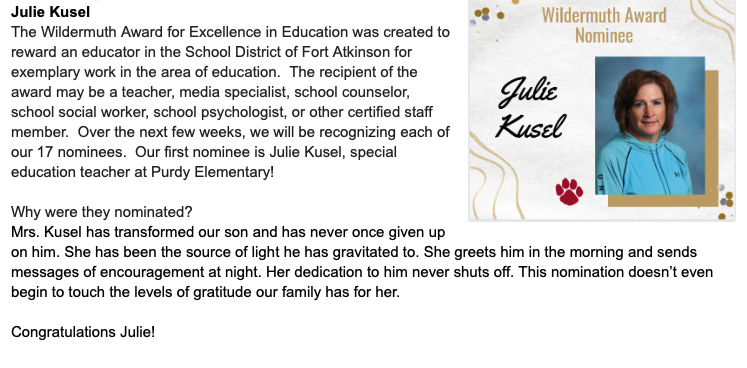
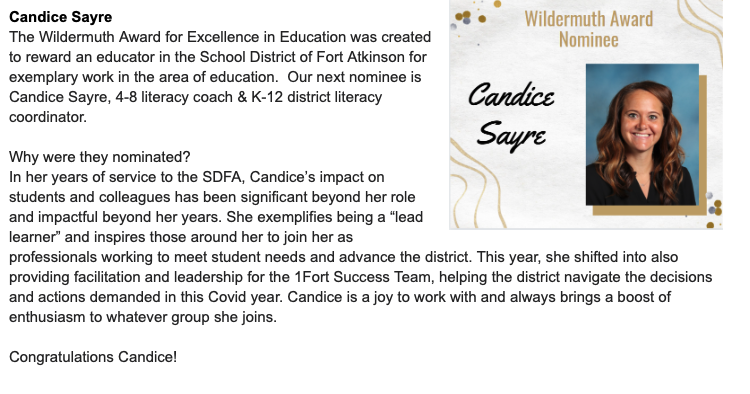

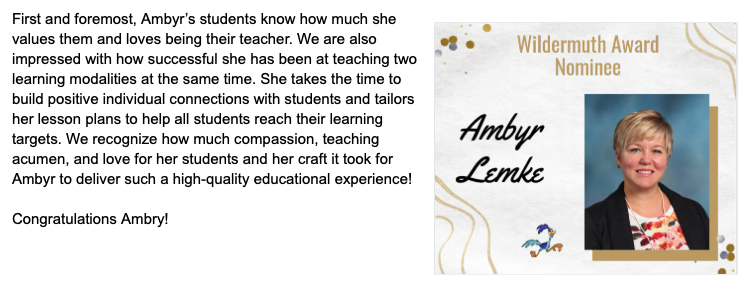

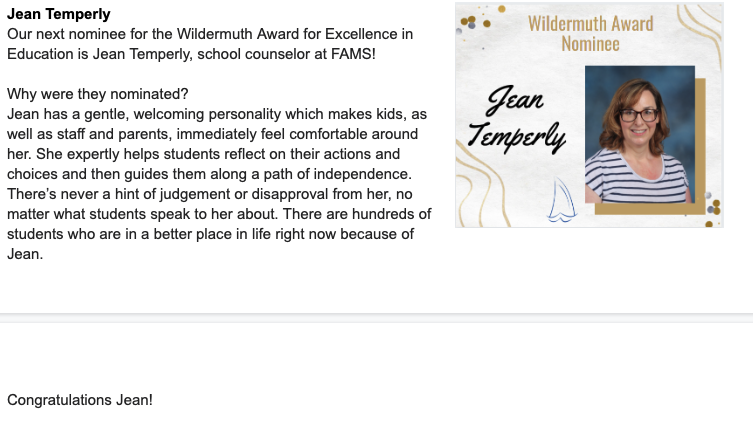

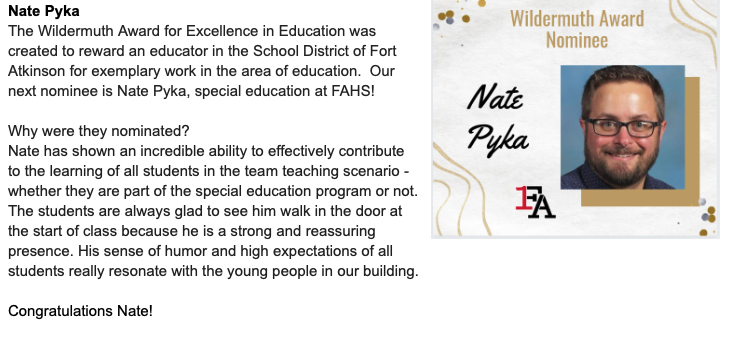
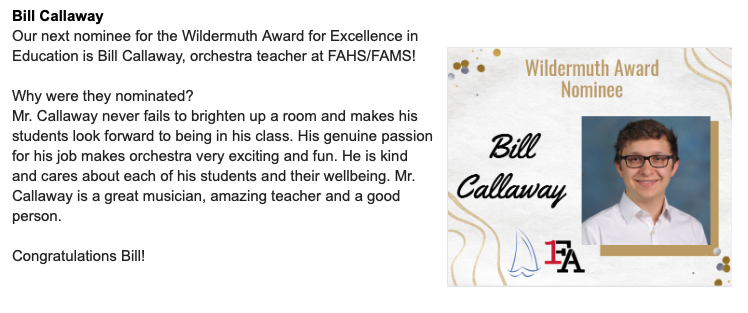

Support Staff Award for Excellence in Education








Danny Fairfield




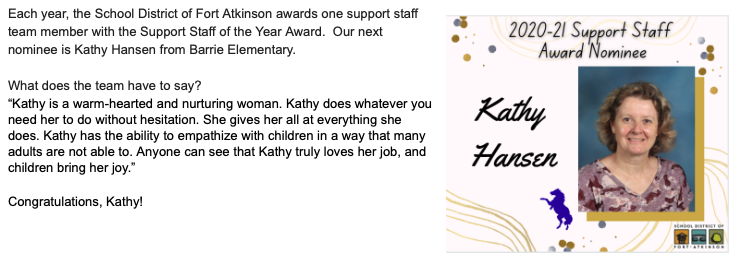
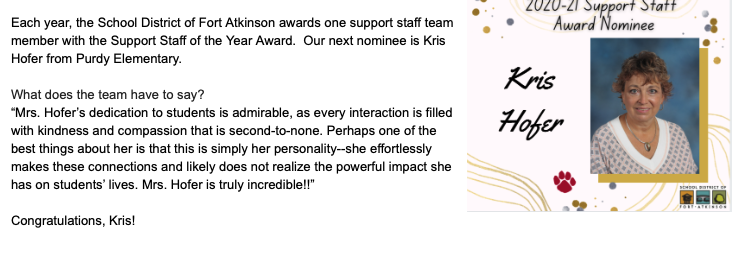



Nominee photos and information panels supplied.
The names of more nominees will be released in August.
Hoard Museum new guardian of Fort’s 1901 water tower; tours slated
(Originally published July 29, 2021.)
Editor’s note: the following story has been submitted by the Hoard Historical Museum.
For more than 120 years, it has stood as a sentinel over the city of Fort Atkinson. It’s survived bulging walls, leaky tanks and student graffiti, and has been threatened with deconstruction. It has been carefully preserved for roughly two decades and now it has a new steward to guard it for the future.
After all, it would be difficult to imagine the city of Fort Atkinson without the iconic 1901 Historic Water Tower.
Recently, the Historic Preservation Commission (HPC), which had been responsible for protecting the water tower, voted to turn over responsibilities for the tower to the Hoard Historical Museum, located just over a block from the water tower on South Fourth Street East.
Built in 1901 to serve as the first municipal water source, the water tower stands at the corner of South Fourth Street East and High Street. The tower rose above the messy politics that surrounded its beginnings.
At the turn of the 20th century, Fort Atkinson citizens wanted a municipal water source that a tower like this would provide. Prior to the water tower, households in Fort Atkinson had their own wells for water and outhouses for waste removal. Due to the potential proximity of the wells and outhouses to each other, there was a huge risk of wells becoming contaminated, which sometimes led to outbreaks of diseases such as cholera and typhoid. Water towers did away with the need for private wells and provided a clean water source.
The mayor at the time did not see the need for the tower and campaigned against it. And after a fairly nasty political referendum, the citizens voted to construct the water tower over the wishes of the mayor, who would have preferred a new bridge. In fact, the referendum passed by a 6-1 margin, a tremendous margin by any definition. The townspeople had clearly spoken in favor of the tower.
Built of locally and regionally produced Cream City bricks, the conical tower is 112 feet tall. The unique-to-this-area, cream-colored bricks rise in a column that is 77 feet in the air; the metal water tank makes up the last several feet.
Fort Atkinson’s tower remained in service until 1989. During its time, it was often the victim of senior pranks by high school students attending class at the nearby Fort Atkinson High School (now the Fort Atkinson Middle School). The remnants of some of the pranks are found in the painted graffiti on the interior of the water tower.
After it was taken out of service, the tower remained standing. In the early 1990s, the City of Fort Atkinson budgeted funds to remove the tower, which horrified local citizens who valued it. A committee was formed to save the water tower and funds were raised to preserve it.
After several years of work, the tower was opened to the public and visitors were able to climb the newly installed metal steps to the top of the tower.
The Fort Atkinson Historical Preservation Commission, which had been very active in preserving the tower, took on the responsibilities of scheduling tours, coordinating volunteers and monitoring any maintenance needs for the tower.
Under HPC’s stewardship, thousands of visitors were able to experience the tower by climbing to the top and enjoying the impressive view. But now, the Hoard Historical Museum will be in charge of the water tower.
For both HPC and the staff at the Hoard Historical Museum, this is an obvious transition.
“HPC has fulfilled their responsibilities for the water tower by working so hard to preserve it,” said Merrilee Lee, director of the Hoard Historical Museum. “The Hoard Historical Museum’s mission is to preserve, protect and promote our local history. Transferring the water tower responsibilities to the Museum fits nicely within our mission and is a logical move for both organizations.”
Julia Ince, president of the Historic Preservation Commission, agreed.
“We’ve been honored to be responsible for the water tower until now,” she said. “Multiple past members of HPC have been vital to the preservation of the tower. However, HPC now has other preservation goals and we’re pleased that the Hoard Historical Museum is willing to accept responsibility for the water tower. It’s in good hands.”
The 1901 Historic Water Tower still is owned by the City of Fort Atkinson. Both the Historic Preservation Commission and the Hoard Historical Museum are part of the City of Fort Atkinson. There will be no change in funding for the tower’s maintenance.
The Fort Atkinson Community Foundation maintains an account dedicated to the tower’s maintenance; persons may contact the foundation if interested in making a donation toward the tower’s ongoing maintenance.
“Not only are we happy to accept the responsibility for the water tower, we’re also excited to announce that the 1901 Historic Water Tower will be open for tours this year,” Lee said.
The tower was not open last year due to COVID-19, but it will be open for tours on two Saturdays, Aug. 7 and Sept. 4, from 10 a.m. to noon.
The tour is free, but donations are gratefully accepted. No reservations are required for these public tours.
There are limitations to touring the water tower. It is not handicap-accessible, individuals under 48 inches are not able to climb the tower and tours may be canceled due to inclement weather. Please contact the Hoard Historical Museum at (920) 563-7769 for more information.
“We are also very glad that two longtime volunteers for the water tower and Hoard Museum friends, Greg Misfeldt and Harriet Scherer, have agreed to be the volunteer coordinators for the tower,” Lee said. “They’ll be helping schedule volunteers for tours and ensuring that everything is set for tours.
“We’re pleased to continue working with them as well as all the other wonderful water tower volunteers,” she added.
If interested in potentially being a tour docent for the tower, please contact the Hoard Historical Museum at info@hoardmuseum.org or 920-563-7769.
Julia Ince, HPC president, stated, “In some ways, the Water Tower is a physical symbol of the community’s ability to collaborate. It was built due to the community’s wish for a municipal water source. It was saved due to the community’s desire to preserve it. It perseveres through the community’s support. Just think what the future holds for the tower with the community’s ability to rally behind it?”
The Hoard Historical Museum is open Tuesday through Saturday, 9:30 a.m. to 4:30 p.m.
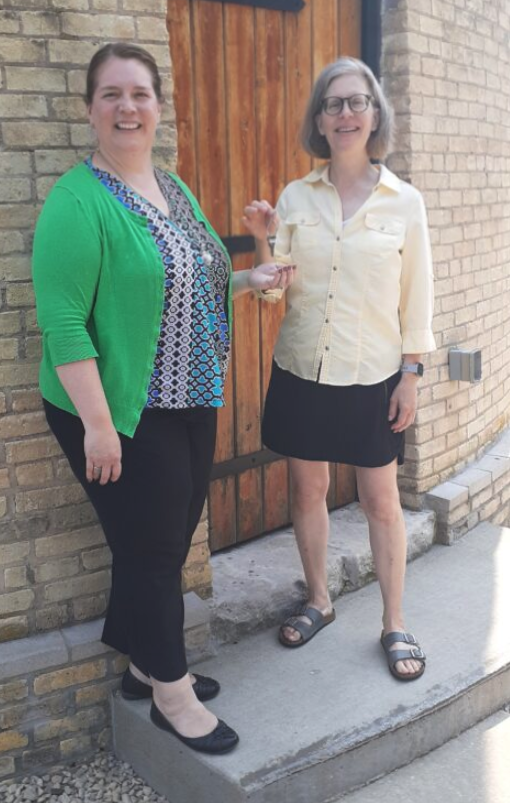
Julia Ince, president of the Fort Atkinson Historic Preservation Commission, at right, hands the keys to the 1901 Historic Water Tower to Merrilee Lee, director of the Hoard Historical Museum. The water tower will be open for public touring on two Saturdays, Aug. 7 and Sept. 4, from 10 a.m. to noon. For more information, contact the Hoard Historical Museum, 401 Whitewater Ave., Fort Atkinson, at (920) 563-7769 or info@hoardmuseum.org. Photo courtesy of the Hoard Historical Museum.
‘Process through the court system has been long and emotional,’ says owner of deceased pup
(Originally published Aug. 2, 2021.)
By Kim McDarison
When Lindsey Davidson picked up her dog, “Cooper’s” ashes on Friday, she said it felt like she received some closure, but, she said, real closure would come with the prosecution of a Fort Atkinson dog trainer whom, she alleges, is responsible for the death of her dog.
Cooper, an 8-month-old husky, died while in the care of Tammy S. Flemming, the owner of Fort Atkinson-based dog training facility Herman’s Hangout, which was operating from 54 E. Rockwell Ave. Cooper died on Sept. 10, 2020, after what Flemming has claimed in a criminal complaint was a training session which ended unexpectedly with a tragic result.
What happened to Cooper?
Talking with Fort Atkinson Online by phone, Davidson recalled events leading up to Sept. 10, 2020.
Describing herself as a parent of four “fur babies,” Davidson, Janesville, said she began looking for a trainer after Cooper began tugging on his leash.
She hoped, through training, she said, that ultimately Cooper would be obedient both on and off of a leash. His pulling gave her concern, she said, that he might find his way into a road.
“I wanted a safe dog,” she said.
Flemming came recommended through a friend, Davidson said.
“She was excited about how well-behaved her dog was even off of a leash. I wanted that, too,” Davidson said, adding that as a former nursing home employee, she hoped Cooper could develop skills as a service dog. She envisioned visiting the nursing home with Cooper.
“He was such a smart dog,” she said.
Davidson said she was aware that Flemming used choke collars during training, but, she said, it was her understanding that the collar was only used while teaching dogs not to pull on a leash and it would be used skillfully.
“I didn’t know that much about them. I didn’t know there could be this outcome if it was not used properly,” she said.
When she dropped Cooper off for training, Davidson said, she had some reservations about the appearance of the facility. “I didn’t think it looked the greatest,” she said, but she trusted the trainer. “She seemed to know what she was talking about,” Davidson said.
Davidson said she told Flemming that she wanted Cooper to learn how to walk on a leash without pulling.
The training course in which Cooper was enrolled provided that he stay at the training facility for a period of five weeks.
Two weeks after dropping him off, Davidson said, she came for a visit and was allowed to take Cooper for a walk.
“He walked perfect,” Davidson said.
During her visit, she said, she was instructed not to touch Cooper’s neck. She said she didn’t understand why, but wanted to respect his training.
Davidson said her visit with Cooper was short, about a half an hour. Her visit was part of his training, and considered a reward, she was told, and the half-hour was the full length of the reward he was allowed, she said.
Davidson followed the instructions she was given, she said. Of Flemming, she said: “I trusted her.”
In hindsight, she said, she wished she’d asked more questions.
On the day Cooper passed away, Davidson said, she arrived at the facility to collect him for a home visit. He had completed four of his five weeks of training.
“I was told I couldn’t see him because he was misbehaving,” she said.
Davidson described remorse over losing the home time with her pup.
“I looked forward to the home visit,” Davidson said, describing a very emotional drive home after leaving the facility.
Not feeling well, she said, she went to bed. A message was left on her answering machine. When she woke, sometime after midnight, she listened to the voicemail.
It was from Flemming, she said, informing her that Cooper, while in the process of being moved between place blocks — a training tool that looks like a platform — one of his back legs went limp and he fell to the ground.
After hearing the message, Davidson said she called Flemming, and Flemming worked to explain the earlier events. At one point, Davidson said, she asked if her dog was still alive.
She was informed that he was not.
Upon hearing the news, Davidson said she drove to the training facility. She called the Fort Atkinson Police Department for help.
An officer met her at the facility.
Davidson said Flemming admitted that she had “messed up,” and put “too much pressure” on Cooper during his training.
Flemming retrieved Cooper’s body from a freezer and placed it on a couch.
Davidson said she collected the body and brought it to the emergency veterinary hospital in Madison.
His body was next taken to the lab for a necropsy the results of which were reported on Sept. 25.
According to the criminal complaint submitted to the Jefferson County Circuit Court by the Fort Atkinson Police Department, Dr. Philip N. Bochsler, a veterinarian working with the Wisconsin Veterinary Diagnostic Lab at the University of Wisconsin, performed a necropsy on Cooper. In the doctor’s report, it was noted that the “findings in this case are consistent with strangulation.”
Marks around Cooper’s neck, the report stated, were “consistent with the presence of a tight, constricting band or ligature, such as a sliding loop or rope, cord, chain or a pinch/choke collar.”
According to the complaint, police spoke with Davidson on Sept. 11, at which time she said that Flemming had told her that she had “pushed the dog too far and that she (the defendant) messed up.”
Police also interviewed Flemming.
According to the complaint, Flemming said at approximately 10:30 p.m. she had been training Cooper with a choker chain. She was using a method called “release of pressure,” which, the complaint states, means the dog will decide how much pressure is applied to achieve compliance.”
Flemming said it was common for dogs to yelp or react to the chain. “That is when they know to relieve the pressure,” Flemming told police according to the complaint.
Cooper had been in training with Flemming for four weeks on the night that he died. He had been doing very well on the choker chain, but the complaint noted, he was starting to engage in a “power struggle” with Flemming, and had begun “fighting” her by thrashing his head back and forth. The activity caused Flemming to introduce more pressure on the chain, the complaint stated.
On the night that he died, the complaint noted, Flemming had used a command that Cooper had successfully responded to in the past to gain compliance and stop the thrashing. Cooper kept fighting, according to the complaint, and Flemming noticed the dog’s back legs were becoming weak, and then she released the chain.
Flemming said she observed Cooper as he began to breathe shallow and slow. She gave the dog mouth-to-mouth resuscitation and chest compressions. She also thought to “grab some honey,” which, the complaint noted, she was aware could be used with some dogs experiencing low blood sugar.
“Her attempts to save Cooper were unsuccessful and Cooper died,” the complaint stated.
“Tammy stated she did not recognize that Cooper was in trouble and not fighting with her soon enough,” the complaint continued.
According to the complaint, Flemming was asked what she believed happened to Cooper. She responded, by saying “she believed he had an adrenaline rush and was possibly over exerted as she did not recognize it soon enough…” the complaint reported.
Court proceedings: from misdemeanor to felony
According to court records, a criminal complaint in the matter was filed with the Jefferson County Circuit Court on Oct. 28, 2020.
After Cooper died, court records show, Flemming was charged by the state with intentionally mistreating animals, a misdemeanor crime.
On Oct. 29, 2020, Flemming was issued a summons ordering her to make an initial appearance within the Jefferson County Circuit Court on Nov. 30, 2020, at which time, court documents state, the court informed Flemming that the charges against her were being upgraded to that of a felony. A process was underway to close the misdemeanor case against her and open one with felony charges.
A signature bond of $1,000 was ordered for Flemming with the conditions that she not engage in any type of animal training and boarding, and she not care for any animals that she did not own.
Flemming was ordered by the court to report to the Jefferson County Sheriff’s Office for booking and to the Jefferson County Clerk of Courts Office to sign the signature bond on Dec. 4, 2020.
Failure to appear, the court stated, would bring a warrant for her arrest.
In December of 2020, the court ordered a public defender for Flemming, appointing Joseph M. Ricker. Also in December, Flemming informed the court of a change of address, from 54 E. Rockwell Ave., the location from which the canine training and boarding facility was operated, to another address within Fort Atkinson.
In January of 2021, during a status conference, Flemming asked the court if she could “represent herself.” Court documents state that the court found Flemming “non responsive to the court’s questioning,” adding “the court finds that Ms. Flemming does not have the capacity to represent herself.”
During a motion hearing on March 25, Flemming verified for the court her wishes to represent herself, presenting a letter she wrote asking for the discharge of her court appointed public defender. After the court advised Flemming of her right to counsel, Flemming waived her right and again requested the discharge of her public defender. The court granted the request.
During the hearing, Davidson’s attorney, Dan Jardine, noted that he was appearing on behalf of two clients: Davidson, the named victim in the case, and “a separate person C.P.” according to court documents.
During the March hearing, the court officially dismissed the initial misdemeanor case against Flemming and opened the state’s felony case. The conditions of the earlier ordered signature bond remained in place.
A preliminary hearing for the felony case was scheduled for April 13, 2021.
The felony case, filed by the state against Flemming, has a filing date of Nov. 19, 2020.
According to the criminal complaint, filed on the same day, the Fort Atkinson Police Department recommended charges of one count of mistreatment of animals, which the complaint stated, was a class I Felony, carrying, upon conviction, a fine of up to $10,000 or imprisonment for not more than three years, or both.
As a felony case, charges against Flemming are filed on the Wisconsin Circuit Court Access website as “mistreatment of animals/cause death.”
Flemming has entered a plea of not guilty to the charges.
Bench warrant and judgement issued
During an arraignment hearing scheduled for June 14, court documents note that Flemming did not appear. The court ordered a bench warrant, finding the signature bond to be in default.
On July 26, court documents note that Flemming again did not appear, this time to a bail/bond forfeiture hearing. The court further noted that the previously ordered warrant for Flemming’s arrest remained active.
On July 29, the court issued a judgement against Flemming in the amount of $1,000.
Civil case
Also decided in the court system was a small claims case filed by Davidson against Flemming on April 12 of this year.
In that case, the court found in favor of Davidson, awarding her $5,368.55 to be paid by Flemming. In the civil matter, a hearing was held via Zoom on May 26. Flemming did not appear. Default judgement was granted in favor of Davidson. The amount awarded, according to court documents, represented an amount paid to Flemming for services, statutory costs and attorney’s fees.
The road to closure
While the training facility in Fort Atkinson appears closed down, some information is available online through Yelp.com. According to the website, Herman’s Hangout was established in 2014, first as a dog daycare, and then as a boarding and training facility.
Under a heading of “Meet the Business Owner,” a description of Flemming notes: “Having been in corporate America for far too long, I decided to pack up my desk and open a dog daycare. The change in career paths was refreshing. Once in the groove of things, I quickly realized my passion was not watching dogs, but training them.
“The most rewarding part of being a trainer is being able to see a dog and handler work together to achieve a common goal. Dogs belong with their families, not on the couch. Building a dog who can go on picnics, camping, hiking, swimming, and just plain hanging out in dog friendly public venues is a priceless reward which never gets old.”
A link to the Yelp.com page, which includes some photographs of dog-training activities, is here: https://www.yelp.com/biz/hermans-hangout-fort-atkinson.
While bringing Cooper’s ashes home brought some closure, Davidson said, full closure, for her, will not come until Flemming appears again in court and justice, “whatever that might be,” she said, is served.
Davidson said Cooper’s remains were kept as evidence and were released for cremation on Wednesday. She brought him home on Friday.
“The process through the court system has been long and emotional. These court dates, they hurt. It’s a tough process and I haven’t been able to heal (and) to have closure of the case and mourn him. That’s what’s needed at this point,” she said.
Since winning her civil case, she said, she has not received any money from Flemming.
She doesn’t know if she will ever be paid, but, she said, it is important to her that people understand that it isn’t about the money.
“It’s all for the love of Cooper. I just want justice,” Davidson said, adding that she also wants her story to be heard.
A link to the full criminal complaint is here: http://fortatkinsononline.com/wp-content/uploads/2021/08/Complaint-Filed-2020CF000477-Flemming-Tammy-S_2316034_1.pdf.

“Cooper” and Lindsey Davidson. Photo supplied.

The body of 8-month-old “Cooper,” a husky owned by Janesville resident Lindsey Davidson, was released Wednesday for cremation after being held as evidence in a case against a Fort Atkinson dog trainer. Cooper’s ashes came home Friday, Davidson said.
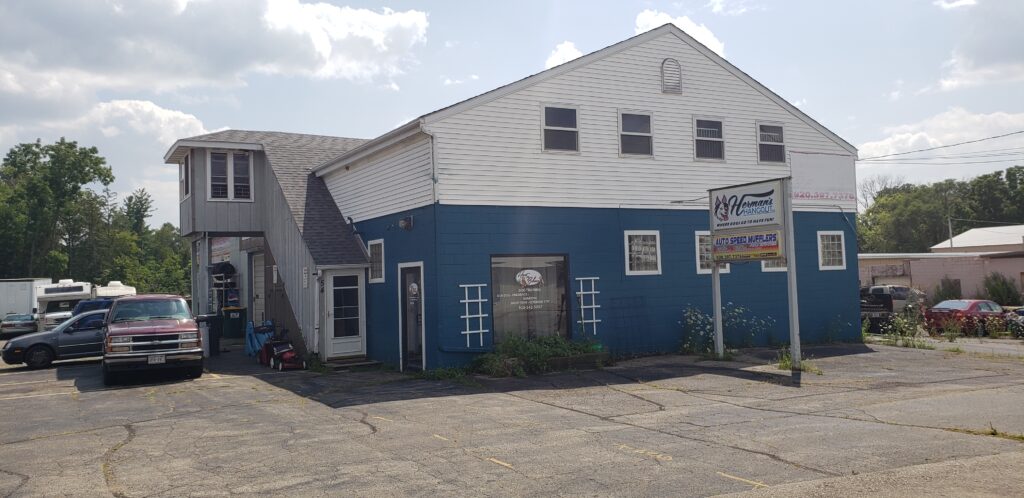
Herman’s Hangout, LLC., in Fort Atkinson appears quiet. The facility’s trainer, Tammy Flemming, is facing felony animal cruelty charges following the death of an 8-month-old husky. Chris Spangler photo.
City hires Weihert as new public relations executive assistant
(Originally published Aug. 2, 2021.)
The City of Fort Atkinson has announced the addition of Sarah Weihert as the its new public relations executive assistant. She assumed her new responsibilities Monday.
Weihert is a respected journalist and storyteller with over 10 years in journalism at various newspapers and radio stations. She will work with the city’s administrative team to implement a comprehensive communications plan and tell the story of the City of Fort Atkinson, according to a recent press release.
Weihert, who is originally from Lake Mills, most recently worked as the managing editor of the Lake Mills Leader. She also worked for a daily newspaper and Fort Atkinson’s radio stations and several others in the Madison area. Weihert is an expert storyteller who says she looks forward to helping city residents understand what their municipal government is up to, the release noted.
“I’m excited to be a part of the team at the city and look forward to telling the story of the City of Fort Atkinson,” Weihert said. “This is a tremendous opportunity and I’m looking forward to getting reacquainted with Fort Atkinson.”
“Ms. Weihert’s background in journalism and excellent communications skills are exactly what we need to share information with our residents. We welcome Sarah to our team and look forward to working with her,” said Fort Atkinson City Manager Rebecca Houseman LeMire.
Weihert can be reached at 920-563-7760 or by emailing sweihert@fortatkinswi.net.

Sarah Weihert
National Weather Service reports 12 tornado touchdowns on July 29
(Originally published Aug. 3, 2021.)
As of Aug. 2, the National Weather Service in Milwaukee/Sullivan has reported at least 12 tornado touchdowns associated with a line of severe thunderstorms that worked its way across southern Wisconsin on Thursday, July 29.
According to a tornado survey performed by the National Weather Service, the following data was collected:
• Southwest of Watertown, at approximately 1:05 a.m., an EF-0 touchdown occurred, producing winds of up to 80 miles per hour, and leaving a path on the ground that was just over 3 miles long and up to 100 yards wide.
• Near Farmington, at 1:10 a.m., an EF-0 touchdown occurred, producing winds up to 75 miles per hour and leaving a path on the ground that was a mile long and up to 25 yards wide.
• Between Concord and Dousman, between 1:05 and 1:20 a.m., an EF-1 tornado, producing winds up to 105 miles per hour, and leaving a path on the ground of just over 12.5 miles long and up to 200 yards wide, was reported.
• School Section Lake Road, located south of Dousman, received an EF-1 touchdown at 1:19 a.m., with winds up to 100 miles per hour and a path on the ground of just over 2 miles long and up to 150 yards wide.
• In Eastern Wales/town of Genesee, around 1:30 a.m., an EF-0 tornado was reported. The event produced winds up to 85 miles per hour and left a nearly 3-mile-long path on the ground which was up to 50 yards wide.
• Western Waukesha/town of Genesee was the site of an EF-1 tornado at 1:40 a.m., with winds of up to 95 miles per hour, and a path on the ground of nearly 1 mile long and up to 50 yards wide.
Further from home, Cross Plains was the site of an EF-0 touchdown around 12:39 a.m. The tornado left a half-mile long path on the ground that was up to 25 yards wide; another touchdown southeast of Cross Plains occurred at 12:41, leaving a two-and-a-half mile long path on the ground that was up to 50 yards wide; south of Middleton, at 12:44 a.m., and EF-1 tornado left a path on the ground of just over 2 miles long and up to 50 yards wide, and north of Verona, at 12:47 a.m. an EF-1 tornado was on the ground for nearly three-and-a-half miles, leaving a path up to 50 yards wide.
Also, an EF-1 tornado touched down south of Portage at 12:10 a.m. With winds up to 105 miles per hour, the tornado traveled on the ground for just over two miles with a path width of up to 100 yards, and at 12:41 a.m., an EF-0 tornado touched down northwest of Columbus. The storm packed 75-mile-per-hour winds and left a path on the ground nearly a half-mile long and up to 25 yards wide.
No deaths or injuries were reported with Thursday’s storms. Damage reported by the National Weather Service was largely to trees, crops, and some structures.
The full report from the National Weather Service is here: https://www.weather.gov/mkx/ThunderstormsCausedDamagingWindsLateWedEveningJuly282021.


Above two photos: Damage is present after a touchdown Thursday, July 29, in southwest Watertown. Photos courtesy of the National Weather Service.
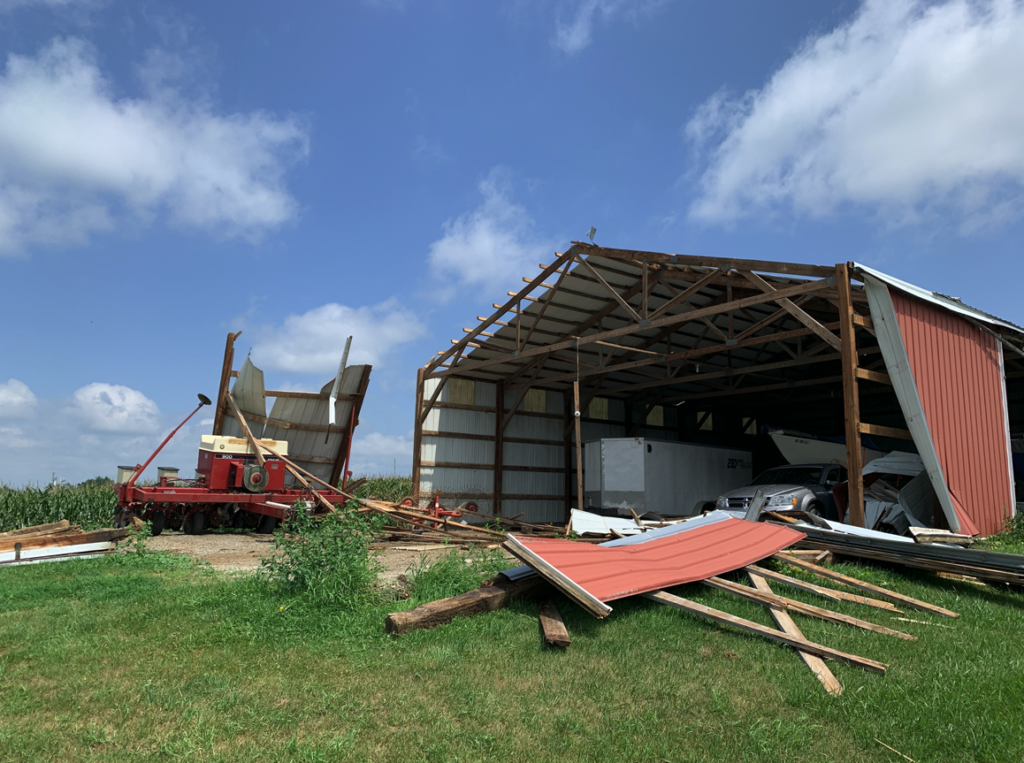
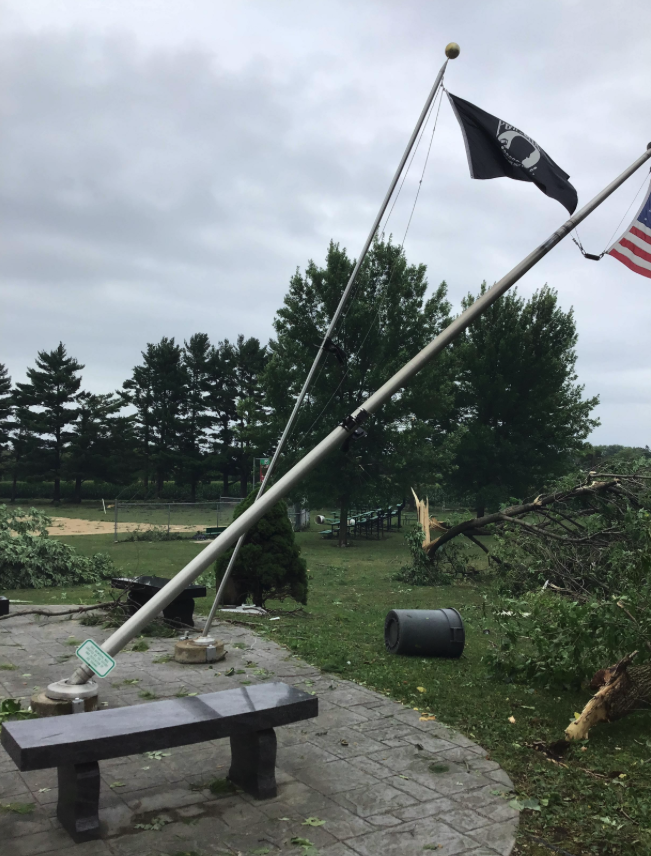
Above two photos: Damage is present after storms move between Concord and Dousman last Thursday. Photos courtesy of the National Weather Service.
Weathering the storm: chaser finds beauty and awe
(Originally published Aug. 4, 2021.)
By Kim McDarison
Twelve tornados, according to the National Weather Service, touched down in southern Wisconsin last Thursday. All were rated using the Enhanced Fujita scale (EF) at EF-0 or EF-1, the lowest levels on the six-level scale.
The scale rates tornados based on the ferocity of the wind gusts they produce. The lowest rating, EF-0, is defined by wind gusts of 65 to 85 miles per hour. The highest rating, EF-5, brings winds gusting to over 200 miles per hour.
A link explaining the Enhanced Fujita scale is here: https://www.weather.gov/oun/efscale.
The EF-0 and EF-1 ratings of Thursday morning’s storms were somewhat predictable, Janesville native and storm chaser Tom Purdy said.
Awakened late last Wednesday night by the weather app on his cell phone, alerting him that storms were moving through the area, he said he looked at the radar.
Usually eager to photograph tornados, Purdy said storms produced by a system traveling across portions of Jefferson, Dane, and Waukesha counties Wednesday night and early Thursday morning were “nocturnal,” making them harder to spot, and, therefore, more dangerous.
He described the line of storms as a “quasi-linear convective system.”
With those types of lines, he said, “you have pockets of rotations, so there are a lot of brief touchdowns, but generally, there are not violent tornadoes that form in a line like that.”
Such systems are “an ordinary late summer occurrence,” Purdy said, adding: “It seems so odd this year because we haven’t had storms. Wednesday’s storms were our first significant event of the year.”
In Wisconsin and the Midwest, he said, storms usually begin in March and April.
For Purdy, a lack of storms is “absolutely disappointing.”
A storm chaser for the last 10 years, he said he was afraid of storms as a kid, but today he photographs them for their beauty.
Learning about storms
Purdy said he wasn’t always so eager to confront summer storms. During his childhood, they often moved through Janesville and he was afraid.
A 1999 graduate of Janesville’s Parker High School, Purdy said, as an adult, in 2010, he took a two-hour weather-spotting course offered by the National Weather Service.
Not long after completing the course, he was invited to travel with another spotter by car to South Dakota. The purpose of the trip was to attend a party, Purdy said, but as circumstances would have it, as the travelers reached Rapid City, they encountered a storm which was producing hail and flooding.
Purdy recalled thinking the storm was “the coolest thing I’d ever seen,” adding that he found it “mesmerizing.”
From that beginning, Purdy said, he developed a longterm fascination with storms, adding: “Storms are beautiful, and can be dangerous,” but, for him, he said, “it’s more of an excitement. It can be concerning depending on where you are at, and I’m always a little nervous, like butterflies in your stomach, but it is also awesome.”
Seated Sunday at a picnic table at Lakeview Bar and Grill on Lake Koshkonong, he said: “I love Lake Koshkonong; seeing a storm coming across the lake or a shelf cloud. That’s amazing. I look for the great views.”
Purdy defined a shelf cloud as “cold outflow of a storm. Its formation means a storm is coming,” he said.
Tracking storms
Tracking storms requires an ability to look at National Weather Service models and predict where a storm might develop. It takes patience, Purdy said.
For all the storms that come through the area, he said, very few will develop into a supercell, adding: “There are so many ingredients that have to come together. Think of the number of storms in the US and how low that number is that produce tornadoes.”
He described a sense of awe when witnessing a tornado genesis.
“A genesis could start with a little rain storm and as it grows, there might be bursts of lightening around the tornado genesis. Then there’s a wall cloud that’s generated, and then a funnel comes down. The atmosphere is very fluid,” he said.
Over the years, Purdy has tracked storms in several states, but he concentrates on Wisconsin and Illinois, and most specifically in counties closer to home, including Rock, Walworth and Jefferson.
While the National Weather Service receives data collected by trained weather spotters on the ground, it also advocates for safety. Storm chasing as an amateur activity is not typically sanctioned by weather professionals, Purdy said.
He has learned to be cautious, but admitted that he might be an “adrenaline junkie.”
As a spotter, he said, one might be asked to help with snowfall counts, rain rates, and watching for conditions associated with severe storms. Spotters send reports to the National Weather Service.
His love of photography grew from a love of spotting and learning about storms, Purdy said. Remembering the encounter with the storm in South Dakota, he said, his first storm photos were taken with an old camcorder he found in the car.
He has since invested in Canon camera equipment.
Over the years, photos taken by Purdy have been used by several area media outlets.
Purdy said that he is not always alone when he chases storms. He sometimes works alongside Jason Schwartzlow, of Edgerton. The two have been friends since 2012.
During an active summer season, the two have their heads in the clouds, Purdy said.
This year, even with the absence of storms, they talk about weather daily.
Weather and climate
Purdy expressed a desire for caution when talking about climate change.
“Do I believe in climate change? Yes. Am I educated enough to make a formal opinion? No,” he said, adding that a difference between weather and climate is that weather is a term used to describe events in the moment while climatologists are searching for patterns.
Some patterns have reoccurring cycles that are larger than others, making what could be a pattern defined by a larger cycle hard to identify. A storm, and his photos, are made in the moment, he said.
With few storms to chase this year, Purdy said, he has been taking pictures of small storms, shelf clouds and sunsets.
Purdy said he avoids taking pictures of storm damage and aftermath.
He feels for the people who have likely lost everything, he said, adding: “There is no reason for me to get in the way of first responders. It takes away from people who need help.
“I’m more attracted to understanding the science and capturing the beauty. We do report to the National Weather Service on what’s going on.”
Purdy said he doesn’t see himself necessarily as someone who might be saving lives.
“I’m not really out there to save lives. People save their own lives. After the National Weather Service gives them information, they choose what to do with it — when you get information, what a person chooses to do with that information is what’s going to save their lives or kill them.”
Heeding the warnings is paramount to a good outcome, he said.
He talked about the number of people involved in gathering information to help others make good choices.
“So many people are involved with bringing the public warnings. The National Weather Service gathers radar, and there are storm spotters out there watching on the ground level. There are so many parts that go into it,” he said.
According to Purdy, weather warning systems in place to help alert the public are continuously improving and “very accurate.”
For more information about spotter training, visit the National Weather Service website: https://www.weather.gov/grb/spotterschedule.
To follow Purdy and his work, visit Twitter: https://twitter.com/TomPurdyWI.
A related story sharing data collected by the National Weather Service about storms in the area on July 29 is here: https://fortatkinsononline.com/national-weather-service-reports-12-tornado-touchdowns-on-july-29/.
Photos by Tom Purdy unless otherwise indicated.

An EF-4 tornado moves across the landscape in northern Illinois. According to storm chaser Tom Purdy’s Twitter account, the photo was taken six years ago. Purdy wrote: “I can’t explain what it was like watching this in pretty much my own backyard.” Purdy lives in Janesville.

A rainbow spans a field in southern Wisconsin. The photo was taken in August of 2019, at which time, storm chaser Tom Purdy wrote on his Twitter account: “one of the brightest low angle rainbows I have ever seen along with crepuscular rays as storms moved through southern Wisconsin.”

An EF-4 tornado crosses a road in Rochelle, Ill. Storm chaser Tom Purdy said the photo was among his favorites taken over the last decade.

A supercell with rotating wall cloud crosses Lake Koshkonong. Storm chaser Tom Purdy described the photograph as one of his favorites captured over the last decade.

Sunset over Lake Koshkonong taken in June of this year.

Captured near Dousman in September of 2019, storm chaser Tom Purdy wrote on his Twitter account: “a wall cloud with decent inflow, unfortunately storm just kept getting ripped apart in the upper levels.”
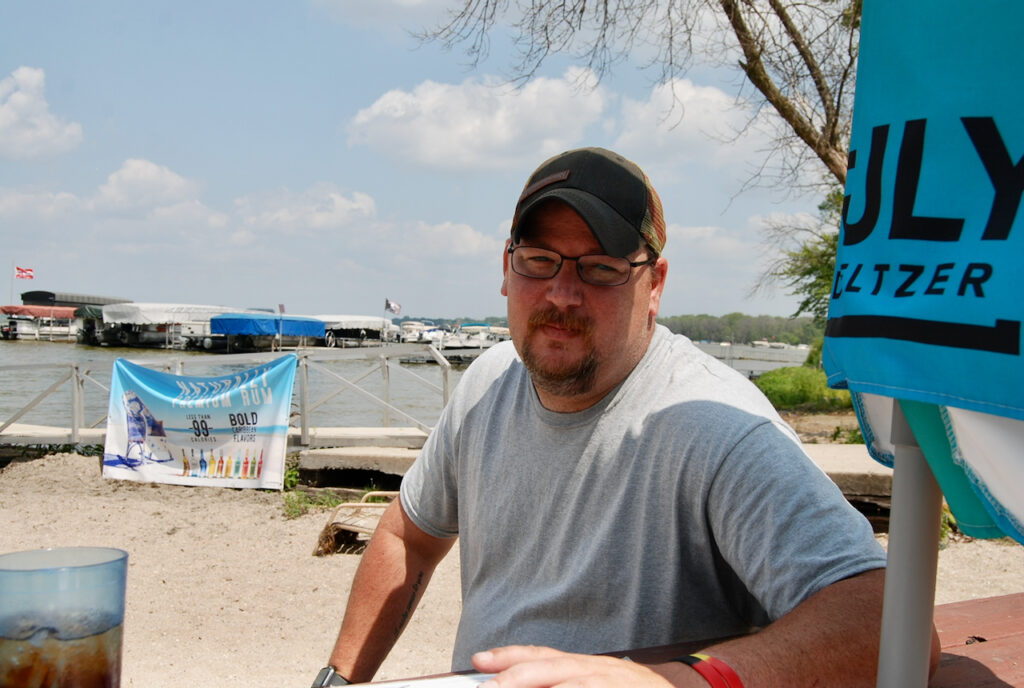
Storm chaser Tom Purdy, while interviewing Sunday with Fort Atkinson Online, enjoys a warm and breezy day at the Lakeview Bar and Grill beach on Lake Koshkonong. Describing the day as “normal people’s weather,” he said, for him, it’s somewhat boring. Kim McDarison photo.
Fort dog trainer with warrant apprehended in Illinois
(Originally published Aug. 4, 2021.)
By Kim McDarison
A Fort Atkinson dog trainer with a warrant out for her arrest was taken into custody last night, according the Capt. Jeff Davis of the Fort Atkinson Police Department.
Davis confirmed that Tammy Flemming, who is wanted in connection with a felony animal cruelty charge in Jefferson County, was arrested in Illinois. She is currently in custody in Illinois and will undergo an extradition process to bring her back to Wisconsin, Davis said.
A warrant for Flemming’s arrest was issued by a Jefferson County Circuit Court judge in June after Flemming did not appear for a scheduled arraignment hearing. Flemming, who was charged in March with a felony count of “mistreatment of animals/cause death,” was released on a $1,000 signature bond. The court issued a judgement in the amount of the bond on July 29 after Flemming did not appear at a bail/bond forfeiture hearing held July 26.
Davis said the Fort Atkinson Police Department had become aware that Flemming might be in Illinois and shared that information with law enforcement in that state.
He described circumstances leading to Flemming’s arrest as “consistent with that information.”
Lindsey Davidson, the owner of an 8-month-old puppy who was allegedly killed during a training exercise preformed by Flemming, told Fort Atkinson Online that she learned about Flemming’s arrest early this morning through an email she received from the Fort Atkinson Police officer who assisted her on Sept. 10, 2020, the night that her puppy, “Cooper,” died.
After learning of Flemming’s arrest, Davidson said: “I definitely feel happy with the progress and I’m glad we can go to court and move through the trial and have some closure in the near future verses waiting however long we would have had to wait before.”
A representative at Jefferson County District Attorney Monica Hall’s office, responding by phone to questions about Flemming’s extradition, said: “We have no comment at this time.”
If convicted on the felony animal cruelty charge, Flemming could face fines up to $10,000, up to three years of incarceration, or both.
An earlier story outlining details associated with the animal cruelty case is here: https://fortatkinsononline.com/process-through-the-court-system-has-been-long-and-emotional-says-owner-of-deceased-pup/.

File photo/Kim McDarison
City approves zoning amendment, general development plan for True Storage
(Originally published Aug. 10, 2021.)
By Kim McDarison
The Fort Atkinson City Council last Tuesday, Aug. 3, approved two steps in what City Engineer Andy Selle described as a three-step process, bringing closer to completion a redevelopment project proposed by True Storage, a New Hampshire-based developer of self-storage units.
Once all approvals are finalized, redevelopment efforts will begin at the former Shopko property, 1425 Janesville Avenue.
Selle noted that the two pieces approved by council on Aug. 3 — the final approval of an amendment to the city’s official zoning map for the property and approval of a general development plan as submitted by the storage unit company — are the last to be brought before council. The final step in the process is the approval of a certified survey map and a specific development plan, both of which will come before the city’s Plan Commission at a later date for approval.
Step 1: amending the city’s official zoning map
Council members gave final approval last Tuesday to an amendment, changing the city’s official zoning map from Urban Mixed Use (UMU) to Planned Unit Development (PUD) at 1425 Janesville Ave. The change was required to accommodate a redevelopment at the site by allowing increased flexibility, according to Selle. In return, he wrote in a memo to council, the city would “receive a substantial investment,” bearing “long term benefits for the site,” while remaining “in concert with the Comprehensive Plan.” The investment, in the case of the True Storage proposal, Selle noted, would focus on “aesthetic upgrades to the existing building and site.” The project would also create two out-lots with a commitment toward development, he wrote.
A first reading of the proposed zoning change was approved by council July 20. Last Tuesday, Aug. 3., council voted in favor of suspending its rules and waiving a third reading of the amendment, granting it final approval after a second reading. Selle said, during the July 20 meeting, that he and city staff would likely request council waive the third reading during the Aug. 3 meeting in order to “stay on a consistent timeline for the applicant.”
The proposal submitted by True Storage called for the existing approximately 6-acre site to be divided into three parcels: the first, an approximately 4-acre lot, will include the former Shopko building; the second and third, each about an acre, will be sold by True Storage for commercial development. The PUD zoning change was approved by council for the 4-acre parcel only. Urban Mixed Use zoning will be retained for the two out-lots.
During discussion on Aug. 3, Councilman Megan Hartwick asked Selle to provide a more detailed understanding of how and by whom the out-lots would be marketed.
She asked: “Can you advise what kind of role the city would have in terms of what potential businesses would be able to go into those spaces? Would that be True Storage (who) decides that on their own because they own the land?”
Selle said the UMU zoning of the two out-lots would continue to allow for a “fairly wide range of businesses” that might develop on the lots. He noted that the city and True Storage have been in discussions about “potential areas that we may want to try and target.
“I know Josh (Sullivan) from the True Storage team has some contacts within the development community, and I’m sure we’ll have some conversations about that, so there certainly is active engagement with city staff in that process and there’s the structural zoning code that really determines what can go there.”
Selle said the UMU zoning would prohibit some types of development. He cited an “asphalt factory” as an example of types of businesses that are “expressly not allowed,” but, he said, “we would look at mixed use developments where we have some residential above and commercial below, there’s a number of different types of uses in that Urban Mixed Use that could be offered.”
Hartwick asked: “Does the True Storage team have any examples or have they had a relationship like this before, or a development kind of like what this setup would be in other areas before?”
True Storage representative Josh Sullivan said: “Yes, we’ve got a number of those exact scenarios and typically we’ve sold those out-lots to retail developers, or specific developers performing that. We would not take on that development ourselves.”
Sullivan said True Storage was in the process of completing a similar transaction in Oshkosh.
“Between last (council) meeting and this meeting, we’re also under contract — in a sense — we’ve closed on a Shopko in Oshkosh, Wisconsin. And we already have an out-lot sold to a local retail developer. They’re in the process of lining up a retailer as we speak. I can’t speak to the tenant, but it will be very much a retail out-lot development going in there,” Sullivan said.
Councilman Mason Becker said he was impressed with the True Storage concept that had been presented to council.
“People had different visions for that site, but I think this fits a need in the community,” he said.
Council President Chris Scherer also expressed satisfaction with the project, saying: “I think, moving to the Planned Unit Development, is probably the best way for us moving forward to really get a lot done with the Shopko (unit). I appreciate the vision that you guys are putting forward.”
Council approved amending the city’s official zoning map to reflect the change from UMU to PUD for the 4-acre parcel at 1425 Janesville Ave., with the following contingencies: that the city’s Plan Commission approve both the project’s final 3-lot certified survey map and the final “specific implementation plan (SIP).”
Step 2: approving the general development plan
Also last Tuesday council approved a general development plan for the former Shopko property as submitted by True Storage.
Selle noted that the general development plan — which he described as an “interim step” in the development process and the last step requiring approval by council — had already been presented to the city’s Plan Commission.
The general development plan showed “about 75% of the details fleshed out for what the project is going to look like,” he said.
Plan Commission members, during a previous meeting, had “some very good discussion there about what we’ve seen so far and what we are continuing to talk about and finalize with respect to the project,” Selle said, adding: “The largest piece that needs to be kind of memorialized is an understanding (of) those out-lots and the potential marketing and development of those out-lots … what we do within that area over the next three years or so.”
Selle said “a lot of work” would not be performed in the area “right off the bat,” giving the city time to “make sure we understand what might develop there.”
“Outside of that,” he said, “I think we’re looking at some building aesthetics, some improvements there … as we move toward the SIP (specific implementation plan), and that will come before the planning commission for their approval, but will not come before council. Overall, I think staff has been very excited to move through this process with True Storage. It’s been a good relationship thus far and I think this will result …in a good, positive improvement to that particular parcel.”
During the discussion, Hartwick asked for clarification about a graphic presented within materials provided in the council packet, showing an aerial view of the project and its associated out-lots.
“The breakdown of the space … it just throws me a little that it looks like those two out-lots are being developed,” she said, adding that, to her, it appeared as though the out-lots were being developed with trees and striping on designated parking areas.
“Is that just for visual reference or is that what True Storage would do until those out-lots would be developed?” she asked.
Sullivan responded, saying; “Along the front of Janesville (Avenue), we do have requirements and are adding some landscaping. We don’t intend on going inside that out-lot, aside from the re-striping as you said.”
He added: “We are very confident that we are going to get someone in there quickly and we will start marketing efforts almost immediately. Surprisingly, in Oshkosh, we didn’t actively market it (the out-lot). Someone locally heard of the approval and they talked to us directly, so that was great, but we are actively searching for local representation — local players — and get some pre-marketing out there.”
Hartwick asked: “So the image that shows where those trees would be planted and where striping would be done in the middle of that lot, that’s not something that would actually happen initially?”
Said Selle: “Some of that is stormwater improvements, so some of those areas, where we have islands, … within the parking lot are intended to kind of open things up and allow some water to move into those and green it up a bit. I know that area that you’re talking about Councilman Hartwick and I think … that’s part of the first phase because it’s a fairly low lift — or easy lift to do; not a lot of money to invest there — to sort of green that up a bit.
“As we get closer to Janesville Avenue, that’s where we want to make sure that we’re not doing anything that perhaps, later on, we would regret. We are not making any drastic changes to the site.”
Selle continued: “True Storage and Josh have maintained throughout they really don’t need parking. So limiting the parking and allowing more of the out-lot development is kind of the easier transit through the site with the single entrance off of Janesville.”
City Manager Rebecca Houseman LeMire said: “We’ll also just note that our code does require some buffer space — some green space — between the property lines and whatever use would eventually be there — whatever building would eventually be there. I think any funds spent on landscaping and trees in that area would not be wasted.”
Scherer said the thought plans submitted by True Storage were “very thorough.” He found that encouraging, he said, “especially knowing the community feedback that we probably all received at some point or another to council about another storage facility within Fort Atkinson, but I can definitely tell this is not your first rodeo reconverting buildings like this and I’m encouraged to know that with the out-lots, I think you can truly do something unique for that area. I think our Planning Commission will also have the best interest of our community.”
Said Becker: “I’m encouraged about what you said about your development in Oshkosh … I know Fort Atkinson has many entrepreneurial-minded people, and hopefully somebody will be reaching out to you with a great idea.”
“We would welcome that,” Sullivan said.
“We would love to work with someone locally. We will be open to any outreach; feel free to spread that word and we will be doing our own marketing as well. We will be looking for a partner as soon as we can.”
A previously story about True Storage, its projects in other states, and its plans for the former Shopko site, is here: https://fortatkinsononline.com/city-approves-zoning-change-in-advance-of-proposed-true-storage-development/.

The former Shopko site as it appears today on Janesville Avenue. Kim McDarison photo.

An artist’s rendition of a True Storage redevelopment, depicting how the former Shopko building in Fort Atkinson might look after it is developed into indoor, climate-controlled storage units. Submitted graphic.
Breaking: a fire is burning on the north side of the Fort Atkinson Kennel Club building
(Originally published Aug. 10, 2021.)
Editor’s note: this story has been updated and remains ongoing. Updates will continue as more information becomes available.
By Kim McDarison
Firefighters from multiple agencies continue to subdue a fire at a commercial structure, 710 Oak Street, in Fort Atkinson. The fire, according to Kennel Club of Fort Atkinson member Mabel Schumacher, is mostly affecting an area of the building which is not used by the kennel club.
Schumacher said the club has rented space in the building, owned by D.B. Oak and known locally as the Thomas Industries building, since about 2000. Space used by the club includes a meeting room, dog training room, and storage for some 25 years of kennel club records.
Schumacher, who arrived at the scene shortly after noon, said she hoped that the club’s records were still intact.
Schumacher said she learned about the fire after receiving a call from a friend who lives nearby.
Reporter Chris Spangler, who is also on the scene, said that assets from area agencies, including Fort Atkinson, Whitewater, Watertown, Jefferson, Milton, Janesville, Lake Mills, Waterloo, Deerfield, Cambridge and Eagle had arrived at the scene. As of 1:45 p.m., firefighters were still applying water to the building and some of the neighboring buildings to the north of the burning structure. Flames and smoke were still coming from the building’s north side, she said.
Also on scene, she said, are representatives from the Fort Atkinson Police Department, Jefferson County Sheriff’s Office and Ryan Brothers Ambulance Service.
No injuries have been reported at this time.
Schumacher said no animals or club volunteers were present in the building. The club does not provide kennel space within the building.
Schumacher said she was last in the building on Saturday and she was aware that someone associated with the club was there on Sunday. She said nothing over the weekend seemed to be worrisome or out of place.
Spangler reported that a bulldozer and other equipment had arrived on the scene around 1:45 p.m. The equipment has been employed to dig a trench to help contain the fire, she said.
Around 2:30 p.m., Spangler said, equipment was employed to remove portions of the building’s roof.
“The Jefferson County Scanner Facebook page has reported that an “EMS Strike Team (defined as an emergency medical team used to provide assistance to emergency teams) from Dane County (5 ambulances)” and “Engine Strike team from Winnebago County, Ill.”, along with a Task Force from Rock County have been requested to the scene. Ambulances were requested, according to the scanner page, to help with personnel with heat exhaustion.
The Fort Atkinson Police Department has asked that travelers avoid the area around North Main and Oak streets.
The department is also reporting that, according to Fort Atkinson Fire Chief Daryl Rausch, five counties have been called to respond to the scene and residents on the north half of the city should expect low water pressure and discolored water while the situation progresses.
Information supplied by the Jefferson County Health Department through its Facebook page notes that those who have been asked to evacuate their homes can go the the gym at the Fort Atkinson Municipal Building, 101 N. Main St., entering through the Main Street entrance or the Hoard Historical Museum, 401 Whitewater Avenue.
Reported earlier today: Firefighters have responded to a fire at 710 Oak Street in Fort Atkinson. The building is used by the Kennel Club of Fort Atkinson.
Kennel club member Mabel Schumacher told Fort Atkinson Online that the fire was burning on the north side of the building and emergency crews were on scene working to put it out.
Black smoke could be seen by residents living between Fort Atkinson and Whitewater according to some reports on social media.
Reporter Chris Spangler arrived at the scene around 12:30 p.m.
This story will be updated.
Chris Spangler photos.

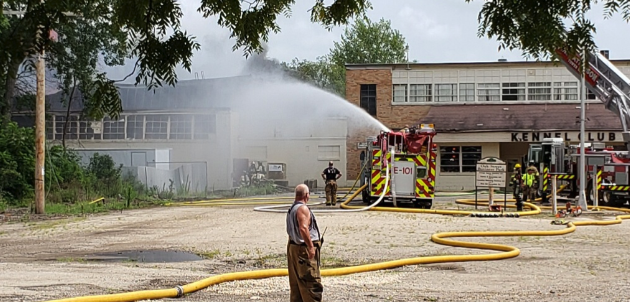

A day defined by smoke
(Originally published Aug. 10, 2021.)
By Chris Spangler
It was about noon when Craig Lang backed out of his North Main Street home’s rear driveway and saw thick, black smoke billowing from a warehouse nearby.
The northern end of D.B. Oak, which decades ago was the home of Thomas Industries, was on fire.
“I’d finished up some paperwork in my truck, backed down the driveway, turned and looked and saw smoke was starting to come out from the building’s north end,” Lang, the owner of Craig’s Concrete, said.
He immediately reached for his cellphone.
“I pushed 9 and 1 for 911 and then saw the first policeman arrive,” he added.
Needless to say, Lang never left for his destination. He parked and stood near the east end of the parking lot watching as firefighters and other first responders arrived.
Early on, Lang said, the north-end back wall of the building blew out.
“I saw the smoke and flames were coming out of the eaves; then the roof went and that was pretty much it,” he said.
Firefighters opened up the roof skylights for ventilation and used aerial trucks to pour water down onto the building.
Watching the scene near Lang was Sandra Grinz. Her daughter, Kyra Walling, and her husband own Phantom Kargo Karriers, which stores its 36-foot enclosed trailer along the west side of D.B. Oak.
“It’s right next to the action right there,” Grinz said as she took photos to send to her daughter and son-in-law.
Nothing was in the trailer, which appeared to be very close to the burning building.
“Things can be replaced; people can not,” she said. “I want to thank every single team of firefighters, first responders, the police, for taking quick action. The smoke was really scary to see, and it’s still billowing, which is really frightening.
“Right now we can’t determine if there is any damage to the trailer, but again, it can be replaced,” she added.
Grinz said that she wanted to keep the Wallings in the loop.
“They do a wonderful job and they’ve worked very hard to build their business, and I’m proud of them,” she said. “I definitely think there will be some issues. It will set them back a bit, but it’s not going to stop their determination.”
As she talked, Jaeckel Bros. of Jefferson started knocking down part of the roof as firefighters sprayed the debris from three angles. The trailer was nearby.
Also on hand were Jefferson County Emergency Management director Donna Haugom, who brought bottled water, and Jefferson County Sheriff Paul Milbrath and other deputies.
Bottled water, soda and food from Culver’s Restaurant, Casey’s General Store and other businesses also arrived unsolicited to help firefighters and other emergency personnel ward off heat exhaustion and hunger.
Meanwhile, authorities were concerned about the flames burning the many trees located just west of the building and which continue to East Cramer Street. They encouraged businesses to the north to evacuate due to the black smoke, and many did, including Opportunities Inc.
On East Cramer Street, the Fort Atkinson Fire Department was pumping water from a hydrant through a large hose snaked along the railroad tracks to the fire scene. Many more fire departments were stationed on the east side of the structure, fighting the blaze from there.
Throughout the afternoon, several small explosions could be heard, and even felt, on Blackhawk Drive and even as far west as Monroe Street.
The smoke continued to be seen from throughout the county as of 5:30 p.m.
Photos by Chris Spangler unless otherwise indicated.

Smoke billowing up from the north end of Fort Atkinson makes for a surreal view of Main Street. The smoke was emanating from a fire at the D.B. Oak building, locally known by some as the former Thomas Industries building, in the 700 block of Oak Street. The building, from which smoke continued to rise as of 5:30 this evening, houses several businesses. Photo courtesy of Conor Nelan
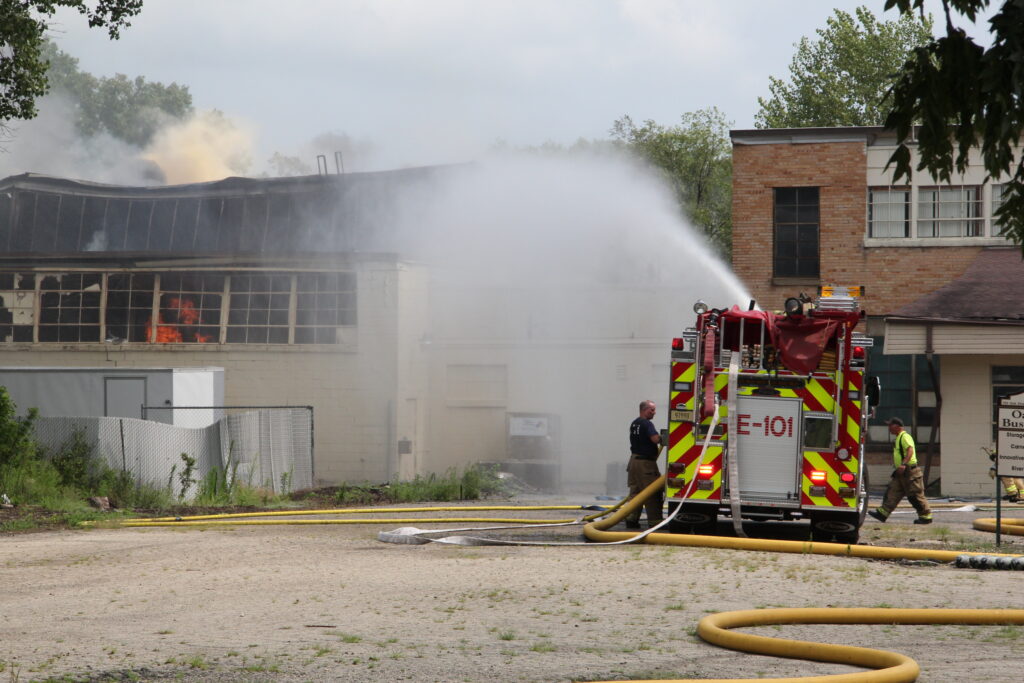
Flames are seen from within the building as firefighters work to subdue a fire in the 700 block of Oak Street.

Signage indicates a number of businesses affected by today’s fire.
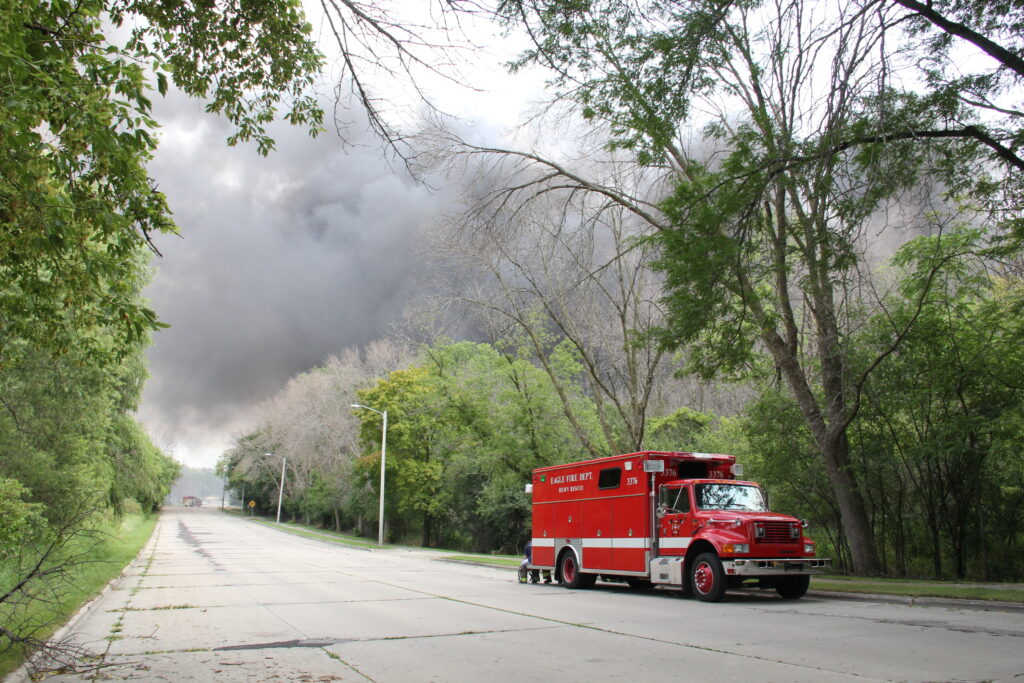


Above three photos: Puffs of ominous, black smoke fill the sky.
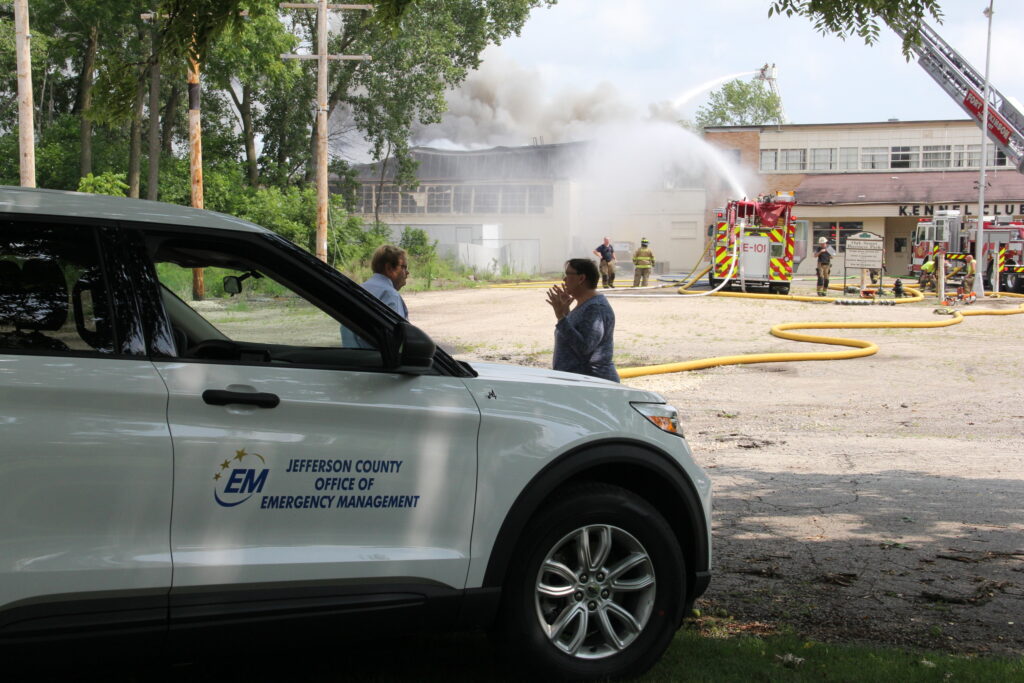
Assets and manpower from fire and EMS agencies from across the county arrive at the scene to lend support.
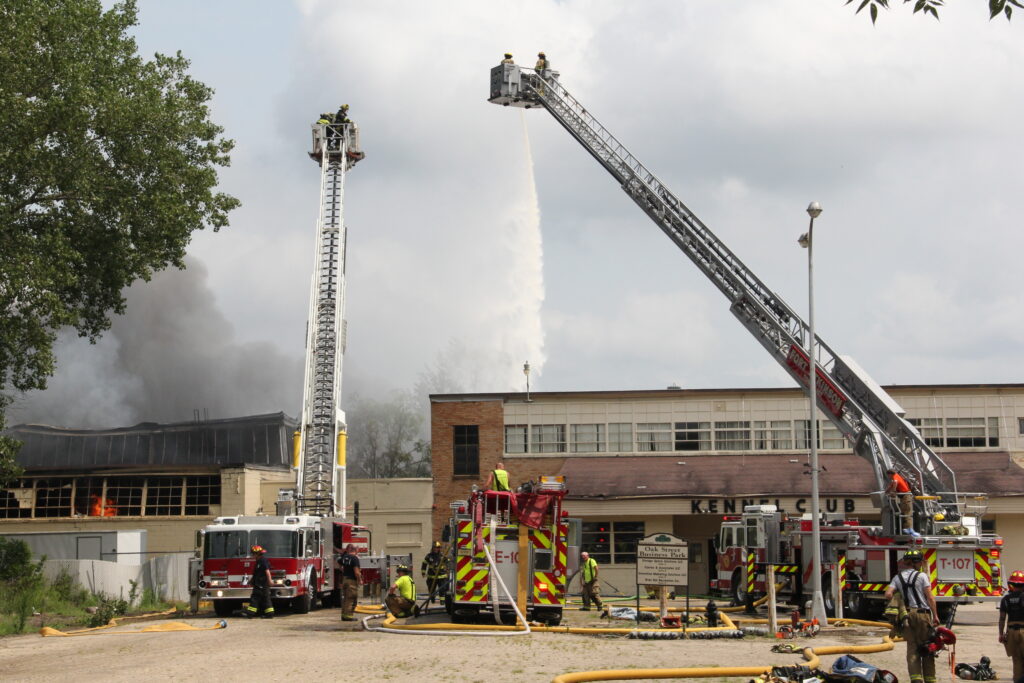
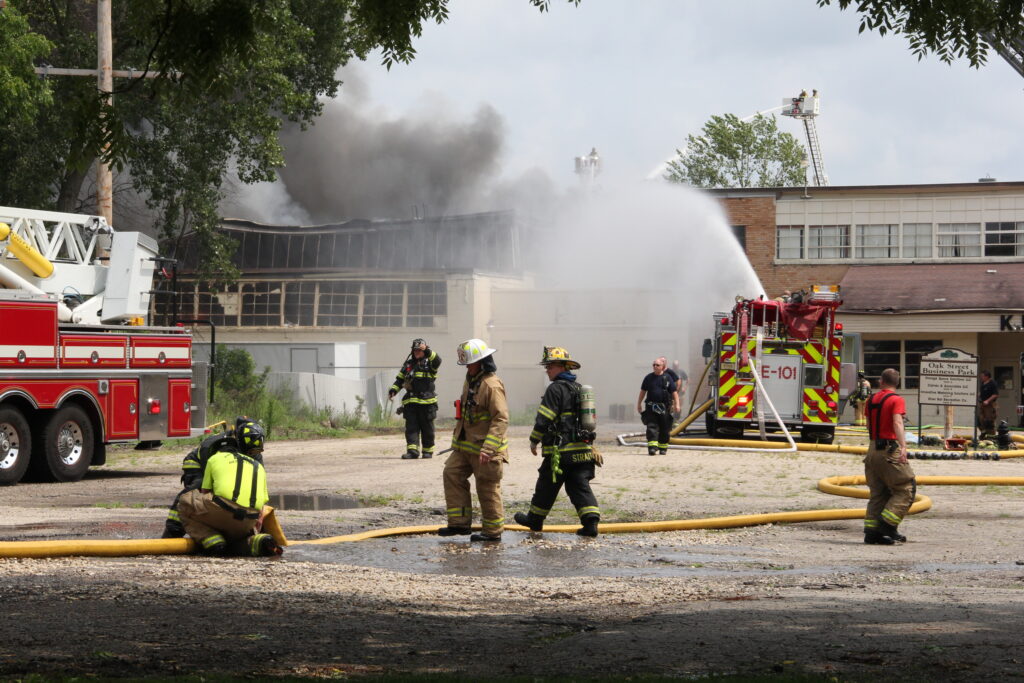
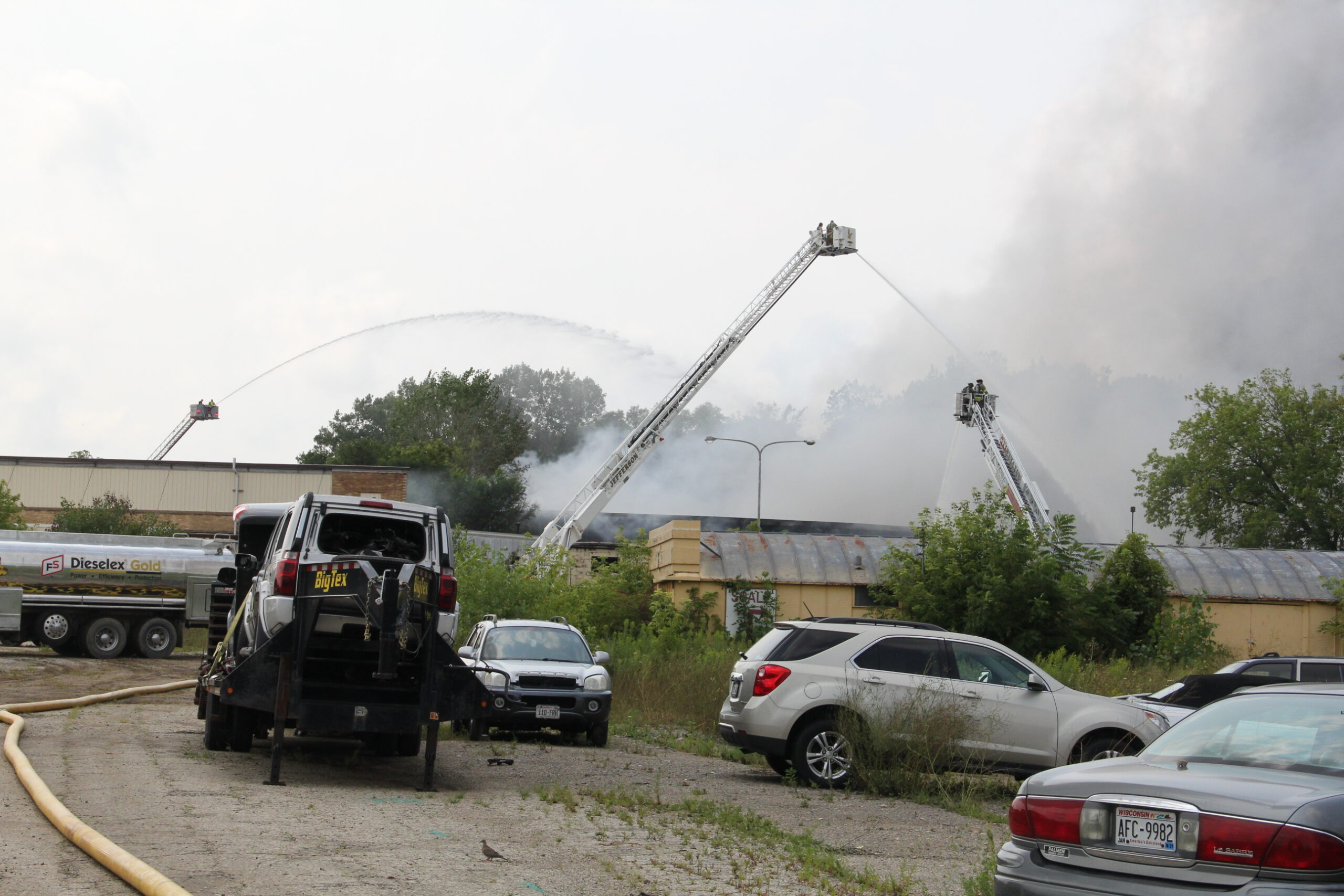

Above four photos: Crews battle the fire.

Flames expand through a window.

Structural damage.

Support for firefighters.
All departments within the county respond to Oak Street fire, officials say
(Originally published Aug. 10, 2021.)
D.B. Oak building’s north side is total loss, south side saved
(Originally published Aug. 11, 2021.)
By Kim McDarison
Firefighters worked overnight to monitor what remained of Tuesday’s five-alarm fire at the D.B. Oak building, 710 Oak St., according to Fort Atkinson Fire Chief Daryl Rausch.
At approximately 6:30 a.m. Wednesday, firefighters, many from departments across the state, were preparing for a shift change. Rausch said the north side of the large business incubator and warehouse building would continue to burn likely for several days.
Overnight, he said, a storm moving through the area had caused firefighters to momentarily abandon their equipment. The storm front caused the black cloud of smoke still streaming from the fire to drop. Firefighters were removed from their monitoring positions until the smoke cloud lifted.
Also during the night, a Fort Atkinson firefighter was injured, receiving, what Rausch described as “serious cuts,” presumable after a window in the rubble collapsed. The firefighter was transported to a hospital in Madison where he was expected to undergo surgery sometime around midnight, Rausch said. He described the firefighter as in stable condition.
The firefighter was the third to sustain injuries associated with the fire. Two firefighters were treated Tuesday, both for minor heat-related injuries, Rausch said.
“There were three people working in the building to the south, when the fire started. There was nobody working in the warehouse at the time of the fire. All of the people that were working in the building to the south have been accounted for,” Rausch said.
Further, he said, there were no animals in a kennel club operating from the south side of the building at the time of the fire.
Addressing the condition of the city’s water system, Rausch said the system pumped water into the towers overnight, bringing them up to a “normal” capacity.
At no time was the city without water, he said. Water levels within towers dropped to a low of 10 feet at one point, but were, as of Wednesday morning, back to normal at 40 feet, he added.
Fort Atkinson City Manager Rebecca Houseman LeMire, arriving on the scene at around 6:45 a.m., said yesterday, the water levels in the city’s towers did drop to a less than desirable level, but Rausch and staff at the city’s water department worked together to make sure water supplies were maintained at safe operating levels.
Low water levels within the city’s water towers factored into a decision to let the north side of the warehouse building and its contents burn, Rausch said. Hazardous pollution, caused by a mix of the burning materials and runoff from the firefighting activities, was also a factor, he said.
Describing the transit nature of the warehouse, Rausch said it was difficult for firefighters to know on any given day what might be stored inside.
“I’ve heard a lot of different stories about what was in there; everything from Vietnamese rubber to tires to 35,000 plungers,” Rausch said.
Some chemicals were being stored in the northeast corner of the building, and some cans and cardboard from a local canning company also were stored inside, he said.
Some contents in the building were owned by tenant Tim Carnes, who, Rausch said, has been on vacation. He was hopeful he might learn more Wednesday about what was being stored.
During a press briefing held Tuesday afternoon, Rausch, who has been fighting fires for over 40 years, said he knew as he drove on Main Street toward Oak Street on Tuesday that whatever was being consuming by the fire would be a total loss.
He described the D.B. Oak building as one with two large sections connected by an enclosed concrete walkway. The north side, serving as a transit warehouse, was approximately 60,000 square feet. That side has collapsed and will be allowed, along with its contents, to burn up. The south side, which serves as office and staging area for several small businesses, is approximately 250,000 square feet. That side has been unaffected by flames.
“We stopped the fire at the communication point,” which, Rausch said, was the connecting structure between the two sides. He added: “Our goal was to stop the fire at that point and keep it out of the south building. That south building is 500 (feet) by 500 (feet) and its got a lot of material, including a server farm, there’s about a million dollars worth of classic cars, there’s five or six private general contractors who use that building as a staging area and a business office.”
Tenants on the south side of the building will likely be allowed to enter sometime Wednesday or Thursday Rausch said.
Describing events on Tuesday, Rausch said the fire went to five alarms with departments responding from across Jefferson County. Strike teams arrived from Rock and Dane counties, and a task force came from Illinois, he added.
On Tuesday, he said, some 150 firefighters were at the scene. On Wednesday, during a press briefing, he described that number as closer to 240. Over the course of the event, some 48 departments sent assets to the scene, Rausch said.
During the Tuesday afternoon briefing, Rausch reported that the city’s water towers had been drawn down to 15 feet of water, which, he said, “is very near the minimum amount that we need to operate the city.”
With expansion of the fire prevented, Rausch said, “We’ve elected to let the balance of the building burn up and the contents that are in the building are going to be allowed to burn.”
Rausch noted that officials with the Wisconsin Department of Natural Resources (DNR) were on scene to monitor runoff, which, he said, was traveling through the city’s storm sewer system and into the Rock River. The DNR was also monitoring air quality at the scene, he said.
Also addressing media on Tuesday, Fort Atkinson Police Chief Adrian Bump said some 50 people had been evacuated from their nearby homes.
Mandatory evacuations were in place for residents living on the 700 block of Oak Street as well as approximately 8-12 homes on portions of nearby Cramer and Blackhawk, Bump said.
“Potentially like 50 people are displaced because of this fire, that’s an estimate,” he said.
Additionally, he said, area businesses, including Green Bay Packaging and Opportunities Inc., proactively shut down on Tuesday and sent their employees home.
Shelter was offered at the city’s municipal building for those who needed it, Bump said.
The police department issued a statement around 8 p.m.on Tuesday stating that those who had been evacuated were able to go home.
Describing challenges faced by firefighters, Rausch said: “One of the reasons that we have this many firefighters and as many departments here is because of the heat. Generally, we work through about a 40-minute operational period for each firefighter before we rotate them. Today (Tuesday) we are only working on a 20-minute rotation so it takes a lot more people to be able to accomplish that. For that reason, I went within the first 15 minutes of the fire, I went to a third alarm, and within the first 45 minutes of the fire, I went to a fifth alarm, and within the first hour of the fire, we requested multiple strike teams, task force and interdivisional requests.”
Rausch said the cause of the fire may likely never be determined.
“I’ve been in contact with the state fire marshal and I can tell you from experience this will most likely go down as an undetermined fire because the building is a complete loss and collapsed, and it is unlikely that we will ever prove definitively what the cause was.”
Addressing questions from media on Tuesday about water usage and pollution, Rausch said: “You have to kind of balance the runoff pollution potential with the air quality pollution potential. In this case, we were trying to balance that with using water to be able to control the fire without creating an immense amount of runoff because the runoff is even more hazardous to the environment than the smoke is.
“At this point, that decision’s been made for us because our water system is down to a minimum, so we are going to allow the rest of the material to go ahead and burn up.”
Speaking with Fort Atkinson Online Wednesday morning, Rausch said firefighters spent the night monitoring the fire.
Popping sounds, which were emanating from the fire, were likely coming from pressurized vessels such as paint cans, which were bursting within the rubble, Rausch said.
On Tuesday, he said, there were a few explosions, which were from LP gas tanks.
After the fire burns out, Rausch said, the next steps would likely involve leveling the rubble and cleanup. The DNR will monitor the cleanup effort, he added.
Looking at the year overall, regarding the number of fires in Fort Atkinson, Rausch said: “It has been a very unusual year.”
As firefighters from myriad departments arrived for a shift change, LeMire expressed gratitude, saying: “I am humbled and thankful at the response of our neighbors. The vast majority of firefighters yesterday and overnight were volunteers who took time out of their jobs and lives and came here in our time of need. We never hope to reciprocate, but we hope to provide the same response in their time of need as they provided us.”
Following are photos taken at the scene of the Oak Street fire early Wednesday morning.

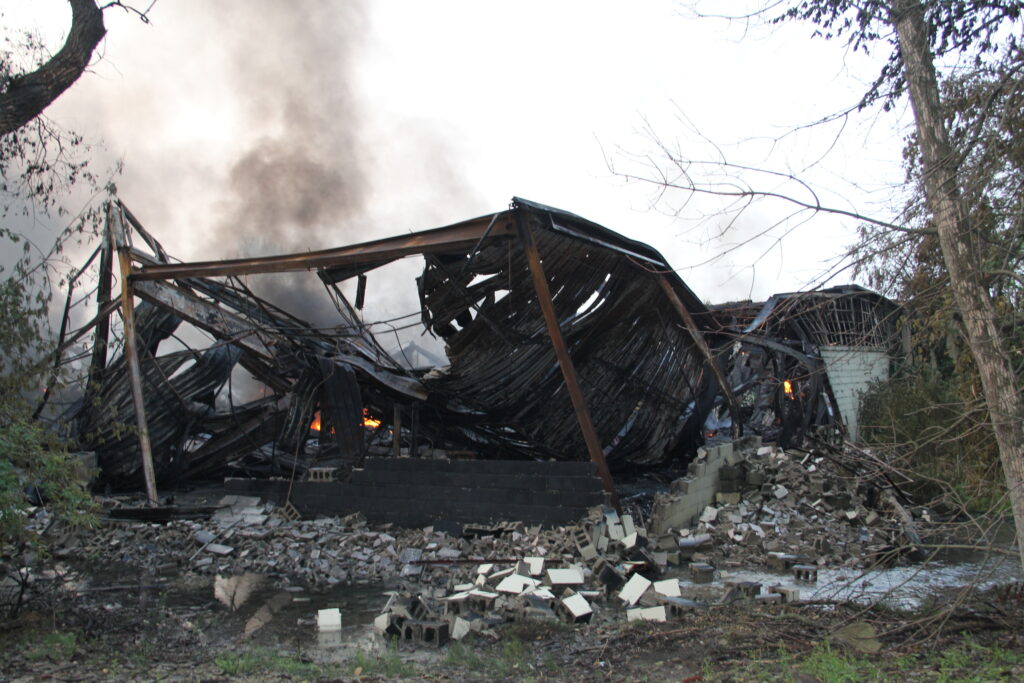


Above four photos: fire continues to burn Wednesday within the rubble of the north side of the D.B. Oak building. The five alarm fire began around noon Tuesday.

Assets and firefighters from neighboring fire departments prepare Wednesday morning for a shift change. Some 240 firefighters from approximately 48 agencies have arrived in Fort Atkinson over the last two days. As of Wednesday, duties include monitoring the fire, which, officials say, will be allowed to burn out. The process is expected to take several days.
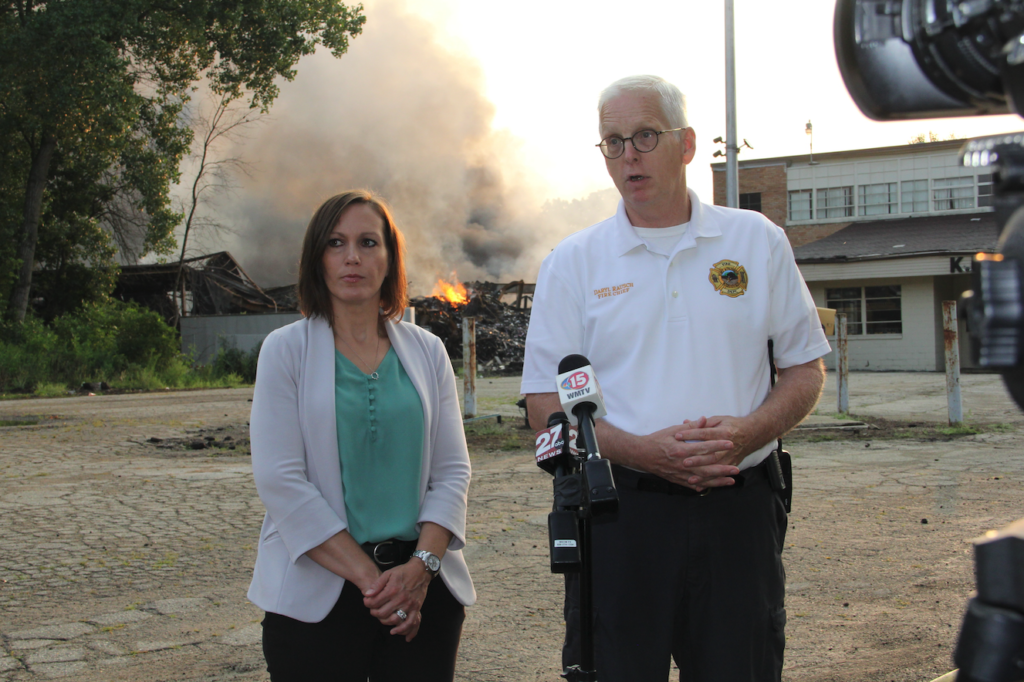
With the fire still burning behind them, Fort Atkinson City Manager Rebecca Houseman LeMire and Fort Atkinson Fire Chief Daryl Rausch answer questions for the media during a briefing held Wednesday morning.
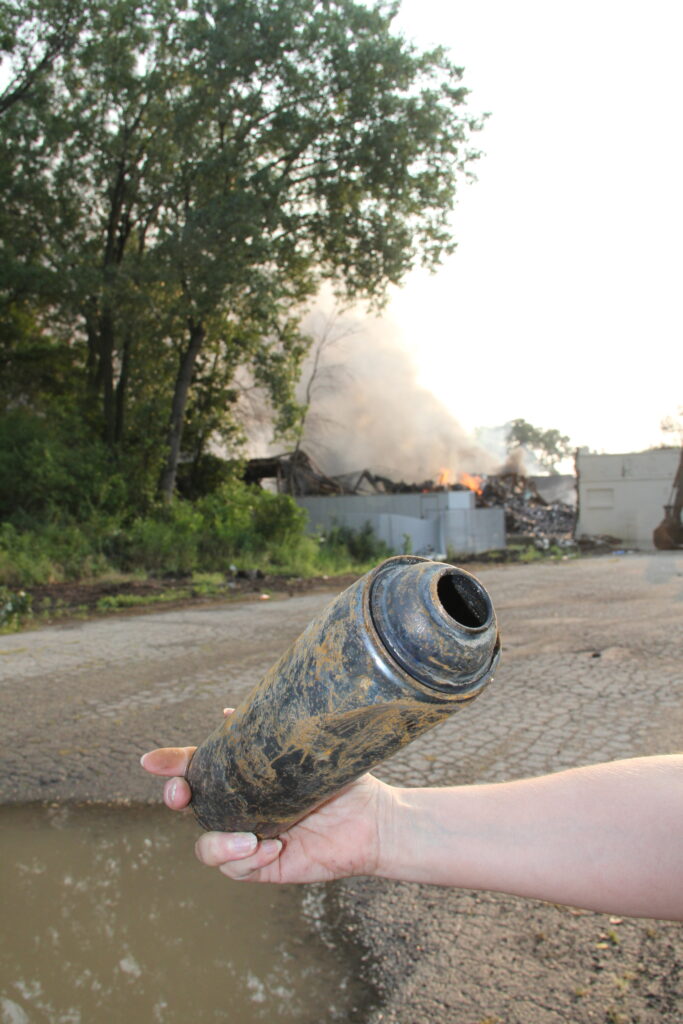
Popping sounds emanating from the smoldering rubble Wednesday likely are coming from heating pressurized vessels like this vessel pictured, said Fort Atkinson Fire Chief Daryl Rausch.
Chris Spangler photos.
Tyson Foods to close Jefferson facility mid-September
(Originally published Aug. 13, 2021.)
Editor’s note: this story has been updated to include comments from City of Jefferson Mayor Dale Oppermann.
By Kim McDarison
Tyson Foods, based in Arizona, has announced that it will be closing its facility in Jefferson, 1015 Industrial Ave.
According to a letter posted by the Wisconsin Department of Workforce Development Dislocated Worker Unit, Madison, Tyson Foods, which operates LD Foods, Inc., “will be permanently ceasing all operations at its Jefferson, Wisconsin facility located at 1015 Industrial Avenue, effective September 16, 2021. The closure has been prompted by the company’s decision to discontinue the product line produced at that location.
“This action is expected to result in the permanent elimination of 62 employees – 9 salary and 53 hourly positions.”
The company noted that while it plans to cease operations at the site in September, those working at the site will remain employed “until or within 14 days of October 10, 2021.”
Additionally, the letter continued, “a small contingent may remain through a later date to maintain the integrity of the leased facility and address any final customer concerns.”
According to the letter, hourly employees do not have union representation and “interplant bumping rights do not exist.”
In a statement made to Fort Atkinson Online, Tyson representative Gary Mickelson wrote in an email: “As part of ongoing efforts to focus on the strategic plans of our business, we plan to discontinue operations at our Jefferson, Wisconsin, plant in mid-September. The closure is due to a combination of factors including the changing product needs of our customers.
“This was a very tough decision, but because business needs have changed, we’ve decided to take these steps in order to continue focusing on and investing in strategic growth priorities where we have a competitive advantage.”
Responding by phone to questions about the closing of the Tyson facility, City of Jefferson Mayor Dale Oppermann said: “We are disappointed to learn about the closing. LD Foods has been a great employer in the community and beyond for a long time.”
He described the company as a ”good corporate citizen for many years.
“They are also a customer of the City of Jefferson Utility, so that’s a blow to our rate payers. It makes it difficult to draft next year’s budget for our utility,” he said.
Noting a silver lining, Oppermann said that a member of the LD Foods human resource team was reaching out to area professionals, working to create what he described as a “job fair kind of resource for displaced workers.”
At approximately 100,000 square feet, by Oppermann’s estimation, he said the building leased by Tyson was of medium size within the city’s industrial inventory. He cited buildings occupied by Generac and Americold as among larger buildings within the city.
The news of Tyson’s plans to close the facility is “barely 24 hours old,” he said Friday afternoon. The city will need to determine how best to help a building owner or potential developer market and make use of the property.
“Based on the robust nature of business as we’ve been experiencing it, I don’t expect that building to be vacant for very long,” Oppermann said, adding that, in the interim, he believes the community has the ability to absorb the displaced workers.
Highland Dental breaks ground for new facility
(Originally published Aug. 13, 2021.)
Highland Dental held a groundbreaking ceremony on Wednesday, Aug. 11, to commemorate beginning construction of its new, state-of-the-art dental office, according to information released by the Fort Atkinson Area Chamber of Commerce and City of Fort Atkinson.
Once the new building is completed, the company will have offices at 1530 Doris Dr. The company currently has offices at 600 Highland Ave.
The new facility will consist of nine patient treatment rooms, complemented by a lab and sterilization center, as well as a spacious and modern patient waiting area. The building was designed and will be built by Keller Inc. Construction and is expected to be completed in Spring 2022.
Representatives from Keller Inc. and the Fort Atkinson Area Chamber of Commerce joined Highland Dental owner Dr. Brenda Garrison (DDS), her husband, James Garrison, and the Highland Dental team consisting of Dr. Al Kempema (DDS), Ruth Hack (office manager), Karry Robertson, Annette Lawrence, Danielle Livick, Diane Zweifel, Jentri Alvarado, Veronica Fernandez, and Lisa Pfuhl at the ceremony. Dr. Garrison thanked her team, husband, builder, and bank for their help and support during the lengthy planning process and noted that she looks forward to continuing to serve the community in the practice’s new facility.
A story about the new facility is here: https://fortatkinsononline.com/city-approves-tif-agreement-with-garrison-holdings-offering-assistance-up-to-66500/.
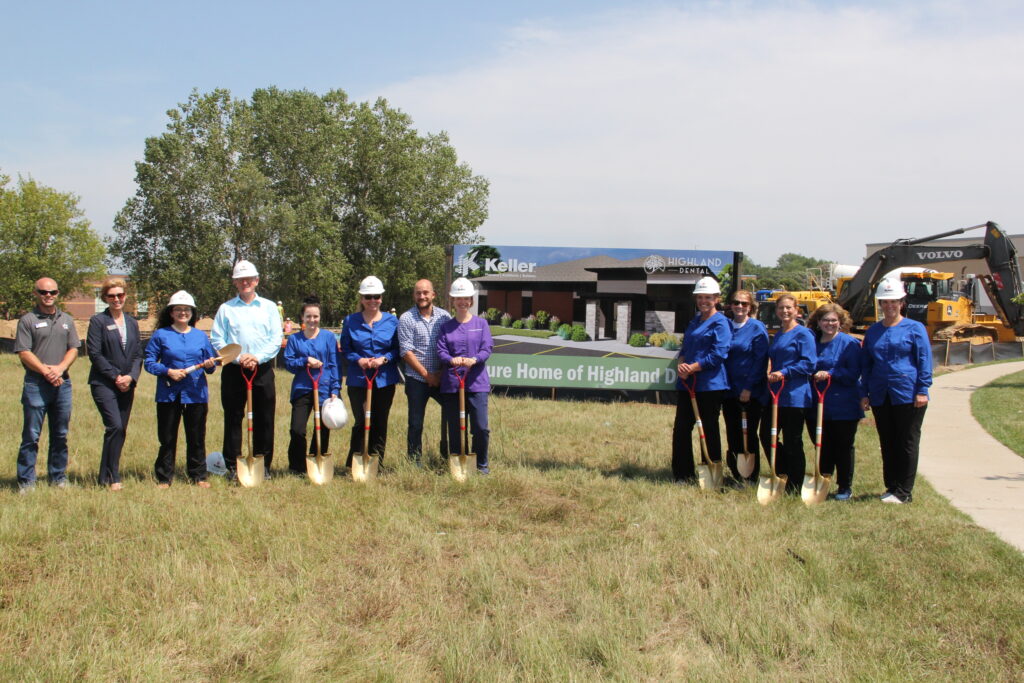
Fort Chamber President Mike Ehlers of MK Cellular, from left, Chamber Director Carrie Chisholm, Veronica Fernandez, Dr. Al Kempema, Danielle Livick, Annette Lawrence, James Garrison, Dr. Brenda Garrison, Jentri Alvarado, Diane Zweifel, Karry Robertson, Lisa Pfuhl, and Ruth Hack stand with ceremonial shovels at the site where a new dental facility will soon be built. Chris Spangler photo.

Ready to break ground are Fort Chamber President Mike Ehlers of MK Cellular, from left, Chamber Director Carrie Chisholm, and project owners Brenda and James Garrison. Chris Spangler photo.

Development is underway. Chris Spangler photo.
Opportunities buys Badger Group building for Advanced Fulfillment & Training Center
(Originally published Aug. 16, 2021.)
On Monday, Aug. 23, Opportunities Inc. will open a state-of-the-art Fulfillment & Training Center in the former Badger Group building on Fort Atkinson’s north side.
Located at 100 East Blackhawk Drive, the clean, climate-controlled center will offer training and career advancements for people interested in order processing, picking and packing, light industrial, shipping, receiving, and warehousing.
“With a unique community focus, it is the goal of the Opportunities Inc. Fulfillment & Training Center to advance a diverse workforce and expand mail-order alternatives for an increasing customer base that engages in online ordering through large retailers and ecommerce sites,” Barbara LeDuc, president/CEO of Opportunities Inc., said Monday.
“Opportunities Inc. has spent nearly a decade preparing to be the local fulfillment solution for the global market and during the pandemic has advanced capabilities in this growing industry,” she added.
LeDuc reported that Opportunities has invested about $3 million in the building and infrastructure “to offer another career pathway for advancing our diverse community workforce.”
The addition of the Fulfillment & Training Center is anticipated to expand Opportunities’ workforce by 25 to 30. That will boost total employment at Opportunities’ East Cramer Street plants and the new training center to roughly 300 workers, including both staff and those on an advancement path.
“Since this is our newest training environment with a host of new skills, we will be building the team from both our other plants and external recruitment efforts that are already underway,” LeDuc said.
She announced that Opportunities is seeking to hire individuals with diverse abilities, especially those with life-challenging circumstances, looking to commit to a 40-hour work week with the goal of advancing skills in a mission-driven organization.
“Opportunities Inc. is committed to comprehensive training and advancement tracks to find hidden skills, develop confidence, personal responsibility and build a dynamic team,” LeDuc said, adding that full-time, competitive wages with a $100 weekly attendance incentive are being offered.
Packaging, Assembly, Pick, Pack, and various other specialized fulfillment industry positions are available.
“We are pleased to offer the community an advanced training and career development center in a growing industry, especially following the COVID pandemic and its impact on business and ecommerce,” LeDuc said. “It is the goal of Opportunities Inc., in its 55th year of incorporation, to continue to be a leader and partner in building the community through training and employment.”
For more information on the Opportunities Inc. Fulfillment and Training Center, persons may contact Robin Kennedy, vice president of mission advancement, at 1-800-314-4567, ext. 3015, or by email at info@oppinc.com.
Meanwhile, the Badger Group was acquired earlier this year by the Oregon, Wis.-based printer Thysse.
Long located in the Gordon F. Day Industrial Park, the Badger Group is reputed for its direct-mail, print services, and digital marketing expertise.
Thysse officials stated at the time of the acquisition that combining forces and relocating to Oregon would offer Badger Group clients increased capacity for current services, a larger team to focus on every project, and additional offerings in vehicle graphics, signage and large format, creative services, promotional items, inventory management and distribution.
The Badger Group was incorporated as Badger Press in the early 1950s. Operating for 25 years as a small print shop, the business was sold in 1975 to Frank Brown, only the tenth employee to work for Badger Press.
In 1990, Brown purchased land at the corner of Blackhawk Drive and State Highway 89/North Main Street and built the current plant. Almost 30 years of evolution and expansion led to a 58,000-square-foot facility.
In April 2018, Badger Group expanded its business once more with the acquisition of a local commercial printer. After a 39-year career in the print industry, Brown passed the reins over to his daughter, Sally O’Brien, who purchased the company from him in December of 2013.
O’Brien, along with many of her sales, project management and production staff members, moved to Thysse. All Badger Group employees reportedly were offered jobs with Thysse.
Thysse is a design, printing, specialty graphics and manufacturing company at its core, but also offers imagination and the tools to customize projects.

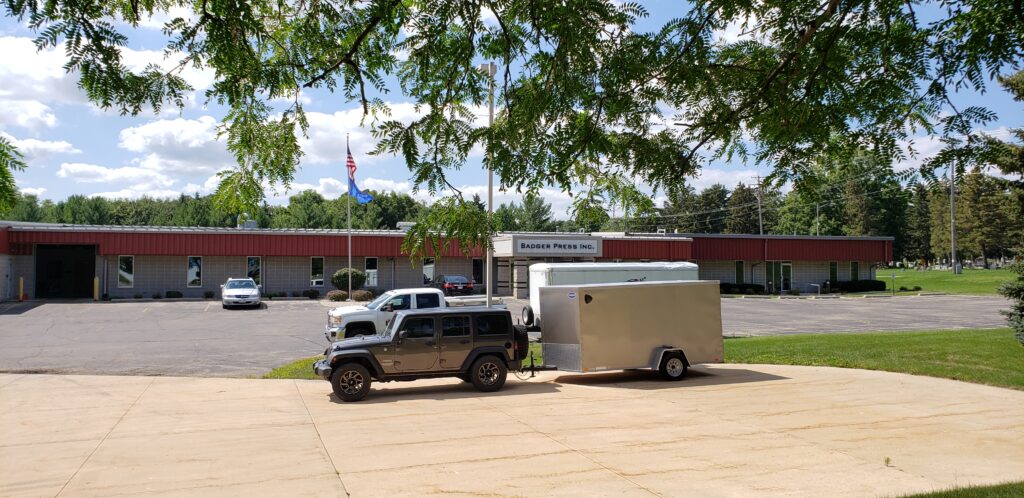
Above two photos: Opportunities Inc. will soon open a state-of-the-art Fulfillment & Training Center in the former Badger Group building on Fort Atkinson’s north side. The addition of the center is anticipated to expand Opportunities’ workforce by 25 to 30 employees. Chris Spangler photos.

Barbara LeDuc, president/CEO of Opportunities Inc. Photo supplied.
Wildermuth Award, Support Staff Award for Excellence nominees named, part 2
(Originally published Aug. 16, 2021.)
Editor’s note: this is a continuation of the Wildermuth Award and Support Staff Award of Excellence nominees. The first group of nominees was announced by the School District of Fort Atkinson in July. The second group was released over several weeks in August.
The School District of Fort Atkinson will present the 36th annual Wildermuth Award for Excellence in Education when teachers gather for their fall convocation Thursday, Aug. 26.
Also to be announced that day will be the recipient of the Support Staff Award for Excellence in Education.
The Wildermuth Award was created to recognize and reward School District of Fort Atkinson staff members — from teachers, librarians and guidance counselors, to school psychologists and any other person working in education — for exemplary work.
Funded by the board of education, Fort Atkinson Education Association and Fort Atkinson Community Foundation, the award is given in memory of Ron Wildermuth, a longtime teacher and director of instruction in the district who died in a motorcycle crash at the beginning of the 1986-87 school year.
Due to Wildermuth’s involvement in the teacher orientation program, the award is presented at the annual teacher gathering at the start of the school year.
The names of some of this year’s Wildermuth Award and Support Staff Award for Excellence in Education nominees were released throughout the month of July, with the remainder released in August up until Aug. 16.
Following are the names of nominees that have been released in August.
Wildermuth Award for Excellence in Education


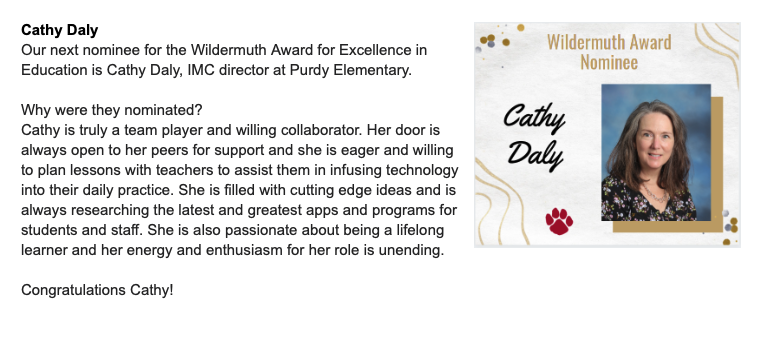
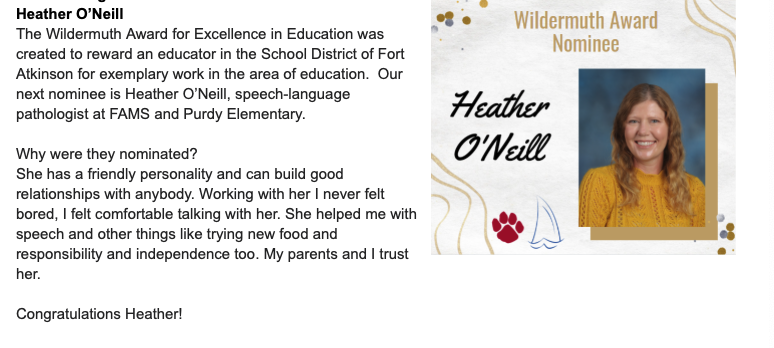



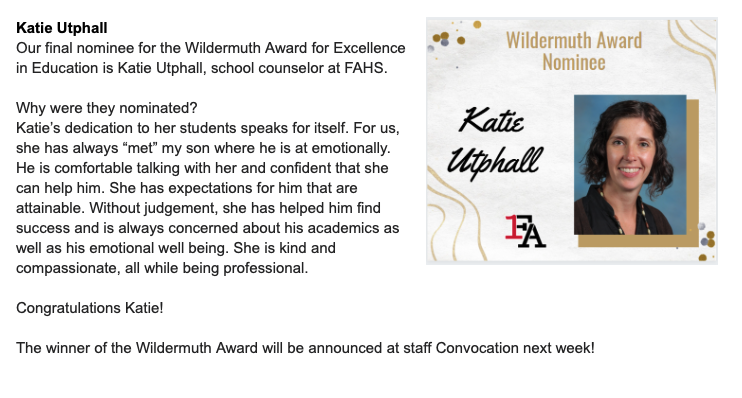
Support Staff Award for Excellence in Education

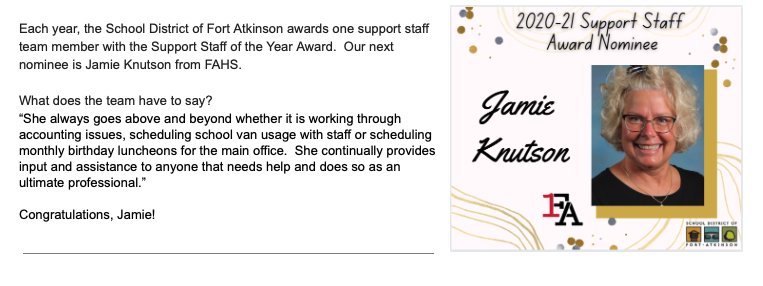



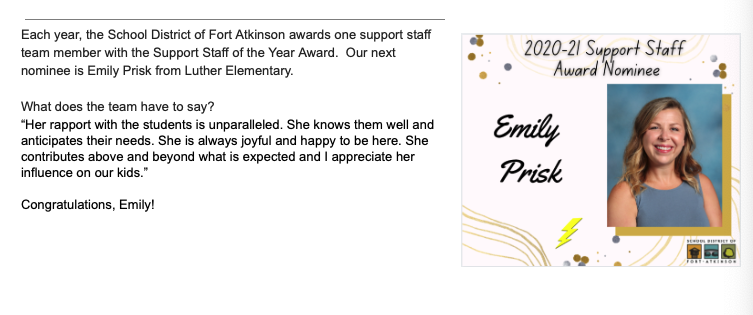


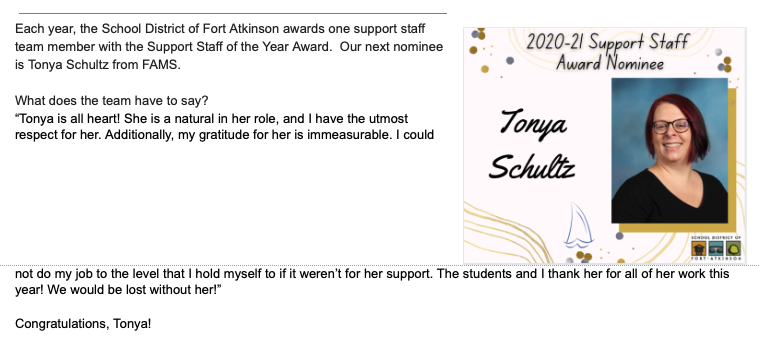







Nominee panels supplied by the School District of Fort Atkinson.
The first set of award nominees released in July is here: https://fortatkinsononline.com/wildermuth-award-award-for-excellence-in-education-nominees-announced/.
City water works
(Originally published Aug. 18, 2021.)
By Kim McDarison
While firefighters battled the five-alarm fire at the D.B. Oak building on Aug. 10, several Fort Atkinson residents learned, perhaps for the first time, about drawdown cycles within the city’s water reserves.
Drawdown cycles aren’t new, City Engineer Andy Selle and Water Utility Supervisor Tim Hayden said.
During an Aug. 10 media briefing, and again during a Fort Atkinson City Council meeting held Tuesday, Fort Atkinson Fire Chief Daryl Rausch reported that one of the city’s water towers had been drawn down to 12 feet of water, which, he said during the media briefing, “is very near the minimum amount that we need to operate the city.”
Even as firefighters used approximately 1 million gallons of water to subdue the fire on the first day of what would become a multiple-day event, the city was never in danger of leaving its utility customers without water, Selle and Hayden said. The system is built to accommodate large fire events that might require large amounts of water, they noted, adding that even as utility users were learning that one of the city’s water towers had water levels of around 12 to 15 feet, the second of the city’s two tanks still had a water level of about 32 feet. Tanks are at full capacity at 40 feet, Hayden said.
So how does the city’s water utility function, and how does drawdown affect it?
In response to our questions, Selle and Hayden recently sat down with Fort Atkinson Online and offered an overview of the city’s water utility system, including how it might be affected by large-scale water usage such as fighting fires.
How does the system work?
The city’s utility uses a system with several components, Hayden and Selle said.
A historical date associated with the beginning of the city’s water utility might be 1901, the year in which the now-decommissioned water tower at the corner of South Fourth Street East and High Street was built.
Documentation provided by Selle begins with some 35,297 feet of water main piping placed between 1901 and 1920. Today the city has 396,371 feet, or approximately 74 miles, of piping of varying sizes and ages.
Also documented are the ages of the city’s deep-aquifer wells. Wells, designated No. 1 and No. 2, have been decommissioned, with those dates unknown, Selle said, adding that a decision to decommission those wells might have been made because they weren’t deep enough or they were perhaps located in a disadvantageous spot.
Of the city’s five active deep-aquifer wells, No. 3 was dug in 1931; No 4, in 1946; No. 5, in 1952; No. 6, in 1958, and No 7, in 1967.
All of the city’s wells are approximately 1,000 feet deep. As a matter of comparison, Selle said, the average private well in the area is approximately 100-200 feet deep.
The number of wells a city might need is developed using population statistics and also the amount and size of industry in the area. In Fort Atkinson, Hayden said, Jones Dairy Farm on Jones Avenue and OSI on Industrial Drive are two of the utility’s largest water users. Industrial utility users are responsible for about 45% of the city’s total water consumption, according to a chart shared by Selle and developed in 2019.
Other water consumers, according to the 2019 chart, include residential consumers, who account for 28% of consumption; commercial users, who account for some 10%, and consumers in a category labeled “multi-family,” who use 4% of water generated by the system. Two other categories: “system users” and “public” each consume 1%. Another 11% of consumption is attributed to “water loss,” according to the chart.
Additionally, the chart noted, in 2019, on an average day, water demand used by the city’s utility rate payers was 1.81 million gallons per day, as compared to a maximum usage day, when demand was calculated at 3.35 million gallons. During peak usage hours, demand was calculated at 3,700 gallons per minute.
Under normal circumstances, Selle said, city staff plans for peak usage drawdowns and allows time in-between for the system to replenish its reservoirs. Also water peak demand is not normally sustained for 12 hours continuously.
Water is pumped from the five active wells into the system where it’s carried through main and lateral pipes to various system components throughout the city.
Among the miles of piping, Selle said, age and size varies.
The larger pipes, up to 18 inches in diameter, are typically used as mains. Water mains bring water to smaller pipes called laterals, which connect homes and businesses to the city system. While the utility-owned equipment, such as wells, towers, reservoirs, booster stations and mains, are maintained by the city, property owners and the city share responsibility for maintaining laterals, Selle said, adding that the city is responsible for the lateral from the main to the shutoff valve in the terrace; the property owner is responsible from the terrace to the building.
The smaller pipes — some as small as one inch in diameter — are typically among the city’s oldest. One-inch pipes still active in the city’s system were installed between 1941 and 1980, according to a utility report generated in 2020.
The city has 31,565 feet of 16-inch in diameter pipe, a majority of which is used as mains connecting the city’s 600 water hydrants, located nearly every two blocks throughout the community.
Within the system, the city has two elevated towers and two reservoirs all of which store water and contribute to generating water pressure, Hayden said.
To create water flow and pressure, elevated towers use gravity and reservoirs use pumps. To help increase flow, the system has three booster pumping stations. In the southwest corner of the city, there is also a pressure zone supplied by one of the booster stations, Hayden said.
To create the kind of water pressure people typically like in the shower, the system produces 60-70 pounds per square inch (psi). While pressure in communities may vary, Selle said, that’s an industry standard.
When the pressure falls below 35 psi, Hayden said, that’s when people begin to notice. During the D.B. Oak building fire, he said, he did not receive any calls from people who were advising him that their pressure was low.
Although, Selle said, “an extended event like the fire could cause this to occur.”
Customers usually notice low-pressure events, Selle said, but pressure that is too high can also create concerns.
That’s when the fixtures in homes and buildings are at risk. Gaskets could fail and pipes could break, he said.
What happened during the fire?
Looking at Aug. 10, the day the fire began, Hayden said, the first thing to understand is that both of the city’s tanks hold 40 feet worth of water. That’s the depth of the tanks, which equates to about a half of a million gallons in each tank. The city’s full reserve of water is 1.635 million gallons.
Reserve, he said, is what’s being stored for usage.
“When thinking of supply, that’s what we can pump out,” Selle said.
“During the fire, we maxed out at 4,600 gallons per minute,” Hayden said. “And we did that continuously for 12 hours,” he added.
“Each of the city’s wells are capable of pumping 1,000 gallons per minute. So all the wells working together were able to pump the 4,600 gallons per minute needed to fight the fire,” Hayden continued.
During a normal day, Selle said, some of the city’s wells will run for about an hour and then the pumps will turn off for five or six hours.
The system, which is completely automated, is always communicating with its components, Hayden said.
On an average day, the city uses about 1.8 million gallons of water. The components of the system, the five wells, two towers and two reservoirs share the load, Selle said. The wells do not pump out water constantly throughout the day, as they did on Aug. 10.
With a normal day, the city works to store water in the tanks and reservoirs by pumping water from the wells in advance of peak usage times, which, Selle said, are typically in the morning and evening, when residents are home. Using that timetable, Selle said, the reservoirs are full during times of high demand. People take showers in the morning, use the water in the reservoirs, and then the pumps go to work to replenish them. The water is replaced in the reservoirs in advance of each predicted time of peak usage, he said.
Within the reservoirs is also water that is being stored just in case of fires. Most of the system is built for fires — most of the system is built to supply water for fire protection, he added.
During the Aug. 10 fire event, after 12 hours, one of the city’s water towers, the one on the north side, was drawn down to a low, but at the same time, the tower on the city’s south side was at 31 feet, and both reservoirs were full the entire time, Hayden said.
To replenish the towers, Selle said, the system needed time to pump more water from the wells.
Looking at the dynamics of the towers, he said, “we can pump more water into them than we can out of them.
“That means we can pump more in from the wells. Once they are full, we use booster pumps to pump water into the mains. That’s our full distribution system. The water flows from the wells to the towers and reservoirs, which fill simultaneously. Well 5 is the only one that pumps directly into the Jones reservoir which holds 300,000 gallons.”
The other reservoir, the downtown reservoir, holds 250,000 gallons, Selle added.
How fast water can be delivered and from which part of the system it draws first is determined by the size of the main and the location of the asset, Hayden said.
The south tower is located near the larger industrial users and has a larger main to deliver water more quickly. Residential areas have smaller pipes, Selle said.
Older piping in some parts of the city provides challenges, Selle said, adding that fighting the fire was a great example of those challenges.
“In the older area of the city, we did not have 16-inch mains nearby, so we did not have the ability to deliver more water to meet the need. As pipes get smaller — as you neck down water — you are not able to run 4,000 gallons per minute through the fire hose,” Selle said.
On Aug. 10, firefighters were distributing water at the site at a rate of about 1,000 gallons per minute through each of at least three hoses, Hayden said.
“They were draining water faster than we can recover it. The north tower was closer to the fire so it dropped faster,” he added.
While the system is connected, Selle said, “it takes water from the path of least resistance first. In this case, with this fire, that was the north tower.”
To engage with utility assets on the city’s south side, Selle said, water drawn must flow through pipes underneath the Rock River.
“It has to go a big distance. With water, the further the run, the less water (firefighters) can get,” Selle noted.
Describing the city’s system, Selle said it is splint between the city’s north side and south side by the Rock River. The two sides are connected by two mains, a 16-inch line and a 10-inch line, both of which carry water under the river.
While the water needed for the fire was pulling from the entire system, it will pull from the nearer point in the system first because it is closer, so the north tank was being drawn down faster than the south tank during the fire, he said.
Would the firefighters have needed even more water, Selle said, there is an option to draw water out of the river, but, he said, while that option is available in theory, he has never used it.
“It has never been done here, at least since I’ve been here, and that’s since 2015,” he said.
“In the downtown area, many of the pipes are older and are 2 inches in diameter. Those sized pipes work great for residential needs, but they are not the best for fighting fires. If there was a large fire downtown, the river might come into play,” he added.
What might have been done differently?
Said Hayden: “If everybody would have stopped using water, it wouldn’t have helped them (firefighters).”
“Your shower uses less than two gallons per minute (of water) and that’s the biggest draw in a house,” Selle said, adding that even as utility consumers used water during the fire event, that usage would not have made enough impact to the water supply needed by firefighters one way or another.
“During the event, we got no calls about low pressure or people with color in their water. When the hydrants are flushed, some people get color in their water,” Hayden said, adding that the drawdown and pumping throughout the system during the fire event had an impact that might be similar to flushing the city’s hydrants.
Typically, he said, “the city flushes hydrants twice a year. A lot of residents understand they can expect that (color in water) and it clears up quickly.
“We do that to keep the water clean,” he said, adding that the drawdown and restorative pumping ostensibly added another cleaning cycle to the city’s system.

Fort Atkinson Water Utility Supervisor Tim Hayden stands near one of the city’s three pumping booster stations. Designed to supply rate payers with drinking water and water for emergency use such as fires, the city’s system has five active wells, two elevated water towers, two reservoirs, 600 hydrants and some 74 miles of piping to deliver water throughout the city. Water is typically consumed at a rate of 1.81 million gallons each day. Kim McDarison photo.
Council approves alcohol prohibitions on streets, sidewalks
(Originally published Aug. 18, 2021.)
By Kim McDarison
The Fort Atkinson City Council Tuesday approved an ordinance prohibiting open containers of alcohol on streets, sidewalks and right-of-ways.
The measure passed by a vote of 3-2, with Councilmen Megan Hartwick and Bruce Johnson voting against it.
Previous discussion
Introduced in June — along with three other alcohol- and public-nuisance-related ordinances which were earlier approved — the alcohol prohibition on streets and sidewalks ordinance was tabled in July after council agreed to give city staff time to more clearly understand any potential ramifications of the proposal.
In July, during discussion, Hartwick, Johnson and Councilman Mason Becker expressed concerns with the ordinance, citing public feedback in opposition to the measure, with Becker further noting concerns stemming from what he said was a “sense of personal freedom.”
Johnson expressed concern about residents who might be cited for sitting near the river with a fishing pole and a beer.
Hartwick said members of the public with whom she had spoken saw the measure as an “overregulation.”
Council asked city staff to explore other remedies to address Fort Atkinson Police Chief Adrian Bump’s concerns regarding enforcement issues as they related to nuisance behavior, especially in the city’s downtown and Riverwalk areas.
Tuesday’s discussion
During Tuesday’s meeting, City Manager Rebecca Houseman LeMire shared with council the results from an inquiry made by City Clerk Michelle Ebbert, which found that of 54 surrounding municipalities responding, 92% did not allow possession of open alcohol in public spaces within their communities. Besides, Fort Atkinson, Ebbert found, three communities — the town of Plum Lake, and the cities of Eagle River and Delafield — allowed open intoxicants in public areas.
LeMire noted that Bump had approached her in March with a request that the city review several ordinances relating to alcohol possession and consumption. His experiences, along with those of his officers, LeMire said, “pointed to the need for additional tools to reduce the nuisance and sometimes dangerous behaviors associated with overconsumption of alcohol.”
According to LeMire, Bump cited such behaviors as disorderly conduct, public intoxication, loud noise, public urination, littering, property damage and fighting.
After the proposed alcohol prohibition on streets and sidewalks ordinance was tabled, LeMire said, it was returned to the city’s Ordinance Committee where it was reviewed on Aug. 3.
The committee recommended, LeMire stated, that the “matter go back to the council on Aug. 17 for definitive action.”
Bump, addressing council, said he wanted to reiterate some earlier talking points.
Bump said he brought the ordinance forward for consideration with the encouragement of the city’s patrol officers.
“Over the last four years, multiple officers came to me and mentioned the need for an ordinance of this type. It wasn’t just a one-time comment that motivated me to take action. This is an accumulation over four years where I finally realized that I have this many officers coming to me and saying this is a need,” Bump said.
“(Officers) want this, and can use this in their daily work as an additional tool to take action and to use at their discretion when dealing with issues … related to public drinking and public intoxication” Bump said.
He cited infractions listed by the city manager, adding: “This is an ordinance to address the root cause of multiple issues, identifying alcohol and drinking as a “constant factor in all of those events.”
Bump said he addressed the Ordinance Committee in August and shared three recent calls for service, which, he said, painted a clear picture of how having an ordinance prohibiting open intoxicants in public places such as streets, sidewalks and right-of-ways was important. He further cited a letter submitted to council written by the city’s library director, Eric Robinson, enumerating incidents with intoxicated individuals both inside and outside of the library.
Hartwick expressed frustration with the process, noting: “It seems a little odd to me to have something come back that we had had the discussion as a council to table in the hopes that it would get reworked or maybe be reframed a little bit differently.”
When the ordinance reappeared on the council’s agenda, she said, “I actually made a point to reach out directly to a few of our local officers. I did get some communication back from three of them — which certainly is not a majority or a reflection of the force by any means — but I guess I was kind of anticipating all three of them to say, ‘yes, we need you to pass this, we need this to happen,’ and none of the three of them said that.”
Hartwick said the officers with whom she spoke discussed with her the possibility of using a curfew as a solution.
“Maybe this is something that should be enacted citywide after a certain time at night because the majority of our issues are coming up at night,” she said, adding that the three officers with whom she spoke agreed that the ordinance as proposed would likely not serve to deter nuisance behaviors stemming from alcohol use.
Said Hartwick: “They said, ‘we don’t feel that this is going to deter these chronic situations that we have with certain individuals in town because a local ordinance doesn’t necessarily allow us to inflict a harsher penalty or a harsher punishment.’”
Bump said using a curfew as a solution had not until Tuesday been presented to him for consideration.
“I think, first of all, you need to decide as a city: are we OK with the behaviors and the actions, and are we OK with the public drinking? And if we’re not OK, then we pass the ordinance as is. If we are not OK with it, but we still want to meet in the middle ground and ensure that we can take some sort of enforcement action, then we need to look at an option that may be some type of restriction. I think there needs to be a decision from the city council which direction we want to go,” Bump said.
Addressing Hartwick’s comments relating to conversations she had with officers, Bump said: “The officers that you reached out to, the reason that you probably didn’t get a huge response, is because it’s not very common for a city council person to reach out to a police officer, and the police officer or city employee might be hesitant to respond to that question for fear of making their boss look bad.
“One of them came to me today and said, ‘hey, I got this message from city council. What do you want me to do?’ and I said, ‘I want you to do what you think is right. Answer her question based on your experience and how you truly feel.’”
Hartwick said she reached out to three and spoke with three, adding that she reached out to gain perspective as part of a process when making a decision about another person’s job.
Johnson said that while he did not reach out to officers, he did speak with “a couple dozen citizens.”
“They were astonished that we were going to do this. It wasn’t popular,” he said.
Johnson said that on several occasions he asked Bump about different scenarios and how they might be handled.
Citing examples of concerning scenarios, Johnson asked: If an individual was going fishing near the river or going to a Packer game party with a beer in his hand, would officers write citations?
Bump said officers would use discretion with this ordinance, as they do with every ordinance.
“We want to gain compliance and we want to make positive impacts. We can do that through education, through warnings and through citation,” he said, adding: “I don’t tell my officers that they have to do one thing or another; they have to evaluate each situation based on the facts they have before them and make a decision that is appropriate. We entrust them, and we coach and mentor them, to police our community in this type of manner.”
Johnson said he has lived in Fort Atkinson for 63 years.
“This is the first time I’m aware that we have a public drinking problem on the sidewalks. I’ve never heard of that before. And I don’t think that exists that way. At the Ordinance Committee, I saw the whole committee kind of sway down a direction that I don’t agree with when you gave three examples from the prior weekend. Can you repeat those for us?” Johnson asked.
Bump read three calls for service received by his department just over two weeks ago.
In the first incident, he said, a female in her 20s or 30s was found unresponsive on the bathroom floor in Ralph Park. The individual making the complaint advised officers that the female appeared to be disoriented. She got up and tried to walk away. A boyfriend carried her purse. Alcohol could be smelled.
In a second incident, Bump read, a person making a complaint advised law enforcement that they had rented Jones Park for a kids’ party. The complainant reported that there were three intoxicated males in the men’s bathroom and one was passed out. The complainant informed police that she did not feel comfortable sending children into the bathroom.
In a third incident, Bump said, a complainant advised police that he had witnessed an intoxicated man who was having trouble walking along Whitewater Avenue near Purdy Elementary School. The complainant witnessed the male urinate in public while on Whitewater Avenue.
Said Bump: “We want to reduce the behavior. We don’t want to have to write tickets. We want to have the right laws in place, the right ordinances in place, because the ordinances themselves have a positive impact on the community. And then, as a last resort, officers have to address the people who violate those laws. And that’s what we want to get away from.”
Citing the letter from the library director, Johnson said he could see a need for the ordinance near the library, but, he said, “I think we painted it with too broad a brush; we painted the whole city with something we should have singled out an area of town that we should enforce this kind of ordinance.”
Looking at other solutions, Hartwick said she could see complications with trying to create restrictions within a geographic area, but, she said, she did see viability in using the curfew approach.
She said the officers she spoke with told her most of the issues take place at night.
She suggested trying a curfew approach and then reevaluating the idea in six months.
Said Becker: “Like many people, when this ordinance was first proposed, I had a lot of concerns and reservations, and as I have said before, I don’t think the role of the city council is just to be like a kind of a pass-through check box.”
Becker pointed to Fort Atkinson’s minority position within Wisconsin of being one of only four communities that allows open intoxicants in public places.
While he knew the city was in the minority, he said, “I didn’t realize that we’re in an extreme minority based on the feedback that Clerk Ebbert was able to gather from over 50 different communities. I mean I look at this list and the ordinance simply brings us in line with most of our neighbors … I see on this list Watertown, Whitewater, Oconomowoc, Lake Mills, Jefferson, and as far as I know, people can still enjoy alcohol in many different ways in most communities. I haven’t heard that there’s a big crackdown on people enjoying a beer in Jefferson for example.”
Becker said he believed the calls for service cited by Bump served as good examples, showing a need for the proposed ordinance.
“I personally wish there wasn’t a need. I would like to think that our community can hold their liquor responsibly and enjoy it wherever they want and it would be fine, but unfortunately I think too many bad apples have kind of caused a need for this to come before us.”
If, in the future, council was made aware that the police department was misapplying the ordinance, it could be revisited, Becker said.
“Our police chief has made a very good case here and I think we’ve established a need, and I think it simply is bringing us in line with all of our neighbors. Where as before I was kind of leaning against this ordinance, I think tonight, I’m leaning in favor of it in the spirit of simply giving the police another tool to bring about reasonable compliance,” Becker said.
Council President Chris Scherer asked Bump if any of the people in his examples were given citations.
Bump said in the first scenario, no citations were issued and the couple was “moved along.”
“We had nothing we could really cite them for,” he said.
In the second scenario, one person was cited and another was taken into custody for reasons other than those enumerated with the initial call.
In the third scenario, he said, the individual was cited for urinating in public.
“We now have that ordinance,” Bump said.
Scherer said he believed council needed to consider the city’s “public perception.” He took encouragement, he said, from knowing that the police would have an enforcement tool to help address the types of behaviors Bump cited appropriately.
“We are elected representatives, but we are all leaders, and I think we are torn a little bit because we want to represent our constituents, but we also know we want to lead our community in the right direction,” Scherer said.
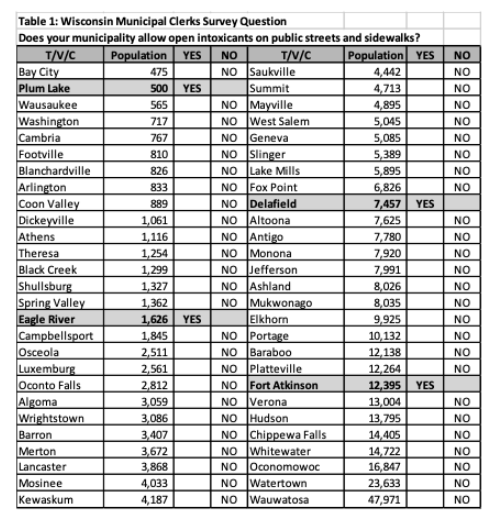
A list of 54 communities, as developed by the city, shows the answer given by their city clerks when asked: Does your municipality allow open intoxicants on public streets and sidewalks?
Council approves alcohol prohibitions on streets, sidewalks
(Originally published Aug. 18, 2021.)
By Kim McDarison
The Fort Atkinson City Council Tuesday approved an ordinance prohibiting open containers of alcohol on streets, sidewalks and right-of-ways.
The measure passed by a vote of 3-2, with Councilmen Megan Hartwick and Bruce Johnson voting against it.
Previous discussion
Introduced in June — along with three other alcohol- and public-nuisance-related ordinances which were earlier approved — the alcohol prohibition on streets and sidewalks ordinance was tabled in July after council agreed to give city staff time to more clearly understand any potential ramifications of the proposal.
In July, during discussion, Hartwick, Johnson and Councilman Mason Becker expressed concerns with the ordinance, citing public feedback in opposition to the measure, with Becker further noting concerns stemming from what he said was a “sense of personal freedom.”
Johnson expressed concern about residents who might be cited for sitting near the river with a fishing pole and a beer.
Hartwick said members of the public with whom she had spoken saw the measure as an “overregulation.”
Council asked city staff to explore other remedies to address Fort Atkinson Police Chief Adrian Bump’s concerns regarding enforcement issues as they related to nuisance behavior, especially in the city’s downtown and Riverwalk areas.
Tuesday’s discussion
During Tuesday’s meeting, City Manager Rebecca Houseman LeMire shared with council the results from an inquiry made by City Clerk Michelle Ebbert, which found that of 54 surrounding municipalities responding, 92% did not allow possession of open alcohol in public spaces within their communities. Besides, Fort Atkinson, Ebbert found, three communities — the town of Plum Lake, and the cities of Eagle River and Delafield — allowed open intoxicants in public areas.
LeMire noted that Bump had approached her in March with a request that the city review several ordinances relating to alcohol possession and consumption. His experiences, along with those of his officers, LeMire said, “pointed to the need for additional tools to reduce the nuisance and sometimes dangerous behaviors associated with overconsumption of alcohol.”
According to LeMire, Bump cited such behaviors as disorderly conduct, public intoxication, loud noise, public urination, littering, property damage and fighting.
After the proposed alcohol prohibition on streets and sidewalks ordinance was tabled, LeMire said, it was returned to the city’s Ordinance Committee where it was reviewed on Aug. 3.
The committee recommended, LeMire stated, that the “matter go back to the council on Aug. 17 for definitive action.”
Bump, addressing council, said he wanted to reiterate some earlier talking points.
Bump said he brought the ordinance forward for consideration with the encouragement of the city’s patrol officers.
“Over the last four years, multiple officers came to me and mentioned the need for an ordinance of this type. It wasn’t just a one-time comment that motivated me to take action. This is an accumulation over four years where I finally realized that I have this many officers coming to me and saying this is a need,” Bump said.
“(Officers) want this, and can use this in their daily work as an additional tool to take action and to use at their discretion when dealing with issues … related to public drinking and public intoxication” Bump said.
He cited infractions listed by the city manager, adding: “This is an ordinance to address the root cause of multiple issues, identifying alcohol and drinking as a “constant factor in all of those events.”
Bump said he addressed the Ordinance Committee in August and shared three recent calls for service, which, he said, painted a clear picture of how having an ordinance prohibiting open intoxicants in public places such as streets, sidewalks and right-of-ways was important. He further cited a letter submitted to council written by the city’s library director, Eric Robinson, enumerating incidents with intoxicated individuals both inside and outside of the library.
Hartwick expressed frustration with the process, noting: “It seems a little odd to me to have something come back that we had had the discussion as a council to table in the hopes that it would get reworked or maybe be reframed a little bit differently.”
When the ordinance reappeared on the council’s agenda, she said, “I actually made a point to reach out directly to a few of our local officers. I did get some communication back from three of them — which certainly is not a majority or a reflection of the force by any means — but I guess I was kind of anticipating all three of them to say, ‘yes, we need you to pass this, we need this to happen,’ and none of the three of them said that.”
Hartwick said the officers with whom she spoke discussed with her the possibility of using a curfew as a solution.
“Maybe this is something that should be enacted citywide after a certain time at night because the majority of our issues are coming up at night,” she said, adding that the three officers with whom she spoke agreed that the ordinance as proposed would likely not serve to deter nuisance behaviors stemming from alcohol use.
Said Hartwick: “They said, ‘we don’t feel that this is going to deter these chronic situations that we have with certain individuals in town because a local ordinance doesn’t necessarily allow us to inflict a harsher penalty or a harsher punishment.’”
Bump said using a curfew as a solution had not until Tuesday been presented to him for consideration.
“I think, first of all, you need to decide as a city: are we OK with the behaviors and the actions, and are we OK with the public drinking? And if we’re not OK, then we pass the ordinance as is. If we are not OK with it, but we still want to meet in the middle ground and ensure that we can take some sort of enforcement action, then we need to look at an option that may be some type of restriction. I think there needs to be a decision from the city council which direction we want to go,” Bump said.
Addressing Hartwick’s comments relating to conversations she had with officers, Bump said: “The officers that you reached out to, the reason that you probably didn’t get a huge response, is because it’s not very common for a city council person to reach out to a police officer, and the police officer or city employee might be hesitant to respond to that question for fear of making their boss look bad.
“One of them came to me today and said, ‘hey, I got this message from city council. What do you want me to do?’ and I said, ‘I want you to do what you think is right. Answer her question based on your experience and how you truly feel.’”
Hartwick said she reached out to three and spoke with three, adding that she reached out to gain perspective as part of a process when making a decision about another person’s job.
Johnson said that while he did not reach out to officers, he did speak with “a couple dozen citizens.”
“They were astonished that we were going to do this. It wasn’t popular,” he said.
Johnson said that on several occasions he asked Bump about different scenarios and how they might be handled.
Citing examples of concerning scenarios, Johnson asked: If an individual was going fishing near the river or going to a Packer game party with a beer in his hand, would officers write citations?
Bump said officers would use discretion with this ordinance, as they do with every ordinance.
“We want to gain compliance and we want to make positive impacts. We can do that through education, through warnings and through citation,” he said, adding: “I don’t tell my officers that they have to do one thing or another; they have to evaluate each situation based on the facts they have before them and make a decision that is appropriate. We entrust them, and we coach and mentor them, to police our community in this type of manner.”
Johnson said he has lived in Fort Atkinson for 63 years.
“This is the first time I’m aware that we have a public drinking problem on the sidewalks. I’ve never heard of that before. And I don’t think that exists that way. At the Ordinance Committee, I saw the whole committee kind of sway down a direction that I don’t agree with when you gave three examples from the prior weekend. Can you repeat those for us?” Johnson asked.
Bump read three calls for service received by his department just over two weeks ago.
In the first incident, he said, a female in her 20s or 30s was found unresponsive on the bathroom floor in Ralph Park. The individual making the complaint advised officers that the female appeared to be disoriented. She got up and tried to walk away. A boyfriend carried her purse. Alcohol could be smelled.
In a second incident, Bump read, a person making a complaint advised law enforcement that they had rented Jones Park for a kids’ party. The complainant reported that there were three intoxicated males in the men’s bathroom and one was passed out. The complainant informed police that she did not feel comfortable sending children into the bathroom.
In a third incident, Bump said, a complainant advised police that he had witnessed an intoxicated man who was having trouble walking along Whitewater Avenue near Purdy Elementary School. The complainant witnessed the male urinate in public while on Whitewater Avenue.
Said Bump: “We want to reduce the behavior. We don’t want to have to write tickets. We want to have the right laws in place, the right ordinances in place, because the ordinances themselves have a positive impact on the community. And then, as a last resort, officers have to address the people who violate those laws. And that’s what we want to get away from.”
Citing the letter from the library director, Johnson said he could see a need for the ordinance near the library, but, he said, “I think we painted it with too broad a brush; we painted the whole city with something we should have singled out an area of town that we should enforce this kind of ordinance.”
Looking at other solutions, Hartwick said she could see complications with trying to create restrictions within a geographic area, but, she said, she did see viability in using the curfew approach.
She said the officers she spoke with told her most of the issues take place at night.
She suggested trying a curfew approach and then reevaluating the idea in six months.
Said Becker: “Like many people, when this ordinance was first proposed, I had a lot of concerns and reservations, and as I have said before, I don’t think the role of the city council is just to be like a kind of a pass-through check box.”
Becker pointed to Fort Atkinson’s minority position within Wisconsin of being one of only four communities that allows open intoxicants in public places.
While he knew the city was in the minority, he said, “I didn’t realize that we’re in an extreme minority based on the feedback that Clerk Ebbert was able to gather from over 50 different communities. I mean I look at this list and the ordinance simply brings us in line with most of our neighbors … I see on this list Watertown, Whitewater, Oconomowoc, Lake Mills, Jefferson, and as far as I know, people can still enjoy alcohol in many different ways in most communities. I haven’t heard that there’s a big crackdown on people enjoying a beer in Jefferson for example.”
Becker said he believed the calls for service cited by Bump served as good examples, showing a need for the proposed ordinance.
“I personally wish there wasn’t a need. I would like to think that our community can hold their liquor responsibly and enjoy it wherever they want and it would be fine, but unfortunately I think too many bad apples have kind of caused a need for this to come before us.”
If, in the future, council was made aware that the police department was misapplying the ordinance, it could be revisited, Becker said.
“Our police chief has made a very good case here and I think we’ve established a need, and I think it simply is bringing us in line with all of our neighbors. Where as before I was kind of leaning against this ordinance, I think tonight, I’m leaning in favor of it in the spirit of simply giving the police another tool to bring about reasonable compliance,” Becker said.
Council President Chris Scherer asked Bump if any of the people in his examples were given citations.
Bump said in the first scenario, no citations were issued and the couple was “moved along.”
“We had nothing we could really cite them for,” he said.
In the second scenario, one person was cited and another was taken into custody for reasons other than those enumerated with the initial call.
In the third scenario, he said, the individual was cited for urinating in public.
“We now have that ordinance,” Bump said.
Scherer said he believed council needed to consider the city’s “public perception.” He took encouragement, he said, from knowing that the police would have an enforcement tool to help address the types of behaviors Bump cited appropriately.
“We are elected representatives, but we are all leaders, and I think we are torn a little bit because we want to represent our constituents, but we also know we want to lead our community in the right direction,” Scherer said.
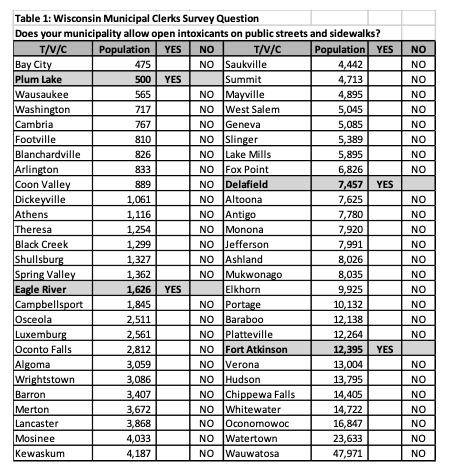
A list of 54 communities, as developed by the city, shows the answer given by their city clerks when asked: Does your municipality allow open intoxicants on public streets and sidewalks?
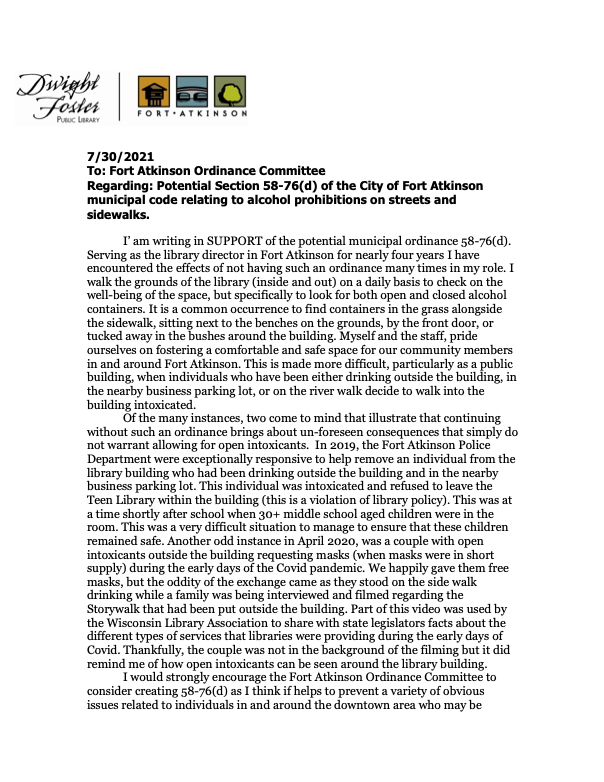

The above letter from the city’s public library director was submitted to council is support of the city ordinance relating to alcohol prohibitions on streets and sidewalks.
Council to return to in-person meetings in September
(Originally published Aug. 18, 2021.)
By Kim McDarison
Fort Atkinson City Manager Rebecca Houseman LeMire Tuesday updated council members regarding the city’s intent to return to in-person meetings beginning Sept. 7.
LeMire said upcoming meetings will be conducted using a hybrid format, allowing those wishing to attend to do so in person at the city’s municipal building or through Zoom.
The council approved plans to install equipment to accommodate the use of a hybrid approach in June.
In a related action, council approved a first reading of an amendment to city code, allowing electronic participation at meetings by members of the city council and its associated boards, commissions and committees.
A second reading of the ordinance is anticipated to take place at the council’s next meeting scheduled for Sept. 7.
Ordinances and amendments that change them in the city of Fort Atkinson are subject to three readings unless council opts to suspend its rules and waive additional readings.
Reading from a memo to council, LeMire said: “Due to the COVID-19 pandemic over the last 18 months, the city has transitioned from in-person city council, board, commission and committee meetings to fully remote or virtual meetings. The city has been using the Zoom teleconference application to support virtual public meetings with success. City staff also use various teleconference applications for staff meetings, meetings with the public and consultants, and any other meetings when the virtual option is convenient and desirable.
“The City of Fort Atkinson desires to continue to support virtual public meetings through the pandemic and in the future when appropriate and convenient for the city council, members of boards, commissions, and committees; staff members; and the general public. Additionally, the city desires to provide an option for hybrid meetings in the future, when the city’s technology in the council meeting room allows for it, to support both in-person participation and virtual participate in a hybrid environment.”
Funding for upgrades to the council chamber to accommodate the hybrid format was approved in an amount not to exceed $31,766, with those monies coming through a grant provided by the American Rescue Plan Act (ARPA), which, City Clerk Michelle Ebbert said in June, provides some funding for eligible projects that include investments in public facilities or adaptations to public buildings to “implement COVID-19 mitigation tactics.”
A story about upgrades approved for the council chamber to accommodate the hybrid meeting approach is here: https://fortatkinsononline.com/city-approves-funding-for-interactive-council-chambers-to-facilitate-hybrid-meetings/.
Hartwick: ‘I didn’t agree with this one,’ but have ‘utmost faith in our officers’
(Originally published Aug. 19, 2021.)
Dear editor,
On Tuesday, our city council voted to approve an ordinance prohibiting open containers of alcohol on streets, sidewalks and right-of-ways. The motion passed by a vote of 3-2.
I was one of those “no” votes, and I’d like to explain to our residents why I did not support it.
When this ordinance was previously brought before us, our council made the decision to table it, as it was deemed too broad and we felt adding more stipulations to it would help better address issues related to public intoxication, while also not negatively impacting those who utilize the privilege appropriately. I also openly shared that update with our community after that decision was made.
Unfortunately the ordinance was brought back without any added stipulations that would allow for those not abusing the privilege to still enjoy a beverage on a walk, down by the river, etc. For that reason, and even though we are one of very few communities that still allowed this, I did not feel I could support approving the change.
I debated on this very heavily, had many conversations about it – including those with local establishment owners, city leaders, and a few Fort police officers, and ultimately I did not feel that I could support it as written, nor do I feel it will adequately deter the negative behaviors of those who are causing problems.
It is NOT a reflection of whether or not I support our Fort PD. And I have the utmost faith that our officers will apply discretion as necessary and enforce the ordinance change as it relates to protecting public safety.
I appreciate that our council agrees on many (most) things related to our city. But I also do not necessarily think it is a bad thing when there are disagreements and split votes. It means we are bringing our differing viewpoints to the conversation, sticking up for our community as we feel is needed, and ensuring adequate conversation and debate is had on issues.
I didn’t agree with this one, but I do support our process, our officers, and our city.
Please feel free to (Facebook) message me with any questions or email me at mhartwick@fortatkinsonwi.net.

Fort Atkinson City Councilwoman Megan Hartwick
District electors approve operating budget, pay increase for school board members
(Originally published Aug. 20, 2021.)
By Kim McDarison
Some 20 electors from within the School District of Fort Atkinson — many of whom were members of the district’s faculty and administration — attended the district’s annual meeting of electors Thursday and granted final approval to the 2021-2022 operating budget, including a tax levy of $18.8 million to support it.
Electors also approved a pay increase of $500 for each of the district’s five board members, increasing members’ annual paycheck from $1,500 to $2,000, among other items.
Operating budget
Electors approved an $18,825,053 tax levy to be paid by property owners across the district in support of the $40,335,361 total budget, which will be used to support operating costs during the 2021-2022 school year.
Property owners in December can expect to see on their tax bills a tax levy rate of $10.96 per $1,000 of equalized property value, which represents a 15-cent increase over the rate paid last year.
A proposed budget was initially presented by Director of Business Services Jason Demerath to school board members in June, and the board approved the budget in July. A final step in the approval process was completed Thursday when the district’s electorate voted to adopt the budget.
Demerath shared a slide presentation Thursday, summarizing districtwide expenses, coming in at $40,335,361. After applying revenues of $40,186,406 Demerath said, the district would be left with an anticipated deficit of $148,955.
While the framework of the presented budget was adopted, Demerath noted that final numbers, which could conceivably narrow or widen the anticipated deficit, will not be known until after Sept. 17, when the district makes its fall pupil count, after which the state Department of Public Instruction will certify the amount of any additional state aid the district might receive. Demerath said the budget assumes the district will receive no additional state aids and will instead be asked to use its Elementary and Secondary Emergency Education Relief (ESSER) funds, which, he said, were one-time monies given to districts by the state to help offset additional costs incurred as a response to COVID-19. The School District of Fort Atkinson has set most of those funds aside, he said, in anticipation of using them to cover the potential shortfall.
Also affecting a final budgetary outcome he said, was the state’s voucher program, which operates within the framework of the public school system by requiring districts to collect taxes to support families within their districts using the voucher program. The districts then pass those funds to the family’s school of choice.
A chart presented by Demerath noted that during the 2020-2021 school year, the district collected tax levy dollars of just under $800,000, which were used to support district families using the voucher system. Given anticipated trends, he said, the district may likely collect closer to $1 million in the next few years to support the voucher program.
He cited declining enrollment within the district as a factor bringing a negative impact to the district’s budget, further suggesting that the nearly $150,000 shortfall was largely attributable to that decline.
A full presentation of the district’s 2021-2022 budget, as made by Demerath before the board of education in June, is here: https://fortatkinsononline.com/district-official-voucher-funding-decreasing-open-enrollment-contribute-to-148955-budget-shortfall/.
Pay increase
During the meeting, a member of the electorate, Dick Schultz, who is also a member of the Jefferson County Board of Supervisors and a former member of the Fort Atkinson school board, addressed the electorate, requesting that it consider amending a motion to adopt annual salaries of $1,500 for each of the district’s board members to include a $500 pay raise, bringing the new annual salary for each member to $2,000. The measure met with approval.
Within his comments to the electorate, Schultz said he believed the work of board of education members was more extensive than many realized, and he believed, at $1,500, they were paid too little. County board members, he said, are paid $2,400 annually and are compensated for mileage. A member of the electorate asked from where within the district’s resources the money would come. Demerath said the increase would be supplied through the district’s general fund.
In other business, the electors approved:
- Authorizing a sale of the districts “tangible personal property” which was no longer being used by the district.
- Approved reimbursements to school board members for expenses incurred as part of their duties carried out on behalf of the district.
- Recognized Rachel Snethen for her service as a board member. Snethen was not in attendance.
- Among first orders of business, school board President Mark Chaney introduced student parliamentarian Liam Bos, a senior at Fort Atkinson High School, and presided over the meeting until, as a subsequent order of business, Chris Rogers was installed as chairperson.
Among presentations, the electorate heard from:
- Chaney, who delivered the president’s report. Chaney called the 2020-2021 school year, “a school year like no other,” noting the district’s use of multiple learning structures, including virtual and in-person, and touched on issues of planning during a pandemic, saying: “even when you have plans A, B, C and D, you might end up having to use plan T.” He thanked the district’s full team of staff and administrators for their “tireless efforts in making concurrent learning a reality for our students and families.”
- District Superintendent Rob Abbott, who delivered the superintendent’s report. Abbott said when the new school year was launched last fall, he challenged district staff to “invest, believe and demonstrate the mantra: We can. We will. We must. — And we did,” he said. He talked about the challenges, adjustments, and successes met and developed throughout the district over the past year. Looking to the future, he talked about 1FORT Success Teams, which, he said, work to involve “teachers as leaders,” as they support the district in achieving strategic plan goals, while “establishing a culture of collaboration” and engaging teachers in professional learning, data analysis, and responsive pedagogy to improve professional practice.
- Director of Pupil Services Lisa Hollenberger and Director of Instruction Amy Oakley, who collectively talked about academic priorities, such as English language arts and mathematics. Departments — with guidance from the Department of Public Instruction — prioritized content and collaborated, “unit by unit and standard by standard,” they said. Both reflected on defining essential content or skill, by grade level and course, looking to improve learning experiences for students while maximizing instructional time. They also talked about student-centered teaching, noting that the pandemic had different impacts on students, who experienced it in different ways. “Some flourished in virtual classrooms and others struggled,” they said. They offered assurances that “our team is ready to welcome all of our learners to our classrooms and is committed and equipped to meeting each learner where they are and adapting to student needs throughout the upcoming school year.”
- Board of Education Treasurer Adam Paul, who delivered the treasurer’s report, noting that district finances continue to be managed in a “considerate and strategic” way. Looking at defeasance of debt, he said, a final referendum payment will be made in February of 2024, which would help facilitate a possible capital referendum, which would be in alignment with a next operational referendum. Energy projects at the high school, which were approved this spring will be completed this summer and fall, and will lower operational costs while correcting issues with building infrastructure, he said. He noted the School District of Fort Atkinson and Demerath’s achievement of being recognized as the Wisconsin Association of School Business Officials Business Service Award recipient (find a separate story here: https://fortatkinsononline.com/district-receives-wisconsin-association-of-school-business-officials-2021-business-service-award/), and said he was looking forward this year to having meaningful conversations with the community about the district’s future and working through the Facility Advisory Committee’s recommendations for long-term facility planning.
• Demerath, who gave a slide presentation of the 2021-2022 operational budget.
A story about the monthly board of eduction meeting, also held Thursday, will be posted soon.
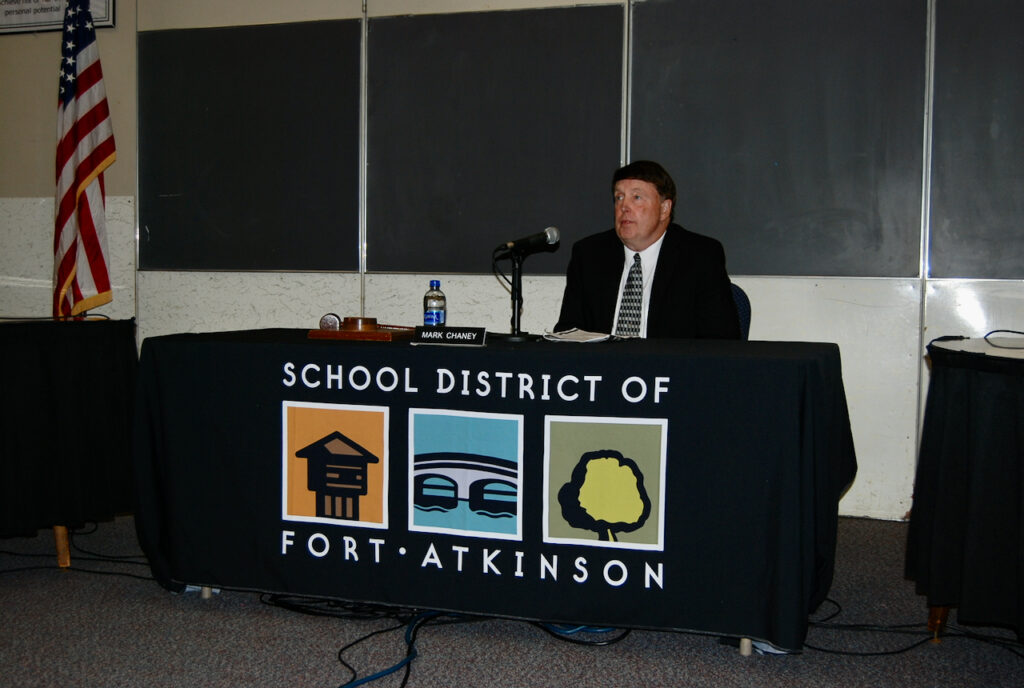
After his election and installation as chairman, Chris Rogers presides over the School District of Fort Atkinson’s annual electors’ meeting.

Director of Pupil Services Lisa Hollenberger, back row, left, and Director of Instruction Amy Oakley sit among members of the electorate. During the evening, the two offered comments from the podium about academic priorities and student-centered teaching.
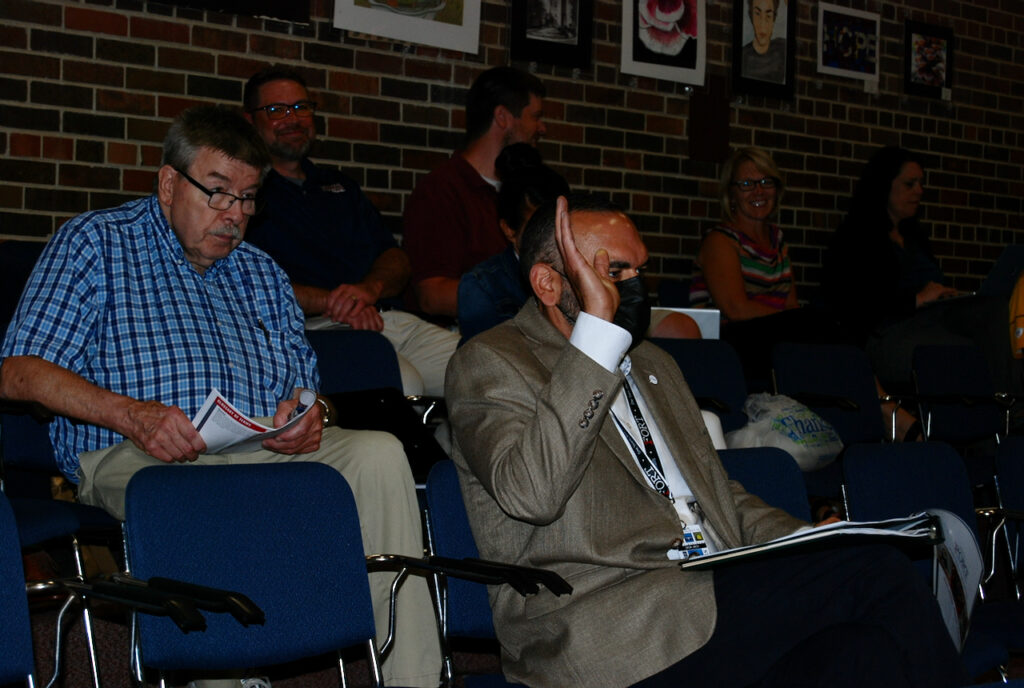
Elector and former Fort Atkinson Board of Education member Dick Schultz, at left, and Director of Business Services Jason Demerath participate in the annual electors’ meeting.
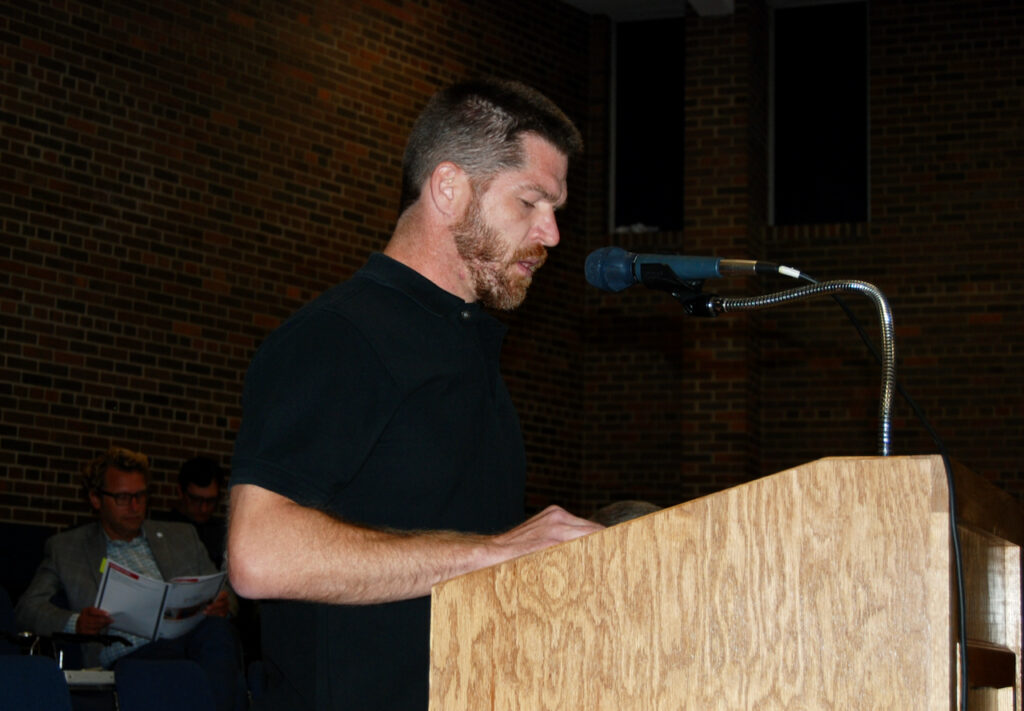
Mark Chaney addresses the electorate, delivering the president’s report. Chaney took the podium a second time during the meeting to deliver remarks about former school board member Rachel Snethen, who was recognized for her service. Chaney described Snethen as a hard worker, dedicated board member, mentor and friend.
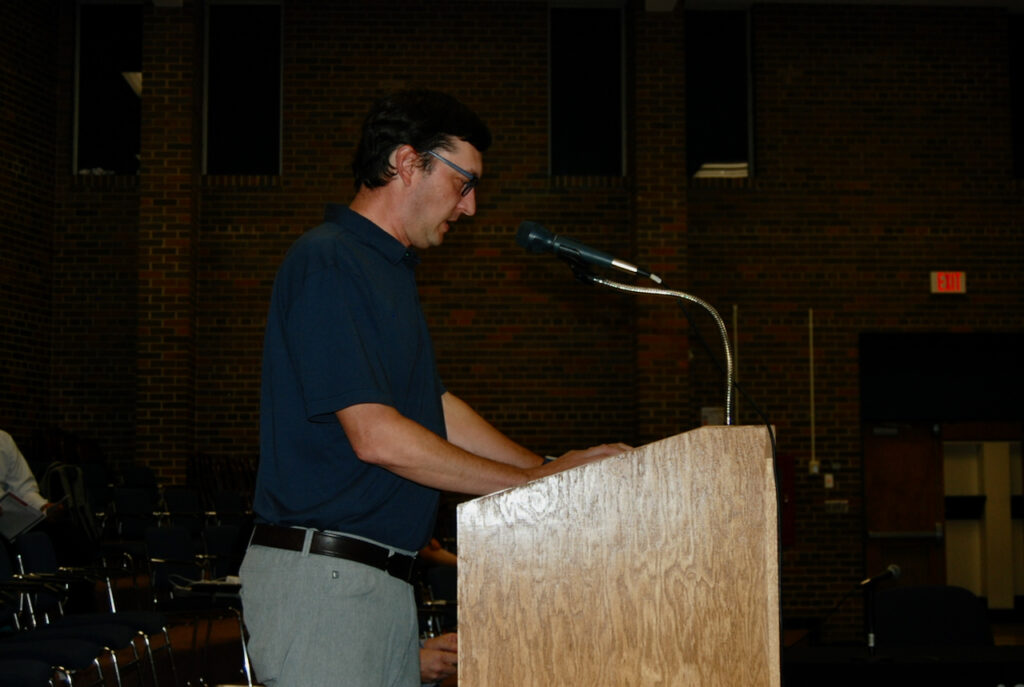
Board of Education Treasurer Adam Paul delivers his report. He said district finances continue to be managed in a “considerate and strategic” way.
Kim McDarison photos.
Plan Commission to consider Banker Road neighborhood conceptual plan
(Originally published Aug. 20, 2021.)
The City of Fort Atkinson has released the following information regarding the creation of a new neighborhood in the recently annexed 75-acre undeveloped territory along Banker Road.
The city’s Plan Commission will be reviewing the conceptual plans for the new development Aug. 24.
According to the release: With the need for new homes on the rise in southern Wisconsin, the City of Fort Atkinson is looking to guide the creation of a new neighborhood in the city.
The city will not act as the developer for these parcels. When the concept plans are approved by the Plan Commission and the city council, city staff intends to distribute the plans widely to local, regional and statewide developers, the release stated.
The Banker Road properties, located east of the Fort Atkinson High School and south of Hoard Road, were previously slated for residential development featuring large single-family lots. However, the development fell through, according to the release, and the city council “seized the opportunity” to purchase the parcels in 2018.
In 2019 and 2020, the release continued, the city adopted a new Comprehensive Plan and a zoning ordinance, respectively. These documents, along with the increased demand for housing in the city, changed the way city officials viewed the development of this area.
In 2021, the city worked with its partners in the Town of Koshkonong to annex the land into the city and prepare it for development. This year, the city hired Madison-based Vandewalle and Associates to work with staff to prepare a plan for a new and diverse neighborhood on the city’s northwest side, the release noted.
The Neighborhood Concept Plans are now complete and ready for public view and comment. The City of Fort Atkinson Plan Commission will review these documents Aug. 24, at 4 p.m. via Zoom. The agenda and packet will be published on the city’s website on Aug. 20.
The plans include the following improvements:
- Reconstruction and realignment of the current Banker Road right-of-way.
- Reconstruction of the current Banker Road corridor as a multi-use trail, connecting the neighborhood and providing access to parkland and green space.
- Construction of wetlands and stormwater areas to be used as water features and provide visual appeal.
- Construction of a wide range of housing styles and types, including single-family residences, duplexes, townhomes, traditional ally-style homes, and multi-family residential buildings.
“We are thrilled to have the opportunity to shape our own destiny and guide the development of a neighborhood that meets the needs of our current and future residents,” City Manager Rebecca Houseman LeMire was quoted as saying within the release.
Those interested in attending the upcoming Plan Commission meeting may do so by clicking the following link: https://us02web.zoom.us/j/82214860406?pwd=TEVyUVdQM05VNFVzb0E2TUNTVnZlZz09. Use passcode: 53538.


Graphics above, as prepared by Madison-based Vandewalle and Associates, show two conceptual development plans proposed for the recently annexed and city-owned acres along Banker Road. Supplied graphics.
Having a ball
(Originally published Aug. 22, 2021.)
By Chris Spangler
Fort Atkinson’s been on a roll this month as a giant beachball makes the rounds through town.
The multicolored 6-foot-tall beachball has been showing up in parks, front yards and everywhere in between, and just when you learn where it is, it’s gone with the wind.
The jumbo beachball is the brainchild of Travis Paulsen, whose friend in Stoughton sent him a Snapchat picture of an oversized beachball after it rolled into his yard last month.
The ball apparently had escaped a family’s fence, and a neighborhood association posted on its social media page, “Hey, is this huge ball yours? It’s at the end of Hyland now.”
After that, the ball took on a life of its own, with residents of the traditionally Norwegian community adding their signatures and taking selfies with the ball as it rolled through their neighborhoods and downtown. They even named it: Rolie Polie Ole.
Back in Fort Atkinson, Paulsen thought that looked like fun, so he ordered a 6-foot-tall beachball on Amazon.com., inflated it, attached a marker for people to sign the ball and debuted it on Sunday, Aug. 1.
“I walked it down to Jones Park,” he said.
The ball immediately garnered attention, with passersby stopping to snap photos and add their John Hancock on the brightly colored plastic.
From there, it moved on.
“I’m not really sure (how it travels),” Paulsen said. “Either the wind can blow it, or people can push it around.”
Once in a while, the ball gets a ride to a new destination by pickup truck.
So people would know the ball’s locale at any given time, Paulsen set up a social media search keyword.
“I looked up the hashtag #fortatkinsonbeachball and saw zero results, so I decided to use that,” he said. “Not all people use it when they post, though.”
Pictures and comments also are being posted on various Facebook pages, such as the Fort Atkinson Community Network and Vern Zech’s Taking a Stroll Down Memory Lane, Then and Now.
With so much action, it is no surprise that the ball loses a little air periodically.
“I’ve brought it back home (several) times for repairs,” Paulsen said, noting that the severe storms a couple weeks ago took their toll on the ball.
“Sunday night, the 8th, it got damaged a bit; there were several pokes in it,” he said.
While there have been other folks who have given the beachball a shot of air when needed, Paulsen is the ball’s main caretaker.
“To my knowledge, yes, I don’t see any patches I don’t recognize, but if anybody wants to patch it, they are welcome to,” he said.
When all are fixed, he takes the ball to a park or schoolyard.
“I only place it somewhere else if I have to bring it home for repairs,” Paulsen said.
Among the places the beachball has visited are Jones Park, Barrie Park, Rockwell Elementary School, Trailway Park and the Fort Atkinson Aquatic Center in Rock River Park. This past weekend, it got a little TLC and then was driven to Memorial Park near the Wisconsin Army National Guard Armory.
The farthest it has traveled on its own, Paulsen believes, is north of Purdy School on McComb Street.
One weekend, it sheltered in St. Paul’s Lutheran School after custodians apparently thought it belonged there. They released it upon learning that the beachball was a free spirit.
Paulsen said there just is something about seeing the giant beachball that makes people smile and brings both neighbors and strangers together.
“It’s different. One night when I was driving it to Trailway Park, I saw many people looking and pointing at it. Several kids ran to the side of the road as they saw it coming down the street.”
But it’s not just children who are having a ball. Among the hundreds of signatures are those of employees of businesses such as Bender, Kind & Stafford (BKS) Dental and at least one daycare center.
It’s been three weeks, and Paulsen isn’t certain how long the beachball will stay on the move.
“I have supplies to keep fixing it as needed and have even had people offer money to help with the upkeep,” he noted.
And what happens when it finally must be retired?
“One person has asked about starting a second ball already,” Paulsen said. “If and when this is damaged too far for repair, maybe I’ll lay it out, take pics of all the signatures and share them.”
The jumbo beachball “hunt” has been as much fun for Paulsen as it has been for the community at large.
He describes himself as “just a regular guy who loves making people smile.
“I try to follow a couple different ways of looking at life,” he said. “A lesson my dad taught me when I was about 10 (was) ‘always take care of the people that take care of you.’ Pay it forward, Random acts of kindness (RAK) and leaving someone/something better than you found it (give someone a compliment or pick up some garbage).”
With that philosophy, it is no surprise that Paulsen has been dressing as Santa Claus for about eight years now, offering to visit people’s houses, daycares and assisted-living centers, which he calls “some of my favorites.”
And, this year, Paulsen revised that role by creating Christmas in July — well, August — and placing a colorful, giant beachball in Fort Atkinson’s stocking.

After returning to the home of Fort Atkinson resident Travis Paulsen for puncture repairs, a 6-foot-tall beachball, which has become a focus of joy and fascination as it rolls around the city, is left at the Wisconsin Army National Guard Armory. Over the last month, the ball has visited several parks and public spaces within the city.

Members of the Martin-Chuppa family, having found the ball in a public place, wait their turn to sign. Spotting and signing the ball has become a pastime in Fort Atkinson. The ball has been rolling around the city since Aug. 1.

Those interested in joining the fun will find this pen attached to the ball. Travis Paulsen, who got the ball rolling and serves as its caretaker, says he plans to keep the ball in play for as long as it brings joy to the community.

Fort Atkinson resident and caretaker of the community’s giant beachball Travis Paulsen and his 4-year-old granddaughter, Kinzlee Selsing, poise with the ball.

Fort Atkinson resident Travis Paulsen stands with what has become the community’s beachball. Paulsen introduced the ball into the community earlier this month.
Submitted photos.
School district approves new strategic plan
(Originally published Aug. 23, 2021.)
By Kim McDarison
The School District of Fort Atkinson Board of Education Thursday approved a new strategic plan.
District Superintendent of Schools Rob Abbott said the new plan, which he described as months in the making, sets challenging and aggressive goals for the district. The plan will be launched with staff at the district’s convocation, scheduled for Aug. 26.
Aided by a slide presentation, Abbott said, over the past several months, the district involved “hundreds of stakeholders,” including staff members and administrators, who were tapped for their “opinions, thoughts and ideas.”
The district’s former plan was retired last summer, Abbott said, and was built using a “5 Bold Step Strategic Plan” approach, which focused on developing specific areas to improve or enhance as identified by the community. He noted that within that structure, some groups were “heavily connected” while others were not.
The new plan, he said, is designed as a results-focused strategic plan, which comes with a new mission and vision statement to drive and guide the district’s work. The plan defines beliefs and guiding principles to ground the district’s work, and gives “everyone a home in the plan,” he said, further defining the concept by saying, “we’re all in together.” The plan would amplify the district’s distinction throughout the community, region and state, he added.
The effort to create a new strategic plan was launched last summer, he said, adding: “We started in February and we reported back to you (the board) last in June.”
Abbott said multiple steps were employed to complete a process to develop the plan. The process looked at five areas, defined as reground, reflect and imagine, define, design, and embark.
“After this evening, we hope to embark on the work of the plan as it sets forth for us beginning this school year,” he said.
Abbott outlined the district’s guiding principals which include: academic accountability, federal and state accountability, fiscal responsibility, physical and technical safety, community and stakeholder engagement, and investment in physical and human capital.
Under the heading of district beliefs, he outlined the following: teaching and learning, social-emotional learning, community and lifelong learning, and leveraging resources for student success.
Said Abbott: “We talked in June about a vision statement of ‘why’ or ‘where is it we’re going? What is it that we might have as a destination someday?’ and then our mission statement: ‘What and how — what is it we are doing each and every day?’”
The vision, he said, was: “achieving distinction in all we do, encompassing everyone, in all things that fall under the umbrella of the 1FORT motto as well as the School District of Fort Atkinson.”
The district’s mission, which, he said, would be read at the beginning of each staff meeting, is built to engage kids and staff to work together to cultivate an inclusive, high-performance culture of growth and community.
As part of the plan, Abbott presented three goals that the district would adopt. They are:
- High performance: All schools, as well as the district, will achieve a state of Wisconsin accountability rating of “Significantly Exceeds Expectations,” as determined by the state report card, published annually for all districts by the Department of Public Instruction. The rating set by the goal is the highest of the five possible ratings awarded by the state. The goal is set to be achieved no later than the 2025-2026 report card with evidence of annual growth. (An understanding of the state report card and its rating system is presented here: https://dpi.wi.gov/accountability/report-cards.)
- Inclusive culture of growth: The district’s learning community will exemplify an inclusive culture of growth responsive to our learner and community needs.
- Community distinction: The district will be the preferred educational option in the region as evidenced by annual growth in the pupil count and open enrollment.
Further defining the first goal of high performance, Abbott said: “This goal fits the definition of rigor; this goal is a stretch for us. It’s definitely a five-year goal, but it definitely fits the bill when it comes to: Why are we doing what we’re doing? it’s toward greater success for all of our learners.
“This is not about a single test score,” he continued. The state school report card encompasses many different areas, he said, adding: “It does include achievement, or test scores to some extent, but it also accounts for individual student growth; it actually creates metrics for us so we can see all of our 2,600-plus students showing growth in their learning.”
Abbott defined the state report card as “the number one tool” used by districts when making comparisons between themselves and other districts, as well as by potential newcomers to the community who might be making comparisons between districts into which they might place their children.
Further defining the goal, he said: “This is about incremental, deliberate, very carefully orchestrated growth over a long period of time. This puts all six of our school buildings, as well as our district, on the same path of looking for success.”
Addressing the third goal of community distinction, he said: “I think we’ve been very transparent that we don’t have as many kids as we would like. In part, we have fewer young families with young children in our community as a whole, but we also have some increased competition. We have families that are leaving to go to other educational options.”
Among options, Abbott said, some parents found success using virtual options and were looking, moving forward, for additional virtual options elsewhere, and fewer students are entering the district through open enrollment.
“All of those things we can analyze, but we also know the job for us is to turn that around and to make sure that through our quality programming, and our excellent staff, and our excellent teaching and learning, that we really become the school district that no one can turn away from.”
Board of Education President Mark Chaney asked: “Have we ever seen Significantly Exceeds in all of our schools before?”
Abbott responded by saying, “no.”
“We definitely have had some buildings that have significantly exceeded in the past, we’ve had some that have not seen that rating in the past, but we’ve never had an occasion in the district where all six of the schools were significantly exceeding,” he said.
Abbott noted that it would have been easier had the goal been set at a rating of “Exceeds” rather than “Significantly Exceeds,” but, he said, “that would be like encouraging your kid to get a ‘C,’ so we need to shoot big here.
“I think the community knows it, they deserve it, and they want it. And we’re going to be really transparent about what we are seeing with results. And if we’re not seeing the results we want, we will be really transparent about what we’re adjusting to start nurturing the results that we want to see.”
While Abbott described the goal as “a challenge,” Chaney said he believed the board had shown in the past and will continue to show support for the administration. He described the goals as outlined in the new plan as “exciting.”
Other board members echoed his sentiment.
A story enumerating steps taken to develop the district’s strategic plan is here: https://fortatkinsononline.com/school-board-hears-process-to-develop-new-strategic-plan/.
A video of the full meeting can be viewed here: https://www.youtube.com/watch?v=qi8RLs1Pb_Q.
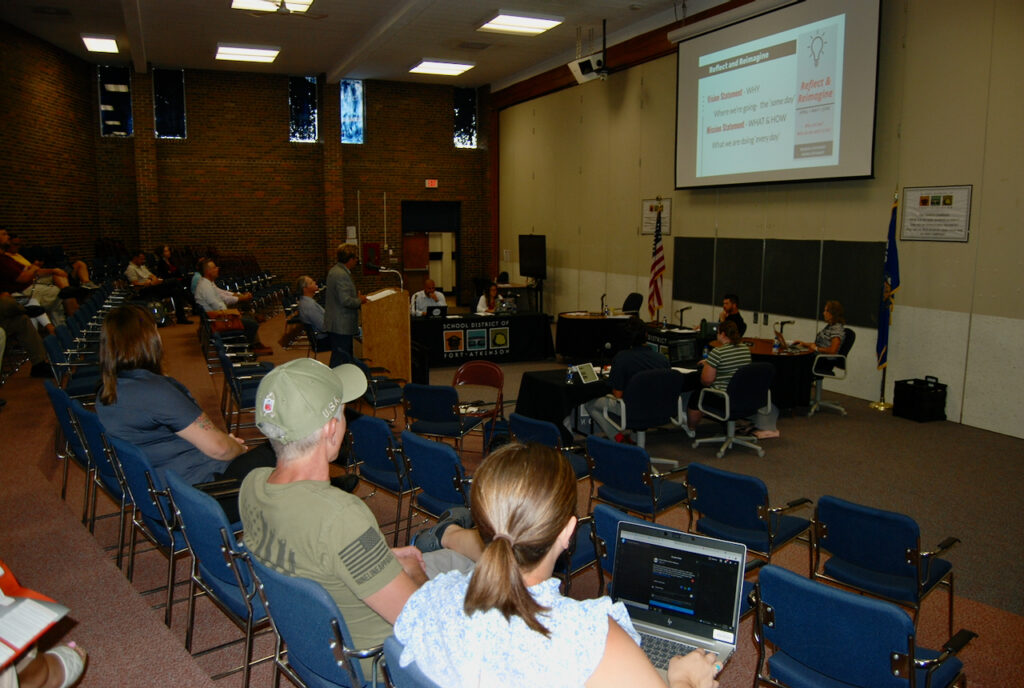
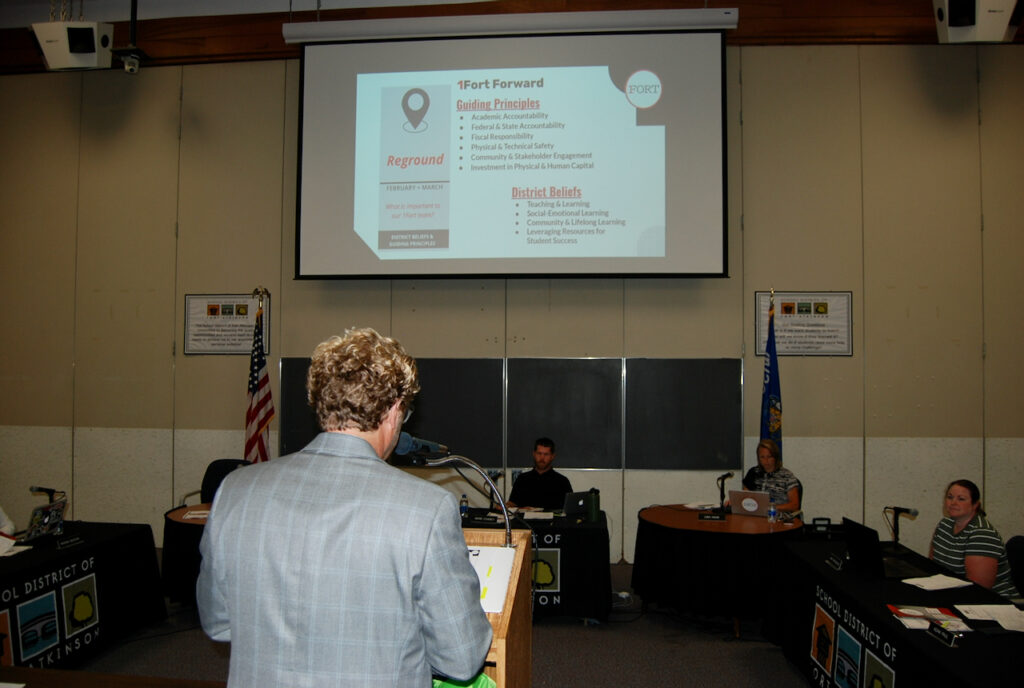
Above two photos: At the podium, School District of Fort Atkinson Superintendent of Schools Rob Abbott addresses the school board Thursday to unveil the district’s new strategic plan. The plan was approved and will be introduced to district staff during the convocation scheduled for Aug. 26.
Kim McDarison photos.
School board gives ‘go-ahead’ to developing phased plan for facility improvements
(Originally published Aug. 23, 2021.)
By Kim McDarison
The School District of Fort Atkinson Board of Eduction Thursday expressed its excitement and support of a phased facilities improvement plan which includes building a new middle school on district-owned property adjacent to the high school.
While the item garnered no official vote, the board gave district administration the go-ahead to continue with conceptual plans that are moving through development stages.
During Thursday’s monthly board of eduction meeting, District Superintendent of Schools Rob Abbott said an ad hoc Facilities Advisory Committee (FAC) met eight times over the course of 18 months — with a 14-month-long interruption in its meeting schedule due to COVID-19 — and reviewed several options for improving the district’s buildings.
According to Abbott, the 28-member committee was comprised of individuals representing a vast range of district stakeholders, including residents of varying ages, parents and teachers; with residents representing a variety of professions, including those from the construction, financial and healthcare industries, among others, and a resource team, including school administration, and consultants from within the fields of architecture, construction management and energy.
Recapping information earlier shared with the FAC, within his presentation, School District of Fort Atkinson Board of Eduction Member and a co-chairman of the FAC Kory Knickrehm described activities during individual FAC meetings and enumerated 10 improvement options, all of which offered a combination of remodeling and building plans to upgrade the district’s structures. The options were offered to the FAC by consultants Plunkett Raysich Architects (PRA) and CG Schmidt, a construction management and general contracting services firm. Both firms are headquartered in Milwaukee.
During Thursday’s meeting, Abbott noted that consulting firm Upper 90 Energy, Madison, was also involved in guiding the FAC’s process.
As part its work, the FAC ultimately selected three of the options, Nos. 3, 7 and 8, to present to the district’s board of education. The ad hoc committee completed its work in May.
During Thursday’s meeting, a single option — Option 7 — was identified as an option of choice, because, Abbott said, it most readily made available the possibility of being developed using a phased building approach.
As the FAC’s work was coming to a close, Abbott said, the district became aware of additional information, including an awareness of “unstable enrollment,” which he attributed to birthrates, trends produced by COVID-19, declining open enrollment numbers within the district and increased competition within the area for students.
Abbott pointed to an area competitor, which, he said, is building a new facility after breaking ground this summer. (A story about a development underway at the Crown of Life academy is here: https://fortatkinsononline.com/crown-of-life-academy-begins-first-phase-of-construction/.)
The approval of a new strategic plan is anticipated to help address some issues with enrollment, he said. (A story about the district’s new strategic plan is here: https://fortatkinsononline.com/school-district-approves-new-strategic-plan/.)
“Also,” he said, “there has been a fair amount of development within the city.” Looking at the potential for housing starts, he said the district was aware of two separate subdivisions that are being annexed into the west side of the city just beyond the high school on Banker Road.
“The city has been working very quickly to get the subdivisions in a place where we can have housing starts sooner than later, but that’s something that’s very exciting to us given that housing has been a significant limiting factor for people coming to Fort Atkinson or choosing to stay in Fort Atkinson as well,” Abbott said. (A story, outlining the city’s intention to bring conceptual plans for the Banker Road territory before its Plan Commission tomorrow, Aug. 24, is here: https://fortatkinsononline.com/plan-commission-to-consider-banker-road-neighborhood-conceptual-plan/.)
Additionally, he said, some of the city’s tax incremental financing districts are due to expire within the next few years, which, he said, “would have a significant impact positively on the property owners’ tax rate, which would really, potentially, be a benefit for us in looking at a future project.”
He cited leadership changes within the community, in both the public and private sectors, which, he said, brings a “spirit of ‘what’s next?’ in our business community, our city, as well as, I think, within our school district.”
Looking more closely at Option 7, graphic representations show, would the district consider building the option in a single step, it would come with a price tag of between $115 million and $119 million. Using a phased approach, Abbott said, the funds could be identified and spent in smaller pieces, making the option more affordable for the district’s taxpayers.
Option 7: What’s included?
According to information shared with the FAC, Option 7 focuses on building a new grades 6-8 middle school on a site that was, at the conclusion of the FAC committee meetings, yet to be determined, but identified Thursday as land adjacent to the high school, and included renovations to be made at all four elementary schools.
During Thursday’s meeting, Abbott said, the district would plan to raze the existing middle school, and return the site to green space. The site would be maintained by the district until a new use for it was identified.
Additionally, the option includes modernization of all of the district’s existing elementary schools. Graphic representations shared earlier with the FAC and again on Thursday, show elementary school improvements coming in the form of additions built onto each elementary school building.
A breakdown of costs for each improvement is as follows: modernization for the elementary schools is estimated to cost $14.5 million at Barrie, $17 million at Luther, $18 million at Purdy, and $11.5 million at Rockwell. Approximately $52 million would be required to build the new middle school, and $5 million is earmarked for maintenance costs at the high school.
Describing Thursday the details of the phased approach, Abbott said the district would plan to tackle the first major improvement, the building of the new middle school, within Phase 2. Improvements to the elementary schools would come in later phases that would be determined at a later date.
Phase 1 of the facilities improvement plan was already underway, Abbott said, noting that $5 million in improvements were already taking place at the high school. Monies used were coming from maintenance improvement funds already existing within the district’s budget. No new monies would be required to complete Phase 1, he said.
A story, identifying the three options as recommended to the board by the FAC, as well as the larger field on 10 options, is here: https://fortatkinsononline.com/three-100-million-plus-school-building-improvement-options-to-be-presented/.
The school board meeting can be viewed here: https://www.youtube.com/watch?v=qi8RLs1Pb_Q.

PRA graphic representation of “Option 7” changes proposed for the School District of Fort Atkinson school buildings as presented to the Facilities Advisory Committee. The district is looking at developing this option using a phased approach. Phase 1, addressing concerns at the high school, is already underway. Phase 2 would address the first part of Option 7 construction, starting with the middle school, which carries a price tag of $52 million. Plans call for building the new middle school on district-owned property near the Fort Atkinson High School.
Masks optional in district school buildings
(Originally published Aug. 24, 2021.)
By Kim McDarison
The School District of Fort Atkinson Board of Education took no action Monday, leaving in place its decision to remove a mask mandate that was put in place last school year.
The decision to take no action on agenda item “2021-2022 School Opening Plan” during Monday’s special meeting — creating a policy of optional masking in the district’s schools at the beginning of the upcoming school year — came after some 100 district residents, including 16 speakers, expressed their views about masks and district policies that would require their children to wear them.
A majority of those who spoke were against mask policies.
After opting against returning to the former mask mandate, the board noted that it would revisit its policy decision throughout the school year as more information about COVID-19 cases and trends in the area became available. The next opportunity for board members to look at policies will come 12 school days into the new school year on Sept. 17, which is when the board has its next regularly scheduled monthly meeting.
Masks required on school transportation
The board approved an action, adhering to federal policy as outlined by the Center for Disease Control and Prevention (CDC), to require masks on district-funded public transportation. During the meeting, School District of Fort Atkinson Superintendent of Schools Rob Abbott explained that federal funding could be withheld from the district as a consequence of neglecting to adhere to the regulation.
The board also approved the removal of a COVID-19 addendum earlier added to the district’s Employee Handbook.
During the two-hour meeting, speaking remotely and appearing on a large screen for the audience to see, Jefferson County epidemiologist Samroz Jakvani offered some COVID-19 statistics from across the county and the school district, which provided a snapshot of COVID cases reported in August and the previous seven days. (Statistics delivered by Jakvani will be provided in a separate and upcoming story.)
In his “2021-2022 Opening Plan Report,” Abbott shared a slide presentation about policies enacted by the board last year and offered recommendations and options that could be included within a school opening plan for the upcoming school year.
Both Jakvani and Abbott were periodically interrupted by audience members during their presentations. Audience members shouted out comments and questions, and became agitated when school board president Mark Chaney announced that questions for Jakvani would come exclusively from board members.
At several points during the meeting, Chaney told those in attendance that he would adjourn the meeting if a level of civility could not be maintained.
Changes in protocols
During his presentation, Abbott noted that some of the upcoming year’s “school experience” would look different from last year. Among changes students and staff could expect, he said, were a return to in-person learning and regular classroom procedures, including students working in small groups with shared materials; a return to in-person school events; a removal of plastic barriers; a return to typical lunch procedures; the buildings would allow some visitors, and a return to field trips.
Additionally, he said, the district would participate in COVID-19 contact tracing through the Jefferson County Health Department, and quarantines would be related to “household positives,” with those living in households with reported positives asked to stay home for a duration of time which would be decided based on individual circumstances.
Looking to clear up some of what he termed “misinformation,” which was circulating within the district, Abbott said families continue to have the freedom to decide if their child receives a COVID-19 vaccination, in-person learning will continue for the duration of the school year, the district will provide equal opportunities for its students regardless of their vaccination status, students will have opportunity to enjoy social interactions such as dances, school trips and extracurricular activities without restrictions, and only voluntary COVID testing would be requested by schools.
Abbott enumerated what he described as “best practices” for students and staff relating to communicable diseases. They included: staying home when a person shows signs of sickness or symptoms, consideration of wearing a mask, symptom tracking, increased hand washing and sanitizing, enhanced cleaning and ventilation, practicing spacial awareness and physical spacing, increased parent/educator communication, and visual reminders of best practices.
As an option for the upcoming school year, Abbott proposed what he called “optional enhancements,” which might, with board approval, include a requirement for face coverings in school, with an allowance for removing them under certain circumstances, including when a person is outdoors, eating or drinking, and for staff and adults, when no students are present.
He also proposed that the board consider applying mitigating strategies by group, with one such group including all students and all staff. A second group was defined to include pre-K through eighth-grade students and staff.
Public comments
After the presentations, the board opened the meeting for public comments, extending its total comment period from 30 minutes to 45 minutes to accommodate the full list of speakers. Each speaker was allotted three minutes to speak.

Donald Williams, pictured above, identifying himself as a physician, said much of his time was spent treating everyday anomalies such as infections and broken arms, but, he said, “what I’ve really spent most of my career doing is stacking the deck in favor of people living healthier lives.” With COVID and children, he said, the question is: “How can I stack the deck in favor of our children being healthy and remaining healthy?
“We know from the experience of the last year and from research studies that masks work.”
Williams said those wearing masks are less likely to spread particles carrying disease.
With the Delta variant, he said, “people shed a thousand times more virus particles than the earlier strain of COVID.
“I have practiced my whole career by the principles of the Golden Rule, meaning that I want to do for others what I’d like them to do for me. And I think the idea of masks is a good example of that. I would like to not infect any of you and I would not like any of you to infect me. Based on my age and my high blood pressure, I’m one of those persons who is at high risk,” Williams said, adding, the loss of life to COVID, and the loss of a child to COVID, would be an “unbelievable tragedy.”
“I think the mask mandate makes sense to protect our children,” he added.
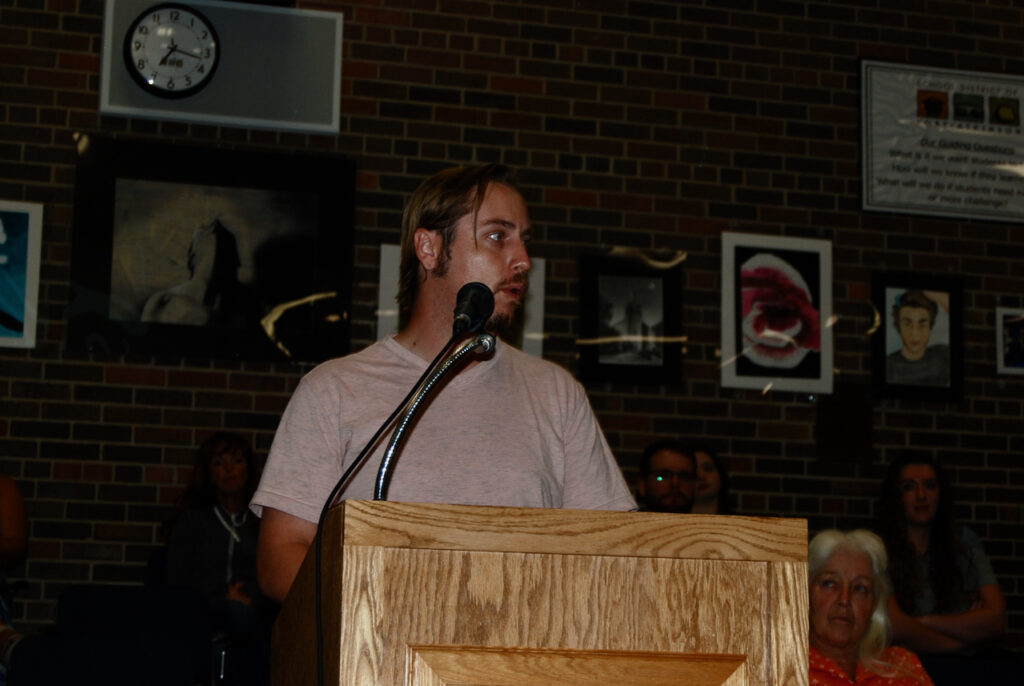
Zachariah Lange, pictured above, said he has been a resident of Fort Atkinson for 30 years. He grew up in the community, and later, he and his wife returned to the community to raise their son.
Addressing the board, Lange said: “I value my rights, my privacy and my right to liberty — liberty being the state of the people to act and speak freely.
“Our first president, George Washington, said our liberty can never be safe but in the hands of the people themselves,” Lange added. He defined privacy rights as the “right to be left alone.”
Turning his attention to masks, he said, “I see these proposed requirements as a direct route to removing access and public services from certain members of the community. Some intentionally and others not. These impositions threaten our liberty. They seek to remove our right to self-determination.
“To be clear, I acknowledge that there are consequences to the choices to be made tonight. The world is a dangerous place, and every choice we make has consequences, both good and bad.”
Ultimately, he said, in his view, it was a parent’s place to make choices for their children.
As parents making choices, he said, “It is not required that we satisfy anyone with an explanation.” Addressing the school board, he said, “Your duty is to ensure the services we pay for are accessible to all of us.
“It is an easy choice to support choice. It excludes nobody from options available to us as members of the community, and that’s how I would implore you to vote. I will not wear a mask. I will not allow my son to be forced into wearing a mask through intimidation, isolation or peer pressure. We owe nobody an explanation why it is the right choice for us.”
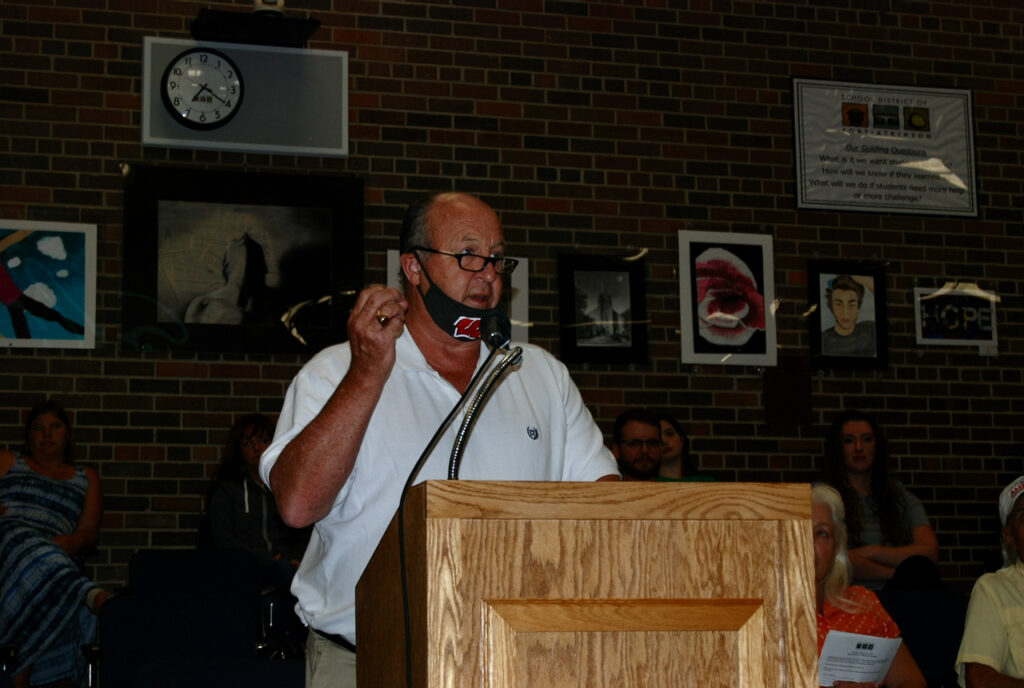
Serving as the district’s superintendent from 1999 to 2013, James Fitzpatrick, pictured above, praised the district, noting: “This is a great school district. We’ve got great teachers, we’ve got great school leaders, administrators, We’ve got the best kids and we’ve got wonderful families who’ve always supported the school district in making it one of the beacon districts in this state.”
Fitzpatrick enumerated three premises, upon which, he said, he believed those in the room could agree. They were “open, face-to-face” learning, schools that were open and stayed open, and a successful defeat of COVID.
“If there is no masking and other reasonable mitigations and strategies, then what is the process to reacting to positive cases? We could have some pretty large outbreaks, as the Delta variant is twice as contagious as the previous variant. This would keep a fair amount of students and staff out of our schools, in isolation or quarantined, not to mention a hospital or, God forbid, worse,” he said.
“Masking certainly isn’t a perfect strategy,” he continued, “but layered with other strategies, it becomes a multi-layered strategy that can avoid the spread. The best protection, of course, is vaccination,” he said, adding, “I can’t stress enough to staff and students, if you’re eligible for the vaccine, get the vaccine and start now, because full protection doesn’t come until two weeks after the second dose. Additionally, I don’t like making this argument, but from the liability side, when all the experts recommend one thing and you do another, you have to wonder what the liability there might be for a bad outcome.”
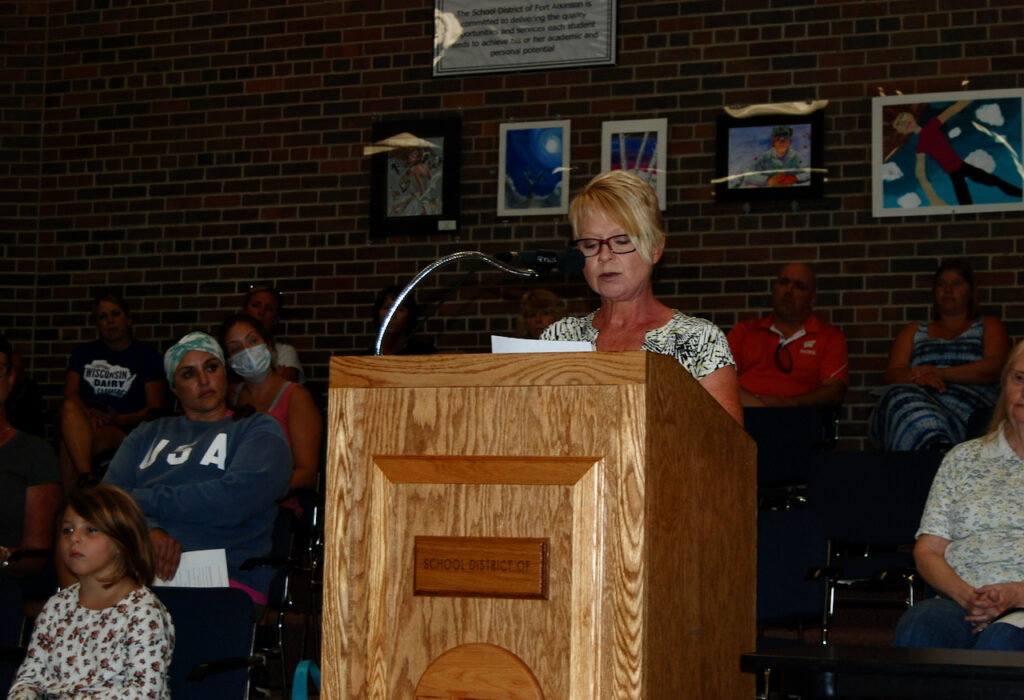
Amy Larson, pictured above, said she was the mother of two children in the district, but she had also been asked to address the board on behalf of a group called Fort Atkinson Parents for Choice.
Larson presented the board with a petition, which, she said, carried 370 signatures from “concerned parents and Fort Atkinson taxpayers.”
Reading from the petition, Larson said those who signed were requesting: the freedom to choose if their children would wear a mask or receive a COVID-19 vaccination, in-person learning for the duration of the school year, equal opportunities for their children regardless of vaccination status, opportunities to enjoy social interactions at school such as dances, trips and extracurricular activities without restrictions, and that any COVID testing at school would be voluntary only.
Offering a personal statement, Larson said: “I am not an anti-masker or anti-vaxxer. I stand for choice.”
She cited photos within materials presented to the board of students, staff and administrators gathering in school buildings over the summer without masks and, she said, she was aware of photographs of area families participating without masks in large celebrations and sporting events.
“That was your choice. Here’s where the problem lies for me. For you to make that decision to send my child back to school, and you decide that they mask, socially distance, put them behind plexiglas barriers, to me, is hypocritical, and with all due respect, an abuse of your power. What kind of message is that giving our kids? Rules for thee and not for me,” she said.
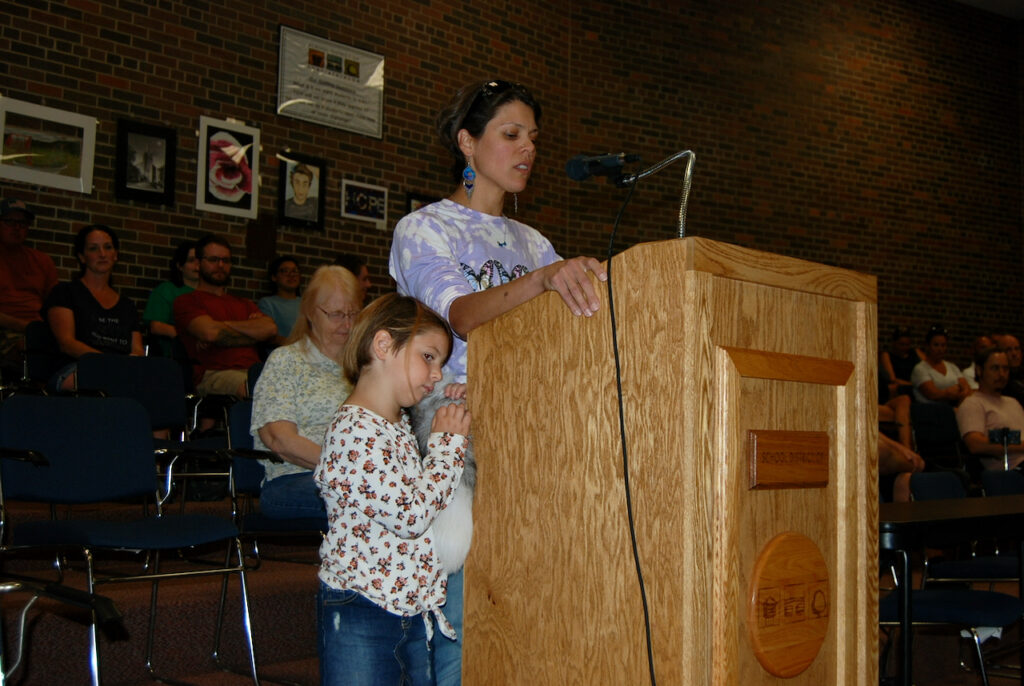
Addressing the board, Rebecca Van Ess, pictured above, cited passages from scripture, saying: “Heavenly father, thank you for the fullness to speak your truth. Holy Spirit, I open the door and invite you to come in and fill this place with your holy presence, because your word says we’re in the spirit of the lord as there is freedom.
“The truth is we’re not fighting against a virus, we’re battling against the Kingdom of Darkness, the father of lies … and child sacrifice. This war is taking place in the hearts and minds of people. It’s an information war, and the information you choose to believe will determine what side you’re on.
“Voting for mandatory masks and vaccinations is a choice to stand in agreement with lies and tyranny. God’s word tells us that truth sets the captives free,” Van Ess said, adding: “I feel obligated to give you guys a warning from God’s word, in Luke, Chapter 17, Verse 2, it says: It would be better to be thrown into the sea with a millstone hung around your neck than to cause one of these little ones to stumble and fall into sin. Which is exactly what has happened. God has been removed from our schools and our children have been led astray. Prior to this moment, you may have been able to claim ignorance, but now you know. I have clearly pointed out the violation of God’s law and you have no excuse.”
She announced her intention to run for school board.
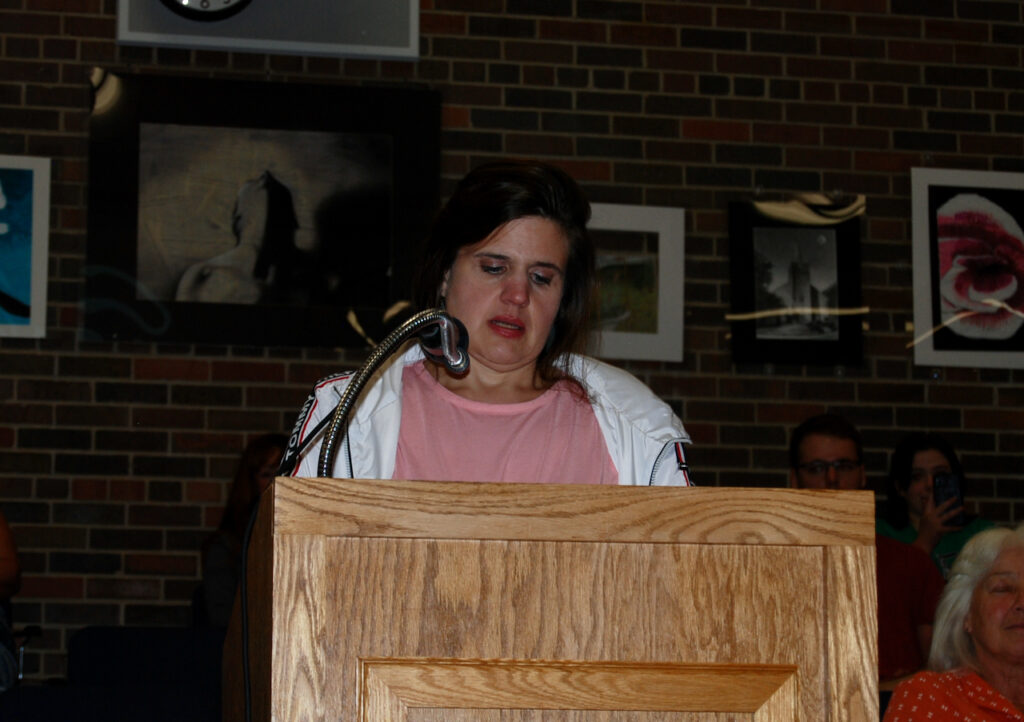
Masie Allie, pictured above, expressed her affection for the district, sharing with the board that both of her parents were district teachers. She stressed the importance of critical thinking, saying: “I’m here tonight to ask some questions. My husband and I have three kids in the district. I’m here, this evening as their mother to advocate for them. My daughter, who is here tonight with me, complains of breathlessness and anxiety when masked. My youngest son got reoccured rashes from wearing masks, even with my most diligent efforts, cleaning them daily.”
While there were concerns about his appearance, she said, “I am much more worried about the organisms growing on these cloth masks — that are worn for eight hours a day, five days a week — than a virus with a 99.98 percent survival rate in children. On to my questions: What are my children’s alternative options if they cannot mask? What is the process for applying for voucher money if we need a plan B? If this is really about the safety of our children, why were these masks not mandated for influenza, which killed twice as many children? Why is there not more focus on the second pandemic — the mental health crisis that our kids are now suffering? I teach my children autonomy. They govern their own body. No-one else does.
“As a mother,” she said, “I can no longer go along in good conscience with these mandates.”
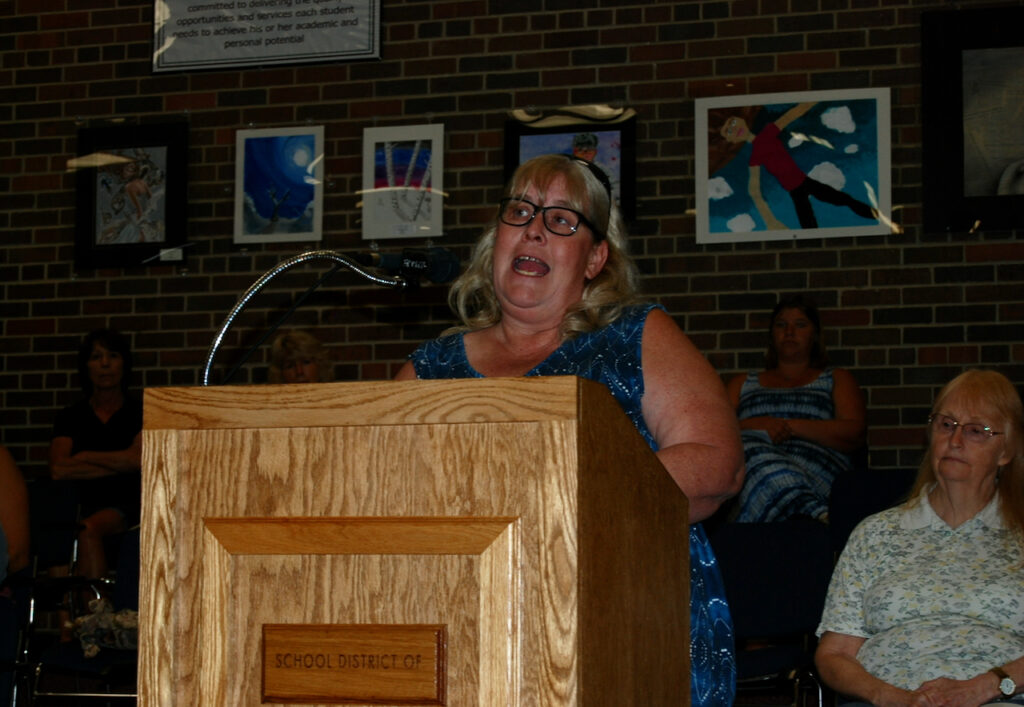
A graduate of Fort Atkinson High School, Ellen Narkis, pictured above, said, over the course of the last 20 years, she has had at least one of three children enrolled in the district.
While she didn’t always agree with the decisions made by the school board, Narkis said she did believe that the board was doing what it thought was best, and compared to her own beliefs, “nothing was that adverse.”
“We’ve come to a different point now and it started last year,” she said.
Narkis said early last school year the district was engaged in similar discussion at which time the Jefferson County epidemiologist was offering COVID-19 protocols. According to Narkis, the epidemiologist talked about closing schools down due to positivity rates.
“This is why I started getting involved, watching the school board meetings, emailing board members and such, about live schooling,” she said, adding that in time, the board revisited the protocols, opting to return to in-person learning.
“We would not have been opened at all last year had we followed that guidance from the health department. We heard a year ago how everybody was going to die,” but, she said, “this (COVID) doesn’t affect kids the same … we know our kids are relatively safe.”
“With all due respect,” Narkis said, “It’s not your job to protect the community. I appreciate the fact that you want to, but your job is to prioritize our children.”
She asked the board to allow decisions about masks to be made by parents.
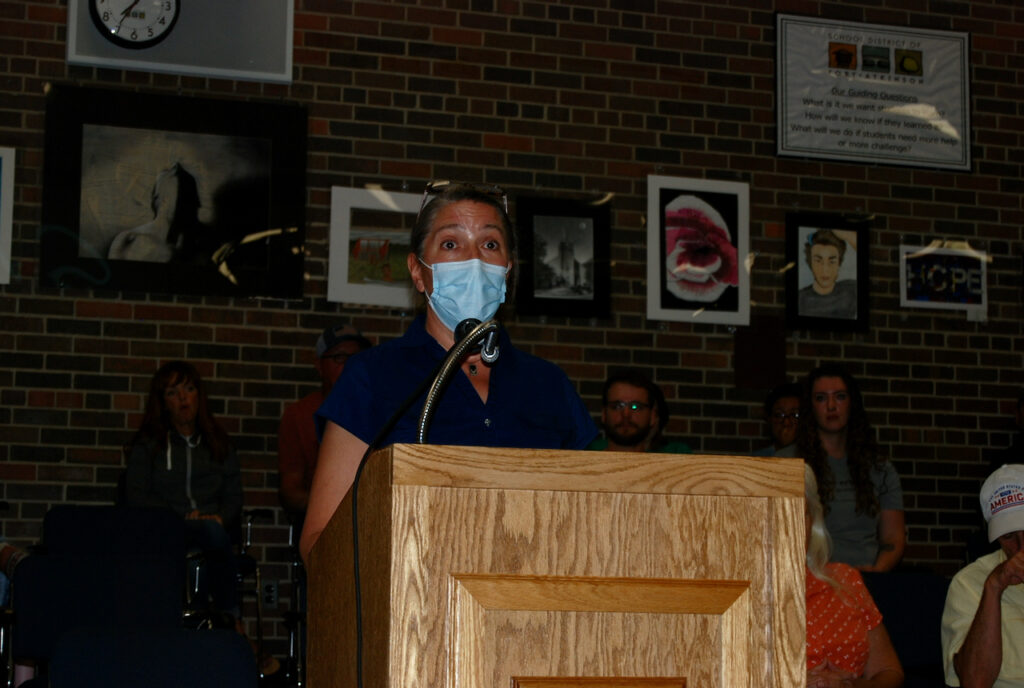
“I’ve been a family medicine doctor in Fort Atkinson for 19 years,” Shauna Meyer, pictured above, said, adding that she and her husband have a high-school-aged student who has attended district schools since preschool.
Said Meyer: “I’d like to thank Dr. Abbott and the board for their ongoing dedication, and the safety and fine education of our students, which has been particularly challenging during the COVID pandemic. I think we do all agree that in-person learning is best for a majority of students and a majority of families, and we can all agree that a safe environment improves learning.
“Masks are a nuisance and we are tired and want to stop wearing them. But unfortunately, the data show the pandemic’s not over. And schools that have opened in areas to our south without mask mandates are now quarantining students and staff and many of them are reverting to remote learning, which is not where we want to go.”
Meyer said COVID-19 cases and hospitalizations are rising again in Wisconsin. Nationally, she said, “we have the highest pediatric hospitalization rate due to COVID-19 since the pandemic began. No-one wants to see our kids in the hospital. Vaccinations — our best hope of curbing the pandemic — haven’t reached our community in high enough levels to protect us from the COVID harms.
“We’re all tired of COVID,” she continued, “but as a doctor, I can’t stop advocating for the health and safety of our students and our community, and as the school district leadership, neither can you.
“Our experts in health, including the CDC, the American Academy of Pediatrics, (and) the Department of Health, have published clear guidelines on how to open to in-person safely. Universal masking, social distancing, testing with appropriate quarantine are the pillars of those policies,” Meyer said.

As a Fort Atkinson area pediatrician, Julia Dewey, pictured above, said: “There are probably very few people in this room who have spent time in a pediatric intensive care unit, who have put a breathing tube down a child’s trachea to help them breathe. It’s not pretty.
“Everybody keeps bringing up the mortality rate, which is disgusting to use as a benchmark in the first place.”
Dewey described measures taken when children become ill with COVID.
“They can spend weeks in a pediatric intensive care unit, ventilated, for weeks, which does longterm damage to their lungs. They get hooked on opioid medications because they have to be sedated the whole time, so that then, when they’re extubated, when the tube is taken out from their trachea so they can breathe on their own again, they have to be weaned off the opioid medication over time. They have an addiction because of that, and then they miss school, their parents have PTSD from spending a month in the ICU; the child has PTSD from spending a month in the ICU with a bunch of tubes and lines stuck in them. Their parents miss work — there’s billions of dollars that are spent or lost in our economy as the parents take leave for their sick children. These are all things that I think people need to take into account,” she said.
Dewey said people needed to focus more on the science and less on their feelings.
“There is science and evidence coming out of the states that have already opened up without masks. There’s evidence just pouring out of those states right now that children are getting sicker and sicker, and maybe they’re not dying, and that’s great, but they are getting sick, and they’re being hospitalized. I would hope that all of our goals are the same here and we want to keep children healthy, we want to keep them safe, we want them to be happy, we want them to thrive in adulthood, and that’s the reason why we put them in carseats when they are babies, that’s the reason why we try to make them eat their vegetables, that’s the reason why we do all these things, to try and help kids be healthy.”
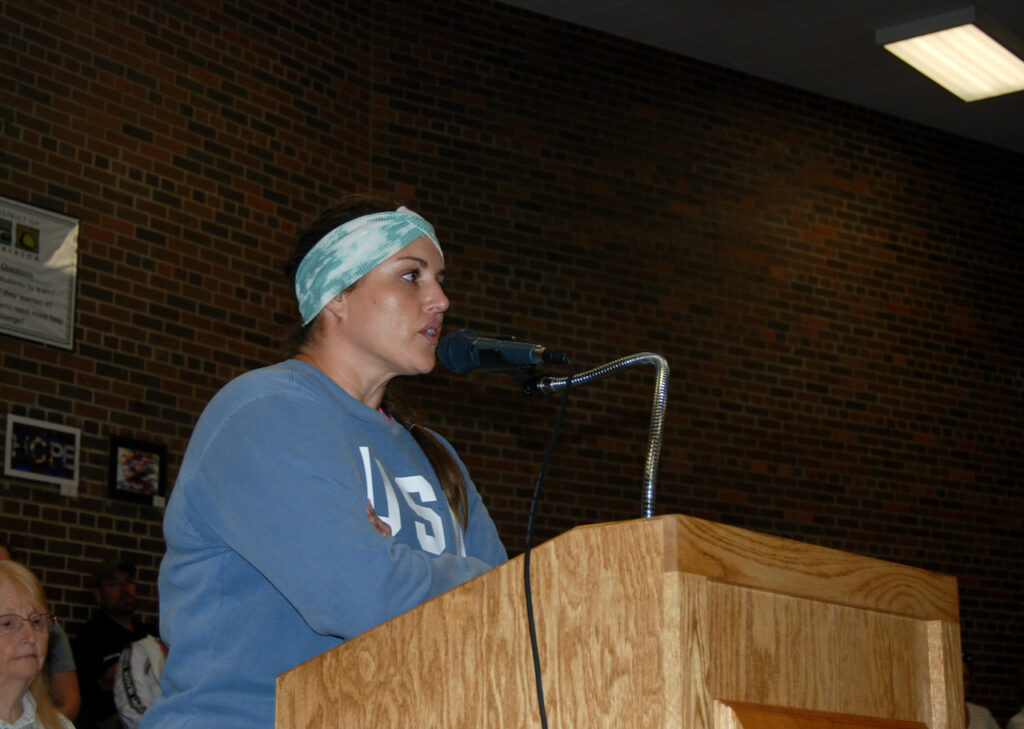
Sarah Jones, pictured above, who said she was the mother of a student attending Purdy Elementary School, noted her reason for attending Monday’s meeting was to advocate for choice.
“As Americans, we are blessed to live in a country that allows us the freedom to live our lives how we see fit. This freedom should also give us the power to choose whether or not we mask our children. Children are being muzzled, and if we continue to require or force masks on our children, we continue to promote a future where our children have no rights, no choices, and are made to believe that their feelings, their wants, their ideas and their voices have no place in society. That is not setting our community or our society up for success.
“I’ve seen members of this community, some of you here right now, out and about, enjoying your summer, mask-free, not practicing social distancing, living your life free to make choices, and now, in one week, some of you want to change that. If you want to do that for your child, I support you, but let me choose to do what’s right for my child. It can be both: freedom for you and freedom for me,” Jones said.

Calling himself “a fool for Jesus Christ,” Matthew Tooke, pictured above, said: “I’ve often been called not following the science when I believe in things like the power of prayer. I believe that Jesus Christ can lift people off addictions, he can change people’s lives, I’ve seen it in my life, and I’ve seen it in others.
“Now I stand here today as a fool for Christ, believing in things that science can’t measure. We’ve talked a lot about science today, and I want to talk a little bit of numbers. In the 1819 flu season, 480 children died of the flu. The flu is more deadly to children than COVID-19, Tooke said, adding that he’d looked at some events, that, he suggested, “have about the same probability of dying of COVID-19 for a child.
“According to the National Weather Service, 49 people are killed from lightning strikes in the United States in an average year. Thirty-three people are involved in unprovoked shark attacks.
“What if I, as a parent, kept my kid inside on every cloudy day or I put them in a shark cage when they went out swimming. You’d call that child abuse.”
Tooke said he believed masks might be effective in capturing large water droplets, but not for those that are aerosol.
“It’s for coughing and particulates that come out in a sneeze, but when you’re in a room for 15 minutes in an environment, a mask does not help.”
Further, he said, “I want to talk about mortality as well … we’ve seen a five-fold rate increase in suicide in our young people in our country.”

“As you prepare for the new school year,” said Cheryl Costa, pictured above, “I would like you to consider keeping masks optional for students. A successful session of summer school abled both families and staff the freedom to choose to mask or not. It was handled both responsibly and respectfully by everyone who attended. We had students in attendance from all schools in our community and staff worked from all around the area.
“Last school year, our students were required to wear masks for over seven hours for the school day. They had about a 22-minute break to eat their lunch. Some of the students even wore them longer if they rode a bus home, went to after school care or before school care. Students even wore their masks at recess, with me telling them, ‘let’s go out, get some exercise and fresh air.’ Watching them wear their mask was heartbreaking. Why are we masking our healthy children? That decision belongs directly to the parents. It is their responsibility and their choice of how they’d like to keep their child safe.”

Joshua Knapp, pictured above, talked about his desire to see schools remain open.
“I think we’ve seen in the news recently there have been a few examples of schools going back only to be shut down because of an outbreak. None of us want that. I took the time today to go through the peer-reviewed research mentioned in the CDC report. The consensus is clear: there are three ways to prevent outbreaks that shut schools down: vaccination, social distancing, and masks. And as you go through these peer-reviewed scientific journals, there are many examples where they cite that children are vectors to each other, to their parents, to their grandparents, to the community, and that masks drastically reduce that risk.”
He saw a certain irony, he said, when people disregarded the science, noting: “These are the kinds of journals that form and support the basis for what goes into a textbook. These are the kinds of journals that support the foundation of university education, and here we are, in a place of learning, saying that this doesn’t matter. That’s the evidence. If you don’t like the evidence, you’re probably not working in the realm of data.”

“There’s tens of thousands of scientists, doctors, (and) epidemiologists that have opposing information. All that has been blocked,” said Carie Kendrick, pictured above.
“Logic dictates that wearing a mask for any amount of time causes oxygen deprivation, which would cause your immune system to be diminished for children. The pediatricians are telling you they are getting very sick, they have to be intubated. Stress is also a factor that attacks your immune system. Can you imagine being in a classroom, being muzzled like that?” Kendrick asked.
She suggested medical information being shared by the district and others was “very skewed.”
“I’m sorry, we are not ignorant. We are seeing that you are trying to control the narrative. The man that was on the screen, did he tell us how many of those people had co-morbidities, had terrible diabetes, blood pressure, multiple diseases, and they are very unhealthy individuals? I have myself, very few times in my life ever had health insurance. I have managed to get through everything using garlic, herbs, we have all these things that God gave us. We have a choice. This is the United States of America and I’m not against you wearing a mask. You have no right to mandate for us or small children, it is an abuse,” she said.
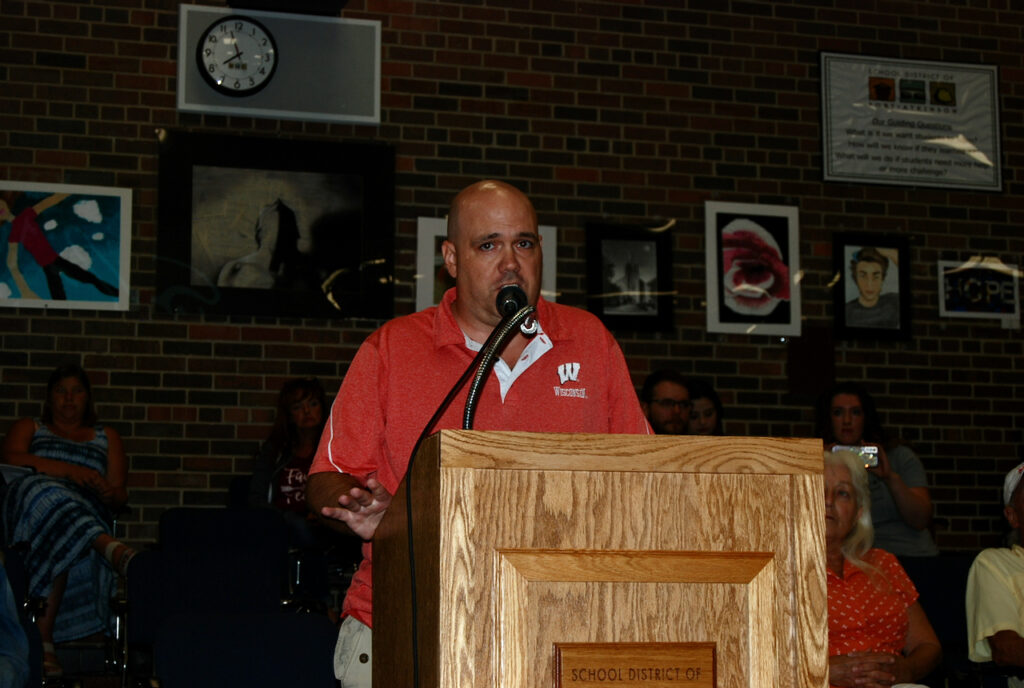
“I have listened to the arguments. I’ve noted that they are missing a few things. Namely evidence, data, science, common sense and basic human decency, said Jeff Patton, pictured above and a father of five.
Addressing the school board, he said: “You’ve presented no facts at all so let me do that now. COVID poses almost no threat or risk to our kids; 4.2 million children have tested positive for COVID and a total of .008% of them have died. What about the flu? More kids have died from the flu than COVID. Now did anyone on this board at any point in time ever suggest that kids wear masks for the flu?”
Patton asked: “Do any of you know the psychological damage we do to children by forcing them to cover their faces, teaching them that the air is toxic and that everyone around them is sick? Have you ever wondered about the health effects of forcing kids to breathe through sweat, and spit, and dirt-soaked rags every single day? What about learning to read when they can’t see the teacher annunciating the words? Or seeing the facial expressions of their classmates? What does it do to a developing child’s immune system to wear a mask every single day? You know what it’s called when you force kids to wear masks for fear of a virus that poses almost no threat to them? It’s called child abuse.”
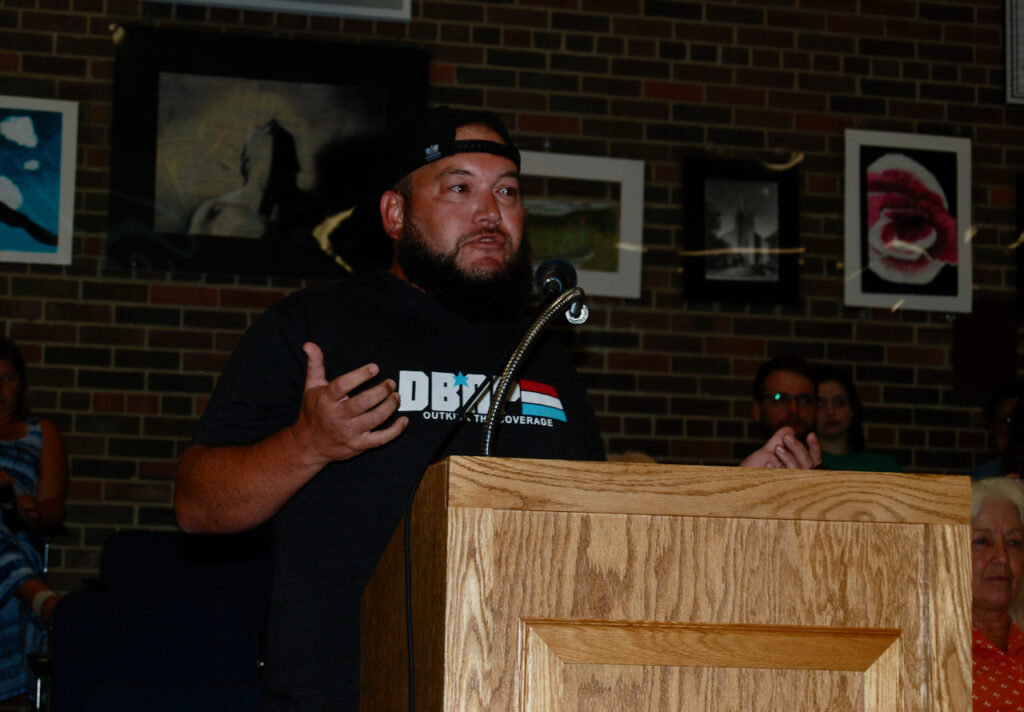
Dale Prisk, pictured above and a father of three, asked: “Who do you all in this room think knows our kids the best?
“Every single parent in this room can tell you something today about their kid that nobody sitting in front of me can. And it breaks my heart to think that I have to sit quiet and listen to people bark orders and tell us what’s best for everybody when we spent a year bending over backwards agreeing with masking that we did not agree with.
“I just want to know: “Where’s the compromise for the parents last year? I didn’t think it was a good idea to have my masks on my second- and first-year-old kids, If somebody can explain to me why they need it on at recess, I’m all ears.
“I’m trying to keep myself calm, but you know what makes people upset? Transparency. And when you march out the person in Jefferson County to BS everybody with inflated stats, and scare us, and use charts that are inflated to 100,000 case numbers to make things look bad, it doesn’t sit well. When people don’t get a chance to actually ask questions and get answers, they’re just told to be quiet and move on, that’s what makes people mad.”
Prisk questioned numbers shared by Jakvani in his presentation, saying: “When we talk about spikes, let’s be realistic, we’re talking about four cases and eight cases — eight cases to 16 cases — we just heard there’s 86,000 people in the county. Does that seem like a big number to anybody else? I’m not a doctor, and there are people here, way, way, way, way smarter than I am in this audience, for sure, but, I’ll put my parenting up against anybody in this room. And one thing I’m not going to do is sit by and let people tell me what’s best for my kids so it can protect them to feel like they are doing the right thing.
“Beyond that,” Prisk said, “I’d like to say everyone on the board does a great job, and it’s not a personal attack. I constantly believe that everybody sitting in front of me is doing things that they believe is right and we need to be respectful to them, but I think the compromise should be as clear as day: If you think masks are best for your kids, send them in a mask. If you don’t think it’s best, send them without one. Everybody gets along and let’s focus on what’s important. It’s not people’s feelings, it’s our kids’ education.”
Board comments
After hearing public comments, several board members addressed the audience, expressing their views.
Said board member Amy Reynolds: “It is a very, very, very tough decision to be up here to think about all of this. It’s not just simply putting something over a child’s face. I’ve been going over this for weeks now.
“We also have to take into consideration the entire student, the entire staff member, not just their face. There is a huge mental aspect to students that sometimes gets put on the back burner and it needs to be brought to the front. Health and safety is always important to have. It’s hard to be put in a situation where we have to say to hundreds of people: ‘do this or don’t do this.’ It’s very stressful on us, but it’s also stressful on parents, it’s also stressful on students, and can cause different things inside a person, whatever age it may be. I don’t think that that is for us to really say. I think it should be more on the parent, I think we need to put more back onto parents to help their children to grow. We do have a lot more students who are having way more anxiety than they should. We also have students that are way more fearful of a lot of things and COVID’s going to be around forever.
“I think it’s up to the parents to decide. When it comes to that kind of health and safety, per student, I think it’s up to the parents.”
Said board member Adam Paul: “This is pretty tough. I don’t think anybody up here takes joy in these types of decisions, having to tell people what to do.”
He described the situation as one where board members, no matter what they decided, could not please everyone.
“We’re kind of up that creek either way,” he said.
Addressing the audience, he said: “You talk about the flu vaccine. I think a lot of people bring that into the equation. I think that’s a decent parallel … at least every year right now parents have the choice to give their kids a flu shot and all parents don’t have that choice (with COVID) yet … it’s supposed to be coming this fall. The one thing I think we can all agree on after the last year is that we all want the schools open and we want kids in the schools.
“In my personal opinion, I think that masks do help to limit the spread of the COVID virus. You may disagree with me on that.
“My goal as a parent and as a school board member is to keep the schools open. I personally feel that there’s a net benefit in the (mask-wearing) directive of keeping our schools open,” but, he said, he advocated a mask mandate for “only as long as we need to, until we see the case rates dropping again. I would propose that we have to re-up that every single month. It’s not something that would be in perpetuity.”
As a teacher in a parochial school in the community, board member Rhona Buchta said, she has worked to stay informed.
“I have done much reading. I also teach these students. Not in the district, of course, but I teach students. Today was our first day of school.
“In the past two years, I have not seen smiles as prevalent as I did today.”
At her school, masks were optional, Buchta said.
She expressed a satisfaction with the attitudes of her returning students, noting that she perceived them to “want to learn.”
“Watching them just be happy to learn is exciting,” she said.
“I am not a medical doctor,” Buchta said, adding, “I believe that I have enough intelligence to read the data and do my best as possible to understand it, to analyze it, but I also want to make sure that I have an informed decision.
“I feel that I cannot get around telling our kids to do something that their parents may not want them to do — Ultimately, I just can’t seem to get past making them wear a mask without their parents’ consent.”
“I have really, really struggled with what we should be doing and what should be going on,” board member Kory Knickrehm said. “This has pained me to the core.
“We all joined the board to advance the school district, which is doing amazing things.”
Knickrehm said any decision made by the board would be in place for the first 12 days of school, after which, the board may find a need to revisit the protocol on Sept. 17, when the next monthly meeting is scheduled.
“At this point, I’m going to go ahead and say that we just really take a look at it, placing masks or no masks on the parents. I think that’s the best thing for everybody. I may come back on Sept. 17 and think completely the opposite. I don’t feel like regardless of what I determine today, I was going to feel good about it, but it’s how we move forward as a community and I think that’s the best option.
“Whatever happens,” he added, “We are all one community — we are all one team.”
An earlier story, offering COVID-19 recommendations made by Jefferson County epidemiologist Samroz Jakvani for K-12 school districts, is here: https://fortatkinsononline.com/county-epidemiologist-announces-interim-covid-19-guidance-for-k-12-schools/.
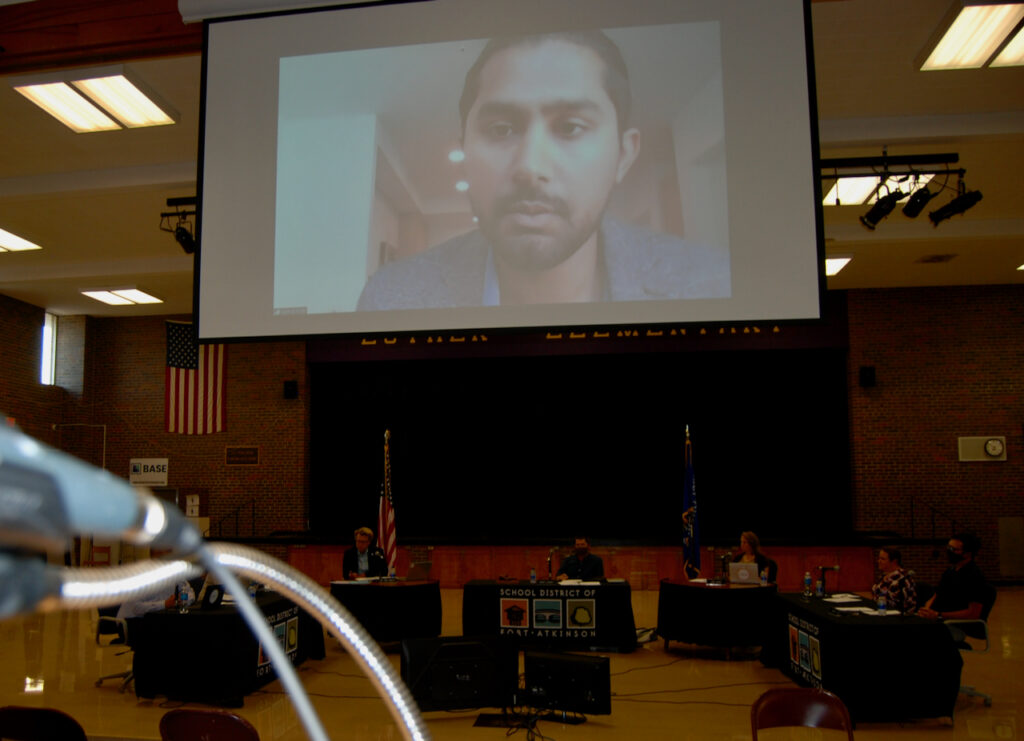
Speaking remotely and appearing on a large screen for the audience to see, Jefferson County epidemiologist Samroz Jakvani offers some COVID-19 statistics from across the county and the school district, providing a snapshot of COVID cases reported in August and the previous seven days.
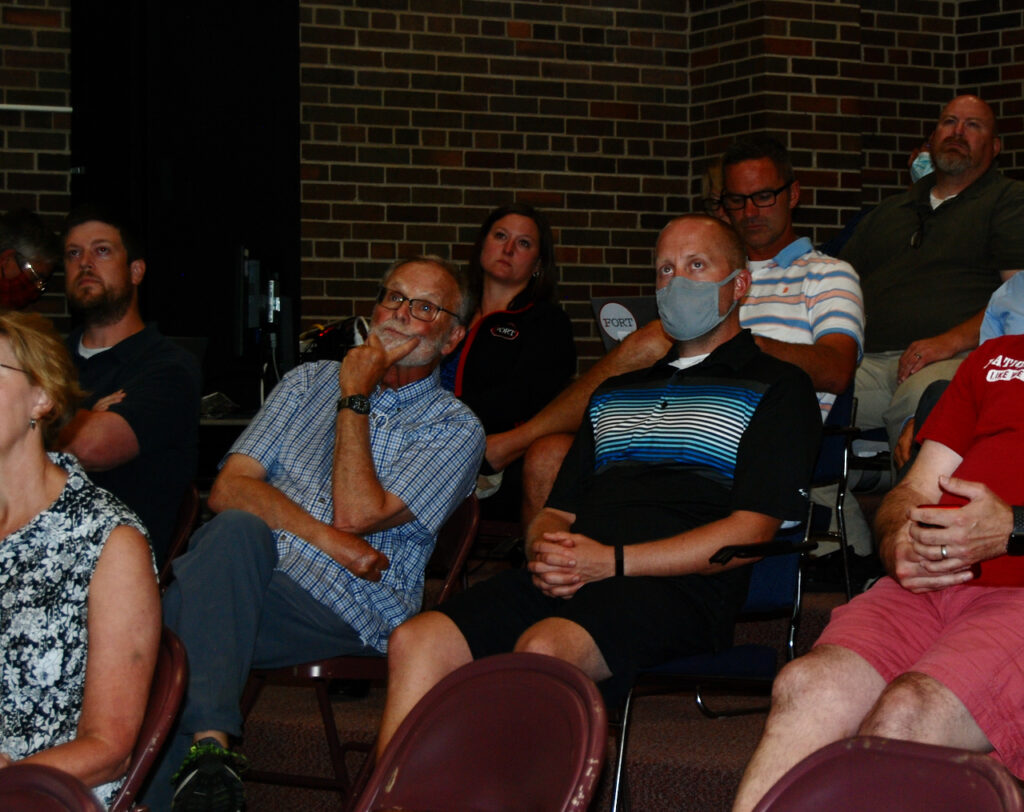
Audience members listen as Jefferson County epidemiologist Samroz Jakvani offers some COVID-19 statistics from across the county and the school district.
Kim McDarison photos.
Temperly named Wildermuth Award of Excellence recipient
(Originally published Aug. 27, 2021.)
By Chris Spangler
A woman whose dedicated efforts have greatly impacted the guidance programs at Fort Atkinson’s elementary and middle schools has been honored by the School District of Fort Atkinson.
Jean Temperly, Fort Atkinson Middle School guidance counselor, was presented the 36th annual Wildermuth Award for Excellence in Education during the district’s convocation at Fort Atkinson High School Thursday morning.
About 400 employees attended the event as the district kicked off the 2021-22 school year.
Funded by the board of education, Fort Atkinson Education Association and Fort Atkinson Community Foundation, the award is given in memory of Ron Wildermuth, a longtime teacher and director of instruction in the district who died in a motorcycle crash at the beginning of the 1986-87 school year.
Fort Atkinson Middle School principal Matt Wolf noted that the Wildermuth Award for Excellence in Education is highly respected among the staff and community, and that Wildermuth’s family, particularly his wife, Judy, selected the annual convocation as the most appropriate time to present this award considering Ron’s strong involvement in the hiring of new teachers and in planning this event.
“The Wildermuth Award for Excellence in Education was created to reward an educator in the School District of Fort Atkinson for exemplary work in the area of education,” Wolf said. “The recipient of the award may be a teacher, media specialist, guidance counselor, school social worker, school psychologist or another certified staff member.”
Wolf shared comments from Temperly’s colleagues about why she is so deserving of this award.
“Jean’s career impact can be seen throughout the district,” one nominator wrote. “As the first elementary school counselor in the district, she helped to shape the program that we have today.
“She has served on many district committees, where she is always an advocate for student wellness. She has been an important part of the middle school’s Pupil Services Department, and is willing to do whatever it takes to help shape our school environment into the best possible place for our students.
“Throughout her career, she started and facilitated many student assistant groups and clubs that allow all students in our school to feel supported and an integral part of our learning community,” the nominator added.
Another nominator said, “Jean has a gentle, welcoming personality which makes kids, as well as staff and parents, immediately feel comfortable around her. She expertly helps students reflect on their actions and choices and then guides them along a path of independence.
“There’s never a hint of judgement or disapproval from her, no matter what students speak to her about. There are hundreds of students who are in a better place in life right now because of Jean,” the nominator concluded.
Temperly received an engraved plaque and a check for $1,000. The Fort Atkinson Community Foundation contributed $500 toward the award and the board of education and Fort Atkinson Education Association each provided $250.
Accepting the award to a standing ovation, a surprised Temperly thanked her “first school families at Rockwell and Barrie,” her current school family at the middle school and her family at home, who joined her on stage.
Also during the presentation, Wolf saluted the remaining educators who were nominated for the honor.
“There were many fantastic educators this year who were nominated for the outstanding contribution that they have brought to our school district and its students,” Wolf said.
In addition to Temperly, the award nominees included: Susie Belzer, art teacher at Rockwell Elementary School; Bill Callaway, orchestra teacher, Fort Atkinson Middle School and Fort Atkinson High School; Cathy Daly, IMC director at Purdy; Erin Ehler, special education teacher, high school; Pam Gustin, second-grade teacher at Purdy Elementary School; Sara Karnatz, math teacher at the middle school; Jade Korth, fourth-grade teacher at Luther Elementary School; Julie Kusel, special education at Purdy; Ambyr Lemke, third-grade teacher at Rockwell; Heather O’Neill, speech teacher at the middle school.
Also, Nate Pyka, special education teacher at the high school; Candice Sayre, literacy coordinator for the School District of Fort Atkinson; Amy Schuldt, kindergarten teacher at Rockwell; Rebecca Tenhoor, occupational therapist at Rockwell; Sonja Twedt, math interventionist and coach at the middle school; and Katie Upthall, guidance counselor at the high school.
For more information on each of the nominees for the Wildermuth Award, as well as for the Support Staff Award for Excellence (see related story), visit https://fortatkinsononline.com/wildermuth-award-award-for-excellence-in-education-nominees-announced/ and https://fortatkinsononline.com/wildermuth-award-support-staff-award-for-excellence-in-education-part-2/.

The 36th annual Wildermuth Award for Excellence recipient Jean Temperly and her family pose for photographs after the recipient of the award was announced Thursday during a ceremony held as part of the 2021-22 school year convocation.
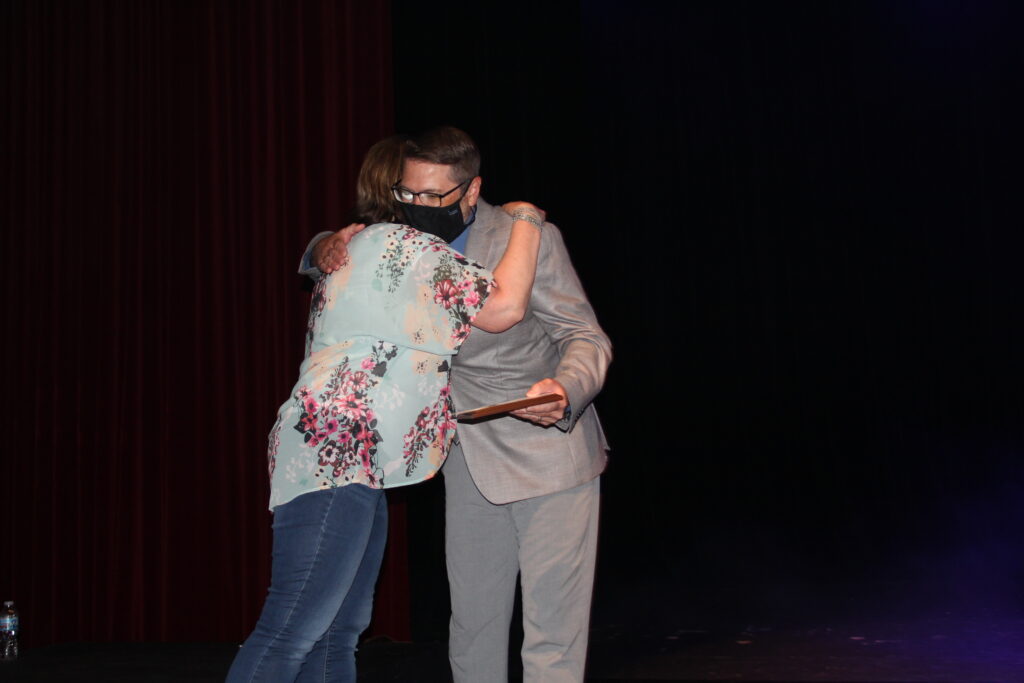
Fort Atkinson Middle School principal Matt Wolf hugs Jean Temperly upon announcing she is the 2021 recipient of the Wildermuth Award for Excellence in Education. Chris Spangler photo.

With her family by her side, Jean Temperly thanks the School District of Fort Atkinson for the 2021 Wildermuth Award for Excellence in Education. Chris Spangler photo.
School district’s nutrition team recognized as ‘Outstanding Support Staff’
(Originally published Aug. 27, 2021.)
By Chris Spangler
A group of employees who rolled with each punch the coronavirus pandemic dished out and never missed a beat was recognized by the School District of Fort Atkinson Thursday morning.
The district’s nutrition team was presented the Outstanding Support Staff Award of Excellence during the annual convocation at Fort Atkinson High School.
The honor is given annually to an individual — or in this case, a group of 17 individuals — for going the extra mile in supporting the district and its children.
“This year’s recipient was recognized for the perseverance they demonstrated during what was aptly described as an ‘unorthodox’ year,” Director of Pupil Services and Special Education Lisa Hollenberger said, referring to the COVID-19 pandemic as she announced the award.
“While many of us cringe at the use of the word ‘pivot’ when it comes to describing the level and frequency of changes we needed to respond to, this word 100% encompasses what this year’s recipient had to consistently demonstrate,” she added,
Hollenberger noted that the nutrition team was required to design entirely new systems to accommodate each new schedule or mitigation requirement that was put into place, and the members never missed a beat.
“Their work reached every single student and made sure needs were met so learning could occur, regardless of the learning format,” she said.
The nutrition team worked well outside of a traditional school schedule to meet the needs of those in the schools and those in the greater community and again, Hollenberger added.
“As written in the nomination letter, ‘… the nature of this nomination fully reflects the true meaning behind ‘one team.’ This nomination embodies what the ‘support’ in support staff really means as they work daily to support each other, our mission and students so they can succeed,” she said.
Members of the honored nutrition team are: Katy Anfang-Kruizenga, Kimberly Baker, Patricia Bankert, Janet Bills, Candace Butz Pint, Meladee Carey, Dana Dahlke, Tabatha Edwards, Sharon Hacht, Ann Holzli, Lisa Kutz, Mark Marquart, Cynthia Maxwell, Laurie Meske, Sigrid Reich, Brooke Schultz and Dalelyn Stock.
The nomination letter, written by Christina Oswald, district nutrition director, explained some of the punches the coronavirus dished out and how the nutrition team punched back.
“As you are aware, the entire 2020-21 school year has also been a bit ‘unorthodox,’ if you will, but despite this, this group has persevered, packing meals in boxes for not only our students, but for any child that needed meals in our entire community,” Oswald wrote.
“Now, with just days to prepare, we had to design a whole new procedure for serving meals that allowed for physical distancing, no self-serving of any meal component and, of course, constant mask-wearing, even while working next to hot ovens and with hot water,” she said. “And again, they just rolled with it.”
Fast-forward two weeks and the shutdown began.
“The team instantly did another ‘pivot’ back to bagged and boxed meals, as many as the community needed, Oswald explained.
“But they didn’t stop there. The holidays were fast approaching, so they pulled together and, on top of the already hundreds of meal boxes being served, successfully executed the preparation of hundreds of Thanksgiving and holiday meals for Fort families,” she said.
They soon heard that their schools would reopen to students, but not all students would choose to return.
“In January, we successfully opened all kitchens once again, and continued to prepare meal boxes for our virtual students, younger siblings and kiddos that don’t attend our district schools, but need the meals,” Oswald said.
“Of course, our department was not spared from COVID cases. In January, we were hard hit with many of our folks being quarantined. Again, the remaining members picked up the slack and continued to serve students and staff with barely anyone from outside our department realizing how understaffed the crew had become.”
Oswald said that she realized nominating multiple people for the Support Staff Award of Excellence was not business as usual, but nothing about 2020-21 has been.
“I tried, but I could not single out one person on this team that deserves it more than the rest,” Oswald said. “Each and every one of them played a role in the department’s success and each and every one of them makes a difference for every child that passes through their lines”
She said that the team embodies what the ‘support’ in support staff really means.
“They are here at work daily, supporting each other, supporting our mission, supporting the students so they can succeed,” she added.
District Administrator Rob Abbott agreed.
“This team has truly been amazing, just like always, but man, this group has come together bigtime,” he said. “When we talked about Day One we’ll have food ready for our kids, Day One we had food ready for our kids, and it’s never stopped. Congratulations!
The nutrition team was among 33 individuals and groups nominated for the support staff honor.
“Thirty-three people, or groups of people, were recognized by their peers, supervisors, parents, community members and colleagues for focusing on student needs, building relationships and connections, keeping up with the ever-changing demands of a constantly changing environment, providing basic needs so students could focus on learning, establishing routines, schedules and expectations in school and beyond the classroom … and the list goes on,” Hollenberger said.
“It is safe to say that in a year filled with extra needs that required each of us to ‘shuffle,’ ‘change,’ ‘adjust’ ‘ readjust’ and ‘pivot,’ there were many who went above and beyond,” she added. “I am proud to be able to recognize those who are described as champions, team players and local heroes,” she added.
In addition to the district nutrition team, the nominees were: Tiffany Albrecht , special education aide, Barrie Elementary School; Sadie Anderson, special education aide, Rockwell Elementary School; Barb Athas, paraprofessional, Barrie; Lisa Brom, special education aide, Fort Atkinson Middle School; Cheryl Costa, paraprofessional, Purdy Elementary School; Jocelyn Dawson, special education aide, Fort Atkinson Middle School.
Also, Sarah Dewing, library aide, Purdy; Melanie Dunkleberger , administrative assistant, Luther Elementary School; Danny Fairfield, district building and grounds; Jacki Foelker, special education aide, Purdy; Bonnie Garthwait, paraprofessional, Barrie; Mahna Grossman, special education aide, Barrie; Kathy Hansen, special education aide, Barrie; Kris Hofer, paraprofessional, Purdy; Sabra Jacobsen, paraprofessional, Luther; Shaughn Kennedy, special education aide, Luther; Jamy Knaack, special education aide, Purdy; Kelly Knickrehm, paraprofessional, Barrie; Jamie Knutson, administrative assistant, Fort Atkinson High School.
And, Melissa Krahn, paraprofessional, Purdy; Kelly Opperman, special education aide, Purdy; Denise Poeppel, special education Aide, Luther; Emily Prisk , paraprofessional, Luther ; Heather Radloff, administrative assistant, Rockwell Elementary School; Deb Reichert, special education aide, Fort Atkinson Middle School; Yolanda Riddell , paraprofessional, Rockwell; Tonya Schultz , special education aide, Fort Atkinson Middle School; Andrea Stewart library aide, Luther; and Jenna Thornton, paraprofessional, Barrie; Kellie Todd, paraprofessional, Rockwell; Jen Vogel, paraprofessional, Luther ; Laura Waugh, special education aide, Fort Atkinson Middle School.
“Congratulations to all of our nominees and thank you for your dedication to our students and families,” Hollenberger concluded.
For more information on each of the nominees for the Support Staff Award for Excellence, as well as the Wildermuth Award for Excellence in Education (see related story), visit https://fortatkinsononline.com/wildermuth-award-award-for-excellence-in-education-nominees-announced/ and https://fortatkinsononline.com/wildermuth-award-support-staff-award-for-excellence-in-education-part-2/.
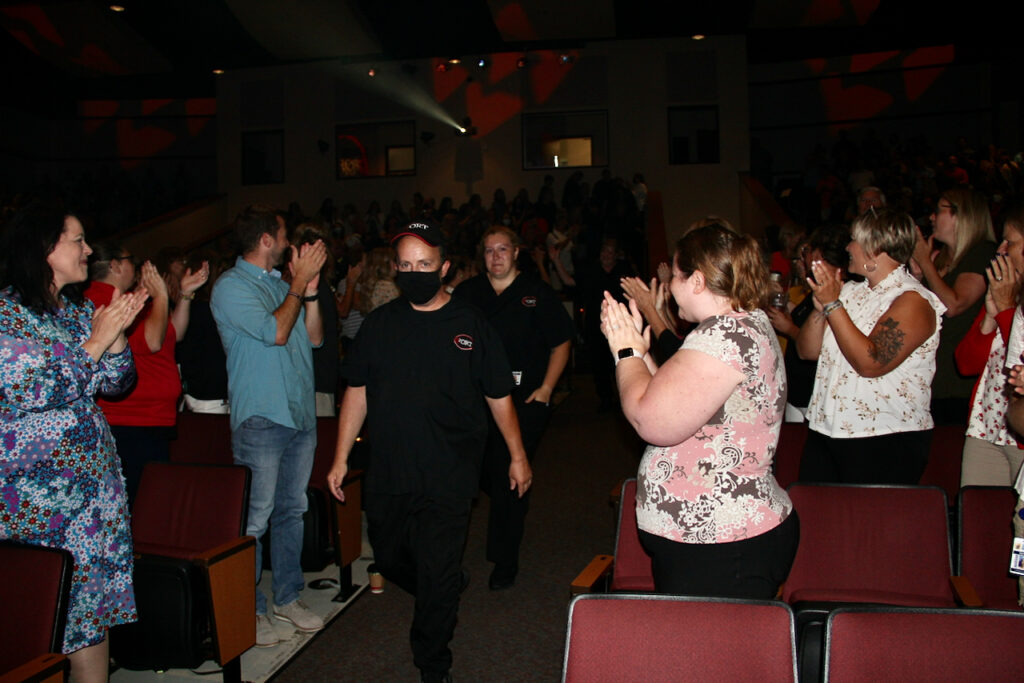
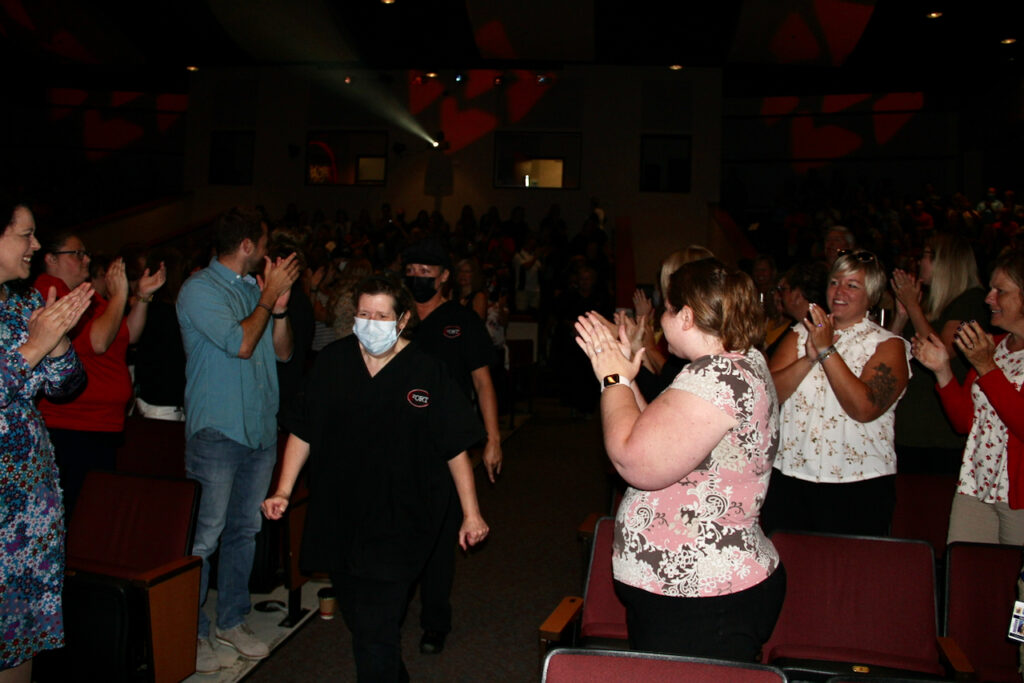

Above three photos: Members of the School District of Fort Atkinson nutrition team are called to the stage Thursday to receive the Outstanding Support Staff Award of Excellence during the annual convocation at Fort Atkinson High School.
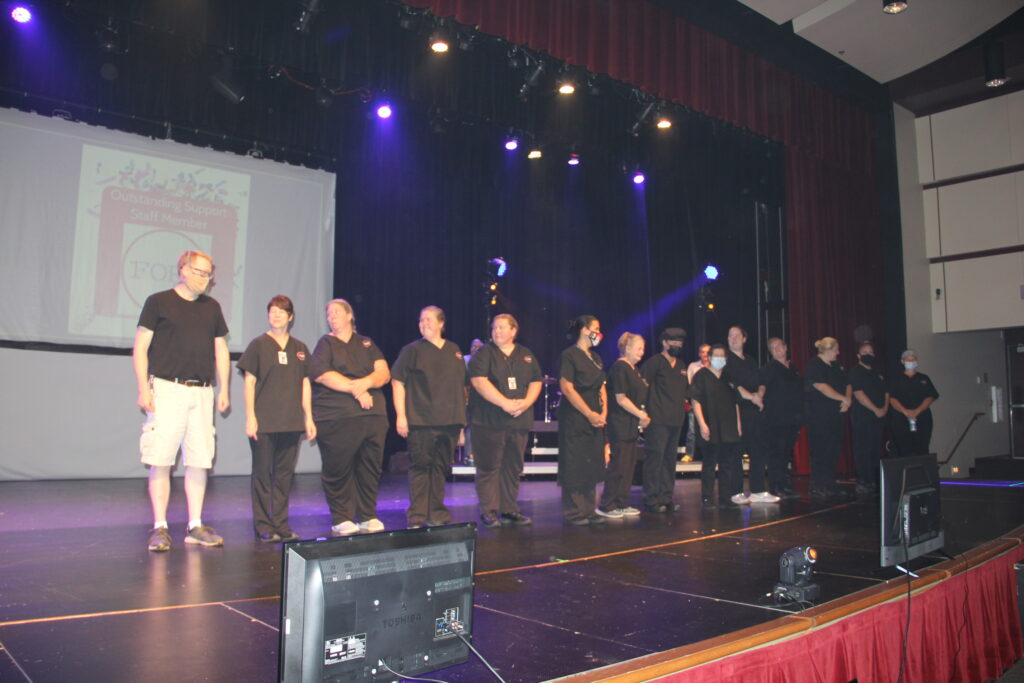
Members of the School District of Fort Atkinson nutrition team take the stage after winning the Support Staff Award of Excellence during the district’s convocation Thursday.

Standing at the podium, Christina Oswald, district nutrition services director, who nominated the nutrition team for the Support Staff Award of Excellence, says a few words during the convocation Thursday.
Chris Spangler photos.
Unity Project virtual meeting to feature Community Police Team, survey results
(Originally published Aug. 27, 2021.)
The Unity Project of Fort Atkinson invites the public to a virtual meeting Tuesday, Sept. 14, to learn more about its Community-Police Partnership Team and recent policing survey.
The meeting is set for 7 p.m. Details on how to attend will be available on the Unity Project website, www.fort4all.com, prior to the event.
The meeting will feature Community-Police Partnership Team Co-chairs Kaia Fowler and Sue Johnson talking about the team’s mission and work.
In addition, they will share preliminary results from the Community Police Survey.
Finally, next steps and ideas for increasing communication and building bridges between all members of the community and the police department will be shared.
Members of the public will be able to use a web form to submit questions for the speakers to address as time permits.
For more information, visit: www.fort4all.com or https://www.facebook.com/FortForAll.
Vintage travel trailer weekend rally held
(Originally published Aug. 30, 2021.)
By Chris Spangler
Talk about happy campers …
After a year apart due to the COVID-19 pandemic, travelers from throughout Wisconsin and Iowa gathered in the town of Hebron this past weekend for a vintage camper rally.
Held at the Clearview Lane home of Steve and Mary Mode, just east of Fort Atkinson, the weekend marked the second of what is becoming an annual event.
“Vintage” definitely was the word, as the travel trailers from the 1960s and ’70s were decorated in bright greens, oranges, seafoams and yellows, reminiscent of the decades in which they were built.
From 1 to 3 p.m. Saturday, the owners opened their campers to the public to tour and chat about what it took to bring the aging trailers back to life.
Shaded by the awning on their 1965 Airstream International Land Yacht, Melissa and David Sykora of Baldwin said they bought the 27-foot trailer in 2011.
“We were looking for an Airstream because if we were going to redo a trailer, I wanted something that would retain its value,” David said.
As it turned out, they located one when they least expected it.
“We found this while driving on a back road,” Melissa recalled. “We were trying to find a trailer and came upon a house that had three sitting outside, and David said, ‘who needs three Airstreams?’ So we went and asked if they’d sell one.”
The owner did not wish to part with the Airstreams built in the 1950s, but he took the couple up on their offer to buy the 1965 model.
“We tore it down to the frame and rebuilt it how we wanted it,” David said. “We redesigned how it originally was.”
The Sykoras separated the gray and black water tank into two and increased the 40-gallon freshwater tank to 60 gallons.
“We can go a week with fresh water from just the one tank,” David said.
David also polished the Airstream’s aluminum exterior to a mirror-like shine.
“We did all of the work ourselves,” he said. “We did not have anything done by anybody else.”
The project took about five years to complete and the Sykoras have been attending vintage shows in the three years since.
David said he and Melissa now have caught the rehab bug.
“It’s contagious,” he said. “Now we have another one (Winnebago) that we’re trying to redo.”
Parked next door were Melissa’s sister and brother-in-law, Lori and Stuart Peterson of Oxford. Their trailer is a Hi-Lo built in 1976.
“When we bought it, it had a couple sheets of plywood in it; the guy was going to put trains in it,” Stuart explained. “He passed away, and the grandkids didn’t want any part of it, so we took it and gutted it.
“We took it right down to the studs and brought her back to life,” he added.
Like many vintage trailer owners, the Petersons rehabbed the Hi-Lo themselves, albeit with some help from brother-in-law David.
They also have a 1977 GMC motorhome, along with a 1959 Friendship camper and 1969 Concord they bought with David and Melissa for future projects.
Meanwhile, Kent and Jenni Marquardt of Pewaukee brought their 1966 Holiday Rambler Traveler to the rally. Kent grew up on Frommader Road in the town of Hebron and was a classmate of the Modes at Fort Atkinson High School.
“We were farm kids together and graduated in 1978. I am originally a Hebronite and it is always good to come back,” Kent said.
Their 17-foot Holiday Rambler Traveler was purchased last year and its revamp was completed one month ago.
“It’s a rehab, not a restore; it was a little too far gone to restore,” Jenni pointed out.
The entire middle section and bathroom are all original, they noted.
“We rebuilt the back and front from the ground up, basically,” Jenni said. “We didn’t have any idea of what we were doing.
“It originally had a couch that folded out in the back,” she continued. “We took that out and put a static bed in because we gained eight inches of bed space. We took out all the plumbing and propane and made it a dry camper.”
For electricity, the Marquardts use a portable solar panel and two 12-volt deep-cycle marine batteries that are hooked to a 1,000 watt inverter. The light fixtures are 12-volt LEDs.
“As long as I’ve got sun, I’ve got power,” Kent said.
The Marquardts’ camper is named Amelia … and for good reason.
“We’re life members of the EAA (Experimental Aircraft Association). I grew up with airplanes — I am not a pilot, just an enthusiast,” said Kent. “I’ve been going to the EAA convention for 51 years now.”
“We needed somewhere to stay, so we were thinking tents, popups. We started looking around. We found this and it was probably one of the better ones of what we were looking for … until we opened it up.”
But the camper had good bones, so the Marquardts restored what needed to be done.
“I was in the demolition business for 20 years. I don’t have the green thumb to put things back together, but I can take it out,” Kent said. “It was a work in progress to put it all back together. We painted it four days before we headed out to the EAA grounds and she put the decals on it the night before.”
The camper was named Amelia in honor of pioneer pilot Amelia Earhart, of course, and the theme continues with the interior décor and Earhart’s airplane tail number painted on an exterior louvre of a jalousie window.
Jenni noted that on hot days, Amelia actually is a lot more comfortable that some of the more modern campers because it was designed for airflow.
“The new stuff is all air conditioning,” she said.
Kent echoed his neighbors’ remarks about the love for vintage campers being infectious.
“No matter where you go …, you’re driving down the highway and you see something boxy that’s in the woods and you’re on the brake’, he said. “’What’s that?’ you ask.”
Hosts Steve and Mary Mode had two campers on display — a bright yellow 1961 Mallard made in West Bend and a 1967 Bighorn.
“This camper has been everywhere, from Yellowstone to Colorado to Kansas,” Steve said, pointing to the Mallard. “We dragged this over Bear Tooth Pass going into Montana. We were up above a thunderstorm and saw rain come out of a cloud below us. It was really cool.
“We drag it everywhere. It is our daily driver,” he added.
Unlike their guests, the Modes did not have to fully rehab their campers.
“It’s pretty much as was,” Steve said of the 14-foot Mallard.
They did paint the floor and exterior and redo the cushions.
“We always joke that the outside was painted chalk white, because when you touched it, it came off on your hands,” he said. “So we cleaned it up, I took all the chrome off and then Lucky B Automotive sprayed it.”
The Bighorn is 13 feet long and nine inches narrower than the Mallard. However, it contains a bathroom.
“That’s our traveler,” Steve said. “That went out to New York last year. We camped Pennsylvania; we camped Ohio.”
He first saw the camper while selling real estate.
“I’m showing a house in Deerfield and in the barn is this camper with a for-sale sign on it that was cracked, but there was a number on it. So when I got done with the showing, I made a phone call and ended up taking the camper home.
“My wife was, like, ‘what do we need another camper for?’, but we needed it.
“It’s all part of ‘ya gotta save another one.’”
Two months ago, they bought a 1951 Pontiac Chiefton to pull the Bighorn on their trips.
“That came from a guy from Winneconne. … It has a new engine and new transmission, so I don’t fear driving it far.
“We got lucky. That was 100-percent original,” he said of the rest of the car.
Whether on the road or at home, Steve said, vintage camper rallies are all about the people.
“Last year, many of the rallies were canceled due to COVID,” he said. “So we reached out to our dear friends and asked if they would feel comfortable camping in our backyard. Three did. They’ve become great friends.”
This year, it grew, and it appears that the last weekend of August will become the regular date for an annual vintage camper rally at Hebron.
“We’ll keep inviting more people to get together,” Steve said. “It’s a little bit different flavor than other shows we go to because it’s not a campground. It’s just fun.”

Melissa and David Sykora of Baldwin pose with their 27-foot Airstream International Land Yacht. The 1965 travel trailer was purchased in 2011 and then renovated. The Sykoras brought it to last weekend’s vintage camper rally at the Steve and Mary Mode home in the town of Hebron.

Jim Merriman of Fort Atkinson, left, tours a renovated 1965 Airstream International Land Yacht Saturday at the vintage camper rally in the town of Hebron. With him is co-owner David Sykora of Baldwin. David owns the camper with his wife, Melissa.

Lori and Stuart Peterson relax in the shade of their 1976 Hi-Lo during the vintage camper rally in Hebron Saturday.

Stuart and Lori and Stuart Peterson of Oxford pose for a photo inside their 1976 Hi-Lo camper at a Hebron rally Saturday.

Guests list what they love about vintage campers during a rally last weekend in Hebron.
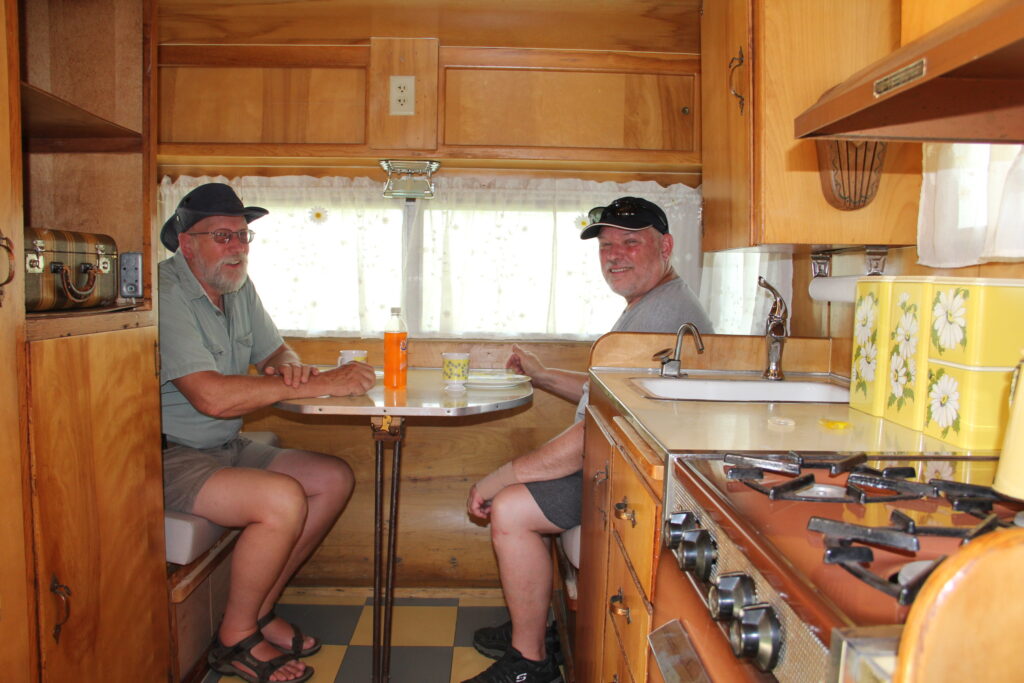
John Greene, left, and Bob Lewicki, both of Fort Atkinson, chat inside a 1965 Mallard owned by Steve and Mary Mode, who hosted the vintage camper rally last weekend at their Hebron home.

Steve and Mary Mode pull their 1967 Bighorn camper with a 1951 Pontiac Chieftain that they purchased a couple months ago.
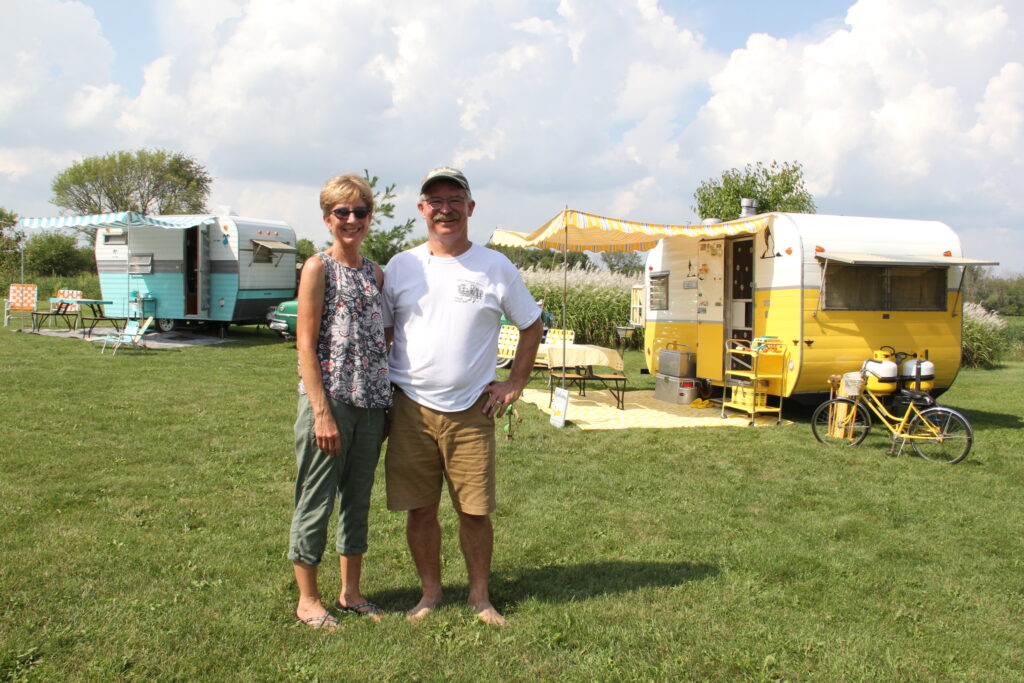
Mary and Steve Mode pose with their two vintage campers. On the left is a 1976 Bighorn and the right, a 1961 Mallard. The Modes hosted a vintage camper rally last weekend at their town of Hebron residence, and the campers were available for public viewing Saturday afternoon.

Kent and Jenni Marquardt of Pewaukee pose with their 1966 Holiday Rambler Traveler at the vintage camper rally in Hebron Saturday. Kent grew up on Frommader Road in the town of Hebron and was a classmate of hosts Steve and Mary (Hack) Mode at Fort Atkinson High School.

Jenni Marquardt of Pewaukee, left, shows Lori Becker of Fort Atkinson the interior of her 1966 Holiday Rambler Traveler camper at the vintage camper rally in Hebron Saturday.
Chris Spangler photos.
Lake district: Shumaker keeps seat; $322,000 operating budget approved
(Originally published Aug. 31, 2021.)
By Kim McDarison
Electors of the Rock-Koshkonong Lake District (RKLD) approved a $322,000 operating budget for the 2021-2022 fiscal year and elected incumbent commissioner Mike Shumaker to another term Saturday during the district’s annual meeting.
The meeting, held at Race Track Park, Edgerton, was attended by just over 100 people.
The full meeting included several components, among them a budget hearing, at which time electors learned from RKLD commissioner and treasurer Mark Meyer about how the budget was calculated; an election to fill one open seat held by Shumaker who ran unopposed, and the annual meeting, at which time several members of the electorate came forward to speak, with some voicing approval of and others in opposition to leaving monies in the budget earmarked for a potential boat landing project. The budget ultimately was approved as it was initially proposed, with monies remaining available should a boat landing project come before the board.
After the annual meeting, a regular board meeting was held, at which time the newly elected board installed officers.
Budget hearing
Calculated at $322,000, Meyer said during the budget hearing, the RKLD operating budget proposed for 2021-2022 offered the same total as last year, but, he said, within line items, some changes were proposed.
Meyer said his objectives as treasurer are to create “a clean operating budget, project tracking, and audit resolution.”
In keeping with those objectives, Meyer said, commissioner expenses have gone down 90% annually, and the district’s legal expenses have decreased by at least 90% from previous years, and quarterly RKLD board meetings, which were held in the past, have been replaced with monthly meetings.
This year, the district has increased its insurance expenditure, gaining $1 million in real property insurance at a cost of $1,225 per year.
Further, he said, accounting costs decreased by $700 because a representative from an auditing firm was not required to attend the annual meeting. Instead, Meyer said, a transactional audit was performed (on Aug. 25), by a five-member committee whose members included representatives from several of the district’s taxing authorities, along with Meyer and RKLD Chairman Alan Sweeney.
Expenses associated with buoys had gone up “considerably,” Meyer said, attributing a large portion of the increases to a buoy and light project undertaken this year at a railroad bridge spanning the Rock River.
He described all other operating costs as “constant.”
Turning to budget calculations, Meyer explained that prior to the 2020-2021 fiscal year, the budget was derived using an average number of 4,000 parcels within the district that were subject to a “special fee.” Last year, the district approved using a tax levy structure, disposing of the special fee. The levy structure, Meyer said, uses a number more representative of the actual number of parcels within the district, which, he noted, was between 4,400 and 4,500. Using the special fee structure, he said, not all the monies collected by the district were allocated as part of the operating budget because dollars were received from the 400 or 500 parcels that were not used as part of the calculation. When using the average of 4,000 parcels to calculate the budget, he continued, an amount representing approximately 10% of the full attainable budget was not allocated within the budget approved annually. Using the new taxing system, all of the monies collected would be allocated as part of the fiscal budget, he added.
Meyer said that while his calculation would produce an average mill rate of .00049, or $49 per $100,000 of assessed property value, the amount owed by individual tax payers would not represent the average calculation. Tax bill rates would be adjusted to represent equalized value, a rate used by the state to disperse more fairly the full taxable amount levied by the lake district against each property within the district. Equalized value takes into consideration the different tax rates collected by each of the municipalities included within the district. The rate then apportions the amount owned by each property owner as a percentage against the mill rate they, as a property owner within their municipality, pay.
Meyer said the district spans five municipalities (including the towns of Fulton, Milton, Koshkonong, Sumner and Albion) within three counties (Jefferson, Rock and Dane). (The RKLD board includes appointed representation from the town of Fulton and Rock County, which are the two taxing jurisdictions with the most property owners included within the lake district.)
Looking at the district’s lake management plans and segregated funds, Meyer said the Indianford Dam Fund, which currently holds $711,542, will be drawn down to $11,542 after it is used to fund the district’s water control project, which includes new gates and renovations to the dam. To fund the full dam project, Meyer said, RKLD will be receiving a grant facilitated through the Wisconsin Department of Natural Resources (DNR) of $400,000 and will take out a loan which will be paid back at a rate of $30,000 over the next 10 years.
He also recognized a donation made by the Lake Koshkonong Wetland Association of $2,500 to help offset the costs of a new cleaning boom included as part of the water control project.
Meyer said the district holds $107,232 within its Lake Fund, with $100,000 of those dollars allocated to “boat landing projects.” Monies were approved for the allocation during last year’s annual meeting, he said.
Also included as a line item within the general fund/operating budget is $23,950, earmarked for “landings, new initiatives, buoys.”
As part of the district’s money management plans, Meyer said, internal borrowing from segregated funds “has stopped. Interest spending has stopped and remains with the fund.”
Additionally, he said, “audit resolution will ensure direct access to the district’s financials annually.”
Annual meeting
Chairman’s report
Sweeney opened the annual meeting with his report, a portion of which focused on updating the electorate about the Indianford Dam water control project.
He said updates would continue through the district’s website.
“The 2020 approved water control project is now under contract with an effective date of August 24, 2021,” Sweeney said, noting that the district has selected De Pere-based IEI General Contractors, Inc., to undertake the project. After a bidding process which completed earlier in August, the company brought the low bid, coming in at just under $1.9 million, which, Sweeney noted, is under the projected cost of the project of $2.25 million.
In a separate interview, Sweeney told Fort Atkinson Online that other bidders for the project included Manitowoc-based Michael’s Construction, coming in at $2.06 million; Janesville-based JP Cullen, who bid just over $2.4 million, and Black River Falls-based Lunda Construction, with a bid of nearly $2.3 million.
Within his report, Sweeney said the DNR has given its approval to the project’s design and is finalizing the $400,000 grant award for the lake district pending proof of contract insurance and bonding review.
Trash racks on the dam’s powerhouse, which were previously included as part of the project, Sweeney said, “have been a money drain and maintenance nightmare for over a century.”
He cited a “non-toxic relationship” with the state’s DNR as producing a benefit to the district, in the form of gaining DNR approval to eliminate trash racks and instead install a cleaning boom system, which, he noted, will use some of the components of a nonfunctioning boom already present at the site.
He noted contributions from the district’s dam operator, whom, he said, has “worked diligently to keep water levels at the maximum of the operating order, expediting the recovery time for the wetlands’ recovery per the 2019 (DNR) order.”
RKLD has requested of the DNR that a wetlands study, started in 2019, which has since been delayed due to high water above the operating order for an extended period of time, undergo completion, Sweeney said. The Lake Koshkonong Wetland Association has also requested completion of the study, he added.
Said Sweeney: “The Indianford water control project will increase the discharge capacity by 49%. That increase, along with basic operating protocol, will facilitate the discussion of a different water level order, with an increase for the recreation seasons on Lake Koshkonong and water levels in non-recreation seasons for habitat maintenance and wetland recovery.”
2020-2021 transactional audit report
RKLD Board of Supervisors Commissioner Susan Shearer read to electors the district’s transactional audit report as approved by the district’s audit committee, which met on Aug. 25.
In attendance at the Fulton Town Hall and forming the RKLD Audit Committee, she said, were officials representing the towns of Milton, Fulton, Albion, Sumner and Koshkonong. Also in attendance from RKLD were Meyer and Sweeney.
The committee reviewed bank records and invoices as provided by Meyer from between January and December of 2020.
According to minutes from the meeting as submitted by RKLD elector Justin Shultz, the committee found the records to be “clear and satisfactory.”
During the committee meeting, Meyer was noted as saying that new policies implemented by RKLD would require that every expense come before the RKLD board for approval on a monthly basis, which, he said, would make expenses easier to track by both board members and constituents. All new expenses, and not just those over $2,500 as was past practice, would require board approval. Further, Meyer said, RKLD was maintaining physical copies of invoices for record-keeping purposes, which, the minutes reported, “was not done in the past.”
Responding to questions posed by the audit committee, the minutes state, Meyer said the resolution to form the committee was passed “as a measure of transparency.”
The resolution gives each chairman of the five towns in the district the power to appoint a member to the district’s audit committee and the ability to review the district’s financial documents.
The report further described how district revenues are received, with Meyer noting that the district collects revenues from the five towns and the three counties —Jefferson, Rock and Dane — that have property owners within the district. Revenues are deposited in “lump sums,” although, Meyer said, the district sometimes receives revenues at unspecified times because not all property taxes are paid on time.
The district receives its tax apportion after the taxing jurisdiction receives payment from RKLD property owners within those jurisdictions.
Approval of the budget
While the operating budget was approved by electors as submitted by the RKLD board, several electors came to the microphone with concerns, most of which revolved around monies earmarked for a boat launch project.
The discussion yielded several motions, all of which did not pass.
Elector Mike Gransey asked RKLD board members to explain the project for which use of the $23,950, under the line item of “landings, new initiatives, buoys” was being proposed.
Meyer said there was not a specific project.
“So we are putting 8% of our revenue budget toward something we don’t have a plan for?” Gransey asked. “As a taxpayer, I would like to see a plan,” he said.
Meyer described the money as “a vehicle to get to a project.”
Gransey asked for clarification about the money earmarked for the water control project.
Meyer said that $1.5 million was what the electors approved last year as an amount that the district could borrow. The full project, which was projected to cost $2.25 million, would be funding in several parts, including a borrowing, $700,000 from the district’s Dam Fund and a grant of $400,000.
Gransey also wondered: Of the additional 10% developed in the operating budget when using the 4,500 parcel count as opposed to 4,000, would taxpayers see a corresponding reduction in the next fiscal budget?
Meyer said the district would levy taxes against all of the district’s taxable property, which he estimated at $660 million. Those dollars would then be collected to form the district’s operating budget.
Gransey made a motion to remove the line item of $23,950 earmarked for projects from the 2021-2022 operating budget.
Pointing to a line item in the budget from 2021 of $27,000, labeled “Landings, new initiatives, buoys,” another constituent, Bill Boyd, comparing the number to the $23,950 proposed in the 2022 budget, asked if the 2022 number was earmarked specifically for boat landings.
Meyer responded by saying, “yes.” He called the money “project starter funds,” noting that any project the district might explore would come with some exploration costs. The money allowed the district to make those explorations.
Meyer noted that last year at the annual meeting, constituents were interested in exploring a new boat landing, which, he said, became known as the Bingham Road project.
“The project went flat,” Meyer said, adding that some new initiatives were under discussion to continue with boat landing improvements.
Said Gransey: “I don’t believe we should be in the business of developing or maintaining landings.” He also said he thought the board needed a more detailed understanding of the project.
Speaking in opposition of the motion made by Gransey, constituent Jerry Cox said he was in favor of keeping the $23,950 in the budget as earmarked so that the board had flexibility to address unforeseen needs.
A constituent said he trusted the board to make decisions, adding: “The reason we’re here to vote for you people is to watch out over our interests. With that money, you guys have the flexibility.”
Another elector, George Wellenkotter, also spoke in opposition to the motion, saying: “leave the money alone.”
Electors were asked to show their support for the motion by holding up pink cards. The motion failed by a large margin.
In a second motion, Gransey asked for the removal of $100,000 earmarked for boat launch projects, with those monies residing in the Lake Restoration Fund. The motion stipulated that those monies be used instead to offset the cost of the dam water control project.
The motion included moving revenues from the Lake Restoration Fund and placing them into the Indianford Dam Fund.
RKLD Commissioner Bill Burlingame noted that while the district currently did not have a boat landing project under consideration to present, he and other board members were in the discussion stages with potential partners such as county and municipal officials, to locate existing boat launches on the lake that might benefit from improvements, such as improved piers and parking.
The motion to move monies from the Lake Restoration Fund to the Dam Fund failed by a vote of 52-20.
Cox made a motion to take $12,000 of the $23,950 earmarked for boat launches and donate it to the owners of two public boat launches for the express purpose of extending piers at those locations.
That motion also failed by a vote of 42-21.
Election
Shumaker, who was elected to the board in 2018, retained his seat and will begin serving a second term.
Of the 103 ballots issued to electors Saturday, Sweeney said during the meeting, 90 were returned and marked in favor of Shumaker. Ballots with write-in candidates were not received.
Monthly board meeting, officers selected
Following the annual meeting, RKLD board members held a brief monthly meeting at which time officers were installed by members of the board. They are as follows: treasure, Meyer; secretary, Shearer, and chairman, Sweeney.
A recap of the Indianford Dam water control project and steps taken toward the Bingham Road boat launch project is here: https://fortatkinsononline.com/rock-koshkonong-lake-district-annual-meeting-set-shumaker-to-run-for-reelection/.
The RKLD website is here: https://rkld.org.
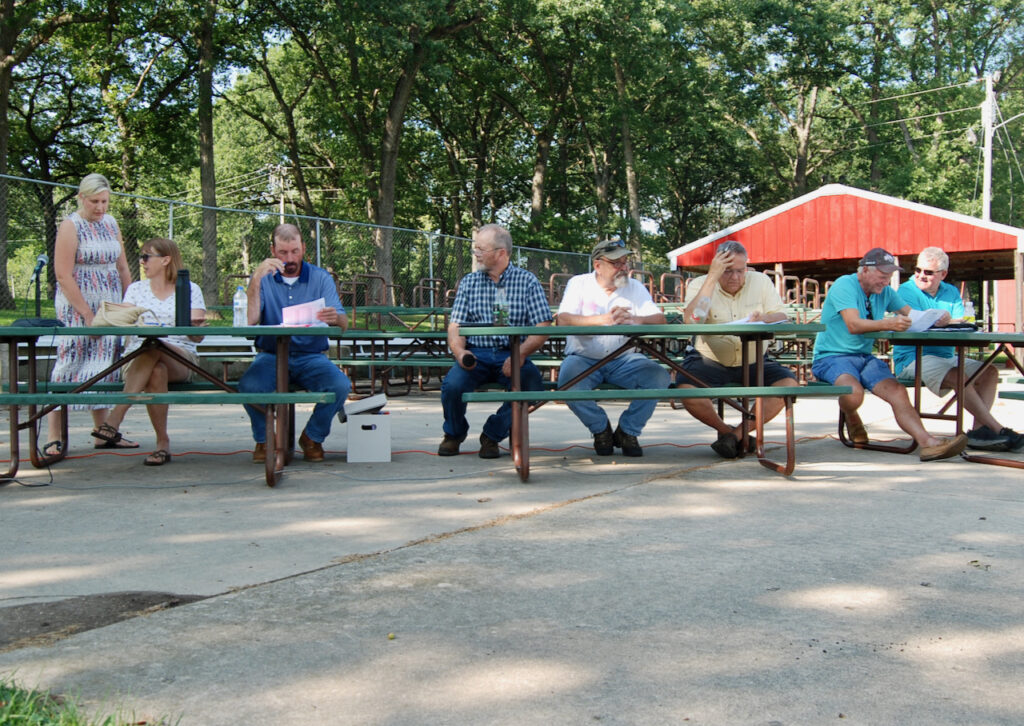
Members of the Rock-Koshkonong Lake District Board of Supervisors assemble in Race Track Park, Edgerton, for their annual meeting. They are Susan Shearer, seated, from left; Mark Meyer; Board Chairman Alan Sweeney; Bill Burlingame; Kerry Hull; Mike Hart and Mike Shumaker. Board recording officer Jenny Salvo is pictured, standing, far left.

Rock-Koshkonong Lake District Board of Supervisors Commissioner and Treasurer Mark Meyer answers questions about budget development and costs associated with the district’s water control project, including dam improvements, and potential upgrades to boat launches and landings on the lake.
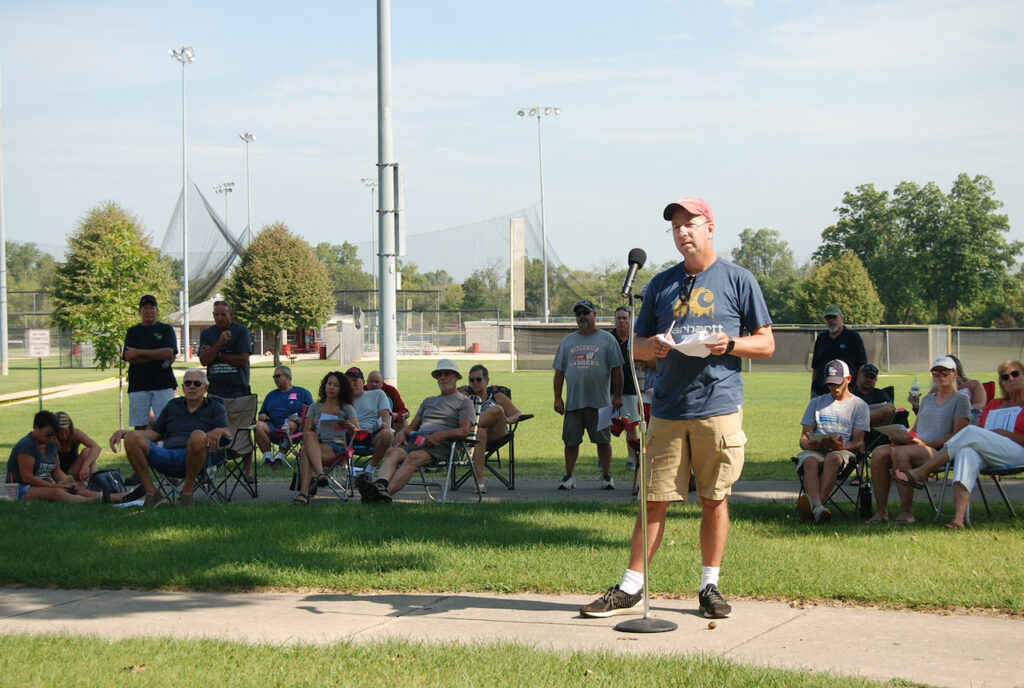
Rock-Koshkonong Lake District elector Mike Gransey asks several questions revolving around use of district funds.

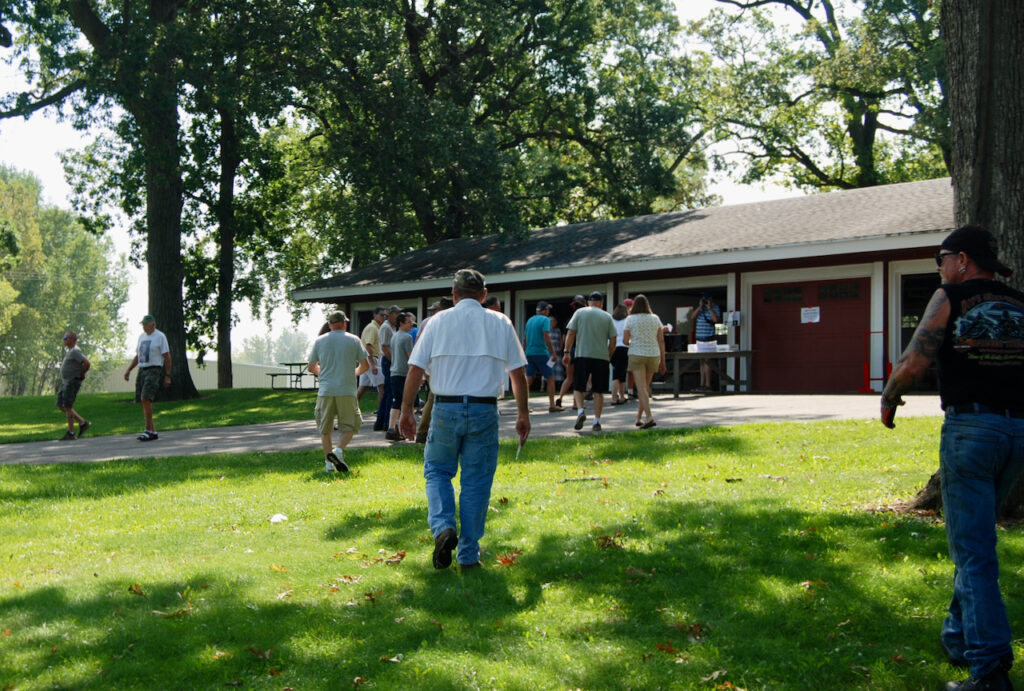
Above two photos: After participating in a budget hearing, members of the electorate are given 15 minutes to place their votes for an open seat held by Commissioner Mike Shumaker. Electors are asked to individually hand-carry their ballots to the ballot box. Shumaker, who ran unopposed, was elected to a second term.
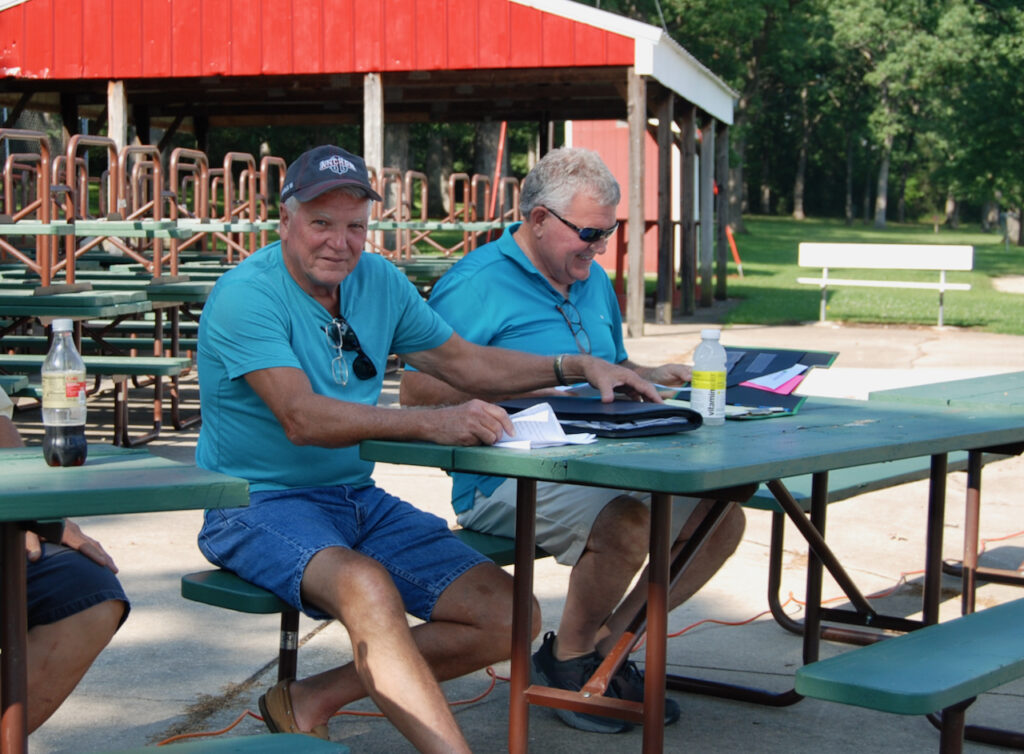
Rock-Koshkonong Lake District Commissioner Mike Hart, who was elected to the board last year, at left, and Commissioner Mike Shumaker look through their notes. Shumaker was elected on Saturday to a second term on the board.

Approximately 100 Rock-Koshkonong Lake District constituents participate in the district’s annual meeting held Saturday at Race Track Park in Edgerton.
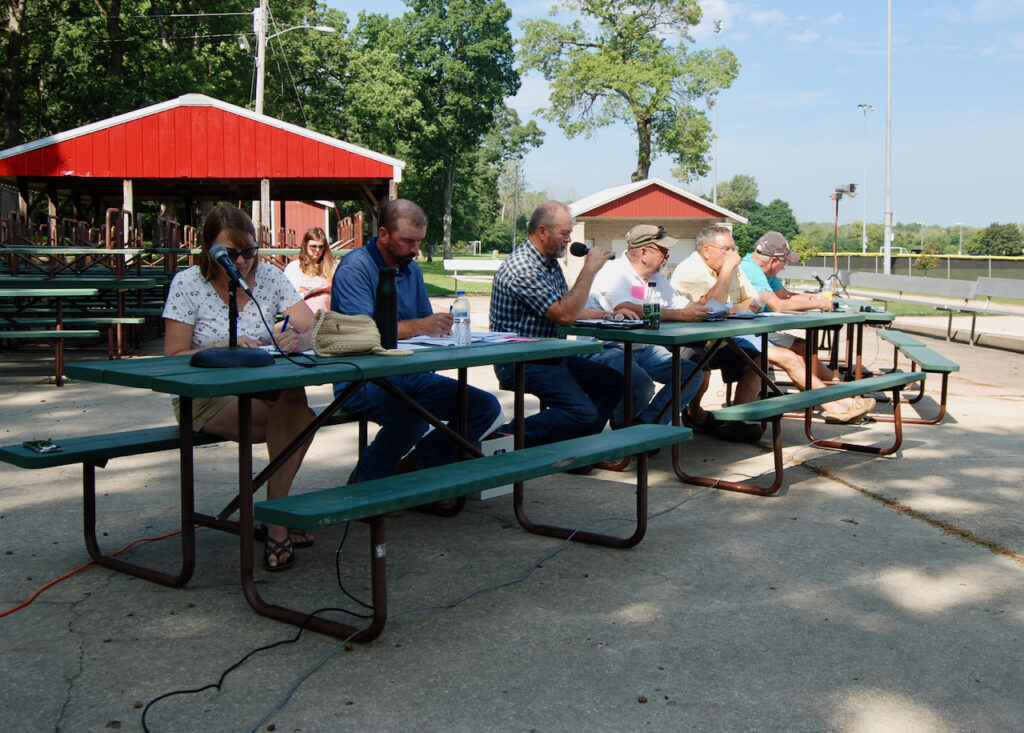
Pictured center and holding the microphone, Rock-Koshkonong Lake District Board of Supervisors Chairman Alan Sweeney delivers his report.
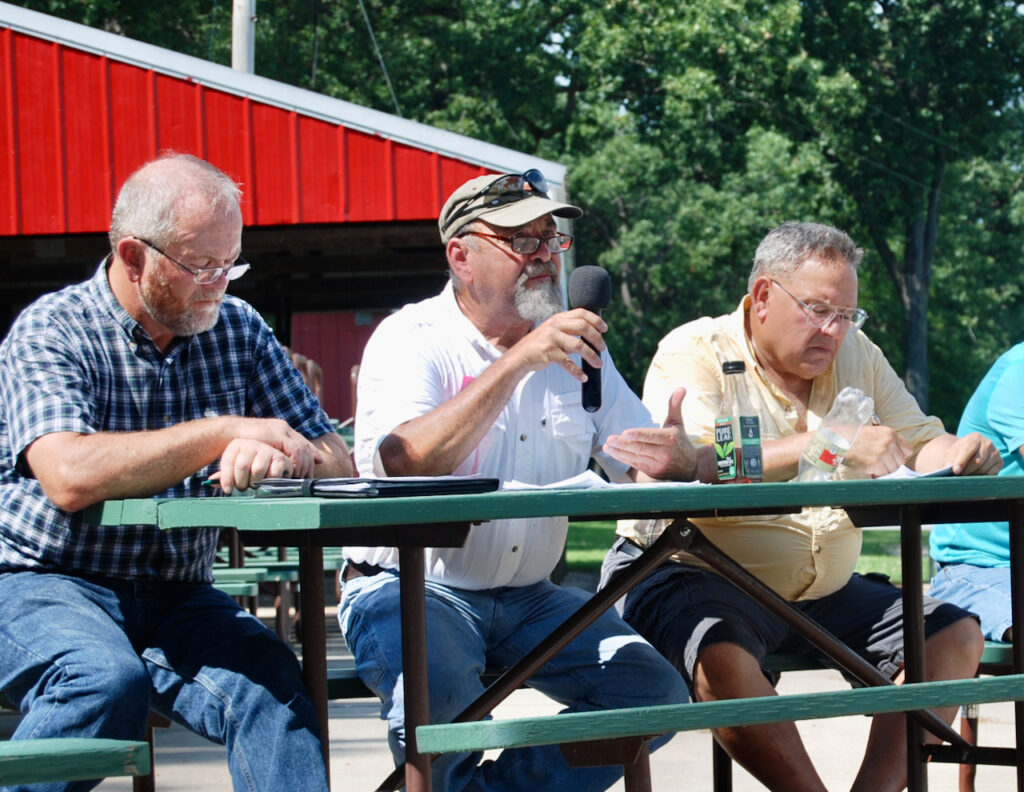
Responding to a constituent’s questions, Commissioner Bill Burlingame, at center with microphone, explains the process currently underway to move forward with potential improvements to boat landings on the lake.
Kim McDarison photos.
FCCU recognized for commitment to serving, empowering Hispanic community
(Originally published Sept. 2, 2021.)
Inclusiv, a leading national financial inclusion advocate, has awarded Fort Community Credit Union (FCCU) the nationwide Juntos Avanzamos, “Together We Advance,” designation for their commitment to serving and empowering Hispanic and immigrant members by providing safe, affordable, transparent, and relevant financial services.
A formal proclamation ceremony is scheduled for Saturday, Sept. 18 at 3 p.m. The ceremony will be held during the Unity Project Fall Fiesta event, which will be held in Jones Park. Members of the community are invited to attend.
Information released by FCCU noted the following: In the wake of predatory financial service providers targeting Hispanic and immigrant communities, FCCU seeks to be a trusted financial partner to all by employing bilingual, culturally competent team members and leadership, accepting alternative forms of ID such as ITIN (Individual Tax Identification Number), and treating members with respect, regardless of immigration status.
“We are honored to receive this national recognition for our ongoing efforts to be a strong ally to our diverse community,” said Sue Johnson, president and CEO of FCCU. “We strive to help every member be in a better financial position than when we met them, especially the underserved and those living paycheck to paycheck,” she said.
About FCCU: Established in 1940, Fort Community Credit Union (FCCU) is a member-owned financial cooperative open to anyone living or working in Dane, Dodge, Jefferson, Rock, Walworth or Waukesha counties. With branch locations in Fort Atkinson, Jefferson, Watertown and Whitewater, FCCU holds $346 million in assets and has more than 22,000 members. For more information about FCCU and the products and services they offer, visit fortcommunity.com or call (920) 563-7305.
About Juntos Avanzamos: Juntos Avanzamos, Together We Advance, is a designation for credit unions committed to serving and empowering Hispanic consumers, and was developed by the Cornerstone Credit Union League, which represents Arkansas, Oklahoma and Texas. The Federation, working with the Cornerstone League and Coopera, Iowa-based consultants to the industry on the Hispanic market, the Network of Latino Credit Unions and Professionals (NLCUP), the California Credit Union League and other industry partners, work together to bring the program to a national credit union audience. Visit http://www.cdcu.coop/initiatives/serving-underserved-markets/immigrants/juntos-avanzamos.

FCCU team members gather for a photo after volunteering to clean streets in a local community. Photo supplied.
.
Fort firefighter injured during Oak Street fire says fast action saved his life
(Originally published Sept. 4, 2021.)
By Kim McDarison
Not everyone knows the name Nick Rueth, but the events of Aug. 10 have brought him some celebrity. Nick is the Fort Atkinson firefighter who was injured during the Oak Street warehouse fire. The five-alarm blaze burned for several days under department supervision before firefighters cleared the scene.
Firefighters from some 48 departments from across the southern Wisconsin region worked to control flames as they consumed the north wing of the massive warehouse known as the D.B. Oak building. A goal for firefighters was to prevent the fire from spreading to the building’s south wing. Firefighters worked throughout the day on Aug. 10, and as evening arrived, a storm moved in. It was likely responsible for dislodging panes within a large window on the south wing’s north elevation, one of which plummeted some 10 feet before lodging in Nick’s biceps.
Nick’s injury was severe. Fast action from a fellow firefighter and EMS personnel at the scene and in two hospitals likely saved his arm and his life, Nick said.
Now, nearly a month later, Nick is home where he continues to recover.
He is eager to get back to work both as a firefighter and a crew leader at the city’s Department of Public Works (DPW).
Meeting with Fort Atkinson Online Thursday, among messages he hoped to share with the community, he said, were those of thanks for well wishes and cards, even from strangers, he, and his wife, Emily, said, and for its continued support of firefighters, many of whom do the work for love of serving and helping people, Nick said.
“We are real people with 9-5 jobs and we have families. We do this because we care, and we want to, and we like doing it,” he added.
A passion for firefighting
Upon arriving at Nick’s Fort Atkinson home, which he shares with his wife of 19 years and two of the couple’s four children, his love of firefighting is apparent: outside ornamentation, including a wooden cutout of a firefighter and a fire hydrant, decorate the lawn. Inside photographs and other firefighting memorabilia dominate the decor.
Nick has served as a paid-on-call firefighter with the Fort Atkinson Fire Department for 23 years. He was hired for the job when he was 19 years old, he said.
His desire to serve as a firefighter grew over time. As a youngster growing up on Foster Street, Nick said, he was close enough to the firehouse to hear the trucks and sirens.
“I just liked the action and the adrenalin,” he noted, adding that after he graduated from Fort Atkinson High School in 1998, he spent a year at Blackhawk Technical College where he studied fire science.
“January 1, 1999,” Nick recalled. That was the day he began working at the fire department as a paid-on-call firefighter. The achievement was the realization of a dream, allowing him to follow his passion and serve in his home town. He would have preferred a full-time firefighting position, he said, but today he enjoys both of his jobs. As a full-time DPW employee, he said, he continues to work outdoors, which is his preference, and in service to the community.
When it comes to firefighting, he said: “I just do it because it’s second nature; it’s more of a passion. I truly love what I do, and that’s true of both jobs,” he said.
As a firefighter and DPW worker’s wife, Emily said, she and the family have learned to adjust.
She learned how to snow blow her own driveway because Nick was away during snow events, clearing city streets, and, over the years, when the pager went off, she said: “I’ve been left at restaurants and the grocery store, and he’s missed every holiday, but he loves it and I will support him always.”
“Being a firefighter, it’s like nothing else,” Nick said. He talked about the camaraderie members within the department share.
“We grew up together; we raised our families together,” Nick said.
“We go to weddings and their kids call you aunt and uncle,” Emily added.
When the pager goes off, they move as a team to get the job done, Nick said.
“He’s the guy that likes action and facing the things that most people run away from. He wants to fix it and help that person,” Emily said.
When asked if she worried about his safety, Emily said: “I would say it’s crossed my mind, but I truly trust the people he goes on these calls with. We know them. These people are our family. I trust their training and his life in their hands, literally.”
Nick said he’s been lucky. Until Aug. 10, he’d sustained a few sports-related injuries, but nothing catastrophic.
The events of Aug. 10
People in Fort Atkinson and for miles around the city saw the black plume of smoke rising around noon from the fire.
Nick said he was home making lunch when both his pager and his phone sent out an alarm. Information coming across his scanner reported smoke in the area.
“I knew there was a fire; I didn’t know how big it was,” Nick said. He also was aware of the day’s soaring temperatures.
“When I went out the front door, I could see the smoke header in the sky,” and, he said, judging from what he could see, he had an inkling it could be the warehouse on Oak Street.
“This was a significant fire. Chief (Daryl) Rausch called it a career fire,” meaning very few would ever see a fire of this magnitude in their career, Nick said.
The number of firefighters and departments called, he said, “That’s insane for this area.”
Nick was among the first firefighters to arrive at the station.
“I got on the first truck out of the station. It was an engine. It has a hose. We (those aboard the engine), and Chief Rausch, who was driving his own car, were the first ones to arrive at the scene.”
Nick was the captain on the engine, he said.
Upon arrival, Nick said, he saw heavy smoke throughout the building’s north side, with fire coming through the roof. The men on the truck organized a hose line and began applying water to the fire.
“We breached the first door and were preparing to go inside the building, and we made it about 10 feet, and then we were pulled out by the chief because the roof was collapsing,” Nick said.
The firefighters were told to retreat and they were given a new goal: to save the south side of the building and control the north side as it burned.
“We had crews, myself, too, on the south side at the fire doors with a hose line just in case the fire made it that far.
“I was sitting on the (Fort Atkinson) kennel (club) side, at the door, with a hose ready to go. There were two of us there, and as mutual aid showed up, more hose lines were placed. Our crew was a three-man crew, but one person had to pull the line. We pulled and laid three different lines to various locations,” Nick said.
Nick described battling the fire as “intense” and “physically exhausting.”
In time, a decision was made to bring in a backhoe to make a firebreak between the two wings of the building, Nick said.
“We were letting it (the north side) burn to conserve water and lessen the runoff, which was an environmental concern,” Nick said.
It was about 6:30 in the evening, Nick recalled when he and another captain, Paul Verhalen, a paid-on-call firefighter with the Fort Atkinson Department and a full-time member of the Janesville Fire Department, went up to the second floor of the south wing of the warehouse to make sure there was no fire in the space and to find a vantage point from which to watch and protect the backhoe operator.
“We were running a hose to protect the backhoe operator,” Nick said, adding that the men were preparing to bring a hose onto the second floor to help keep the south side from burning and keep the backhoe operator safe.
Verhalen was holding a long strap, which Nick called “webbing,” and was preparing to tie a door open so a hose could be brought through.
“I’m looking out the window, and I see a storm coming,” Nick said. Moments later, a shard of glass fell from the large bank of windows and landed in his arm.
“My natural reaction was to pull it out and blood started shooting out about two feet,” Nick said.
Verhalen, a seasoned firefighter, acted quickly to save his life, Nick said.
“He had his webbing in his hand and he quickly made a tourniquet,” Nick said, adding that he later learned from a doctor that he had about 90 seconds before he would have bled out, and Verhalen had the improvised tourniquet on in 10 seconds.
Verhalen next assisted Nick out of the building. Nick recalled he was able to walk from the second floor himself to an east side loading dock. When the two firefighters arrived, they found the dock was submerged in water.
“Paul jumped into the waist-deep water and I went on his back and he carried me through the water,” Nick said. When they emerged from the building, a paramedic with a proper tourniquet was standing by.
Nick said he does not know who the paramedic was or with which department he serves. He thinks maybe Milton.
“I would like to know; I would like to thank him, for sure,” Nick said.
Nick was taken from the scene by ambulance to the hospital in Fort Atkinson where he was stabilized, and then by ambulance to a hospital in Madison where he was met by teams of doctors, including a vascular surgeon. About 15 minutes after he arrived, he was in surgery, which lasted nearly two hours, Emily said.
Emily recalled noticing the storm as it rolled into Fort Atkinson that evening. She made a video with her phone. She learned soon after from another firefighter that Nick had been taken to the hospital in Fort Atkinson.
When she learned Nick had been placed in a trauma room in the Fort Atkinson hospital, Emily said, she feared he could die.
In the ER, she said, “they handed me his wedding ring. That kind of hit me.”
Nick said before he was stabilized, he, too, feared he might die. On the ambulance ride between Fort Atkinson and Madison, he worried that he would lose his arm. When he woke up after surgery, a little after midnight, he realized he had kept his arm.
Nick was released from the hospital on Aug. 11. He could have stayed longer, he said, but he was eager to be home.
After the accident
The Fort Atkinson Fire Department continued to monitor the fire for several days. On Aug. 11, after his release from the hospital, Nick and Emily drove by the station, where, they said, about half of the department was outside caring for its equipment.
“It was a relief for them to see me. It was the first time I saw Paul. That was very emotional. We were both pretty close to begin with; we grew up down there and we will have a special bond forever, for sure. It was emotional for both of us,” Nick said.
After the injury, Emily said, there was no doubt in her mind that Nick would continue as a firefighter.
She would never have asked him to stop, she said, but she tries not to listen to the scanner. When the department is headed into dangerous situations, she said, “I prefer to not know and find out later.”
After leaving the hospital, Nick said, he had no feeling in his hand for the first day. As of Thursday, his hand is still not fully functional. Three of his fingers were still “tingling,” and the doctors can’t say for sure that all of his feeling will return, he said.
“I’m confident it will come back,” he said. He sees the tingling as a good sign that the nerves are coming back.
He hopes to return to work sometime within the next few weeks, albeit possibly with some weight limitations.
Said Emily: “I want to thank the public for bringing food and water to the fire station, and all the well wishes and the Facebook posts.”
She also thanked both her own and Nick’s families for their support.
The outpouring, she said, “it helped.”
“Fort Atkinson is amazing,” Nick said. “It’s why I’m here.”
Stories about the Oak Street fire are here: https://fortatkinsononline.com/d-b-oaks-buildings-north-side-is-total-loss-south-side-saved/ and here: https://fortatkinsononline.com/a-day-defined-by-smoke/.

Emily and Nick Rueth relax in their living room Thursday. Both recounted the events of Aug. 10, the first day of the Oak Street warehouse fire during which Nick, a Fort Atkinson paid-on-call firefighter was seriously injured. He continues to recuperate at home.

Nearly a month after his injury sustained during the Oak Street five-alarm fire, Nick Rueth, a paid-on-call Fort Atkinson firefighter of 23 years, has an impressive scar. He credits a fellow firefighter, a paramedic and several medical professionals on duty the first night of the fire with saving his life.
Kim McDarison photos.
Whitewater school district to offer early childhood ‘Partners in Play’ program
(Originally published Sept. 7, 2021.)
The Whitewater Unified School District, in partnership with the University of Wisconsin-Whitewater Early Childhood Department and PremierBank, with offices in Whitewater and Fort Atkinson, has announced a new child enrichment program called “Partners in Play.”
The program is free and open to families regardless of the community in which they live.
The program offers bilingual early childhood sessions to families with children ages birth to 5, according to information recently released by the program’s organizers.
The eight-week sessions planned for this fall are offered beginning Sept. 28 and run through Nov. 16 on Tuesdays and Thursdays, from 9:15 to 9:45 a.m. for children ages birth to 2, and from 10 to 10:45 a.m. for children ages 2-5. All sessions will be offered in English and Spanish. The sessions will be held at the University Community Engagement Center, 1260 W. Main St., Whitewater.
Parents of two-year-old children are invited to choose between sessions depending upon the maturity level of their child. Families that sign up for the program will automatically be enrolled in the full eight-week course.
Topics for each session include: week 1, “Rainbow of Foods,” exploring healthy foods by color; week 2, “Crunch and Munch,” exploring healthy foods by texture; week 3, “If You Are Happy and You Know It,” exploring emotions; week 4, “Moving and Grooving,” big body movements; week 5, “Roll Baby Roll,” exploring things that roll;
week 6, “Into the Light,” light and shadow explorations; week 7, “Cool as a Cucumber,” relaxing our bodies, and week 8, “Head, Shoulders, Knees and Toes,” featuring body awareness.
Parents and guardians interested in having their children participate in the program can sign up at wwusd.org. Look for the Partners in Play link. Parents and guardians must stay with their children for the duration of the session. A limited number of spots are available within each session and will be filled on a first-come, first served basis.
Sessions will be fun and interactive for all involved, the release stated.
For more information, contact Whitewater Unified School District Family/Community Engagement Coordinator Molly Fuller: mfuller@wwusd.org.

Preschool-aged children learn in a group. Photo supplied.
Rabe welcomed as First Congregational UCC interim pastor
(Originally published Sept. 7, 2021.)
First Congregational UCC in Fort Atkinson has welcomed Pastor Sara Rabe as their new interim pastor, replacing longtime Pastor Chris Buckingham-Taylor who has moved to Ohio to be near his family.
A fellow Wisconsinite, Pastor Rabe hails from Kiel, where she grew up working on her family’s dairy farm. After receiving her Bachelor of Arts degree in religion from Lakeland College, she then attended Eden Theological Seminary in St. Louis. Later she received a Doctor of Ministry degree with an emphasis on parish revitalization from McCormick Theological Seminary in Chicago. Having been ordained 20 years, she has served congregations in Southern Wi and Illinois. Pastor Sara, as she prefers to be called, joins the First Congregational UCC from Covenant Lutheran ELCA in Stoughton where she lives with her wife, Amy, and their three children. She will be commuting from there during the 12-18 months that she serves as interim pastor.
”I will be there to lead worship and provide pastoral care, and guide leadership on a path to new discovery, until that day when a settled pastor is called to serve you. If I could accomplish one thing, it is to help the congregation articulate the best of who they are and build upon that. Though we come to faith and values differently, there is a unity when the community gathers and is present for one another,” Pastor Sara was quoted as saying in information released by First Congregational UCC.
In her leisure time, Pastor Sara enjoys doing things in the great outdoors, from hiking and biking to camping. Pastor Sara’s services are available for viewing on YouTube channel Fort Atkinson United Church of Christ or visit and follow the website: www.fortfcc.org.

First Congregational UCC interim Pastor Sara Rabe, at left, and her family. “Pastor Sara” will be serving as interim pastor in Fort Atkinson for the next 12 to 18 months. Submitted photo.
Ryan Brothers contract terminated; council rolls out plan for public safety referendum
(Originally published Sept. 8, 2021.)
By Kim McDarison
The Fort Atkinson City Council Tuesday voted against renewing a contract with Ryan Brothers Ambulance Service and voted in favor of initiating a public safety referendum, with those monies, would the voters approve the referendum, used to support additional employees and equipment at the fire department and additional officers for the police department.
Council passed both measures unanimously.
Although initiating the referendum process was approved, the city remains early in the undertaking, City Manager Rebecca Houseman LeMire said, adding that a first step would involve hiring a referendum communication consultant to help develop the referendum ballot question and educate the public. An amount by which the levy, with voter approval, could increase has not yet been determined.
During the meeting, several council members noted that ending the city’s contract with Ryan Brothers was not a reflection on the quality of services performed by the company but, instead, a consequence of the city’s need to find alternatives to develop its public safety program.
Several said voting to terminate the contract was a difficult choice.
Tuesday’s meeting was the first to use a hybrid system, with council returning to in-person meetings while some members of the public attended through Zoom.
Comments from Ryan Brothers
During the public comments portion of the meeting, three representatives from Ryan Brothers appeared at the podium to address council.
Erin Ryan, who described himself as a second-generation owner of the company, expressed frustration with council’s decision to consider the discontinuation of the ambulance company’s longterm contract with the city.
He said his father and brother began the business nearly 60 years ago and the company has provided EMS services to Fort Atkinson since 2001.
“That is 7,300 days – regardless of weather, pandemics, low reimbursement rates or personal family losses,” he said.
Ryan credited his father with instilling in him a strong work ethic, saying: “If you promise something you do it, no matter how hard it is. You keep this promise regardless of a once-in-a-lifetime pandemic where people are dying, and I am asking people to go out on the frontlines and sacrifice their health and their families.
“In discussions with the (fire) chief on EMS and ambulance services, he assured me that they would not be doing what they are today. I trusted his word and signed a MOU (memorandum of understanding) reflecting this in 2018. We have worked continually with the chief to do what is best for the citizens of Fort (Atkinson),” Ryan said.
He continued: “This last year has been the hardest of all 59 years in business … the pandemic’s impact on EMS has been told in countless national news stories, some closing or incurring significant budget shortfalls. Ryan Brothers endured similar call volume losses while increasing expenses to pay for PPE (personal protective equipment) and other COVID-related expenses. At the same time, we ethically knew we had promised our employees careers and a paycheck; we paid every full-time employee despite lower call volume, not because we were required to, because it was the right thing to do.”
Ryan said he witnessed his employees placing themselves on the frontlines of the pandemic because they cared about the community they served.
“Our employees made personal and family sacrifices and never asked for public recognition even though they deserved it,” Ryan said, adding that his company transported 730 COVID cases for the city in 2020.
“Hopefully you can understand my disappointment when I was told late last week what the city was proposing to do tonight,” he said.
“If we were not over-servicing our agreement or not an active part of the community for the past 20 years, I could understand today’s agenda. If we were overpriced and you could do this for a more economical fee for the citizens with the same level of service, I could understand today’s agenda,” he added.
Two employees with the ambulance company — Cody Letson and Todd Overdahl — also expressed their disappointment with the process.
Public safety proposal
During the meeting, council received a presentation delivered jointly by Fort Atkinson Fire Chief Daryl Rausch and Fort Atkinson Police Chief Adrian Bump. Both chief’s outlined their need for more manpower and their ideas about providing public safety in the future.
Proposed changes within the fire department
Aided by a slide presentation, Rausch called the city’s current level of public safety funding “insufficient to meet the growing service demands and needs of the city for fire and police services.”
Using August as a “snapshot,” Rausch said the fire department responded to 59 calls for service, of which 26 were fire calls, 21 were rescue calls, 5 were EMS related and seven were calls for service that fell outside of the other three categories.
Calls for service are increasing, Rausch said, adding that the department has four paid staff members and 41 paid-on-call volunteers upon whom the department relies for 911 emergency fire and as back up for EMS calls. While the department has many volunteers, he said, they are burning out.
Looking at the trajectory of increasing calls for service, Rausch said, in 1974, the department responded to 124 calls for service. In 2020, that number had increased to 455. He projected that by the end of 2021, the department will have responded to 537 calls.
Looking at calls annually between 1977 and 2020, Rausch produced a bar chart showing a nearly steady increase in calls since 1992, when calls were at a low of 151. From that point on, they have risen incrementally to the numbers being experienced today, he said.
“Requests for fire, rescue and EMS services are growing 9-12% each year,” Rausch said.
Looking at EMS services, Rausch said the city has been provided with emergency medical services by Ryan Brothers Ambulance Service since 2002. In 2021, the cost of the contract is $103,000.
“The contract provides 1.3 ambulances per day in Fort Atkinson,” a slide in the presentation stated.
Rausch offered a breakdown of department manpower, saying that of the department’s four full-time employees, one is the chief and three others are division chiefs. The paid-on-call volunteers have full-time employment elsewhere and respond to calls from their homes or places of employment. He noted a change in the department’s mission over the years bringing an increased need for medical-related services.
“Much of what the department does on a regular basis is more than fire-related calls, Rausch said, adding that the department routinely assists Ryan Brothers with medically trained responders and provides third-tier response when EMS needs exceed Ryan Brothers’ capacity.
Among the 41 paid-on-call volunteers, Rausch said, 17 are trained emergency medical technicians (EMTs), five are emergency medical responders (EMRs) who provide care to patients while waiting for EMTs to arrive, and three are paramedics.
Volunteers have told Rausch, he said, that the stress related to the number of calls and the complexity and frequency of training have caused them to leave the department. The department faces continual turnover of between five and seven members each year.
Rausch said area employers are supportive of the fire department, and want to allow their employees who serve as firefighters to leave to respond to calls, but changes in their staffing and the number of calls received make it difficult for them to let their employees leave.
To help alleviate the stress and burnout, Rausch said, there is a need to provide the department with more career staff support.
Looking more closely at the department’s relationship with Ryan Brothers, Rausch said the company dedicates one ambulance to Fort Atkinson. A second ambulance unit is available if it is not engaged in inter-facility transports in other communities.
In 2017, Rausch said, a fundraising campaign allowed the fire department to purchase an ambulance. Before 2017, if the Ryan Brothers ambulances were busy, Fort Atkinson Fire Department rescue personnel provided on-scene care while an ambulance from another community responded. The wait could take up to 30 minutes, he said.
Would money become available, Rausch outlined a new operation model which included the addition of six firefighter/paramedics and six firefighter/EMTs. These new full-time positions could handle up to 95% of EMS calls and half of the department’s fire-related calls, he said. It would reduce the reliance on the department’s volunteer members by at least 200 calls per year, he added.
Rausch recommended that the department hire the new staff from the department’s current members and provide them with additional training.
Startup costs for the new model would include approximately $250,000 for the purchase of an ambulance, with a budget of about $40,000 set aside annually for future ambulance replacement; approximately $80,000 in additional medical equipment; a self-loading cot for the additional ambulance, coming at a cost of about $30,000; some $50,000 for initial EMS training, and about $20,000 for EMS supplies, for a total estimated cost of $470,000.
Some costs could be funded through non-recurring funding sources available to the city, Rausch said.
Proposed changes within the police department
Continuing with the slide presentation, Bump said the Fort Atkinson Police Department has 20 sworn officers, with 12 dedicated patrol officers who provide 24/7 patrol coverage. Two officers are working during all shifts, plus, when available, an additional officer works on what Bump called a “power shift.” That officer, Bump said, is used to cover a primary shift if a primary shift officer is off work, leaving a primary shift vacancy.
Looking at per capita numbers, Bump said across Wisconsin and the United States, the average is two officers per every 1,000 in population. As an example, he said, using that metric, a community with a population of 8,000 would have 16 sworn officers. Fort Atkinson would have 27 sworn officers.
Since 2011, Bump said, the police department has struggled to meet all of its obligations with its number of sworn officers. He anticipated that trend would continue, especially, he said, as communities ask law enforcement agencies to solve problems beyond the traditional scope of policing, safety and security.
Like Rausch, Bump pointed to an increase in calls, noting that in 1990, the department responded to 4,778 calls. In 2020, he said, the department responded to 11,463 calls. So far in 2021, the department has responded to 9,366 calls, and, Bump said, he is projecting that the department will have responded to 14,067 calls by the end of this year.
On average, he said, the police department responds to 11,500 calls for service annually, which breaks down to each officer handling about 960 calls a year.
Bump said calls for police service increase in communities that have hospitals, community-based residential facilities and schools. He cited the School District of Fort Atkinson as one that services a large geographical area, which means a lot of students are coming into the city on a daily basis.
“Too many calls take officers away from proactive policing,” Bump said. He talked about what he called “the rule of 60,” developed by the Center for Public Safety Management, which suggests that 60% of a department’s sworn officers should be dedicated to patrol. Fort Atkinson meets that criteria, he said.
Additionally, the rule states that 60% of a patrol officer’s time should be spent responding to calls. The other 40% of their time is best spent addressing community concerns and responding to serious emergencies.
Comparing the rule of 60 with how Fort Atkinson officers spend their time, Bump said, on average, his officers spend nearly 76% of their time responding to calls, leaving just over 24% of their time for other activities, like community policing.
Between January and August of this year, he said, the numbers were further offset, with officers spending on average just over 78% of their time on calls and nearly 22% on other activities.
Would additional resources become available, Bump said, he saw an immediate need for two additional sworn officers, which, he estimated, would increase the department’s annual budget by approximately $200,000.
Looking at need, he said, with plans underway for a new development along Banker Road, the city’s population would likely increase, he estimated, by at least 800 people. With that increase, he said, the city would have a need to add yet another sworn officer, bringing the department’s total to 23 sworn officers.
Contract non-renewal and request for proposals
Council voted unanimously Tuesday not to renew a contract that included an automatic renewal clause between the city and Ryan Brothers Fort Atkinson LLC.
In a separate action, council instructed LeMire to seek out the services of a referendum consulting and communication firm to help craft and educate the public about a potential public safety referendum. LeMire described the action as a first step in a process towards bringing a referendum before the voters in April.
Offering some background on the Ryan Brothers Fort Atkinson LLC contract for ambulance and EMS services, LeMire said the city and the company entered into its current contract in 2006. The contract renews annually unless either party decides against its renewal.
As stipulated within the contract, LeMire stated, notice to prevent the automatic renewal must be given between Sept. 1 and Nov. 30 of the year prior to the one in which the contract will terminate. As an example, she said, if either party wanted to terminate the contract on Dec. 31, 2022 (as was being proposed), notice of termination must be given to the other party between Sept. 1 and Nov. 30 of 2021.
Terminating the contract was under discussion, LeMire said, because the city is proposing to bring ambulance services under the umbrella of the city’s fire department. The proposal calls for the hiring of six full-time firefighter/paramedics and six full-time firefighter/emergency medical technicians (EMTs). The 12 new positions would help to provide 24/7 coverage for both emergency fire and ambulance calls for service, LeMire said.
Further, she said, “staff intends to request that the city council review and approve a public safety referendum question to be on the April 5, 2022 ballot.” Staff would be asking for approval of the referendum question in January, 2022, she said, adding that the referendum question would ask voters to exceed the city’s state-imposed levy limits to pay for the additional staffing for the new hires at the fire department as well as two additional police officers. The city would be looking to fill those positions by Jan. 1, 2023.
Bringing EMS services under city control, LeMire said, “will provide opportunities for additional community-based services, such as community para-medicine.”
“Staff continues to work out the details of the proposal and the amount needed through the referendum process,” LeMire added.
Looking at financial impacts to the city, she said that the city pays Ryan Brothers $112,000 annually for EMS services, and will continue to pay its contractual obligations through 2022.
“There are significant financial impacts of providing full-time fire/EMS service. Those impacts will become clear and be communicated to the council and the public over the next several months,” LeMire continued.
Council voted in favor of terminating its contract with Ryan Brothers, with services provided by the company ending on Dec. 31, 2022.
Offering background relative to city staff’s proposal to hire a communication service to help form and roll out the public safety referendum, LeMire said the city would not have the levy capacity to continue with its proposed public safety plan as shared by the fire and police chiefs without going beyond its current state-imposed levy limits.
“While city-offered EMS services will create a revenue stream in the future, the city does not currently have other options for obtaining the additional operating revenue necessary to fund the proposed public safety staffing,” LeMire said. To fund the proposals, she said, the city would need to ask its taxpayers for revenue provided through additional property taxes, with that request coming through a referendum question appearing on the upcoming April 5 ballot.
“This referendum will require significant outreach and education efforts within the community,” LeMire noted.
Council approved a request made through LeMire by city staff to distribute a request for proposals (RFP) to seek out and select, as stated within a memo from LeMire to council, “an experienced communication consultant to ensure that the messaging and information-sharing with the public is done professionally, resulting in a well-informed electorate before the election.”
With council approval received, LeMire noted that an RFP would be developed using samples from other municipalities and deliverables specific to the city of Fort Atkinson. The request would begin circulating by the end of the week, LeMire said, adding that the request would be posted to the League of Wisconsin Municipalities Classified Ads website.
LeMire further noted that the city does not have funds budgeted to pay for the referendum consulting firm’s services, however, she said, some potential funding sources include the American Recovery Plan Act, with funds available within the category of revenue replacement; fundraising; donations, and community grants. More information about funding opportunities will be presented to council on Oct. 19, at which time the cost of such services should also be known, she said.
Tentative referendum timeline
Within her memo, LeMire offered a tentative referendum timeline as follows:
- Sept. 8: staff releases request for proposals for referendum consulting firm.
- Sept. 30: potential consultants must submit their proposals by 5 p.m.
- Oct. 5: staff members, including Rausch, Bump, LeMire, and Public Relations Executive Assistant Sarah Weihert review proposals against criteria set within the request for proposals.
- Oct. 19: council reviews proposals, with possible action taken by council to approve and hire a communications consultant.
- September through December, 2021: staff engages in fact finding, public engagement, possible community survey work to be performed by consultant and city staff.
- Jan. 18, 2022: council approves a resolution to place a referendum question on the April 5 ballot. A deadline for referendum placement is Jan. 25.
- January through April, 2022: city to embark upon additional public engagement, public meetings and a possible direct mail campaign.
• April 5, 2022: city residents vote in spring general election, at which time they will find the referendum question to exceed tax levy limits to fund the public safety proposal on the ballot.

Council assembles Tuesday for its first in-person meeting in over a year. The council’s new meeting format includes both in-person and online options. In-person meetings were paused in response to the COVID-19 pandemic.

Ryan Brothers Ambulance Service owner Erin Ryan addresses council Tuesday. Ryan expressed upset and disappointment over the council’s decision to terminate the company’s contract with the city. Ryan Brothers Ambulance Service has been providing EMS services to the city since 2001, Ryan said.

City of Fort Atkinson Fire Chief Daryl Rausch presents fire department operating statistics and a proposal for the city to hire 12 full-time EMS workers.

Addressing council Tuesday, Fort Atkinson Police Chief Adrian Bump shares his department’s operating statistics and a proposal that the city increase its size by two full-time sworn officers.
Kim McDarison photos.
Council returns to in-person meetings, records first meeting YouTube video
(Originally published Sept. 9, 2021.)
By Kim McDarison
The Fort Atkinson City Council returned to its chamber within the city’s municipal building Tuesday for its first in-person meeting in 18 months. The city will be using a hybrid approach to conduct council, board, commission and committee meetings, which will allow members of the public to participate by attending meetings in person or electronically through Zoom.
Prior to Tuesday’s meeting, the Fort Atkinson City Council had been conducting its meetings using the Zoom platform as a COVID-19 precaution. The city began conducted virtual city council meetings in March of 2020.
Protocols in place at the city’s municipal building request that visitors, staff and elected officials wear masks as a continued COVID-19 precaution.
Additionally, with the purchase in June of some technological equipment upgrades installed in the council chamber, council is able to video record its meetings and make them available to the public. Tuesday’s meeting marks the first council meeting which appears in video format on the city’s YouTube channel.
In a related action, council approved on Tuesday a second reading of an amendment to city code, allowing electronic participation at meetings by members of the city council and its associated boards, commissions and committees.
A third and final reading of the amendment is anticipated to take place in September.
Upgrades made to the council chamber came at a cost of approximately $32,000 and were funded through a grant provided by the American Rescue Plan Act (ARPA), which, City Clerk Michelle Ebbert said in June, provides some funding for eligible projects that include investments in public facilities or adaptations to public buildings to “implement COVID-19 mitigation tactics.”
The first city council meeting, which was recorded on Sept. 7 and posted to YouTube on Sept. 8, is here: https://www.youtube.com/channel/UCtLCpxKaphYmofyaZb7HZ8A.
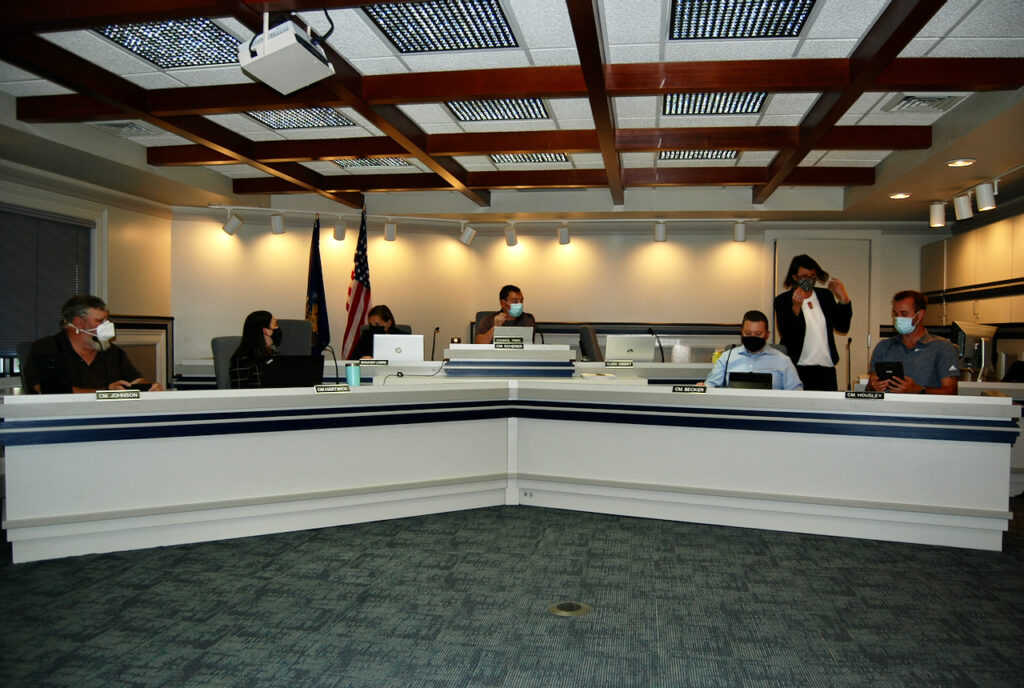
Members of the Fort Atkinson City Council take their seats in advance of Tuesday’s meeting. City Clerk Michelle Ebbert, standing, makes sure council members are comfortable using new equipment before the meeting starts. Council began using a virtual format to conduct its meetings as a COVID-19 precaution some 18 months ago. Tuesday’s meeting marked the council’s first hybrid meeting, offering both in-person and virtual options for attendance to members of the public. It was also the first meeting to be video recorded and made available for viewing by the public through YouTube.
Kim McDarison photo.
Our Take: High-information voters are crucial to good governance, democracy’s survival
(Originally published Sept. 13, 2021.)
By Kim McDarison
Fort Atkinson Online publisher/editor
The term “low-information voter” was coined in the 1990s to describe voters who generally were poorly informed about issues.
Now more than ever, we need high-information voters, because, in truth, our democracy depends upon it.
Freedom of the press is legally protected by the First Amendment of the U.S. Constitution, which reads:
“Congress shall make no law respecting an establishment of religion, or prohibiting the free exercise thereof; or abridging the freedom of speech, or of the press; or the right of the people peaceably to assemble, and to petition the Government for a redress of grievances.”
If we agree about the necessity of the First Amendment and role of journalism as an extension of freedom of speech and an informed electorate, one that is aware through transparency of what is done in its name, then we must next ask the more modern and timely question: How does one become a high-information, well-informed voter? Or, stated another way: Does it matter from whence we get our news?
I’d like to make the case that it does.
From whence should we get our news?
The simple answer is everywhere; from as many sources as we can find. But I say that with an important caveat: as consumers of information and news, we must be able to discern what it is we are reading.
Information made available to the public, and even on this news site, comes in several forms. We have journalistic news stories; opinion pieces, like this one that you are reading; press releases, which largely are produced as public relations pieces, and advertisements.
The first broad distinction that must be made between pieces offered for public consumption here, and indeed, across the Internet, is their purpose: What do they seek to do?
If a piece seeks for its reader to act in some way — buy this, agree with this, support this, attend this — then it is not a journalistic piece. These types of pieces fall under the umbrella of public relations/press releases or editorial/opinions. They differ from journalistic pieces in that the objective of journalism is to inform, nothing more.
At the end of a journalistic piece, there will be no “ask.” Why? Because an informed electorate must digest information without slant, spin or opinion, but instead with an accurate and observable accounting, obtained from those who are holding themselves up as accountable for their actions. In journalism, we call this “truth to power.”
To qualify as journalism, the information must be observable, meaning a reporter can tangibly see, taste, smell, hear or touch it and gain understanding through the senses; must be presented in an objective fashion, meaning presented by someone who is not motivated to obtain a certain outcome; and/or the information can be attributed, meaning that a source of the information can be cited. That source can be a person or a document.
A credible journalist will report events as they unfold if at a meeting or activity, and, when looking for topical authorities, vet his or her sources to make sure that the source is in some way knowledgeable or able to speak to the topic at hand.
This does not prevent everyday people from being represented in the press. The public discussion includes the public. Individuals should be labeled as authority or citizen so the reader is aware of an interviewee’s level of interest and expertise.
From a journalistic standpoint, the most important word here is objective, meaning the reporter is not influenced by personal feelings or opinions in considering and representing facts. Reporters look for conflicts of interest, meaning full disclosure if a person offering information or expertise is in a position to benefit from an outcome personally. Truth to power means championing questions that will elicit from lawmakers how their policies and actions will affect the public’s best interest.
I began my career as a journalist in the mid-1980s. I’ve seen a lot of changes in journalism and not all of them good.
As a traditionalist, I believe the most basic form of journalism, as I’ve outlined it, is the best practice and in the best interest of the public, the group we traditional journalists are working to inform.
Commentary-based information, which often is confused with journalism, gained popularity with the inception of networks like MSNBC and Fox News, both of which were launched in 1996. These agencies profited from viewers’ tendencies to conflate political commentary, which is opinion, with news.
In the profession of journalism, those of us who were educated in our profession and hold ourselves to a traditional journalistic standard know that there is room within the discussion for opinion and commentary, but it must be clearly marked and handled as such. To do otherwise is propaganda, which is by definition, “information, especially of a biased or misleading nature, used to promote or publicize a particular political cause or point of view,” and history has taught us that propaganda is no friend of democracy.
So what’s a reader seeking high-information values to do?
My advice is to seek out information on all platforms and fronts — news sites, videos, elected officials, informed and even uncomfortable discussions, and, yes, viewpoints with which you might not agree — but always know what it is you are reading so you can digest the information and weigh it appropriately.
If someone is advising you to seek information from a single source, for my money, you are being misguided. And speaking of money, follow the money, which means look for the organization that is paying for the public relations work and ask yourself: “What are they asking me to do?”
If you are being asked to do something, the objective is opinion-based; you are being asked for an outcome.
My education taught me that a journalist’s job is to bring to the people he or she serves the most complete information available, collected through observation and credible, attributable sources from as many perspectives as possible.
One follows the public record and asks questions. As a news source of record, one does not embellish or sanitize the news. One records it as accurately as possible and admits quickly and with regret to errors. One recognizes the importance of contributing to the creation of an electorate of high-information voters, so that they, both individually and as a collective, can determine what, in their own opinion, is in the best interest of themselves, their families and their communities.
Today, papers such as The Washington Post remind us that “democracy dies in darkness.” It’s well-informed and engaged constituents who light the way to keeping democracy alive.
This is an opinion piece, so here’s my “ask”: please make time to stay informed. Seek out information through a host of sources, pay attention to the types of materials you’re viewing, always asking the questions: What is this for? Is there an ask? And from where comes its funding? Engage in discussions that might challenge your ideals and concepts, go to community meetings, and step up to the podium and ask your questions. Converse with your fellow citizens, and vote.
In the end, to find communal solutions, the electorate must act; the information you consume will influence your opinions.
Good governance on any level comes from an engaged electorate that knows, from as many perspectives as possible, what’s at stake.
As always,
Thanks for reading!
DOT seeks input for Robert Street bridge rehabilitation project
(Originally published Sept. 14, 2021.)
The Wisconsin Department of Transportation (DOT) announced today its plans to design a rehabilitation project for the US 12/Robert Street bridge in Fort Atkinson.
The project is planned for construction in the summer of 2022, according to a news release.
Improvements proposed as part of the project include:
• Replacing the concrete bridge deck on the existing prestressed concrete girders. The existing sidewalk along the bridge will be replaced and widened to six feet with a barrier wall separating traffic to improve pedestrian safety crossing the bridge.
• Reconstructing bridge approaches at each end to connect the new bridge deck.
• Replacing guardrail and curb and gutter along the south approach.
• Potential reconstruction of sidewalk curb ramps to meet Americans with Disabilities Act (ADA) standards.
• Updating street lights across the bridge.
The Robert Street bridge will be closed during construction, and detour routes will be provided for pedestrians and vehicles.
A narrated presentation detailing the project is available to view on the project website at:https://wisconsindot.gov/Pages/projects/by-region/sw/us12-robertstreet/default.aspx.
All persons interested in the project are encouraged to provide input by contacting WisDOT Project Manager Frank Pritzlaff at frank.pritzlaff@dot.wi.gov or (262) 548-5683. Comments can also be mailed to the WisDOT Southwest Region Office at 2101 Wright St, Madison, WI 53704.
Public feedback will assist staff in developing a project that will serve the needs of the traveling public, as well as the needs of the community. Public input is also welcome and appreciated throughout the design process, the release stated.

The conceptual drawing shown above of the Robert Street bridge is included within the Wisconsin Department of Transportation (DOT) project information video, shown at top.
Plan Commission advances U-Haul development plan
(Originally published Sept. 14, 2021.)
By Chris Spangler
Development of the U-Haul property on Fort Atkinson’s north side took a big step forward Tuesday afternoon.
Meeting both in person and via Zoom, the Fort Atkinson Plan Commission unanimously approved the General Development Plan (GDP) for the former Kmart property at 1309 N. High St.
The GDP now goes to the city council, which is expected to consider the plan when it meets Tuesday, Sept. 21.
“The GDP plan you have before you is kind of a 90-percent design,” Plan Commission Secretary and city engineer Andy Selle told the panel at the meeting’s start. “So we have worked through a number of issues related to the site development, which would be related to stormwater, vegetation-planting plans. We’ve talked about the building and the aesthetics associated with that. We’ve talked about phasing.
“We have about a 90-percent understanding about how this is going to move forward, and that final 10 percent would come from any comments that come here at the Plan Commission and any that come from the city council meeting,” he added.
The GDP allows an applicant to propose a development plan that differs from some of the baseline requirements of the Urban Mixed Use (UMU) zoning district and the rest of the zoning ordinance. An approved GDP specifies which zoning flexibilities are granted, and which requirements of the UMU zoning district and the rest of the zoning ordinance have been granted.
The proposed project, submitted by Alliance Construction & Design on behalf of U-Haul, calls for creating an enlarged U-Haul facility in the existing building and parking lot on the south end of the site, including new interior self-storage and enlarged truck and trailer rental facilities.
In addition, it would create a “U-Box” transshipment facility in the building that originally housed Piggly Wiggly Supermarket on the north end of the 9.5-acre site, as well as retain the existing three commercial tenant spaces in the middle of the building.
A proposed vehicle return canopy with a metal roof would be the location for self-service returns when the offices are closed.
In addition, a proposed bike maintenance station is planned. A rest stop for bicyclists traveling on the nearby State Highway 26 bike trail, it would include a tire-inflation pump, bike racks and striped pavement leading to and from the path via North High Street.
The proposal also calls for large areas of new greenspace around the perimeter of the parking area, and in the area on the north side of the site between the existing shopping center building and the Super Wash, which is on its own lot and not part of the proposed development.
Various landscaped medians and islands also are proposed to help direct traffic flow and provide additional greenspace. Large areas of pavement would be replaced with lawn and stone greenspaces so that in total, the pervious surfaces will increase to 22% of the site area, over the minimum 20% required in the UMU zoning district.
The project would replace all existing exterior lighting fixtures with LED fixtures designed with cutoff shades that send light downward at a controlled angle.
A substantial set of building exterior upgrades are proposed on all sides of the building, and focused on the east, or front, façade.
During Tuesday’s brief meeting, commissioners posed questions about a few items before unanimously approving the GDP.
Commissioner Jill Kessenich asked about signage for the bicycle maintenance area.
“A lot of people get onto the trail from Blackhawk Drive,” Kessenich said. “I’m just wondering if they would even see that striped pathway and if there was an opportunity for a second one coming in from Blackhawk?”
Mark Rukamp of Alliance Design & Construction, representing U-Haul, said yes.
“We did have a discussion with our designer … about coming off of High Street. And now that you mention alternatively coming off of Blackhawk, about having a small sign that actually would indicate the bike rest stop facility being accessible for the bikes, there is an intention of actually having direction like that,” he said.
The sign would not only announce the bike maintenance area’s location, but also list hours for the restrooms available to the public when U-Haul is open from 7 a.m. to 7 p.m. Monday through Saturday and 9 a.m. to 5 p.m. Sunday.
Rukamp and Adam Muszynski, marketing company president of UHC of Southeastern Wisconsin, noted that the restroom area would include a unisex handicapped-accessible restroom and a drinking fountain with an adaptor for filling water bottles.
There will be restrooms located in the showroom, as well.
Kessenich also asked whether it would be appropriate for the city or developer to approach current tenant Riverfront Restaurant about expanding to have some sort of “grab-and-go” section to the restaurant “to maybe appeal to bikers or people who are picking up a vehicle to move but don’t have time for a sit-down breakfast.”
“We can always suggest it,” said City Manager Rebecca Houseman-LeMire, who chairs the Plan Commission. “We can certainly let the tenant know the plans for the bike rest stop and that might, in and of itself, inspire some adjustments to their operations.”
In response to another question from commissioners, Muszynski explained that “U-Box” is portable storage.
“Customers are allowed to place their items in these U-Boxes,” he said. “They can either store them on site or have them shipped anywhere in the globe, so (they are) very similar to what PODS does.”
Muszynski said there is a big market for this type of storage.
“We have, multiple times this year, run out of U-Boxes in Southeastern Wisconsin … and had to get replenished from other areas in the country,” he continued. “It is definitely a very popular program for us; it’s been our fastest-growing program ever.”
The U-Boxes measure 5 by 8 feet, he said.
“They can be transported by the customer on a trailer to their property so they can do the loading right there; they can be dropped off by (us, as) we have a modified semi truck that can bring the boxes to them; or they can load and unload on site,” Muszynski said.
Commissioner Davin Lescohier asked about items mentioned in a memo from Vandewalle & Associates, the city’s consulting planner. He was told that most everything already has been addressed.
On a motion by Lescohier that was seconded by Kessenich, the Plan Commission unanimously voted to recommend that the city council approve the GDP subject to information in the memo from VandeWalle and Associates.
The city council’s approval of the GDP would conclude the third step in changing the property’s zoning from Urban Mixed Use to Planned Unit Development. The final step is the Plan Commission’s approval of the Specific Implementation Plan.
“When we go into the SIP review, that is when we start looking at ‘do we have the correct number of trees, do we have the various levels of commitment to the zoning code?’” Muszynski said. “That’s when the real detailed review will happen.
“There may be some of what I consider minor issues that will improve upon this plan with U-Haul, but for now, there are no large, big-picture outstanding items,” he added.
In addition to LeMire, Selle, Lescohier and Kessenich, Plan Commission members include council representative Mason Becker, Eric Schultz and Roz Highfield.

This property, 1309 High St., is the former site of a Kmart store operated today by U-Haul. The Plan Commission Tuesday approved a general development plan for the site. The plan will next come before the Fort Atkinson City Council for its consideration, likely on Sept. 21. File photo/Kim McDarison.

A conceptual drawing of a proposed development at the U-Haul site, 1309 High St. File/Contributed graphic.
Unity Project receives ‘excellent’ response on policing survey
(Originally published Sept. 15, 2021.)
By Chris Spangler
An “excellent” number of residents responded to the recent community policing survey sponsored by the Unity Project of Fort Atkinson, organizers say.
During a virtual meeting Tuesday, the Unity Project’s Community-Police Partnership Team (CPPT) reported on participation in the survey, the actual results of which will be announced toward the end of the year.
Sue Johnson, who serves as CPPT co-chair with Kaia Fowler, opened the meeting with a caveat about what the committee is not.
“We are not about defunding the police,” she said. “We are about trying to improve relations with our community and the Fort Atkinson police, however that works, but it’s not about defunding the police. We need our police force.”
She noted that the CPPT got started about a year ago after the death of George Floyd at the hands of Minneapolis police. The conversation turned homeward to what Fort Atkinson police’s policies are regarding the use of force and de-escalation.
Among the policies posted on the Fort Atkinson Police Department website, Johnson said, are unbiased policing, use of force, mental health crisis response and community policing. Yet, the Unity Project members wanted to learn more.
Johnson shared an article in “Police Chief” magazine titled “Building Community-Police Relations by Building Community-Community Relations.” (https://www.policechiefmagazine.org/building-community-police-relations-by-building-community-community-relations/)
It focuses on the South District of Madison Police Department and what it is doing for community policing.
“They found, just like we have in Fort Atkinson, people who are fearful or maybe distrustful of the police,” Johnson explained. “That white people in the community usually completed the surveys and said ‘hey, we have no problem with our police department.’ But they weren’t getting feedback from the minority communities, and they wanted to change that.”
Johnson said the Madison police connected with various community leaders to form bridge-building teams, which then went back to their communities to learn about issues they might have with the police. They then conducted a survey.
Fort Atkinson’s CPPT modeled its August survey after Madison’s, Johnson noted.
CPPT member Gina Maxwell reported that 327 people who reside, work or are students in the School District of Fort Atkinson participated in the survey.
“I know that doesn’t sound like a lot because we are a community of 12,000-plus, but that is actually really an excellent turnout for what we were looking for,” she said. “We also had a diverse turnout. So if you happen to be one of the people who took the survey, thank you so much. We greatly appreciate it.”
The majority of survey questions were statements with multiple-choice answers. They ranged from “I trust police officers in Fort Atkinson to show respect to me and my family members” to “I hesitate to call the Fort Atkinson police because I am not sure what they will do when they arrive.”
Maxwell noted that not all respondents answered all of the questions.
“When we look at how the people who took the survey identified themselves,” she said, “we see the following results, based on the people who answered all of the questions.”
Among the survey respondents:
• 26% identified as living in a low-income household.
“For comparison, 33% of households in the School District of Fort Atkinson are qualifying for free or reduced-price lunches, so these percentages are similar to what we have in the community,” Maxwell said. “So there is a fair to good participation from the low-income households, compared to what we have in the likely percentage in the city totally.”
• 20% of respondents said that they or a member of their household identified as a member of the LGBTQ+ community.
• 31% of respondents said they or a member of their household identified as having a disability.
• Women were far more likely to participate in the survey than men.
Among the survey-takers, 30% identified as male, 58% identified as female, 2% identified as non-binary and 11% preferred not to say.
“The survey succeeded in getting participants from across the racial and ethnic groups. Levels of participation from members of minority populations enabled the CPPT to reach the goal of ensuring diversity of voices represented in the survey results,” Maxwell said.
Because the survey asked respondents to check all that apply, the percentages represent the percentage of times a racial or ethnic identity was chosen compared to all choices made, she said.
Maxwell reported that respondents included less than 1 percent native Hawaiian or Pacific Islander (one person); 2.3 percent Asian (seven people); 3.3 percent indigenous American or Alaskan native (10 people); 4.6 percent Black or African-American (14 people); 11.7 percent Hispanic or Latinx (36 people); and 65.8 percent white (202 people).
“Also, we had 4.9 percent religious minority and 7.2 percent other,” she added.
“Many positive experiences with the police were shared, and we have enough data that shows evidence of challenges in the relationships between the police force and the disadvantaged communities that the CPPT is recommending that we all move forward in making positive changes together,” Maxwell said.
Some of the stories shared by survey participants may be read at www.fort4all.com/commpolice.
“Some are great, some can … use some work, but that’s the whole point of what we’re doing here,” Maxwell said. “We will have more conclusive survey results by the end of the year. There is a lot of data to compile …”
Johnson said that after undertaking the survey in South Madison, representatives from each community formed a committee with the police.
“They felt very comfortable with each other and they were able to share the concerns of various members of the community and really tackle some misperceptions and issues that the police had, and they’ve developed a very good relationship now,” she said.
Johnson noted that she spoke with a young Hispanic woman, who was not from Fort Atkinson, who said she was brought up being told to fear the police, but did not know why.
“I have to wonder if we’re not dealing with some of that in Fort Atkinson, especially with our citizens who maybe are undocumented and are fearful,” she said.
Thus, the next step is to identify leaders from various social and ethnic groups to help form a committee that can work with the police to build those bridges, she announced.
Persons interested in volunteering or who would like to talk more about this are encouraged to contact Johnson or Fowler via the contact button at https://www.fort4all.com/commpolice.
The summer survey marked a first step toward a much bigger goal that fits with the Unity Project of Fort Atkinson’s mission of promoting a sense of acceptance and belonging for all members of the community.
Among its many activities, the Unity Project has partnered with local organizations to have Spanish signage included in some of the city’s parks; partnered with teachers for a fundraiser for a Hispanic child with terminal cancer; created the first Pride Day event in Fort Atkinson; has held dances focused on the differently-abled; has lobbied and achieved a statement of inclusion for the City of Fort, Atkinson; and has purchased and installed books including diverse characters in Fort Atkinson.
It also created the first bilingual festival in Fort Atkinson, which now is in its fourth year and is taking place Saturday, Sept. 18.
From noon to 4 p.m. in Jones Park, the Fort Fall Fiesta will bring together both the English and Spanish speakers of the community for an afternoon of food, music, dancing and kids’ activities.
Clive Y Afinque, a Milwaukee-based salsa band, will take the stage from noon to 3 p.m. There also will be a puppet show, bouncy obstacle course, balloon artists and other children’s activities.
The husband-and-wife team of former Milwaukee Brewers’ pitcher Jose Mieses and Whitney Townsend will emcee the event, and the Spanish language congregation of First United Methodist Church will provide authentic Hispanic specialty foods.
There also will be a hotdog stand managed by Jim Marousis and Karen Reinhardt, and Beauty & the Bean will be on site with its Baby Bean mobile unit to provide caffeine and other treats.
Starting at 3 p.m., there will be a baseball game between Utica and Vaquero, a Milwaukee-based team.
Nearly 30 local businesses will be represented at this event. Fort HealthCare is supplying masks, and hand sanitizer will be available throughout the park.
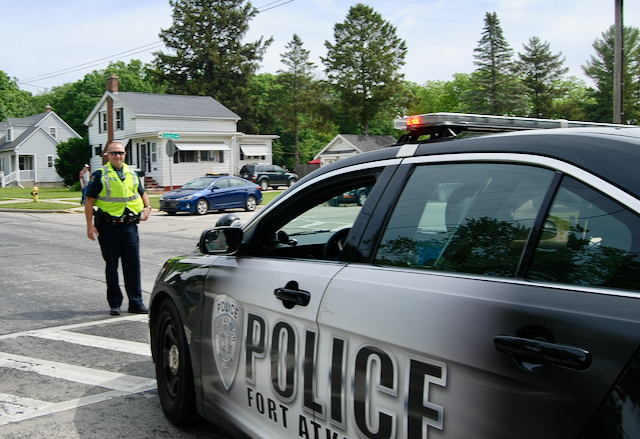
A Fort Atkinson police officer keeps the public safe by performing traffic control duties during a recent parade. Community policing and community perceptions of the police were subjects of a recent survey conducted by the Unity Project of Fort Atkinson. During a meeting Tuesday, project organizers said they received an “excellent” number of respondents to the survey. The survey results are anticipated to be released at the end of the year. File photo/Kim McDarison.
Letter to middle school parents reports news of a student’s death
(Originally published Sept. 15, 2021.)
Update: The following GoFundMe page has been set up by Tammy Rees, which, in part, reads:
Editor’s note: The School District of Fort Atkinson today shared the following information with families of middle school students. The district has asked members of the full community to keep the family of middle school student Danny Rees, and all students and their families, in their hearts during this difficult time. The district has also made it known that support systems are in place to help students as they digest the day’s difficult news. Those seeking emotional support and guidance for families and students who are coping with grief are invited to visit the district’s resource page: https://www.fortschools.org/page/8894.
A letter from Fort Atkinson Middle School Principal Matt Wolf follows:
Dear FAMS Families,
This morning, while students were in homerooms, I shared the news that Danny Rees, a 7th grade student and member of the Fort Atkinson Middle School family, died unexpectedly yesterday afternoon. This news is never easy to share or receive however I am glad that we were all together to support and comfort each other in this difficult time. Our amazing pupil services team and additional grief counselors were available to support children and staff as needs arose throughout the day, and we will continue to use our pupil support staff in this capacity in the days ahead.
At this time we do not know how Danny died, and there is a chance we may not ever know. We ask that people refrain from making assumptions or guesses as these can be hard for family and friends who are already feeling saddened by the news of his death. As we navigate this tragic event, it’s important for everyone involved to remember who Danny was as a person and keep his family and friends in our thoughts; our focus needs to remain on how we can all support and take care of each other.
As always, please do not hesitate to reach out to the middle school if there is anything that we could do to support you and your child through this tragic time.
Sincerely, Matt Wolf
Update: The School District of Fort Atkinson released the following statement Thursday:
“We want to acknowledge that our hearts are heavy for the loss of one of our students. We extend heartfelt condolence to the family, friends, staff, and members of our community. As a District, our focus remains on continuing to support students, staff, and families now and in the days ahead.
“The message (above) was shared with Middle School families Wednesday afternoon.
Due to Federal privacy requirements and out of respect for the family, the District will not provide any additional information.”

Eight-unit apartment building involved in early morning fire
(Originally published Sept. 17, 2021.)
By Kim McDarison
An apartment fire in an eight-unit building in the 1000 block of Whitewater Avenue erupted early this morning.
The Fort Atkinson Fire Department received the call at approximately 5:42 a.m., according to Fort Atkinson Fire Chief Daryl Rausch. He said he was on the scene about six minutes later, and the first engine from the department arrived two minutes after he did.
When firefighters arrived, Rausch said, they found a second-floor deck fully involved in flames, which were also extending into the building’s attic.
Residents in the apartment were home at the time and included an adult male, adult female and a minor female, Rausch said, adding that the adult male is disabled. The family was assisted from the apartment by Fort Atkinson police officers.
The adult male was transported by Ryan Brothers Ambulance Service to address a need for minor medical assistance, Rausch said.
Police also checked the building’s other apartments to make sure all residents were evacuated.
Among the building’s eight apartments, Rausch said, four are located on the first floor and four on a second floor.
All of the apartments within the building were affected by the fire. The apartment where the fire originated has “significant fire damage” the chief said. Another had smoke damage, and a downstairs apartment had water damage. The remaining five apartments had “minor smoke damage” Rausch said.
Residents living within four of the apartments will likely be able to return to their homes by tonight, Rausch noted, while residents in four of the apartments will likely remained displaced for a “significant amount of time.” All of the families involved are being assisted by the Red Cross, he added.
The building was also home to numerous pets, Rausch said, including a number of cats, at least one dog and a rat. All were removed from the building safely and are accounted for.
While Rausch could not estimate a cost associated with the damage, he did say he believed the damage to be “significant, but repairable.”
Rausch identified the cause of the fire as coming from discarded smoking materials that were not properly extinguished.
He noted that the occupants of the apartment said they had noticed a fire on the deck at approximately 4 a.m., but thought they had extinguished it and therefore did not call the fire department. Later, Rausch said, a passerby noticed flames, which were described as burning the deck and its furniture, and the passerby called 911.
Cautioning the public, Rausch said: “Even if you think you’ve extinguished a fire, it’s so important to call the fire department and let us check it out.”
The chief said this incident is the third this year where someone thought they had extinguished a fire when they had not.
Firefighters cleared this morning’s scene at 9:07 a.m. Rausch said.
To extinguish the fire, the MABAS (Mutual Aid Box Alarm System) was activated. Rausch said the fire was identified, using MABAS protocols, as “working still,” which, he said, is the level below the first alarm.
Equipment and firefighters from departments in Milton, Jefferson and Lake Mills assisted with the call. Rausch said some 16 mutual aid firefighters were on hand as well as 19 from the Fort Atkinson Fire Department.
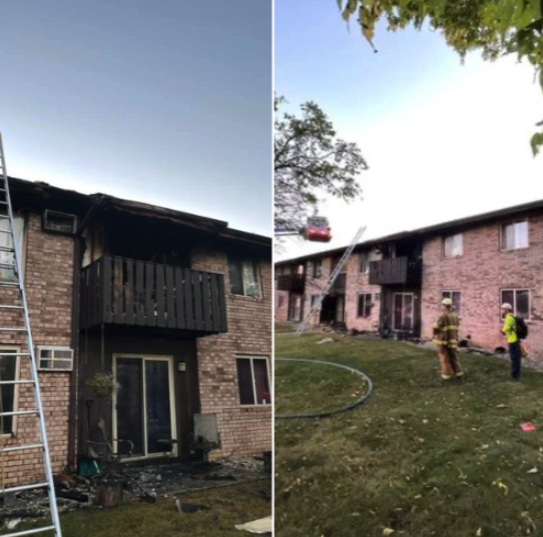
Improperly extinguished and discarded smoking materials are the likely cause of this early morning apartment fire in the 1000 block of Whitewater Avenue, according to Fort Atkinson Fire Chief Daryl Rausch. Firefighters responded to a fire noticed on an apartment building’s deck after it was reported by a passerby. Apartment residents noted that they had extinguished a fire on the deck earlier this morning. Rausch has cautioned the public to call the department even if it looks like a fire has been extinguished so that firefighters can make sure the fire is fully and properly extinguished. Contributed photos.
School district community weighs in on masks
(Originally published Sept. 17, 2021.)
By Kim McDarison
A return to a masking protocol, which was in place last school year, was approved Thursday by the School District of Fort Atkinson Board of Education, making masks a requirement within all the district’s buildings for all school children and district staff.
The decision is a reversal of one made during a special meeting of the board held in August, when it opted to take no action on the issue, leaving in place a decision made at the end of last school year to discontinue the masking requirement at school.
During the August meeting, the board noted that it would likely address the question of masks again, in response, it said, to changes in the number of reported COVID-19 cases would they increase after the beginning of the school year. Fort Atkinson schools opened for the first day of school on Sept. 1.
On Thursday, the decision to return to masks was approved by a vote of 4-1, with board member Amy Reynolds casting the lone ‘no’ vote.
The decision came after board members heard from 35 members of the public who spoke during public comments in favor of both sides of the mask debate. The full time allotted for public comments, according to board policy, is 30 minutes during each meeting. The board voted Thursday to extend the allotted time to nearly an hour and a half to allow all speakers who signed up an opportunity to address the board.
The full three-hour meeting was attended by some 170 members of the public. A sign on the door of Luther Elementary School, where the board meets, noted that the full capacity of the board room is 170.
Additionally, the meeting was attended by at least three area television crews, likely attracted by the news of the death of a Fort Atkinson Middle School student. Families of middle school students were made aware of the student’s death after receiving a letter from Middle School Principal Matt Wolf on Sept. 15. A GoFundMe page set up on the internet by the child’s mother noted that the child, and his family, had been exposed to COVID-19.
The decision to require masks at school is effective until at least Oct. 26, when the school board will meet again and possibly revisit its decision.
Although the school board typically meets on a Thursday, upon learning from Superintendent of Schools Rob Abbott that the board, after Oct. 15, would be receiving information from the state of Wisconsin required to finalize its annual budget, the board approved changing the date of its next meeting to allow time for the receipt of the information.
During Thursday’s discussion, board members noted that among factors they considered in making their decision about masks was a rise in reported cases of COVID-19 within the district, which, Abbott reported as part of a presentation, stood at 27. He indicated that those cases have been reported since the beginning of the school year.
A letter received by the board Thursday from the Jefferson County Health Department and written by Jefferson County Public Health Officer Gail Scott, encouraging all schools within the district to return to masking policies, was also cited.
Prior to the school board meeting, an emergency, closed session meeting was held by the board to discuss, according to its agenda “a student(s) medical condition.” That meeting lasted approximately 30 minutes.
Public comments
Reading from the school board’s policy about public comments, board President Mark Chaney noted that each participant would be given three minutes to speak. Anyone having a legitimate interest in the actions of the board would be eligible to speak, Chaney indicated.
Thirty-five members of the public addressed the board. A 36th, speaker, Ben Knowles, signed up to speak, but did not appear at the podium when his named was called.
Three Fort Atkinson police officers were also present during the meeting. During public comments, one individual, who interrupted the proceedings by voicing her objections to the use of signs by fellow audience members, was, upon instruction from Chaney, removed from the room. The individual left on her own accord.
Of the 35 who spoke, Twenty, or 60%, spoke in favor of students wearing masks at school. Fourteen spoke against. One speaker said he had not come to address mask protocols, speaking instead about issues associated with curriculum.
Speakers, in the order in which they appeared at the podium, follow.
Comments reported are in part, and may not include everything each commenter said. A video of the full meeting is here: https://youtu.be/Z9RsJbtxdP8.
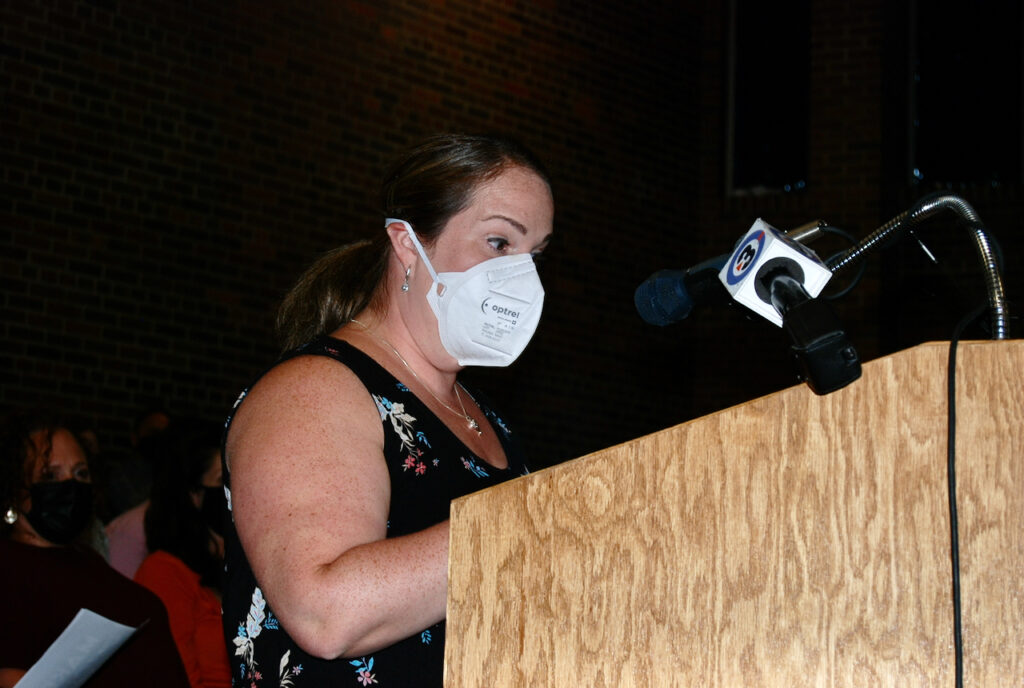
A parent of a kindergartener at Barrie Elementary School, Jennifer Slak, pictured above, said: “This is not how I thought the beginning of her school career would look … This was supposed to be a happy and exciting time, but it’s not.”
Slak expressed disappointment with the district’s previous decision not to enforce masks at school, saying: “Every time I drop my daughter off at school, a pray she doesn’t see the fear in my eyes of having to leave her somewhere where I don’t feel she is safe.
“I feel not enough is being done by our district to keep our children healthy and safe. COVID cases are increasing.” With the recent decision not to enforce masks at school, she said, “my husband and I made the decision this week to pull our daughter out of school due to the number of growing cases at Barrie. We hate doing this to her; she loves school, but the Delta variant is spreading rapidly. We listened to the experts, the health and county professionals earlier this year, and we should be doing the same now. It worked, our kids stayed in school from January into June safely.”
She said she respected that some families wanted to make their own choices, but she said: “This is not just a choice for your child. You’re making the choice for mine as well.”
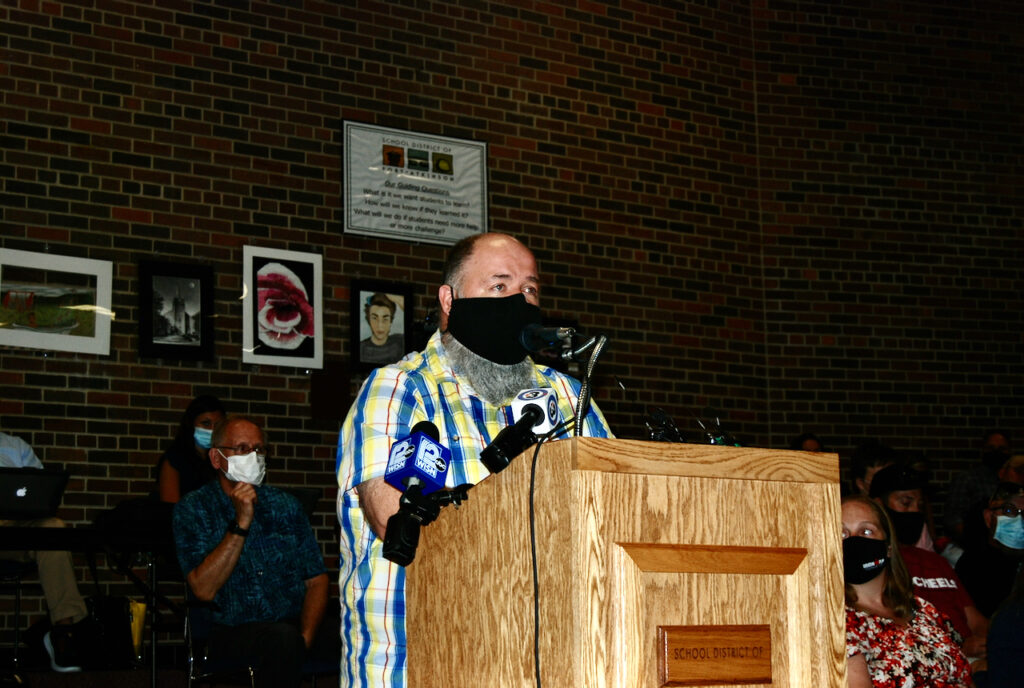
Referencing the previous speaker’s comments, Jonathon Winski, pictured above, said, “I think many parents share those exact sentiments … I’m sure we can all agree that we all have our own preferences and points of view: some that want the right to mask when they feel it necessary and some that want to mask all the time — the whole rainbow — and I appreciate that and I respect that. But I just want to call to light that we are looking at protecting our most vulnerable. The kids, they can’t speak for themselves. They can’t advocate for themselves. They are counting on their parents, their teachers, police officers, the whole community, to really stick up for them, and guide them, and ensure that they have the best health …I want to respectfully ask that we take that into consideration,” he said, adding: “It’s a piece of cloth.
“No matter what your choices are, whether you’ve been vaccinated or you mask, you still can carry this virus and transmit it.”
He advocated for masks in school at least until children can be vaccinated.
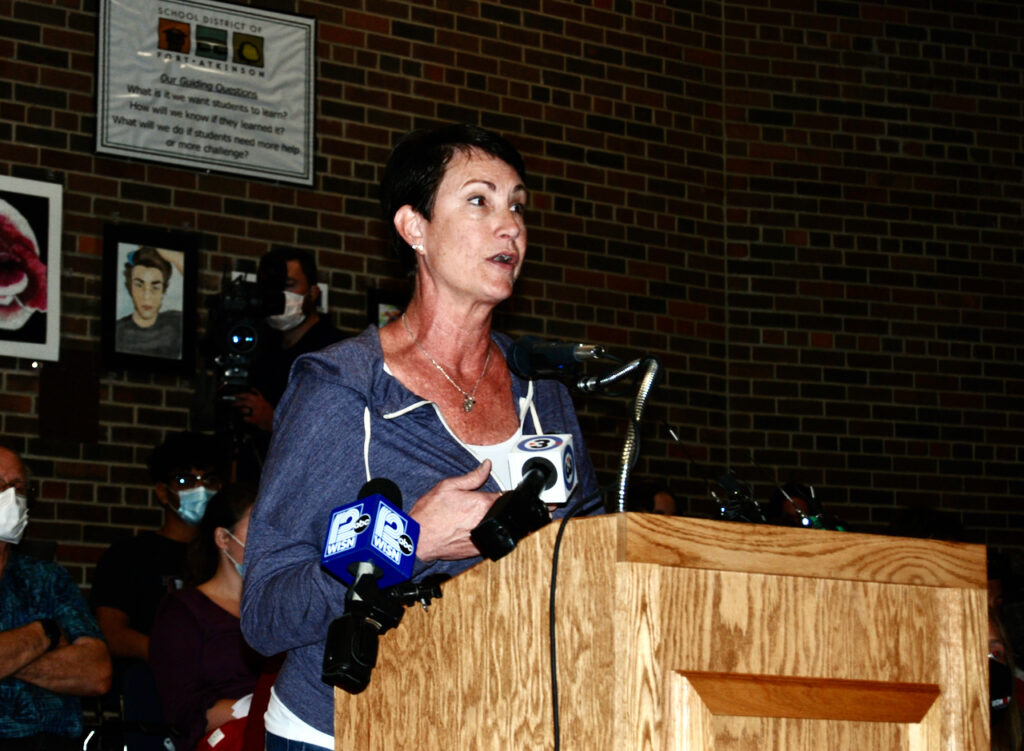
Cheryl Costa, pictured above, said she spoke at the last board meeting.
“My views have not changed. I don’t think you (board members) should be guilted, pressured, into making choices for everybody. We all need to take charge and make our own choices whether to mask our children or not. Your job as a school board is to guide us in education, guide our children with the best education we can give them here in our small community. It is not to tell everybody to wear a mask or not.
“I, for one, do not believe we need to be living in fear. I’m sorry a lot of these people are afraid. I get it. I’m afraid sometimes, too. But masking our healthy children isn’t the right way to go. We need to take care of ourselves, choosing how you want to do that, and if you’d like to mask your child and send them to school, I’m there everyday (Costa is a member of the school district staff), I see lots of children in masks, I see lots of our staff in masks. Great. You do what you feel comfortable with and the rest of us need to make that choice and do what we are comfortable with.”
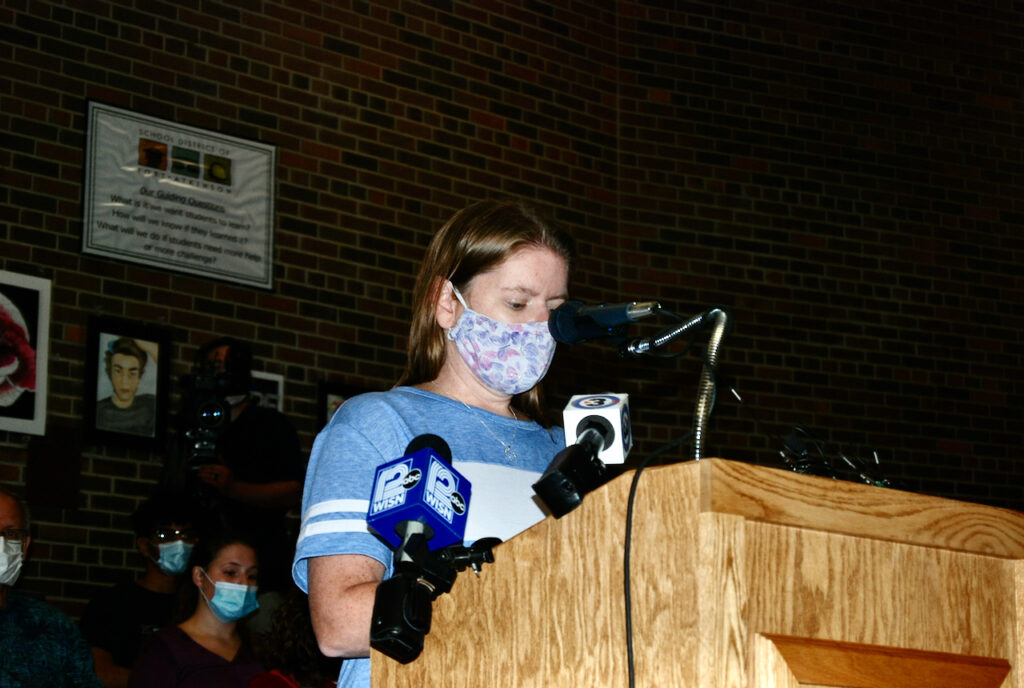
Sara Anderson, pictured above, described herself as the mother of six children attending three of the district’s schools.
Before a decision to relax mask protocols was made, she said, she was confident that the school district would: “put my children’s and everyone else’s needs in mind when making decisions paramount to their well-being … set aside bias and look at facts and science … (and) put out a policy to seek guidelines.
“I was confident sending my children back to in-person would be the right decision and was hopeful this school year would be a positive environment for them.
“After one week of school, I realized the Fort Atkinson School District did not put my children’s best interest as a priority. I have lost count of the number of emails I have received stating someone in my child’s class has tested positive. Shouldn’t that alone be a red flag? Also, families are not given information as to what grade level has COVID. When you have more than one child in the school, this generalized email is not helpful.”
Anderson asked if the district was working to keep parents informed or looking to “do the bare minimum to satisfy policy.”
“I do not understand how you can say we are 1Fort when you make decisions that are not in compliance with CDC guidelines and choosing not to keep our children safe.” she said.
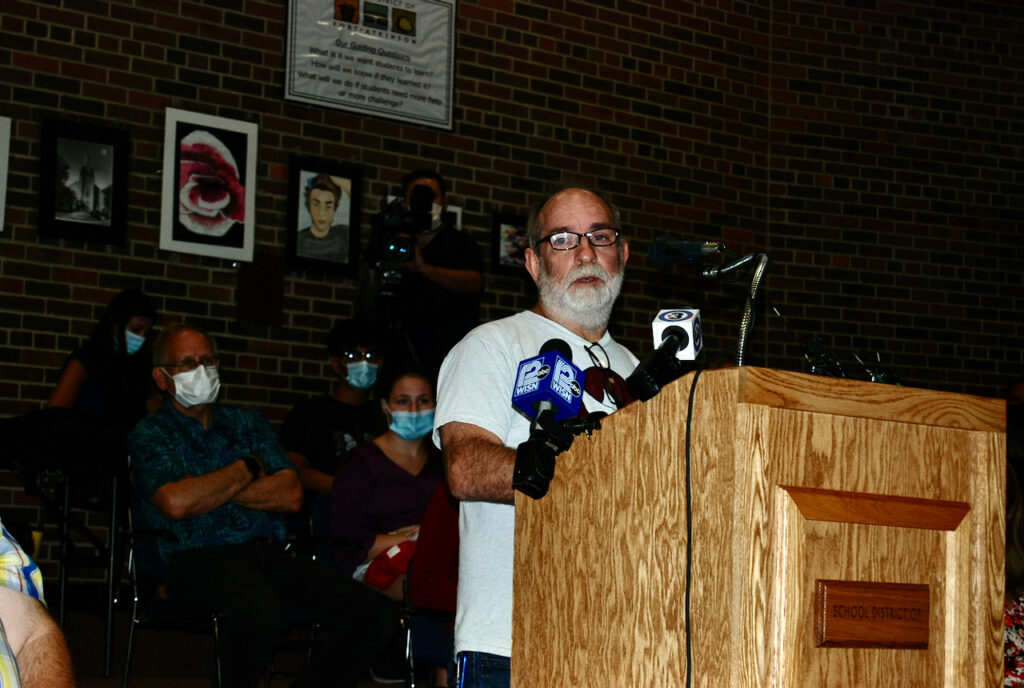
“I contracted and recovered from COVID. I’m vaccinated and I support vaccinations,” Kevin Kilkenny, pictured above, said.
He described himself as a parent of two children who have since graduated from Fort Atkinson schools, and were, he said, “well-prepared to attend the UW-Stevens Point and UW-Madison, and have done well in their careers and have success at this point.”
Said Kilkenny: “I’m not here to talk about masking or not masking.”
Instead, he said, he hoped to bring awareness to issues of curriculum, saying: “There’s a spectrum in teaching, I believe, and it comes from Math, which is factual, you can have history, which is a description of facts, and then you can have philosophy, which deals with ideas. I’m sure you are all aware of the controversy nationwide regarding critical race theory and the 1619 project, and the various areas of the curricula that may or may not be dealing with that.”
Kilkenny said he hoped his comments would bring awareness to the issue and asked the district to help parents better understand which aspects of such curricula “may or may not be being used in Fort Atkinson.”
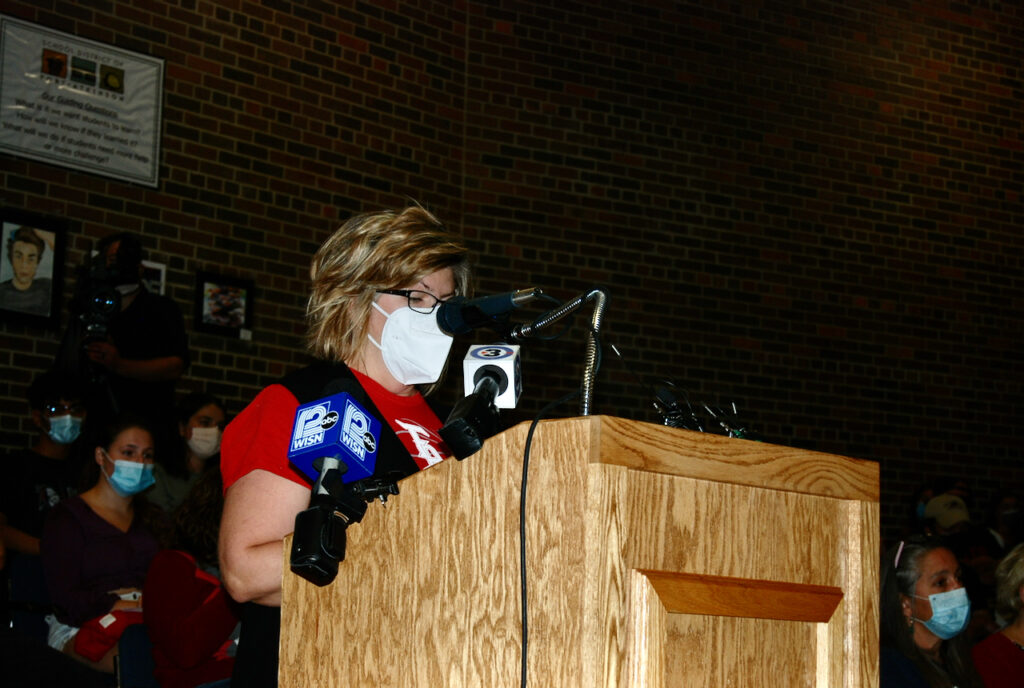
Teri Drake, pictured above, said she is an alumna of Fort Atkinson Schools, a district resident, and a parent, whom, she said, “(has) always been a proud supporter of our schools.
“Today, I am here terribly disappointed in all of us. Our community is so divided that apparently we can’t even rally together around any action to help keep each other safe during a public health crisis.”
Addressing the board, she said: “Now, more than ever, we need you to do the job that you were entrusted to do when you were elected to the board. That is to make decisions in the best interest of a high-quality, safe, public education for all students. Most of us agree that we want our kids to be in-person (in a) classroom. While we appreciate the opportunity for all of our opinions to be heard, we urge you to listen more closely to the voices of health and safety experts when making health and safety decisions.”
She continued: “I find it extraordinarily reckless and contradictory for us to return to pre-COVID operations now, during rising pediatric cases of a highly and rapidly transmittable Delta variant.”
Drake said she made what she called “the difficult choice” for her daughter and open-enrolled her into Jefferson schools, where, she said, a mask mandate was in place.
“Now Jefferson’s mask mandate has been lifted and we don’t know where to turn for a safe, in-person public education in our area,” she said.
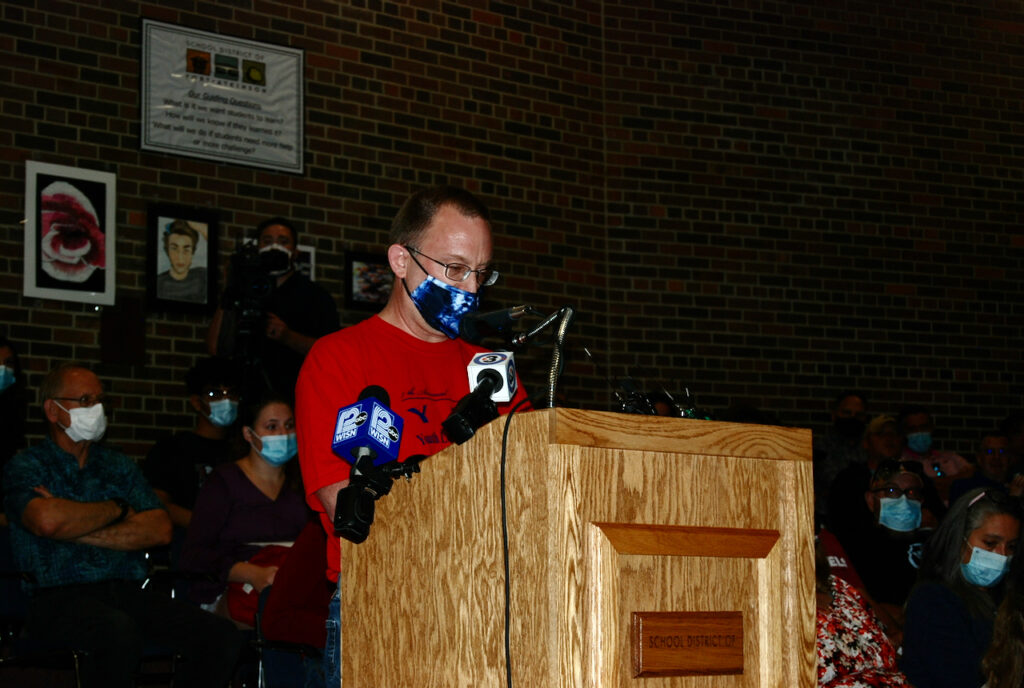
“As a school board, you have a power to protect our children that we don’t have,” said Dan Neugart, pictured above. “As I see it, your job is to keep my kids safe when they are in your care. I urge you to choose a mask mandate that will keep our kids, faculty and staff safe.
“A significant portion of our school population is not even eligible for the extra protection of the vaccine if they choose to get one. And now I have to send my kids to school everyday, knowing they are minimally protected.”
He cited the purchase of masks by doctors and dentists as proof that they work.
“The problem isn’t that masks don’t work very well; everyone isn’t wearing one. On top of that, the virtual option is gone. So what decision am I left with; what choice do I have as a parent? The best I can do is send them with a mask and hope.
“My kids don’t complain about wearing a mask; it’s just a natural part of what we do when we go out now. They understand this is temporary, it keeps them safe, as well as their friends and their classmates, as well as their teachers, and the faculty and support staff. That attitude is because that’s what we’ve modeled in our home.”
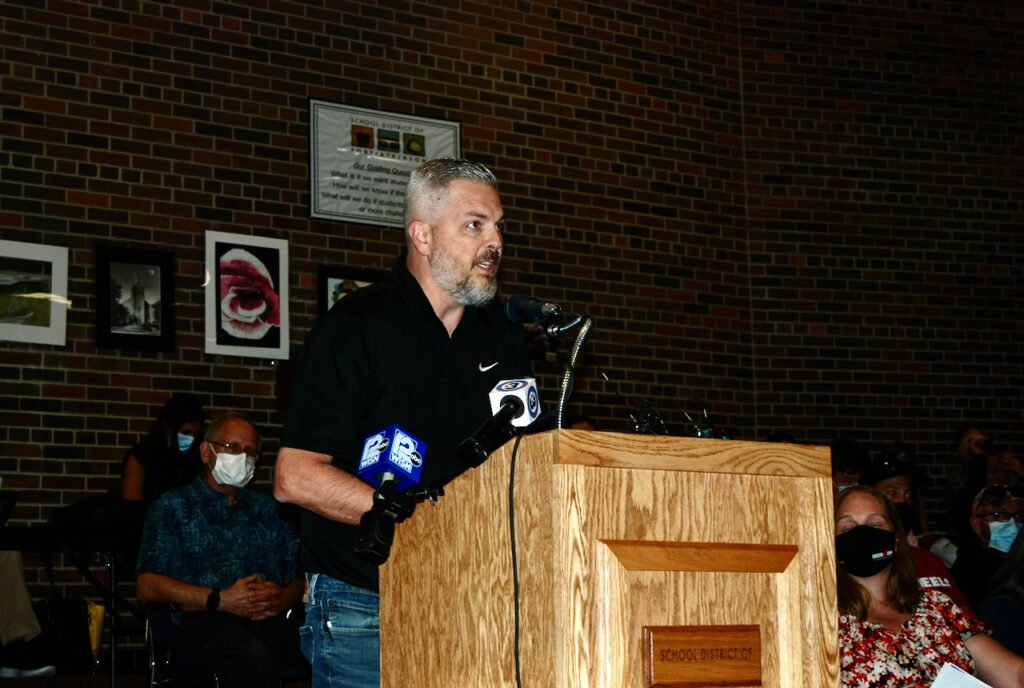
Kurt Horwath, pictured above, began his comments by reciting scripture, saying; “God hath not given us the spirit of fear, out of power and of love, and of a sound mind.”
He continued: “When we started this meeting, we said the Pledge of Allegiance, and I just want to remind everybody here that we are one nation under God. This is the United States of America. We should have the freedom to make these choices for our children, and I respect every person in here that wants to wear a mask, and I hope they respect me for not wearing a mask. I see it on the (school building) wall, I teach my children that when I send them off to school, especially for the first day of school of the year, I tell them to respect everyone; ask questions; learn about people, but to respect everyone. And I want to see that going both ways with everyone here that’s wearing a mask or unmasked. But I just want to remind people that we should have that choice for our own children.”
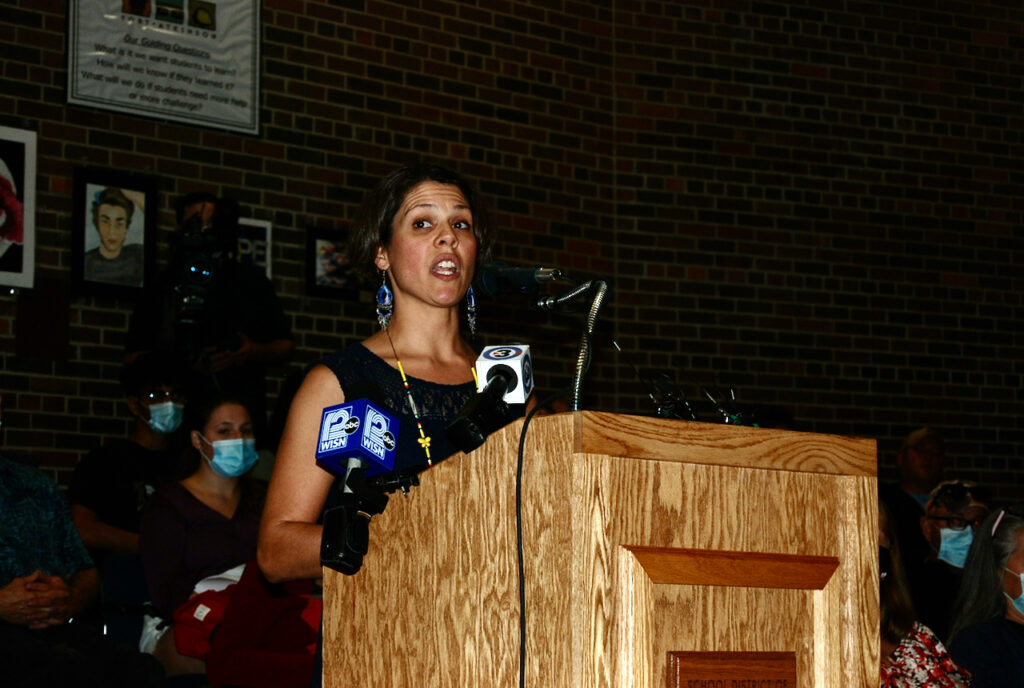
Rebecca Van Ess, pictured above, offered the following thoughts: “Heavenly father, you’ve been taken out of our government, out of our schools, and society. People don’t believe that you are who you say you are. They believe the lies of the anti-Christ’s Jezebel spirit that has taken over our government. And now we find ourselves in a situation like this.”
Van Ess continued: “Hear what the spirit of the lord is saying today. Our battle is not against flesh and blood, but against the rulers, against the authorities, against the spiritual forces of evil in the heavenly realms. Therefore, put on full armor for God. So that when the day of evil comes, you may be able to stand your ground. The weapons we fight with are not the weapons of the world. On the contrary, they have the divine power to demolish strongholds. We demolish arguments with every pretension that has set itself up against the knowledge of God, who sees it all, and knows it all. When you take captive every thought to make it obedient to Christ, what he says is right, and good, and true, and desirable. No one wants to see anyone sick or, heaven forbid, die. And a house divided against itself cannot stand. They want us divided. Let’s not fall for it. This is not about masks or COVID. As I stated in the last meeting, this is an information war. It’s about freedom, and where the spirit of the lord is there is freedom. No people or country can be free without the spirit of God. Perfect love casts out fear.
“I just have to say that everybody has mainstream media’s information. But they don’t have the information that is being censored, because it’s the complete opposite of everything that everybody else is saying that is wearing a mask and is standing in fear.
“I have a completely different perspective on everything that you guys are saying … The driving force behind fear and control is manipulation and witchcraft.
“There are two opposing sides. One side believes in freedom. God is freedom. Following his ways leads to freedom in health and life. The other side believes in tyranny, forced masks and vaccinations. There is a way that seems right onto man, but the end leads to death.”

Paul Brady, pictured above, told those in attendance that he has lived in the area for 30 years, has served as a substitute teacher, on the school board, and today continues to serve as a volunteer firefighter and EMT.
“When the pager goes off, I mentally prepare myself,” he said, noting that he makes such preparations for house fires, car accidents, and when a teenager stops breathing.
In the case of the latter, he said, he asks himself: “What would cause a teenager to not breathe? Car accident? Bicycle? Hit in the head with a baseball? I got to add something else to my mental list now.”
Brady shared two stories. In the first, he told attendees that 35 years ago he was in Munich, Germany, where a bus driver told him a story. According to the bus driver, Brady said, the autobahn had raised the IQ of the country’s inhabitants. According to Brady, when he asked: how? the bus driver said: “because the bad drivers, the dumb people, kill themselves.”
In a second anecdote, Brady talked about a discussion he had with his doctor who told him he had high blood pressure. The doctor prescribed medicine, which Brady took, he said, adding that in time, his blood pressure came down, so he stopped taking his medication. Then, he said, his blood pressure went back up.
He likened the outcome to COVID precautions, saying: “COVID rates go down, you stop wearing a mask. And then we wonder: why the heck did my blood pressure go back up?
“You wear your seat belt. Is that a mandate, a law, or are you a good person? You put your kids in a car seat, because it’s the right thing to do. Why do we fight doing good things? I want to send my kid to school. For my personal choice, I want them to be safe. If my personal choice was for them to not wear a mask, then my personal choice is actually home school.”
In conclusion, he said: “Wear your seatbelt, take our medicine, wear your mask, and don’t drive on the autobahn.”
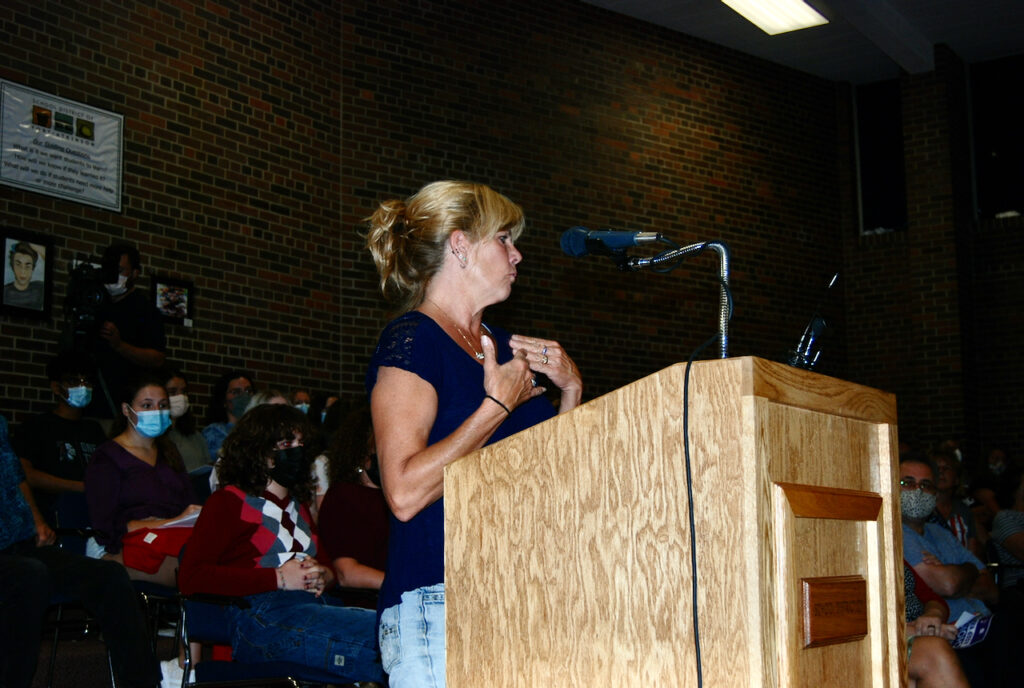
Jefferson resident and mother of seven, Virginia Kubicek, pictured above, said: “There is such a thing that’s called ‘spirit of fear.’ And I see a lot of people in this room who have the spirit of fear, whether it’s from where they get their news — there’s a lot of news that is out here that is censored.
“The COVID germ is so small that it can get right through the masks that you’re wearing. It would be like trying to stop a mosquito from going through a chain-linked fence,” she said.
Kubicek continued: “Putting a mask on kids is not going to make them safe. They need their little practice — their practice from their immune system to keep themselves with an immune system that God has given us — and it works. If we start covering our face and staying quarantined, we aren’t giving our body that practice that it needs to practice and keep itself healthy from the bad germs.”
While wearing masks, she said, “kids can’t breathe, they get headaches, they get anxiety,” which, she said, is counterintuitive to a productive learning environment.
Additionally, Kubicek told the board she found signs that were being held up by some audience members while others were speaking, offensive.
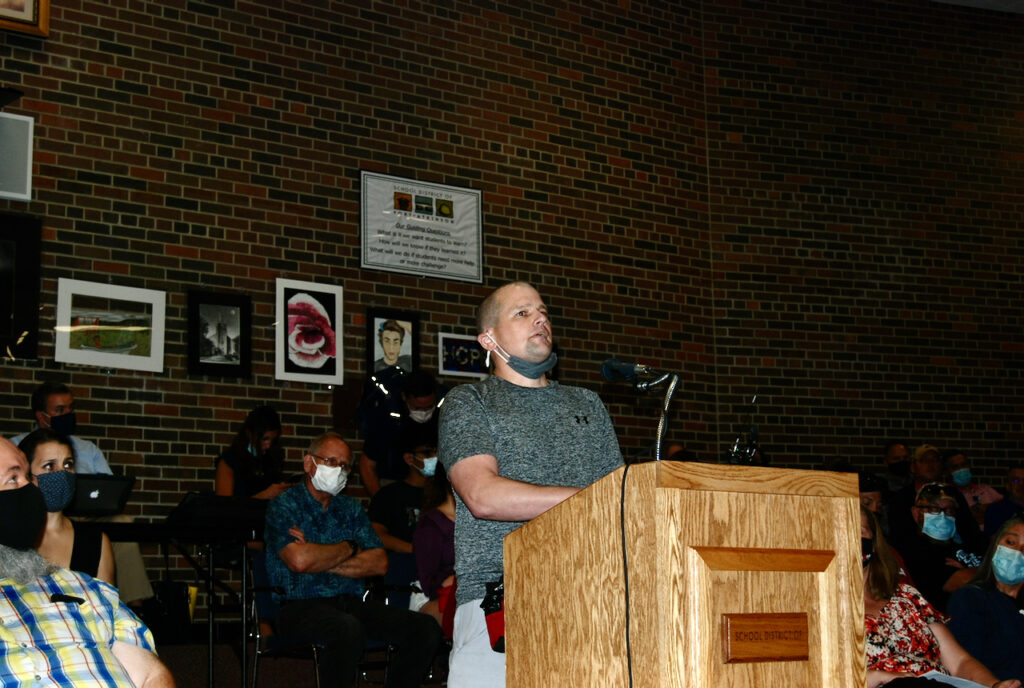
“It’s about preparedness. I did a couple of deployments in Iraq,” Andy Everson, pictured above, said.
“We have to admit that there’s a threat,” he said, adding that in combat, threats come at varying levels. “But there is a threat to our kids in our community. We have to have a plan to confront that, right?”
Responding to earlier statements, he said: “It’s not fear. You say people are living in fear because they have masks? No, it’s being ready for a situation that’s there and that’s what life’s about.”
He talked about his experiences as an infantry soldier, noting that soldiers often didn’t like the instructions they were given.
“But then stuff happens,” he said, adding that a consequence of circumstances is “losing people you love when you don’t think you should have to,” leaving questions about whether enough was done to prevent a bad outcome.
“It’s crushing,” he said.
“We just need to keep this in the real realm with experts or doctors — and these people are saying: trust God, not the doctors — well you’ve got to send your kids to school and you are not even listening to the highest educated people you have. And what a slap in the face that is,” Everson said.
Turning to the board, he said: “And your job as the board is to take care of these kids. And answer the questions of their mad parents. You’re not supposed to say, well, what do you think? And then do that. That was done when you got elected, right? You talk to the experts, you can form your own opinions, make the best policy and then take the heat for it, right?
“Whatever you guys decide, that’s your choice, but I think we deserve from each of you a justification on your decision, because someone has to be held accountable. This is serious stuff, and at least we can teach our kids to be prepared for what is coming in life, because you can’t always control that.”
Everson advocated for inclusion from all political parties in the discussion, saying: “I want everybody here and state your opinion. That’s what this is about. It’s a mask. We had gear, 150 pounds, walking forever, and people still died and it affects me.”
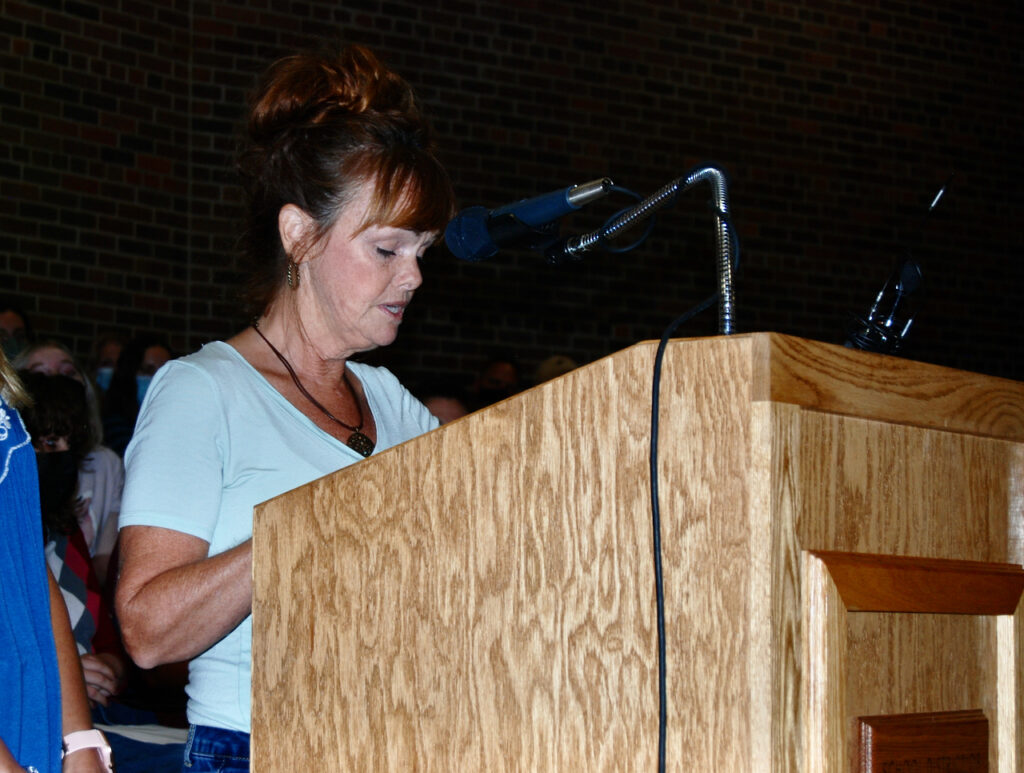
Michelle Green, pictured above, spoke about a text message, which, she said, she had earlier received referencing the passing of a child within the district.
As a registered nurse, she said, she was taught the value of compassion, which, she said, she believed was lacking in the text message she received.
“This poor family needs the respect to their privacy. They have lost a child. He or she will no longer be on Earth with us. It is their mourning we need to respect, as they are, I’m sure anguished with sorrow.
“Instead of wrapping our arms around this family and having compassion, this child’s passing has become a tool and a war of sides on who is right and who is wrong in wearing and not wearing a mask,” Green said.
“I know there have not been very many pediatric COVIDs at the Fort hospital, so this will hit us to the core,” Green noted, adding: “I know this is devastating because my brother was the pediatric code at Fort hospital 42 years ago. He was only 12 years old when he was hit by a car while he was playing in the leaves. Still today piles of leaves in October haunt me.
“This is difficult and painful for both sides of this topic. Please have grace for this family. Please remember to be compassionate with whichever side you are on. Instead of worrying about all the people in Fort and Jefferson County attending the meeting en masse, why not worry about the big picture of who we have become?” she asked.

Jefferson resident Jan Johnstone, pictured above, praised the board for its efforts to listen to the public.
“I was a little disappointed, I was hoping we’d have a moment of silence for the child that passed — at least a prayer,” she said, adding that when she and other parents in Jefferson heard about the death of a child in Fort Atkinson, they sent prayers to the family “immediately.”
“The loss of a child is a very, very terrible thing. However, in this instance, nobody ever took a mask away from a child that wanted to wear it at Fort Atkinson school district. They have the right to wear a mask, they can wear two masks, they can wear five masks, they can wear 10 masks. Nobody is going to yell at them or take their masks away. If a child does not want to wear a mask, they don’t have to. That’s called freedom; something that the United States of America was built on. Choice, everyone has a choice,” Johnstone said.
She accused those in favor of a mask mandate of “asking your school board to break the law. Have you read the constitution over here? Apparently not.”
Further, she said, she was frustrated when, by her accounting, “forty-five minutes after kids arrived at school, parents were already out there saying: ‘oh, we got to get to the school board and make sure that these kids get masked again.’”
“It might have been better just to say a prayer rather than spread all these rumors and confusing everybody,” Johnstone, said, adding: “Everybody needs to slow down.”
She remembered from her own childhood a classmate who died while riding a bike. Everyone in her class did not stop riding bikes, she said.

Kristen Czech, pictured above, said she is a former social worker, contact tracer and she is the parent of a child attending Barrie Elementary School.
Her son, she said, tested positive for COVID-19 a week after school started.
Before school started, Czech said, her son told her that he would wear a mask if everybody else did or if he was told he had to.
“I gave him the mask, I begged him, I pleaded with him, he would not wear the mask,” she said.
On the night that he found out he had tested positive, Czech said, her son texted family members telling them he worried that he might die.
Sharing a message to her from her son, Czech said, “I just want to leave you with his words: ‘Mama, Mama, am I going to die? Mommy, I’m so scared. Mom, I wish I had worn a mask.’”
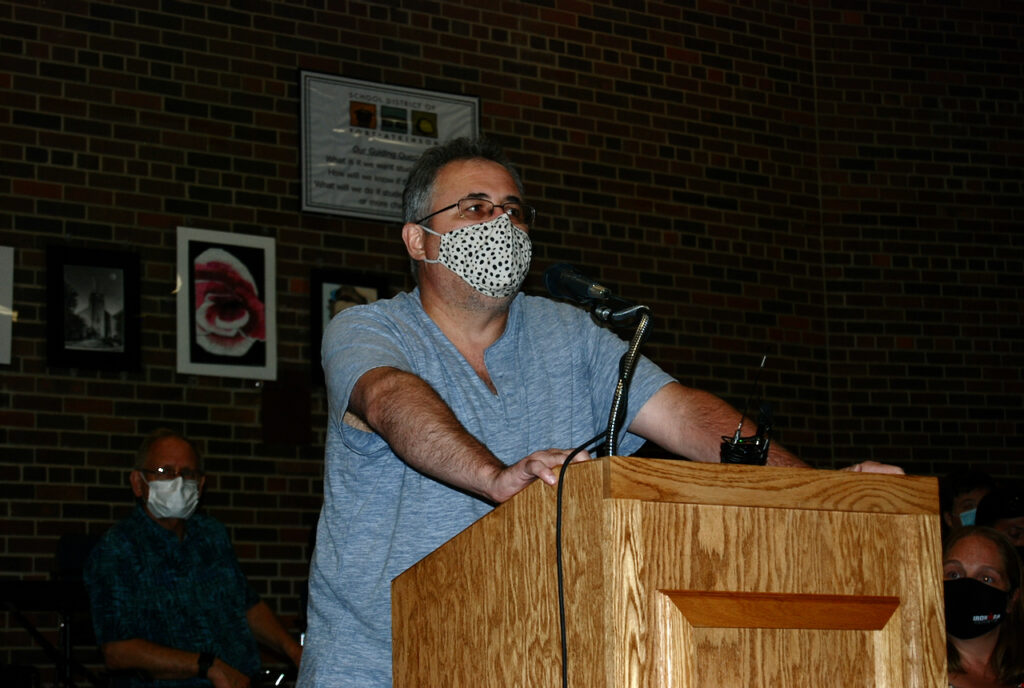
“My wife and I moved here about 20 years ago. We chose to come here, mainly, or partially, at least, because of the school district,” Doug Martin, pictured above, said.
The couple has two children, one in high school, and one in middle school, Martin said.
He described himself as being in the military for “quite a few years,” returning from the first Gulf War and going into nursing school to become an LPN.
“I had to wear a mask, a lot of different kinds of masks. I didn’t like it. But I wore it because they work. They serve their purpose. They protect me, they protect others, for different reasons,” he said.
While in the military, he said, “I had to train other people how to wear masks properly; gas masks, these kinds of masks. They function.”
He continued: “To listen to people tell me, ‘oh, they are going to get hurt by wearing a mask.’ I understand they are uncomfortable. I get that. I’ve been in surgery cases that take eight hours, nine hours. I don’t like them. I wore them. When you tell a child that, ‘oh, they’re bad for you,’ they are going to believe that. If you tell the child they protect you, they’ll believe that. They’re children. We’re adults. We should be protecting them.
“Last night, I had to hold my daughter, she’s in middle school, and let her cry, because a boy she just met this year that she thought was kind of funny, isn’t going to be sitting by her anymore because he’s gone. And I had to try and explain to her why that happened.
“I’ve heard people say, ‘God will protect us from this and that.’ God gave us masks,” he said.

Amanda Golson, pictured above, said she is a parent of a student at Barrie Elementary School and a mathematics teacher with a master’s degree in education.
“I see the value in making numbers personal and relatable,” she said.
Offering some numbers, she said: “This illness has now killed one in 498 Americans. If you were to go to Lambeau Field, and as you were entering the stadium, they told you over 150 people are going to die tonight, would you continue to walk through the gates with your children in tow?”
Golson said she was in support of universal masking in Fort Atkinson schools.
“The focus of the decisions made here tonight should not be based on adult squabbles and efforts to prove one another wrong. The mask debate is an adult problem that we continue to project onto our children. Some are using our children as pawns in a culture war. They will not win in the longterm, but they will hurt our students and our educators in the process,” she said.
As a teacher working with elementary students, Golson said, “they do not carry the anti-masking passion of their parents. When masking was required, students happily put their masks on and they go about their day, content to be in the classroom.
“What does negatively impact children is not being able to attend school. As we move forward with masking optional absences which are certain to increase, students who are home sick will miss opportunities as will students forced to quarantine due to close contact.”
According to Golson, “a recent study found even with favorable conditions in the home, students made little or no progress while learning remotely. Learning loss has been most pronounced among our most vulnerable students who come from less advantaged homes. These students need the opportunities masking affords them,” she said.
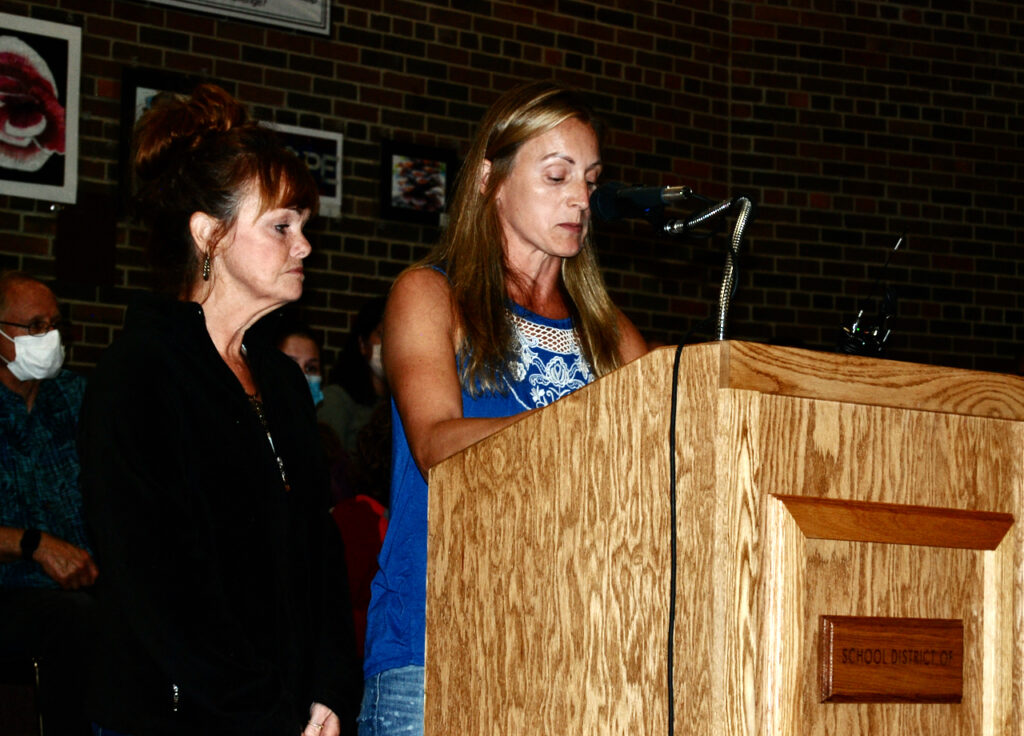
Jessica Rusch, pictured above, said she was frustrated by those whom she sees advocating for masks at meetings while they attend other public functions without masks.
She described herself as a Fort Atkinson resident for 42 years and a critical healthcare worker for 23 years.
Although traditionally proud to live in the community, she said, she has become “disappointed and embarrassed” about “how adults have acted and turned against each other.
“We are the role models for these children. Can we agree that they have been through enough? The past 18 months have been hard. They hear and they feel what is going on,” Rusch said.
She said she kept her high-school-aged daughter home, using a virtual schooling option last year, because she was getting headaches.
“I believe in-person is better for her. While she is battling anxiety every day, school is finally starting to feel normal for her. Can we agree that the health and safety of students is our priority? If so, I’m growing very impatient with constant talk about fear and nothing about what we can do to be healthier,” Rusch said.
“Our immune systems need germs to be healthy to protect us. Our bodies have been fighting viruses our entire lives. COVID isn’t going anywhere. A strong you is the answer to this virus. So what can we do? As parents we can keep our kids home when they are sick. More and more parents are doing this and I respect you for that. Simple things like teaching them to wash their hands, don’t touch your face. we can put more effort into eating healthy and increasing our physical activity,” she said.
Rusch asked: “Does it matter if our children are physically healthy if they are emotionally depressed?
“As healthcare professionals it is unethical to treat one area of a child’s life. Kids need smiles, love and belonging. We are the sickest people in the world. It’s time to take personal responsibility for our health. Be proactive instead of reactive so our God-given immune system can protect us the way we were designed to. As a pediatric nurse for 15 years taking care of kids in the hospital, it’s scary for them. I learned very quickly to work with you, the parents, on how best to care for your child. I would never stand here and tell you what is best for your child and I expect that same courtesy. All I’m asking is that we stop judging each other and be kinder to one another,” she said.
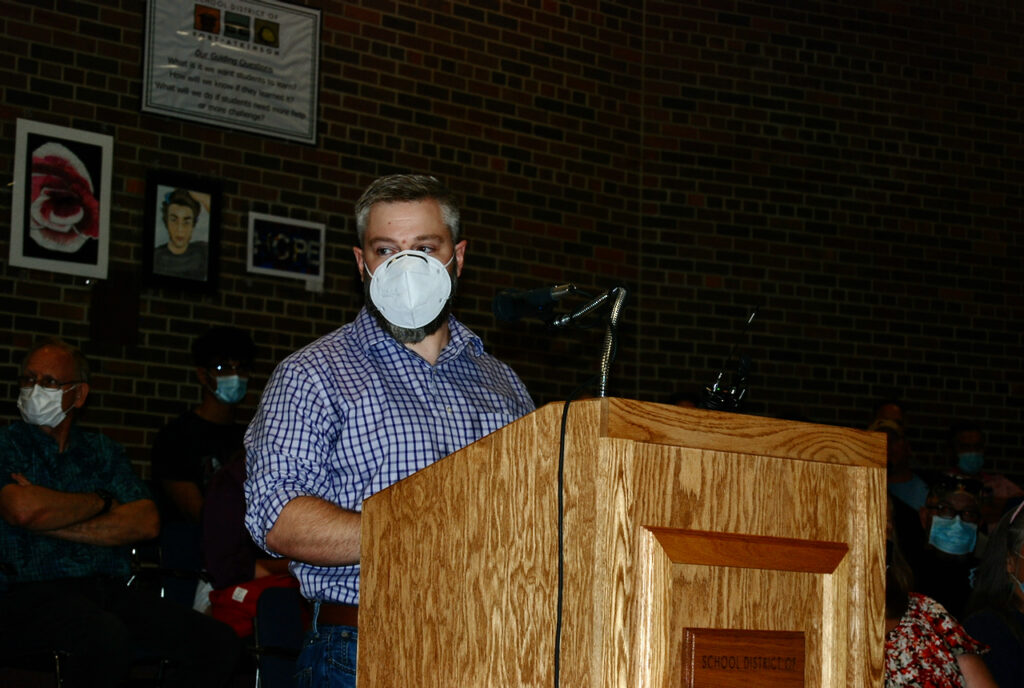
Dashal Schopen, pictured above, said he wished his daughter didn’t have to wear a mask.
“Nobody is celebrating masks,” he said.
He listened virtually to the board’s last meeting, he said, where he gained the understanding that the death rate for kids who are vulnerable to dying from COVID was one in 1,000.
With 2,800 kids in the district, he said, “I think it’s fairly unrealistic to expect that kids are going to enter the building COVID-free. Somebody carrying COVID is going to get in.”
To mitigate that risk, he said, and until a vaccine is available for children, masks are “the best we got.”
What people do outside of the school buildings, he said, was “not my business.”
Most are vaccinated, he said, adding, “People want to go out, party, go to bars, whatever, people live their lives, but, we can control the environment in this building.
“The Declaration of Independence in this country gives you three unalienable rights. Those are the right to life, right to liberty, and the pursuit of happiness. I don’t wear masks out of fear. There’s nothing fearful about it. It’s about respect. It’s about showing your respect for other people, understanding the fact that you don’t know everything, I don’t know everything. If I’m wrong, great. I really hope I am. And I hope there isn’t a death rate, and I hope it’s all make-believe, I hope I’m brainwashed and I hope kids don’t die. But if we’re right, we can prevent it. I don’t know the answer, but we can prevent it.
“If God created man, and man created the tools and knowledge to combat the virus, then God created the tools and knowledge to combat the virus,” Schopen said.
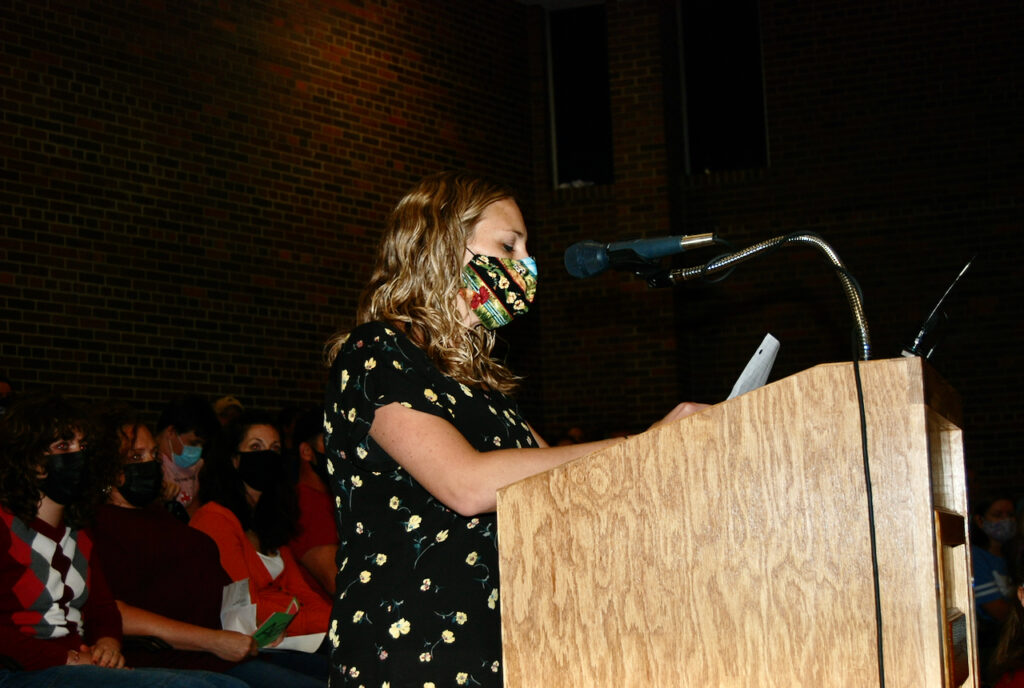
Ashley Weiser, pictured above, said she is a parent and a safety manager.
“My heart is heavy to hear that we had a death in our own community,” Weiser said.
“It saddens me more to know there is guidance available to mitigate the risk of disease spread,” she added.
She noted such practices were used last year to keep the school community safe.
In industry, she said, “if there is a death at a facility, we are required to notify OSHA within eight hours so that they can investigate. They would be looking to ensure that a company had all possible safety measures in place to prevent injury.
“Our school board has chosen not to implement safety measures to provide for our students and teachers a safe environment at school,” she continued, adding that she found that option “unacceptable.”
“Our schools should offer the same rights to our students as are required in the workplace.
“Safety should not be negotiable,” Weiser said.
She said she kept her daughter home from school after learning that some of her classmates had tested positive.
“I do not feel comfortable sending her to school,” she said, adding that she found the situation “very disappointing.”
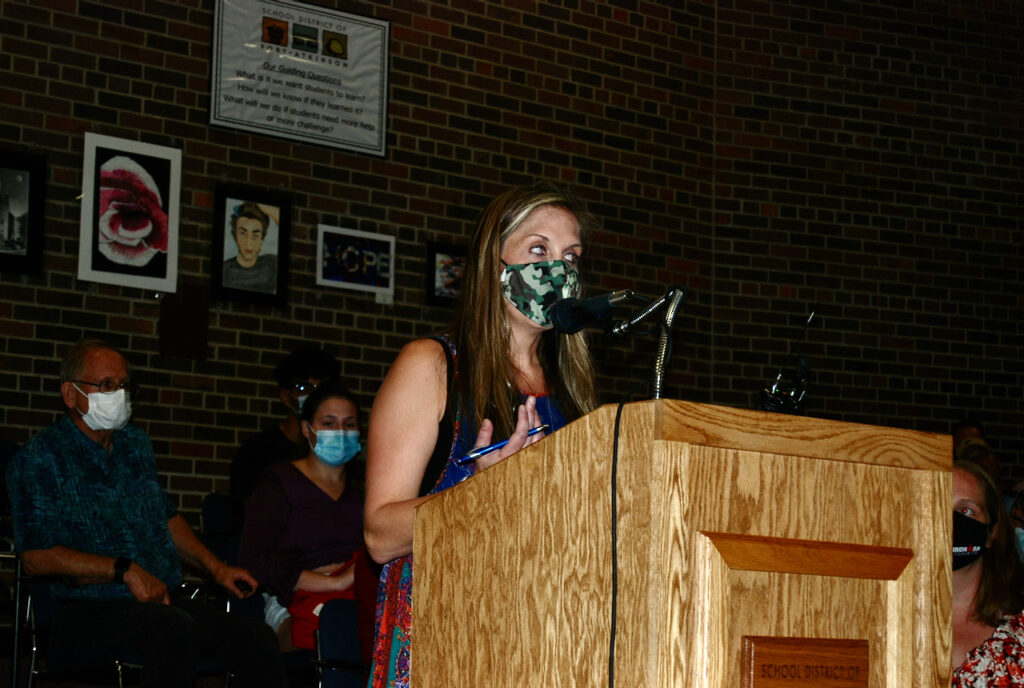
Mara McGlynn, pictured above, said she was addressing the board because she wanted “access to education.”
“I want my kid to go to his neighborhood school, (and) to have caring and high-quality teachers and to learn in a classroom alongside his peers.”
While in-person learning is good for all kids, McGlynn said, “It happens to be essential for my kid, because my son, who is in kindergarten … also has autism.
“While many kids can access and develop social skills outside of school just acquiring them through normal interactions, my son requires a little bit more support than that.
“He’s been out of school for the last couple of days … due to positive COVID testing in his classroom. And no matter what I think about myself, there is just no way that I can replace the many skills and gifts of his team, of the five, six people that contribute to his learning and growth every day,” McGlynn said.
“I think tonight, as politicized and polarized as this issue has become, each of you have an opportunity to act in alignment with our (1Fort) team. To act on behalf of a community and on behalf of our children rather than on behalf of a political party.
“I would ask you to do that, and protect our kids; allow my kid to have access to education, which is his right, and to grow and develop alongside his peers,” she said.

Vincent Root, pictured above, said he is the parent of a kindergartener.
“Since March of 2019, my son has made tremendous sacrifices, ones I never knew a 4- or 5-year-old would have to make. It was a battle and we may have gotten a few scars along the way, but at the end of the day, we knew it would all be worth it, and this, too, shall pass. My son went to Whitewater for preschool. He wore his mast all day, no problem, at 4 years old. The teachers wore the mask, and other kids, and everything was fine.
“Fast-forward to today, our son is in kindergarten in Rockwell. Every morning we send our son into school with a mask on and every day we pick him up and he comes out without it on. When we ask him why he doesn’t wear it, he says ‘my friends don’t, and the teacher doesn’t,’ most of the school staff doesn’t wear one either, so of course they are not going to remind or enforce a 5-year-old to keep his on when we want him wearing one,” Root said.
“In team sports or in the military,” Root continued, “we learn the ethic of working together to further the group’s goals. Our athletes and military service people learn to put the group’s well-being ahead of their self.
“We don’t see NFL teams offered a choice on whether or not they are to wear their protective gear.”
“All of a sudden,” Root said, “it seems everyone is a scientist, a researcher, everyone is their own expert, a freedom fighter. Your freedom is this: you’re free to smoke until your lungs turn black, but you can’t do it on a bus. And you are free to drink until your liver falls out of your ass, but you can’t do it behind the wheel of a car. We have safety measures in place at school, too. The doors at our schools are locked. So, should we undo that because it’s my right, my choice, I want to get in the school? Speaking of choice, parents don’t choose recess minutes, class schedules, seating arrangements, field trip options, assessments, start or end time, duration of lessons. They also don’t assess their children’s academic levels. They leave that to the professionals with training. Just as we should in matters of public health.”
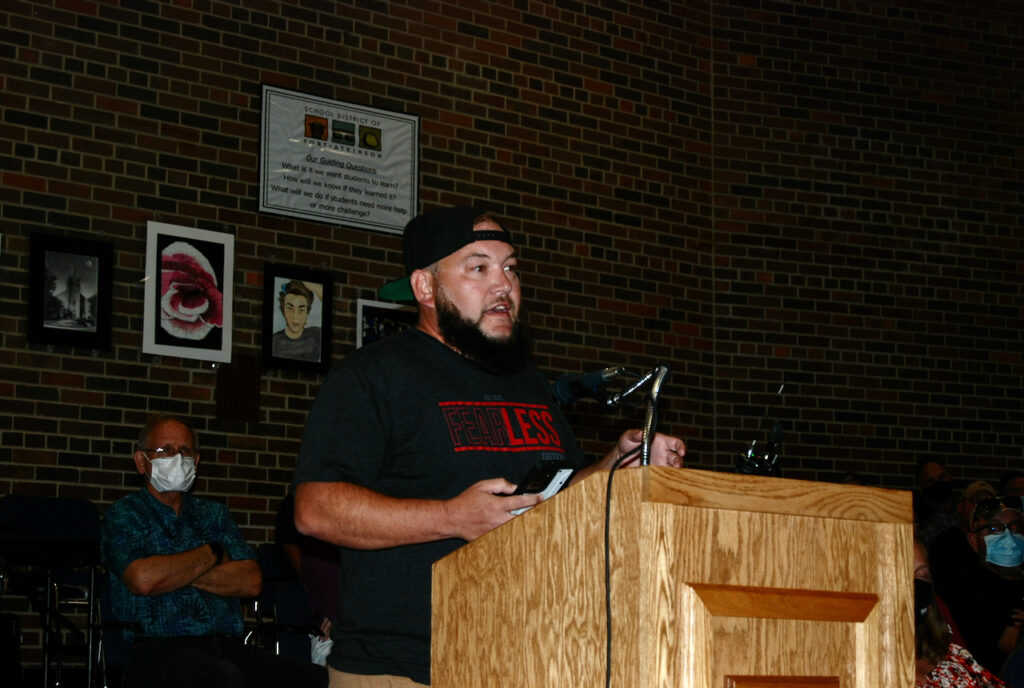
“I’m actually really proud of our school board. I know that it was not easy to make this decision a month ago and I think that you stood by logic,” Dale Prisk, pictured above, said.
He praised the school board for what he characterized as listening to the parents, which, he said, “is ultimately what we ask you to do when we vote you in for the positions. We want you to represent the parents, and there was a lot of parents that weren’t being heard. And the thing is, with the way we went back to class, it’s worth it. Any teacher, any educator, any parent that picked their kids up the first day of school, if you can really look at me, or anyone sitting nest to you, and say, ‘oh man, my kid was really bummed out; oh, you didn’t notice the difference,’ of course you did. You got to see your kids be kids.”
Addressing parents in support of mask protocols, he said: “Nobody ever took their childhood away. Nobody ever said in kindergarten, you don’t get to play with your friends. Nobody did that. Nobody said sit in front of the computer and learn. So it’s real easy to say what we would have done, could have done, we didn’t do it.”
“The reality is there is zero perfect solution here. We obviously have a split community. But the reality is none of you are magicians. There’s not five magic hats and five magic wands up at that table that’s going to wave a wand and protect our kids,” Prisk said.
“That’s not what you do, that’s not realistic, and it’s not fair, quite honesty for parents at this meeting to cast aspersions that it’s your responsibility. If you want your kid wearing a mask at school, and you can’t keep that mask on your kid at school, that’s (a) parenting issue, that’s not a school board issue,” he said.
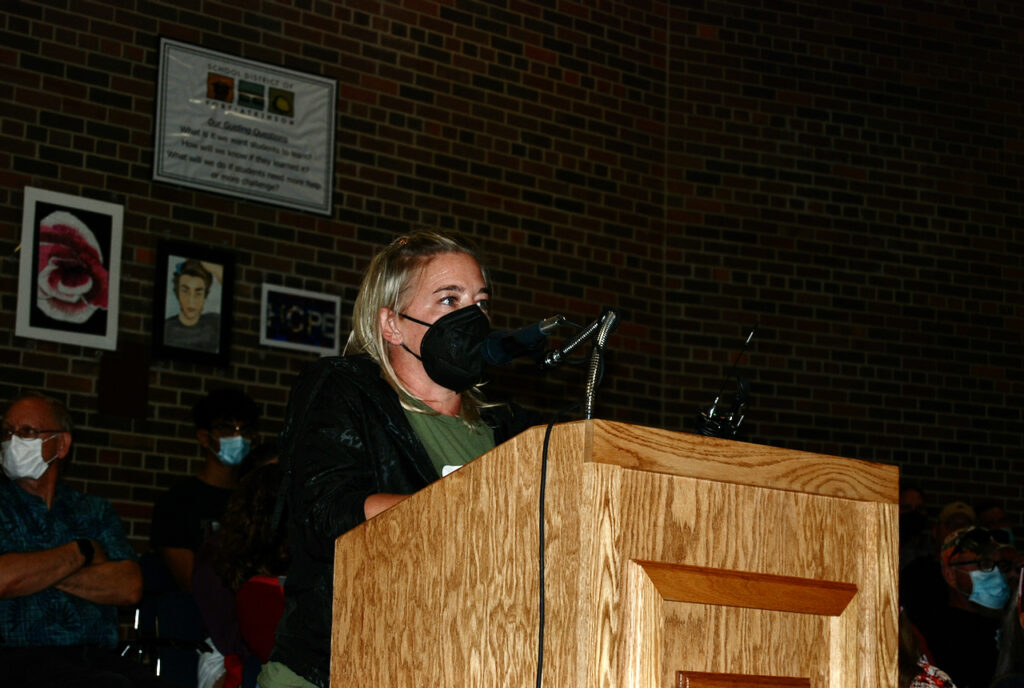
A parent of children in Barrie Elementary, Reeba Schultz, pictured above, said she has worked in healthcare for 23 years at the UW Children’s Hospital in Madison.
“I’ve worked with pediatric patients my entire career. I can tell you we have COVID patients. They are sick. They are a lot sicker than they were last year. We do not have beds for them. When I tell the doctors, the floor nurses, the respiratory therapists, and other nursing staff that our school is mask optional, they are shocked.
“I want my kids to be in-person. I want them to be able to get an education that they deserve. But even more importantly, I want them to be healthy. I want all our kids to be healthy, and I want them to be able to stay alive. Masks work,” Schultz said.
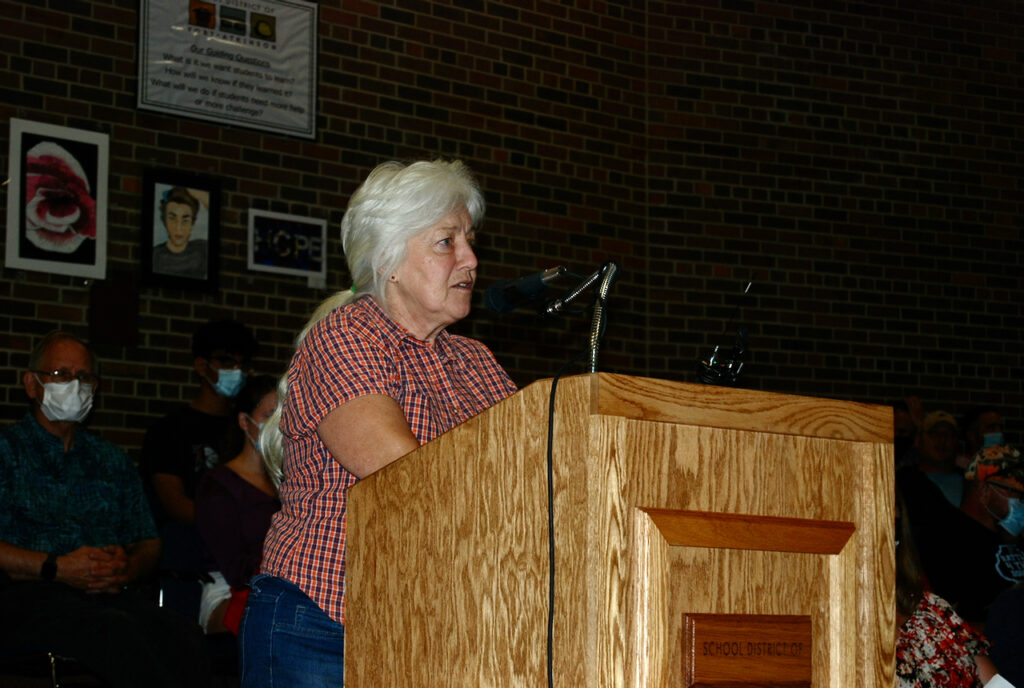
Said Carie Keadrick. pictured above: “You want to wear the masks, you’re telling us that masks work, if your masks work then you are safe from someone who’s not wearing a mask. Is that not correct? Or why are we wearing a mask? What about the mucus membranes of your eyes, what about your skin? Do germs not enter in through those parts of your body? Are we going to be encased in some kind of plastic from head to toe? It makes no logical sense.
“There are numerous scientists, epidemiologists, all sorts of physicians, on the other side who have been totally blocked. How many of us have been taken down off of Facebook for posting factual information, actual studies? You guys are sitting in front of the television thinking the media is going to tell you the truth. I’m sorry, it is an agenda. You look around and you see when you masked people hold up your signs, I mean did you all call each other and say, ‘we’re going to have signs that say ‘agree’ or ‘nope’?”
“I mean this is an organized thing from the other side,” Keadrick continued.
“Science is science,” she said. “It’s our job to get ourselves healthy, the kids healthy and active, fresh air, Vitamin D comes from the sun, you know there are many things we can do to get healthy,” she added.

“I just want to bring up the issue of public good,” said Frankie Fuller, pictured above.
“It seems that life changes and our children will have more challenges than whether to wear masks, but this is an opportunity for us to show them a good example of how to use science as a resource. They will need to learn to rely on science, and facts, especially as we all face the rapidly changing climate. If we can’t agree on whether to wear masks, how will we be able to address the other more challenging problems of the future?” Fuller asked.
“The other issue that I worry about are the insurance costs for the healthcare. There is something that we can do about this situation by wearing masks. It’s a lot less expensive then sending all our children to the hospital and having everyone get infected,” she said.
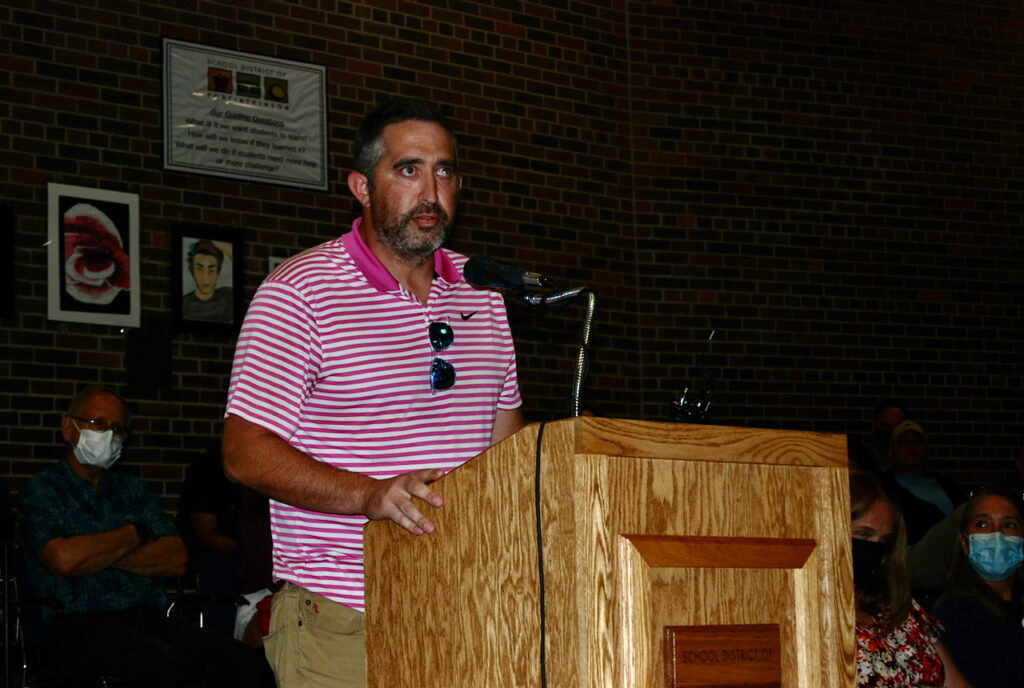
“Like a lot of faces here, I’m a product of this school district. I’ve lived here my whole life, I’ve always had a pretty significant sense of pride in this community, Ryan McGlynn, pictured above, said.
“I’ve seen as an adult the projects that community members have supported here, something as simple as building a public bathroom in Barrie Park, to building a skate park at Ralph Park, and hopefully the much more ambitious project BASE has going will see itself to fruition,” he said.
“There’s a lot of discussion amongst the anti-mask crowd about civil liberties and constitutional rights, I can’t disagree with that because it would be silly, I think there is an opportunity that has been lost here to teach our kids a lesson about selflessness and acting on the part of the greater good, because I’m afraid if we don’t do that, we are going to lose the opportunity for our children to gain the quality of education that they can here,” McGlynn said.
“Last year,” he added, “was somewhat of a lost year with the virtual learning. I worry that if we proceed with the no-mask route, that that’s going to become real again.”
He advocated that the district avoid disruption in the educational process.

“A lot of people that are here tonight are talking about emotion, or from emotion, and this is a very emotional subject. As you can see, we’re split down the middle; people don’t speak to each other anymore over this, but I just want to take a look at some data, said Amy Larson, pictured above.
“I took Oregon, which is a similar size to Fort Atkinson, and Oregon is in Dane County. Dane County is under a mask mandate — their kids even have to wear their masks outdoors,” Larson said, noting that, looking at COVID cases, which, she said, were reported as of Sept. 17, both Fort Atkinson and Oregon had 21 cases. According to Larson, Fort Atkinson was reporting 70% of its population as vaccinated and Oregon was reporting 86%.
Larson further pointed to what she said was the 7-day daily average cases on Sept. 15th in 2020 in Jefferson County, which, she said, was reported at 20.
“Today, we are at 18,” she said, adding: ” So, I guess I struggle a little bit thinking that a mask mandate is the only mitigation strategy we have, because we see a similar-sized community wearing masks and you don’t see a whole lot of difference.”
Larson pointed to air filtration systems as an example of “other mitigation strategies” the district might take.
“I don’t think anyone here is denying that COVID is not real. COVID is making people sick, but we also can’t deny there are times when there are major influenza outbreaks in our school. Right before COVID hit, my kids were severely ill; never seen them that ill, the whole swim team was ill, half the school was ill. We never once thought about shutting down school or masking our kids then,” Larson said.
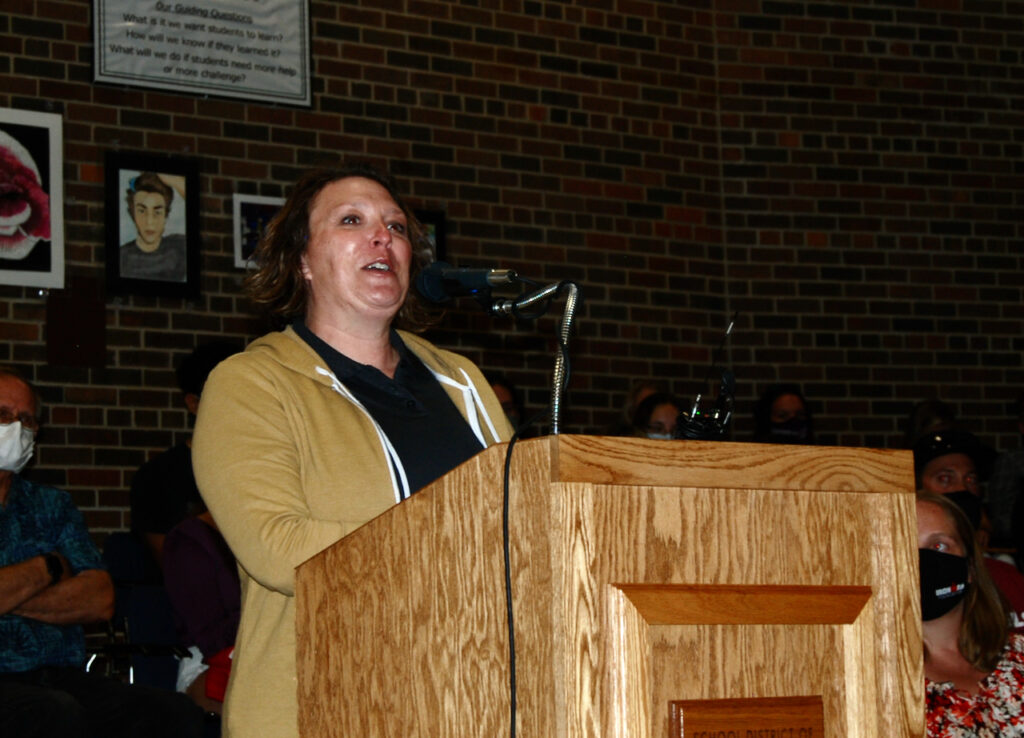
Jill Draeger, pictured above, said: “My son, who has never been really an interested learner … and last year has been really hard, and I know we’ve all been struggling as parents, this has probably been one of the worst years of parenting. But as a parent, I have had a child who is not in a great position, feeling good about how he’s been in school, and missing school, and everything around all the drama, and the angst about it. And he went to his freshman year … and I was scared to death picking him up every day, thinking he didn’t want to go back, because he did not want to be in school in eighth grade. Everything was just too much.
“But from the bottom of my heart, I can only say thank you because he really, really, really was happy to be back. Whether or not he was in a mask, it wouldn’t matter. I’m just saying, everything felt good. His days at school felt good, his time with his friends felt good, and honestly, I can only say thanks because it’s been a long road, and I know it is for all of us. And I’m not saying, your children who are scared about the other kids not wearing a mask, I see their point of view. I understand it; I’m not a monster. I may have a different opinion than you, but I’m not a monster, I’m a mom, just like all of you, you’re parents. I just really want us to stop this bickering. I want to try to figure out how we can all work together. I feel there are ways we can do better for each other, and I know there are mitigation strategies that are there. Can we just figure it out and stop this?”

Courtney Thom, pictured above, said she holds a bachelor’s of science degree in cellular biology, noting that she has spent her career doing scientific research within several different medical fields.
A parent of two young children within the district, she said, both of her children wear masks.
“We, as a family, are wearing masks. I am strongly encouraging masks throughout our schools as well as other COVID mitigation strategies, so that we can protect all students in this district,” Thom said.
Sharing some personal challenges, she said: “Last year was extremely challenging for our family. My daughter had four surgeries in the last year and almost died twice.
“I am so incredibly grateful for the care that we received at Fort Healthcare, the doctors and nurses, and I trust their judgement, I trust their guidance, I did then, and I do now. As I believe in science as well as the CDC guidelines, all of these mitigations are in place so that we can protect everyone. And right now I feel we are failing our youngest and most vulnerable society members.”
As a parent, Thom said, she was doing her best to promote safety in her household and in the community’s schools.
“My children have no problem wearing masks in school so that they are able to protect themselves because I’ve taught them that it is a kindness that we pass to ourselves as well as others,” she said.
She noted that she was aware that everyone had an opinion.
“Opinions don’t really matter thought when people are sick and dying and are not listening to the best guidance that we have available. The opinions of scientists matter,” she said.
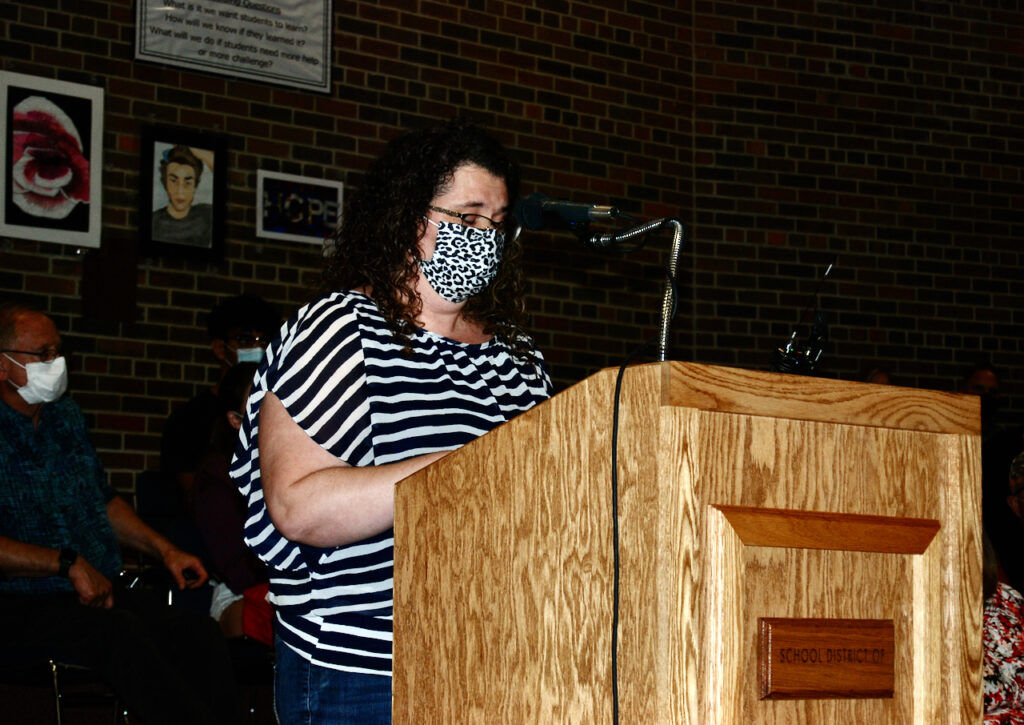
A nurse, Misty Croson, pictured above, said: “We’ve already been given all the necessary information, statistics, and research from top scientists and experts. Our intelligent, educated community physicians have already spoke out, giving their advice. I’ve nothing further to add. I trust the science.
“So here I am, begging our district to do the right thing to save lives, decrease illness, decrease missed time from work, medical bills, and help our healthcare system. To just start, an easy thing, a mask mandate. It’s easy to wear a mask. It isn’t hard, it isn’t expensive. It’s annoying, but it’s easy. And the research proves that it works.
“We did a decent job last year putting safety practices into our schools. So it’s flabbergasting to me, with our rise in numbers, that our choice is to do nothing.
“Mask up!”
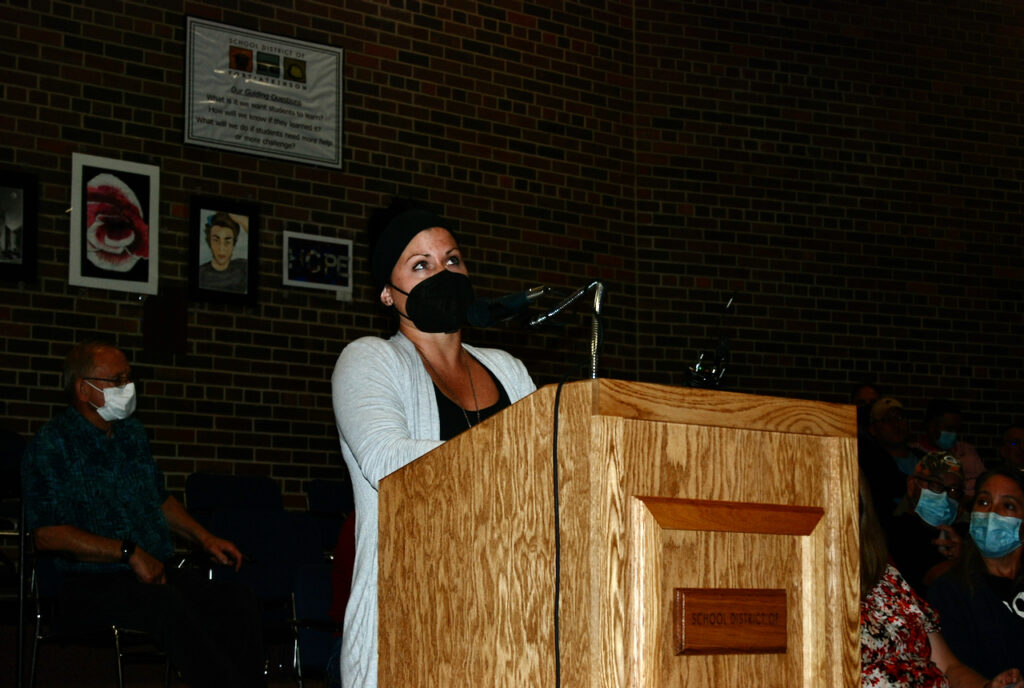
Kat Bastien, pictured above, described herself as a single parent of two children, one of which attends the middle school and another who attends Barrie Elementary School.
Bastien said that while a lot of people had come to the meeting with facts, the ones she thought most relevant were recent facts.
“We need to hear what’s going on right now, not what happened over the summer when COVID numbers were down, but right now,” she said.
As a single parent, she said, it was difficult to fulfill all of her children’s needs last year.
“My kids stayed at home with me all of last year and I work from home, so I was blessed. And with that, I had to take care of the supplemental education, I want to thank the teachers for the awesome job that they did, because that is not easy to go virtual.
“I also had to take care of my children’s mental and physical welfare as well. It is no easy task, especially being a single parent, but I did it, because I wanted to make sure my children were safe. When the kids went back to school, they were mandated to wear masks. There was all of this protocol about cleaning and doing what was best to protect the teachers, administrators, and the children. Where is that now? Our numbers are going up. I want to see action now, and I’m sorry, I’m not going to use the recent passing of a child, that’s not what I’m here for, but that signals to me that the wrong decision was made last month,” she said.
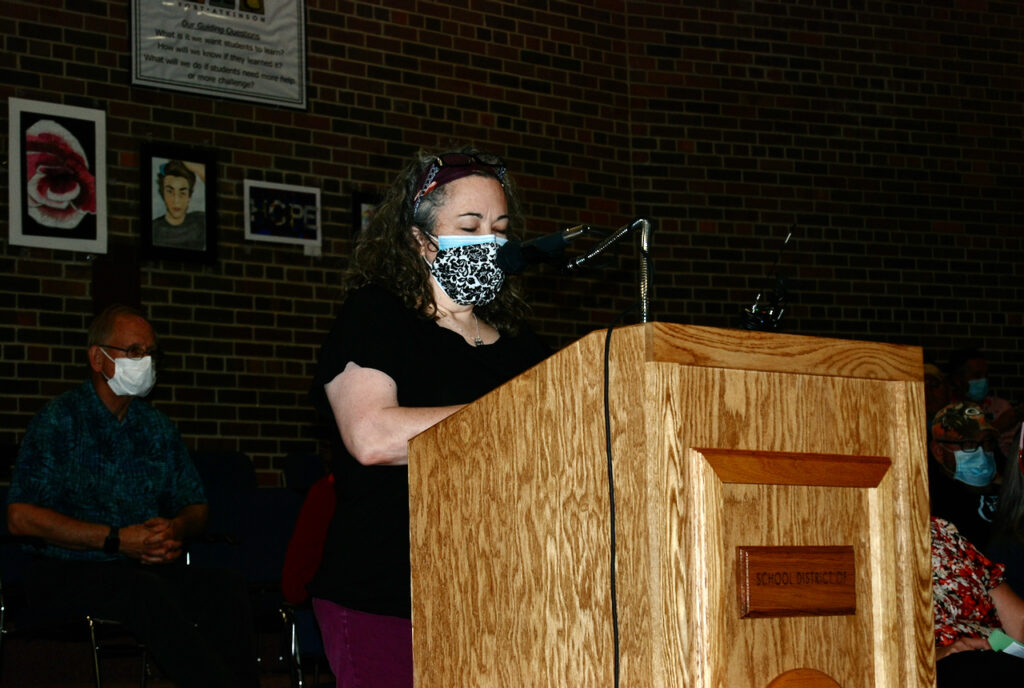
Colleen Peterson, pictured above, said her husband is a teacher in the Fort Atkinson High School. The family includes three children, the youngest of which is a high school senior, she said.
“The only way to achieve the district’s goals of providing a quality education and to stay in-person, is that we need to use science-based mitigation strategies including having a mask mandate in place across the district. Masks are not perfect, but they are a tool in the tool belt of mitigation strategies,” Peterson said.
She listed several of what she called “myths” about masks, including: masks do nothing to stop the spread of COVID-19, which, she said, was false. Masks decrease the risk of spreading the disease by decreasing the large respiratory droplets spread by mouth. Aerosol droplets that can get through a mask, she said, do not have a high viral load. High viral loads are in the droplets spread by mouth, Peterson said.
Wearing a cloth mask will make people sick because of carbon dioxide poisoning, that too, according to Peterson, was false. She said the carbon dioxide molecules are very small and can pass through the material of the mask.
Masks will make one sick because of mold or dirt. Peterson called that assertion false. If a mask is dirty, it can be washed, she said.
No one likes wearing masks, Peterson said, but, she added, kids are glad to be back in school.
Relative to freedoms, Peterson said, “your freedom ends where it infringes upon the rights of others. You can drive a car, but you can’t drive it drunk. You can go to a movie, but you can’t yell fire. In a recent court case, a judge said we do not have a constitutional right to infect others, she continued.
Said Peterson: “We are a community of people with different ideas and views, which I can respect, but we must not ignore scientific data or medical professionals. We are in this together, we must work together, for the sake of our children and their health.”
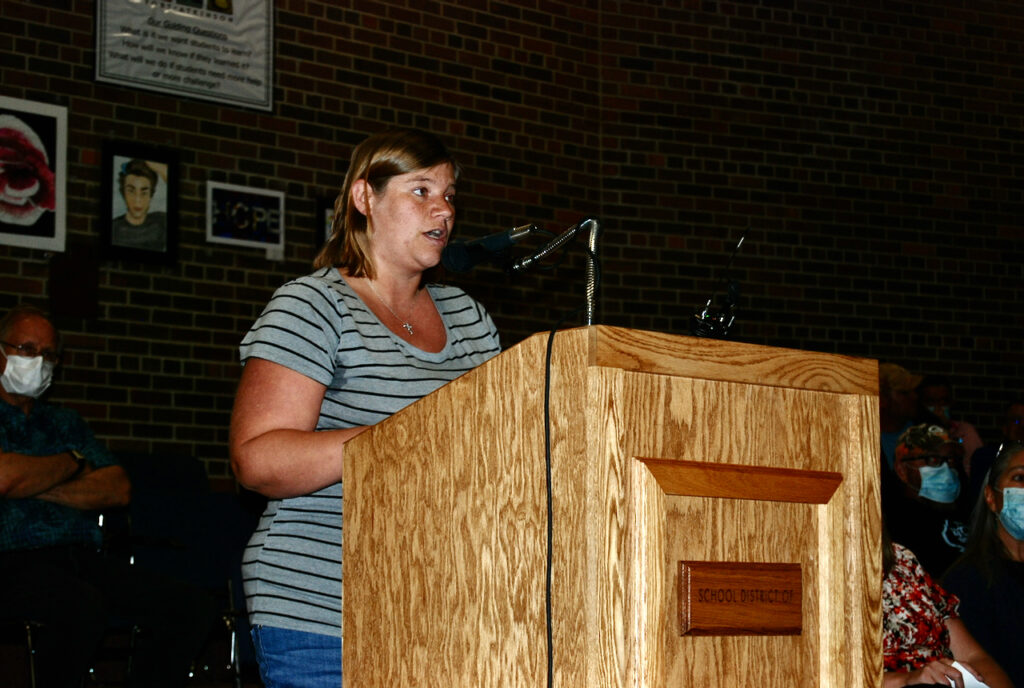
“It’s funny that we started here at this meeting saying the Pledge of Allegiance, where it talks about our liberties, when that’s the very thing that we’re here tonight fighting against because people want to take those away from us,” Christina Patton, pictured above, said.
“COVID is not the biggest threat for our children. Delaying their developmental education and their metal health is,” she said.
According to Patton, in the ancient world, face coverings were used as a mechanism to make people submissive. Face coverings broke the will of people, Patton said, adding that later, face coverings were used as a symbol of women submitting to men.
“Modern psychology explains that without a face, we don’t exist as an independent being,” she said.
She asked: “How do younger children learn socially when they are hidden behind a face cloth? Or learning emotions, facial expressions, communication, speech and the basic foundation of reading when they are hidden behind these coverings, unable to see their teachers enunciate the words?”
“Children thrive on emotional and social interaction. That’s how they learn, that’s how they grow, that’s how they live. But when children are being conditioned to live in fear that the air they breathe is toxic, that anyone around them could kill them, or better yet, that they could get sick and bring that back to their parents and kill their grandparents, what kind of life are we trying to teach our kids?”
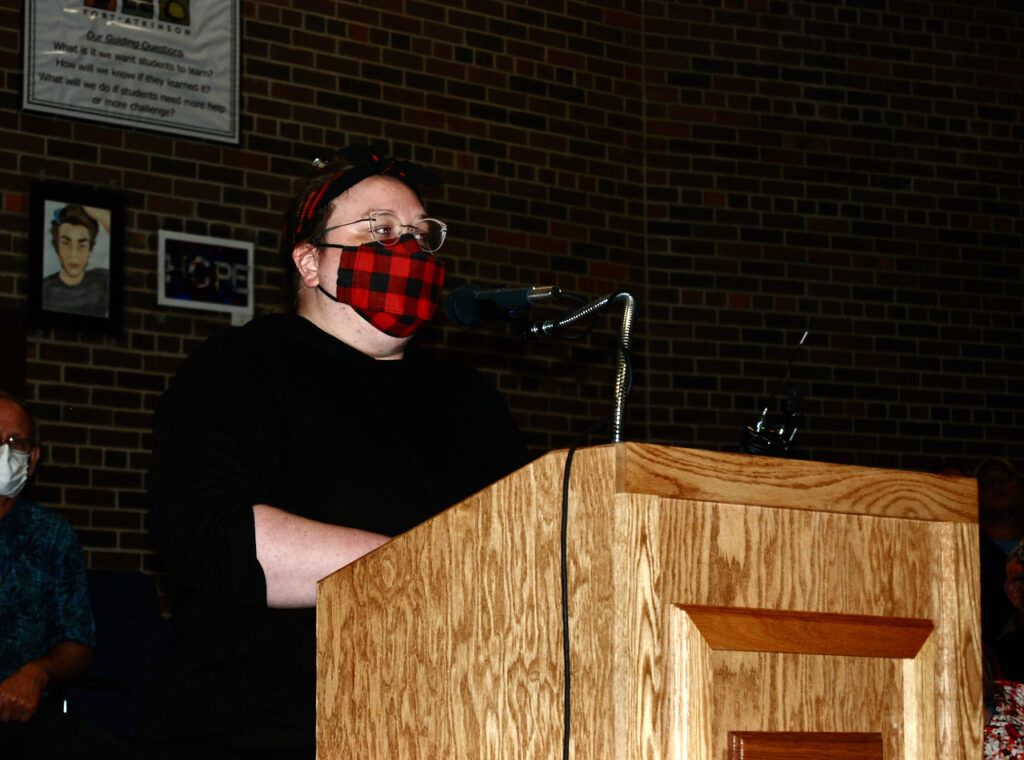
Joanna Stradusky, pictured above, said she grew up in Fort Atkinson and has lived in the community for most of her adult life.
She is the mother of two 6-year-old boys, she said, both of whom have been pulled out of Barrie Elementary School after the board opted last month to make masks optional.
“That was a really hard decision for me because of how much I believe in public education and how much I believe in this school district in particular,” Stradusky said, adding: “ I am so lucky in that I have help and I have someone who is able to watch my kids all day and help them with homeschooling. I didn’t have to quit my job. My husband didn’t have to quit his job. My kids are able to be safe.”
Still, Stradusky said, the family continues to wear masks and spends most of its time at home, because, she said: “as we all know, COVID is so transmissible and it’s insidious; you might not know that you have it. You could be passing it on and not even know that you’re sick, because you don’t get sick. We stay home, we wear masks. It’s a choice that I made for everyone else.”
Sharing a personal experience, Stradusky said when one of her sons was 4, he contracted a virus, which soon overcame his body in the form of a rash. Soon the virus hindered his ability to walk, she said, and left him fighting an inflammatory condition.
“My 4-year-old had arthritis because of this,” Stradusky said.
“We wear masks so that doesn’t happen to anyone else’s baby,” she said.
“Children in our elementary schools can not be vaccinated,” Stradusky noted, adding, “We have to do everything we can to protect them.”

A participant at Thursday’s School District of Fort Atkinson Board of Eduction meeting holds up signs in support of requiring masks in schools. Board members voted in favor of returning a mask requirement to school buildings. The decision came during a three-hour meeting which was attended by some 170 members of the public.
Kim McDarison photos.
City announces water rate increase; water main replacements to begin
(Originally published Sept. 20, 2021.)
The City of Fort Atkinson has announced that it will be replacing outdated water mains, with funds for the project coming in part from a recently approved water rate increase.
The rate was recently approved by the Public Service Commission of Wisconsin, according to the release.
“The average residential bill will increase about $15 per month, providing over $800,000 per year for main replacement,” the release stated.
Information provided on the city’s website indicates that residents will see an increase of $30 per bi-monthly billing cycle.
Residents will see the increase on their bill beginning Oct. 1.
The city has not pursued a rate increase since 2013, information shared on the city’s website states.
As noted within the release: The municipality will be the third utility in the state approved by the commission to allow customers to directly pay for water main replacement and avoid the expense of borrowing. In Fort Atkinson, the Utility will replace just over 3,800 feet of main per year.
According to the city’s website, The Fort Atkinson Water Utility formed in 1901 and includes over 72 miles of “main,” an underground network of water supply. Subterranean pipes move water supply to meet daily demands of residents and businesses and to water storage components within the system to meet peak demand and are a crucial component of fire suppression. It costs the city approximately $90,000 per year in the repair of breaks within the system.
Within its release, the city noted: Although some of the city’s water main was laid as early as 1908, these turn-of-the-century pipes are not an immediate concern – they are expected to last another 50 years. Most main breaks occur in pipes installed between 1944 and 1972. These pipes had a flawed manufacturing process that reduced their useful life. Known as spun cast water mains, they comprise 25% (18 miles) of the pipe network across Fort Atkinson. Many of these have already failed throughout the city.
“Replacement of spun cast main has been sporadic due to inconsistent funding, with projects occurring in five of the last 12 years, with an average of just over 900 feet per year replaced. A dedicated effort to replace this main is needed and a proactive approach to older, yet serviceable main will follow,” Director of Public Works Andy Selle was reported within the release to have said during testimony given to the Public Service Commission of Wisconsin.
According to the city’s website, Selle said: “The Public Service Commission has always required utilities to borrow for major construction projects because (it) didn’t feel like the existing customers should be paying for something that will last for 50 to 100 years. (The) rationale was at least you spread the cost of this out to maybe more than one generation of customers.”
That method, Selle explained on the city’s website, forces the utility to borrow for almost every replacement and there is a limit to how much money the utility can borrow.
He continued: “When you borrow over a 10-year period you are paying about 20-30% more on that project in interest. You are compounding a problem with respect to cost.”
According to information shared by Selle on the city’s website, other municipalities within the state have come before the Public Service Commission, looking for alternatives to fund water main replacement projects. An innovative idea was to avoid costs associated with borrowing money by seeking rate increases.
He listed Marshfield and Janesville as among municipalities that have engaged with the concept.
“This money is only going to main replacement. It can’t be used for anything else,” Selle emphasized in a statement made on the city’s website. “We have money for roads, but we don’t have a dedicated funding source for water main, but yet our water main is getting older. Every year that network of distribution pipes is aging and if we don’t replace it we’re going to run into a situation where it’s all going to break,” he noted.
The City will pair up road construction projects with water main and sanitary sewer replacements to avoid tearing up the road more than necessary, Selle explained.
The city is in the process of making plans for replacing 5,900 feet (1.1 miles) of spun cast water main on portions of Peterson, Gail, Adrian, Grove, Spry, Grant, and Maple streets in 2022. Federal grant funds will be combined with funds from the rate increase to accomplish a larger-than-average start to the main replacement program, according to the release.
Those interested in learning more can visit the city’s website: http://www.fortatkinsonwi.net/departments/water_utility/index.php.
A story about the city’s water system and how is works is here: https://fortatkinsononline.com/elementor-28799/.

A water hydrant, part of the city’s larger water distribution system, is located near the city’s fire department. The city’s water utility delivers water throughout the city to its customers and supplies water for use by the city’s fire department. Kim McDarison/file photo.
Milton police seek individuals involved in home invasion, car theft
(Originally published Sept. 22, 2021.)
Milton residents to be recognized as ‘Hometown Heroes’
(Originally published Sept. 22, 2021.)
The Wisconsin State Assembly will recognize Milton residents Wes Sisson, Dick Fry and Jarrett Goodman as “Hometown Heroes” at the upcoming Assembly session on Sept. 28, according to information released today by the office of Assembly Majority Leader Jim Steineke (R-Kaukauna).
According to the release, Sisson, Fry, and Goodman were nominated by their state representative, Don Vruwink (D-Milton), for their work on the Milton Area Veterans Memorial. The site includes three large monuments that bear the names of Milton-area soldiers who died in combat.
“I commend Wes, Dick and Jarrett for all their hard work to ensure these brave soldiers are recognized for their service and sacrifice,” Steineke, who selected them for the award, said within the release. “We are all a product of history, so it is great to see efforts to protect their legacy,” he said.
Sisson is an avid historian. He taught history in Milton for 10 years before moving to Germany. There, he and his wife taught on a military base. In 2009 they returned to the Milton area, and Sisson began researching Milton soldiers who died in line of duty. Using historical records, federal registries and the internet, he was able to add 73 names to the granite pillars at the memorial.
Fry and Goodman are both Vietnam veterans who became involved in the design and fundraising of the memorial when it was approved in 2013. They spear-headed early efforts to raise money for the site, selling commemorative bricks at local businesses. Fry and Goodman together raised $35,000 for the initial costs of the project in 2013, and raised an additional $70,000 in 2014. When an expansion with a pavilion and restrooms was proposed in 2019, they began to raise money again. In total, Fry and Goodman have helped raise more than $150,000 to build the additions.
Wisconsinites have a long, prominent history of community service and selflessness. In keeping with this tradition, the Wisconsin State Assembly created the Hometown Heroes program to identify and recognize individuals from around the state who are working to make their communities a better place. Award winners are invited to the State Capitol and given an opportunity to speak on the Assembly floor as a special guest, the release noted.

Wes Sisson
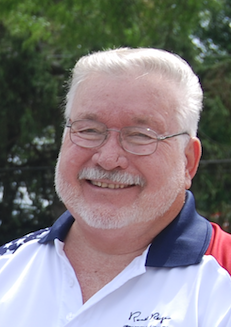
Dick Fry
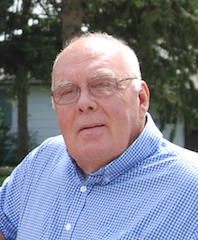
Jarrett Goodman
Fifth annual ‘Emmy’s Rustic Run’ to be held Oct. 2
(Originally published Sept. 23, 2021.)
By Kim McDarison
The fifth annual “Emmy’s Rustic Run,” a 5k trail run and day of family fun, will be held Saturday, Oct. 2, at the Fort Atkinson family farm of Russ and Angie Nathan, N580 Poeppel Road.
Maternal grandparents of Emmalynn “Emmy” Liufau, the couple has been hosting the annual event in support of finding a cure for a rare neurodegenerative disease called ataxia-telangiectasia or A-T. Emmy is one of between 400 and 500 children nationwide living with the condition, according to her mom, Ashley Liufau.
Ashley, a native of Fort Atkinson, and her husband, Dave are Fort Atkinson high school sweethearts who today live in Florida. The couple has been married for 12 years and has two children: Emmy, 8, and her sister, Kate, 6. The family returns each year to their hometown community to celebrate their family and work toward a cure for A-T.
According to the National Institute of Neurological Disorders and Stroke (NINDS) website, A-T is a rare, childhood, neurological disorder that causes degeneration in the part of the brain that controls motor movements and speech.
“NINDS-supported researchers discovered the gene responsible for A-T, known as ATM (ataxia-telangiectasia mutated) in 1995. This gene makes a protein that activates many (probably more than 700) other proteins that control cell cycle, DNA repair, and cell death. Without it, cells are unable to activate the cellular checkpoints that protect against the damage of ionizing radiation and other agents that can harm DNA,” the website states.
The disease causes a progressive loss of muscle control, immune system complications, and a high rate of cancer, which presents mainly as blood cancers such as leukemia and lymphoma, Ashley said.
Children with A-T appear normal at birth, with early signs of the disease usually appearing during the second year of life. A degenerative disease, children with A-T typically find themselves dependent on wheelchairs by the age of 10, and find it difficult to read, speak and eat, Ashley added.
“Emmy struggles with basic tasks like walking, getting dressed, using silverware and writing utensils, getting up and down stairs, and even sitting upright for long periods of time. Because A-T attacks the entire body, everything requiring the use of muscle is affected. From eye tracking to swallowing, standing up to sitting still; Emmy has to consciously put forth effort to control her body in ways that the average person rarely thinks twice about,” Ashley continued.
Through it all, Ashley said, Emmy is “a kind and gentle spirit.” Even as she faces challenges, Emmy remains a “source of joy to everyone she meets.
“Her smile and laugh light up a room and she has helped us learn to appreciate the quieter, slower moments in life.”
Like any third-grader, Emmy said high on her list of things she enjoys are watching “My Little Pony,” drawing, swimming, playing with her toys and visiting Disney World.
At school, she said, reading is her favorite subject and she’s not a fan of subtraction.
When people notice she is different, she said, “I tell them I am a little wobbly and I have A-T.”
When visiting Fort Atkinson and participating in Emmy’s Rustic Run, she said, she looks forward to playing in the bounce houses and painting pumpkins.
Ashley said the family was made aware of Emmy’s condition even before she was symptomatic.
“Her newborn screening came back with a red flag on her white blood cell count. The doctors couldn’t figure out what was causing her immunodeficiency, but we saw a geneticist when she was 6 months old and they ran a whole genome sequencing on her and it come back with her diagnosis of A-T.
“We began really noticing her differences when she was about 3 or 4 years old,” Ashley recalled, noting that kids with A-T usually begin walking at a normal age, but often never leave the “toddler” stage. They sway and show signs of issues with coordination, she said.
In Emmy’s case, Ashley said, she was able to walk on her own most of her life, but the family has seen a large decline in her abilities in the last 18 months.
In addition to issues with muscle control, 70% of all A-T children are immunodeficient. Emmy receives a monthly IV infusion to help give her immune system a boost, Ashley said.
Emmy is aware her body is changing, Ashley noted, describing her daughter as “a trooper.”
“She has always done her best in everything and rarely complains about needing assistance or not being able to do things. This past year has been the hardest, though, as she is beginning to realize how different her body truly is compared to others her age. She relies heavily on the assistance of those around her to eat, walk, get dressed, (and) complete school assignments,” Ashley said.
“Since Emmy’s condition is progressive,” Ashley continued, “we take things one day at a time. Her progression has been fairly slow over the past 8 years and it hasn’t been until the last year or so that we’ve really had to make some changes in our lives. It takes Emmy a little longer to do things and we generally need to help her. Now that Kate is getting a little older, she is able to assist Emmy in some ways, like running to grab a toy or book or helping her get a snack from the pantry.”
Looking ahead towards a cure, Ashley said, the “antisense oligonucleotide” or ASO treatment — a gene therapy approach, being developed to produce the functional ATM protein that is missing within the cells of children with A-T — has completed a first-phase of trials with no side affects or complications.
A single child is currently receiving the developing treatment, Ashley said.
The child will next enter into a second phase, called the “loading phase,” Ashley stated, at which time drug doses will be made high enough to correct the gene mutation. The hope is that the child’s body will begin to produce the ATM protein it currently lacks.
According to Ashley, “the drug is tailor-made for each patient and is therefore very expensive to produce. While it will not be able to reverse the effects Emmy is already experiencing, it could stop the progression of the disease in its tracks.”
While Emmy is not aware of the developing treatment, she is aware of the fundraising component of Emmy’s Rustic Run. She understands that money earned through the event will fund research to help arrest the disease, her mother said.
As a family, Ashley said: “We have faith in God’s plan for her and our family and have decided that we will live each day to its fullest. We also realize that the only way for a cure or life-improving treatments to be found is through fundraising efforts like ours. It is such a small percentage of the world’s population that is affected by A-T. The research that is happening is almost entirely thanks to the grassroots efforts of families like ours — these small-town fundraisers are making a big difference.”
Describing the importance of Emmy’s Rustic Run, Ashley said: “Our event is incredibly important to those who are affected by A-T. Because of its rarity, there is little to no federal funding for research on ataxia-telangiectasia and so it’s up to us and other A-T families to do what we can to assist the A-T Children’s Project in funding these projects. The money raised also supports the A-T Clinical Center at Johns Hopkins in Baltimore.
“We also love hosting our event because it’s something our kids look forward to every year. ‘Emmy’s Run,’ as my girls call it, is a break from the normal routine and it’s a fun-filled day where Emmy gets to ‘be famous’ as she likes to say. We have been touched by the outpouring of love from the community — both family and friends, and complete strangers that have stepped up to help us spread the word, find donations and raffle prizes, and get involved.”
Said Ashley: “It’s nearly impossible to describe how we feel about the Fort Atkinson community.” Although Emmy’s Rustic Run is in its fifth year, Ashley noted, “this is our seventh year hosting a fundraiser, and each and every year, we continue to be blown away by the support we receive. It is incredible to see what one small community can do when it rallies together. Time after time we are caught off-guard when we receive phone calls and emails from people who don’t know us, but want to help. They see our posts on Facebook or hear about what we’re doing from a friend and they want to get involved however they can. It’s touching and often overwhelming for our family to feel that sort of support and we are humbled by it over and over again.”
Ashley said the event features “delicious food spreads” and free kids activities, like bounce houses and a scavenger hunt in the woods. There is also a silent auction and “dozens of door prize giveaways.”
“We strive every year to bring something new and exciting for all of our participants. We love hosting this event and hope that it will continue to be something the Fort Atkinson community can look forward to each fall,” she said.
As the family works toward a cure, Ashley said, “we just want people to understand that kids like Emmy are fighting a really big battle in life. A-T is a devastating and relentless disease that, at the moment, does not have a cure, but we’re so close we can almost taste it. The hardest part is finding the funds necessary to continue research and to support these trials so that we can find answers and figure out what will give Emmy and these other kids a better shot at a long and healthy future.
“The best part about our event is that our participants get a lot out of it, too. The trail is handcrafted by my dad and it is truly a labor of love. The 5k run and one-mile walking courses have beautiful scenery changes and lots of surprises along the way. The food is always hot and delicious, the raffle baskets and silent auction items are fantastic, and if your kids don’t leave completely content and exhausted, you just didn’t stay long enough.”
This year’s plans for Emmy’s Rustic Run include:
• Event registration/check-in, 8 to 8:45 a.m.
• Pancake breakfast, 9 to 11 a.m.
• 5k trail run kickoff, 9 a.m.
• 5k awards, 9:50 a.m.
• Kids races, 10 a.m.
• Approximately 1-mile walk in the woods and scavenger hunt, 10:30 a.m.
• Raffle and silent auction winners announced at noon.
• Face painting, bounce houses, kids crafts, concessions, 9 a.m. to 1 p.m.
Those interested in learning more about the event can visit Facebook @EmmysRusticRun. Those looking to register for the run or walk can visit: www.ATCP.org/RusticRun. For further information, contact the organizers: EmmysRusticRun@gmail.com.

Assisted by her grandfather, Russ Nathan — who is a Fort Atkinson resident and host, along with his wife, Angie, of Emmy’s Rustic Run — Emmy participates in the kids races at last year’s event.

Emmy Liufau makes a friend. Now in its fifth year, Emmy’s Rustic Run will be held Oct. 2. The event is a fundraiser to help raise money for research for a rare neurodegenerative disease called ataxia-telangiectasia or A-T. Emmy is one of between 400 and 500 children nationwide living with the condition.

Guests of all variety attend Emmy’s Rustic Run.

The Liufau family: Kate, from left, Ashley, Emmy and Dave.
Contributed photos.
The classics come to Jefferson County Fair Park
(Originally published Sept. 26, 2021.)
Madison Classics’ 44th annual Fall Jefferson Car Show and Swap Meet took place under sunny skies this past weekend.
From Friday through Sunday, Jefferson County Fair Park was filled with vendors selling and spectators looking for vehicles, hard-to-find parts and memorabilia or both.
Featured vehicles exhibited in the Activity Center included a 1956 Chevrolet 3100 pickup truck owned by T.J. Schliewe of Ixonia, a 1948 Ford F-4 truck owned by Greg and Kristie Melcher of Watertown and a 1970 Chevrolet C10 truck owned by Mark and Billie Blank of Menasha.
“It’s a tradition,” show founder Gary Esse stated in the show program. “The City of Jefferson and surrounding communities have shown great support for our events and we have made many lifelong relationships here. We greatly appreciate that and thank everyone for 44 years and many more to come.”
The 45th annual Spring Jefferson Car Show and Swap Meet will take place at the fairgrounds April 22-24, 2022. It will feature 1960s muscle cars.
The Fall Jefferson Car Show and Swap Meet is scheduled for Sept. 23-25, 2022.
For spectator or vendor information, call (608) 244-8416 or visit www.madisonclassics.com.

Event-goers admire a 1948 Ford F-4 truck owned by Greg and Kristie Melcher of Watertown. The vehicle was among those featured at the the Fall Jefferson Car Show and Swap Meet Saturday. The event was held in the fairgrounds’ Activity Center.

Attendees appreciate a 1964 Volvo which was on display at the 44th annual Fall Jefferson Car Show and Swap Meet. The event drew thousands of spectators this past weekend.

A brightly colored late-1960s or early-1970s Chevrolet muscle car stands on display and is also available for purchase. The Car Corral at the Fall Jefferson Car Show and Swap Meet offered variety of vehicles for sale.

A 2004 Chrysler Crossfire coupe attracts the attention of an event-goer. The car, owned by a Fort Atkinson couple, was built by Mercedes Benz; its custom paint job attracted many admirers.


Two photos above: Event-goers find more than cars at the Madison Classics’ Fall Car Show and Swap Meet. Held this past weekend, the show offered something for everyone, including used lawn tractors, and vintage bicycles and motorcycles. The items were available in the swap meet area.

Hood up and ready for viewing, this restored Chevrolet BelAir was among the countless vehicles on hand at the Jefferson Fall Car Show and Swap Meet.

An Oldsmobile Ninety Eight looks sharp under the sunshine Saturday at Jefferson County Fair Park Saturday.

Cars of all variety bedazzle car buffs at Madison Classics’ 44th annual Jefferson Fall Car Show and Swap Meet Saturday.
Chris Spangler photos.
An issue of sustainability: Fort firefighters talk about call volume, staffing
(Originally published Sept. 27, 2021.)
By Kim McDarison
Capt. Robbie Allard is a second-generation firefighter. He loves doing the job, he said, and, as a native of Fort Atkinson, he wants to serve the community, but, he admits, with the number of calls the Fort Atkinson Fire Department receives annually, it’s hard, as a paid-on-call service provider, to keep up with the demands of the job, work another full-time job, and find time for his family.
Allard was echoing sentiments shared by Fort Atkinson Fire Chief Daryl Rausch when, on Sept 7, he presented the Fort Atkinson City Council with a proposal, outlining a new structure for the department.
Rausch proposed a structure that would bring EMS services in-house, placing them under the management of the fire department. Additionally, it included the hiring of 12 new full-time firefighters, all of whom would also have training in EMS. Using this system, the chief said during the council meeting, the department could lessen the load on its paid-on-call staff by some 200 calls. Annually, the department answers some 500.
Earlier this month, Fort Atkinson Online was invited to the firehouse to meet department staff and learn about the current system and how, if Rausch’s proposal is adopted, it might change.
Allard, Rausch and full-time Division Chief Mike Lawrence assembled in the department’s on-site meeting and training room to talk about the daily job of keeping the community safe from fire and other types of emergencies for which the department receives calls. All three employment levels within the Fort Atkinson Fire Department — paid-on-call volunteer, full-time division chief, and chief — were represented in the discussion.
The system today
Rausch said that while the fire department is authorized to have 41 paid-on-call employees, it currently has 39. There are four full-time, also called “career” positions, at the department, including those of chief and three division chiefs. The chief and the divisions chiefs handle much of the administrative work required to run the department. Paid-on-call staff, Rausch said, are responsible for everything else.
Using the current system, Rausch said, there is one full-time person at the fire station to receive dispatches from 911. Individuals filling those roles work in 24-hour shifts.
Rausch said calls coming in for EMS go to Ryan Brothers Ambulance Service, a Madison-based firm which has serviced the city of Fort Atkinson for 20 years.
During the Sept. 7 Fort Atkinson City Council meeting, the council opted to terminate the provider’s contract. As part of the termination clause within the contract, the city and the provider are obligated to give one another notice of their desire the end the contract by between Sept. 1 and Nov. 30 of the year prior to the one in which services would end. The action taken by council on Sept. 7 fulfilled that obligation. As stipulated within the terms of the contract, according to city staff, Ryan Brothers will continue to serve the city until Dec. 31, 2022.
Working alongside Ryan Brothers, under the current system, is the Fort Atkinson Fire Department Rescue Squad, which, Rausch said, is made up of 25 paid-on-call firefighters. The squad is led by Lawerence.
Strain on manpower
“Part of the strain on manpower is not just about the volume of calls, but the severity of calls has increased. Each call takes about two hours, and they (volunteers) now have training, about three trainings a month, and each one takes about two hours,” Lawrence said, adding that it takes about a year to become a certified EMT.
Paid-on-call firefighters are also responsible for caring for the station and its equipment. For members of the department’s Apparatus Division, the group responsible for maintaining the department’s equipment, each member might find themselves putting in as many as 1,000 to 1,100 hours per year, he said.
“We have in excess of 1,000 pieces of small equipment, and the department has 16 vehicles. There is also maintenance associated with the building. The new firehouse is 23,000 square feet,” Rausch said. He described the job as basic housekeeping, which, he said, “includes everything under the roof.”
“Members of the Apparatus Division do everything, from cleaning bathrooms to making sure the HVAC systems work,” Lawrence said.
In terms of call volume this year, Rausch said, “It’s been a difficult year.”
As a captain and an EMT, Allard said, he has enough training to answer nearly all of the department’s calls. But he is also a parent — he and his wife have three children, all between the ages of 7 and 12, and he works full-time for the City of Fort Atkinson as a crew leader in the Parks and Recreation Department.
Both of his jobs offer an on-call component and both also come with some weekend work, he said.
Paid-on-call firefighters make between $12.50 and $14 an hour, Lawrence said.
“Most of us aren’t here for the money, that’s for sure,” Allard said.
Speaking for himself, he said, he enjoys serving the community.
“This is our community. When we get a call, and we hear the address, most of us, we already know the house and who the neighbors are,” he added.
Allard has followed his father, Bob Allard, a 40-year department veteran, into the fire department.
“My father is a firefighter so I grew up around it, seeing it first hand,” Allard said, adding that as a kid, he liked coming to the firehouse with his father, where he developed a sense of camaraderie and community.
“It’s hard work; it’s physically demanding and mentally demanding at times. My father taught me if I make a commitment, to follow through,” he said.
Allard said the biggest change he’s seen in the department during his 20 years of service is an increase in call volume.
“We are down here a lot more. The calls are getting longer, and there’s paperwork,” he said.
For officers like Allard, Lawrence said, their time commitment is increased by the required department paperwork.
Officers also share in some of the administrative duties, Rausch said.
“With our current model, working with volunteers at our call volume, our model is not sustainable,” Rausch added.
The paging system
“At all times,” Rausch said, “there is one person here (at the firehouse) to receive calls from the dispatcher. Once the call comes in, a page goes out to the whole (department).
“The volunteers come from wherever they are, home, work, and once we get enough for an initial crew, which is three people, they go out.”
On average, Lawrence said, assembling a crew takes about seven minutes.
“So we are out of the station about seven minutes after the 911 call comes in,” he said.
“With an ambulance crew, it can leave with two people rather than three. It takes the same seven minutes time to get here,” he added.
When there is a 911 dispatch for an ambulance, using the current system, Lawrence said, the page goes directly to Ryan Brothers. The company keeps two ambulances and a crew in Fort Atkinson. The crews operate from a house with a two-car garage on the south end of town, Lawrence said.
Describing the system used by Ryan Brothers, Rausch said that of the two ambulances kept in Fort Atkinson, one is prioritized to respond to 911 calls. The other is used primarily for inter-facility transport work, meaning it could be anywhere in the broader Ryan Brothers service area, transporting patients between hospitals. Two crews, working in 24-hour shifts, also operate from the house in Fort Atkinson.
“So we say we have 1.3 ambulances available per day,” Rausch said.
If Ryan Brothers receives a call requiring the manpower of more than a two-man crew, they call the Fort Atkinson Fire Department for help, Rausch said. A call for help might involve lifting a patient, he said.
“If it’s a car accident we automatically get paged with them,” Lawrence said, adding: “Sometimes they need more than two people on the ambulance, depending on the situation they are responding to, so they call us.”
Among the paid-on-call and full-time staff at the firehouse, there are three paramedics, 17 EMTs and 5 emergency medical responders (EMRs), he said.
The paging system is designed to call paid-on-call firefighters with the required skills to the calls for which they are needed, Rausch said.
For fires, he said, a page might go out to the entire department, and for rescue calls, a page might go out to the rescue squad personnel.
Currently, he said, about half of the calls the department gets are EMS- or rescue-related.
He pointed to an aging population and a large number of managed care facilities in the community as contributing factors to the volume of EMS-related calls.
Statistics showing aging populations are not unique to Fort Atkinson, Lawrence said.
Nor are the challenges of servicing them, Rausch said, adding: “There are safety referendum questions happening all around us.”
As a firefighter and EMT, Allard said, even with the added call volume and stress, he has been able to respond to between 70% and 80% of the pages.
“It helps that I work for the city,” he said. Allard is one of about six paid-on-call volunteers that are also city employees, Rausch said.
Still, Allard said: “When you start getting 500 calls a year, that’s a big time commitment. When the day ends, I still have to manage a family — most of us are married on the department, most of us have kids — so we have sports and daycare. My wife said one day: ‘I’m on the fire department. I just don’t respond to calls.’ When the page comes out, whatever we are doing immediately stops. She has to get the kids, or take the kids to where they were going. It puts a lot of stress on relationships.
“Sometimes there’s a call and I’m not always able to go. If you’re at a baseball game and you are the only parent, then you can’t go, and it’s also stressful to not go. We call in and ask if there’s enough people.”
Back at the station, Rausch said, those waiting to see who will respond are assisted by an app called “Iamresonding.” The app is installed on each firefighter’s phone.
Said Rausch: “When the page goes out, the firefighters can respond on the app, which comes through to an electronic board at the station, and the duty commander knows how many are coming. So we watch the screen here and see who has said they are coming.”
The call system allows the duty commander to send multiple pages as more resources are needed.
“If after a third call, we don’t have enough, then we go to mutual aid,” Lawrence said.
“I often say that we operate by the goodwill of the membership and the community, and the goodwill of the employers who have been willing to let their employees go,” Rausch said.
“With just four (full-time) people, we are never going to be a career department. We are always going to be a volunteer department. I can’t order the paid-on-call people to show up,” he said.
Established priorities
Upon his arrival to the department as chief five years ago, Rausch said, he held a “leaderless meeting,” asking department staff to help develop a list of priorities.
“We asked: ‘What things should we work on?’” he said, adding that among identified challenges, even back then, was call volume. At that time, calls were averaging around 300 a year, he said.
Call volume then was leading to stress, especially for employers of paid-on-call volunteers who were faced with making decisions about whether they could afford with such frequency to let their employees answer pages, Rausch added.
“We prioritized a dozen things to work on and over the last five years, we’ve been working on it,” Rausch said, noting that the list included: improving the building, being more organized with administrative obligations, which, he said is why the department went to the division chief format, and improved communications. Much of the activity was developed to find solutions to alleviate some of the stress on the paid-on-call members without shifting the work load onto just four full-time people, he said.
“The department has been working on this problem with increased call volume and not enough people to shoulder the workload for a long time,” Rausch added.
Similar proposals to the one he presented on Sept. 7 have been brought to city staff by his predecessors, he said.
Looking back at EMS history, Lawrence said, in the early 2000s, the city’s contracted ambulance service provider changed ownership, opening an opportunity for the city to consider an in-house option. A decision was instead made to contract with Ryan Brothers.
In 2013, Rausch said, an in-house proposal was advanced by then-Chief Mike Reel.
The proposals have been advanced as a solution for alleviating issues of call volume and manpower, Rausch said. The department works well with the Ryan Brothers’ crews, he stated.
Further, he said, the proposals work to make better use of an ambulance that is already owned by the department.
Currently, Rausch said, the asset is used for third-tier response, meaning that if Ryan Brothers ambulances are already out on calls, the fire department can respond to the call.
The proposal presented to council earlier this month, he said, calls for the addition of a second ambulance that would be purchased by the city, giving the city the ability to man two ambulances that would be fully responsive to 911 calls.
Currently, Rausch said, Ryan Brothers is responding to about 1,200 calls per year, but the number includes calls coming from rural fire districts which have contracted through the department for services as well as inter-facility calls answered by Ryan Brothers. He cautioned that the number is likely not a true representation of EMS calls coming specifically from Fort Atkinson residents.
Looking ahead
“We have to do something to address the load we are putting on our volunteers with the response to calls we have,” Rausch said.
Referencing his Sept. 7 proposal, Rausch said: “This plan captures in excess of a half million dollars in transportation revenue to help offset the cost we will have to have to staff these (12 full-time) positions.”
Filling those position would allow the department to have a daily duty crew, which, he said, would essentially staff an engine company that could answer a large number of calls without requiring additional manpower from paid-on-call volunteers. That primary duty company would include two firefighters and two EMS personnel manning each shift.
“That gives us a four-person crew initially to respond to our calls. At least half of what we do could be done with a single engine company,” Rausch said. “That’s at least 200 calls handled without volunteers,” he added.
It’s a burden the paid-on-call staff would not mind giving up, he said, adding that volunteers come when their skills are needed, and they are most needed for fires, and less needed for such tasks as carbon monoxide checks.
“They still get the calls for the exciting stuff, but not the routine calls,” he said.
The administrative and housekeeping aspects of the job could be handled by the full-time people, he added.
Funding
The Fort Atkinson Fire Department has an annual operating budget of $679,000, Rausch said, adding that the new firehouse was build with some change in EMS in mind.
Looking at funding for his proposal, Rausch said, numbers were still under development and would ultimately be released by the city manager, but funding for startup costs as outlined in his presentation would come from outside the taxpayer-funded levy.
“The startup costs could be funding through one-time funds and charitable organizations,” Rausch said, adding that when the department launched its fundraising plans in 2017 to purchase its ambulance, the community rallied to the cause. Some $125,000 was raised in two weeks, he said. Those monies paid for the new ambulance, training, and all the equipment needed to make the unit functional, he added.
Pointing to a potential safety referendum, he said: “Our portion of that levy will be the difference between what we think it will cost to operate this service above the revenues we expect returned from transports. 911 is not profitable. The facility transports are the only part that makes money. 911 revenues will never exceed the cost to provide the service.”
“With two dedicated 911 units, we will have the ability to work with hospitals to develop a viable para-medical program,” Lawrence said.
Both Rausch and Lawrence noted that even when an ambulance is called, there are instances when an individual might be medically served while staying in their own home and avoiding transportation costs. A municipal-based system is better able to develop such options because it is not profit driven, they said.
Lawrence explained that as crews work with repeat patients in need of services, they can develop plans that are proactive, working with patients to avoid circumstances that would precipitate the call in the first place.
“We can have someone here (at the department) making wellness calls as part of para-medicine and take steps to prevent that call rather than waiting for the call to come. We’ve had discussions with the hospital about this. With more EMS staff, there are more opportunities for wellness checks,” Lawrence said.
“It’s unfortunate that a longtime provider has to be taking out of the picture, but it’s revenue we need to use in house,” Rausch said.
Looking at broader EMS trends, he said, among EMS service providers responding to over 1,000 calls a year, few are private. “They will be municipal-based,” he said.
An earlier story about the fire department’s proposal as presented to city council on Sept. 7 and a proposed safety referendum is here: https://fortatkinsononline.com/ryan-brothers-contract-terminated-council-rolls-out-plan-for-public-safety-referendum/.

Paid-on-call volunteer EMT and firefighter Capt. Robbie Allard, from left, Fort Atkinson Fire Chief Daryl Rausch and Division Chief Mike Lawrence gather at the Fort Atkinson Fire Station to discuss the work they do and their concerns regarding call volume and service sustainability.
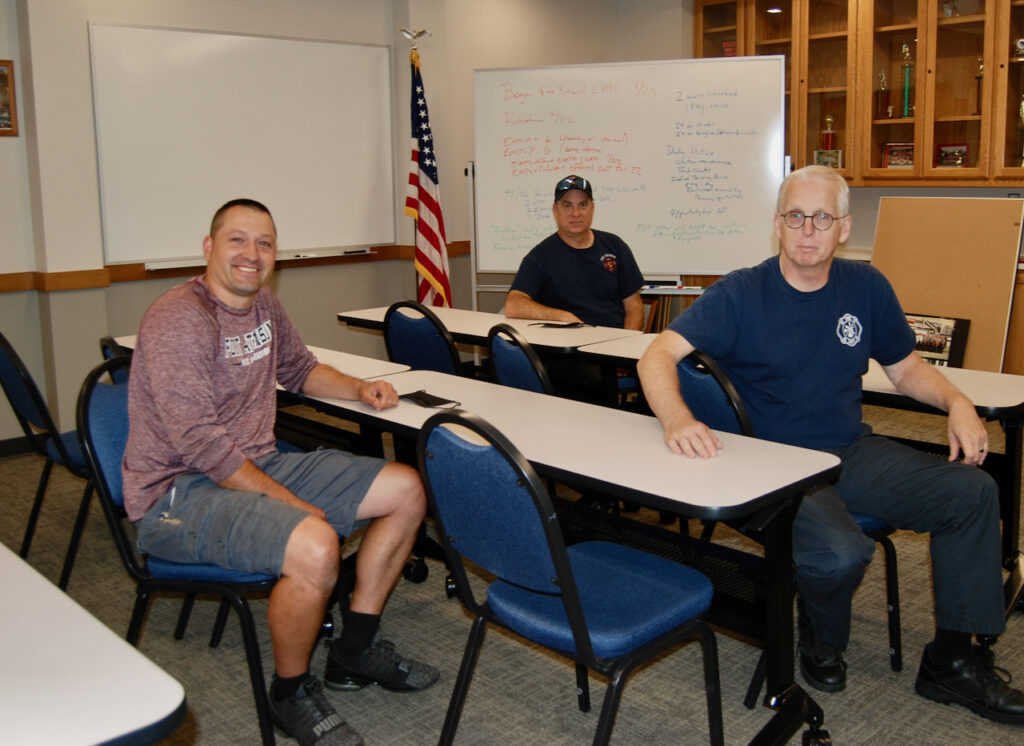
Paid-on-call volunteer EMT and firefighter Capt. Robbie Allard, from left, Division Chief Mike Lawrence and Fort Atkinson Fire Chief Daryl Rausch assemble in the department’s meeting and training room. The group described the work of firefighting and providing EMS services to the community and addressed growing concerns about increasing stress and call volume.
Kim McDarison photos.
Jim, Nedra Lemke murders focus of ‘In Pursuit with John Walsh’ this Wednesday
(Originally published Oct. 3, 2021.)
By Chris Spangler
A Town of Sumner double murder that took place in June of 2020 will be featured on national television this week.
The deaths of Jim and Nedra Lemke will be recalled during a 22-minute segment of “In Pursuit with John Walsh” on Wednesday, Oct. 6.
The program airs at 9 p.m. on the Investigation Discovery channel and will begin streaming on discovery+ the same day.
Viewers with information on the Lemke case — and in particular, the whereabouts of Nedra’s brother, Kevin Anderson, who has been charged in the homicides — will be asked to call or text 1-833-3-PURSUE (1-833-378-7783) or visit www.InPursuitTips.com. Tipsters may remain anonymous.
A camera crew from “Pursuit With John Walsh” was in Oconomowoc June 29-July 1 to interview the Lemkes’ daughter, Amanda Waterworth; her husband, Jacob Waterworth; Jefferson County Sheriff’s Office Det. Sgt. Chad Garcia, Det. Donald Petig, Det. Ryan McIntyre and the first deputy on the scene, who asked to remain anonymous; and Christine Spangler, former managing editor of the Daily Jefferson County Union who covered the murders for the paper.
The segment includes Nedra’s 911 call to the sheriff’s office dispatch reporting a possible break-in at her late father’s Town of Sumner farm; news coverage of the tragedy; and deputies’ actual bodycam, squad car and drone footage of the scene.
Producer Matt Flassig conducted the interviews in a Lake Drive Airbnb on the shores of Okauchee Lake. However, the program itself is narrated by Walsh.
John Walsh is known internationally as a criminal investigator, victims’ advocate and longtime host of “America’s Most Wanted,” the reality program that helped law enforcement officers capture more than 1,200 fugitives and bring home more than 50 missing children.
Walsh later was the host of “The Hunt with John Walsh,” which debuted on July 13, 2014, on CNN. That, in turn, was succeeded by “In Pursuit with John Walsh,” which premiered in January 2019 on Investigation Discovery.
Walsh’s life turned toward fighting crime when, on July 27, 1981, his 6-year-old son, Adam, was abducted from a Hollywood, Fla., mall near the Walsh home. The boy’s remains were found two weeks later.
Walsh and his wife, Revé, helped create the National Center for Missing & Exploited Children in 1984 after President Ronald Reagan signed the Missing Children’s Assistance Act.
Meanwhile, Jim and Nedra Lemke, owners of J-N-L Wrought Iron and active members of Faith Community Church in Fort Atkinson, were fatally shot on June 16, 2020, at her late father’s County Highway A farm west of Fort Atkinson. Her brother,
Kevin P. Anderson, has been charged in connection with their deaths.
Anderson, 61, of Perry Road, remains at large and a warrant has been issued for his arrest. He is described as a 6-foot-tall white male who weighs about 200 pounds and has blue eyes and balding brown hair.
Authorities caution that anyone who sees him should not approach Anderson. Instead, they are asked to contact the Jefferson County Sheriff’s Office immediately at (920) 674-7310.
The criminal complaint filed by Jefferson County District Attorney Monica Hall states that at approximately 5:48 p.m. on Tuesday, June 16, 2020, the sheriff’s office received a 911 call from Nedra Lemke, 57, reporting a potential break-in at N1941 County Highway A, just off of State Highway 106 in the Town of Sumner.
She told the dispatcher that she and her husband, Jim, 59, had arrived at the property of her recently deceased father, Verdal Anderson, to mow the lawn, noticed that some windows on the home were broken and were concerned there might have been a break-in.
When a deputy arrived approximately 12 minutes later, he saw a woman with what appeared to be a gunshot wound lying on the ground next to the driver’s side of an SUV. According to the criminal complaint, he also saw an individual in the back-seat passenger’s side of the vehicle. He asked the man, who later was identified Nedra’s brother, Kirk Anderson, who is nonverbal due to mental and physical limitations, if he was OK, but received no response.
The complaint states that as the deputy was calling in to his department from the passenger side of his squad car, someone started to fire a gun in his direction from a second-story window of the house. Using his duty weapon, he returned four gunshots while retreating down the driveway and into a ditch across the road.
Altogether, it is believed 12 shots were fired.
A second deputy arrived at the scene approximately three minutes later and, six minutes after that, dark smoke and visible flames were coming from the house, the complaint states.
Using a drone to search the scene, deputies saw the body of a man, later identified as Jim Lemke, lying in front of the SUV. The SWAT team found him deceased.
According to the complaint, officers searched the property, and located a black Dodge Ram 1500 registered to Anderson’s wife, Lynn, in an outbuilding with the door closed.
The complaint states that when asked whether she was aware of any arguments or riffs between Kevin and Nedra, she said that Kevin was supposed to be the personal representative in his parents’ will. However, after his father died on June 5, Nedra informed Kevin that she was the personal representative.
That was confirmed by a copy of the will.
The complaint states: “When asked if that upset the defendant, his wife told (the special agent), ‘Well yeah. I don’t think he was really happy about that. He said, ‘why would Dad do that when he came out and asked me? And then if he changed it, why wouldn’t he tell me?’ That was his question to me.’”
Anderson’s son allegedly told special agents his father’s cellphone number, and a U.S. Cellular representative said the phone was “pinging” in the area of Perry and Oakland roads west of Fort Atkinson. Anderson’s home is on Perry Road.
Special agents interviewed Anderson’s sister (presumably Vione Lightfield), who said that Kevin “had always felt he was entitled to more of their parent’s inheritance.” The complaint also stated, “The defendant also has a violent temper.”
According to the complaint, Nedra’s cellphone was found near her at the scene.
“On June 16, 2020, at 9:33 a.m., a message was sent from her phone to three phone numbers, one contact being a phone number listed in the device as Kevin Anderson’s phone number,” the complaint stated. “The message read, ‘Hi everyone. Just wanted to put this out to see if anyone wants to take up the task of keeping the farm’s grass mowed this summer. — It is getting long —.’ At 12:41 p.m., an outgoing call to Kevin Anderson’s phone number was made lasting 46 seconds.”
On Anderson’s iPhone, call and text message logs reportedly showed that Nedra tried to contact him on June 16. His phone also received the text message sent about mowing the grass at their late father’s home.
The voicemail said, according to the complaint: “Hi Kevin, this is Nedra. Say, I have plans to get the mowing done at the farm and so I need access into the shed to get to the mower. If you could call me back and let me know. We’re planning on doing that tonight, so that would be really helpful. OK, I’ll talk to you later. Bye-bye.”
Special agents executed a search warrant at Anderson’s home, which is approximately six miles away from his late father’s farm, and found the will on the kitchen table.
The complaint states that special agents interviewed Lynn Anderson June 17: “She said she got the call that her in-laws’ home was burning after 7 p.m. She got in her car and drove there. The last time she spoke to her husband, the defendant, was on the evening of June 15, 2020, when they said goodnight. … She did not see the defendant in the morning of June 16, which was not unusual as he generally wakes up and goes to work early.”
The homicide charges against Kevin Anderson are Class A felonies, each carrying a sentence of life in prison, if convicted.
An additional attempted homicide charge is a Class B felony with a maximum sentence, if convicted, of 60 years in prison, while the arson is a Class C felony with a maximum sentence of $100,000 and 40 years in prison.
Anderson also is charged with possession of a firearm by a felon, which is a Class G felony with a maximum sentence of $25,000 and 10 years in prison.
According to Wisconsin Circuit Court Access records, Anderson was convicted in Jefferson County on Jan. 12, 1993, of three counts of first-degree recklessly endangering safety.

Jim and Nedra Lemke, pictured above, is the couple that was murdered in the town of Sumner in June of 2020. Their story will be featured on national television this week.

Kevin Anderson

John Walsh, pictured, is known internationally as a criminal investigator, victims’ advocate and longtime host of “America’s Most Wanted.” He is also the host of “In Pursuit with John Walsh,” which will be airing its program about the Jim and Nedra Lemke murders on Wednesday, Oct. 6.
Former Ajango home placed on State Register of Historic Places
(Originally published Oct. 5, 2021.)
The home of the late Fort Atkinson architect Helmut “Mike” Ajango and his wife, Martha, has been placed on the State Register of Historic Places.
Located at 825 East St., the farmhouse remodeled by Ajango into the Prairie School style was designated as a state historic landmark on Aug. 20.
Today, it is home to the Ajangos’ granddaughter, Niina Ajango Konz; her husband, Jason Konz; and their two children.
The Wisconsin Historical Society said in a press release that within the context of architectural Modernism, Ajango was one of Wisconsin’s most innovative and original architects during the mid- to late-20th century. His residential, commercial and religious design work in the 1960s to 1980s included sophisticated Modernist, Organic, Wrightian and Neo-expressionistic designs.
It added that the Ajango residence for 53 years has exceptional historic significance due to its association with the architect whose period of influence ended in 1990.
Ajango opened his own firm in 1962 and worked until just prior to his death in 2013. He was immersed in the ideas of architectural Modernism and his designs reflect his exploration of unusual geometric shapes, Expressionist architectural design, manipulation of interior volumes and experimentation in both horizontal and vertical forms, the historical society said.
Although Ajango maintained his practice in a small office building on North Main Street, he lived in his East Street house between 1960 and 2013, almost the entirety of his architectural career, as well as his most productive years, and the time when his design philosophies reached maturity, it noted.
“Ajango’s hand is evident in his transformation of an existing 19th-century frame house into a Modernist composition, reflecting the expression of his design preferences. He used the existing house to experiment, revise and redesign; this house now embodies his creative architectural expression,” according to the society.
The house was remodeled in 1960 and 1978.
Some of Ajango’s most innovative and well-known designs include: the First Reformed Church, Waupun; Robert O’Keefe House, Lake Geneva; Our Savior’s Lutheran Church, Oconomowoc; Memorial United Church of Christ, Fitchburg; Mount Pleasant Lutheran Church, Mount Pleasant; Bruce Anderson House, Janesville; Evansville High School; the Manchester Building on the square in Madison; Hope Lutheran Church, Mineral Point; and Water Tower Place, Monona.
Close to home, his best-known works include the Fireside Dinner Theatre, Fort Atkinson, in the 1960s; Gobbler Restaurant, Johnson Creek, in 1966; Dean Kincaid House, Palmyra; and Shalom Presbyterian Church in Fort Atkinson, which now is Grace United Church.
He also was involved in the expansion and renovation of the Hoard Historical Museum; the renovation of the Mack and Wilson buildings and Fort Atkinson Municipal Building in downtown Fort Atkinson. He also was responsible for the redesign of the First Federal Building into the Fort Atkinson Area Chamber of Commerce office; the first expansion and remodeling of the Bank of Fort Atkinson, now Johnson Bank; the entryway to First United Methodist Church; the conversion of the Black Hawk Hotel into a senior community-based residential facility; and several additions to Nasco.
Earlier in his career, Ajango designed the wading pool shade cover at the original municipal pool and helped with the dome park shelter at Rock River park; instigated the chamber brochure titled “Fort Atkinson: City of Progress,” researched material and drew detailed city and county maps for use by the Fort Atkinson Fire Department, designed staging and sets for the Fort Atkinson Community Theatre, and helped write, conduct and distribute a civil defense survey … all gratis.
“While there were other Modernist architects in Wisconsin during the same period, Ajango’s work stands apart from his peers in that he was one of the very few who injected playfulness, joy and exuberance into ‘organic architecture’ and Frank Lloyd Wright-influenced Modernism, according to the historical society.
It added, “especially when Ajango worked in the Neo-expressionist mode, he seemed to throw off inhibitions in an unrestrained way that was unique from his peers. His designs continue to stand out in their communities now, more than 30 years since their construction.”
Ajango was born Nov. 30, 1931, in Voru, Estonia, and at age nine, he fled that country with his parents and sister in 1944. They had survived the first occupation of the Baltic nation by Josef Stalin’s Russian regime, and the subsequent German takeover.
In Germany, his parents worked as slave laborers in factories. After the war in Europe ended, the Ajangos stayed in the French-occupied sector of Germany. They emigrated to the United States after World War II in 1949, when Helmut was 18 years old.
The Ajango family worked on a Vermont farm for a short time, and then moved to Indianapolis, Ind., where Helmut attended school and received a scholarship for the Wittenberg University in Springfield, Ohio.
He graduated from Wittenberg University in 1953 with a major in art and math, and then from the University of Illinois-Urbana in 1958 with an architecture degree.
Prior to completing his architecture degree, Ajango joined the army and served two years as a meteorologist in the artillery during the Korean War. He became a naturalized citizen after returning home.
Ajango worked with the architectural firm of Marlay W. Lethly in Springfield, Ohio, from 1951-56, and with Eberhart and Murphy, architects and creative builders in Urbana, Ill., as head designer from 1956-58.
He came to Fort Atkinson in 1958 to join Waterman, Fuge and Associates as head designer. A few years later, he started his own firm, Ajango & Butts Designers, and in 1965, Ajango assumed ownership of the practice.
Ajango designed countless buildings that received high acclaim, but perhaps his most poignant achievement took place in 1989 when he won an international competition to design a monument in Tartu, Estonia, for placement over a mass grave of 192 Estonians murdered by the Russians in June 1941.
Funding became scarce after the breakup of the Soviet Union, and the memorial’s construction was put on hold. A decade later, the major of Tartu resurrected the project, which was completed in 2001. The Ajango family traveled to Estonia for the monument’s dedication.
A Board of Zoning Appeals member for 20 years, Ajango was a member of the chamber of commerce board of directors. In addition, Ajango served as president of the local Jaycees in the 1960s and chairman of the chamber’s city beautification committee and the downtown improvement committee.
In 1965, Ajango was selected by the Junior Chamber of Commerce as the “Outstanding Young Man of the Year.” He also received the 1965-66 Francis J. Plym Fellowship from the University of Illinois, consisting of a six-month fellowship to study architecture in Europe.
The Fireside Dinner Theatre presented Ajango with Ajango its Flame of Friendship Award in 1995.
In 1998, Ajango was named Small Businessperson of the Year by the Fort Atkinson Area Chamber of Commerce.
Then in 1999, Ajango was named the winner of the Milwaukee Inner City North Avenue Redevelopment Project Architectural Competition, the North Central Business Association announced. The project consisted of redesigning all buildings on one side of a city block. The NCBA is made up of local businesses in the North Central Neighborhood, bounded by Walnut Street, 20th, Locust and Interstate 43.
He also was the Fort Atkinson Regional Science Fair honoree in 2002.
Ajango died in 2013, just weeks before his 82nd birthday.
The State Register is Wisconsin’s official list of state properties determined to be significant to Wisconsin’s heritage. The State Historic Preservation Office at the Wisconsin Historical Society administers both the State Register and National Register in Wisconsin.
To learn more about the State and National Register programs in Wisconsin, visit www.wisconsinhistory.org.


Two photos above: two views of the farmhouse remodeled by Helmut “Mike” Ajango. The farmhouse, at 825 East. St., was designated as a state historic landmark on Aug. 20. Contributed photos.

Fort Atkinson architect Helmut “Mike” Ajango
Ryan Brothers shares record of service, concerns with city’s 911 plans
(Originally published Oct. 5, 2021.)
By Kim McDarison
Arriving last Friday to a retrofitted five-bedroom house now ambulance station on Arndt Street in Fort Atkinson, Ryan Brothers Ambulance Service owner Erin Ryan and the Ryan Brothers employees stationed there were eager to give Fort Atkinson Online a tour and showcase the services the company provides.
With some 20 years of service in Fort Atkinson under his belt, Ryan said he and his employees feel connected to the community and take pride in their work.
“It’s personal for us,” Ryan said, adding, “My name is on the ambulance.”
Among those working at the station on Friday were Mike Roth, a Deerfield resident and employee with Ryan Brothers for over 30 years. He is an A-EMT, which, Ryan said, means he has more training than an EMT, but not as much as a paramedic, and Todd Overdahl, a resident of Fort Atkinson who has worked for the company for about 17 years. Overdahl is a critical care paramedic.
Relaxing in the employee living quarters on the station’s lower level was Madison Sanderson, who began as a college student working with the company part-time and now works full time. She has been with the company for nearly two years. Sanderson is an EMT.
Upstairs, Jesus Alcantara, who is a five-year Ryan Brothers Ambulance Service veteran, was updating patient information on a computer. Alcantara is a paramedic. He started with the company as an intern, Ryan said, adding that the company has its own intern program through which it sponsors individuals who are looking for a career in the field.
Ryan said the company usually finds candidates to enter into its intern program though recommendations coming through the University of Wisconsin-Madison.
“We have a good working relationship with them,” he said, adding that a lot of students who are interested in medical school are also looking for hands-on training. The UW recommends students, many of whom enter into a gap year to take the internship and train, Ryan said.
Still, Ryan added, his company has a good track record of retaining its employees.
“The average EMT stays with us for two or three years. The industry standard is 18-months, he said, adding: “We like to utilize people who are career-oriented and if we can keep them for two or three years, that’s great.”
Some company history
Ryan, an A-EMT, said he began working for the ambulance company — which was begun in 1962 by his father and uncle — in 1995. That was the year he graduated from UW-Whitewater, he said.
Ryan Brothers Ambulance Service has its headquarters in Madison, but the company has operated a station in Fort Atkinson for 20 years, he noted.
Offering some history, Ryan said in 1965, Kutz Ambulance Service held the 911 contract in Fort Atkinson.
At some point, he said, the Kutz family sold the business to one of its longterm employees, and the employee later sold it to AMR (American Medical Response).
Both companies, while they held the Fort Atkinson contract, operated a station from the Arndt location from which Ryan Brothers Fort Atkinson, a separate branch of Ryan Brothers Ambulance Service, operates today.
When the Kutz family owned the business, Ryan said, it operated 911 services and did transports to the the Fort Atkinson Hospital.
While he wasn’t sure when contracts between the city and its former service providers began, he said, in 2001, the contract between the city and AMR was ended and the city released a request for proposals (RFP), to which several entities responded, among them was Ryan Brothers Ambulance Service.
Ryan recalled being among four entities that made presentations to the city while vying for the contract, noting that even then, the city was surprised at the costs associated with providing 911 service.
At the time, Ryan said, the Fort Atkinson Fire Department was among contenders responding to the RFP.
After an initial round of presentations, he said, the four finalists were asked to come back with new sets of numbers.
“They wanted the companies to include the revenues they received from hospital calls,” Ryan said.
In 2002, he noted, Ryan Brothers was awarded the 911 service contract by the city, and Ryan Brothers Fort Atkinson, LLC, was created. The separate LLC owns the 911 ambulance stationed in Fort Atkinson, and, through another LLC, holds the loan on the Arndt Street building. Ryan Brothers Fort Atkinson rented the building in 2002 from the former longterm Kutz employee who was still its owner. The building was purchased by Ryan Brothers sometime between 2006 and 2008, Ryan recalled. A separate LLC for the 911 station was created, Ryan said, because 911 services come with different sets of liability.
Two types of calls
Within the ambulance service industry, Ryan noted, there are two types of calls: 911 and inter-facility transfers.
Said Ryan: “The problem is with 911 calls, people don’t always have insurance and then we don’t get paid. So your numbers may show that you do 1,200 calls per year, but you can only bill for 700 calls, or you might go (to a location to pick up a patient) and you can’t transport because people refuse to go, or you can treat them on site and they don’t need transporting. There are only billable hours when you transport somebody. If you bill a patient and there is no insurance, some will get up a payment plan, and others, you just have to write them off.”
He estimated about 30% of 911 transports are ultimately written off.
Some go to collection agencies, he said, but, he added, that still doesn’t mean the ambulance company will get paid.
“For 911 service, the city pays an annual stipend of $110,000 per year. That money is meant to cover expenses like our building and manpower,” Ryan said.
Company facilities, staffing the station
Attached to the five-bedroom structure is an approximately 2-1/2 car garage that has been retrofitted to accommodate the two ambulances that are stationed in Fort Atkinson 24/7, Ryan said.
In Fort Atkinson, crews work in shifts that are 24 hours on and 72 hours off. On average, crews leave the station about 2 minutes after receiving the 911 call.
At Ryan Brothers, EMTs make between $14 and $17 an hour. Those with higher levels of training, like critical care paramedics, make closer to $25 and $30 an hour.
Ryan said “a main core group” works in Fort Atkinson. Of the company’s 120 employees, 18 are among those that regularly work out of the Fort Atkinson station.
An employee must be an EMT, paramedic or higher to work in the Fort Atkinson station, Ryan said.
“We run single paramedic; everyone has to be at least an EMT, and they have to meet our internal qualifications. We have two 911 locations and they get our most qualified people,” he said, adding: “The people that serve at the 911 stations are connected to the communities they serve. People in these jobs are passionate about what they do. We care because that’s our reputation.
“They are here to do a job and take care of people. In Fort Atkinson, they are here to take care of the people in Fort Atkinson and the townships. As a company, we do about 300 hours of community service. In Fort, we do about 40 hours a year,” Ryan said. He described community service as anything from having an ambulance standby during an event to bringing an ambulance to an educational program at school.
“One rig is always at paramedic level and the second one is at critical care paramedic level,” he noted.
The full Ryan Brothers Ambulance Service company operates locations within three counties: Dane, Jefferson and Rock.
From the various locations, the company performs inter-facilities transfers that might take ambulances and their crews on calls within several states.
Of the company’s eight locations, two provide 911 services. They are Fort Atkinson and a station within the Madison suburb of Maple Bluff. Other stations, such as those operating in Middleton, Sun Prairie, Deefield, and Janesville house ambulances that respond to inter-facility transport calls.
Of the two stations responding to 911 calls, Ryan described Fort Atkinson as “the biggest.”
“In Maple Bluff, the 911 service is a paramedic service and we work with the fire department. We have been providing 911 service there since 2011,” he said.
In Fort Atkinson, the station responds to both 911 calls and calls for inter-facility transfers, with one ambulance dedicated to responding to 911 calls within the Fort Atkinson Fire Department service territory, which also includes five townships — Koshkonong, Sumner, parts of Oakland, parts of Hebron, and the Town of Jefferson — which contract with the City of Fort Atkinson for 911 service. A second ambulance can respond to 911 calls and also responds to inter-facility transfers.
All told, Ryan said, the company operates seven stations within the state and an administration building in Madison.
Looking at the structure of 911 services, Ryan said, 911 calls are answered within a designated territory. The company only answers 911 calls within the designated service area, but it can go outside of the area when asked to respond to calls through mutual aid.
Like municipal ambulance services, private ambulance services are included in mutual aid protocols, he said.
Typically, Ryan Brothers requests help through mutual aid on between 20 and 25 calls each year and the company provides mutual aid to calls received from other jurisdictions between 30 and 35 times a year., he added.
Protocols for inter-facility transport are different, Ryan said.
He continued: “Fort Atkinson is staffed 24/7 with two rigs. There are four people here at the station unless they are out on a call. Each ambulance leaves with a team of two for 911 calls. Ambulances leaving for inter-facility services sometimes have crews of three. If a third person is needed, someone comes from another station by ambulance and meets the team at the hospital.
Each year, he said, the company responds in Fort Atkinson to 1,200 911 calls. The full company responds to between 17,000 and 18,000 inter-facility transport calls.
The inter-facility calls are statewide and some are even in neighboring states, Ryan said.
The Ryan Brothers contract
Said Ryan: “In Fort Atkinson, the two ambulances will always be supported by a crew of at least two. Our contract calls for one rig at the EMT level, but we staff it at the paramedic level on our own, and our second rig was supposed to be on-call, but we staff 24/7 in-house and at the critical care level. Our contract says it can be paid-on-call, but we staff 24/7 in house.
“In our contract, we also have a noncompete clause, so I was skeptical about a third ambulance in Fort Atkinson at the fire station,” Ryan said.
When it was proposed, he added, he and the city signed an MOU (memorandum of understanding) stating that the third ambulance operated by the department would not be used for 911 calls.
According to Ryan, the MOU was signed in 2018.
Ryan described the contract with the city as a rolling three-year contract. In the beginning, he said, the first contracts the company entered into with the city were renewable every year. After a time, the parties agreed to go with a rolling three-year contract that would automatically renew each year.
With the rolling three-year contract, he said, if one of the parties wanted to opt out, there was a two-year grace period.
With this current contract, he said, the grace period is not done until 2023. The city gave its notice as stipulated within the specified time period, but the company continues, according to Ryan, as a paid service provider until Dec. 31 of 2023.
During the Sept. 7 meeting held by the Fort Atkinson City Council, the body voted in favor of ending its contract with Ryan Brothers Fort Atkinson, advancing its understanding, as stated by City Manager Rebecca Houseman LeMire, that the contract would complete on Dec. 31, 2022.
Ryan said he tried during the meeting to communicate his understanding of the company’s 2023 completion date, but the council did not give him recognition from the floor.
As of last Friday, he said, he has had no communication with the city since the Sept. 7 council meeting.
Said Ryan: “The city has not included us in anything and there has been no transparency. I’m not sure why the city is trying to rush this through. We are the most efficient and fiscally responsible game in town for this population. Their EMS budget is going to go up about 500%.”
Looking at overall costs, Ryan said, according to calculations made by his staff, under the company’s most recent contract, each member of the population within the Fort Atkinson Fire Department’s service territory, which, he said, was calculated at 18,000 when including the five townships, was paying $6.25 for 911 service.
“That’s very inexpensive,” he said.
When it comes to a referendum, he said, “the people living in the townships are not represented. The city will vote on the referendum, and if it passes, the costs go up.”
While the company received a raise each year within its contract with the city calculated using the consumer price index (CPI), Ryan said, “we lose hundreds of thousands of dollars every year on this operation. We do it because we care and we are part of the community.”
According to Ryan, Ryan Brothers Fort Atkinson loses money each year, but, he said: “Our No. 1 priority at Ryan Brothers Fort Atkinson or at Ryan Brothers Madison is to provide the best patient outcomes. It’s not just about the money.”
Addressing patient outcomes, he said, given the broader resources of the full company, Ryan Brothers can offer a wide variety of experience to those in training.
Looking as losses from providing 911 service, he said, “we make it up on the inter-facility transfers. We draw from a bigger pot. We can do it at a lower rate because we are coopting services from a bigger operation.”
Looking ahead
Said Ryan: “You are getting the best trained people in the state at the most economical rate possible. Without the $110,000, we will repurpose this (911) rig and use it elsewhere for inter-facility transfers. That might happen a year from now or two years from now.
“If the referendum doesn’t pass, they (the city) may need to renegotiate with us.”
If the city opts not to renegotiate, he said: “We would close Ryan Brothers Fort Atkinson down.”
The company would continue to operate the Arndt Street station, he said, but it would only provide inter-facility transport services as part of the company’s broader network. It might also be a possibility that another municipality in the area might hire his ambulance for 911 services, he said, in which case the 911 service for that municipality might run from the Fort Atkinson station.
“I want to do right by Ryan Brothers and the city, but I wouldn’t be a good leader if I didn’t have plans,” he said.
Ryan said his company plans to hold the city to its three-year rolling contract and he remains open to negotiations with the city.
“Right now, there are too many questions with no answers for me to know what’s really going on,” he said.
Looking at next steps, he said: I’d like them (the city) to be transparent and find out what a budget will be so residents can see it because budgets don’t get smaller.
“A full-time paramedic in the state of Wisconsin costs between $175,000 and $200,000, that’s per year, per person. The figure includes salary, training and benefits. So if you hire 12, add that number by 12, and that’s just for paramedics.”
He suggested the city might consider holding a “town hall meeting.”
“We want to speak for ourselves,” he said.
A story about plans under consideration by the city to bring 911 services in house is here: https://fortatkinsononline.com/ryan-brothers-contract-terminated-council-rolls-out-plan-for-public-safety-referendum/.
A story about the Fort Atkinson Fire Department’s concerns with issues of staffing and sustainability is here: https://fortatkinsononline.com/an-issue-of-sustainability-fort-firefighters-talk-about-call-volume-staffing/.

Ryan Brothers Ambulance Service owner Erin Ryan, at left, and Ryan Brothers employee, paramedic, and resident of Fort Atkinson, Todd Overdahl, give a tour of two ambulances stationed in Fort Atkinson. Overdahl has worked with the company for 17 years. Ryan joined the family business after graduating from UW-Whitewater in 1995. He is an A-EMT.

Fulfilling his shift on Friday, A-EMT Mike Roth, a Deerfield resident and employee with Ryan Brothers for over 30 years, sits in one of two ambulances stationed in Fort Atkinson on Arndt Street.

Jesus Alcantara, a five-year Ryan Brothers Ambulance Service veteran, updates patient information. Alcantara is a paramedic. He started with the company as an intern, company owner Erin Ryan said, adding that the company has its own intern program through which they sponsor individuals who are looking for a career in the field.
Kim McDarison photos.
Obit: LaVerne J. Zech
(Originally published Oct. 5, 2021.)
LaVerne (Vern) J. Zech, 65, of Fort Atkinson, passed away on Thursday, September 30, 2021, at his home.
Vern was born in Fort, the son of the late Harold and Myrtle (Booth) Zech, on March 17, 1956.
Survivors include brothers, Ed (Mary) Zech of Fort Atkinson, Ken (Kerri) Zech of Whitewater, Scott Zech of Fort Atkinson, Jeff (Renee) Zech of Whitewater, sister Nancy (Greg) Carroll of Fort Atkinson, nine nieces and nephews and three great nephews.
He was preceded in death by his parents, two brothers, Lee and Ron, and two sisters, Marie and Debbie.
There will be a Celebration of Life at the American Legion Dugout on October 24, 2021, from 2 p.m. to 5 p.m.
Dunlap Memorial Home in Fort Atkinson is assisting the family.
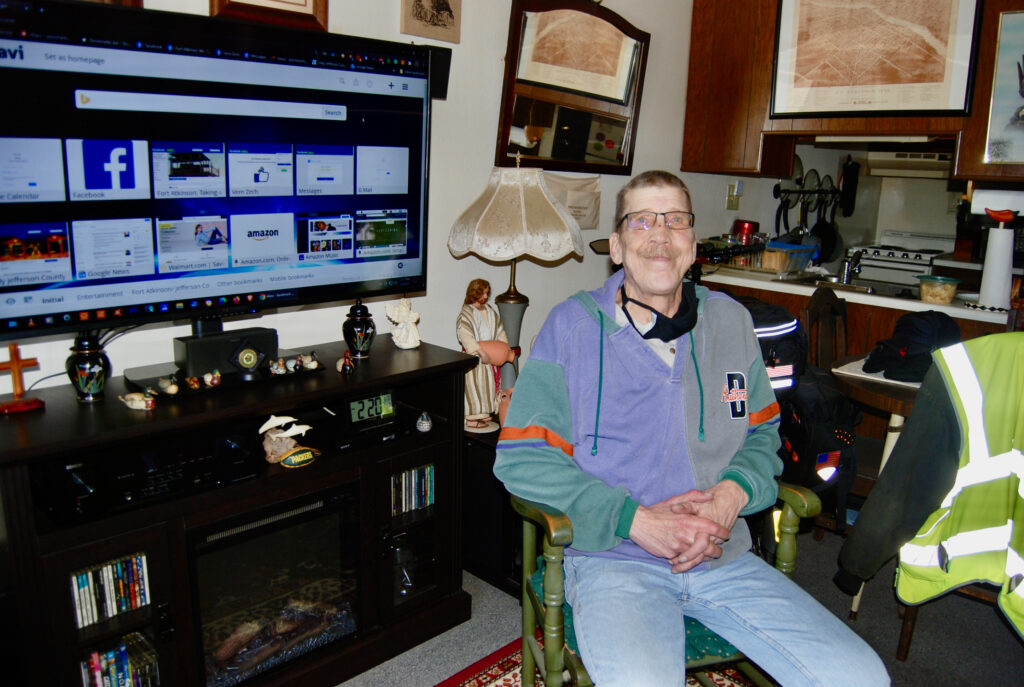
‘In Pursuit with John Walsh’ airs Wednesday on Investigation Discovery
(Originally published Oct. 5, 2021.)
The June 2020 murders of Jim and Nedra Lemke of rural Fort Atkinson will be featured in a 22-minute segment of “In Pursuit with John Walsh” on Wednesday, Oct. 6.
The program airs at 9 p.m. on the Investigation Discovery channel and will begin streaming on discovery+ the same day.
A camera crew from “In Pursuit With John Walsh” was in Oconomowoc June 29-July 1 to interview the Lemkes’ daughter, Amanda Waterworth; her husband, Jacob Waterworth; Jefferson County Sheriff’s Office Det. Sgt. Chad Garcia, Det. Donald Petig, Det. Ryan McIntyre and the first deputy on the scene, who asked to remain anonymous; and Christine Spangler, former managing editor of the Daily Jefferson County Union who covered the murders for the paper.
Viewers with information on the Lemke case — and in particular, the whereabouts of Nedra’s brother, Kevin Anderson, who has been charged in the homicides — will be asked to call or text 1-833-3-PURSUE (1-833-378-7783) or visit www.InPursuitTips.com.

Christine Spangler, pictured, former managing editor of the Daily Jefferson County Union, who covered the murders for the paper, is among those appearing on the show.

A tip line has been set up by the show to gather information to help law enforcement find Kevin Anderson, who has been charged with the murders.
Fireside’s Klopcics presented chamber’s ‘Tourism Counts’ award
(Originally published Oct. 6, 2021.)
By Chris Spangler
Ryan and Kristi Klopcic, who successfully guided The Fireside Dinner Theatre through a pandemic that devastated the dining and entertainment industries, were honored by the Fort Atkinson Area Chamber of Commerce Tuesday evening.
The chamber presented its 2021 “Tourism Counts” award to the Klopcics during the organization’s Fall Open House at The Bridge.
“The Fort Atkinson Area Chamber of Commerce ‘Tourism Counts’ Award is presented to an individual, business or organization who, by their leadership and efforts, have made a difference in the promotion and development of tourism in our area,” chamber tourism manager Katie Carey said in announcing the Klopcics its recipients.
“The name of the award reflects the tourism commission’s desire to impress upon the community that tourism does count in the bigger economic picture, and that it does impact the vitality of our city,” she added.
Carey noted that when the coronavirus pandemic hit in March of 2020, The Fireside Dinner Theatre was forced to close just three weeks into its seven-week run of “Guys and Dolls.” All The Fireside’s part-time staff and most of the full-time employees were laid off.
“Ryan and Kristi Klopcic chose to keep the management team intact and shifted everyone to working from home,” Carey said. “Immediate tasks included moving reservations for rescheduled shows and canceling all unnecessary expenses.
“As soon as staff were allowed back in the building, Ryan and Kristi empowered the team to tackle cleaning, maintenance and reorganization of projects by thinking outside the box on how The Fireside could generate revenue,” she continued.
The first new ventures came from a desire to make use of existing inventory, according to Carey. Kristi took the lead on building an online gift shop featuring the new spring and summer merchandise, while the restaurant managers figured out how to serve the award-winning Friday Night Fish Fry dinners “to go” while maintaining The Fireside’s high-quality standards. This led to Wednesday take-outs of its signature barbecued ribs and other entrees.
“Following Ryan and Kristi’s lead, each department head operated on their own or with a skeleton crew, with everyone all pitching in to help make these ideas happen,” Carey said. “The staff learned new things, worked harder than they ever had before, and celebrated successes together.”
The chamber tourism manager said that once the dining room was allowed to reopen, The Fireside’s operations manager underwent training to implement procedures required by the Wisconsin Restaurant Association to be certified in the “Ready to Serve Safely” program. In addition, the restaurant opened in-house Friday Night Fish Fry to limited capacity while continuing the carryout option for a limited time.
“When it became clear The Fireside wouldn’t be opening the next production scheduled for mid-April of 2020, Ryan moved it 2021,” Cary said. “Then, about a month later, the next one was also moved.
“Faced with moving a third show, staff started planning a ‘summer concert series’ in June featuring top Fireside performers and tribute artists in solo or duo performances for very small, socially distanced audiences,” she recalled. “This filled a void for guests ready to venture out safely and the theater staff geared up to present a new show every weekend. The concert series went on to fill the summer, fall, and winter, plus the spring of 2021.”
Carey noted that while the management team and small core staff worked together to get back to the business of entertaining, the Klopcics were right there with them — “leading the way, working side by side with staff, while also bearing the burden of the financial impact of COVID-19 and other planning decisions throughout the pandemic.”
She shared remarks by Julie Nordeen, marketing manager at The Fireside.
“Despite the stress that had to be weighing on them both, every day we received encouragement, smiles, thanks, their ever-present sense of humor and the overwhelming belief that we were going to be OK —we were going to make it through this and come out better and stronger than ever,” Nordeen recalled.
Carey reported that much of the core staff is back and The Fireside is welcoming new members to the team.
“Joseph and The Amazing Technicolor Dreamcoat,” one of the most popular musicals of the last 50 years, is now showing at The Fireside, and Irving Berlin’s “Holiday Inn” will start Oct. 28 to spread holiday cheer, Carey announced.
“Performance venues across the country were among the first to close and the last allowed to reopen,” she said of the pandemic. “With their vision, commitment, thoughtful decisionmaking and leadership, Ryan and Kristi Klopcic steered The Fireside through the worst of the COVID-19 devastation and set The Fireside Dinner Theatre on a path to continued success.
“The ripple effect for the Fort Atkinson community in the way of employment, business with local vendors, hotel stays and community engagement cannot be adequately measured, but are just some of the reasons Ryan and Kristi Klopcic are awarded this year’s ‘Tourism Counts’ award,” Carey concluded.
Joining Carey in presenting the award to the Klopcics were 2020 honorees Jim and Christa Bowers, owners of The Bridge, Island Bar & Grill, Good 2 Go and North Shore Chophouse.
The Bowers were recognized last year “for their investment in three waterfront restaurants, all of which have become tourist destinations, as well as local favorites.”
On Tuesday prior to the Fall Open House, they cut the ribbon to formally open The Bridge.
Carey noted that due to the coronavirus pandemic, last year’s award presentation took place virtually.
“We did our best to recognize them through the local press and our member communications, but they didn’t get to hear your congratulations in person, so I’d like to invite them to the podium to help us present this year’s award,” she said.
Ryan Klopcic thanked the chamber for the award.
“It’s been an incredibly challenging time, 19 months, for The Fireside, being in the entertainment industry,” he said. “We’ve had a lot of long days, dark days, but we’re here, we survived. The lights are on. The doors are open. And we continue to bring the magic of live entertainment to The Fireside stage and we’re incredibly proud of that.”
He continued: “Thank you to the community for all your support throughout the various concerts we did, the magicians, the comedians, the tribute artists and now the Broadway musicals. Thank you for visiting us, supporting us, even with the curbside carryouts and The Fireside fish and the carryout gift shops. It was a big help to help … in finding our way through.”
Klopcic also thanked The Fireside’s management team.
“They worked incredibly hard and long hours and held their heads up high, have been positive and have been very gracious and hardworking and dedicated throughout this whole process,” he said. adding, “We appreciate all your support, and thank you very much for this award.”

Presenting and receiving the Fort Atkinson Area Chamber of Commerce 2021 “Tourism Counts” award are Chamber Tourism Manager Katie Carey, from left; Christa and Jim Bowers, last year’s recipients of the award and owners of The Bridge, where the chamber’s Fall Open House was held on Tuesday; and Kristi and Ryan Klopcics, the recipients of this year’s award. Kim McDarison photo.
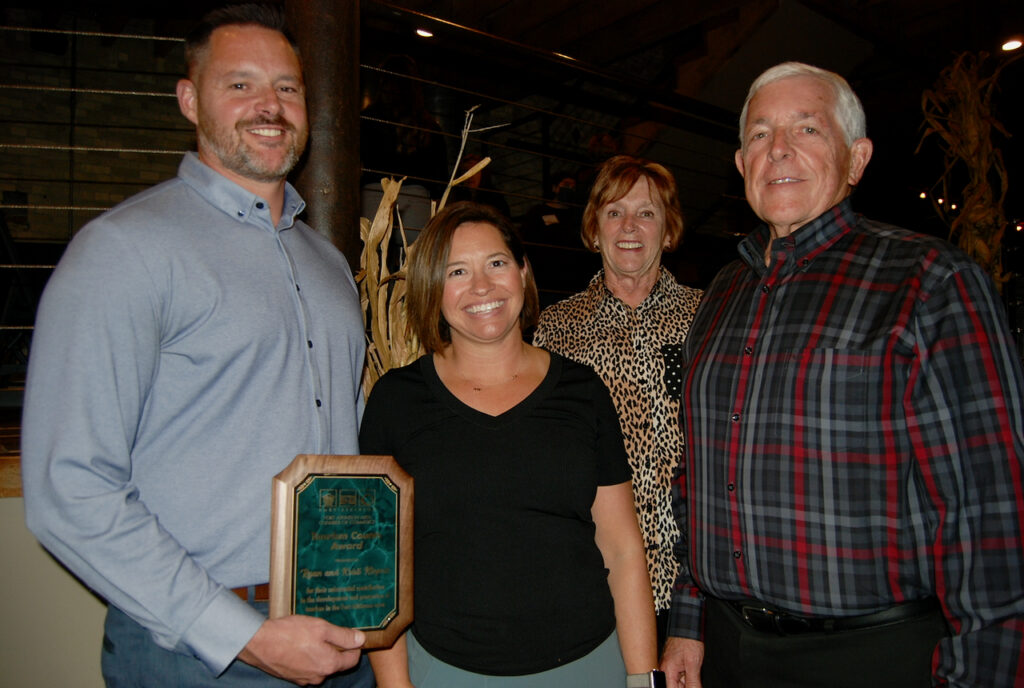
Fort Atkinson Area Chamber of Commerce 2021 Tourism Counts award recipients Ryan and Kristi Klopcic are congratulated by family members Jane and Rick Klopcic. The Fireside Dinner Theatre is owned and operated by the Klopcic family. Kim McDarison photo.
Valero laying off 61 at Aztalan ethanol plant
(Originally published Oct. 8, 2021.)
By Chris Spangler
Valero Services Inc. has informed state and local officials of plans for a “mass layoff” at its Jefferson Junction ethanol plant.
In a letter to Amy Pechacek, secretary-designee of the Wisconsin Department of Workforce Development, and John Swisher, Johnson Creek village president, Valero Senior Vice President of Alternative Energy & Project Development Martin Parrish said that 61 of the 68 employees will be laid off between Friday, Oct. 15, and Monday, Dec. 6.
“The planned workforce reduction is due to the continued idling of this facility and is expected to be indefinite, unless and until market conditions significantly improve …,” the Oct. 4 letter stated.
It noted that there will be no bumping rights, and the affected employees are not represented by a union.
The letter also lists the affected positions, ranging from the plant manager, controller, accountant and maintenance technicians to process, scale house and shipping and receiving operators.
Located at W5289 Valero Way in the Town of Aztalan between Jefferson and Johnson Creek, Valero Renewables Jefferson formerly was Renew Energy and, for decades prior to that, Ladish Malt.
In December of 2009, Valero purchased the plant in a bankruptcy court bid of $72 million.
This marks the third announcement of area plant layoffs in as many months.
In September, Eaton Corp. in Watertown informed the DWD of its planned closing on Nov. 19, idling 56 employees.
And in August, Tyson Foods, operating as L.D. Foods Inc., announced it was closing its Jefferson facility on Sept. 16. That affected 62 jobs.

Located at W5289 Valero Way in the Town of Aztalan between Jefferson and Johnson Creek, Valero Renewables Jefferson has announced it will be laying off 61 or its 68 employees beginning Oct. 15.
‘In Pursuit’ about Lemke murders spurs tips; TV show highlights shared
(Originally published Oct. 11, 2021.)
By Chris Spangler
Since 1988, John Walsh’s nationally televised crime programs have helped locate some 1,600 fugitives and 60 missing children.
Now, Jefferson County law enforcement officials are hoping to see those numbers soon increase by at least one.
On Wednesday, Oct. 6, the 2020 town of Sumner murders of Jim and Nedra Lemke were featured in a 22-minute segment of “In Pursuit with John Walsh” on the Investigation Discovery channel.
Owners of J-N-L Wrought Iron and active members of Faith Community Church in Fort Atkinson, the Lemkes were fatally shot on June 16, 2020, at Nedra’s late father’s County Highway A farm west of Fort Atkinson. Nedra’s brother, Kevin P. Anderson, 63, has been charged in connection with their deaths, although he remains at large.
A camera crew from “In Pursuit With John Walsh” was at an Oconomowoc lake Airbnb June 29-July 1 to interview the Lemkes’ daughter, Amanda Waterworth; her husband, Jacob Waterworth; Jefferson County Sheriff’s Office Det. Sgt. Chad Garcia, Det. Donald Petig, Det. Ryan McIntyre and the first deputy on the scene, who asked to remain anonymous; and Christine Spangler, former managing editor of the Daily Jefferson County Union.
Narrating the show was Walsh, who became a criminal investigator and victims’ advocate after his 6-year-old son, Adam, was abducted and killed in 1981. He was the longtime host of “America’s Most Wanted,” which helped law enforcement officers capture more than 1,200 fugitives and bring home more than 50 missing children.
Walsh later hosted “The Hunt with John Walsh,” which debuted on July 13, 2014, on CNN. That was succeeded by “In Pursuit with John Walsh,” which premiered in January 2019 on Investigation Discovery.
“We are currently more than halfway through season three of ‘In Pursuit,’ and once the season is wrapped, we will have featured 72 cases in total, including missing children,” said Greg Palmer, executive producer of Jupiter Entertainment, which produces the program. “Since the show premiered in 2019, 26 featured fugitives are now in custody and eight missing children recovered.”
He explained that “In Pursuit’s” researchers locate unsolved crimes to feature on the show.
“After tips are submitted to us via phone, text or website, our operators hand those off directly to a predetermined point of contact with the lead agency — i.e. local police departments, sheriff’s offices, state police agencies, the United States Marshal Service, the FBI or others,” Palmer said.
Detectives say program was well done
Jefferson County Sheriff’s Office detectives interviewed for the “In Pursuit” segment are hoping that the national exposure will lead to locating Anderson.
“We were interviewed by the producers for the television show and I thought it was very well done, very professionally done,” Det. Sgt. Garcia said on Friday.
“We have received some tips already and it’s been less than 48 hours since the show aired, so we’re happy with that. We’re following up on the tips that we’re getting and we hope to locate Kevin Anderson … to find him and bring him to justice,” he added.
Garcia estimated that, as of Friday, the department had received about a dozen tips in 36 hours.
“They come into the call center to the TV show and they’re forwarded to me by email instantly,” he explained. “So every time one comes, whether it’s 2 in the morning or whenever, it comes to me instantly.”
He, in turn, immediately sends the information to the two cold lead detectives, Petig and McIntyre.
“They’ll follow up on the tips right away,” he said.
Meanwhile, Garcia said, the sheriff’s office provided “In Pursuit” with Nedra’s 911 call to dispatch reporting a possible break-in at her late father’s town of Sumner farm; and deputies’ actual bodycam, squad car and drone footage of the scene.
“Not only was this the first time the public was seeing it, but a lot of members of our own agency hadn’t seen it,” he said of the footage.
He noted that this was not the first time that the department had used a drone at the scene of a crime.
“The first case we used drones, and this is what got us involved in drones, was the shooting up at Arby’s in Johnson Creek,” Garcia said, referring to the 2017 incident in which a naked carjacking suspect ran toward the restaurant waving a handgun.
“The Johnson Creek Fire Department fitted us with drones and one of their members had their own drone,” Garcia said. “After that, we realized we needed a drone.”
That prompted the sheriff’s office to budget for purchasing a drone and pilot training.
“We’ve used it on a number of major crash scenes and a few different crime scenes, including searching for missing people,” Garcia said. “We’ve been using it quite a bit.”
In this case, the drone was instrumental in assessing the situation before the SWAT team advanced past the squad cars. Not only did the drone alert them to Jim Lemke lying in front of his SUV, but it also provided the aerial photos of the farmhouse fire and aided in the search for Anderson.
“We can put the drone anywhere,” Garcia said. “Officers can see everything that’s going on. They’re an awesome tool.”
The detective sergeant also shared that as tragic as the double murder was, it could have been even worse with more casualties.
That is because Nedra’s brother, Kurt, who is disabled and nonverbal, was in the back seat of the Lemkes’ SUV. In addition, the gunshots fired at the first deputy arriving on the scene hit his squad car just inches above his head.
Garcia said that the sheriff’s office has assistance for deputies involved in such stressful situations.
“We have POST, a police officer support team, for critical incidents,” he explained. “Eight or 10 of us underwent a week of training. If we have a critical incident, we give a debriefing where everyone sits down and has a chance to talk through it.”
He said the team includes a psychologist who works with military veterans and first responders. Area chaplains also are available to assist.
“We’re very proactive in the wellness field,” he said.
Turning back to the “In Pursuit” episode, Garcia called the Lemkes’ murders among about a half-dozen major cases that particularly stand out in his memory during his 27 years with the Jefferson County Sheriff’s Office.
Also among them is another double murder: the 1980 deaths of Fort Atkinson’s Timothy Hack and Kelly Drew.
It was that August that the couple went missing from a wedding dance at the Concord House in the town of Concord. Their remains were discovered Oct. 19, 1980, in a woods and field near Ixonia.
It remained a cold case for 29 years until Edward W. Edwards of Louisville, Ky., — a serial killer who had been working as a handyman at the Concord House campground in August 1980 — was arrested July 30, 2009, after DNA on Kelly’s clothing connected him to the case.
A tip from Edwards’ own daughter, April Balascio, who saw cold case reports on the internet from NBC television Channel 15 in Madison, led investigators back to Edwards.
The Hack-Drew tragedy also was chronicled in “Unsolved Mysteries” and “Cold Case Files.”
“We’ve found over the years that working with media at all different levels — the local level, print media, radio, TV, national — has always benefited us as far as our investigation receiving information,” Garcia said. “It’s been well received by the public and it’s been helpful for us.
“In the Hack-Drew homicides in 1980, Edwards’ daughter located it online and actually called us and gave us information that led to his apprehension and conviction,” he added.
Hopefully, he said, the “In Pursuit” segment will lead to a similar conclusion of this cold case.
“If you see something, say something,” Garcia advised. “We appreciate the community support.”
Highlights of televised segment
The 22-minute segment of “In Pursuit” that aired Oct. 6 begins with Walsh “introducing” the Lemkes.
“We’re heading to Sumner, Wisconsin, about an hour west of Milwaukee, where James and Nedra Lemke built a life based on love, generosity and hard work,” he said. “Part of a large and tight-knit family, they were active in their church, active in their community and always willing to lend a helping hand.
“So, when shots rang out on their family farm in 2020, everyone was left bewildered, questioning who would ever want to harm this couple, and why?”
That is followed by Nedra’s actual 911 call to the Jefferson County Sheriff’s Office dispatch center reporting broken windows at the farmhouse of her grandfather, Verdal Anderson, who had died just 11 days earlier.
“This is not an emergency, but I’m taking care of my parents’ house and there’s windows broken, and we had locked the house down,” she told the dispatcher, who advised her against entering the house because it was not known whether an intruder was inside.
The first deputy is on the scene within minutes after the 5:48 p.m. call.
“I was scheduled to work from 6 a.m. to 6 p.m. It seemed like a normal, run-of-the-mill day, and then I heard the initial call come out,” he said.
He continued: “As I walked west down the driveway, I started moving toward the vehicle, and that’s when I saw her: a female, lying on the ground. I started trying to talk to her. I remember leaning over, trying to address her, still hadn’t seen any movement, hadn’t gotten any reaction from her.”
That is when he saw a trail of blood and realized the woman had sustained a gunshot wound.
“So I drew my weapon and moved around the back side of the car, and that’s when the first round of shots started ringing out,” he recalled. “As I’m crouched, I can see bullet marks in my car about an inch over my head. I figured out that the shooter was directly looking at me from an elevated position. And then I did a Superman dive into the ditch on the opposite side of the road.
“This is absolutely an ambush,” the deputy said.
He crawled south, rolling over and looking at the tops of trees.
“I could see smoke coming up, really thick smoke, so it crossed my mind that the suspect had set the house on fire,” he added.
Another deputy arrived, followed by other units and the SWAT team.
“This is a dangerous situation, because we don’t know where the shooter is,” Det. Petig stated in his interview.” “Is he in the house; has he escaped? Does he have a hostage? He shot at our deputy so they are armed and dangerous and we don’t know what they are going to do next.”
Deputies deployed a drone that enabled them to see not only Nedra Lemke lying near the front of her SUV, but also her husband, Jim. They presumed Nedra had been the 911 caller.
Det. Sgt. Garcia said everything unfolded so quickly that there wasn’t time to even think about suspects. People, including two of the Lemkes’ sons, were arriving and “our priority was safety, no one getting hurt.”
“Nedra’s sons indicated that the grandfather had recently passed away and there was some tension between their uncle, Kevin Anderson, and Nedra Lemke,” Det. McIntyre said.
Walsh said that SWAT teams found Anderson’s truck in a barn, so they knew he was or had been at the residence.
“Next question is: ‘Where is Kevin Anderson?’” McIntyre said.
Authorities reached out to each of the Lemkes’ family members individually to break the news.
“It’s 3 o’clock in the morning and someone started knocking on our door, so I went downstairs and there were two gentlemen,” the Lemkes’ daughter, Amanda Waterworth, said. “They showed me their badges and they started asking me about my mother and my father. We had asked what’s this about and they said ‘we’re here to tell you your grandparents’ house is on fire and there are two bodies that we found on the property.’
“I burst into tears, I was shaking, and the police couldn’t tell us anything,” she added.
The Waterworths drove to the town of Sumner farm.
“We got there and my older brother was standing in the driveway. And he was crying, and I’d never seen my brother cry. And it was just awful,” Waterworth said.
Investigators asked the family who they thought might have done this.
“My parents didn’t have enemies. There was nobody we could closely finger as they didn’t like my parents,” Waterworth said.
Meanwhile, Nedra’s brother, Kevin, was nowhere to be found.
“We knew that Kevin had had some arguments about some things with my grandparents,” Waterworth said. “That he had a little bit of a rocky relationship with my parents. But to kill them? It just doesn’t seem possible.”
Meanwhile, authorities spent three days sorting through the fire debris.
“No human remains were found,” McIntyre said.
“Kevin Anderson is not in the residence, clearly not in the pole barns or outbuildings, so where did he go?” Garcia added.
Investigators scoured the 80-plus acre property for three days.
“We continued to search the areas using drones, canines. We even used cadaver dogs, aircraft,” Petig said.
“A canine did hit on a specific field back into the large marsh area, so it’s quite possible that that might have been Kevin’s trail that the canine had located,” Garcia stated.
Walsh reported that officials turned to the community for help and local press “jumped on the story.” Former newspaper editor Christine Spangler said that officials asked that hunters keep their eyes out for something that looks like someone who might be living in the woods, as Anderson was an avid hunter and outdoorsman, and very familiar with the marsh area.
“That was kind of the talk of the town. How in the world could he get away?” Spangler said.
Waterworth, meanwhile, reflected on her uncle, saying that he felt like the black sheep of the family.
Her husband, Jason Waterworth, added that Anderson didn’t always get along with his parents and would argue with then about things at the farm and financial struggles.
“Meanwhile, as detectives dig into Kevin’s past, a picture of a possibly volatile and dangerous man comes into focus,” Walsh said.
Garcia said that Anderson had a criminal history dating back more than 20 years.
“Back in the 1990s, he had been convicted of reckless endangerment and firearms violations,” Spangler said.
Garcia reported the details: “Kevin and a friend walk to a bar and start breaking into cars. When bar patrons come out to confront them, Kevin starts shooting at the bar patrons and is arrested for doing so. At which time he receives a felony conviction, so he is not allowed to own guns, and our investigation shows he owned a number of guns.”
Waterworth said that on the Monday after her grandfather’s funeral, his will was given to family members.
“The will still did share everything equally; it just was who was in charge of settling the estate,” McIntyre said. “The will listed Nedra as the personal representative of the state.”
“Kevin was upset that he wasn’t the executor of the will, that he wasn’t receiving the farmland that he was entitled to,” Garcia noted.
Walsh said that on the day of the shooting, Nedra had left Anderson a voicemail saying she was going to the property that day to mow the lawn and she needed keys to get into the shed.
“Authorities now believe that Kevin might have been lying in wait to take out his revenge on his sister,” Walsh said.
“I feel that him burning down the house definitely was a revenge move,” Waterworth told interviewers. “Whether it was my parents for something or whether it was my grandparents for what he felt he had been wronged with. One of my biggest fears is that he will hurt somebody else.”
She said she and the rest of her family are determined to honor their parents’ memory.
“My parents’ legacy was live life to the fullest. And they would always tell me ‘Go have your adventure,’” she recalled. “In the days after my grandfather died, my dad told me something special. He said, ‘When I go, it’ll be OK because I’m going where I want to go. So don’t you worry about me. You just go on and live your life. And when you get to heaven, I’ll be there.
“And I think I can wait for that,” she concluded.
“This story really breaks my heart,” Walsh said.
He described Anderson as 6 feet tall weighing 200 pounds and having blue eyes, brown graying hair and sometimes sporting a white beard.
He is “more than capable of living off the grid” and the ATF is so concerned that it has posted a $10,000 reward for his apprehension, Walsh stated.
“If you think you’ve seen this guy, don’t approach him. He’ll do what an animal does when you back it into a corner: He’ll attack,” Walsh added. “So please, help us bring peace to James and Nedra’s family. Do the right thing. Call me or text me and I guarantee ya, you can remain anonymous.”
“Host John Walsh guarantees anyone who reaches out to his hotline can remain anonymous,” Palmer said. “Calls are not traced. Tips can be called in or texted 24/7 and if they would like to speak to a hotline specialist, they can call 833-378-7783 (3-PURSUE) on show nights or during the week between 9 a.m. and 5 p.m. EST.”
They also may provide information at www.InPursuitTips.com.
Authorities caution that anyone who sees him should not approach Anderson. Instead, area residents are asked to contact the Jefferson County Sheriff’s Office immediately at (920) 674-7310.
Titled “Bad Blood,” this segment continues to stream on discovery+ and is available for viewing at https://www.investigationdiscovery.com/tv-shows/in-pursuit-with-john-walsh/.

Jim and Nedra Lemke/file photo.

Recent photograph of Kevin Anderson as supplied by law enforcement.

Amanda Waterworth

Jacob Waterworth

Christine Spangler
Contributed photos.
Commission OKs preliminary certified survey map for U-Haul development
(Originally published Oct. 12, 2021.)
By Chris Spangler
The Fort Atkinson Plan Commission on Tuesday advanced the preliminary certified survey map for developing the U-Haul property on the city’s north side.
Meeting both in person and via Zoom, the commission unanimously recommended that the Fort Atkinson City Council approve the map combining three lots of the former Kmart property at 1307/1309 N. High St.
It now moves on to the Fort Atkinson City Council for approval.
The proposed project calls for creating an enlarged U-Haul facility in the existing building and parking lot on the south end of the site, including new interior self-storage and enlarged truck and trailer rental facilities.
In addition, it would create a “U-Box” transshipment facility in the building that originally housed Piggly Wiggly Supermarket on the north end of the 9.5-acre site, as well as retain the existing three commercial tenant spaces in the middle of the building.
A proposed bike maintenance station also is planned. A rest stop for bicyclists traveling on the nearby State Highway 26 bike trail, it would include a tire-inflation pump, bike racks and striped pavement leading to and from the path via North High Street.
The proposal calls for large areas of new greenspace around the perimeter of the parking area, and in the area on the north side of the site between the existing shopping center building and the Super Wash, which is on its own lot and not part of the proposed development.
City engineer Andy Selle called this “more of a housekeeping issue” as it simply combines the three lots into one.
Responding to a question, he said that should U-Haul ever wish to sell the property in the future, the lots could be “resplit” if so desired.
Also Tuesday, the commission approved the preliminary certified preview map for a property split-off in the Town of Koshkonong.
Donald Foltz is seeking to split off a two-acre parcel for his son. Located at W6855 Old 26 Road, it would be rezoned from A1 to A3 residential.
Selle told the commission that the parcel would include a driveway to the house on the south end of the parcel.
He added that the parcel is at the far edges of the city’s urban service area so all municipal utilities could potentially reach it in the future, if necessary.
The proposal previously was approved by the Jefferson County Planning and Zoning Committee.
The commission unanimously recommended that the city council approve the map.
Plan Commission members include City Manager Rebecca Houseman LeMire, council representative Mason Becker, Davin Lescohier, Jill Kessenich, Eric Schultz and Roz Highfield.

This 9.5-acre site on the city’s north side has been recommended for council approval by the Fort Atkinson Plan Commission to become an enlarged U-Haul facility. File photo/Kim McDarison.
Downtown boutique ‘Piper Mae’ opens Oct. 16
By Kim McDarison
“If it makes you feel good, wear it,” said Sarah Jones. She and her sister, Beth Costa, both residents of Fort Atkinson, will be opening the doors of their new women’s clothing boutique “Piper Mae,” 228 S. Main St., Saturday, Oct. 16.
Spending their formative years in California and Virginia, the sisters said, a strong desire to be near family led them to Wisconsin and Fort Atkinson, and while both continue to work for full-time employers, COVID-19 gave them an opportunity to take stock of their lives and recommit to what was, for both, a longtime ambition: owning their own company, they said.
“We always talked about doing something together and we always wanted to work for ourselves and own our own business,” Beth said.
“We asked ourselves: ‘Why not go after what you truly want to do?’” Sarah added.
“I do think that it has also to do with the way we were raised. Neither of us are afraid of hard work or putting in extra hours. We asked ourselves: ‘Where do we want to be longterm?’ and we wanted to be working for ourselves,” Beth said.
Both sisters emphasized that they wanted to build their business on Main Street in Fort Atkinson.
“This is our community, our home. We love it here,” Sarah said.
What’s in the store?
Seated on Wednesday in their 500-square-foot sales space, the women noted a full selection of clothing brands and lines they’ve hand picked to share with Fort Atkinson — including Magnolia Pearl, Gigi, and Aratta, among others — and it’s not just clothing lines. Tucked among the shirts, pants, kimonos and hats are products made by local business women, such as soaps and lip balm from Edgerton-based Down Home Soap Company, candles by Portage-based Tiny Homestead, ceramic earrings by Whitewater-based Good Times, and wallets and clutches made by Fort Atkinson-based Painted Pony.
“We also have Up North, which is another sister duo,” Beth said. The company makes mugs and t-shirts with Midwestern sayings, Sarah added, and Burlington-based Simply Stitched, which has provided Piper Mae with a custom collection of headbands and head wraps, she said.
“It’s been fun to carry local venders. They are people we were buying from before this. And people have reached out to us. We are really open to supporting other local business women,” Beth said.
The sisters also have their own brand: Hometown Girls.
“We have t-shirts and hats for now, and we plan to expand in the future,” Sarah said, adding that 15% of all Hometown Girls sales will go to a charity of their choice. The nonprofit to receive the percentage will change quarterly, Beth said, noting that the first nonprofit they’ve selected is BASE, a Fort Atkinson nonprofit after school enrichment program.
Different spirits
While both sisters were born in California and raised in Virginia, and each forged a different path through life, both arrived in Fort Atkinson for the same reason, they said: to be near family.
While the sisters say today they have similar thoughts and can finish one another’s sentences, it was not always that way.
With five years between them, Sarah said, they weren’t always together.
After they both moved to Fort Atkinson, they began spending more time together, and discovered, they agreed, that they really liked each other.
“I never really knew her as an adult because we weren’t in the same place. But when we discovered each other as adult people, we really liked each other,” Beth said, but, she added, “we are very different.”
Describing their difference, Beth said: “Sarah takes risks and I rein us in. It’s a good balance.”
All roads lead to Fort
Sarah and Beth’s mother, Cheryl, also a resident of Fort Atkinson, was originally from Fontana, Sarah said. When Sarah left home after high school to explore the world, she returned to California, where her father, David, was originally from. While exploring a variety of opportunities, she said, she ultimately found a creative outlet while developing a skill in makeup application.
In 2006, she said, she was looking for a more “grounded” lifestyle. Fueled by fond memories of summers spent at her grandparent’s Fontana home, Sarah arrived in Wisconsin to attend school at Madison Cosmetology College, graduating as a licensed esthetician. Sarah moved to Deerfield, began a family and ultimately found employment with Madison-based TDS, a telecommunication company. A 14-year company veteran, Sarah is a supervisor in the company’s financial services department.
Marital changes brought Sarah and her now 9-year-old daughter, Violet, to Fort Atkinson in 2017. Her parents, she said, had earlier made the move to Fort Atkinson to be closer to Sarah and Violet. Today, the blended family includes Sarah’s boyfriend, Trevor Weir.
Today, the sisters said, their grandparents, and an aunt and uncle, also live in Fort Atkinson.
Beth graduated from high school in 2006 and attended Virginia Technical College where she studied nutrition, food and exercise, graduating with a bachelors degree in 2010. She next attended Virginia Commonwealth University, earning a masters degree in public health in 2013. After graduation, she said, she found a job in South Carolina with the state health department in the WIC nutrition program for women, infants, and children and then with the research department at the Medical University of South Carolina. While she enjoyed research, Beth said, she missed her family. In 2016, she found a job as a researcher at the University of Chicago and began visiting Fort Atkinson on weekends. In 2017, she found work as a researcher in the surgery department at UW-Madison and purchased her Fort Atkinson home. In 2020 she became engaged to Eddie Crummer, who is also a resident of Fort Atkinson.
Different fashion sense
Like their life paths, so, too, differ their ideas about fashion, the sisters said.
“We have different styles. I will wear a sweater differently than how Sarah wears it,” Beth said.
“Beth is perhaps a little bit more daring in her style,” Sarah said. She described her sister’s style as “free spirited” and “non-traditional.”
In life, Sarah said, Beth is the more conservative sister, but in fashion she is the risk taker.
“I like fashions that are inspired by the 60s and 70s,” Beth said.
Sarah described her own fashion sense as “classic” and “ready to wear.”
“I’m a mom; it’s got to be practical, but also fashionable,” she said.
When shopping for lines for Piper Mae, Sarah said: “It is important for us to see how things look and feel. We wanted to try it on.”
The goal was to bring a variety of quality fashions to the women of Fort Atkinson, while offering a range of sizes and levels of affordability, she added.
“We wanted to have something for everybody. It’s fall, so right now, we have a lot of sweaters and pieces that you can layer. And we have sizes for everybody. We have our curvy collection, which includes those 1x to 3x sizes,” Beth said.
Along with staples like denim and jeans, the sisters said, they have lines that are a bit more creative.
“We have Magnolia Pearl, a Texas designer. It comes at a higher price point; the designer has made a couple hundred of each piece,” Beth said.
Sarah stressed that the line might not be for everyone.
“it appeals to collectors and they are investment pieces, and they hold their value,” Sarah said.
“We are one of only a very few stores in Wisconsin that carry it,” Beth added.
Finding the space
In February, the sisters said, they began exploring opportunities for retail space.
“We’d never done this before, so we thought we’d just ask and see what it would cost. We decided to see what was out there,” Beth said, adding that they spotted the ‘for lease’ sign in the store’s window and set up a time to see it.
The space had formerly been used as a call center, Sarah said.
“It wasn’t customer facing,” she added.
Still, both Sarah and Beth said they were attracted to the space.
“We loved the exposed brick, and the (natural hardwood) floor. and we loved the location, and the light from the windows,” Beth said.
“We are creative and we could be appreciative of what was here and we knew we could make it nice,” Sarah noted.
They signed the lease the first week of April, they said.
Making it ready was a family affair, they noted, adding that they worked on the space over the summer, preparing it to become Piper Mae, a moniker they crafted from the name of Beth’s dog, “Piper,” and Sarah’s middle name, Mae.
“We had the name first,” Beth said, adding that they each liked the sound of it.
“We went full force in August to get everything finalized,” Sarah said. “We wanted an opening in the fall. We love the season,” Beth noted.
“We love fall fashion; fall fashion is our wheelhouse,” Sarah said.
Hours
During Saturday’s grand opening, the store will be open from 10 a.m. to 6 p.m.
Regular store hours are: Thursdays and Fridays, 4-7 p.m., Saturdays, 10 a.m. to 6 p.m. and Sundays, 11 a.m. to 3 p.m. The store will be closed on Mondays, Tuesdays and Wednesdays.
Piper Mae has a website, but, the sisters said, it is currently offline while they update it with new fall fashions. They anticipate bringing the site back online after the store’s opening weekend.
Longterm goals
While the sisters described excitement about their new venture, they also noted, as with anything new, there is an element of risk.
“We will be successful because of the dynamic we bring to the table. It will keep people coming back. We want to make people feel good, and if people feel good about their experience, they will be back. I’m confident that Beth and I will do that. We invest in people,” Sarah said.
Both expressed a desire to add value to the mix of businesses available in the city’s downtown.
“We want to see more things come to the downtown area in Fort,” Beth said.
“In a perfect world, this would be a catalyst to bring more businesses here. There are already so many cool things down here. There is so much to do down here, so we want to keep people here, in Fort Atkinson,” Sarah said.
Said Beth: “We’ve put a lot of thought and care into everything we’ve done and we are so excited to be a part of the downtown of Fort Atkinson, and we are excited to be a business and not just people who live here. We hope people will come in and say hi to us. That was the point of it. We created this for ourselves and for Fort. We chose Fort, and we love it here, and we want to contribute something to this community.”
Said Sarah: “My vision of the grand opening is that it is filled with people who are excited. I want to see people excited to see something new in the community and to get them out and about in the community.”
The sisters said they are also eager to help guide women to new concepts in fashion.
“Our approach to fashion is that there are no rules. If it makes you feel good, wear it. That applies whether you are 27 or 67,” Sarah said.
“Maybe you are stepping out of your box a little bit, but try it on,” Beth agreed.
To learn more about Piper Mae, look for the store’s website after the grand opening: https://www.getpipermae.com.

Sisters, Fort Atkinson residents and owners of Piper Mae, a Fort Atkinson women’s clothing boutique which will hold its grand opening on Saturday, Beth Costa, at left, and Sarah Jones, display pieces from the store’s Magnolia Pearl collection.

Piper Mae owner Beth Costa displays one of her favorite items in the store. She and her sister and store co-owner Sarah Jones agree that while Beth is the more conservative of the pair in life choices, she is a risk-taker with fashion statements.

Piper Mae co-owner Sarah Jones displays one of several hats found in the store. Clothing lines, accessories, and other locally made items fill the retail space.

Ceramic earrings made by Whitewater-based Good Times and wallets and clutches made by Fort Atkinson-based Painted Pony are among items found in the store.

Beth Costa, at left, and Sarah Jones display several items from the store’s curvy lines. The lines offers sizes in the 1X to 3X ranges.

Burlington-based Simply Stitched headbands and head wraps are on display at Piper Mae. The company has offered the store a custom collection of headbands and head wraps, store owners say.
Kim McDarison photos.
City shares 2022 draft budget
(Originally published Oct. 17, 2021.)
By Kim McDarison
A budget workshop was held by the City of Fort Atkinson on Tuesday, Oct. 12.
Information shared by City Manager Rebecca Houseman LeMire during the nearly four-hour meeting included a draft of the 2022 operating budget and the city’s 2022-2027 (five-year) Capital Improvement Plan (CIP).
LeMire opened the workshop with an operating budget summary, including revenue and expenditure line items for the city’s general fund. Summaries of several other operational city funds, such as utility funds, were also included within the presentation.
Within a memo drafted by LeMire and presented to workshop participants, LeMire noted that the city’s budget document is a tool to help communicate goals to the city council. The document “can also tell the story” of the services provided by the city and the revenues it takes to support them, LeMire wrote.
“When I started in February of 2021, I recognized that the city’s existing budget and capital improvements documents presented opportunities for both efficiencies in process and expansion of detailed information,” LeMire noted.
Using new web-based tools, LeMire continued, she and City Finance Director Michelle Ebbert worked to create a new document aimed at guiding the city’s operations in 2022 and, LeMire wrote, to “show the need for additional capital equipment and improvements in 2022 through 2027.”
A story about the city’s utility funds and 2022-2027 CIP will follow at a later date.
Within Tuesday’s workshop, LeMire said 2022 General Fund revenues and expenditures used information provided by staff up to Oct. 7.
General Fund revenues and estimated tax levy
As presented within the draft budget summary, total general fund resources are estimated in 2022 at just under $9.45 million.
In 2021, the resources were estimated at $10.6 million, with the actual 2021 budget coming in at $9.36 million.
The estimated percent of change between the 2021 budget and the estimated 2022 budget, according to the draft document, is 0.89%.
Looking at some budget history, in 2020, the city operated using a general fund budget of $10.5 million and in 2019, the city budget was $16.5 million.
During the meeting, Councilwomen Megan Hartwick asked for clarification about why the 2019 revenues showed $6.6 million, labeled “other finances sources,” that appeared not to have a corresponding expenditure. LeMire and Ebbert noted that the money represented a borrowing obtained to fund the city’s new fire station project. The monies were expended over time on items associated with the project, they said.
In 2022, the estimated tax levy, not including adjustments for the city’s tax incremental financing districts (TID), for city taxpayers is $7,635,912, which is an increase of $18,266 or 0.24% over last year’s tax levy of $7,617,646.
Adjusting for funds invested in TID Nos. 6, 7 and 8, such as the Klement Industrial Park (TID 6) in the amount of $46,896; downtown economic development (TID 7) in the amount of $147,733, and the northwest corridor development (TID 8) in the amount of $268,210, under a heading of “necessary property tax levy” the document showed the full estimated levy earmarked to cover city expenses calculated at $8,098,750, which, when compared to the 2021 tax levy of $8,045.133, shows an increase of $53,617 or 0.67%.
The draft provides an estimated mill rate for city taxpayers of $8.75 per $1,000 of assessed property value, which, LeMire noted in her memo, is slightly up from last year’s mill rate of $8.64 per $1,000 of assessed property value. The mill rate as presented by the city represents funding to be appropriated from city taxpayers to fund the operations of the city and TID districts, and does not include levies from other taxing jurisdictions such as the state, county, technical college and the school district.
General fund revenues include: general property taxes and other taxes, intergovernmental revenues, regulation and compliance revenues, public charges for service, public improvement revenues, general revenues and commercial revenues.
Looking at the percentage each category supplies to the full budget funding, numbers are as follows:
General property and other taxes: In 2021, the city received $6,338,686. In 2022, the city estimates it will receive $6,369,907, showing a “variance” or increase of $31,221. General property and other taxes make up 67.4% of the city’s general fund operating budget.
Intergovernmental revenues: In 2021, the city received, $2,050,250. In 2022, the city estimates that it will receive $2,053,946, showing a “variance” or increase in intergovernmental revenues of $3,696.51. Intergovernmental revenues make up 21.7% of the city’s general fund operating budget.
Regulation and compliance revenues: In 2021, the city received $330,200. In 2022, the city estimates that it will receive $363,700, showing a variance or increase of $33,500. Regulation and compliance revenues make up 3.8% of the city’s general fund operating budget.
Public charges for services: In 2021, the city received $609,910. In 2022, the city estimates that it will receive $625,010, showing a variance or increase of $15,100. Public charges for services make up 6.6% of the city’s general fund operating budget.
Public improvement revenues: The city recorded no revenues in 2021 or 2022.
General revenues: The city recorded no revenues in 2021 or 2022.
Commercial revenues: In 2021, the city received $36,060. In 2022, the city estimates that it will receive $36,060. Commercial revenues make up 0.38% of the city’s general fund operating budget.
LeMire further noting that numbers presented within the draft qualify the city for the 2023 Expenditure Restrain Program (ERP) as administered through the state, which is designed to provide unrestricted aid to qualifying municipalities that limit growth in spending. The payment is in addition to aid paid under the county and municipal aid program. A description provided by the Department of Revenue of ERP is here: https://www.revenue.wi.gov/DORReports/erp.pdf#:~:text=The%20expenditure%20restraint%20program%20%28ERP%29%20provides%20unrestricted%20aid,do%20not%20qualify%20for%20payments%20under%20this%20program.
General Fund expenditures
Also included within the draft document were estimates for general fund expenditures.
In 2022, according to the draft document, the city anticipates expenditures of nearly $8.7 million. As a matter of comparison, in 2021, the city estimated expenditures of just over $9.1 million with actual expenditures coming in at $9.25 million. Offering some history, the document shows that in 2020, the city’s actual expenditures were $8.7 million, and in 2019, they were $8.6 million. The document further notes that the city’s expenditures between 2021 and 2022 are estimated to decrease by 5.96%.
The city’s general fund expenditures include: general government expenses, public safety, health and social services, public works, culture and recreation, conservation and development, and public service enterprises.
Looking at the city’s expenses as a matter of percentage, numbers are as follows:
General government expenses
Within the full category, in 2021, the city spent $847,364. In 2022, the city anticipates spending $795,270, a decrease of $52,094 from last year. The allocation within this category is 9.1% of the city’s total anticipated 2022 general fund expenditures. A list of expenditures found in this category follow.
City council: In 2021, including council salaries, supplies, dues and benefits, the city spent $33,755. In 2022, the city anticipates spending $27,920, a decrease from last year of $5,835.
Court: In 2021, the city spent $88,955. In 2022, the city anticipates spending $68,425, a decrease from last year of $20,530.
City manger: In 2021, the city spent $125,000 for the city manager’s salary and benefits. In 2022, the city anticipates spending $83,800, a decrease from last year of $41,265.
Clerk/Treasurer: In 2021, the city spent $161,613, which includes salaries and benefits for both the clerk/treasurer and deputy clerk/treasurer, and expenses associated with elections and a citywide information technical network. In 2022, the city anticipates spending $110,250, a decrease of $51,363.
Job classification/labor relations: In 2021, the city spent $2,921. In 2022, the city anticipates spending $3,000.
Assessor: In 2021, the city spent $43,880. In 2022, the city anticipates spending $35,000, a decrease from last year of $8,880.
Audit totals: In 2021, the city spent $32,000. In 2022, the city anticipates spending $34,000, an increase from last year of $2,000.
Attorney: In 2021, the city spent $64,445. In 2022, the city anticipates spending $40,100, a decrease over last year of $24,345.
Municipal building: In 2021, the city spent $77,151. The category includes such expenditures as municipal building salaries and benefits, repairs, supplies, and utilities. In 2022, the city anticipates spending $50,150, a decrease of $27,001 from last year.
General government insurance, benefits, and miscellaneous expenses: In 2021, the city spent $217,500. In 2022, the city anticipates spending $342,625, an increase of $125,125 over last year.
Public safety
Expenditures for the police department, water patrol, fire department, building inspector, electrical, civil defense, emergency management, public safety miscellaneous, and public safety benefits are found in this category. Expenditures within the full category in 2021 were $3,789,889. In 2022, the city anticipates spending $3,763,914, a decrease from last year of $25,976. The allocation within this category is 43.2% of the city’s total anticipated general fund expenditure in 2022. A breakdown follows.
Expenditures for the police: In 2021, the city spent $2,784,284. In 2022, the city anticipates spending $2,058,157, a decrease of $726,127 from last year.
Water patrol: In 2021, the city spent $11,100. In 2022, the city anticipates spending $0, a decrease of $11,100 from last year. A notation on the document states that the expenditures have been moved and are included within the public works operations.
Fire department: In 2021, the city spent $713,749. In 2022, the city anticipates spending $603,037, a decrease of $110,713 from last year.
Building inspector: In 2021, the city spent $113,570. In 2022, the city anticipates spending $82,500, a decrease of $31,070 from last year.
Electrical: In 2021, the city spent $48,236. In 2022, the city anticipates spending $34,045, a decrease of $14,191 from last year.
Civil defense: In 2021, the city spent $1,060. In 2022, the city anticipates spending $1,500, an increase of $440 over last year.
Emergency management: In 2021, the city spent $10,090. In 2022, the city anticipates spending $8,550, a decrease of $1,540 from last year.
Public safety miscellaneous: In 2021, the city spent $107,800. In 2022, the city anticipates spending $116,800, an increase of $9,000 over last year.
Public safety benefits: In 2021, a value was not entered for this category. A notation on the document indicates that the category is new on the document. In 2022, the city anticipates spending $859,325.
Health and social services
Expenditures for the humane society are presented in the category.
In 2021, the city spent $34,100. In 2022, the city anticipates spending $35,123, an increase of $1,023 over last year. The allocation within this category is 0.40% of the city’s total anticipated general fund expenditure in 2022.
Public works
Expenses attributed to the full category in 2021 were $2,356,854. In 2022, the city anticipates spending $2,366,260, an increase from last year of $9,406. The allocation within this category is 27.2% of the city’s total anticipated general fund expenditure in 2022. A breakdown of expenditures by subcategory follows.
Public works operations: The document indicates that some expenditures have been moved from former categories no longer in use on the document and placed here. Expenditures listed in categories formerly called “garage” and “street name signs” are here, along with expenses that were formerly listed as “water patrol.” The category further includes salaries and benefits for public works employees, and operational expenses associated with the public works department building.
In 2021, the city spent $221,752. In 2022, the city anticipates spending $176,400, a decrease of $45,352 from last year.
Engineering: The category includes salaries and benefits for the city engineer and assistant engineers, along with consulting services, software licenses, supplies and other department miscellaneous expenses. In 2021, the city spent $105,625. In 2022, the city anticipates spending $74,430, a decrease from last year of $31,195.
Street maintenance: The category includes expenses and supplies associated with street, curb and gutter repairs, and salaries and benefits associated with street maintenance. In 2021, the city spent $262,447. In 2022, the city anticipates spending $195,950, a decrease of $66,497 from last year.
Street machinery: In 2021, the city spent $310,870. In 2022, the city anticipates spending $282,000, a decrease of $28,870 from last year.
Snow and ice removal: In 2021, the city spent $244,800. In 2022, the city anticipates spending $216,750, a decrease of $28,050 from last year.
Traffic control: In 2021, the city spent $105,895. In 2022, the city anticipates spending $93,700, a decrease of $12,195 from last year.
Street lighting: In 2021, the city spent $279,655. In 2022, the city anticipates spending $279,500, a decrease of $155 from last year.
Parking lot: In 2021, the city spent $4,210. In 2022, the city anticipates spending $5,680, an increase of $1,470 from last year.
Recycling/refuse: In 2021, the city spent $732,000. In 2022, the city anticipates spending $745,000, an increase of $13,000 over last year.
Airport: In 2021, the city spent $89,600. In 2022, the city anticipates spending $0, a decrease of $89,600 from last year. A notation on the document states the expenditure has been moved to Fund 20.
Public works benefits: In 2021, no amount was recorded. In 2022, the city anticipates spending $296,850. A notation on the document states that the category is new as of this year.
Culture and recreation
Expenditures, including those for the Hoard Historical Museum, the public library, youth center, senior center, recreation, aquatic center, festivals/art/riverwalk, parks, and culture and recreation benefits, fall within this category. Looking at the full category, in 2021, the city spent $1,956,214. In 2022, the city anticipates spending $1,447,637, a decrease of $508,577 from last year. The allocation within this category is 16.6% of the city’s total anticipated general fund expenditure in 2022.
Hoard Historical Museum: In 2021, the city spent $178,906. In 2022, the city anticipates spending $154,700, a decrease of $24,206 from last year.
Public library: In 2021, the city spent $554,290. In 2022, the city anticipates spending $0, a decrease of $554,290. A notation on the document notes that all library expenditures have been moved to a separate Fund 15.
Youth center: In 2021, the city spent $83,494. In 2022, the city anticipates spending $70,833, a decrease of $12,661 from last year.
Senior center: In 2021, the city spent $108,833. In 2022, the city anticipates spending $86,445, a decrease of $23,388 from last year.
Recreation: In 2021, the city spent $330,879. In 2022, the city anticipates spending $261,873, a decrease of $69,006 from last year.
Aquatic center: In 2021, the city spent $246,469. In 2022, the city anticipates spending $234,566, a decrease of $11,930 from last year.
Festivals/art/riverwalk: In 2021, the city spent $35,612. In 2022, the city anticipates spending $27,700, a decrease of $7,912 from last year.
Parks: In 2021, the city spent $417,704. In 2022, the city anticipates spending $351,445, a decrease of $66,259 from last year.
Culture and recreation: In 2021, the city did not record numbers in this category. In 2022, the city anticipates spending $260,075. The category, which is new this year, contains benefits for culture and recreation employees. The allocation within this category is 2.9% of the city’s total anticipated expenditure in 2022.
Conservation and development
The category contains expenditures in the subcategories of forestry, weed control, economic development, and conservation and development benefits. In 2021, within the full category, the city spent $222,755. In 2022, the city anticipates spending $235,400, an increase over last year of $12,645. The allocation within this category is 2.7% of the city’s total anticipated general fund expenditure in 2022. Expenditures in subcategories follow.
Forestry: In 2021, the city spent $199,040. In 2022, the city anticipates spending $141,500, a decrease of $57,540 from last year.
Weed control: The category includes salaries and benefits. There are no entries in this category.
Economic development: In 2021, the city spent $23,715. In 2022, the city anticipates spending $23,850, a decrease of $135 from last year.
Conservation and development benefits: The category contains employer benefits. There are no entries in the category for 2021. In 2022, the city anticipates spending $70,050.
Public service enterprises
A single subcategory of contingency/health insurance/utility is included within this category. In 2021, the city spent $43,056. In 2022, the city anticipates spending $54,964, an increase over last year of $11,908.
Significant changes in 2022
Under the heading of “Significant Changes to the 2022 Budget Process” LeMire identified the following:
- Narratives explaining the functions of the departments, the accomplishments from the current year, the goals for next year, and alignment with the city’s Comprehensive Plan, with those plans to be included in the Nov. 2 iteration of the budget.
- Employee benefits, including social security, Medicare, retirement, health, dental, life insurances, and longevity, are moved from the specific departments to applicable and corresponding areas within the General Fund, such as general government, public safety, public works, and culture and recreation.
- A 2% wage increase for full-time staff and 1% increase for part-time staff.
- A combined 2022 operating budget document with the five-year capital improvements plan document.
- A new budget design format.
- A goal of updating and improving the budget document annually in response to council, staff and public feedback.
Under a heading of “Capital Improvements Project Budget,” LeMire wrote: “It has become clear, especially in the Public Works Operations and Parks Departments, that the need for new vehicles and equipment far outweighs the city’s ability to levy funds for these capital improvements.”
Additionally, she wrote: “Staff is proposing $211,040 in capital improvements in 2022 using levied tax dollars, not including the Transportation Improvements Fund.”
She noted that the level of funding is “not sustainable, due to the city’s aging fleet.”
While mechanics employed by the city have worked to extend the life of city equipment, there are still costs associated with parts and labor.
As a remedy, she wrote, staff is proposing that the city borrow additional funds to support capital projects, equipment and services in 2022, as well as use some of the city’s American Rescue Plan Act (ARPA) funds.
As of Oct. 7, LeMire wrote, the following information is still unknown:
- Aggregate Assessed Value of all city property. The value is required to determine the final mill rate. The information is anticipated by the end of October.
- Requested levy amounts from the other taxing jurisdictions supported by tax dollars, including the state, county, school district and technical college. The amounts are anticipated in early November.
• The levy increase permitted as determined by completing the Levy Limit Worksheet. Worksheets are due by Dec. 15, and cannot be completed until a budget is adopted.
Budget timeline
A 2022 budget timeline of events is as follows:
- Oct. 12: draft budget and five-year CIP presented to the city council by the city’s management team.
- Oct. 18: a notice of public hearing about the budget summary published in the city’s official paper of record, which is the Daily Jefferson County Union.
- Week of Oct. 25: proposed 2022 budget document and five-year CIP to be released to the council and public prior to the scheduled public hearing.
- Nov. 2: public hearing held.
- Nov. 16: budget adopted at the regularly scheduled city council meeting.
The city’s estimated budget is here: http://cms1files.revize.com/fortatkinson/10.12.21%20COFA%202022%20Budget%20Workshop%20Packet.pdf.
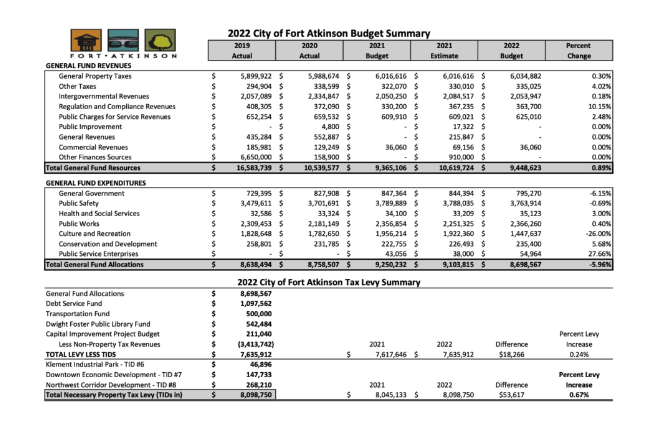
The City of Fort Atkinson 2022 budget summary sheet is here. The full document can be viewed using the link above.
National Coming Out Day celebrated in Fort
(Originally published Oct. 17, 2021.)
The first of three area National Coming Out Day celebrations was held Saturday, Oct. 16, on Fort Atkinson’s Main Street bridge.
Organized by the Unity Project of Fort Atkinson, the “Pride Party” took place from 10 to 11:30 a.m. and drew an enthusiastic crowd.
This marks the 33rd anniversary of National Coming Out Day. It formally is observed Oct. 11, the anniversary of the National March on Washington for Lesbian and Gay Rights.
The idea behind the observance, first held in 1988, is that when people know someone who is LGBTQ+, they are far more likely to support equality under the law. Beyond that, the LGBTQ+ community’s stories can provide powerful support.
Meanwhile, National Coming Out Day events are being planned in Whitewater and Watertown, as well.
Whitewater Unites Lives will hold its Pride event Saturday, Oct. 23, from noon to 1:30 p.m. at the Whitewater Cultural Arts Center.
This event will feature live performances from volunteer members of the University of Wisconsin-Whitewater Warhawk Marching Band, student drag performer Victorya Attwood, singer/songwriter Felix Ramsey and others.
In addition, a Pride gathering will take place
Sunday, Oct. 30, from 3 to 5 p.m. at Latte Donatte, 501 E. Main St. in Watertown. This will be hosted by the Unity Project of Watertown.

Area residents show their support of the LGBTQ+ community with a National Coming Out Day celebration Saturday on the Main Street bridge.

“Mavis,” a French bulldog pug mix, shows her support for the LGBTQ+ community at a “Pride party” on Fort Atkinson’s Main Street bridge. With Mavis are Katherine Hutcheson, from left, and Hillary Hutcheson, both of Jefferson.

Leland Hutcheson, 1, from left, and his sister, Tierney Hutcheson, 4, of Jefferson, attend the Unity Project of Fort Atkinson gathering Saturday with their family.

Dick Schultz, from left, and Nick Bardell, both of Fort Atkinson, show support for the LGBTQ+ community at a Saturday gathering on the Main Street bridge.

Showing their enthusiasm during Fort Atkinson’s National Coming Out Day are Josetta Reed, from right, Stephan Krarup, Melanie Belzer, Amelia Belzer and Willow Severin.

A participant waves a rainbow colored flag at traffic passing over the Main Street bridge Saturday. The activity was in celebration of National Coming Out Day.

Supporters of the LGBTQ+ community gather on Fort Atkinson’s Main Street bridge Saturday morning during a National Coming Out Day celebration hosted by the Unity Project of Fort Atkinson.
Photos by Chris Spangler.
Two injured in traffic accident near intersection of Madison and Banker
(Originally published Oct. 21, 2021.)
By Kim McDarison
Two individuals were transported to an area hospital Thursday after the vehicles in which they were traveling collided near the intersection of Madison Avenue and Banker Road, according to Capt. Chad Lange of the Fort Atkinson Police Department.
Police responded to the intersection at 3:28 p.m. at which time they found a 2014 Nissan Pathfinder which had collided with a 2019 Mitsubishi Outlander. Both are SUV-type vehicles, Lange said.
According to Lange, the accident occurred after the driver of the Nissan Pathfinder, a juvenile female who was of driving age, stopped at the stop sign at Banker Road and began to negotiate a turn onto Madison Avenue, with the intent to continue eastbound on Madison Avenue. The driver of the Pathfinder moved into the path of the Outlander, which was traveling westbound on Madison Avenue.
The front ends of the two SUVs collided at an angle, Lange said.
While a full crash report had not yet been completed, as of Thursday night, Lange said he could report that along with the driver, the Pathfinder had two passengers, both of whom also were juvenile females. One of the occupants was trapped in the vehicle after the crash and was extricated by members of the Fort Atkinson Fire Department. She was transported by ambulance to an area hospital with what appeared to be non-life threatening injuries, he said.
Lange said the Outlander had at least three occupants, two of which he believed were males and one female. Without benefit of the full report, he said, he was unaware of their ages. He believed one of the male occupants of the Outlander was transported by ambulance to an area hospital also with what appeared to be non-life threatening injuries.
The westbound lane of traffic on Madison Avenue was closed and traffic was diverted away from the area for about an hour, Lange said.
The female driver of the Pathfinder was cited for failure to yield at a stop sign, he said.
Among emergency crews responding to the scene were the Fort Atkinson Police Department, Fort Atkinson Fire Department, and Ryan Brothers ambulance service.
This story may be updated.

File photo/Kim McDarison
Former Cornerstone of Hope to open as St. Vincent de Paul Store
(Originally published Oct. 22, 2021.)
By Chris Spangler
Fort Atkinson’s St. Vincent de Paul Store is opening the former Cornerstone of Hope outlet as its own Building Materials Division.
Starting Tuesday, Oct. 26, the nonprofit organization will be selling and accepting donations of gently used and surplus building furnishings. A grand opening will take place at a later date.
The store is located at 1525 Summit Drive, adjacent to St. Vincent de Paul’s thrift store. It began as the Habitat for Humanity Restore in March of 2010 and then changed to the Cornerstone of Hope Home Supply Outlet two or three years later. In 2017, it underwent an expansion that tripled its size.
However, the Janesville-based Christian organization closed its Fort Atkinson outlet on Sept. 20 with no prior notification.
Local St. Vincent de Paul Society President Bill Roberts said that provided an opportunity for the thrift store to expand its service to the community.
“The word that we got is that they weren’t making money, and when we reviewed the financial reports for the last two years, (we saw) they were making money. They just weren’t making the money they expected,” Roberts said of the 4,500-square-foot Cornerstone of Hope store.
He noted that the Homeless Coalition of Fort Atkinson discussed possibly taking over the former Cornerstone facility, but when that did not pan out, St. Vincent de Paul looked into doing so itself, researching the idea with the Diocese of Madison.
“Some volunteers said, ‘Just take us over,’” Roberts recalled, adding that it just made sense. “We own the building; they’re part of us.”
Roberts met with the volunteers and former store manager, all of whom were on board, and then began negotiations with Cornerstone of Hope to work out a deal.
“To me and to our board, it was a no-brainer that we were going to take them on,” Roberts said. “We were getting rent from them, but the fact is, bottom line, we were doing the same things. Our goal and the whole purpose of Cornerstone was the same thing: to help the poor and those in need in our community.”
St. Vincent de Paul assumed ownership Sunday, Oct. 17.
“We were able to keep all of the inventory and a good portion of tools,” Roberts said. “They took equipment that was labeled as Cornerstone’s. We’ve been able to fill that in.”
Cornerstone of Hope had a semi trailer in which it stored donated building materials. Roberts said St. Vincent de Paul is in the market for a replacement trailer for storage.
He reported that new signs have been ordered and the store will open next week with new hours: Tuesday, 10 a.m. to 2 p.m.; Wednesday and Thursday, 9 a.m. to 4 p.m.; and Saturday, 9 a.m. to 1 p.m.
If the number of volunteers grows, store hours might be expanded, Roberts said.
Eventually, St. Vincent’s Building Materials Division will be accepting payment with debit and credit cards, as well as cash and checks from customers it knows.
The Building Materials Division will retain the Cornerstone of Hope telephone number — (920) 568-9345 — once it gets up and running.
“We’re looking at it as another department of St. Vincent de Paul,” Roberts said.
Rick Bleecker will be staying on as store manager, with Carrie Smith becoming general manager of both the Building Materials Division and St. Vincent de Paul thrift store, which was founded in 2007.
In addition, all of 14 regular volunteers, as well as some seasonal ones, are staying on.
“For the volunteers, it is pretty much all turnkey,” Gary Hartman, former Cornerstone of Hope board member, said.
Roberts pointed out the importance of customers seeing familiar faces and being helped by volunteers with construction knowledge when they come through the door.
“We wanted all of the volunteers. We’re not coming in to reinvent the wheel,” he said. “We’re just going to be their support agency. We’re all in it to help the poor.”
Smith noted that St. Vincent de Paul and Cornerstone of Hope always had worked well together.
As an example, Hartman said that often when Cornerstone volunteers were picking up an appliance at a home, a donor would ask them to take a couch or other furniture, as well.
“We would say that we don’t take furniture, but St. Vincent’s does, and we would deliver it to them,” Hartman said.
Adding the new Building Materials Division to St. Vincent de Paul means that a few types of merchandise will be shifted between the two stores.
“For us, we’re not going to duplicate selling stuff. The appliance, tools and hardware that we used to have at St. Vincent will be coming over here,” said Roberts. “They had kitchen stuff and furniture. That will be going over there.
“We’re thrilled to have them part of us and to keep this open,” he added. “Our goal was to get it done as quickly as possible and to make it turnkey.”
Because there is no connecting door between the two stores, he noted, customers will have to pay for their purchases at each individual site.
The acquisition of the Building Materials Division comes as the St. Vincent de Paul Store continues to feel the effects of the COVID-19 pandemic.
As with many businesses, neither St. Vincent nor Cornerstone of Hope was open the first month-and-a-half to two months after the coronavirus pandemic started in March 2020. When they did reopen, many volunteers and potential shoppers were not ready to return.
At the same time, people who stayed at home during the pandemic found time to clean out closets and attics, filling the thrift store’s warehouse with donations.
“People were cleaning house, getting rid of the clutter,” Smith said. “We got a lot of nice stuff. People were downsizing, changing how they look at things and what they keep and don’t keep. And people don’t want to throw things out. They want to donate them so they will be used.”
Roberts said the St. Vincent de Paul Store was in a unique situation when the pandemic began.
“The year before COVID, we remodeled the store,” he said. “We were closed down for another two months before that. And then to come out of that and next year’s there’s COVID …
“So we were in a difficult situation and we’re still not where we used to be pre-COVID, but things are starting to get better,” he added.
The St. Vincent de Paul Store remains in great need of volunteers. In fact, it is launching a drive for new helpers or groups interested in night hours.
“They can come in after work or school. We always have stuff we can have volunteers do, and for young people, this is a great way to get community service hours,” he said.
Persons interested in volunteering may call Roberts at (920) 563-5343.
He also pointed out that in addition to the pandemic, the closure of Shopko has affected the thrift store.
“Since Shopko closed, we’ve seen an increase in traffic. People are looking for kitchen items. We’ve looked at adding some new things, like socks, underwear and kitchen utensils, because we don’t have a place in Fort to buy them right now.”
It’s all about providing what the community needs, he emphasized.
“The store exists for the ministry, and that’s to help the poor,” Roberts said. “That’s the foundation of St. Vincent de Paul and that’s what the Building Materials Division will be operating under, as well.”
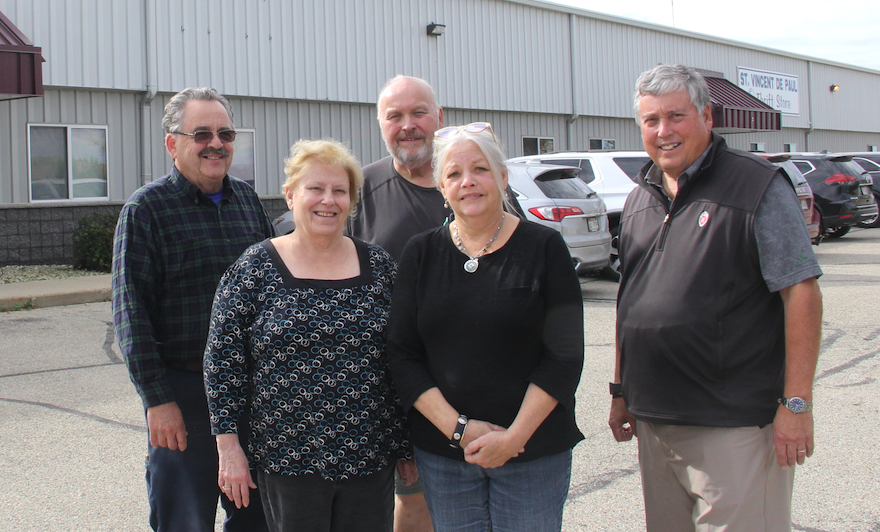
Gary Hartman, from left, Karen Daniels and Barry Sprifke, all of the new Building Materials Division; Carrie Smith, general manager of both St. Vincent de Paul stores; and Bill Roberts, president of the St. Vincent de Paul Society in Fort Atkinson are preparing to welcome visitors to the new St. Vincent de Paul Building Materials Division thrift store. The St. Vincent de Paul Society in Fort Atkinson has acquired the former Cornerstone of Hope store and on Tuesday will open the new division.

Gary Hartman, at left, and Barry Sprifke check inventory at the new St. Vincent de Paul Building Materials Division, which will be opening Tuesday.
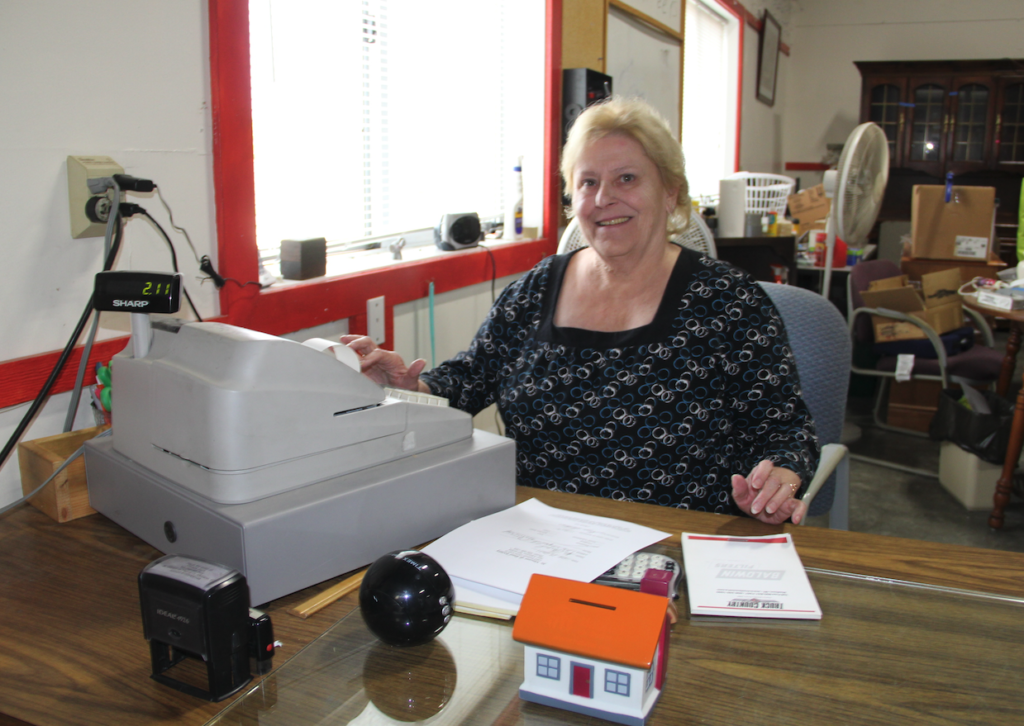
Karen Daniels is ready to greet customers and check out their purchases at the St. Vincent de Paul Building Materials Division, formerly Cornerstone of Hope.

A blackboard notes that a recycling mission over the last several years has kept some 25,000 pounds of metal out of area landfills. The St. Vincent de Paul Building Materials Division plans to continue Cornerstone of Hope’s mission of recycling.
Chris Spangler photos.
2,000 attend Haunted Hike at Haumerson’s Pond
The Friends of Haumerson’s Pond drew a large crowd over the weekend to the Haumerson’s Haunted Hike held Friday and Saturday nights.
Organizers said Monday that over 2,000 event-goers arrived to hike the trails and enjoy a special kid-friendly area over the course of the two-night event, and some $5,000 was collected in support of a storage facility project.
The event took place at the Haumerson’s Pond warminghouse and Bark River Nature Park trails in Fort Atkinson.
Proceeds from the sixth annual fundraiser will be going toward building a storage facility to house the Friends’ ATV, hockey goals and ice-grooming equipment.
Following are photos from the event.
Chris Spangler photos.
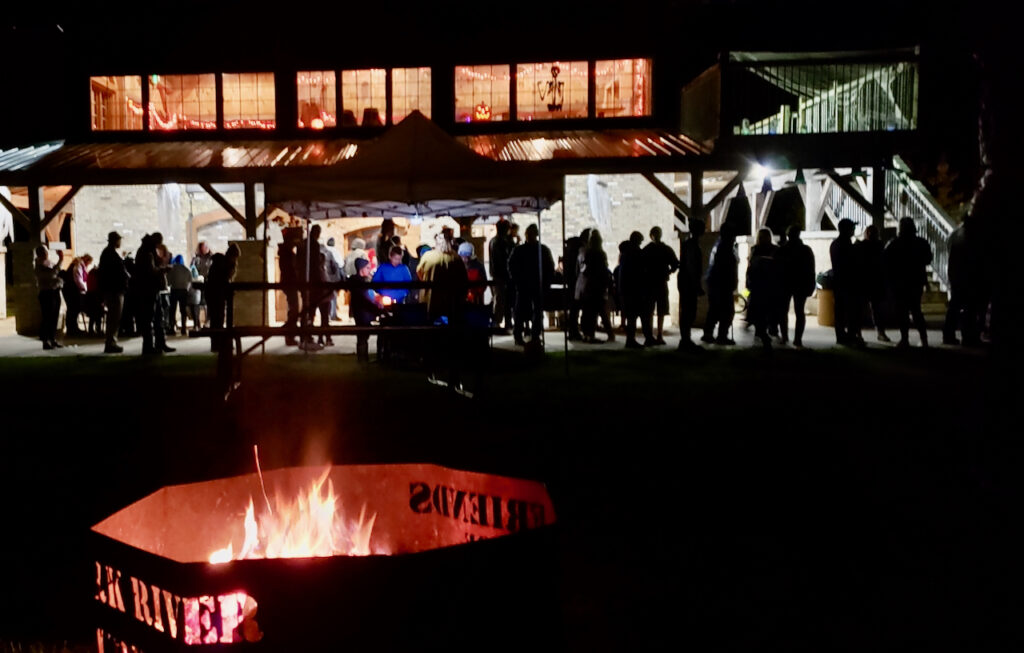
The line for the Haunted Halloween Hike stretches past the Haumerson’s Pond warminghouse Friday night.
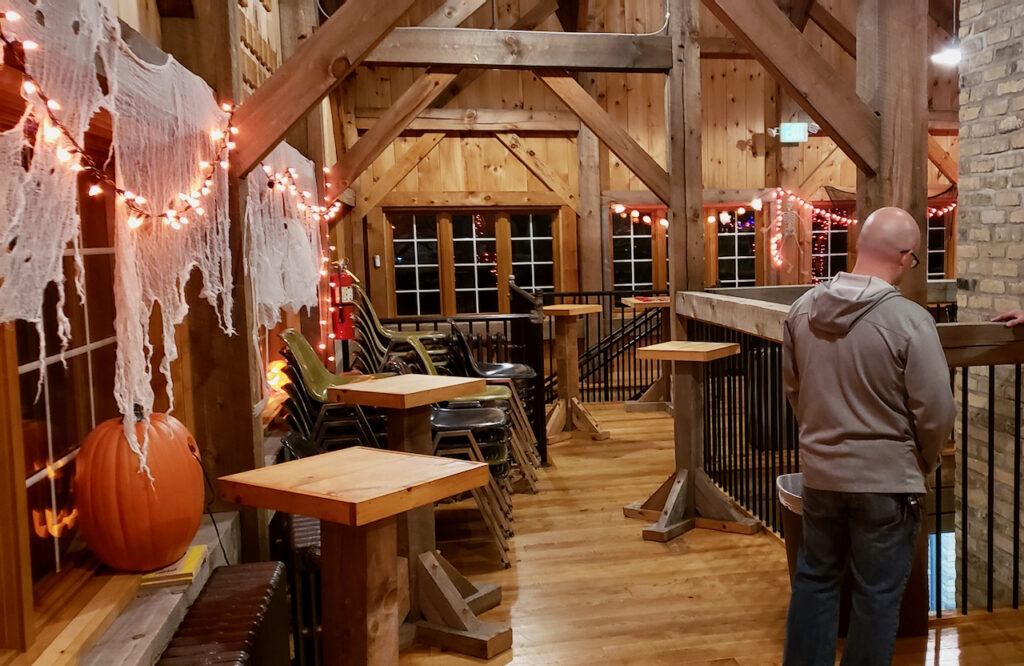
An event participant enjoys the structure and history of the Haumerson’s Pond warminghouse. The structure’s second floor was decorated Friday for Halloween.
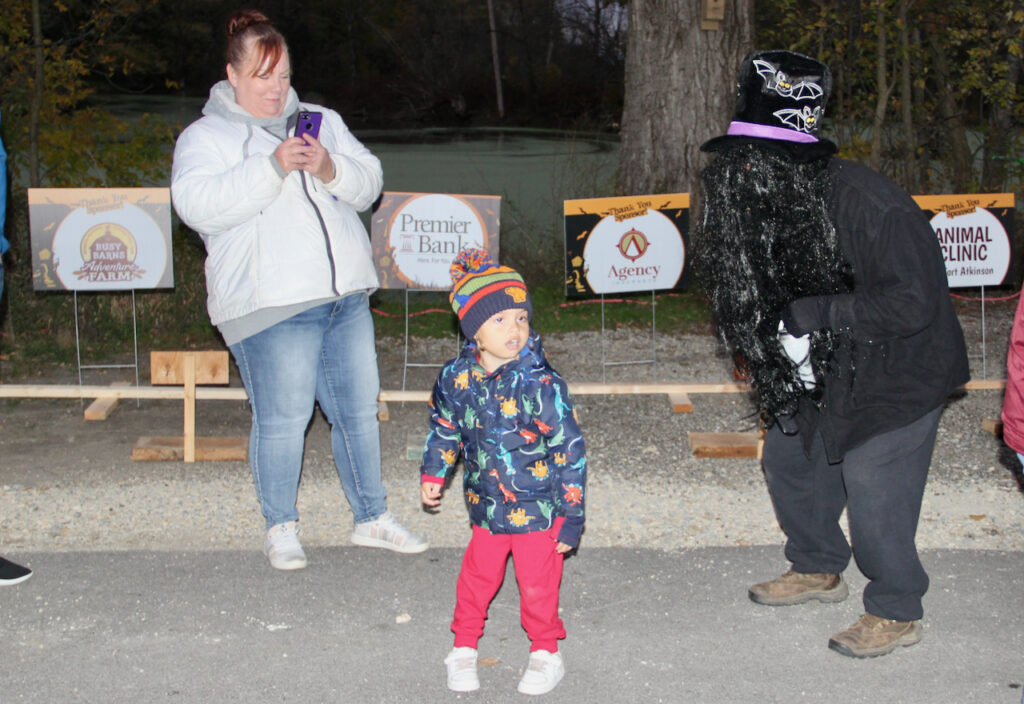
A youngster is surprised by a hairy haunter while in line for the Haunted Halloween Trail Friday.
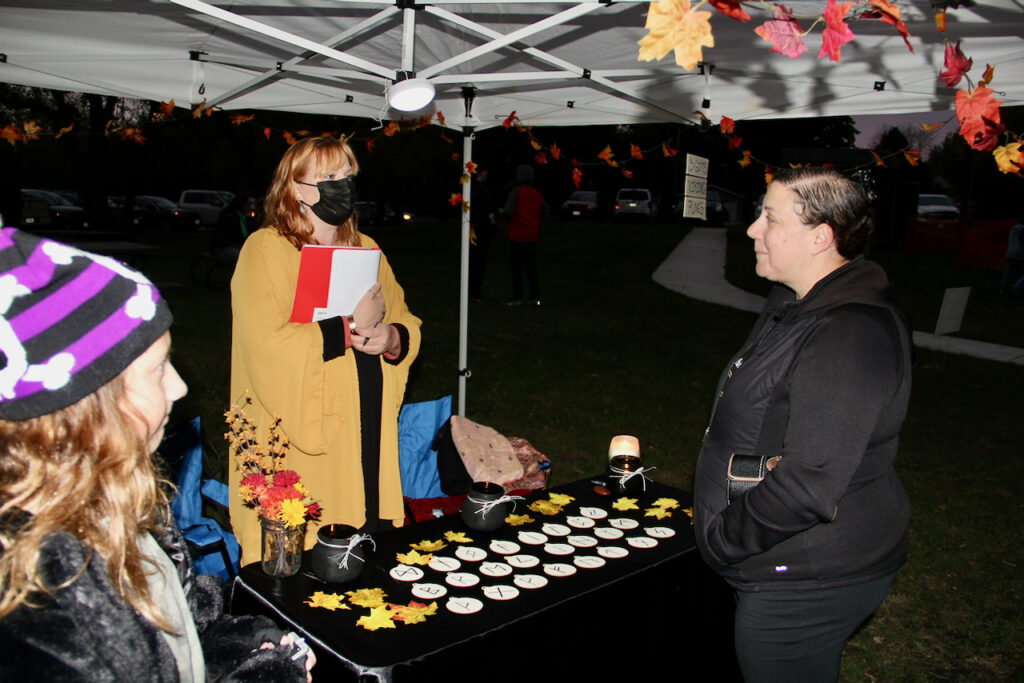
Nicci Peterson, center, tells the fortune of Harriet Kester, at right, of Watertown. Peterson uses Viking runes, which requires the selection of three tokens to tell the past, present and future.

Members of the Fort Atkinson High School National Arts Honor Society manning a children’s craft table help youngsters make beaded bracelets.





Five photos above: Children play games such as beanbag and “bone” toss with costumed characters that include a friendly witch and a pirate, who, when the light shined just right, looked remarkably like high school automotive teacher Justin Buntrock. The Haunted Halloween Hike at Haumerson’s Pond and the Bark River Nature Trail featured a kid-friendly trail for young children.

Fort Atkinson High School FFA members Marnie Draves, from left, Diamond Newman and Erin Dahnert sell refreshments to Haunted Halloween Hike guests Friday night.

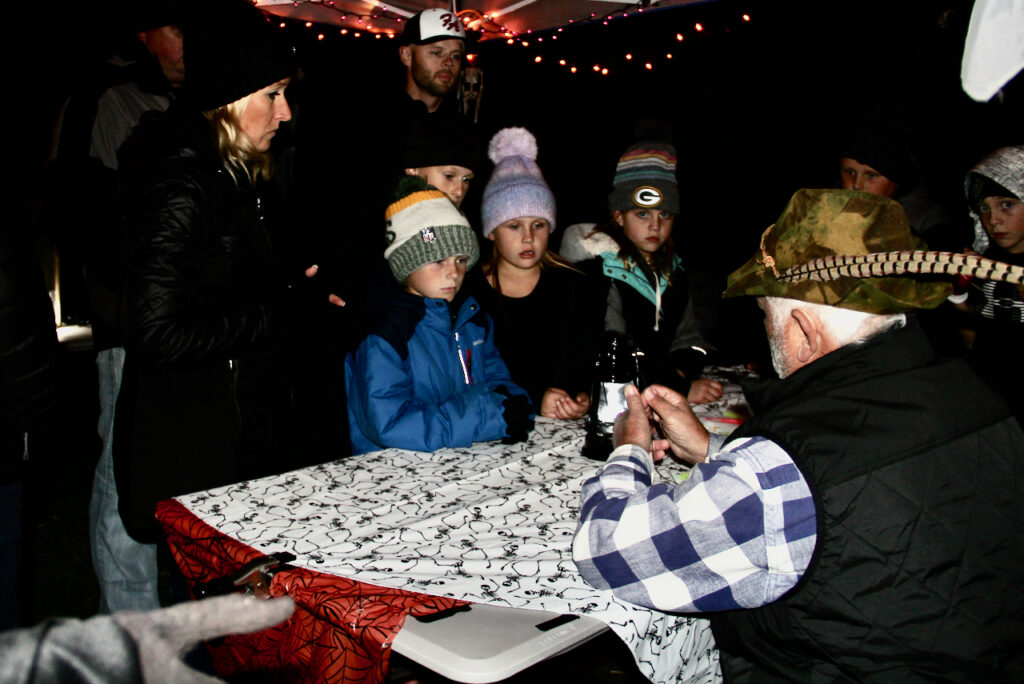
Friday night attendees arrive at the entrance to the Haunted Halloween Trail at Haumerson’s Pond and the Bark River Nature Park in Fort Atkinson.

Dianne Hrobsky, from left, her granddaughter, Addison, and husband, Joe, take a Haunted Halloween Hike Friday. The couple is from Fort Atkinson and Addison is from Milton.

Youngsters select free comic books at the Planet Chaos table. The company is a sponsor of this year’s Haunted Halloween Hike.
Verhalen honored at State Capitol
(Originally published Oct. 27, 2021.)
Capt. Paul Verhalen, of the Fort Atkinson Fire Department, along with first responders from across Wisconsin, each representing an Assembly district, assembled at the State Capitol yesterday to receive a legislative citation from their respective Assemblymen.
The citations were awarded as part of the 2021 First Responder of the Year/First Responders Hometown Heroes Award, a recognition begun in 2019, according to a press release from Rep. Cody Horlacher’s office.
Nominations for the distinction opened in September.
Nominees can include police officers, sheriff’s deputies, firefighters or any level of EMS personnel that exemplify community service, selflessness, and dedication, according to the release.
Horlacher selected Verhalen to represent Wisconsin’s 33rd Assembly District after receiving his nomination from Fort Atkinson Fire Chief Daryl Rausch, who, in part, wrote:
“Paul Verhalen has been a volunteer member of the Fort Atkinson Fire Department since 1989 and has served in multiple positions as a Firefighter, Driver/Operator, Lieutenant and Captain. He also serves as one of our primary training officers. Paul also works as a career Lieutenant/ EMT for the Janesville Fire Department.
Paul has been a dedicated and active member of our department for many years. While his on-going dedication of service to the Fort Atkinson community certainly qualifies him to be considered as a First Responder of The Year Award, I respectfully nominate him based on a specific incident which occurred recently.”
Rausch continued:
“On August 10, 2021 our community faced the largest single incident that any of our members can remember. A warehouse complex of more than 140,000 square feet caught fire just before noon. The incident quickly escalated to a 5th alarm incident with numerous ‘special’ calls and ultimately involved 62 fire apparatus, 215 firefighters from 48 departments from central and southern Wisconsin and northern Illinois. Through the heroic actions of our firefighters and mutual aid partners, the fire loss was stopped in the original fire area and a significant portion of the complex was saved.
“Well into the incident, Captain Verhalen and another firefighter were operating in the interior of the building directly adjacent to the fire area to ensure the fire did not breach a fire wall and extend into the next building. While these two members were operating in the building they were near a large wall of windows facing the fire area.
“A strong thunderstorm with high moved through the area. As the front moved through the high wind caused one of the large windows, which had been exposed to the extreme heat from the fire in the adjoining and attached fire building, to fail and collapse. When it collapsed, it fell onto Captain Verhalen’s partner firefighter; in so doing, it severed the brachial artery in the firefighter’s right arm. Paul, with great presence of mind, quickly affixed a makeshift tourniquet on the firefighter’s arm to stem the ‘spurting, bright red blood’ declared an emergency and requested immediate medical assistance.
“The ambulance crew was on the opposite side of this very large building so Captain Verhalen gave continual radio updates while continuing lifesaving measures. Captain Verhalen, ultimately carried the firefighter, on his back, down a flight of stairs, out of the building, and through a ditch flooded with waist-deep runoff water to deliver him to the EMS crew who were then arriving on scene. Paul did all of this in under four minutes.”
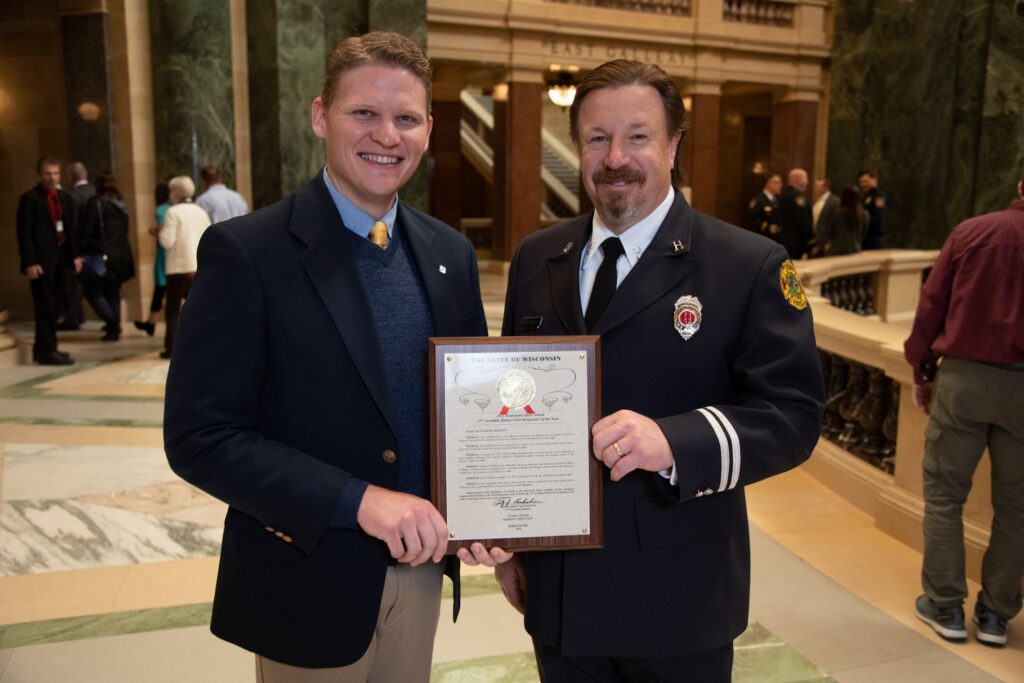
State Rep. Cody Horlacher, at left, presents Capt. Paul Verhalen, of the Fort Atkinson Fire Department with a legislative citation. Verhalen was chosen to receive the First Responders Hometown Hero/First Responder of the Year Award, representing the 33rd Assemble District, for his heroic act of saving a fellow firefighter during the five-alarm warehouse fire in Fort Atkinson on Aug. 10. He, along with other first responders selected for the distinction from across the state, received the citation yesterday afternoon. Contributed photo.
Masks optional at high school, required for students in grades 4K-8
(Originally published Oct. 27, 2021.)
By Kim McDarison
The School District of Fort Atkinson Board of Education deliberated Tuesday for over an hour before approving two new protocols for masks affecting students and staff.
New protocols, beginning Wednesday, Oct. 27, include optional masking for students and staff at the Fort Atkinson High School.
Masks continue to be required indoors in all district buildings for all students and staff, while children are present, in grades 4K-8.
The district’s requirements make an exception for students in grades 4K-8 who are participating in co-curricular athletic activities. The exception applies to students who are actively engaged in the athletic activity. Those waiting to play or “sitting on the bench” are required to wear masks, according to the new protocols.
An exception to masking for students in grades 4K-8 who are actively participating in performances also was approved.
The new protocols will remain in place until Dec.16, at which time they will be allowed to expire unless new action is taken.
No action by the board was required to allow the earlier mask requirement at the high school to expire, School District Superintendent Rob Abbott explained Tuesday.
Action to extend the requirement for 4K through eighth-grade students and staff was approved by a 4-1 vote, with board member Amy Reynolds voting against the measure.
Action to allow an exception to masking for students in grades 4K-8 who are actively participating in a co-curricular athletic activity received unanimous approval.
A motion, extending a mask requirement for students in grades 4K-8 engaged in all school activities, crafted to continue the mask requirement when students in grades 4K-8 are participating in school events at the high school, was also approved by a vote of 4-1, with Reynolds casting the ‘no’ vote.
Twelve speakers
During Tuesday’s meeting, 12 district residents and extended community members, some of whom identified themselves as residents of Jefferson and Sullivan, made public comment. A majority spoke against continuing a mask requirement for the district.
Fort Atkinson resident Ron Martin said his two children graduated from Fort Atkinson High School “in the past decade.
“And I learned in the past month, I’m also a domestic terrorist,” as defined, he said, by the president of the National School Boards Association (NSBA), whom, he noted, wrote a six-page letter in September, stating, according to Martin, “that some parents’, and I quote: ‘heinous actions could be the equivalent to a form of domestic terrorism and hate crimes.’”
He noted that the letter “prompted a forceful response from (U.S.) Attorney General Merrick Garland,” and the letter and Garland’s response received nationwide attention from parents and parent advocacy groups.
“The NSBA letter acknowledges the need to hear parents; the letter also states that America’s public schools and its education leaders are under an immediate threat from parents. I guess I’m one of those simply for showing up tonight and exercising my First Amendment rights,” Martin said.
“This is where we are in today’s America,” he said.
Martin continued: “In Fort Atkinson, the school board president at the school board’s last meeting during mask policy debate, said: ‘we have some great parents in this district. Others are not so good. In those cases, we need to do much of the heavy lifting in parenting those kids.’
“I’m personally offended, Mark.”
He was interrupted by board President Mark Chaney for making personal attacks.
Fort Atkinson resident Sara Forester told the board she had sent emails to members and received few responses. Referencing an email she claimed to have sent a month ago, she read: “I have reviewed the most recent communication from the district regarding the updated COVID mitigation policies with the mask mandate for the entire district. The communication indicates if students do not comply with the mask mandate the student would be subject to disciplinary actions according to the student code of conduct.”
She reviewed the handbook and student code of conduct section, she said, adding that she did not see specific information about the mask mandate. She also did not see, she said, the mandate included as a policy or bylaw of the board.
“County, state and federal agencies have provided recommendations to school boards, but these are not laws or ordinances,” she said.
She asked: “How can we enforce noncompliance of something that is not even listed as mandatory in the handbook? How do I know if I’m being noncompliant if it is not an official rule, bylaw or policy? How can something be legally enforced if it’s not an actual policy or bylaw?”
She pointed to what she described as a “masking agreement” presented to students by a high school teacher, which contained, she said “inappropriate language.” Citing the agreement, she claimed the agreement informed students that they would “suffer the indignity of having a mask mandate violation written in your permanent school record.”
“Any type of agreement given to our children should also be sent to the parents for review. This is unacceptable and it makes me wonder if other teachers are using tactics like this as well.” Forester continued.
She asked the district to allow students and parents to make decisions about masks.
Addressing Chaney, she said: “you will never have a right to parent my children.”
Fort Atkinson resident Dale Prisk said he believed the Jefferson School District was handling mask requirements better than the School District of Fort Atkinson.
“They have a plan; their plan is allowing kids to get the best quality education they can,” which is in-person learning, he said, adding: “kids just learn better without a mask on.”
Looking at data on the district’s website, he said, “we have less cases in our district than Jefferson and we are requiring these masks.”
“At some point, masks have to come off,” and, he said, “if they can’t come off now, when we have 11 cases in our entire district of 2,700 students … when are we taking them off?”
Fort Atkinson resident Jon Winski said: “freedom to not mask creates personal comfort … but it also risks unintentional spread of COVID. The freedom to mandate masks prohibits the unintentional spread of COVID to about 99% of us. It is a very few, less than 1%, who can’t wear masks. I have surgical experience,” he said, adding that he is required to wear a mask during surgical procedures. He can function normally while wearing his mask, he said, adding, “last I checked, numbers in Jefferson are going down, that’s good, but I think enrollment is also going down in our schools. Like many, my family has chosen online, virtual schooling, that’s not our first choice, we’d love to have our kids back; I believe kids do learn best in person … but right now, the risk is just not worth it to us.”
He asked the board to follow CDC’s recommendations.
Roni Doebereiner, Fort Atkinson, said she grew up and went to school in Jefferson, but chose to move to Fort Atkinson.
“I am ashamed of this district. I pulled my children and put them in Jefferson,” she said, adding that she has sent emails to the board and is “aware, how you don’t respond.”
“To use a child’s death to mask these children, I think you know, it’s bull … and Mr. Chaney, I think you should resign,” she said.
Kurt Horwath, Fort Atkinson, said he has addressed the board for the last three meetings. He said he wanted to remind the board that “we are in America, where an oath was taken: one nation under God.” He next read a Bible verse. He asked for love and respect from and for everyone.
“We have a good district, but this is really tearing us apart,” he said. He advocated for parental choice relative to masks.
Ashley Weiser, Fort Atkinson, said she was appreciative of the board’s decision to require masks, noting that the number of cases in her daughter’s kindergarten class was “drastically reduced,” and she felt safer. She asked the board to continue to require masks until children could be vaccinated.
Amy Larson, Fort Atkinson, said she believed an earlier decision to go back to requiring masks was based on “emotions and outside pressure.” She asked the board to look “purely at numbers,” saying “we will never have zero cases.” According to data, she said, the district has a 4/10ths of a percent positive rate. She proposed the district use 3% as a threshold. When the infection rate goes above that metric, she said, the district could mask. When below the threshold, the district could allow parental choice. She said the Jefferson School District was using a similar metric. She also asked for more transparency, saying the district needed a “more in-depth dashboard, front and center on our website, one you can actually find, so we all know where we are at and where we need to get.”
She praised districts in Jefferson and Whitewater, which, she said, “are doing an extraordinary job.”
Sullivan resident Cheryl Metcalf said her children go to Jefferson schools. “We’ve got an excellent and awesome plan,” she said, adding that she is a registered nurse and she has “serious concerns with the way this is being handled. I get that you are following CDC guidelines, but my challenge is this: critically think for yourselves.” She asked: “Why have the CDC guidelines remained constant when all of the variables around the disease have changed?”
According to Metcalf, COVID-19 is not overwhelming any pediatric units in area hospitals. She said cases without serious illness “are a good thing; they are helping to increase immunity in a population that cannot yet get the vaccine.”
The end of a pandemic comes when the population becomes immune to the disease, she said.
According to Metcalf, 725 kids have been infected in Jefferson County, and, she said, “that’s 725 kids that are naturally immune now.”
Of the 725, she said, 4 kids went to the hospital. “None of them are still there,” she said.
She called masking “hygiene theater.”
Jennifer Slak, Fort Atkinson, thanked the board for following CDC guidelines for the last month, saying: “We truly believe it has made a difference. Positive cases are declining and, as far as I am aware, there have been no major outbreaks.”
According to Slak, she learned, “through a reputable source, our home hospital’s ICU is full of COVID patients right now.” She asked the board to keep the mask mandate in place until at least the January board meeting, by which time, she said, she hoped all eligible children whose parents wanted them to be vaccinated, would have an opportunity to do so.
She said she would take her children out of school if he board allowed the mask requirement to expire.
Jefferson resident Christie Cook said she is a registered nursing who works in the Fort Atkinson area. She has five children, whom, she said, attend Fort Atkinson schools. As part of her job, she explained, he goes into people’s homes, most of whom, she added, are elderly. She called COVID, as it related to elderly people, “a crisis we are facing.” In her experience, she said, people under the age of 50 are not facing serious disease unless they have co-morbidities.
She asked the board to let parents decide whether their children should wear masks.
Dan Neugart, Fort Atkinson, thanked the board for adopting the mask requirement at the last school board meeting. He told the board that he hoped it would not lift the requirement “too soon,” sending the district back to a potential for rising cases. He suggested the requirement be extended to the January school board meeting at which time it could be readdressed. In addition, he suggested the district partner with Jefferson County to offer vaccination clinics for children when the vaccine becomes available.
Board deliberations
Prior to board discussion, Abbott shared information which centered largely on COVID-19 statistics and the various decisions the board might make to end or extend a mask requirement.
Aided by slides, Abbott noted that the district’s current number of positive student COVID cases is 11 and the current number of positive staff cases in 1. The district’s dashboard is updates every Friday, he said.
Addressing the use of metrics to make decisions about COVID-related policies, Abbott said, in the past, metrics used were delineated by government agencies as opposed to the district arbitrarily making its own determinations, and “a great many” community members told the board they thought the practice imposed decisions on mitigation strategies, adding that determination through the use of more local impacts might, in their estimations, prove more appropriate for Fort Atkinson.
Some area districts have started to use locally determined metrics for mask use, Abbott said, adding that the metrics have not been based on actual guidance as far as he was aware.
“One district was using a 3% positivity rate to determine mask use and another, with a virtually identical dashboard, used a measure of less than 1% in some cases,” Abbott said.
If the district were to return to a metric-based system, Abbott said, he believed the determined decision-making points would be viewed favorably by some community members and negatively by others.
Still, he said, district staff could explore the option at the board’s request.
Abbott reminded the board of policies in place to alert families about exposures to COVID at school and the various choices offered to families who have a family member who has been exposed to a person who has tested positive.
Choices include quarantining, getting a COVID test, and wearing a face covering when returning to school.
Last year, during the time when the district had in-person learning, Abbott said, 872 students were quarantined after being identified as a close contact. Of that number, 21, or 2.4%, became COVID positive during their 14-day quarantine. Some may have contracted the virus outside of school, he said. Of the 21 students, he continued, 13 were at the high school, five were at the middle school, and three were at one of the district’s elementary schools.
“All positive cases do not originate at school, Abbott said. “It is very hard often times to determine exactly where one contracted the virus,” he added.
He offered a list of considerations for the board relative to mask requirements.
If the board took no action, he said, the district’s mask requirement would expire and the district would return to a mask-optional policy.
The board could take action and impose one or several of the following options:
- Maintain indoor mask requirements for all when students are present.
- Require indoor masking for non-vaccinated eligible populations when students are present (the requirement would apply to students in 4K through eighth grade).
- Require indoor masking for large indoor gatherings such as auditorium events, athletic contests and assemblies.
- Allow an exception to a mask requirement when a student is actively engaged in a sport or a performance. The measure would require masks for students not actively participating in the activity, but allow a student actively engaged in the sport or performance to remove the mask.
During discussion, board member Kory Knickrehm said he believed a decision about mask requirements had been made more complex since the board’s last meeting because some athletic activities were moving indoors.
Board member Adam Paul said he was supportive of the idea of allowing athletes participating in sports to remove their masks, citing the distinction that students participating in extracurricular activities like sports could make a decision not to participate. The activity was not compulsory.
“I don’t expect kids to be running up and down a basketball court with a mask on,” he said.
Board members noted that students at the high school level have had opportunities to be vaccinated. They found agreement in allowing the mask requirement at the high school level to expire.
Board member Rhona Buchta said she was supportive of keeping a mask requirement in place long enough to allow younger students an opportunity to be vaccinated.
Citing an extension of a mask requirement at the middle and elementary school levels, she said: “I don’t want to do this forever, but I do think it’s important to give parents who want to have their kids vaccinated and can’t right now, a chance to do that. It sounds like that’s going to happen real soon here in November.”
Board members discussed keeping the mask requirement at the elementary and middle school levels active until Jan. 20, which is when this year’s first semester will end. Many felt that was too long.
Paul said that while he believed the mask issue was important, having to revisit it at every board meeting was distracting the board from its other work.
Said Reynolds: “This is a public health issue. This is not a school board issue. The Jefferson County Public Health Department should be the ones making these decisions and not us. If they don’t say everybody needs to mask; if they’re not telling us that … I don’t think we should. I think we should follow them, because they are obviously the experts in public health, and they’re not putting out any end dates. They’re not saying that they require anything. They are giving strong recommendations.”
She expressed frustration with what she called the department’s inconsistencies, adding: “They need to do their job.”
Said Abbott: “I have been in communication with the county a great deal over the past year and a half or so. Most recently, I directed a letter to their leadership quite explicitly letting them know of my and your displeasure with the fact that they were not moving beyond recommendations and that they were leaving it to individual school boards, which triggered a meeting with their leadership at Luther (Elementary School) a week or so ago.”
His impressions after the meeting, he said, were that the department had “no interest in changing their operation from what has been to now.”
Reynolds restated her position that she believed masking should be a parent’s choice.
“I think they need to wear them a little longer,” Paul said.
Chaney agreed, noting that he supported keeping a mask requirement for students in grades 4K-8 until they could be vaccinated.
Board members agreed that Dec. 16, which is the date of the board’s December meeting, would allow enough time for children to be vaccinated.
“We can always revisit it, we are not saying we can’t,” Knickrehm said.
Without extenuating circumstances, Buchta said, she did not see a need for the board to revisit the issue until Dec. 16, at which time, she said, she hoped the requirement would be allowed to expire for all students within the district.

Parents and community members fill the gallery Tuesday as the School District of Fort Atkinson Board of Education again determined masking protocols. As of Wednesday, Oct. 27, masks are optional at the high school, and required for students in grades 4K-8, with some exceptions. The full board meeting can be viewed below.
Fort man killed in rear end crash in Milton
(Originally published Oct. 31, 2021.)
Update: Jeremy Jorgensen is the Fort Atkinson man who died in a weekend car accident, according to the Rock County Medical Examiner’s Office.
A Fort Atkinson man was killed Saturday when the truck in which he was traveling became involved in a rear-end collision in the town of Milton.
According to information released by the Rock County Sheriff’s Office, deputies from the Rock County Sheriff’s Office, Milton Police Department and the Milton Fire Department responded at 3:32 p.m. to a two-vehicle crash occurring on State Highway 26 north of County Highway N.
The release stated: Investigation showed a 1990 Dodge W250 truck with a trailer, being driven by a 30-year-old male from Elkhorn, was northbound on State Highway 26 and began to turn into a driveway. A 2019 Hino 238 commercial box truck, being driven a 37-year-old male from Fort Atkinson, was also northbound and struck the rear end of the trailer being towed by the Dodge truck. A 35-year-old male from Fort Atkinson, who was riding as a passenger in the 2019 Hino 238 commercial box truck, was pronounced dead at the scene.
The identity of the deceased is being withheld pending notification and will be released at a later time by the Medical Examiner’s Office, the release continued.
State Highway 26 was closed for approximately five and a half hours for investigation, towing and recovery operations, and was reopened shortly before 9 p.m.
The Rock County Sherriff’s Office was assisted by the Wisconsin State Patrol, MD1, Janesville Fire/EMS, Clinton Fire/EMS, Rock County Highway Department, and the Medical Examiner’s Office, according to the release.
City 2022 budget includes some Tax Incremental Financing District funding
(Originally published Oct. 31, 2021.)
By Kim McDarison
The City of Fort Atkinson held a budget workshop Tuesday Oct. 12. A public hearing on the proposed 2022 budget is scheduled for Nov. 2.
Along with anticipated revenues and expenditures within the city’s general fund were budget items under consideration for the city’s three tax incremental financing districts (TIDs) Nos. 6, 7 and 8.
In 2022, the city is proposing to fund projects within each of its three TIDs with a portion of funds coming from the tax levy.
The draft budget summary, as presented during the workshop, shows total general fund resources estimated in 2022 at just under $9.45 million.
In 2022, the estimated tax levy, not including adjustments for the city’s three TIDs, is $7,635,912.
After adjusting for funds to be invested in TIDs, the full estimated levy in 2022 is $8,098,750, which shows a tax levy amount of $462,838 to be spent on projects in 2022 within the city’s three TIDs.
In 2021, the full estimated levy, including monies collected through the levy to be spent on operational expenses as well as within the city’s three TIDs, was $8,045,133. TID expenditures in 2021 were not itemized on the draft budget summary. The draft shows an increase of $53,617, or 0.67%, in total tax levy-generated funds, including those earmarked for operational expenditures and TID spending, in 2022 over 2021.
Without the proposed expenditure for the TIDs, the document shows, the city’s levy in 2022 would represent an increase of $18,266 or 0.24% over that of last year.
Projects within the three TIDs identified to receive tax levy funding in 2022 include: Klement Industrial Park, TID No. 6, $46,896; downtown economic development, TID No. 7, $147,733, and northwest corridor development, TID No. 8, $268,210.
The draft provides an estimated mill rate for city taxpayers of $8.75 per $1,000 of assessed property value, which, City Manager Rebecca Houseman LeMire noted in a recent memo to the Fort Atkinson City Council, is slightly up from last year’s mill rate of $8.64 per $1,000 of assessed property value. The mill rate, as presented by the city, represents funding to be appropriated from city taxpayers to fund the operations of the city and TID districts, and does not include levies from other taxing jurisdictions such as the state, county, technical college and school district.
An earlier story focusing on the city’s draft operating budget, including line items within the general fund, is here: https://fortatkinsononline.com/city-shares-2022-draft-budget/.
What is tax incremental financing?
According to an overview published by the Wisconsin Economic Development Association (WEDA), titled: “Tax Incremental Financing: An Analysis of Wisconsin’s Most Important Economic Development Tool,” the Wisconsin Legislature adopted tax incremental financing (TIF) statutes in 1975. The financial tool is meant to facilitate tax base expansion within municipalities, which, in turn, is meant to create revenues to fund projects to support economic and industrial development, job growth, urban renewal and tourism.
The process allows a municipality to establish a geographical area, called a tax incremental financing district, or TID. Once established, the assessed value of the geographical area is frozen. That frozen value is called the “base value” of the TID. During the process, the taxing jurisdictions, which receive tax revenues from the TID, agree to receive tax revenues on the base value only for a set period of time. As the TID’s assessed value increases, by virtue of growth through investment over the base value, those revenues, called an “increment,” are placed in a separate fund, with those dollars used to fund investment projects over the life of the TID. When the TID closes, or sunsets, tax revenues created from the full assessed value of the TID, including the base and increment, are returned to the original taxing jurisdictions. When the TID closes, the value of the taxable property within the TID is meant to be higher than the taxable value of the property at the time that it was frozen. A goal of tax incremental financing is that the increment created within the TID will fund investment and increase the value of the property within the TID. TIDs, depending on their purpose, typically have a life of between 23 and 27 years.
Included within the process of forming a TID is the establishment of a municipal Joint Review Board. Its purpose is to approve the creation of the TID and, in so doing, determine that, “but for” the public investment afforded by TID expenditures, sufficient development or improvements within the TID would not occur.
The Joint Review Board’s voting members include representatives from the host municipality and taxing jurisdictions whose revenues will be affected by the TID, including the county and school district.
In Fort Atkinson’s case, that also includes the area technical school.
Once created, eligible TID costs, coming in the form of investments in the TID, are paid from property tax revenues generated as increment by increased taxable property values within the district.
“TIF is not a tax cut nor a tax increase, but an allocation method for incremental property taxes collected within the district,” The WEDA document states.
Additionally, the document states, state statutes outline the maximum life of a TID, how much of a community’s value can be in TIDs, reporting requirements for TIDs, the process for creating a TID, and what costs are eligible to be reimbursed or paid out.
When creating a TID, its purpose must be designated. Wisconsin statutes currently allow for blight remediation, conservation or rehabilitation, industrial, mixed-use, town, and environmental remediation.
The full document, produced by Baker Tilly Virchow Krause LLP in 2019, is here: http://www.weda.org/wp-content/uploads/2020/01/TIF-study.pdf.
Fort Atkinson’s three TIDs
Within information shared in July with the city’s Joint Review Board, LeMire wrote: “2015 Act 257 was enacted by the State of Wisconsin on March 1, 2016, and requires municipalities that have Tax Incremental Financing Districts (TIDs) to have a standing Joint Review Board (JRB) in existence for the entire time that any TID exists. It also requires that the standing JRB, which is made up of representatives from the overlying taxing jurisdictions, meet annually to review the TID report that describes the status of each TID located in that municipality.”
A report must be reviewed by the board annually on July 1, or as soon as an updated report becomes available, and must include “several financial metrics in order to demonstrate the TIDs’ performance over time, LeMire noted. The report must be filed with the Wisconsin Department of Revenue.
A detailed look at the city’s three TIDs, as outlined within LeMire’s memo, follows.
TID No. 6
TID No. 6 was opened in 2000 for the purpose of developing the city’s Klement Business Park, with 2018 being the last year that the TID could incur investment-related costs.
The TID was designated as “distressed” in 2011. The designation allowed the city to extent its life by 10 years to help recover the invested costs of improvements.
According to state statutes, a distressed TID is one that has shown its project costs and debt can not be paid within the normal life of the TID. The statute granted a distressed TID an extension up to 10 years past its original termination date to recover its costs. A designation of “severely distressed” allowed an extension up to 40 years past a TID’s original termination date to recover its costs.
Statutes further state that a municipality can no longer designate an active TID as distressed or severely distressed. This provision sunset on September 30, 2015.
Additionally, the designation allowed the city to designate its other two TIDs, Nos. 7 and 8, as donor TIDs to distressed TID No. 6, which allowed the city to move “excess increment” from the donor TIDs to the distressed TID, LeMire explained.
“In 2020, TID No. 7 allocated $177,000 and TID No. 8 allocated $400,000 to TID No. 6. This TID is required to close by 2033, however, it may be terminated early if/when all costs are recovered,” LeMire wrote.
According to the proposed 2022 draft budget, $46,896 is also being proposed for use within the TID, with those funds coming from the tax levy.
TID No. 7
TID No. 7 was created in 2000 for the purpose of blight elimination and consists of the city’s downtown area, with 2022 slated as the last year the TID can incur tax incremental finance-related investment costs.
The TID was scheduled to close in 2027, however, LeMire wrote, because it has been designated as a donor to distressed TID No. 6, its life can be extended to 2033. In 2020, TID No. 7 allocated $177,000 in increment to TID No. 6.
According to the proposed 2022 draft budget, $147,733 is also being proposed for use within the TID, with those funds coming from the tax levy.
According to LeMire, tentative future plans for the TID include possible streetscape and Riverwalk improvements in 2022.
Plans further call for closing the TID when costs are recovered and TID No. 6 is solvent, extending the life for an additional year to provide funds for affordable housing, and creating a new TID including any remaining blighted land within the current TID.
TID No. 8
TID No. 8 was created in 2009 as a mixed use TID and includes the newly developed area along Madison Street and the Highway 26 bypass, LeMire wrote.
The TID was opened in 2009 and 2024 is the last year in which in can incur TIF-related costs.
“This is the city’s newest and most successful TID. It is scheduled to close in 2029, however, because it has been designated as a donor to distressed TID No. 6, its life can be extended to 2033. In 2020, TID No. 8 allocated $400,000 in increment to TID No. 6,” LeMire wrote.
In 2021, the city entered into a Developer’s Agreement with Garrison Holdings, LLC, for the Highland Dental building construction through pay-go financing for a total of $66,500 for infrastructure costs over five years.
The city intends to expend funds from this TID for street light improvements in 2021, LeMire wrote, adding that “tentative future plans for this TID include additional pay-go financing and TID assistance to promote development through the end of the expenditure period; completing all projects identified in the Project Plan; closing the TID when costs are recovered and TID No. 6 is solvent; extending the life for an additional year to provide funds for affordable housing; and creating a new TID including the undeveloped and under-developed land within the current TID and any new land annexed prior to creation.
According to the proposed 2022 draft budget, $268,210 will be used for northwest corridor development, with those funds coming from the tax levy.
Other future considerations
Under a heading of “Other Future Consideration, LeMire wrote:
“There are several other general TID-related items that are being considered for the future,” including:
- Allocation of additional administrative, planning, and engineering funds from each of the TIDs to pay for staff time associated with managing the TIDs, filing reports; negotiating developer’s agreements; vetting financing requests, etc.
- Consideration of timing relating to TID closures.
- Consideration of timing relating to new TID creation.
- Maintaining less than 12% (as stipulated by state statute) of the city’s overall value within TID (current increment is 5.3% of total value).
• Development of an affordable housing program in compliance with state statutes to efficiently and effectively utilize the increment captured from the TIDs prior to termination.
School district certifies $19.5 million tax levy
(Originally published Nov. 1, 2021.)
By Kim McDarison
The School District of Fort Atkinson Board of Education on Tuesday finalized its 2021-2022 operating budget and certified a tax levy to help fund it.
School District Director of Business Services Jason Demerath, in a presentation given to the board Tuesday, noted that the budget had undergone some changes since it was approved by electors at their annual meeting in August.
Aided by slides, Demerath noted that the district’s general operational Fund 10 budget as approved during the annual meeting in August showed revenues of $40,186,406 and expenditures of $40,335,361, leaving the district with a deficit of $148,955. The revised budget as proposed and approved Tuesday, showed revenues of $40,689,866 and expenditures at $40,890,716, leaving a deficit of $200,850.
Demerath said that the 2021-22 budget represented the second year of the district’s three-year operational referendum, and the district was hoping to “break even” this year.
The district ended last year “better than budgeted” he said, with unaudited actual figures in 2020-21 showing revenues of $40,950,876 and expenses at $38,258,637, leaving a surplus of $2,692,239.
A tax levy of $18.8 million, with a mill rate of $10.96 was approved at the annual meeting. A tax levy of $19.5 million with a mill rate of $10.92, was approved and certified on Tuesday.
Assumptions and changes
In his presentation, Demerath shared some budget planning history, saying factors “that were assumed,” when the budget was in planning stages during the 2019-2020 referendum process for the 2022 budget, included a total tax levy of just over $18 million supported by a mill rate of $10.54 per $1,000 of home value. The district was projecting a budgetary surplus of $150,414.
Included within the assumptions, Demerath said, was a $150 per pupil state aid increase.
“What was approved through the 2021-23 state biennial budget was no increase in allowable revenue for each of the next two years,” he said.
Demerath also pointed to budgetary changes brought about by student enrollment, noting that the district’s revenue limit is based on a three-year rolling average of enrollment, and the district’s allowable revenue follows enrollment trends.
“As you heard (School District Superintendent) Dr. (Rob) Abbott share earlier in the meeting, we declined in our student count this year,” Demerath said, adding that the district’s full-time equivalents, used for revenue limit purposes, including counts of students enrolled in summer school, which, he said, saw an increase as compared to last year when the district did not have summer school, were not enough to offset the regular enrollment decline districtwide.
A slide showed actual enrollment numbers for the 2021-22 school year at 2,506, which was down from actual enrollment in 2020-2021 of 2,546. The preliminary budget was calculated using an enrollment number of 2,523, Demerath noted.
Looking at changes in the budget brought forward Tuesday as opposed to the one approved in August, he said, the district’s operating revenue increased by $503,460.
“On Oct. 15, the state of Wisconsin certifies the amount of general aid for the year. Under the way the revenue limit is structured, whatever is not covered by state aid gets covered by local property taxes and vice-versa. As we learn these numbers from the state, we can then set our final tax levy and budget,” Demerath said, adding that this year, general aid was $307,726 higher than the district had planned.
“This is a result of the biennial budget, where we needed to be increased in order for the state to meet their requirements in maintaining the amount of their spending on education. However, with no corresponding revenue limit increase, all of this aid goes to offset local property taxes,” he said.
Also affecting the budget was an offset in grant revenue, which, Demerath said, was related to COVID relief funds and Elementary and Secondary School Emergency Relief (ESSER) funds that the district is receiving. A slide showed grant revenue coming in over what was originally budgeted by $196,203.
“Finally, we see the changes in the tax levy (plus $37,186) and open enrollment (down $39,937),” Demerath said.
On the expense side, he said, the district’s total expenses increased by $555,355 as compared to the budget presented at the annual meeting. A slide showed that a decrease in anticipated expenses came in employee salary and benefits, open enrollment, and 4K provider payments. Increases in anticipated expenses came in funds carried over from the previous year’s budget, an operating transfer to the special education fund, private school voucher payments, an ESSER II Technology purchase, utilities, transportations costs and other miscellaneous expenses.
Speaking more specifically about COVID relief or ESSER funds, he said monies came in three waves over the past 18 months.
According to Demerath, a first wave came in the beginning of the pandemic. The district received $250,000, with some of those monies used to prepare for opening schools for in-person learning last fall about six months after the March shut down.
About $67,000 of that money remains unspent by the district, he added.
A second wave came last winter, he said, when the district received just under $1 million. A more recent distribution of funds has increased that amount to $1.3 million, he said.
Demerath said few restrictions have been placed on how this money can be spent. So far, the district has spent $158,313 on interactive TVs which will replace failing smart boards, he added.
The district still has over $1 million of its ESSER II funding unallocated, he continued.
The final wave came this past spring, Demerath said, at which time the district received $2.15 million. At least 20% of these dollars must be used for “learning loss,” he noted.
Allocation of these funds include $950,000 to pay the salaries of elementary math interventionists and coaches for three years. Some $1.2 million remains unallocated.
All together, the district has approximately $2.4 million remaining out of $3.7 million awarded through the ESSER program.
Each wave of funding has a deadline by which it must be used. The deadlines are created with the intention that school districts use the funds to adjust as the pandemic continues and any learning impacts are discovered over the course of the next three years, according to Demerath.
With regard to the use of ESSER funds, he said: “It was very public during the consideration of the state biennium budget that there was a perception among the Legislature that these funds could be used by districts to cover operating increases and therefore, no new funding was needed. As a result, the state did not increase our allowable revenue, as I outlined earlier, with the intension of school districts using these funds in place of any state funding increases.
“Since these are one-time funds, if we use them for ongoing recurring expense increases, we run into a sustainability issue.”
In consideration of the use of the funds, he said, he will be sharing a five-year forecast during the December school board meeting.
An earlier story about school financing and the development of the 2021-22 budget is here: https://fortatkinsononline.com/district-official-voucher-funding-decreasing-open-enrollment-contribute-to-148955-budget-shortfall/.
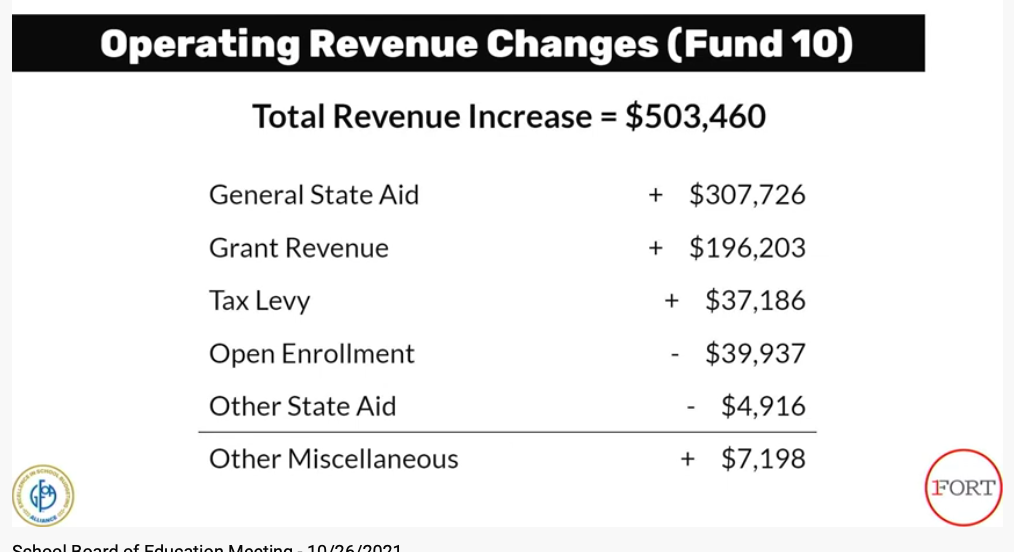

Two slides above as presented Tuesday by School District Director of Business Services Jason Demerath show the changes in general operating Fund 10 revenues and expenses as opposed to revenues and expenses approved by the districts electors at the annual meeting held in August.


Two slides above show changes between the district’s budget as shared in August, labeled 2021-22 preliminary budget and the budget approved Tuesday as well as the tax levy and mill rate as approved in Augusts and the tax levy and mill rate certified on Tuesday.
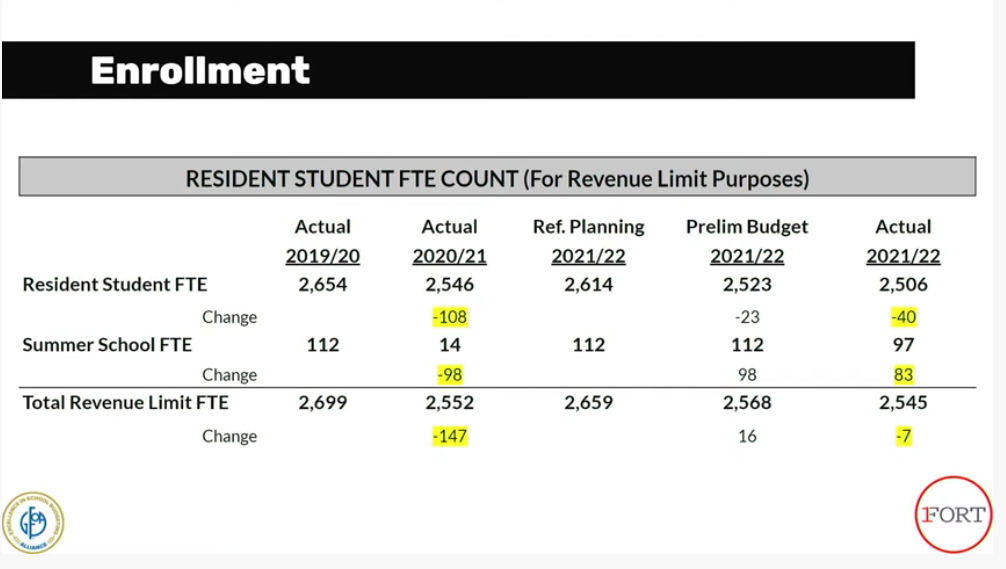
The slide above shows a history of declining enrollment defined as FTE or full time equivalent counts.

The slide above show a history of the district’s open enrollment. While the district continues to have a positive margin in open enrollment, Demerath said, it is “the smallest in recent history.”
City outlines five-year capital improvements plan; expenditures in 2022
(Originally published Nov. 3, 2021.)
By Kim McDarison
A City of Fort Atkinson budget workshop, including an overview of the proposed five-year capital improvements plan, was held in October. A public hearing about the city’s proposed 2022 budget and capital improvement expenditures planned in 2022 was held Tuesday, Nov. 2.
Members of the public did not come forward to comment about the city’s proposed budget or its associated capital improvements plan.
The budget and capital improvements plan are anticipated to undergo formal adoption by the city council on Nov. 16.
A story about the budget as it was presented during the October workshop is here: https://fortatkinsononline.com/city-shares-2022-draft-budget/.
Budget information shared Tuesday will come in a future story.
2022 capital improvements expenditures
During the October workshop, Fort Atkinson City Manager Rebecca Houseman LeMire told members of the Fort Atkinson City Council and others in attendance that the city’s staff was proposing some $211,040 in capital improvements to be funding in 2022 using levied tax dollars not including the Transportation Improvements Funds.
LeMire wrote in a budget workshop overview: “This level of funding is not sustainable due to the city’s aging fleet. The city is very fortunate to have talented and highly qualified staff serving as the head mechanic and mechanic, who have consistently extended the lives of our vehicles. However, this is not done without significant costs associated with parts and labor.
“Staff is proposing borrowing for additional capital projects, equipment, and services in 2022, as well as using some of the city’s American Recovery Plan Act (ARPA) funds.”
During Tuesday’s public hearing, which was held in advance of the regular city council meeting, LeMire told those in attendance that in 2022 the city was projecting an estimated borrowing of $1.5 million to fund capital improvement projects, with those monies used to purchase replacement equipment such as a police squad car, two dump trucks, a skid loader, and a transit van with a water tank, as well as funding for street reconstruction, including an ongoing annual water main project, and aesthetic and safety improvements on the Robert Street bridge.
Information supplied through documentation during the October workshop identified several funding mechanisms proposed to finance some portion of capital improvement projects.
Expenditures and proposed funding sources
A document itemizing 2022 capital improvement projects as requested by the city’s departments and detailing potential funding sources shows proposed expenditures totaling $4.2 million. Of that amount, some $211,000 is identified as coming from the taxpayer-funded levy, $1.57 million is proposed to come through borrowing, $710,000 is proposed to come through the city’s Transportation Improvements Funds, and $1.5 million would come from a category labeled “other funding source.” Projects totaling $234,000 were moved forward for inclusion within CIP budgeting beyond 2022.
Other funding sources
A table listing 2022 capital improvement projects and “other funding sources,” identified ARPA funds, the library trust fund, the museum trust fund, and resources from within the water, wastewater and stormwater utility funds, as included within that category.
Of the $1.5 million funded through “other sources,” $46,400 is supplied through ARPA funding, $25,000 is supplied through the library trust, $10,000 is supplied through the museum trust, $1.2 million is supplied through the water utility, $110,000 is supplied through the wastewater utility, and $105,000 is supplied through the stormwater utility.
ARPA revenues and expenditures
A document listing ARPA revenues noted that in 2022, the city anticipates having revenues received through “state/federal emergency grants” available in an amount, including interest, of $650,296.39.
The document also lists ARPA expenditures proposed in 2022, including $46,400, labeled “CIP-other funding,” $250,000, labeled “EMS startup costs,” 10,000 labeled “council laptops,” and $400,000 labeled “Banker Road placeholder,” totaling $706,400.
An estimated expenditure in 2021 of $29,980 was listed as “chamber upgrades.”
Capital Catalyst Fund revenues and expenditures
According to documents shared during the October workshop, among resources in this category are monies received through matching grants and state capital catalyst grants. In 2021, according to the document, the city received $300,000 and estimated the receipt of another $300,000, for a total of $600,000. Of those monies, $100,000 is proposed to be spent on capital projects in 2022.
Itemized CIP expenditures proposed for 2022
The CIP document shared during the October workshop itemizes the following projects and funding sources:
• Annual computer and server replacement costs for all the city’s departments, totaling $20,400, with those funds coming from the 2022 tax levy.
• Costs associated with a facility maintenance assessment, totaling $9,000, to be paid with funds coming through “other funding source.”
• Some $88,000 to be used to purchase two squad car replacements per year, with plans to replace one in 2023 and another in 2026. The full amount would come from two sources: $44,000 from tax levy dollars and $44,000 from a proposed borrowing.
• Some $12,600 to be used to replace AED (automated external defibrillator) equipment. The equipment is replaced in seven-year cycles. Funds for the replacements would come from tax levy funded dollars.
• Some $8,000 was proposed for the purchase of a PPE gear dryer, however the item was pushed to a future CIP.
• Some $6,000 was earmarked for the replacement of portable radios which are required to match replacements in equipment being considered at the state and county levels. Funds would be supplied using tax levied dollars.
• Some $10,000 was proposed to replace hoses and nozzles. The item was pushed to a future CIP.
• Some $45,000 is proposed for the development of a comprehensive plan for downtown infrastructure, branding, and marketing, as indicated in the city’s comprehensive plan, with those monies coming from tax-levied dollars.
• Another $340,000 is proposed for the former Lorman scrapyard site remediation and demolition work. Monies proposed are in addition to those dollars coming through a CDBG grant, the document states, and would come from a proposed borrowing in 2022.
• Some $9,000 is slated for a proposed facility study for aging campus and an over 50 year old garage. The monies are proposed to come from tax-levied dollars.
• Over $1.3 million is proposed to be spent on the city’s CDBG water main project. Of the total proposed, some $675,000 will come from a proposed borrowing in 2022 and $666,000 will come from the city’s Transportation Improvement Fund.
• Some $14,000 is proposed to pay for a design fee and construction fee to the Wisconsin Department of Transportation. The project includes mill and asphalt work on Whitewater Avenue from Fox Hill Road to Madison Avenue. The project, labeled on the document as the “Whitewater Avenue Planning/Design” project is slated for construction in 2023. A notation within the document states that the fee may be lower. Monies to pay for the item will come from the Transportation Improvement Fund.
• Some $20,000 is proposed to pay for some design and construction costs associated with the Robert Street bridge project slated for construction in 2022. Monies will come from the Transportation Improvement Fund.
• A second line item also addresses costs associated with the Robert Street bridge project, labeled as “construction-city portion,” in the amount of $100,000. Monies will be used to pay for deck upgrades, and decorative fencing and lighting, according to the document. Funds are proposed to come through a borrowing in 2022.
• Another $10,000, coming from the Transportation Improvement Fund is earmarked for design and construction work associated with the Riverside Drive/State Highway 106 reconstruction project due to take place in 2026.
• Some $350,000 is earmarked for the purchase of a 5- to 6-yard single-axle dump truck with a wing plow and sander. The new equipment will replace a similar 1999 vehicle currently in the city’s fleet. Monies to purchase the truck will come from a proposed borrowing.
• Another $40,000 will be spent to purchase a skid loader, with those monies also coming from the proposed borrowing.
• Some $25,000 will be used to purchase a Ford transit van with a water tank. The new vehicle will replace one that is 39-years-old and used for “watering and streetscape,” the document states. Monies to purchase the new vehicle will come through the proposed borrowing.
• Some $3,500, coming through “other funding source,” will be used to purchase two fabricated diving board stands.
• Another $29,000, coming from other funding sources, will be used to repaint a 175-foot water slide at the city’s pool.
• A one-ton pickup to be used for plowing, coming at a cost of $46,040, will be purchased with funds coming from the taxpayer-funded levy.
• Some $28,000 will be spend to develop a Comprehensive Outdoor Recreation Plan. Monies to support the initiative will come from the taxpayer-funded levy. The plan is a requirement, according to the document, and is a focus area on the city’s comprehensive plan.
• Some 35 padded foldable chairs are slated for replacement at a cost of $1,100, with those dollars coming from “other funding source.”
• Senior center parking lot striping and sealcoating projects are slated within the CIP, coming at a cost of $2,400, with those monies coming though other funding sources.
• A drinking fountain replacement at the senior center is also proposed in 2022, coming at a cost of $2,500, with those dollars coming through other funding sources. The new fountain will provide a bottle filling station, according to the document.
• An automatic front door upgrade at the Hoard Historical Museum is also slated in 2022, coming at a cost of $5,500. Monies for the upgrade will come through other funding sources.
• A roof over the Hoard House porch is slated at a cost of $4,500, with those dollars coming through other funding sources. The current rubber roof is showing age and beginning to leak, according to the document.
• Some of the library’s computers and other tech will reach a 4-year replacement cycle in 2022. Some $5,000 is proposed for those replacements, coming from “other funding source.”
• Also at the library, some furniture and upholstery is in need of replacement, the document notes, coming at a cost of $20,000, with those monies coming through other funding sources.
• Some $18,000 is slated to replace maintenance software at the wastewater plant. Those monies will also come through “other funding source.”
• Also at the wastewater plant, $40,000 is earmarked to replace a pump that has become corroded, with those monies coming from other funding sources.
• A complete replacement of HVAC controls is slated at the wastewater plant, coming at a cost of $52,000 from “other funding source.” The controls have been in place since 1993, the document states.
• The city has also identified for replacement 548 5/8” water meters in 2022. The replacements come at a cost of $114,532, with those dollars coming through “other funding source.”
• Another $20,000, also coming through other funding sources, is earmarked to replace commercial 1″ to 12” grade water meters.
• Also associated with the water department, a “standard capital outlay” of $25,000 is earmarked for “new installations,” with those monies coming from “other funding source.”
• Some $26,000 for the replacement of 35-year-old electrical panels located within the water department was moved to a future CIP.
• Another $30,000 to purchase a portable generator and switch gears for emergency operation was moved to a future CIP.
• Two payments of $45,000 were identified for the purpose of purchasing new trucks between 2021 and 2026. The first payment of $45,000 is proposed to come from “other funding source,” and a second payment of $45,000 was moved to a future CIP, according to the document.
• Some $15,000, labeled as “well security,” is earmarked for the purchase of tinting and metal bars for windows, and metal doors, as well as security cameras for buildings associated with the city’s wells. The funds are proposed to come from other funding sources.
• Another $160,000, earmarked to replace services and hydrants as they coincide with the installation of new water mains, would come from other funding sources. Approval of the city’s rate case by the Public Service Commission (PSC) was cited as a condition of this expenditure.
• Main replacement, coming at a cost of $843,000, was also identified as coming through other funding sources. Monies are earmarked to replace approximately 1% of the city’s water main each year. Approval of the pending rate case was cited as a requirement of this expenditure.
• Some $95,000 was identified to fund the purchase of a truck-mounted leaf vacuum, with those dollars coming from other funding sources.
• Under a heading of “stormwater,” $10,000 is earmarked to fund ”a number of projects outlined in the 2018 stormwater plan,” according to the document, with those funds coming from other funding sources. The document further states that the Wisconsin Department of Natural Resources is requiring “progress on these projects.”
• Another $110,000, earmarked for stormwater collection system maintenance, was moved to a future CIP.
• Some $2,500 to be spent on pavement maintenance at the municipal airport was moved to a future CIP.
• Structure maintenance at the municipal airport in the amount of $2,500 was moved to a future CIP.

File photo/Kim McDarison.
UW Band Director Emeritus Leckrone to visit Band Boosters’ pancake breakfast
(Originally published Nov. 4, 2021.)
Story compiled by Kim McDarison
Attendees of the Fort Atkinson Band Boosters pancake breakfast fundraiser, slated for Saturday, Nov. 6, will have an opportunity to visit with University of Wisconsin-Madison Emeritus Band Director Michael Leckrone.
Leckrone is expected to join fundraiser attendees at the Fort Atkinson Middle School at 9 a.m.
A celebrated UW educator and band director, Leckrone, then 82, retired in 2019 after serving at UW-Madison for 50 years.
According to a story written by Jay Rath and shared as a biographical resource with Fort Atkinson Online by UW-Madison, Leckrone made the announcement that he would step down following a band rehearsal. The announcement, according to the story, left his students “visibly moved, linking arms and joining with him to sing ‘Varsity.’”
According to the story: Leckrone had a “remarkable career” as both an educator and conductor. He was the recipient of “myriad awards,” the story notes, and was inducted into the UW Athletic Hall of Fame in 2017.
Some 200 of his marching and concert band arrangements and compositions have been published. He is also the author of two text books, the story continued.
According to the story: “His impact on campus has been legendary.”
Within the story, UW-Madison Chancellor Rebecca Blank, who will be leaving that position at the end of this year, was quoted as saying: “We are immensely grateful to Mike for the joy he’s brought to generations of Badgers on the football field and in the concert hall. Every time I watch them perform at a football game, I think we have the best band in the country.”
Leckrone was hired as the director of the UW marching band in 1969. The son of a high school band teacher, Leckrone grew up in North Manchester, Indiana. Before choosing to follow in his father’s footsteps, online information states, Leckrone considered becoming a basketball coach and a chemical engineer.
He was a music major, receiving both his bachelor and masters degrees at Butler University, a private school in Indiana, where he also played basketball in his freshman year. He also studied at a doctoral level at the University of Indiana. Before joining the UW-Madison staff, he served as a band director at Butler University.
According to Rath’s story, early in Leckrone’s career, he “found a partner in athletic director Elroy Hirsch,” who, Leckrone was quoted as saying in the story, “inspired me to do so many crazy things,” listing among them riding a camel and an elephant onto the field at Camp Randall.
In 1985, as noted in Rath’s story, “on the event of the band’s 100th anniversary, President Ronald Reagan wrote to congratulate Leckrone and the band,” citing his “good fortune of enjoying yourselves as you’ve entertained others.”
Rath’s full story, citing many more of Leckrone’s accomplishments, and memories and anecdotes as recounted by Leckrone and others from his 50-year career, is here: https://news.wisc.edu/uw-band-director-leckrone-announces-50th-season-will-be-his-grand-finale/.
Those interested in meeting the emeritus director can do so by attending the Fort Atkinson Band Booster’s pancake breakfast.
A story about the breakfast, which is planned to take place between 7:30 and 11 a.m. on Saturday, and an opportunity to buy tickets, is here: https://fortatkinsononline.com/fort-schools-band-boosters-pancake-breakfast-set-for-saturday/.

Sporting a sequin jacket with embroidered roses, band director Mike Leckrone smiles at the end of the 39th annual UW Varsity Band Spring Concert at the Kohl Center at the University of Wisconsin-Madison on April 18, 2013. (Photo by Jeff Miller/UW-Madison).
Photo and caption reproduced with permission and courtesy of UW-Madison.
Purdy Elementary plants vertical hydroponic ‘garden
(Originally published Nov. 5, 2021.)
By Chris Spangler
Purdy Elementary School pupils and staff in two weeks will be sitting down to lunch featuring lettuce grown in their own vertical hydroponic garden.
The School District of Fort Atkinson Nutrition Services Department has partnered with Purdy’s Green Team to pilot a Flex Tower manufactured by Fork Farms of Green Bay.
“The hydroponic growing tower uses very little energy and produces dozens of plants every month,” district Nutrition Services director Christina Oswald said, adding that it requires zero soil, herbicides or pesticides.
According to Fork Farms, vertical farming uses artificial lighting and vertical planting systems that yield significantly more produce in a much smaller space than traditional gardens. Hydroponics, meanwhile, is the practice of growing food in a water-based mineral solution as opposed to soil. The right amount of nutrients combined with pH-balanced water and the correct amount and type of light results in consistent produce yields.
Oswald explained that each seed is planted in the medium for one week, with the resulting tiny seedlings then placed on the tower to grow. Green Team members help maintain the plants by testing the water weekly to ensure it is at the right pH and that the plants have the optimal growing medium.
“The tower itself is made up of a lot of holes along the walls and each seed pod is tucked into one of those holes,” she said. “There is a pump in the water reservoir that pumps the water up and through tubing and then trickles the water down the back of the wall, thus watering the roots.”
In addition, a light tower in the center is set on a timer so the plants receive ample light to grow.
Lettuce is Purdy’s first crop
Purdy’s Flex Tower has 200 plants growing lettuce.
“We plant every other hole in order to give each plant enough space to grow,” Oswald said. “Right now, we are growing Romaine. We’re going to try to keep (the produce) healthy nutritious dark leafy greens. I’ll put an iceberg mix into a salad, but never do the kids get straight iceberg.
“We going to harvest every 28 days, so we’ll have a new crop once a month,” she added.
The Purdy Green Team will help pick the lettuce.
“The whole plant comes out,” the Nutrition Services director said. “We dispose of the roots and we keep the leaves. We’ll then plant a whole new seed.”
Oswald said she is excited to see the first harvest in two weeks.
“Fork Farms said that in an optimal growing environment, we should get at least 20 pounds every month, which is about enough to feed the school a salad at least one time, if not two times, when we harvest,” she said.
Since the tower has two sides that open and close, two crops could be grown at the same time.
“We can mix the lettuces because those grow in the same environment,” Oswald said. “Next month, we will probably plant a variety of greens. But if we choose to change a crop completely, we will do one side of herbs and the other side greens, for example. It gives us an opportunity to vary the crops so kids will see a variety of things growing all year long.”
She hinted that tomatoes and cucumbers might be on the menu a few months down the road.
Oswald reported that the first harvest of Romaine lettuce will be the week before Thanksgiving, with the second one the week before Christmas.
“If ever there is more of a crop that we can use or one of the harvests were to fall right before a school vacation or holiday, we would entertain the idea of donating the harvest to the food pantry or another organization that could use it, because we don’t want any of that food to go to waste,” she said.
And if there were summer school classes interested in adopting the Fort Farm in June and July, she would be supportive of that.
Oswald pointed out that the benefit of Fork Farm is not only the produce, but also the hands-on lesson of where food originates.
“They get to watch and share it with their classmates,” she said of the Green Team. “The tower is right in the multipurpose room. Every student in the building can get to see the process of those plants growing.”
Pandemic delayed project
Oswald came to the Fort Atkinson schools in November 2019 after serving as food service director and corporate chef at Taher, a Milwaukee-based food service management company.
“One of the first things I was handed when I started was an envelope from (District Administrator Rob) Abbott that contained a Fork Farm brochure,” she recalled.
Oswald had known about Fork Farm for a couple of years and was interested in pursuing it for the Fort Atkinson schools. However, the coronavirus pandemic struck just months after her arrival, diverting her attention to the immense effort of feeding young people staying at home while learning virtually.
“For me, it was just a matter of time before we brought one into the Fort schools,” Oswald said of the Fork Farm. “The pandemic put everything on hold and it made no sense to bring it in last year.”
As the district planned for in-person classes in 2021-22, she decided it was time to pilot the hydroponic tower.
“I wasn’t sure which building, and then I was notified that Purdy Elementary had what they call their Green Team, fourth- and fifth-graders who care about their world and their environment, and I just thought it was a perfect fit,” Oswald said.
Nutrition Services budgeted for tower
The Nutrition Services Department budgeted $4,800 for the tower and a year’s worth of seed, nutrients and growing medium. Next year, it will only need to purchase the seeds and nutrients.
“It’s always something I thought would be beneficial, not only for Nutrition Services for the produce we get to harvest, but really from a standpoint of students being able to get an understanding of where their food comes from,” Oswald said. “We teach this in FFA and science class, but in all of K-12, kids need to learn where their food comes from.
“Since we will be reaping benefits of its harvest, we felt it was only right that we pay for it,” she continued. “We’re just glad the money can go toward the education of the students, as well.”
Oswald said she hopes this is just the first of many Fork Farms in the Fort Atkinson schools, as the growing and eating of produce feed both the stomach and mind.
“That’s the incentive for the other schools to get on board once we get through the first few months of the pilot program,” she concluded.” If the other schools are interested, I would be open to having one in every building.”
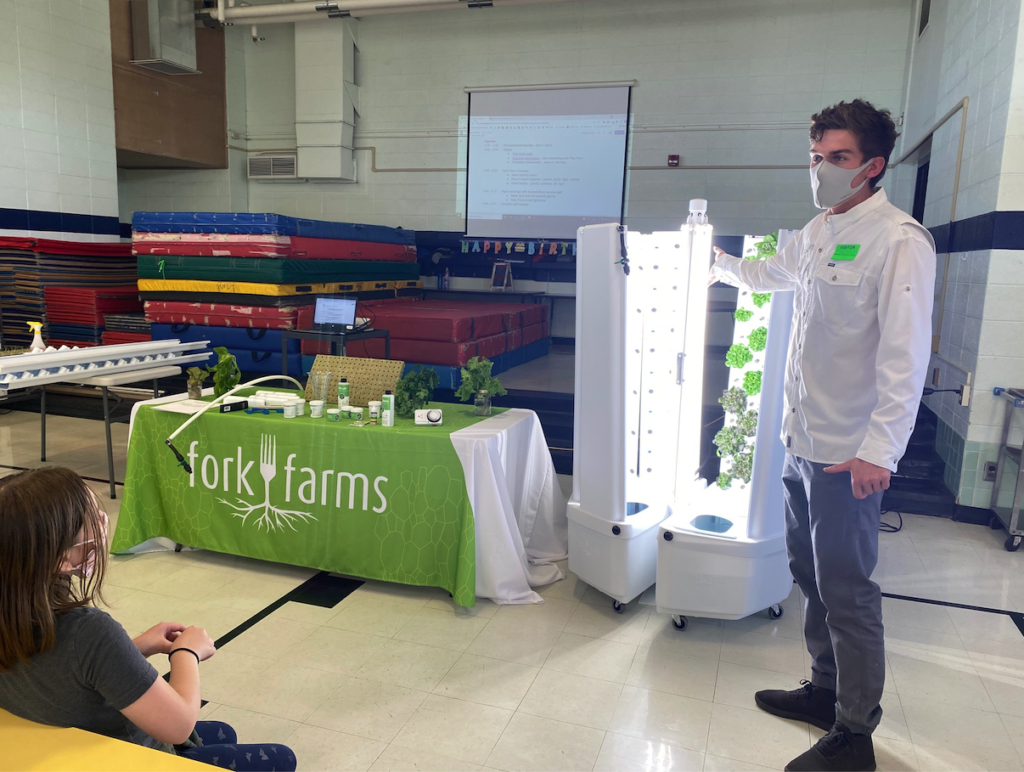

Above two photos: “Green Team” members and Nutrition Services staff at Purdy Elementary School in Fort Atkinson receive information and instructions before planting their first vertical hydroponic self-contained garden from Fork Farms. The activity took place on Oct. 20. Every 28 days, fresh lettuce or other produce will be available for the Nutrition Services Department team to utilize in school meals.

Fork Farms staff teach Green Team members and how to “plant” seedlings and test the water’s pH level. Fork Farms brought examples of the lettuce at different stages of growth for the Fort Atkinson pupils to see.

Members of the Purdy Elementary School “Green Team” learn how to place seedlings into the school’s Fork Farms vertical garden.
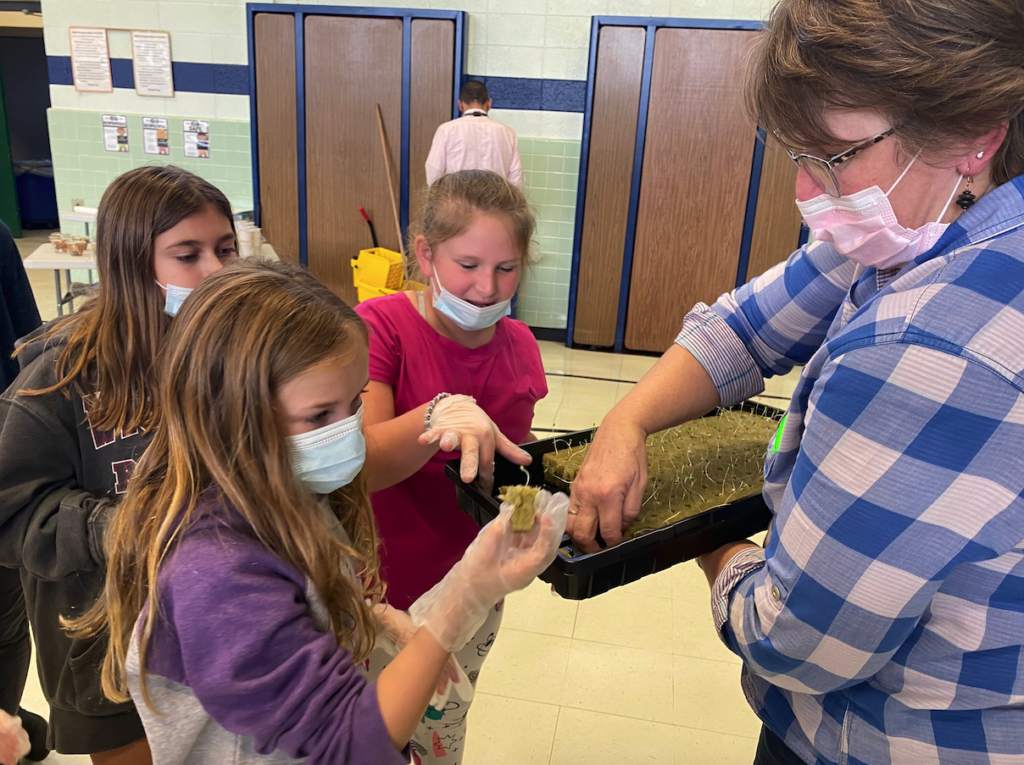
Aided by a representative from the Fork Farms, Green Team members select seedlings for planting.

A demonstration garden brought by Fort Farms offers an example of what the Purdy Elementary school garden will look like after the seedling mature.
Contributed photos.
Off the Record: Peich tragedy good reason to check smoke alarm batteries
(Originally published Nov. 6, 2021.)
By Chris Spangler
I remember Oct. 30, 1994, as if it were yesterday.
I’d just arrived at the newspaper when I learned there had been a fatal fire in Fort Atkinson that morning. The victim was Merrel A. Peich, 58-year-old father of Jim Peich, whom I knew well.
At the time, Jim was a 17-year-old senior and member of Fort Atkinson High School’s Signal staff. The future journalists would use our newsroom to produce their monthly school paper.
The Peichs’ Sixth Street duplex caught fire in the middle of the night while they were sleeping. The window of Jim’s second-floor bedroom was painted shut, so he had to push his head through the glass to get air. Jim then climbed out onto the front porch roof, yelling for help until neighbors called 911 and first responders arrived.
Jim suffered smoke inhalation, but survived … thanks to being awoken by his bedroom smoke detector. His father was not as fortunate.
Jim graduated from high school, went on to college and then headed to St. Louis, where he eventually traded his “press hat” for a minister’s robe. A family man with two children, he today serves as executive pastor at Manchester United Methodist Church in St. Louis. Its 2,700-member congregation traces its roots back to 1826.
We now are Facebook friends, and 27 years after his family tragedy, Jim continues to preach the importance of having working smoke alarms in the home.
“On this anniversary of my dad’s death, I give thanks for how he would randomly say, ‘Son, I love you.’ It’s a practice I have continued with my children and ones they love,” Jim posted on Facebook last weekend.
“As we get ready for clocks to fall back an hour this coming Saturday night, remember that it’s time to replace the batteries in your smoke detectors,” he continued. “Even hard-wired detectors need their back-up batteries replaced annually.”
He also advised that if your detector is more than 10 years old, you need to replace the entire unit. Check the back of detector for the manufacturing date.
Eighty percent of fire deaths occur in the home, and three out of every five of those involve nonworking smoke alarms. The peak time for home fire fatalities is between 10 p.m. and 6 a.m. when most folks are sleeping.
You can double your chance of surviving a blaze by simply changing your smoke alarms’ batteries once or twice a year. A perfect time is when you turn the clock … like you will when we all “Fall Back” at 2 a.m. this Sunday.
As Jim Peich posted, “Please take this seriously and remind those you love, as it saves lives.”
And he should know, after all. He’s living proof they work.

Merrel A. Peich

The Rev. Jim Peich delivers a sermon at the Manchester United Methodist Church in St. Louis.

Merrel A. Peich rests today in Evergreen Cemetery, Fort Atkinson.

A photo of the kitchen in the Peich home shows the devastation after the duplex was ravaged by fire Oct. 30, 1994.
Contributed photos.
County finance committee approves $31.3 million levy, board approval anticipated Tuesday
(Originally published Nov. 7, 2021.)
By Kim McDarison
The Jefferson County Board of Supervisors Finance Committee met Thursday during which a countywide levy and mill rate were approved and recommended by the committee for final approval by the full board.
The resolution to approve the countywide levy and mill rate will come before the board for final approval on Tuesday, Nov. 9.
A summary sheet within the full 488-page budget document notes that county residents in 2022 will be asked to support a tax levy of $31,392,371. Taxpayers will find a mill rate of $3.77 included on their property tax bills, which is the apportioned amount paid to support countywide services. The countywide mill rate is applied to the equalized value of property, meaning county residents will pay $3.77 for every $1,000 worth of equalized property value.
The countywide equalized value, which represents the full taxable value of property within the county as determined by the Wisconsin Department of Revenue, is just over $8.3 billion.
An explanation of equalized value and how it is calculated is here: https://www.revenue.wi.gov/DOR%20Publications/wieqval.pdf#:~:text=The%20%EE%80%80Equalized%20Value%EE%80%81%20is%20the%20estimated%20%EE%80%80value%EE%80%81%20of,two%20broad%20categories%2C%20real%20property%20and%20personal%20property.
The county budget document also provides a ten-year comparison of countywide equalized value, including tax levies applied in each of the last ten years and the associated mill rates. (See chart below.)
In 2021, taxpayers saw a mill rate of $3.73 which was used to support a levy of $29,051,683.
Levy calculation
Numbers appearing on the budget summary sheet show eight funds used to comprise the budget, including: Fund 100, general funds; Fund 240, Health Department; Fund 250, Human Services; Fund 300, Debt Service Fund; Fund 400, Capital Projects Fund; Fund 750, MIS Department; Fund 500, Highway Department, and Fund 710, Fleet Management.
Of the eight funds, six are funded, in part, through the county tax levy. They are: the General Fund, in the amount of $14,162,176; Health Department fund, 892,942; Human Services fund, $8,916,064, Debt Service fund, 3,636,718; MIS Department fund, $15,313, and the Highway Department fund, $5,818,511.
Two funds, the Capital Projects fund and the Fleet Management fund, show no funding coming through the property tax funded levy.
Of the county’s full budget, with expenditures estimated in 2022 at $101,177,246, $55,242,736, or 55%, is funded through sources other than the tax levy. Another $12,492,786, or 12%, is funded through “other finance sources,” with the total tax levy of $33,441,724 accounting for 33%. The calculation next removes two “non-countywide levy funds included under the headings of “health department,” in the amount of $892,942, and “County Library System,” in the amount of $1,156,411, bringing the countywide levy to $31,392,371.
Breakdown of revenues and expenditures in 2022
A pie chart within the document breaks down “sources of revenues-governmental funds,” by percentage of funding for the full budget as follows: “Taxes,” 36.6%; “Intergovernmental Revenues,” 27.8%; “Public Charges for Service,” 16.9%; “Sales Tax,” 9.5%; “Intergovernmental Charges for Services,” 5.8%; “Miscellaneous Revenues,” 2.5%, and shows categories such as fines and forfeitures, and licenses and permits each contributing less than 1%.
Of the county’s total 2022 anticipated expenditures, calculated at $101,177,246, a pie chart, indicating expenditures associated with eight “major” functions within “all funds” as associated with county government, shows Health and Human services, with expenditures of $33,504,402 or 33%; Capital Outlay, with expenditures of $21,345,444, or 21%; Public Safety, with expenditures of $16,467,512, or 16%; General Government, with expenditures of $14,385,861, or 14%; Culture, Recreation, Education, and Public Works, each coming with expenditures representing 5%; Debt Service, with expenditures representing 4%, and Conservation and Development, with expenditures representing 2%.
Capital projects 2021, 2022
According to a “Summary Highlights” narrative included within the budget document, amounts spent for capital projects in 2021, in the amount of $4,298,243, and monies earmarked to be spent in 2022, in the amount of $8,560,000, coming from intergovernmental revenues and “other financial sources,” will be used to fund 911 telecommunications upgrades and an improvement project on the county’s “South Campus Building.”
Funds meant to support any work left undone in 2021 will, through the “budget carryover process” be moved to the 2022 budget, according to the summary.
“The county anticipates that it will issue $8 million in bonds for improvements to the courthouse/sheriff/jail complex during late 2021,” the summary states.
Further, the document notes that two improvements to the South Campus will be funded using federal ARPA (American Rescue Plan Act of 2021) proceeds. They are: $130,000 to be spent for HVAC and ventilation improvements at the Workforce building and $115,000 for LEC lighting improvements at the Human Services building.
The full county budget document is here: https://files4.1.revize.com/jeffersoncountynew/Budget/2022%20Budget/2022%20Budget%20Book.pdf.

The above chart, as included within the Jefferson County 2022 budget document, shows the calculations used to produce the 2022 countywide tax levy.

The above chart, as included with the county’s 2022 budget document shows, a 10-year history of the countywide total equalized value, tax levies and their associated mill rates.

The above pie chart, as included within the county’s 2022 budget, shows revenue sources used to fund expenses in 2022 as a percentage of the total budget.

The pie chart above, as included within the county’s budget document, shows major expenditures anticipated in 2022 as a percentage of the total budget.
Police still searching for ‘endangered missing person’ McDaniel
(Originally published Nov. 9, 2021.)
By Kim McDarison
Police are still looking for Scott McDaniel, the Fort Atkinson resident who walked away from a group home Oct. 5.
As of Nov. 9, Lt. Brandon Sachse, of the Fort Atkinson Police Department, said police have no new information about the whereabouts of McDaniel and continue to ask the public for help in locating him.
According to information released by the Fort Atkinson Police Department through the state Crime Alert Network on Oct. 19, McDaniel, 41, is considered an endangered missing person.
Information earlier released by the department noted that McDaniel is schizophrenic and does not have his medications with him.
McDaniel does not have access to a car, according to police.
A statewide alert was issued, police noted, because McDaniel has made statements that he planned to go to Los Angeles to live on the streets.
The alert noted that McDaniel, on Oct. 5, traveled by cab to Mukwonago, arriving at an old elementary school friend’s house whom he hadn’t seen in years.
He was returned to Fort Atkinson on Oct. 5 by the former schoolmate’s parents, but exited the car just south of the city.
Sachse told Fort Atkinson Online that, as of Nov. 9, police have received few tips about McDaniel’s whereabouts and continue to have concern for his welfare.
If seen, the public is advised not to approach McDaniel, but instead notify law enforcement. The Fort Atkinson Police Department can be reached at 920-563-7777. Reference case number 21-10834.
An earlier story about McDaniel’s disappearance is here: https://fortatkinsononline.com/police-seek-help-locating-missing-person/.

Scott McDaniel
Train strikes vehicle, occupant transported as ‘precautionary measure’
(Originally published Nov. 10, 2021.)
Editor’s note: the following information has been released by the Jefferson County Sheriff’s Office.
Correction: an earlier headline read “Train strikes car,” while the press release reads: “vehicle.” The headline has been corrected. Fort Atkinson Online regrets the error.
Sheriff Paul Milbrath reports that on today’s date, Nov. 10, at 1:24 p.m., deputies responded to a single vehicle versus train crash on River Valley Road in the town of Ixonia.
Preliminary investigation at the scene indicates that the vehicle was heading northbound on River Valley Road when it attempted to cross the tracks. An Amtrak train was heading eastbound and stuck the vehicle while it was crossing the tracks.
The lone occupant of the vehicle was transported to a local hospital for precautionary measures.
The Jefferson County Sheriff’s Office was assisted at the scene by Ixonia Fire and EMS.